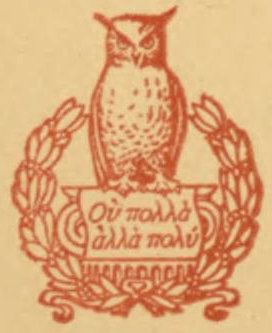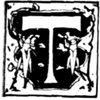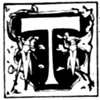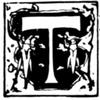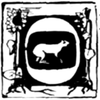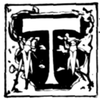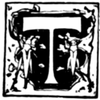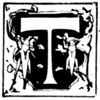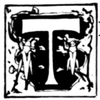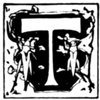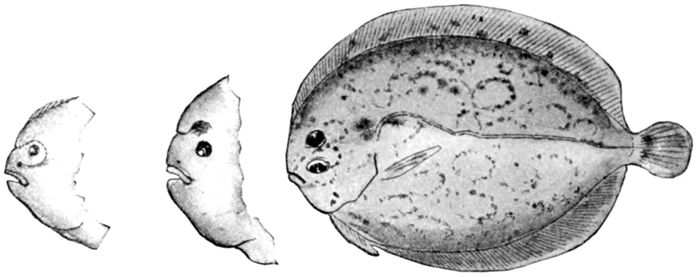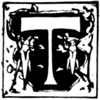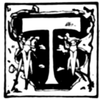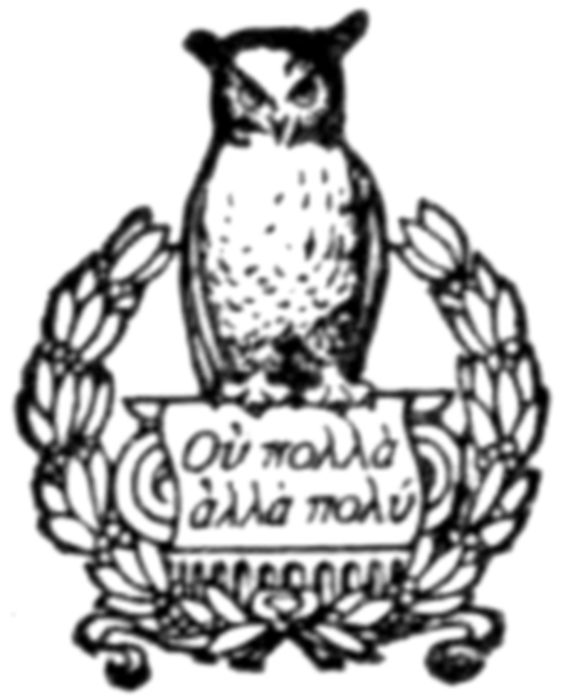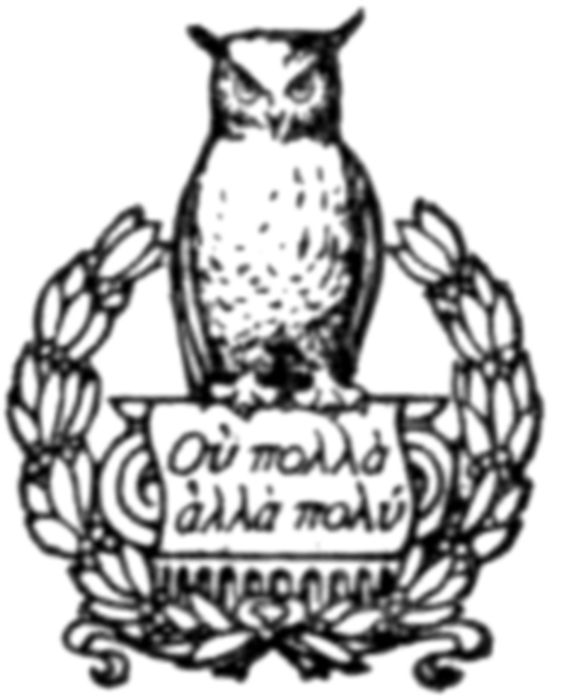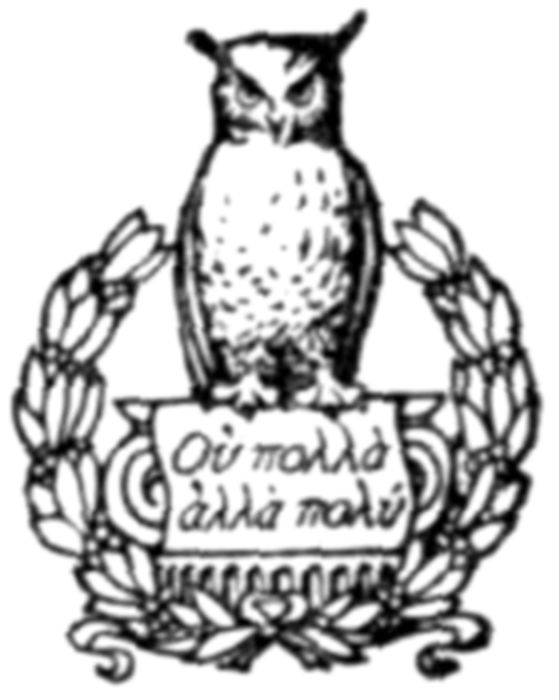The Project Gutenberg EBook of A Guide to the Study of Fishes, Volume 2
(of 2), by David Starr Jordan
This eBook is for the use of anyone anywhere in the United States and most
other parts of the world at no cost and with almost no restrictions
whatsoever. You may copy it, give it away or re-use it under the terms of
the Project Gutenberg License included with this eBook or online at
www.gutenberg.org. If you are not located in the United States, you'll have
to check the laws of the country where you are located before using this ebook.
Title: A Guide to the Study of Fishes, Volume 2 (of 2)
Author: David Starr Jordan
Release Date: April 9, 2016 [EBook #51702]
Language: English
Character set encoding: UTF-8
*** START OF THIS PROJECT GUTENBERG EBOOK GUIDE TO STUDY OF FISHES, VOL 2 ***
Produced by Richard Tonsing, Chris Curnow, Bryan Ness and
the Online Distributed Proofreading Team at
http://www.pgdp.net (This file was produced from images
generously made available by The Internet Archive)
Transcriber's Note:
The cover image was created by the transcriber and is placed in the public domain.
GUIDE TO THE STUDY OF FISHES
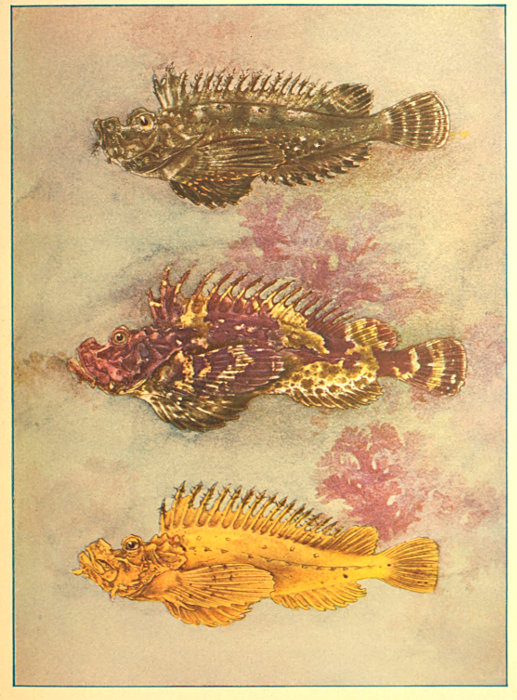
VARIATIONS IN THE COLOR OF FISHES
The Oniokose or Demon Stinger, Inimicus japonicus (Cuv. and Val.), from Wakanoura, Japan. From nature by Kako Morita.
Surface coloration about lava rocks.
Coloration of specimens living among red algæ.
Coloration in deep water; Inimicus aurantiacus (Schlegel).
A GUIDE
TO
THE STUDY OF FISHES
BY
DAVID STARR JORDAN
President of Leland Stanford Junior University
With Colored Frontispieces and 507 Illustrations
IN TWO VOLUMES
Vol II.
"I am the wiser in respect to all knowledge
and the better qualified for all fortunes
for knowing that there is a minnow in that
brook."—Thoreau
NEW YORK
HENRY HOLT AND COMPANY
1905
Copyright, 1905
BY
HENRY HOLT AND COMPANY
Published March, 1905
v
CONTENTS
VOL. II.
| CHAPTER I. |
| THE GANOIDS. |
|
PAGE |
| Subclass Actinopteri.—The Series Ganoidei.—Are the Ganoids a Natural Group?—Systematic Position of Lepidosteus.—Gill on the Ganoids as a Natural Group. |
1 |
| |
| CHAPTER II. |
| THE GANOIDS (Continued). |
| Classification of Ganoids.—Order Lysopteri.—The Palæoniscidæ.—The Platysomidæ.—The Dorypteridæ.—The Dictyopygidæ.—Order Chondrostei.—Order Selachostomi: the Paddle-fishes.—Order Pycnodonti.—Order Lepidostei.—Family Lepisosteidæ.—Embryology of the Garpike.—Fossil Garpikes.—Order Halecomorphi.—Pachycormidæ.—The Bowfins: Amiidæ.—The Oligopleuridæ. |
13 |
| |
| CHAPTER III. |
| ISOSPONDYLI. |
| The Subclass Teleostei, or Bony Fishes.—Order Isospondyli.—The Classification of the Bony Fishes.—Relationships of Isospondyli.—The Clupeoidea.—The Leptolepidæ.—The Elopidæ.—The Albulidæ.—The Chanidæ.—The Hiodontidæ.—The Pterothrissidæ.—The Ctenothrissidæ.—The Notopteridæ.—The Clupeidæ.—The Dorosomatidæ.—The Engraulididæ.—Gonorhynchidæ.—The Osteoglossidæ.—The Pantodontidæ. |
37 |
| |
| CHAPTER IV. |
| SALMONIDÆ. |
| The Salmon Family.—Coregonus, the Whitefish.—Argyrosomus, the Lake Herring.—Brachymystax and Stenodus, the Inconnus.—Oncorhynchus, the Quinnat Salmon.—The Parent-stream Theory.—The Jadgeska Hatchery.—Salmon-packing. |
61 |
| |
| viCHAPTER V. |
| SALMONIDÆ (Continued). |
| Salmo, the Trout and Atlantic Salmon.—The Atlantic Salmon.—The Ouananiche.—The Black-spotted Trout.—The Trout of Western America.—Cutthroat or Red-throated Trout.—Hucho, the Huchen.—Salvelinus, the Charr.—Cristivomer, the Great Lake Trout.—The Ayu, or Sweetfish.—Cormorant-fishing.—Fossil Salmonidæ. |
89 |
| |
| CHAPTER VI. |
| THE GRAYLING AND THE SMELT. |
| The Grayling, or Thymallidæ.—The Argentinidæ.—The Microstomidæ.—The Salangidæ, or Icefishes.—The Haplochitonidæ.—Stomiatidæ.—Suborder Iniomi, the Lantern-fishes.—Aulopidæ.—The Lizard-fishes.—Ipnopidæ.—Rondeletiidæ.—Myctophidæ.—Chirothricidæ.—Maurolicidæ.—The Lancet-fishes.—The Sternoptychidæ.—Order Lyopomi. |
120 |
| |
| CHAPTER VII. |
| THE APODES, OR EEL-LIKE FISHES. |
| The Eels.—Order Symbranchia.—Order Apodes, or True Eels.—Suborder Archencheli.—Suborder Enchelycephali.—Family Anguillidæ.—Reproduction of the Eel.—Food of the Eel.—Larva of the Eel.—Species of Eels.—Pug-nosed Eels.—Conger-eels.—The Snake-eels.—Suborder Colocephali, or Morays.—Family Moringuidæ.—Order Carencheli, the Long-necked Eels.—Order Lyomeri or Gulpers.—Order Heteromi. |
139 |
| |
| CHAPTER VIII. |
| SERIES OSTARIOPHYSI. |
| Ostariophysi.—The Heterognathi.—The Eventognathi.—The Cyprinidæ.—Species of Dace and Shiner.—Chubs of the Pacific Slope.—The Carp and Goldfish.—The Catostomidæ.—Fossil Cyprinidæ.—The Loaches. |
159 |
| |
| CHAPTER IX. |
| THE NEMATOGNATHI, OR CATFISHES. |
| The Nematognathi.—Families of Nematognathi.—The Siluridæ.—The Sea Catfish.—The Channel Cats.—Horned Pout.—The Mad-toms.—The Old World Catfishes.—The Sisoridæ.—The Plotosidæ.—The Chlariidæ.—The Hypophthalmidæ or Pygidiidæ.—The Loricariidæ.—The Callichthyidæ.—Fossil Catfishes.—Order Gymnonoti. |
177 |
| |
| viiCHAPTER X. |
| THE SCYPHOPHORI, HAPLOMI, AND XENOMI. |
| Order Scyphophori.—The Mormyridæ.—The Haplomi.—The Pikes.—The Mud minnows.—The Killifishes.—Amblyopsidæ.—Kneriidæ, etc.—The Galaxiidæ.—Order Xenomi. |
188 |
| |
| CHAPTER XI. |
| ACANTHOPTERYGII; SYNENTOGNATHI. |
| Order Acanthopterygii, the Spiny-rayed Fishes.—Suborder Synentognathi.—The Garfishes: Belonidæ.—The Flying-fishes: Exocœtidæ. |
208 |
| |
| CHAPTER XII. |
| PERCESOCES AND RHEGNOPTERI. |
| Suborder Percesoces.—The Silversides: Atherinidæ.—The Mullets: Mugilidæ.—The Barracudas: Sphyrænidæ.—Stephanoberycidæ.—Crossognathidæ.—Cobitopsidæ.—Suborder Rhegnopteri. |
215 |
| |
| CHAPTER XIII. |
| PHTHINOBRANCHII: HEMIBRANCHII, LOPHOBRANCHII, AND |
| HYPOSTOMIDES. |
| Suborder Hemibranchii.—The Sticklebacks: Gasterosteidæ.—The Aulorhynchidæ.—Cornet-fishes: Fistulariidæ.—The Trumpet-fishes: Aulostomidæ.—The Snipefishes: Macrorhamphosidæ.—The Shrimp-fishes: Centriscidæ.—The Lophobranchs.—The Solenostomidæ.—The Pipefishes: Syngnathidæ.—The Sea-horses: Hippocampus.—Suborder Hypostomides, the Sea-moths: Pegasidæ. |
227 |
| |
| CHAPTER XIV. |
| SALMOPERCÆ AND OTHER TRANSITIONAL GROUPS. |
| Suborder Salmopercæ, the Trout-perches: Percopsidæ.—Erismatopteridæ.—Suborder Selenichthyes, the Opahs: Lamprididæ.—Suborder Zeoidea.—Amphistiidæ.—The John Dories: Zeidæ.—Grammicolepidæ. |
241 |
| |
| CHAPTER XV. |
| BERYCOIDEI. |
| The Berycoid Fishes.—The Alfonsinos: Berycidæ.—The Soldier-fishes: Holocentridæ.—The Polymixiidæ.—The Pine-cone Fishes: Monocentridæ. |
250 |
| |
| viiiCHAPTER XVI. |
| PERCOMORPHI. |
| Suborder Percomorphi, the Mackerels and Perches.—The Mackerel Tribe: Scombroidea.—The True Mackerels: Scombridæ.—The Escolars: Gempylidæ.—Scabbard and Cutlass-fishes: Lepidopidæ and Trichiuridæ.—The Palæorhynchidæ.—The Sailfishes: Istiophoridæ.—The Swordfishes: Xiphiidæ. |
258 |
| |
| CHAPTER XVII. |
| CAVALLAS AND PAMPANOS. |
| The Pampanos: Carangidæ.—The Papagallos: Nematistiidæ.—The Bluefishes: Cheilodipteridæ.—The Sergeant-fishes: Rachycentridæ.—The Butter-fishes: Stromateidæ.—The Rag-fishes: Icosteidæ.—The Pomfrets: Bramidæ.—The Dolphins: Coryphænidæ.—The Menidæ.—The Pempheridæ.—Luvaridæ.—The Square-tails: Tetragonuridæ.—The Crested Bandfishes: Lophotidæ. |
272 |
| |
| CHAPTER XVIII. |
| PERCOIDEA, OR PERCH-LIKE FISHES. |
| Percoid Fishes.—The Pirate-perches: Aphredoderidæ.—The Pigmy Sunfishes: Elassomidæ.—The Sunfishes: Centrarchidæ.—Crappies and Rock Bass.—The Black Bass.—The Saleles: Kuhliidæ.—The True Perches: Percidæ.—Relations of Darters to Perches.—The Perches.—The Darters: Etheostominæ. |
293 |
| |
| CHAPTER XIX. |
| THE BASS AND THEIR RELATIVES. |
| The Cardinal-fishes: Apogonidæ.—The Anomalopidæ.—The Asineopidæ—The Robalos: Oxylabracidæ.—The Sea-bass: Serranidæ.—The Jewfishes.—The Groupers.—The Serranos.—The Flashers: Lobotidæ.—The Big eyes: Priacanthidæ.—The Pentacerotidæ.—The Snappers: Lutianidæ.—The Grunts: Hæmulidæ.—The Porgies: Sparidæ.—The Picarels: Mænidæ.—The Mojarras: Gerridæ.—The Rudder-fishes: Kyphosidæ. |
316 |
| |
| CHAPTER XX. |
| THE SURMULLETS, THE CROAKERS AND THEIR RELATIVES. |
| The Surmullets, or Goatfishes: Mullidæ.—The Croakers: Sciænidæ.—The Sillaginidæ, etc.—The Jawfishes: Opisthognathidæ, etc.—The Stone-wall Perch: Oplegnathidæ.—The Swallowers: Chiasmodontidæ.—The Malacanthidæ.—The Blanquillos: Latilidæ.—The Bandfishes: Cepolidæ.—The Cirrhitidæ.—The Sandfishes: Trichodontidæ. |
351 |
| |
| ixCHAPTER XXI. |
| LABYRINTHICI AND HOLCONOTI. |
| The Labyrinthine Fishes.—The Climbing-perches: Anabantidæ.—The Gouramis: Osphromenidæ.—The Snake-head Mullets: Ophicephalidæ.—Suborder Holconoti, the Surf-fishes.—The Embiotocidæ. |
365 |
| |
| CHAPTER XXII. |
| CHROMIDES AND PHARYNGOGNATHI. |
| Suborder Chromides.—The Cichlidæ.—The Damsel-fishes: Pomacentridæ.—Suborder Pharyngognathi.—The Wrasse Fishes: Labridæ.—The Parrot-fishes: Scaridæ. |
380 |
| |
| CHAPTER XXIII. |
| THE SQUAMIPINNES. |
| The Squamipinnes.—The Scorpididæ.—The Boarfishes: Antigoniidæ.—The Arches: Toxotidæ.—The Ephippidæ.—The Spadefishes: Ilarchidæ.—The Platacidæ.—The Butterfly-fishes: Chætodontidæ.—The Pygæidæ.—The Moorish Idols: Zanclidæ.—The Tangs: Acanthuridæ.—Suborder Amphacanthi, the Siganidæ. |
397 |
| |
| CHAPTER XXIV. |
| SERIES PLECTOGNATHI. |
| The Plectognaths.—The Scleroderms.—The Trigger-fishes: Balistidæ.—The File-fishes: Monacanthidæ.—The Spinacanthidæ.—The Trunkfishes: Ostraciidæ.—The Gymnodontes.—The Triodontidæ.—The Globefishes: Tetraodontidæ.—The Porcupine-fishes: Diodontidæ.—The Head-fishes: Molidæ. |
411 |
| |
| CHAPTER XXV. |
| PAREIOPLITÆ, OR MAILED-CHEEK FISHES. |
| The Mailed-cheek Fishes.—The Scorpion-fishes: Scorpænidæ.—The Skilfishes: Anoplopomidæ.—The Greenlings: Hexagrammidæ.—The Flatheads or Kochi: Platycephalidæ.—The Sculpins: Cottidæ.—The Sea-poachers: Agonidæ.—The Lump-suckers: Cyclopteridæ.—The Sea-snails: Liparididæ.—The Baikal Cods: Comephoridæ.—Suborder Craniomi: the Gurnards, Triglidæ.—The Peristediidæ.—The Flying Gurnards: Cephalacanthidæ. |
426 |
| |
| CHAPTER XXVI. |
| GOBIOIDEI, DISCOCEPHALI, AND TÆNIOSOMI. |
| Suborder Gobioidei, the Gobies: Gobiidæ.—Suborder Discocephali, the Shark-suckers: Echeneididæ.—Suborder Tæniosomi, the Ribbon-fishes.—The Oarfishes: Regalecidæ.—The Dealfishes: Trachypteridæ. |
459 |
| |
| xCHAPTER XXVII. |
| SUBORDER HETEROSOMATA. |
| The Flatfishes.—Optic Nerves of Flounders.—Ancestry of Flounders.—The Flounders: Pleuronectidæ.—The Turbot Tribe: Bothinæ.—The Halibut Tribe: Hippoglossinæ.—The Plaice Tribe: Pleuronectinæ.—The Soles: Soleidæ.—The Broad Soles: Achirinæ.—The European Soles (Soleinæ).—The Tongue-fishes: Cynoglossinæ. |
481 |
| |
| CHAPTER XXVIII. |
| SUBORDER JUGULARES. |
| The Jugular-fishes.—The Weevers: Trachinidæ.—The Nototheniidæ.—The Leptoscopidæ.—The Star-gazers: Uranoscopidæ.—The Dragonets: Callionymidæ.—The Dactyloscopidæ. |
499 |
| |
| CHAPTER XXIX. |
| THE BLENNIES: BLENNIIDÆ. |
| The Northern Blennies: Xiphidiinæ, Stichæiniæ, etc.—The Quillfishes: Ptilichthyidæ.—The Blochiidæ.—The Patæcidæ, etc.—The Gadopsidæ, etc.—The Wolf-fishes: Anarhichadidæ.—The Eel-pouts: Zoarcidæ.—The Cusk-eels: Ophidiidæ.—Sand-lances: Ammodytidæ.—The Pearlfishes: Fierasferidæ.—The Brotulidæ.—Ateleopodidæ.—Suborder Haplodoci.—Suborder Xenopterygii. |
507 |
| |
| CHAPTER XXX. |
| OPISTHOMI AND ANACANTHINI. |
| Order Opisthomi.—Order Anacanthini.—The Codfishes: Gadidæ.—The Hakes: Merluciidæ.—The Grenadiers: Macrouridæ. |
532 |
| |
| CHAPTER XXXI. |
| ORDER PEDICULATI: THE ANGLERS. |
| The Angler-fishes.—The Fishing-frogs: Lophiidæ.—The Sea-devils: Ceratiidæ.—The Frogfishes: Antennariidæ.—The Batfishes: Ogcocephalidæ. |
542 |
xi
LIST OF ILLUSTRATIONS
VOL. II.
|
PAGE |
| Shoulder-girdle of a Flounder, Paralichthys californicus |
2 |
| Palæoniscum frieslebenense |
14 |
| Eurynotus crenatus |
15 |
| Dorypterus hoffmani |
16 |
| Chondrosteus acipenseroides |
18 |
| Acipenser sturio, Common Sturgeon |
19 |
| Acipenser rubicundus, Lake Sturgeon |
20 |
| Scaphirhynchus platyrhynchus, Shovel-nosed Sturgeon |
20 |
| Polyodon spathula, Paddle-fish, side-view |
21 |
| Polyodon spathula, Paddle-fish, view from below |
21 |
| Psephurus gladius |
21 |
| Gyrodus hexagonus |
22 |
| Mesturus verrucosus |
23 |
| Semionotus kapffi |
24 |
| Dapedium politum |
25 |
| Tetragonolepis semicinctus |
26 |
| Isopholis orthostomus |
27 |
| Lepisosteus osseus, Long-nosed Garpike |
27 |
| Caturus elongatus |
28 |
| Notagogus pentlandi |
28 |
| Ptycholepis curtus |
28 |
| Pholidophorus crenulatus |
29 |
| Lepisosteus tristœchus, Alligator-gar |
31 |
| Lower Jaw of Amia calva, showing the gular plate |
33 |
| Amia calva, Bowfin (female) |
35 |
| Megalurus elegantissimus |
36 |
| Leptolepis dubius |
41 |
| Elops saurus, Ten-pounder |
42 |
| Holcolepis lewesiensis |
42 |
| Tarpon atlanticus, Tarpon or Grand Écaille |
43 |
| Albula vulpes, Lady-fish |
44 |
| Chanos chanos, Milkfish |
45 |
| Hiodon tergisus, Mooneye |
45 |
| Istieus grandis |
46 |
| Chirothrix libanicus |
46 |
| xiiSkeleton of Portheus molossus |
47 |
| Ctenothrissa vexillifera |
48 |
| Clupea harengus, Herring |
49 |
| Pomolobus pseudoharengus, Alewife |
50 |
| Brevoortia tyrannus, Menhaden |
51 |
| Diplomystus humilis |
52 |
| Dorosoma cepedianum, Hickory-shad |
53 |
| Anchovia perthecata, Silver Anchovy |
54 |
| Notogoneus osculus |
55 |
| Phareodus testis |
57 |
| Deposits of Green River Shales, bearing Phareodus, at Fossil, Wyoming |
58 |
| A Day's Catch of fossil-fishes, Green River Eocene Shales |
59 |
| Alepocephalus agassizii |
60 |
| Coregonus williamsoni, Rocky Mountain Whitefish |
63 |
| Coregonus clupeiformis, Whitefish |
64 |
| Argyrosomus nigripinnis, Bluefin Cisco |
66 |
| Stenodus mackenziei, Inconnu |
67 |
| Oncorhynchus tschawytscha, Quinnat Salmon (female) |
69 |
| Oncorhynchus tschawytscha, King-salmon (grilse) |
70 |
| Oncorhynchus nerka, Male Red Salmon |
70 |
| Oncorhynchus gorbuscha, Humpback Salmon (female) |
72 |
| Oncorhynchus masou, Masu |
72 |
| Oncorhynchus nerka, Red Salmon (mutilated dwarf male after spawning) |
76 |
| Oncorhynchus tschawytscha, Quinnat Salmon (dying after spawning) |
77 |
| Oncorhynchus tschawytscha, Quinnat Salmon |
79 |
| Salmo irideus shasta, Rainbow Trout (male) |
98 |
| Salmo irideus shasta, Rainbow Trout (female) |
99 |
| Salmo rivularis, Steelhead Trout |
101 |
| Head of Adult Trout-worm, Dibothrium cordiceps. From intestine of white pelican |
103 |
| Median segments of Dibothrium cordiceps |
103 |
| Salmo henshawi, Tahoe Trout |
104 |
| Salmo stomias, Green-back Trout |
105 |
| Salmo macdonaldi, Yellow-fin Trout of Twin Lakes |
105 |
| Salmo clarkii spilurus, Rio Grande Trout |
106 |
| Salmo clarkii pleuriticus, Colorado River Trout |
106 |
| Hucho blackistoni, Ito |
107 |
| Salvelinus oquassa, Rangeley Trout |
108 |
| Salvelinus aureolus, Sunapee Trout |
109 |
| Salvelinus fontinalis, Speckled Trout (male) |
110 |
| Salvelinus fontinalis, Speckled Trout |
111 |
| Salvelinus malma, Malma Trout |
113 |
| Salvelinus malma, Dolly Varden Trout |
114 |
| Cristivomer namaycush, Great Lake Trout |
114 |
| Plecoglossus altivelis, Ayu, or Japanese Samlet |
116 |
| xiiiThymallus signifer, Alaska Grayling |
120 |
| Thymallus tricolor, Michigan Grayling |
122 |
| Osmerus mordax, Smelt |
123 |
| Thaleichthys pretiosus, Eulachon or Ulchen |
124 |
| Page of William Clark's Handwriting with Sketch of the Eulachon (Thaleichthys pacificus) |
125 |
| Mallotus villosus, Capelin |
126 |
| Salanx hyalocranius, Icefish |
128 |
| Stomias ferox |
128 |
| Chauliodus sloanei |
129 |
| Synodus fætens, Lizard-fish |
130 |
| Ipnops murrayi |
131 |
| Cetomimus gillii |
132 |
| Diaphus lucidus, Headlight-fish |
132 |
| Myctophum opalinum, Lantern-fish |
133 |
| Ceratoscopelus madeirensis, Lantern-fish |
133 |
| Rhinellus furcatus |
134 |
| Plagyodus ferox, Lancet-fish |
135 |
| Eurypholis sulcidens |
136 |
| Eurypholis freyeri |
137 |
| Argyropelecus olfersi |
137 |
| Aldrovandia gracilis |
138 |
| Anguilla chrisypa, Common Eel |
143 |
| Anguilla chrisypa, Larva of Common Eel |
148 |
| Simenchelys parasiticus, Pug-nosed Eel |
149 |
| Synaphobranchus pinnatus |
149 |
| Leptocephalus conger, Conger-eel |
150 |
| Larva of Conger-eel, Leptocephalus conger |
150 |
| Xyrias revulsus |
151 |
| Myrichthys pantostigmius |
151 |
| Ophichthus ocellatus |
151 |
| Nemichthys avocetta, Thread-eel |
152 |
| Jaws of Nemichthys avocetta |
152 |
| Muræna retifera |
153 |
| Gymnothorax berndti |
154 |
| Gymnothorax jordani |
155 |
| Gymnothorax moringa, Moray |
155 |
| Derichthys serpentinus |
156 |
| Gastrostomus bairdi, Gulper-eel |
156 |
| Notacanthus phasganorus |
158 |
| Inner view of shoulder-girdle of Buffalo-fish (Ictiobus bubalus), showing the mesocoracoid |
160 |
| Weberian apparatus and air-bladder of Carp |
160 |
| Brycon dentex |
162 |
| Pharyngeal bones and teeth of European Chub, Leuciscus cephalus |
163 |
| xivRhinichthys dulcis, Black-nosed Dace |
164 |
| Notropis hudsonius, White Chub |
165 |
| Ericymba buccata, Silver-jaw Minnow |
165 |
| Notropis whipplei, Silverfin |
166 |
| Campostoma anomalum, Stone-roller |
167 |
| Head of Day-chub, Exoglossum maxillingua |
167 |
| Semotilus atromaculatus, Horned Dace |
168 |
| Abramis chrysoleucus, Shiner |
168 |
| Ptychocheilus grandis, Squawfish |
169 |
| Leuciscus lineatus, Chub of the Great Basin |
169 |
| Lower Pharyngeal of Placopharynx duquesnii |
171 |
| Erimyzon sucetta, Creekfish or Chub-sucker |
172 |
| Ictiobus cyprinella, Buffalo-fish |
173 |
| Carpiodes cyprinus, Carp-sucker |
173 |
| Catostomus commersoni, Common Sucker |
174 |
| Catostomus occidentalis, California Sucker |
174 |
| Pharyngeal teeth of Oregon Sucker, Catostomus macrocheilus |
175 |
| Xyrauchen cypho, Razor-back Sucker |
175 |
| Felichthys felis, Gaff-topsail Cat |
179 |
| Galeichthys milberti, Sea Catfish |
179 |
| Ictalurus punctatus, Channel Catfish |
180 |
| Ameiurus nebulosus, Horned Pout |
181 |
| Schilbeodes furiosus, Mad-tom. Showing the poisoned pectoral spine |
182 |
| Torpedo electricus, Electric Catfish |
183 |
| Chlarias breviceps, African Catfish |
185 |
| Loricaria aurea, Mailed Catfish from Venezuela |
186 |
| Gnathonemus curvirostris |
189 |
| Esox lucius, Pike |
191 |
| Esox masquinongy, Muskallunge |
192 |
| Umbra pygmæa, Mud-minnow |
193 |
| Anableps dovii, Four-eyed Fish |
195 |
| Cyprinodon variegatus, Round Minnow |
196 |
| Jordanella floridæ, Everglade Minnow |
197 |
| Fundulis majalis, Mayfish (male) |
198 |
| Fundulis majalis, Mayfish (female) |
198 |
| Zygonectes notatus, Top-minnow |
198 |
| Empetrichthys merriami, Death Valley Fish |
199 |
| Xiphophorus helleri, Sword-tail Minnow (male) |
199 |
| Goodea luitpoldi, a Viviparous Fish |
200 |
| Chologaster cornutus, Dismal Swamp Fish |
201 |
| Typhlichthys subterraneus, Blind Cave-fish |
202 |
| Amblyopsis spelæus, Blindfish of the Mammoth Cave |
203 |
| Dallia pectoralis, Alaska Blackfish |
206 |
| Tylosurus acus, Needle-fish |
210 |
| Scombresox saurus, Saury |
212 |
| xvHyporhamphus unifasciatus, Halfbeak |
212 |
| Fodiator acutus, Sharp-nosed Flying-fish |
213 |
| Cypselurus californicus, Catalina Flying-fish |
214 |
| Chirostoma humboldtianum, Pescado blanco |
217 |
| Kirtlandia vagrans, Silverside or Brit |
217 |
| Atherinopsis californiensis, Blue Smelt or Pez del Rey |
218 |
| Iso flos-maris, Flower of the Waves |
218 |
| Mugil cephalus, Striped Mullet |
221 |
| Joturus pichardi, Joturo or Bobo |
222 |
| Sphyræna barracuda, Barracuda |
223 |
| Cobitopsis acuta |
224 |
| Shoulder-girdle of a Threadfin, Polydactylus approximans |
225 |
| Polydactylus octonemus, Threadfin |
225 |
| Shoulder-girdle of a Stickleback, Gasterosteus aculeatus |
227 |
| Shoulder-girdle of Fistularia petimba, showing greatly extended interclavicle, the surface ossified |
227 |
| Gasterosteus aculeatus, Three-spined Stickleback |
232 |
| Apeltes quadracus, Four-spined Stickleback |
232 |
| Aulostomus chinensis, Trumpet-fish |
234 |
| Macrorhamphosus sagifue, Japanese Snipefish |
234 |
| Æoliscus strigatus, Shrimp-fish |
235 |
| Æoliscus heinrichi |
235 |
| Solenostomus cyanopterus |
237 |
| Hippocampus hudsonius, Sea-horse |
238 |
| Zalises umitengu, Sea-moth |
240 |
| Percopsis guttatus, Sand-roller |
241 |
| Erismatopterus endlicheri |
242 |
| Columbia transmontana, Oregon Trout-perch |
242 |
| Shoulder-girdle of the Opah, Lampris guttatus (Brünnich), showing the enlarged infraclavicle |
243 |
| LigaturesSemiophorus velifer |
246 |
| Amphistium paradoxum |
247 |
| Zeus faber, John Dory |
248 |
| Skull of a Berycoidfish, Beryx splendens, showing the orbitosphenoid |
250 |
| Beryx splendens |
251 |
| Hoplopteryx lewesiensis |
252 |
| Paratrachichthys prosthemius |
253 |
| Holocentrus ascenscionis, Soldier-fish |
254 |
| Holocentrus ittodai |
254 |
| Ostichthys japonicus |
255 |
| Monocentris japonicus, Pine-cone Fish |
256 |
| Scomber scombrus, Mackerel |
260 |
| Germo alalunga, Long-fin Albacore |
263 |
| Scomberomorus maculatus, Spanish Mackerel |
264 |
| Trichiurus lepturus, Cutlass-fish |
268 |
| xviPalæorhynchus glarisianus |
268 |
| Xiphias gladius, Young Swordfish |
269 |
| Xiphias gladius, Swordfish |
270 |
| Naucrates ductor, Pilot-fish |
273 |
| Seriola lalandi, Amber-fish |
273 |
| Trachurus trachurus, Saurel |
274 |
| Carangus chrysos, Yellow Mackerel |
275 |
| Trachinotus carolinus, the Pampano |
277 |
| Cheilodipterus saltatrix, Bluefish |
279 |
| Rachycentron canadum, Sergeant-fish |
282 |
| Peprilus paru, Harvest-fish |
284 |
| Gobiomorus gronovii, Portuguese Man-of-War Fish |
285 |
| Coryphæna hippurus, Dolphin or Dorado |
287 |
| Mene maculata |
288 |
| Gasteronemus rhombeus |
289 |
| Pempheris mulleri, Catalufa de lo Alto |
289 |
| Pempheris nyctereutes |
290 |
| Luvarus imperialis, Louvar |
290 |
| Aphredoderus sayanus, Pirate Perch |
295 |
| Elassoma evergladei, Everglade Pigmy Perch |
295 |
| Skull of the Rock Bass, Ambloplites rupestris |
296 |
| Pomoxis annularis, Crappie |
297 |
| Pomoxis annularis, Crappie (from life) |
298 |
| Ambloplites rupestris, Rock Bass |
299 |
| Mesogonistius chætodon, Banded Sunfish |
299 |
| Lepomis pallidus, Blue-gill |
300 |
| Lepomis megalotis, Long-eared Sunfish |
300 |
| Eupomotis gibbosus, Common Sunfish |
301 |
| Micropterus dolomieu, Small Mouth Black Bass |
303 |
| Micropterus salmoides, Large Mouth Black Bass |
305 |
| Perca flavescens, Yellow perch |
308 |
| Stizostedion canadense, Sauger |
309 |
| Aspro asper, Aspron |
309 |
| Zingel zingel, Zingel |
310 |
| Percina caprodes, Log-perch |
311 |
| Hadropterus aspro, Black-sided Darter |
311 |
| Diplesion blennioides, Green-sided Darter |
312 |
| Boleosoma olmstedi, Tessellated Darter |
312 |
| Crystallaria asprella, Crystal Darter |
313 |
| Ammocrypta clara, Sand-darter |
313 |
| Etheostoma jordani |
314 |
| Etheostoma camurum, Blue-breasted Darter |
314 |
| Apogon retrosella, Cardinal-fish |
316 |
| Telescopias gilberti, Kuromutsu |
318 |
| Apogon semilineatus |
319 |
| xviiOxylabrax undecimalis, Robalo |
319 |
| Morone americana, White Perch |
322 |
| Promicrops itaiara, Florida Jewfish |
323 |
| Epinephelus striatus, Nassau Grouper: Cherna criolla |
324 |
| Epinephelus drummond-hayi, John Paw or Speckled Hind |
325 |
| Epinephelus morio, Red Grouper |
325 |
| Epinephelus adscensionis, Red Hind |
326 |
| Mycteroperca venenosa, Yellow-fin Grouper |
327 |
| Hypoplectrus unicolor nigricans |
328 |
| Epinephelus niveatus, Snowy Grouper |
329 |
| Rypticus bistrispinus, Soapfish |
330 |
| Lobotes surinamensis, Flasher |
331 |
| Priacanthus arenatus, Catalufa |
331 |
| Pseudopriacanthus altus, Bigeye |
332 |
| Lutianus griseus, Gray Snapper |
334 |
| Lutianus apodus, Schoolmaster |
335 |
| Hoplopagrus guntheri |
336 |
| Lutianus synagris, Lane Snapper or Biajaiba |
336 |
| Ocyurus chrysurus, Yellow-tail Snapper |
337 |
| Etelis oculatus, Cachucho |
337 |
| Xenocys jessiæ |
338 |
| Aphareus furcatus |
339 |
| Hæmulon plumieri, Grunt |
340 |
| Anisotremus virginicus, Porkfish |
341 |
| Pagrus major, Red Tai of Japan |
342 |
| Ebisu, the Fish-god of Japan, bearing a Red Tai |
343 |
| Stenotomus chrysops, Scup |
344 |
| Calamus bajonado, Jolt-head Porgy |
345 |
| Calamus proridens, Little-head Porgy |
345 |
| Diplodus holbrooki |
346 |
| Archosargus unimaculatus, Salema, Striped Sheepshead |
347 |
| Xystæma cinereum, Mojarra |
348 |
| Gerres olisthostomus, Irish Pampano |
349 |
| Kyphosus sectatrix, Chopa or Rudder-fish |
349 |
| Apomotis cyanellus, Blue-green Sunfish |
350 |
| Pseudupeneus maculatus, Red Goatfish or Salmonete |
351 |
| Mullus auratus, Golden Surmullet |
352 |
| Cynoscion nebulosus, Spotted Weakfish |
353 |
| Bairdiella chrysura, Mademoiselle |
355 |
| Sciænops ocellata, Red Drum |
356 |
| Umbrina sinaloæ, Yellow-fin Roncador |
357 |
| Menticirrhus americanus, Kingfish |
357 |
| Pogonias chromis, Drum |
358 |
| Gnathypops evermanni |
359 |
| Opisthognathus macrognathus, Jawfish |
359 |
| xviiiOpisthognathus nigromarginatus |
360 |
| Chiasmodon niger, Black Swallower |
360 |
| Cirrhitus rivulatus |
364 |
| Trichodon trichodon, Sandfish |
364 |
| Anabas scandens, Climbing Perch |
366 |
| Channa formosana |
371 |
| Ophicephalus barca, Snake-headed China-fish |
371 |
| Cymatogaster aggregatus, White Surf-fish |
372 |
| Hysterocarpus traski, Fresh-water Viviparous Perch |
373 |
| Hypsurus caryi |
373 |
| Damalichthys argyrosomus, White Surf-fish |
374 |
| Rhacochilus toxotes, Thick-lipped Surf-fish |
374 |
| Hypocritichthys analis, Silver Surf-fish, Viviparous |
375 |
| Hysterocarpus traski, Viviparous Perch (male) |
379 |
| Hypsypops rubicunda, Garibaldi |
382 |
| Pomacentrus leucostictus, Damsel-fish |
382 |
| Glyphisodon marginatus, Cockeye Pilot |
383 |
| Microspathodon dorsalis, Indigo Damsel-fish |
384 |
| Tautoga onitis, Tautog |
384 |
| Tautoga onitis, Tautog |
386 |
| Lachnolaimus falcatus, Capitaine or Hogfish |
387 |
| Xyrichthys psittacus, Razor-fish |
388 |
| Pimelometopon pulcher, Redfish (male) |
389 |
| Lepidaplois perditio |
389 |
| Pharyngeals of Italian Parrot-fish, Sparisoma cretense. a, Upper; b, Lower |
391 |
| Jaws of Parrot-fish, Calotomus xenodon |
391 |
| Cryptotomus beryllinus |
391 |
| Sparisoma hoplomystax |
392 |
| Sparisoma abildgaardi, Red Parrot-fish |
392 |
| Jaws of Blue Parrot-fish, Scarus cæruleus |
393 |
| Upper pharyngeals of a Parrot-fish, Scarus strongylocephalus |
393 |
| Lower pharyngeals of a Parrot-fish, Scarus strongylocephalus |
393 |
| Scarus emblematicus |
394 |
| Scarus cæruleus, Blue Parrot-fish |
394 |
| Scarus vetula, Parrot-fish |
395 |
| Halichæres bivittatus, Slippery Dick or Doncella, a fish of the coral-reefs |
399 |
| Monodactylus argenteus |
397 |
| Psettus sebæ |
399 |
| Chætodipterus faber, Spadefish |
401 |
| Chætodon capistratus, Butterfly-fish |
402 |
| Pomacanthus arcuatus, Black Angel-fish |
403 |
| Holacanthus ciliaris, Angel-fish or Isabelita |
404 |
| Holacanthus tricolor, Rock Beauty |
405 |
| Zanclus canescens, Moorish Idol |
406 |
| Teuthis cæruleus, Blue Tang |
407 |
| xixTeuthis bahianus, Brown Tang |
408 |
| Balistes carolinensis, Trigger-fish |
412 |
| Osbeckia lævis, File-fish |
414 |
| Amanses scopas, Needle-bearing File-fish |
414 |
| Stephanolepis hispidus, Common File-fish |
415 |
| Lactophrys tricornis, Horned Trunkfish, Cowfish, or Cuckold |
416 |
| Ostracion cornutum, Horned Trunkfish |
416 |
| Lactophrys bicaudalis, Spotted Trunkfish |
416 |
| Lactophrys bicaudalis, Spotted Trunkfish (face view) |
417 |
| Lactophrys triqueter, Spineless Trunkfish |
417 |
| Lactophrys trigonus, Hornless Trunkfish |
418 |
| Skeleton of the Cowfish, Lactophrys tricornis |
418 |
| Lagocephalus lævigatus, Silvery Puffer |
419 |
| Spheroides spengleri, Puffer, Inflated |
420 |
| Spheroides maculatus, Puffer |
420 |
| Tetraodon meleagris |
421 |
| Tetraodon setosus, Bristly Globefish |
422 |
| Diodon hystrix, Porcupine-fish |
422 |
| Chilomycterus schœpfi, Rabbit-fish |
423 |
| Mola mola, Headfish (adult) |
424 |
| Ranzania makua, King of the Mackerel, from Honolulu |
425 |
| Sebastes marinus, Rosefish |
427 |
| Skull of Scorpænichthys marmoratus |
427 |
| Sebastolobus altivelis |
428 |
| Sebastodes mystinus, Priest-fish |
430 |
| Sebastichthys serriceps |
431 |
| Sebastichthys nigrocinctus, Banded Rockfish |
432 |
| Scorpæna grandicornis, Lion-fish |
433 |
| Scorpæna mystes, Sea-scorpion |
434 |
| Pterois volitans, Lion-fish or Sausolele |
435 |
| Emmydrichthys vulcanus, Black Nohu or Poison-fish |
436 |
| Snyderina yamanokami |
437 |
| Trachicephalus uranoscopus |
438 |
| Anoplopoma fimbria, Skilfish |
438 |
| Pleurogrammus monopterygius, Atka-fish |
439 |
| Hexagrammos decagrammus, Greenling |
440 |
| Ophiodon elongatus, Cultus Cod |
440 |
| Jordania zonope |
442 |
| Astrolytes notospilotus |
442 |
| Hemilepidotus jordani, Irish Lord |
443 |
| Triglops pingeli |
443 |
| Enophrys bison, Buffalo Sculpin |
443 |
| Ceratocottus diceraus |
444 |
| Elanura forficata |
444 |
| Cottus punctulatus, Yellowstone Miller's Thumb |
444 |
| xxUranidea tenuis, Miller's Thumb |
445 |
| Cottus evermanni |
445 |
| Cottus gulosus, California Miller's Thumb |
446 |
| Myxocephalus niger, Pribilof Sculpin |
446 |
| Myxocephalus octodecimspinosus, 18-spined Sculpin |
447 |
| Oncocottus quadricornis |
447 |
| Blepsias cirrhosus |
448 |
| Hemitripterus americanus, Sea-raven |
448 |
| Oligocottus maculosus |
449 |
| Ereunias grallator |
450 |
| Psychrolutes paradoxus, Sleek Sculpin |
451 |
| Gilbertidia sigolutes |
451 |
| Rhamphocottus richardsoni, Richardson's Sculpin |
451 |
| Stelgis vulsus |
451 |
| Draciscus sachi |
452 |
| Pallasina barbata, Agonoid-fish |
453 |
| Aspidophoroides monopterygius |
453 |
| Cyclopterus lumpus, Lumpfish |
454 |
| Crystallias matsushimæ, Liparid |
454 |
| Neoliparis mucosus, Snailfish |
455 |
| Prionotus evolans, Sea-robin |
456 |
| Cephalacanthus volitans, Flying Gurnard |
457 |
| Peristedion miniatum |
457 |
| Philypnus dormitor, Guavina de Rio |
460 |
| Eleotris pisonis, Dormeur |
460 |
| Dormitator maculatus, Guavina mapo |
461 |
| Vireosa hanæ |
461 |
| Gobionellus oceanicus, Esmeralda de Mar |
461 |
| Pterogobius daimio |
462 |
| Aboma etheostoma, Darter Goby |
462 |
| Gillichthys mirabilis, Long-jawed Goby |
463 |
| Boleophthalmus chinensis, Pond-skipper |
466 |
| Periophthalmus barbarus, Mud-skippy |
466 |
| Eutæniichthys gillii |
467 |
| Leptecheneis naucrates, Sucking-fish or Pegador |
468 |
| Rhombochirus osteochir |
469 |
| Regalecus russelli, Glesnæs Oarfish |
476 |
| Trachypterus rex-salmonorum, Dealfish or King of the Salmon |
478 |
| Young Flounder just hatched |
482 |
| Pseudopleuronectes americanus, Larval Flounder |
483 |
| Larval Stages of Platophrys podas, a Flounder |
484 |
| Platophrys lunatus, Peacock Flounder |
485 |
| Heterocercal Tail of Young Trout, Salmo fario |
486 |
| Homocercal Tail of a Flounder, Paralichthys californicus |
486 |
| Lophopsetta maculata, Window-pane |
487 |
| xxiSyacium papillosum, Wide-eyed Flounder |
488 |
| Etropus crossotus |
489 |
| Hippoglossus hippoglossus, Halibut |
492 |
| Paralichthys dentatus, Wide-mouthed Flounder |
493 |
| Liopsetta putnami, Eel-back Flounder |
494 |
| Platichthys stellatus, Starry Flounder |
495 |
| Achirus lineatus, Hog-choker Sole |
496 |
| Symphurus plagiusa |
498 |
| Pteropsaron evolans |
502 |
| Bathymaster signatus |
503 |
| Ariscopus iburius |
504 |
| Astroscopus guttatus, Star-gazer |
505 |
| Neoclinus satiricus, Sarcastic Blenny |
507 |
| Gibbonsia evides, Kelp Blenny |
508 |
| Blennius cristatus |
508 |
| Alticus atlanticus, Rock-skipper |
509 |
| Alticus saliens, Lizard-skipper |
509 |
| Emblemaria atlantica |
510 |
| Scartichthys enosimæ, Fish of the rock-pools of the sacred island of Enoshima, Japan |
510 |
| Zacalles bryope |
511 |
| Bryostemma tarsodes |
511 |
| Exerpes asper |
511 |
| Pholis gunnellus, Gunnel |
512 |
| Xiphistes chirus |
512 |
| Ozorthe dictyogramma |
513 |
| Stichæus punctatus |
513 |
| Bryostemma otohime |
514 |
| Ptilichthys goodei, Quillfish |
514 |
| Blochius longirostris |
514 |
| Xiphasia setifera |
515 |
| Cryptacanthodes maculatus, Wrymouth |
516 |
| Anarhichas lupus, Wolf-fish |
517 |
| Skull of Anarrhichthys ocellatus |
517 |
| Zoarces anguillaris, Eel-pout |
518 |
| Lycodes reticulatus, Eel-pout |
519 |
| Lycenchelys verrilli |
519 |
| Scytalina cerdale |
519 |
| Rissola marginata, Cusk-eel |
520 |
| Lycodapus dermatinus |
520 |
| Ammodytes americanus, Sand-lance |
521 |
| Embolichthys mitsukurii |
521 |
| Fierasfer dubius, Pearlfish, Embedded in Pearl |
522 |
| Fierasfer acus, Pearlfish |
523 |
| Brotula barbata |
524 |
| xxiiLucifuga subterranea, Blind Brotula |
524 |
| Opsanus pardus, Leopard Toadfish |
525 |
| Porichthys porosissimus, Singing Fish (with Many Lateral Lines) |
526 |
| Aspasma ciconiæ |
530 |
| Caularchus mæandricus, Clingfish |
531 |
| Mastacembelus ellipsifer |
532 |
| Gadus callarias, Codfish |
533 |
| Skull of Haddock, Melanogrammus æglifinus |
536 |
| Melanogrammus æglifinus, Haddock |
536 |
| Theragra chalcogramma, Pollock |
537 |
| Microgadus tomcod, Tomcod |
538 |
| Lota maculosa, Burbot |
539 |
| Enchelyopus cimbrius, Four-bearded Rockling |
539 |
| Merluccius productus, California Hake |
540 |
| Coryphænoides carapinus, showing leptocercal tail |
540 |
| Cælorhynchus carminatus, Grenadier |
541 |
| Steindachnerella argentea |
541 |
| Lophius litulon, Anko or Fishing-frog |
545 |
| Cryptopsaras couesi |
547 |
| Ceratias holbolli, Deep-sea Angler |
548 |
| Caulophryne jordani |
548 |
| Pterophryne tumida, Sargassum-fish, one of the Anglers |
549 |
| Antennarius nox, Fishing-frog |
550 |
| Shoulder-girdle of a Batfish, Ogcocephalus radiatus |
551 |
| Antennarius scaber, Frogfish |
551 |
| Ogcocephalus vespertilio |
552 |
| Ogcocephalus vespertilio, Batfish |
553 |
| Ogcocephalus vespertilio, Batfish |
553 |
| Page |
xviii, |
line |
7, |
for Ophicæphalus read Ophicephalus |
| |
xviii, |
" |
37, |
for Mononactylus read Monodactylus |
| |
xix, |
" |
33, |
for Trachicephales read Trachicephalus |
| |
xx, |
" |
37, |
for Regaleaus glesneacsanius read Regalecus russelli |
| |
xxi, |
" |
2, |
for Etopus read Etropus |
| |
xxi, |
" |
35, |
for Zoacres read Zoarces |
| |
1, |
" |
7, |
for jaws read jaw |
| |
14, |
" |
9, |
for hetercoercal read heterocercal |
| |
136, |
" |
3, |
for Evermannellus read Evermannella |
| |
170, |
" |
11, |
for the fin read the dorsal fin |
| |
171, |
" |
10, |
for have read has |
| |
303, |
legend, |
|
for Lacepède read Lacépède |
| |
307, |
line |
14, |
for vertebrate read vertebral |
| |
311, |
" |
12, |
not clearly stated. The air-bladder is least developed in those species which cling closest to the bottom of the stream |
| |
350, |
legend, |
|
for Apomotes read Apomotis |
| |
355, |
line |
18, |
for ours read our |
| |
357, |
" |
14, |
for chætodon read Chætodon |
| |
358, |
" |
17, |
for Scriænidæ read Sciænidæ |
| |
360, |
" |
14, |
for Percesoces read Percesoces |
| |
409, |
" |
16, |
for naseus read Naseus |
| |
419, |
" |
23, |
for of the generic of this group read separating the group into genera |
| |
440, |
" |
17, |
for Chinnook read Chinook |
| |
459, |
" |
24, |
for but the most read but most |
| |
459, |
" |
25, |
for thme read them |
| |
467, |
" |
14, |
for Typhogobius read Typhlogobius |
| |
472, |
lines |
34, 35, |
omit "but never in the United States". Specimens of Regalecus have been taken at Anclote Key, Florida, and at the Tortugas. |
| |
580, |
col. |
3, |
line 17, for 165 read 105 |
The adoption of the Code of the International Congress of Zoology necessitates a
few changes in generic names used in this book.
| Thus |
Amia (ganoid) |
becomes |
Amiatus |
| |
Apogon |
becomes |
Amia |
| |
Scarus |
becomes |
Callyodon |
| |
Teuthis |
becomes |
Hepatus |
| |
Acanthurus |
becomes |
Monoceros |
| |
Paramia |
becomes |
Cheilodipterus |
| |
Centropomus (Oxylabrax) |
remains |
Centropomus |
| |
Lucioperca (Centropomus) |
becomes |
Sander |
| |
Pomatomus (Cheilodipterus) |
remains |
Pomatomus |
| |
Nomeus (Gobiomorus) |
remains |
Nomeus |
| |
Galeus (Galeorhinus) |
remains |
Galeus |
| |
Carcharias (Carcharhinus) |
remains |
Carcharias |
1
CHAPTER I
THE GANOIDS

Subclass Actinopteri.—In our glance over the taxonomy
of the earlier Chordates, or fish-like vertebrates,
we have detached from the main stem one after another
a long series of archaic or primitive types. We have first
set off those with rudimentary notochord, then those with retrogressive
development who lose the notochord, then those without
skull or brain, then those without limbs or lower jaw.
The residue assume the fish-like form of body, but still show
great differences among themselves. We have then detached
those without membrane-bones, or trace of lung or air-bladder.
We next part company with those having the air-bladder a
veritable lung, and those with an ancient type of paired fins,
a jointed axis fringed with rays, and those having the palate
still forming the upper jaw. We have finally left only those
having fish-jaws, fish-fins, and in general the structure of the
modern fish. For all these in all their variety, as a class or
subclass, the name Actinopteri, or Actinopterygii, suggested by
Professor Cope, is now generally adopted. The shorter form,
Actinopteri, being equally correct is certainly preferable. This
term (ακτίς, ray; πτερόν or πτερύξ, fin) refers to the structure
of the paired fins. In all these fishes the bones supporting
the fin-rays are highly specialized and at the same time concealed
by the general integument of the body. In general
two bones connect the pectoral fin with the shoulder-girdle.
The hypercoracoid is a flat square bone, usually perforated
by a foramen. Lying below it and parallel with it is the irregularly
formed hypocoracoid. Attached to them is a row of bones,
the actinosts, or pterygials, short, often hour-glass-shaped,
which actually support the fin-rays. In the more specialized
forms, or Teleosts, the actinosts are few (four to six) in number,
2but in the more primitive types, or Ganoids, they may remain
numerous, a reminiscence of the condition seen in the Crossopterygians,
and especially in Polypterus. Other variations may
occur; the two coracoids
sometimes are imperfect
or specially modified, the
upper sometimes without
a foramen, and the actinosts
may be distorted
in form or position.

Fig. 1.—Shoulder-girdle of a Flounder, Paralichthys californicus (Ayres).
The Series Ganoidei.—Among
the lower Actinopteri
many archaic
traits still persist, and
in its earlier representatives
the group approaches
closely to the
Crossopterygii, although
no forms actually intermediate
are known either
living or fossil. The
great group of Actinopteri
may be divided into two
series or subclasses, the
Ganoidei, or Chrondrostei,
containing those forms,
mostly extinct, which retain
archaic traits of one
sort or another, and the
Teleostei, or bony fishes,
in which most of the
primitive characters have disappeared. Doubtless all of the
Teleostei are descended from a ganoid ancestry.
Even among the Ganoidei, as the term is here restricted,
there remains a very great variety of form and structure. The
fossil and existing forms do not form continuous series, but represent
the tips and remains of many diverging branches perhaps
from some Crossopterygian central stock. The group constitutes
at least three distinct orders and, as a whole, does not admit of
3perfect definition. In most but not all of the species the tail
is distinctly and obviously heterocercal, the lack of symmetry
of the tail in some Teleosts being confined to the bones and not
evident without dissection. Most of the Ganoids have the
skeleton still cartilaginous, and in some it remains in a very
primitive condition. Usually the Ganoids have an armature
of bony plates, diamond-shaped, with an enamel like that
developed on the teeth. In all of them the pectoral fin has
numerous basal bones or actinosts. All of them have the air-bladder
highly developed, usually cellular and functional as a
lung, but connecting with the dorsal side of the gullet, not with
the ventral side as in the Dipnoans. In all living forms there
is a more or less perfect optic chiasma. These ancient forms
retain also the many valves of the arterial bulb and the spiral
valve of the intestines found in the more archaic types of fishes.
But traces of some or all of these structures are found in some
bony fishes, and their presence in the Ganoids by no means
justifies the union of the Ganoids with the sharks, Dipnoans,
and Crossopterygians to form a great primary class, Palæichthyes,
as proposed by Dr. Günther. Almost every form of body
may be found among the Ganoids. In the Mesozoic seas these
fishes were scarcely less varied and perhaps scarcely less abundant
than the Teleosts in the seas of to-day. They far exceed the
Crossopterygians in number and variety of forms. Transitional
forms connecting the two groups are thus far not recognized. So
far as fossils show, the characteristic actinopterous fin with its
reduced and altered basal bones appeared at once without intervening
gradations.
The name Ganoidei (γάνος, brightness; εἶδος, resemblance),
alluding to the enameled plates, was first given by Agassiz to
those forms, mostly extinct, which were covered with bony scales
or hard plates of one sort or another. As the term was originally
defined, mailed catfishes, sea-horses, Agonidæ, Arthrodires,
Ostracophores, and other wholly unrelated types were included
with the garpikes and sturgeons as Ganoids. Most of these
intruding forms among living fishes were eliminated by Johannes
Müller, who recognized the various archaic characters common
to the existing forms after the removal of the mailed Teleosts.
Still later Huxley separated the Crossopterygians as a distinct
4group, while others have shown that the Ostracophori and Arthrodira
should be placed far from the garpike in systematic classification.
Cope, Woodward, Hay, and others have dropped the
name Ganoid altogether as productive of confusion through
the many meanings attached to it. Others have kept it as
a convenient group name for the orders of archaic Actinopteri.
For these varied and more or less divergent forms it seems convenient
to retain it. As an adjective "ganoid" is sometimes
used as descriptive of bony plates or enameled scales, some-in
the sense of archaic, as applied to fishes.
Are the Ganoids a Natural Group?—Several writers have
urged that the Ganoidei, even as thus restricted, should not be
considered as a natural group, whether subclass, order, or group
of orders. The reasons for this view in brief are the following:
1. The group is heterogeneous. The Amiidæ differ more
from the other Ganoids than they do from the herring-like
Teleosts. The garpikes, sturgeons, paddle-fishes likewise diverge
widely from each other and from the Palæoniscidæ and
the Platysomidæ. Each of the living families represents the
residue or culmination of a long series, in some cases advancing,
as in the case of the bowfin, sometimes perhaps degenerating,
as in the case of the sturgeons.
2. Of the traits possessed in common by these forms, several
(the cellular air-bladder, the many valves in the heart, the
spiral valve in the intestine, the heterocercal tail) are all possessed
in greater or less degree by certain Isospondyli or allies
of the herring. All these characters are still better developed
in Crossoptergyii and Dipneusti, and each one disappears by
degrees. Of the characters drawn from the soft parts we can
know nothing so far as the extinct Ganoids are concerned.
3. The optic chiasma, thus far characteristic of Ganoids
as distinct from Teleosts, may have no great value. It is urged
that in closely related species of lizards some have the optic
chiasma and others do not. This, however, proves nothing
as to the value of the same character among fishes.
4. The transition from Ganoids to Teleosts is of much the
same character as the transition from spiny-rayed to soft-rayed
fishes, or that from fishes with a duct to the air-bladder
to those without such duct.
5Admitting all this, it is nevertheless natural and convenient
to retain the Ganoidei (or Chrondrostei if the older name be
discarded on account of the many meanings attached to it)
as a group equivalent to that of Teleostei within the class or
subclass of Actinopteri. It comprises the transitional forms
between the Crossopterygii and the bony fishes, and its members
are especially characteristic of the Mesozoic age, ranging from
the Devonian to the present era.
Of the extensive discussion relating to this important question
we may quote two arguments for the retention of the subclass
of Ganoids, the first by Francis M. Balfour and William
Kitchen Parker, the second from the pen of Theodore Gill.
Balfour and Parker ("Structure and Development of Lepidosteus," pp.
430-433) thus discuss the
Systematic Position of Lepidosteus.—"Alexander Agassiz concludes
his memoir on the development of Lepidosteus by pointing
out that in spite of certain affinities in other directions
this form is 'not so far removed from the bony fishes as has
been supposed.' Our own observations go far to confirm Agassiz's
opinion.
"Apart from the complete segmentation, the general development
of Lepidosteus is strikingly Teleostean. In addition
to the general Teleostean features of the embryo and larva,
which can only be appreciated by those who have had an opportunity
of practically working at the subject, we may point to
the following developmental features[2] as indicative of Teleostean
affinities:
"(1) The formation of the nervous system as a solid keel
of the epiblast.
"(2) The division of the epiblast into a nervous and epidermic
stratum.
"(3) The mode of development of the gut.
"(4) The mode of development of the pronephros; though
the pronephros of Lepidosteus has primitive characters not
retained by Teleostei.
"(5) The early stages in the development of the vertebral
column.
6"In addition to these, so to speak, purely embryonic characters
there are not a few important adult characters:
"(1) The continuity of the oviducts with the genital glands.
"(2) The small size of the pancreas, and the presence of
numerous so-called pancreatic cæca.
"(3) The somewhat coiled small intestine.
"(4) Certain characters of the brain, e.g., the large size of
the cerebellum; the presence of the so-called lobi inferiores
on the infundibulum, and of tori semi-circulares in the mid-brain.
"In spite of the undoubtedly important list of features to
which we have just called attention, a list containing not less
important characters, both embryological and adult, separating
Lepidosteus from the Teleostei, can be drawn up:
"(1) The character of the truncus arteriosus.
"(2) The fact of the genital ducts joining the ureters.
"(3) The presence of vasa efferentia in the male carrying
the semen from the testes to the kidney, and through the tubules
of the latter into the kidney-duct.
"(4) The presence of a well-developed opercular gill.
"(5) The presence of a spiral valve; though this character
may possibly break down with the extension of our knowledge.
"(6) The typical Ganoid characters of the thalamencephalon
and the cerebral hemispheres.
"(7) The chiasma of the optic nerves.
"(8) The absence of a pecten, and presence of a vascular
membrane between the vitreous humor and the retina.
"(9) The opisthocœlous form of the vertebræ.
"(10) The articulation of the ventral parts of the hæmal
arches of the tail with the processes of the vertebral column.
"(11) The absence of a division of the muscles into dorso-lateral
and ventro-lateral divisions.
"(12) The complete segmentation of the ovum.
"The list just given appears to us sufficient to demonstrate
that Lepidosteus cannot be classed with the Teleostei; and we
hold that Müller's view is correct, according to which Lepidosteus
is a true Ganoid.
"The existence of the Ganoids as a distinct group has, however,
recently been challenged by so distinguished an ichthyologist
7as Günther, and it may therefore be well to consider
how far the group as defined by Müller is a natural one for
living forms, and how far recent researches enable us to improve
upon Müller's definitions. In his classical memoir the
characters of the Ganoids are thus shortly stated:
"'These fishes are either provided with plate-like angular
or rounded cement-covered scales, or they bear osseous plates,
or are quite naked. The fins are often, but not always, beset
with a double or single row of spinous plates or splints. The
caudal fin embraces occasionally in its upper lobe the end of the
vertebral column, which may be prolonged to the end of the
upper lobe. Their double nasal openings resemble those of
Teleostei. The gills are free, and lie in a branchial cavity under
an operculum, like those of Teleostei. Many of them have
an accessory organ of respiration, in the form of an opercular
gill, which is distinct from the pseudobranch, and can be present
together with the latter; many also have spiracles like Elasmobranchii.
They have many valves in the stem of the aorta
like the latter, also a muscular coat in the stem of the aorta.
Their ova are transported from the abdominal cavity by oviducts.
Their optic nerves do not cross each other. The intestine
is often provided with a spiral valve, like Elasmobranchii.
They have a swimming-bladder with a duct, like many Teleostei.
Their pelvic fins are abdominal.
"'If we include in a definition only those characters which
are invariable, the Ganoids may be shortly defined as being
those fish with numerous valves to the stem of the aorta, which
is also provided with a muscular coat, with free gills, and an
operculum, and with abdominal pelvic fins.'
"To these distinctive characters he adds, in an appendix to
his paper, the presence of the spiral valve, and the absence of a
processus falciformis and a choroid gland.
"To the distinctive set of characters given by Müller we
may probably add the following:
"(1) Oviducts and urinary ducts always unite, and open
by a common urogenital aperture behind the anus.
"(2) Skull hyostylic.
"(3) Segmentation complete in the types so far investigated,
8though perhaps Amia may be found to resemble the Teleostei
in this particular.
"(4) A pronephros of the Teleostean type present in the
larva.
"(5) Thalamencephalon very large and well developed.
"(6) The ventricle in the posterior part of the cerebrum is
not divided behind into lateral halves, the roof of the undivided
part being extremely thin.
"(7) Abdominal pores always present.
"The great number of characters just given are amply
sufficient to differentiate the Ganoids as a group; but, curiously
enough, the only characters, amongst the whole series which
have been given, which can be regarded as peculiar to the Ganoids
are (1) the characters of the brain, and (2) the fact of the oviducts
and kidney-ducts uniting together and opening by a
common pore to the exterior.
"This absence of characters peculiar to the Ganoids is an
indication of how widely separated in organization are the
different members of this great group.
"At the same time, the only group with which existing
Ganoids have close affinities is the Teleostei. The points they
have in common with the Elasmobranchii are merely such as
are due to the fact that both retain numerous primitive vertebrate
characters,[3] and the gulf which really separates them is
very wide.
"There is again no indication of any close affinity between
the Dipnoans and, at any rate, existing Ganoids.
"Like the Ganoids, the Dipnoans are no doubt remnants of
a very primitive stock; but in the conversion of the air-bladder
into a true lung, the highly specialized character of their limbs,[4]
their peculiar autostylic skulls, the fact of their ventral nasal
openings leading directly into the mouth, their multi-segmented
bars (interspinous bars) directly prolonged from the neural
and hæmal and supporting the fin-rays of the unpaired dorsal
9and ventral fins, and their well-developed cerebral hemispheres,
very unlike those of Ganoids and approaching the Amphibian
type, they form a very well-defined group and one very distinctly
separated from the Ganoids.
"No doubt the Chondrostean Ganoids are nearly as far removed
from the Teleostei as from the Dipnoans, but the links
uniting these Ganoids with the Teleostei have been so fully
preserved in the existing fauna of the globe that the two groups
almost run into each other. If, in fact, we were anxious to
make any radical change in the ordinary classification of fishes,
it would be by uniting the Teleostei and Ganoids, or rather
constituting the Teleostei into one of the subgroups of the
Ganoids, equivalent to the Chondrostei. We do not recommend
such an arrangement, which in view of the great preponderance
of the Teleostei amongst living fishes would be
highly inconvenient, but the step from Amia to the Teleostei
is certainly not so great as that from the Chondrostei to Amia,
and is undoubtedly less than that from the Selachii to the Holocephali."
Gill on the Ganoids as a Natural Group.—Dr. Gill observes
("Families of Fishes," 1872): "The name Ganoides (or Ganiolepedoti)
was originally framed by Prof. Agassiz as an ordinal
term for fishes having the scales (when present) angular and
covered with enamel; and in the group so characterized were
combined the Ganoids of subsequent authors as well as the Teleostean
orders Plectognathi, Lophobranchii, and Nematognathi,
and (subsequently) the genus Sudis (Arapaima), the last being
regarded as a Cœlacanth. The group has not been accepted with
these limits or characters.
"But the researches of Prof. Johannes Müller on the anatomy
and classification of the fishes culminated at length in his celebrated
memoirs on those fishes for which he retained the ordinal
name Ganoidei; those memoirs have left an impression on
ichthyology perhaps more decided than made by any other
contributions to science, and that published in extenso will
ever be classical; numerous as have been the modifications since
introduced into the system, no forms except those recognized
by Müller (unless it be Dipnoi) have been interjected since
among the Ganoids.
10"It has been objected that the Ganoids do not constitute
a natural group, and that the characters (i.e., chiasma of optic
nerves and multivalvular bulbus arteriosus) alleged by Müller
to be peculiar to the teleostomous forms combined therein are
problematical, and only inferentially supposed to be common
to the extinct Ganoids so called, and, finally, such objections
couched in too strong language have culminated in the assertion
that the characters in question are actually shared by other
physostome fishes.
"No demonstration, however, has been presented as yet
that any physostome fishes do really have the optic chiasma
and multivalvular bulbus arteriosus, and the statement to the
contrary seems to have been the result of a venial misapprehension
of Prof. Kner's statements, or the offspring of impressions
left on the memory by his assertions, in forgetfulness of his
exact words.
"But Prof. Kner, in respect to the anatomical characters
referred to, merely objects: (1) that they are problematical,
are not confirmable for the extinct types, and were probably
not existent in certain forms that have been referred to the
Ganoids; (2) the difference in number of the valves of the
bulbus arteriosus among recent Ganoids is so great as to show
the unreliability of the character; (3) a spiral valve is developed
in the intestine of several osseous fishes ('genera of the so-called
intermediate clupeoid groups'), as well as in Ganoids; and
(4) the chiasma of the optic nerves in no wise furnishes a positive
character for the Ganoids.
"It will be noticed that all these objections (save in the
case of the intestinal spiral valve) are hypothetical and vague.
The failure of the intestinal spiral valve, as a diagnostic character,
has long been conceded, and in this case only have the
forms that prove the failure been referred to; in the other cases,
where it would be especially desirable to have indicated the
actual types falsifying the universality or exclusiveness of
the characters, they have not been referred to, and the objections
must be met as if they were not known to exist.
"(1) The characters in question are, in the sense used,
problematical, inasmuch as no examination can be made of
the soft parts of extinct forms, but with equal force may it be
11urged that any characters that have not been or cannot be directly
confirmed are problematical in the case of all other groups
(e.g., mammals), and it can only be replied that the coordination
of parts has been so invariably verified that all probabilities
are in favor of similar coordination in any given case.
"(2) There is doubtless considerable difference in the number
of valves of the bulbus arteriosus among the various Ganoids,
and even among the species of a single family (e.g., Lepidosteidæ),
but the character of Ganoids lies not in the number,
more or less, but in the greater number and relations (in contradistinction
to the opposite pair of the Teleosts) in conjunction
with the development of a bulbus arteriosus. In no other
forms of Teleostomes have similar relations and structures
been yet demonstrated.
"(3) The failure of the spiral intestinal valve has already
been conceded, and no great stress has ever been laid on the
character.
"(4) The chiasma of the optic nerves is so common to all
the known Ganoids, and has not been found in those forms
(e.g., Arapaima, Osteoglossum, and Clupeiform types) agreeing
with typical physostome Teleosts in the skeleton, heart, etc.,
but which at the same time simulate most certain Ganoids
(e.g., Amia) in form.
"Therefore, in view of the evidence hitherto obtained, the
arguments against the validity of title, to natural association,
of the Ganoids, have to meet the positive evidence of the coordinations
noted; the value of such characteristics and coordinations
can only be affected or destroyed by the demonstration
that in all other respects there is (1) very close agreement
of certain of the constituents of the subclass with other forms,
and (2) inversely proportionate dissimilarity of those forms
from any (not all) other of the Ganoids, and consequently evidence
ubi plurima nitent against the taxonomic value of the
characters employed for distinction.
"And it is true that there is a greater superficial resemblance
between the Hyoganoids (Lepisosteus, Amia, etc.) and ordinary
physostome Teleosts than between the former and the other
orders of Ganoids, but it is equally true that they agree in other
respects than in the brain and heart with the more generalized
12Ganoids. They all have, for example, (1) the paraglenal elements
undivided (not disintegrated into hypercoracoid, hypocoracoid,
and mesocoracoid); (2) a humerus (simple or divided,
that is, differentiated into metapterygium and mesopterygium);
and (3) those with ossified skeletons agree in the greater number
of elements in the lower jaw. Therefore, until these coordinates
fail, it seems advisable to recognize the Ganoids as constituents
of a natural series; and especially on account of the
superior taxonomic value of modifications of the brain and
heart in other classes of vertebrates, for the same reason, and
to keep prominently before the mind the characters in question,
it appears also advisable to designate the series, until further
discovery, as a subclass.
"But it is quite possible that among some of the generalized
Teleosts at least traces of some of the characters now considered
to be peculiar to the Ganoids may be discovered. In
anticipation of such a possibility, the author had at first discarded
the subclass, recognizing the group only as one of
the 'superorders' of the Teleostomes, but reconsideration
convinces him of the propriety of classification representing
known facts and legitimate inferences rather than too much
anticipation.
"It is remembered that all characters are liable to fail with
increasing knowledge, and the distinctness of groups are but
little more than the expressions of our want of knowledge of
the intermediate forms; it may in truth be said that ability
to segregate a class into well-defined groups is in ratio to our
ignorance of all the terms."
13
CHAPTER II
THE GANOIDS—Continued
Classification of Ganoids.—The subdivision of the
series of Ganoidei into orders offers great difficulty
from the fact of the varying relationships of the members
of the group and the fact that the great majority of the
species are known only from broken skeletons preserved in the
rocks. It is apparently easy to separate those with cartilaginous
skeletons from those with these bones more or less ossified. It
is also easy to separate those with bony scales or plates from
those having the scales cycloid. But the one type of skeleton
grades into the other, and there is a bony basis even to the
thinnest of scales found in this group. Among the multitude
of names and divisions proposed we may recognize six orders,
for which the names Lysopteri, Chondrostei, Selachostomi,
Pycnodonti, Lepidostei, and Halecomorphi are not inappropriate.
Each of these seems to represent a distinct offshoot from the
first primitive group.
Order Lysopteri.—In the most primitive order, called Lysopteri
(λυσός, loose; πτερόν, fin) by Cope, Heterocerci by Zittel
and Eastman, and the "ascending series of Chondrostei" by
Woodward, we find the nearest approach to the Chondropterygians.
In this order the arches of the vertebræ are more or
less ossified, the body is more or less short and deep, covered
with bony dermal plates. The opercular apparatus is well
developed, with numerous branchiostegals. Infraclavicles are
present, and the fins provided with fulcra. Dorsal and anal
fins are present, with rays more numerous than their supports;
ventral fin with basal supports which are imperfectly ossified;
caudal fin mostly heterocercal, the scales mostly rhombic in
form. All the members of this group are now extinct.
14The Palæoniscidæ.—The numerous genera of this order are
referred to three families, the Palæoniscidæ, Platysomidæ, and
Dictyopygidæ; a fourth family, Dorypteridæ, of uncertain relations,
being also tentatively recognized. The family of
Palæoniscidæ is the most primitive, ranging from the Devonian
to the Lias, and some of them seem to have entered fresh
waters in the time of the coal-measures. These fishes have
the body elongate and provided with one short dorsal fin. The
tail is heterocercal and the body covered with rhombic plates.
Fulcra or rudimentary spine-like scales are developed on the
upper edge of the caudal fin in most recent Ganoids, and often
the back has a median row of undeveloped scales. A multitude
of species and genera are recorded. A typical form is
the genus Palæoniscum,[5] with many species represented in the
rocks of various parts of the world. The longest known species
is Palæoniscum frieslebenense from the Permian of Germany
and England. Palæoniscum magnum, sixteen inches long, occurs
in the Permian of Germany. From Canobius, the most primitive
genus, to Coccolepis, the most modern, is a continuous series,
the suspensorium of the lower jaw becoming more oblique,
the basal bones of the dorsal fewer, the dorsal extending farther
forward, and the scales more completely imbricate. Other
prominent genera are Amblypterus, Eurylepis, Cheirolepis,
Rhadinichthys, Pygopterus, Elonichthys, Ærolepis, Gyrolepis,
Myriolepis, Oxygnathus, Centrolepis, and Holurus.

Fig. 2.—Palæoniscum frieslebenense Blainville. Family Palæoniscidæ. (After Zittel.)
The Platysomidæ.—The Platysomidæ are different in form,
the body being deep and compressed, often diamond-shaped,
15with very long dorsal and anal fins. In other respects they are
very similar to the Palæoniscidæ, the osteology being the same.
The Palæoniscidæ were rapacious fishes with sharp teeth, the
Platysomidæ less active, and, from the blunter teeth, probably
feeding on small animals, as crabs and snails.
The rhombic enameled scales are highly specialized and
held together as a coat of mail by peg-and-socket joints. The
most extreme form is Platysomus, with the body very deep.
Platysomus gibbosus and other species occur in the Permian
rocks of Germany. Cheirodus is similar to Platysomus, but
without ventral fins. Eurynotus, the most primitive genus, is
remarkable for its large pectoral fins. Eurynotus crenatus occurs
in the Subcarboniferous of Scotland. Other genera are Mesolepis,
Globulodus, Wardichthys, and Cheirodopsis.

Fig. 3.—Eurynotus crenatus Agassiz, restored. Carboniferous. Family Platysomidæ. (After Traquair.)
Some of the Platysomidæ have the interneural spines projecting
through the skin before the dorsal fin. This condition
is found also in certain bony fishes allied to the Carangidæ.
The Dorypteridæ.—Dorypterus hoffmani, the type of the singular
Palæozoic family of Dorypteridæ, with thoracic or sub-jugular
many-rayed ventrals, is Stromateus-like to all appearance,
with distinct resemblances to certain Scombroid forms,
but with a heterocercal tail like a ganoid, imperfectly ossified
back-bone, and other very archaic characters. The body is
apparently scaleless, unlike the true Platysomidæ, in which the
16scales are highly developed. A second species, Dorypterus
althausi, also from the German copper shales, has been described.
This species has lower fins than Dorypterus hoffmani,
but may be the adult of the same type.
Dorypterus is regarded by Woodward as a specialized
offshoot from the Platysomidæ. The
many-rayed ventrals and the general form of the
body and fins suggest affinity with the Lampridæ.

Fig. 4.—Dorypterus hoffmani Germar, restored. (After Hancock and Howse.)
Dictyopygidæ.—In the Dictyopygidæ (Catopteridæ),
the body is gracefully elongate, less compressed,
the heterocercal tail is short and abruptly
turned upwards, the teeth are sharp and usually
hooked, and the bony plates well developed. Of
this group two genera are recognized, each containing
numerous species. In Redfieldius (= Catopterus
Redfield, not of Agassiz) the dorsal is inserted
behind the anal, while in Dictyopyge this is not the case. Redfieldius
gracilis and other species are found in the Triassic of
the Connecticut River. Dictyopyge macrura is found in the same
region, and Dictyopyge catoptera and other species in Europe.
17Order Chondrostei.—The order Chondrostei (χόνδρος, cartilage;
ὀστέον, bone), as accepted by Woodward, is characterized
by the persistence of the notochord in greater or less degree,
the endoskeleton remaining cartilaginous. In all, the axonosts
and baseosts of the median fins are arranged in simple regular
series and the rays are more numerous than the supporting
elements. The shoulder-girdle has a pair of infraclavicular
plates. The pelvic fins have well-developed baseosts.
The branchiostegals are few or wanting. In the living
forms, and probably in all others, a matter which can never
be ascertained, the optic nerves are not decussating, but form
an optic chiasma, and the intestine is provided with a spiral
valve. In all the species there is one dorsal and one anal fin,
separate from the caudal. The teeth are small or wanting,
the body naked or covered with bony plates; the caudal fin is
usually heterocercal, and on the tail are rhombic plates. To
this order, as thus defined, about half of the extinct Ganoids
belong, as well as the modern degenerate forms known as sturgeons
and perhaps the paddle-fishes, which are apparently derived
from fishes with rhombic enameled scales. The species extend
from the Upper Carboniferous to the present time, being most
numerous in the Triassic.
At this point in Woodward's system diverges a descending
series, characterized as a whole by imperfect squamation and
elongate form, this leading through the synthetic type of Chondrosteidæ
to the modern sturgeon and paddle-fish, which are
regarded as degenerate types.
The family of Saurorhynchidæ contains pike-like forms, with
long jaws, and long conical teeth set wide apart. The tail is
not heterocercal, but short-diphycercal; the bones of the head
are covered with enamel, and those of the roof of the skull form
a continuous shield. The opercular apparatus is much reduced,
and there are no branchiostegals. The fins are all small, without
fulcra, and the skin has isolated longitudinal series of bony
scutes, but is not covered with continuous scales. The principal
genus is Saurorhynchus (= Belonorhynchus; the former being
the earlier name) from the Triassic. Saurorhynchus acutus from
the English Triassic is the best known species.
The family of Chondrosteidæ includes the Triassic precursors
18of the sturgeons. The general form is that of the sturgeon,
but the body is scaleless except on the upper caudal lobe, and
there are no plates on the median line of the skull. The opercle
and subopercle are present, the jaws are toothless, and there
are a few well-developed caudal rays. The caudal has large
fulcra. The single well-known species of this group, Chondrosteus
acipenseroides, is found in the Triassic rocks of England and
reaches a length of about three feet. It much resembles a
modern sturgeon, though differing in several technical respects.
Chondrosteus pachyurus is based on the tail of a species of much
larger size and Gyrosteus mirabilis, also of the English Triassic,
is known from fragments of fishes which must have been 18
to 20 feet in length.

Fig. 5.—Chondrosteus acipenseroides Egerton. Family Chondrosteidæ. (After Woodward.)
The sturgeons constitute the recent family of Acipenseridæ,
characterized by the prolonged snout and toothless jaws and
the presence of four barbels below the snout. In the Acipenseridæ
there are no branchiostegals and a median series of plates
is present on the head. The body is armed with five rows of
large bony bucklers,—each often with a hooked spine, sharpest
in the young. Besides these, rhombic plates are developed
on the tail, besides large fulcra. The sturgeons are the youngest
of the Ganoids, not occurring before the Lower Eocene, one
species, Acipenser toliapicus occurring in the London clay.
About thirty living species of sturgeon are known, referred
to three genera: Acipenser, found throughout the Northern
Hemisphere, Scaphirhynchus, in the Mississippi Valley, and
Kessleria (later called Pseudoscaphirhynchus), in Central Asia
alone. Most of the species belong to the genus Acipenser, which
abounds in all the rivers and seas in which salmon are found.
Some of the smaller species spend their lives in the rivers, ascending
19smaller streams to spawn. Other sturgeons are marine,
ascending fresh waters only for a moderate distance in the
spawning season. They range in length from 2½ to 30 feet.
All are used as food, although the flesh is rather coarse
and beefy. From their large size and abundance they possess
great economic value. The eggs of some species are prepared
as caviar.

Fig. 6.—Common Sturgeon, Acipenser sturio Mitchill. Potomac River.
The sturgeons are sluggish, clumsy, bottom-feeding fish.
The mouth, underneath the long snout, is very protractile,
sucker-like, and without teeth. Before it on the under side
of the snout are four long feelers. Ordinarily the sturgeon feeds
on mud and snails with other small creatures, but I have seen
large numbers of Eulachon (Thaleichthys) in the stomach of
the Columbia River sturgeon (Acipenser transmontanus). This
fish and the Eulachon run in the Columbia at the same time,
and the sucker-mouth of a large sturgeon will draw into it numbers
of small fishes who may be unsuspiciously engaged in
depositing their spawn. In the spawning season in June these
clumsy fishes will often leap wholly out of the water in their
play. The sturgeons have a rough skin besides five series of
bony plates which change much with age and which in very
old examples are sometimes lost or absorbed in the skin. The
common sturgeon of the Atlantic on both shores is Acipenser
sturio. Acipenser huso and numerous other species are found
in Russia and Siberia. The great sturgeon of the Columbia
is Acipenser transmontanus, and the great sturgeon of Japan
Acipenser kikuchii. Smaller species are found farther south,
as in the Mediterranean and along the Carolina coast. Other
small species abound in rivers and lakes. Acipenser rubicundus
is found throughout the Great Lake region and the Mississippi
Valley, never entering the sea. It is four to six feet long, and
at Sandusky, Ohio, in one season 14,000 sturgeons were taken
20in the pound nets. A similar species, Acipenser mikadoi, is
abundant and valuable in the streams of northern Japan.

Fig. 7.—Lake Sturgeon, Acipenser rubicundus Le Sueur. Ecorse, Mich.
In the genus Acipenser the snout is sharp and conical, and
the shark-like spiracle is still retained.

Fig. 8.—Shovel-nosed Sturgeon. Scaphirhynchus platyrhynchus (Rafinesque). Ohio River.
The shovel-nosed sturgeon (Scaphirhynchus platyrhynchus)
has lost the spiracles, the tail is more slender, its surface wholly
bony, and the snout is broad and shaped like a shovel. The
single species of Scaphirhynchus abounds in the Mississippi
Valley, a fish more interesting to the naturalist than to the
fisherman. It is the smallest of our sturgeons, often taken in
the nets in large numbers.
In Scaphirhynchus the tail is covered by a continuous coat
of mail. In Kessleria[6] fedtschenkoi, rossikowi, and other
Asiatic species the tail is not mailed.
Order Selachostomi: the Paddle-fishes.—Another type of
Ganoids, allied to the sturgeons, perhaps still further degenerate,
is that of the paddle-fishes, called by Cope Selachostomi (σέλαχος,
shark; στόμα, mouth). This group consists of a single family,
Polyodontidæ, having apparently little in common with the
other Ganoids, and in appearance still more suggestive of the
sharks. The common name of paddle-fishes is derived from
the long flat blade in which the snout terminates. This extends
far beyond the mouth, is more or less sensitive, and is
21used to stir up the mud in which are found the minute organisms
on which the fish feeds. Under the paddle are four very minute
barbels corresponding to those of the sturgeons. The vernacular
names of spoonbill, duckbill cat, and shovel-fish are also derived
from the form of the snout. The skin is nearly smooth, the tail
is heterocercal, the teeth are very small, and a long fleshy flap
covers the gill-opening. The very long and slender gill-rakers
serve to strain the food (worms, leeches, water-beetles, crustaceans,
and algæ) from the muddy waters from which they are
taken. The most important part of this diet consists of Entomostracans.
The single American species, Polyodon spathula,
abounds through the Mississippi Valley in all the larger
streams. It reaches a length of three or four feet. It is often
taken in the nets, but the coarse tough flesh, like that of our
inferior catfish, is not much esteemed. In the great rivers of
China, the Yangtse and the Hoang Ho, is a second species,
Psephurus gladius, with narrower snout, fewer gill-rakers, and
much coarser fulcra on the tail. The habits, so far as known,
are much the same.

Fig. 9.—Paddle-fish, Polyodon spathula (Walbaum). Ohio River.

Fig. 10.—Paddle-fish. Polyodon Spathula (Walbaum). Ohio River.

Fig. 11.—Psephurus gladius Günther. Yangtse River. (After Günther.)
Crossopholis magnicaudatus of the Green River Eocene
shales is a primitive member of the Polyodontidæ. Its rostral blade
22is shorter than that of Polyodon, and the body is covered with
small thin scales, each in the form of a small grooved disk with
several posterior denticulations, arranged in oblique series but
not in contact. The scales are quadrate in form, and more
widely separated anteriorly than posteriorly. As in Polyodon,
the teeth are minute and there are no branchiostegals. The
squamation of this fish shows that Polyodon as well as Acipenser
may have sprung from a type having rhombic scales. The tail
of a Cretaceous fish, Pholidurus disjectus from the Cretaceous
of Europe, has been referred with doubt to this family of Polyodontidæ.
Order Pycnodonti.—In the extinct order Pycnodonti, as recognized
by Dr. O. P. Hay, the notochord is persistent and without
ossification, the body is very deep, the teeth are always
blunt, the opercular apparatus is reduced, the dorsal fin many-rayed,
and the fins without fulcra. The scales are rhombic,
but are sometimes wanting, at least on the tail. Many genera
and species of Pycnodontidæ are described, mostly from Triassic
and Jurassic rocks of Europe. Leading European genera are
Pycnodus, Typodus (Mesodon), Gyrodus, and Palæobalistum. The
numerous American species belong to Typodus, Cœlodus,
Pycnodus, Hadrodus, and Uranoplosus. These forms have no
affinity with Balistes, although there is some resemblance in
appearance, which has suggested the name of Palæobalistum.

Fig. 12.—Gyrodus hexagonus Agassiz. Family Pycnodontidæ. Lithographic Shales.
23Woodward places these fishes with the Semionotidæ and Halecomorphi
in his suborder of Protospondyli. It seems preferable,
however, to consider them as forming a distinct order.
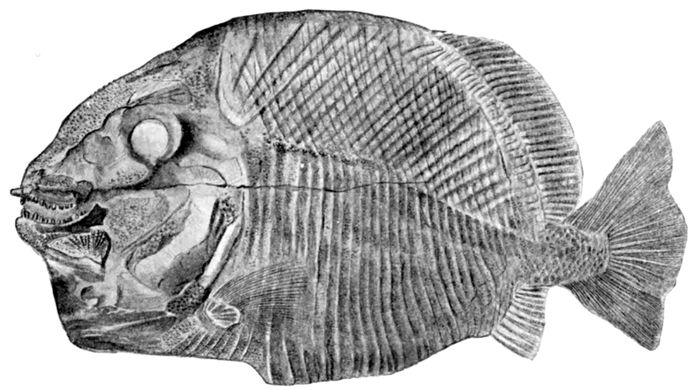
Fig. 13.—Mesturus verrucosus Wagner. Family Pycnodontidæ. (After Woodward.)
Order Lepidostei.—We may place, following Eastman's edition
of Zittel, the allies and predecessors of the garpike in a single
order, for which Huxley's name Lepidostei may well be used.
In this group the notochord is persistent, and the vertebræ are
in various degrees of ossification and of different forms. The
opercles are usually complete, the branchiostegals present, and
there is often a gular plate. There is no infraclavicle and the
jaws have sharp teeth. The fins have fulcra, and the supports
of the fins agree in number with the rays. The tail is more or less
heterocercal. The scales are rhombic, arranged in oblique series,
which are often united above and below with peg-and-socket
articulations. This group contains among recent fishes only the
garpikes (Lepisosteus). They are closely allied to the Palæoniscidæ,
but the skeleton is more highly ossified. On the other
hand they approach very closely to the ancestors of the bowfin,
Amia. One genus, Acentrophorus, appears in the Permian;
the others are scattered through Mesozoic and Tertiary
rocks, the isolated group of gars still persisting. In the gars
the vertebræ are concavo-convex, with ball-and-socket joints.
In the others the vertebræ are incomplete or else double-concave,
as in fishes generally.
24For the group here called Lepidostei numerous other names
have been used corresponding wholly or in part. Rhomboganoidea
of Gill covers nearly the same groups; Holostei of
Müller and Hyoganoidea of Gill include the Halecomorphi also;
Ginglymodi of Cope includes the garpikes only, while Ætheospondyli
of Woodward includes the Aspidorhynchidæ and the
garpikes.
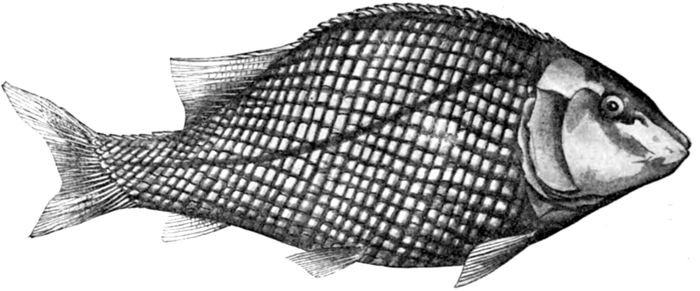
Fig. 14.—Semionotus kapffi Fraas, restored. Family Semionotidæ. (After Fraas, per Nicholson.)
The Semionotidæ (Stylodontidæ) are robust-bodied Ganoids,
having the vertebræ developed as rings, the jaws with several
rows of teeth, those of the outer row styliform.
Semionotus bergeri is a well-known species, with the body
moderately elongate. Semionotus agassizi and many other species
occur in the Triassic of the Connecticut valley and in New
Jersey. The body is very deep in the related genus Dapedium,
and the head is covered with strong bony plates. Dapedium
politum is a well-known species of the English Triassic. Tetragonolepis
(Pleurolepis) is a similar form, very deep and compressed,
with strong, firm scales.
In the extinct family of Lepidotidæ the teeth are conical or
chisel-shaped, while blunt or molar teeth are on the inside of
the mouth, which is small, and the suspensorium of the mandible
is vertical or inclined forward. The body is robust-fusiform,
covered with rhomboid scales; the vertebræ form rings about
the notochord; the teeth are either sharp or blunt. The dorsal
fin is short, with large fulcra.
The best known of the numerous genera are Lepidotes,
rather elongate in body, with large, blunt teeth. Of the many
species of Lepidotes, Lepidotes elvensis abounds in the English
and German Triassic, and Lepidotes minor in the English Triassic.
Another well-known European species is Lepidotes mantelli.
25
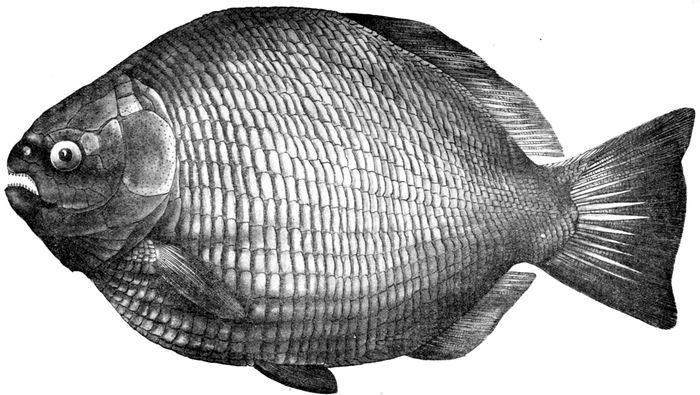
Fig. 15.—Dapedium politum Leach, restored. Family Semionotidæ. (After Woodward.)
26The Isopholidæ (Eugnathidæ) differ from the families last
named in the large pike-like mouth with strong teeth. The
mandibular suspensorium is inclined backwards. The body is
elongate, the vertebræ forming incomplete rings; the dorsal
fin is short with large fulcra.
Isopholis dentosus is found with numerous other species in
the British Triassic. Caturus furcatus is especially characteristic
of Triassic rocks in Germany. Ptycholepis marshi occurs in
the Connecticut valley.
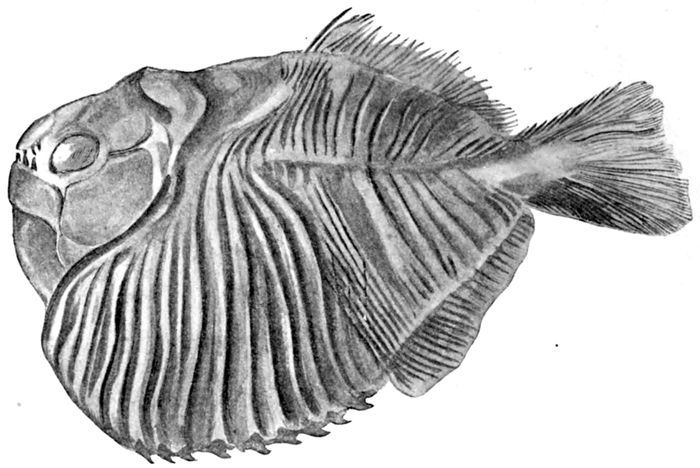
Fig. 16.—Tetragonolepis semicinctus Brown. Lias. Family Semionotidæ. (After Woodward.)
The Macrosemiidæ are elongate fishes with long dorsal fin,
the numerous species being found in the Triassic, Jurassic, and
Cretaceous of Europe. Macrosemius rostratus has a very high,
continuous dorsal. Macropistius arenatus is found in the
Cretaceous of Texas, the only American species known. Prominent
European genera are Notagogus, Ophiopsis, and Petalopteryx.
27
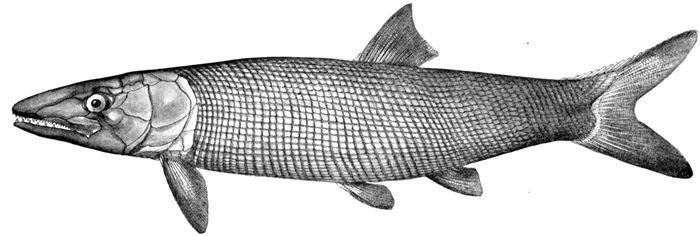
Fig. 17.—Isopholis orthostomus (Agassiz). Lias. (After Woodward.)

Fig. 18.—The Long-nosed Garpike, Lepisosteus osseus (Linnæus). Fox River, Wisconsin. (From nature; D. S. Jordan and M. L. McDonald, 1874.)
28Intermediate between the allies of the gars and the modern
herrings is the large extinct family of Pholidophoridæ, referred
by Woodward to the Isospondyli, and by Eastman to the Lepidostei.
These are small fishes, fusiform in shape, chiefly of
the Triassic and Jurassic. The fins are fringed with fulcra,
the scales are ganoid and rhombic, and the vertebræ reduced
to rings. The mouth is large, with small teeth, and formed as
in the Isospondyli. The caudal is scarcely heterocercal.

Fig. 19.—Caturus elongatus Agassiz. Jurassic. Family Isopholidæ. (After Zittel.)
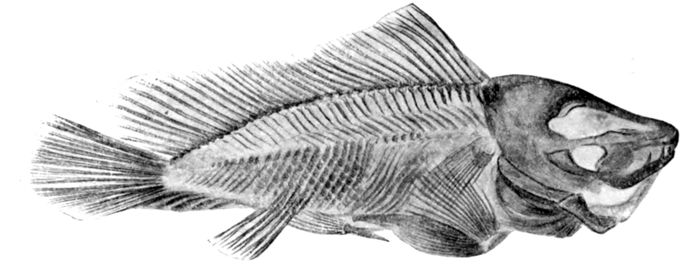
Fig. 20.—Notagogus pentlandi Agassiz. Jurassic. Family Macrosemiidæ. (After Woodward.)
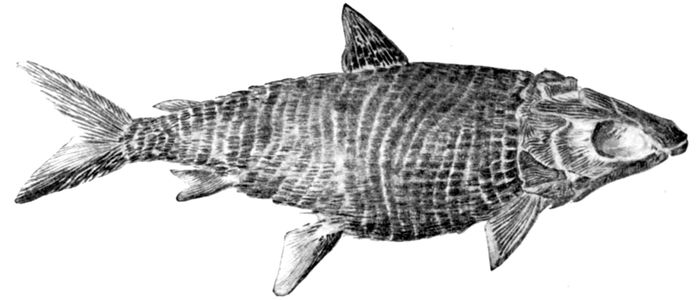
Fig. 21.—Ptycholepis curtus Egerton. Lias. Family Isopholidæ. (After Woodward.)
Of Pholidophorus, with scales joined by peg-and-socket joints
and uniform in size, there are many species. Pholidophorus
latiusculus and many others are found in the Triassic of England
and the Continent. Pholidophorus americanus occurs in the
29Jurassic of South Dakota. Pleuropholis, with the scales on the
lateral line, which runs very low, excessively deepened, is also
widely distributed. I have before me a new species from the
Cretaceous rocks near Los Angeles. The Archæomænidæ differ
from Pholidophoridæ in having cycloid scales. In both families
the vertebræ are reduced to rings about the notochord. From
fishes allied to the Pholidophoridæ the earliest Isospondyli are
probably descended.
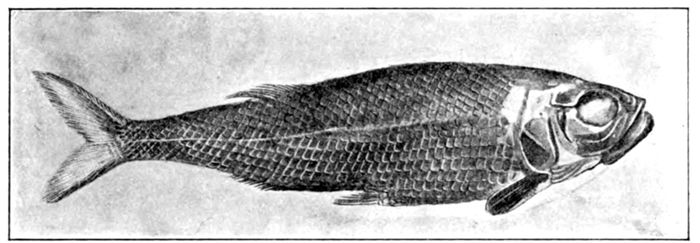
Fig. 22.—Pholidophorus crenulatus Egerton. Lias. (After Woodward.)
In the Aspidorhynchidæ the snout is more or less produced,
the mandible has a distinct presymphysial bone, the vertebræ
are double-concave or ring-like, and the fins are without fulcra.
This family constitutes the suborder Ætheospondyli. In form
these fishes resemble Albula and other modern types, but have
mailed heads and an ancient type of scales. Two genera are
well known, Aspidorhynchus and Belonostomus. Aspidorhynchus
acutirostris reaches a length of three feet, and is found in
the Triassic lithographic stone of Bavaria. Other species
occur in rocks of Germany and England.
Belonostomus has the snout scarcely produced. Belonostomus
sphyrænoides is the best known of the numerous species,
all of the Triassic, Jurassic, and Cretaceous.
Family Lepisosteidæ.—The family of Lepisosteidæ, constituting
the suborder Ginglymodi (γιγγλυμός, hinge), is characterized
especially by the form of the vertebræ.
These are opisthocœlian, convex in front and concave behind,
as in reptiles, being connected by ball-and-socket joints. The tail
is moderately heterocercal, less so than in the Halecomorphi, and
the body is covered with very hard, diamond-shaped, enameled
30scales in structure similar to that of the teeth. A number of
peculiar characters are shown by these fishes, some of them
having often been regarded as reptilian traits. Notable features
are the elongate, crocodile-like jaws, the upper the longer, and
both armed with strong teeth. The mandible is without presymphysial
bone. The fins are small with large fulcra, and
the scales are nearly uniform in size.
All the species belong to a single family, Lepisosteidæ, which
includes the modern garpikes and their immediate relatives,
some of which occur in the early Tertiary. These voracious
fishes are characterized by long and slender cylindrical bodies,
with enameled scales and mailed heads and heterocercal tail.
The teeth are sharp and unequal. The skeleton is well ossified,
and the animal itself is extremely voracious. The vertebræ,
reptile-like, are opisthocœlian, that is, convex in front, concave
behind, forming ball-and-socket joints. In almost all other
fishes they are amphicœlian or double-concave, the interspace
filled with gelatinous substance. The recent species, and perhaps
all the extinct species also, belong to the single genus
Lepisosteus (more correctly, but also more recently, spelled
Lepidosteus). Of existing forms there are not many species,
three to five at the most, and they swarm in the lakes, bayous,
and sluggish streams from Lake Champlain to Cuba and along
the coast to Central America. The best known of the species
is the long-nosed garpike, Lepisosteus osseus, which is found
throughout most of the Great Lake region and the Mississippi
Valley, and in which the long and slender jaws are much longer
than the rest of the head. The garpike frequents quiet waters
and is apparently of sleepy habit. It often lies quiet for a long
time, carried around and around by the eddies. It does not
readily take the hook and seldom feeds in the aquarium. It
feeds on crayfishes and small fishes, to which it is exceedingly
destructive, as its bad reputation indicates. Fishermen everywhere
destroy it without mercy. Its flesh is rank and tough
and unfit even for dogs.
In the young garpike the caudal fin appears as a second
dorsal and anal, the filamentous tip of the tail passing through
and beyond it.
The short-nosed garpike, Lepisosteus platystomus, is generally
31common throughout the Mississippi Valley. It has a short
broad snout like the alligator-gar, but seldom exceeds three feet
in length. In size, color, and habits it agrees closely with the
common gar, differing only in the form of the snout. The form
is subject to much variation, and it is possible that two or more
species have been confounded.

Fig. 23.—Alligator-gar, Lepisosteus tristœchus (Bloch). Cuba.
The great alligator-gar, Lepisosteus tristœchus, reaches a
length of twenty feet or more, and is a notable inhabitant of
the streams about the Gulf of Mexico. Its snout is broad and
relatively wide, and its teeth are very strong. It is very destructive
to all sorts of food-fishes. Its flesh is worthless, and
its enameled scales resist a spear or sometimes even shot.
It breathes air to a certain extent by its lungs, but soon dies
in foul water, not having the tenacity of life seen in Amia.
Embryology of the Garpike.—Mr. Alexander Agassiz has
given an account of the embryology of the garpike, of which the
following is an abstract:
"The garpike comes up the St. Lawrence in May, lays its
eggs about the 20th, and then disappears. The eggs are large,
viscous, stick fast in an isolated way to whatever they fall
upon, and look much like those of toads, having a large outer
membrane and a small yolk. Artificial fecundation failed,
but about 500 naturally-laid eggs were secured, of which all
but 30 perished through mold. The young began to hatch
in six days. Out of 30 young hatched, 27 lived until the
15th of July. Connection with the sharks appears in the
similarity of the branchial arches and by the presence of the
lateral fold in which the pectoral fins are formed; the way
the tail is developed is very like that of the bony fishes.
Among the Ganoids it appears, as well as in ordinary fishes,
the dorsal cord is straight at first, then assumes a slightly upward
32curve at the extremity, when finally there appears the
beginning of a lobe underneath, pointing to a complete heterocercal
tail. All this is as in the bony fishes, but this is the
permanent condition of the garpike, while in the bony fishes
the extremity of the dorsal cord becomes extinct. The mode
of development of the pectoral lobe (very large in this species)
furnishes another resemblance. In the brain, and in the mode
of formation of the gills, a likeness to the sharks is noticeable.
The young garpikes move very slowly, and seem to float quietly,
save an exceedingly rapid vibration of the pectorals and the
tip of the tail. They do not swim about much, but attach
themselves to fixed objects by an extraordinary horseshoe-shaped
ring of sucker-appendages about the mouth. These
appendages remain even after the snout has become so extended
that the ultimate shape is hinted at; and furthermore, it is
a remnant of this feature that forms the fleshy bulb at the end
of the snout in the adult. The investigations thus far show
that the young garpike has many characteristics in common
with the sharks and skates, but it is not so different from the
bony fishes as has been supposed."
Fossil Garpikes.—A number of fossil garpikes, referred by
Cope to the genus Clastes and by Eastman and Woodward to
Lepidosteus, are found in the Eocene of Europe and America.
The most perfect of these remains is called Lepisosteus atrox,
upward of four feet long, as large as an alligator-gar, which the
species much resembles. Although found in the Eocene, Dr.
C. R. Eastman declares that "it has no positively archaic features.
If we inquire into the more remote or pre-Eocene history of
Lepidosteids, palæontology gives no answer. They blossom
forth suddenly and fully differentiated at the dawn of the
Tertiary, without the least clue to their ancestry, unheralded
and unaccompanied by any intermediate forms, and they have
remained essentially unchanged ever since."
Another fossil species is Lepisosteus fimbriatus, from the
Upper Eocene of England. Scales and other fragments of
garpikes are found in Germany, Belgium, and France, in Eocene
and Miocene rocks. On some of these the nominal genera
Naisia, Trichiurides, and Pneumatosteus are founded. Clastes,
regarded by Eastman as fully identical with Lepisosteus, is said
33to have the "mandibular ramus without or with a reduced
fissure of the dental foramen, and without the groove continuous
with it in Lepisosteus. One series of large teeth, with
small ones external to them on the dentary bone." Most of
the fossil forms belong to Clastes, but the genus shows no difference
of importance which will distinguish it from the ordinary
garpike.
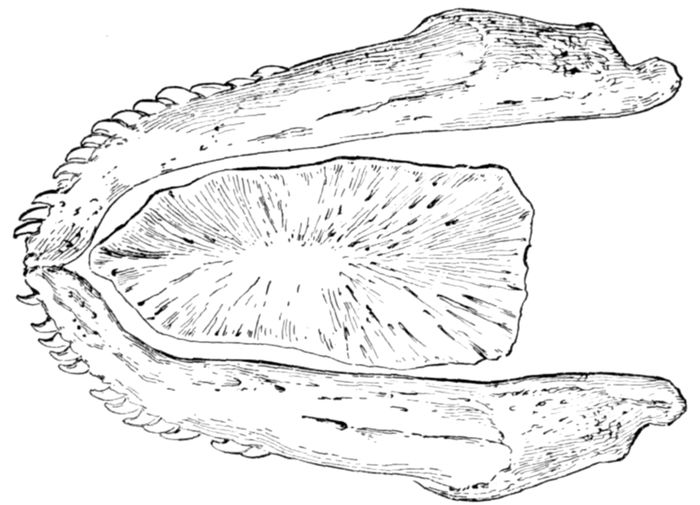
Fig. 24.—Lower jaw of Amia calva Linnæus, showing the gular plate.
Order Halecomorphi.—To this order belong the allies, living
or extinct, of the bowfin (Amia), having for the most part
cycloid scales and vertebræ approaching those of ordinary
fishes. The resemblance to the Isospondyli, or herring group,
is indicated in the name (Halec, a herring; μορφή, form). The
notochord is persistent, the vertebræ variously ossified. The
opercles are always complete. The branchiostegals are broad
and there is always a gular plate. The teeth are pointed, usually
strong. There is no infraclavicle. Fulcra are present or
absent. The supports of the dorsal and anal are equal in number
to the rays. Tail heterocercal. Scales thin, mostly cycloid,
but bony at base, not jointed with each other. Mandible complex,
with well-developed splenial rising into a coronoid process,
which is completed by a distinct coronoid bone. Pectoral fin
with more than five actinosts; scales ganoid or cycloid. In the
living forms the air-bladder is connected with the œsophagus
through life; optic chiasma present; intestine with a spiral
valve. This group corresponds to the Amioidei of Lütken
34and essentially to the Cycloganoidei of Gill. The Protospondyli
(προτός, before; σπόνδυλος, vertebra) of Woodward contains
essentially the same elements.
Pachycormidæ.—In the family of Pachycormidæ the notochord
is persistent, the ethmoids and vomer fused and projecting
between the maxillaries to form the prominent snout,
the teeth large, the body fusiform, the dorsal short, with slender
rays and few fulcra or none, and the scales are thin and rhombic.
The numerous species are characteristic of the Triassic, Jurassic,
and Cretaceous. In Sauropsis (longimana) the body is elongate,
and the pectoral fins are large and sickle-shaped. Euthynotus
has small fulcra. In Pachycormus (macropterus, esocinus,
etc.) the form is robust and the ventral fins are wanting. In
Hypsycormus ventrals are present, and the caudal deeply forked.
In the American family of Protosphyrænidæ the jaws are
armed with very strong teeth, as in the Barracuda, which,
however, the species do not resemble in other respects. Protosphyræna
nitida, perniciosa, and numerous other extinct
forms, some of them of large size, were voracious inhabitants
of the Cretaceous seas, and are found fossil, especially in North
Carolina and Kansas. Numerous species called Erisichthe and
Pelecopterus are all referred by Hay to Protosphyræna. In
this family the scapula and coracoids are ossified, and perhaps
the vertebræ also, and, as Dr. Hay has recently suggested, the
Protosphyrænidæ may really belong to the Isospondyli. In any
event, they stand on the border-line between the most fish-like
of the Ganoids and the most archaic of the bony fishes.
The Liodesmidæ (genus Liodesmus) are much like Amia, but
the notochord is persistent, its sheath without ossification.
Liodesmus gracilis and L. sprattiformis occur in the lithographic
stones of Bavaria. Woodward places Liodesmus with Megalurus
among the Amiidæ.
The Bowfins: Amiidæ.—The Amiidæ have the vertebræ more
complete. The dorsal fin is many-rayed and is without distinct
fulcra. The diamond-shaped enameled scales disappear, giving
place to cycloid scales, which gradually become thin and membranous
in structure. A median gular plate is developed between
the branchiostegals. The tail is moderately heterocercal,
and the head covered with a bony coat of mail.
35The family of Amiidæ contains a single recent species,
Amia calva, the only living member of the order Halecomorphi.
The bowfin, or grindle, is a remarkable fish abounding in the
lakes and swamps of the Mississippi Valley, the Great Lake
region, and southward to Virginia, where it is known by the
imposing but unexplained title of John A. Grindle. In the
Great Lakes it is usually called "dogfish," because even the
dogs will not eat it, and "lawyer," because, according to Dr.
Kirtland, "it will bite at anything and is good for nothing
when caught."
The bowfin reaches a length of two and one half feet, the
male being smaller than the female and marked by an ocellated
black spot on the tail. Both sexes are dark mottled green in
color. The flesh of the species is very watery, pasty, much
of the substance evaporating when exposed to the air. It is
ill-flavored, and is not often used as food. The species is
very voracious and extremely tenacious of life. Its well-developed
lung enables it to breathe even when out of the water, and
it will live in the air longer than any other fish of American
waters, longer even than the horned pout (Ameiurus) or the
mud-minnow (Umbra). As a game fish the grindle is one of
the very best, if the angler does not care for the flesh of what he
catches, it being one of the hardest fighters that ever took the hook.

Fig. 25.—Bowfin (female), Amia calva Linnæus. Lake Michigan.
The Amiidæ retain many of the Ganoid characters, though
approaching more nearly than any other of the Ganoids to the
modern herring tribe. For this reason the name Halecomorphi
(shad-formed) was given to this order by Professor Cope. The
gular plate found in Amia and other Ganoids reappears in
the herring-like family of Elopidæ, which includes the tarpon
and the ten-pounder.
36Woodward unites the extinct genera called Cyclurus, Notæus,
Amiopsis, Protamia, Hypamia, and Pappichthys with Amia.
Pappichthys (corsoni, etc.), from the Wyoming Eocene, is doubtless
a valid genus, having but one row of teeth in each jaw, and
Amiopsis is also recognized by Hay. Woodward refers to
Amia the following extinct species: Amia valenciennesi, from
the Miocene of France; Amia macrocephala, from the Miocene
of Bohemia; and Amia ignota, from the Eocene of Paris. Other
species of Amia are known from fragments. Several of these
are from the Eocene of Wyoming and Colorado. Some of
them have a much shorter dorsal fin than that of Amia calva
and may be generically different.

Fig. 26.—Megalurus elegantissimus Wagner. Family Amiidæ. (After Zittel.)
The genus Megalurus differs from Amia in the still shorter
dorsal fin, less than one-third the length of the back. The
body is elongate and much depressed. Megalurus lepidotus
and several other species are found in the lithographic stones
of Bavaria and elsewhere.
The Oligopleuridæ.—In the extinct family Oligopleuridæ
the scales are cycloid, the bones of the head scarcely enameled,
and the vertebræ well ossified. Fulcra are present, and the
mouth is large, with small teeth. The genera are Oligopleurus,
Ionoscopus, and Spathiurus, the species not very numerous
and chiefly of the Cretaceous. Ionoscopus cyprinoides of the
lithographic shales of Bavaria is a characteristic species.
From the three families last named, with the Pholidophoridæ,
there is an almost perfect transition from the Ganoid fishes to
teleosteans of the order of Isospondyli, the primitive order from
which all other bony fishes are perhaps descended. The family
of Leptolepidæ, differing from Oligopleuridæ in the absence of
fulcra, is here placed with the Isospondyli, but it might about
as well be regarded as Ganoid.
37
CHAPTER III
ISOSPONDYLI
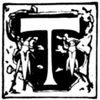
The Subclass Teleostei, or Bony Fishes.—The fishes which
still remain for discussion constitute the great subclass
or series of Teleostei (τελεός, true; οστέον, bone),
or bony fishes. They lack wholly or partly the Ganoid traits,
or show them only in the embryo. The tail is slightly, if at all,
heterocercal; the actinosts of the pectoral fins are few and large,
rarely over five in number, except among the eels; the fulcra
disappear; the air-bladder is no longer cellular, except in very
rare cases, nor does it assist in respiration. The optic nerves
are separate, one running to each eye without crossing; the
skeleton is almost entirely bony, the notochord usually disappearing
entirely with age; the valves in the arterial bulb
are reduced in number, and the spiral valve of the intestines
disappears. Traces of each of the Ganoid traits may persist
somewhere in some group, but as a whole we see a distinct
specialization and a distinct movement toward the fish type,
with the loss of characters distinctive of sharks, Dipnoans, and
Ganoids. In a general way the skeleton of all Teleosts corresponds
with that of the striped bass (see Figs. 22, 23, Vol. I), and
the visceral anatomy is in all cases sufficiently like that of the
sunfish (Fig. 16, Vol. I).
The mesocoracoid or precoracoid arch, found in all Ganoids,
persists in the less specialized types of bony fishes, although
no trace of it is found in the perch-like forms. With all this,
there is developed among the bony fishes an infinite variety
in details of structure. For this reason the Teleostei must be
broken into many orders, and these orders are very different
in value and in degrees of distinctness, the various groups being
joined by numerous and puzzling intergradations.
38Order Isospondyli.—Of the various subordinate groups of
bony fishes, there can be no question as to which is most primitive
in structure, or as to which stands nearest the orders of
Ganoids. Earliest of the bony fishes in geological time is the
order of Isospondyli (ἴσος, equal; σπόνδυλος, vertebra), containing
the allies, recent or fossil, of the herring and the trout. This
order contains those soft-rayed fishes in which the ventral
fins are abdominal, a mesocoracoid or precoracoid arch is developed,
and the anterior vertebræ are unmodified and essentially
similar to the others. The orbitosphenoid is present in all
typical forms. In certain forms of doubtful affinity (Iniomi) the
mesocoracoid is wanting or lost in degeneration. Through
the Isospondyli all the families of fishes yet to be considered
are apparently descended, their ancestors being Ganoid fishes
and, still farther back, the Crossopterygians.
Woodward gives this definition of the Isospondyli: "Notochord
varying in persistence, the vertebral centra usually complete,
but none coalesced; tail homocercal, but hæmal supports
not much expanded or fused. Symplectic bone present, mandible
simple, each dentary consisting only of two elements (dentary
and articulo-angular), with rare rudiments of a splenoid on the
inner side. Pectoral arch suspended from the cranium; precoracoid
(mesocoracoid) arch present; infraclavicular plates
wanting. Pelvic (ventral) fins abdominal. Scales ganoid only
in the less specialized families. In the living forms air-bladder
connected with the œsophagus in the adult; optic nerves decussating
(without chiasma), and intestine either wanting spiral
valve or with an incomplete representative of it."
The Classification of the Bony Fishes.—The classification of
fishes has been greatly complicated by the variety of names
applied to groups which are substantially but not quite identical
one with another. The difference in these schemes of classification
lies in the point of view. In all cases a single character
must be brought to the front; such characters never stand
quite alone, and to lay emphasis on another character is to
make an alteration large or small in the name or in the boundaries
of a class or order. Thus the Ostariophysi with the Isospondyli,
Haplomi, and a few minor groups make up the great
division of the Abdominales. These are fishes in which the
39ventral fins are abdominal, that is, inserted backward, so that
the pelvis is free from the clavicle, the two sets of limbs being
attached to different parts of the skeleton. Most of the abdominal
fishes are also soft-rayed fishes, that is, without consecutive
spines in the dorsal and anal fins, and they show a number
of other archaic peculiarities. The Malacopterygians (μαλακός,
soft; πτερύξ, fin) of Cuvier therefore correspond very nearly
to the Abdominales. But they are not quite the same, as the
spiny-rayed barracudas and mullets have abdominal ventrals,
and many unquestioned thoracic or jugular fishes, as the sea-snails
and brotulids, have lost, through degeneration, all of their
fin-spines.
In nearly but not quite all of the Abdominal fishes the
slender tube connecting the air-bladder with the œsophagus
persists through life. This character defines Müller's order
of Physostomi (φυσός, bladder; στόμα, mouth), as opposed to
his Physoclysti (φυσός, bladder; κλεῖστός, closed), in which this
tube is present in the embryo or larva only. Thus the Thoracices
and Jugulares, or fishes having the ventrals thoracic or jugular,
together correspond almost exactly to the Acanthopterygians,
(ακανθα, spine; πτερύξ, fin), or spiny-rayed fishes of Cuvier, or to
the Physoclysti of Müller. The Malacopterygians, the Abdominales,
and the Physostomi are in the same way practically
identical groups. As the spiny-rayed fishes have mostly ctenoid
scales, and the soft-rayed fishes cycloid scales, the Physostomi
correspond roughly to Agassiz's Cycloidei, and the Physoclysti
to his Ctenoidei.
But in none of these cases is the correspondence perfectly
exact, and in any system of classification we must choose characters
for primary divisions so ancient and therefore so permanent
as to leave no room for exceptions. The extraordinary
difficulty of doing this, with the presence of most puzzling
intergradations, has led Dr. Gill to suggest that the great body
of bony fishes, soft-rayed and spiny-rayed, abdominal, thoracic,
and jugular alike, be placed in a single great order which he
calls Teleocephali (τελεός, perfect; κεφαλή, head). The aberrant
forms with defective skull and membrane-bones he would separate
as minor offshoots from this great mass with the name
of separate orders. But while the divisions of Teleocephali
40are not strongly differentiated, their distinctive characters are
real, ancient, and important, while those of the aberrant groups,
called orders by Gill (as Plectognathi, Pediculati, Hemibranchii),
are relatively modern and superficial, which is one reason why
they are more easily defined. There seems to us no special
advantage in the retention of a central order Teleocephali,
from which the divergent branches are separated as distinct
orders.
While our knowledge of the osteology and embryology of
most of the families of fishes is very incomplete, it is evident
that the relationships of the groups cannot be shown in any
linear series or by any conceivable arrangement of orders and
suborders. The living teleost fishes have sprung from many
lines of descent, their relationships are extremely diverse, and
their differences are of every possible degree of value. The
ordinary schemes have magnified the value of a few common
characters, at the same time neglecting other differences of
equal value. No system of arrangement which throws these
fishes into large groups can ever be definite or permanent.
Relationships of Isospondyli.—For our purposes we may divide
the physostomous fishes as understood by Müller into several
orders, the most primitive, the most generalized, and economically
the most important being the order of Isospondyli. This order
contains those bony fishes which have the anterior vertebræ
unaltered (as distinguished from the Ostariophysi), the skull
relatively complete, or at least not eel-like, the mesocoracoid
typically developed, but atrophied in deep-sea forms and finally
lost, the orbitosphenoid present. In all the species the ventral
fins are abdominal and normally composed of more than six
rays; the air-duct is developed. The scales are chiefly cycloid
and the fins are without true spines. In many ways the order
is more primitive than Nematognathi, Plectospondyli, or Apodes.
It is certain that it began earlier in geological time than any
of these. On the other hand, the Isospondyli are closely connected
through the Berycoidei with the highly specialized fishes.
The continuity of the natural series is therefore interrupted by
the interposition of the side branches of Ostariophysans and eels
before considering the Haplomi and the other transitional forms.
The forms called Iniomi, which lack the mesocoracoid and the
41orbitosphenoid, have been lately transferred to the Haplomi by
Boulenger. This arrangement is probably a step in advance.
Ganoid traits are present in certain families of Isospondyli.
Among these are the gular plate (found in Amia and the Elopidæ),
doubtless derived from the similar structure in earlier Ganoids;
additional valves in the arterial bulb in the cellular air-bladder
of Notopterus and Osteoglossum, the spiral intestinal valve
in Chirocentridæ, and the ganoid scales of the extinct Leptolepidæ.
The Clupeoidea.—The Isospondyli are divisible into numerous
families, which may be grouped roughly under three subdivisions,
Clupeoidea, the herring-like forms; the Salmonoidea, the trout-like
forms; and the Iniomi, or lantern-fishes, and their allies. The
last-named group should probably be removed from the order of
Isospondyli. In the Clupeoidea, the allies of the great family
of the herring, the shoulder-girdle is normally developed, retaining
the mesocoracoid arch on its inner edge, and through the
post-temporal is articulated above with the cranium. The fishes
in this group lack the adipose fin which is characteristic of most
of the higher or salmon-like families.
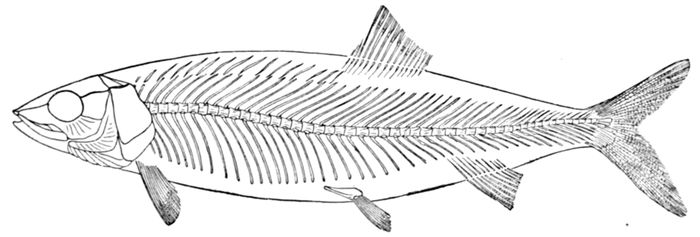
Fig. 27.—Leptolepis dubius Blainville, Lithographic Stone. (After Woodward.)
The Leptolepidæ.—Most primitive of the Isospondyli is the
extinct family of Leptolepidæ, closely allied to the Ganoid families
of Pholidophoridæ and Oligopleuridæ. It is composed of graceful,
herring-like fishes, with the bones of the head thin but covered
with enamel, and the scales thin but firm and enameled on their
free portion. There are no fulcra and there is no lateral line.
The vertebræ are well developed, but always pierced by the
notochord. The genera are Lycoptera, Leptolepis, Æthalion,
and Thrissops. In Lycoptera of the Jurassic of China the
42vertebral centra are feebly developed, and the dorsal fin short
and posterior. In Leptolepis the anal is short and placed
behind the dorsal. There are many species, mostly from the
Triassic and lithographic shales of Europe, one being found
in the Cretaceous. Leptolepis coryphænoides and Leptolepis
dubius are among the more common species. Æthalion (knorri)
differs in the form of the jaws. In Thrissops the anal fin is
long and opposite the dorsal. Thrissops salmonea is found
in the lithographic stone; Thrissops exigua in the Cretaceous.
In all these early forms there is a hard casque over the brain-cavity,
as in the living types, Amia and Osteoglossum.

Fig. 28.—Ten-pounder, Elops saurus L. An ally of the earliest bony fishes. Virginia.

Fig. 29.—A primitive Herring-like fish, Holcolepis lewesiensis, Mantell, restored. Family Elopidæ. English Chalk. (After Woodward.)
The Elopidæ.—The family of Elopidæ contains large fishes
herring-like in form and structure, but having a flat membrane-bone
or gular plate between the branches of the lower jaw, as
in the Ganoid genus Amia. The living species are few, abounding
in the tropical seas, important for their size and numbers,
though not valued as food-fishes save to those who, like the
Hawaiians and Japanese, eat fishes raw. These people prefer
43for that purpose the white-meated or soft-fleshed forms like
Elops or Scarus to those which yield a better flavor when cooked.
The ten-pounder (Elops saurus), pike-like in form but with
very weak teeth, is found in tropical America. Elops machnata,
the jack mariddle, the awaawa of the Hawaiians, abounding in
the Pacific, is scarcely if at all different.
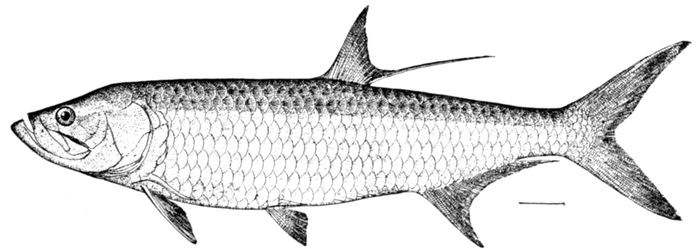
Fig. 30.—Tarpon or Grande Écaille, Tarpon atlanticus Cuv. & Val. Florida.
The tarpon, called also grande écaille, silver-king, and sable
(Tarpon atlanticus), is a favorite game-fish along the coasts of
Florida and Carolina. It takes the hook with great spirit, and
as it reaches a length of six feet or more it affords much excitement
to the successful angler. The very large scales are much
used in ornamental work.
A similar species of smaller size, also with the last ray of
the dorsal very much produced, is Megalops cyprinoides of the
East Indies. Other species occur in the South Seas.
Numerous fossil genera related to Elops are found in the
Cretaceous and Tertiary rocks. Holcolepis lewesiensis (wrongly
called Osmeroides) is the best-known European species. Numerous
species are referred to Elopopsis. Megalops prisca and
species of Elops also occur in the London Eocene.
In all these the large parietals meet along the median line
of the skull. In the closely related family of Spaniodontidæ
the parietals are small and do not meet. All the species of
this group, united by Woodward with the Elopidæ, are extinct.
These fishes preceded the Elopidæ in the Cretaceous period.
Leading genera are Thrissopater and Spaniodon, the latter
armed with large teeth. Spaniodon blondeli is from the Cretaceous
44of Mount Lebanon. Many other species are found in the
European and American Cretaceous rocks, but are known from
imperfect specimens only.
Sardinius, an American Cretaceous fossil herring, may stand
near Spaniodon. Rhacolepis buccalis and Notelops brama are
found in Brazil, beautifully preserved in concretions of calcareous
mud supposed to be of Cretaceous age.
The extinct family of Pachyrhizodontidæ is perhaps allied
to the Elopidæ. Numerous species of Pachyrhizodus are found
in the Cretaceous of southern England and of Kansas.
The Albulidæ.—The Albulidæ, or lady-fishes, characterized by
the blunt and rounded teeth, are found in most warm seas.
Albula vulpes is a brilliantly silvery fish, little valued as food.
The metamorphosis (see Fig. 112, Vol. I) which the larva undergoes
is very remarkable. It is probably, however, more or less
typical of the changes which take place with soft-rayed fishes
generally, though more strongly marked in Albula and in certain
eels than in most related forms. Fossils allied to Albula, Albula
oweni, Chanoides macropomus, are found in the Eocene of Europe;
Syntegmodus altus in the Cretaceous of Kansas. In Chanoides,
the most primitive genus, the teeth are much fewer than in
Albula. Plethodus and Thryptodus, with peculiar dental plates
on the roof and floor of the mouth, probably constitute a distinct
family, Thryptodontidæ. The species are found in European
and American rocks, but are known from imperfect specimens
only.
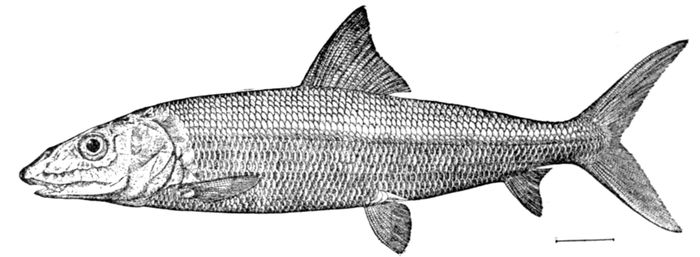
Fig. 31.—The Lady-fish, Albula vulpes (Linnæus). Florida.
The Chanidæ.—The Chanidæ, or milkfishes, constitute another
small archaic type, found in the tropical Pacific. They are
45large, brilliantly silvery, toothless fishes, looking like enormous
dace, swift in the water, and very abundant in the Gulf of
California, Polynesia, and India. The single living species is
the Awa, or milkfish, Chanos chanos, largely used as food
in Hawaii. Species of Prochanos and Chanos occur in the
Cretaceous, Eocene, and Miocene. Allied to Chanos is the
Cretaceous genus Ancylostylos (gibbus), probably the type of
a distinct family, toothless and with many-rayed dorsal.
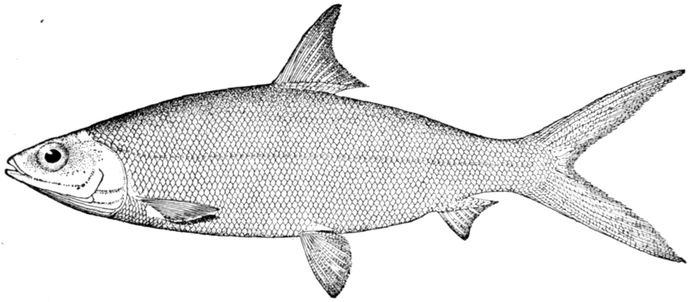
Fig. 32.—Milkfish, Chanos chanos (L.). Mazatlan.
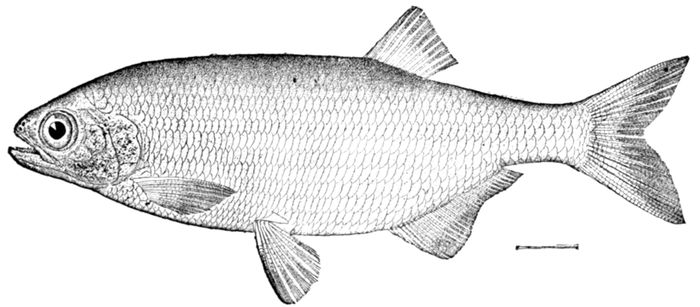
Fig. 33.—Mooneye, Hiodon tergisus Le Sueur. Ecorse, Mich.
The Hiodontidæ.—The Hiodontidæ, or mooneyes, inhabit the
rivers of the central portion of the United States and Canada.
They are shad-like fishes with brilliantly silvery scales and very
strong sharp teeth, those on the tongue especially long. They are
very handsome fishes and take the hook with spirit, but the
flesh is rather tasteless and full of small bones, much like that
46of the milkfish. The commonest species is Hiodon tergisus.
No fossil Hiodontidæ are known.

Fig. 34.—Istieus grandis Agassiz. Family Pterothrissidæ. (After Zittel.)
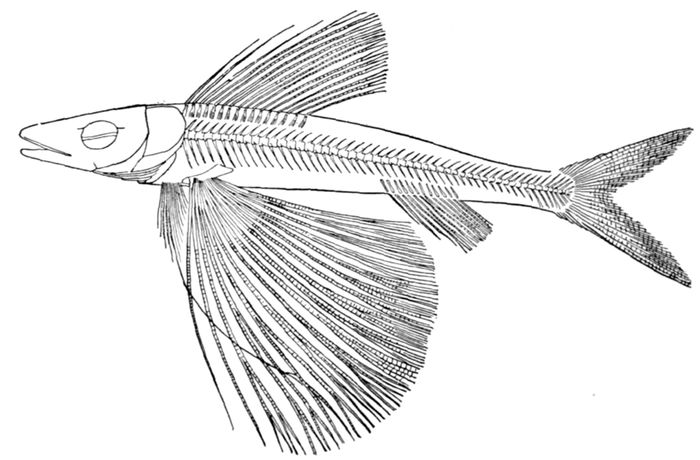
Fig. 35.—Chirothrix libanicus Pictet & Humbert. Cretaceous of Mt. Lebanon. (After Woodward.)
The Pterothrissidæ.—The Pterothrissidæ are sea-fishes like
Albula, but more slender and with a long dorsal fin. They live
in deep or cold waters along the coasts of Japan, where they are
known as gisu. The single species is Pterothrissus gissu. The
fossil genus Istieus, from the Upper Cretaceous, probably belongs
near the Pterothrissidæ. Istieus grandis is the best-known
species. Another ancient family, now represented by a single
species, is that of the Chirocentridæ, of which the living type
is Chirocentrus dorab, a long, slender, much compressed herring-like
fish, with a saw-edge on the belly, found in the East Indies,
in which region Chirocentrus polyodon occurs as a fossil. Numerous
fossil genera related to Chirocentrus are enumerated by
Woodward, most of them to be referred to the related family
of Ichthyodectidæ (Saurodontidæ). Of these, Portheus, Ichthyodectes,
Saurocephalus (Saurodon), and Gillicus are represented by
numerous species, some of them fishes of immense size and great
voracity. Portheus molossus, found in the Cretaceous of Nebraska,
is remarkable for its very strong teeth. Species of other genera
are represented by numerous species in the Cretaceous of both
the Rocky Mountain region and of Europe.
47

Fig. 36.—Gigantic skeleton of Portheus molossus Cope. (Photograph by Charles H. Sternberg.)
48The Ctenothrissidæ.—A related family, Ctenothrissidæ, is
represented solely by extinct Cretaceous species. In this group
the body is robust with large scales, ctenoid in Ctenothrissa,
cycloid in Aulolepis. The fins are large, the belly not serrated,
and the teeth feeble. Ctenothrissa vexillifera is from Mount
Lebanon. Other species occur in the European chalk. In the
small family of Phractolæmidæ the interopercle, according to
Boulenger, is enormously developed.
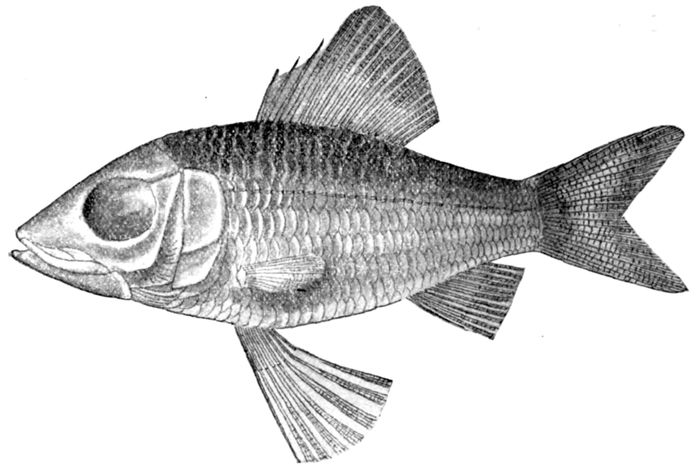
Fig. 37.—Ctenothrissa vexillifera Pictet, restored. Mt. Lebanon Cretaceous. (After Woodward.)
The Notopteridæ.—The Notopteridæ is another small family
in the rivers of Africa and the East Indies. The body ends in
a long and tapering fin, and, as usual in fishes which swim by
49body undulations, the ventral fins are lost. The belly is doubly
serrate. The air-bladder is highly complex in structure, being
divided into several compartments and terminating in two
horns anteriorly and posteriorly, the anterior horns being in
direct communication with the auditory organ. A fossil Notopterus,
N. primævus, is found in the same region.
The Clupeidæ.—The great herring family, or Clupeidæ, comprises
fishes with oblong or herring-shaped body, cycloid scales,
and feeble dentition. From related families it is separated
by the absence of lateral line and the division of the maxillary
into three pieces. In most of the genera the belly ends in a
serrated edge, though in the true herring this is not very evident,
and in some the belly has a blunt edge. Some of the species
live in rivers, some ascend from the sea for the purpose of spawning.
The majority are confined to the ocean. Among all
the genera, the one most abundant in individuals is that of
Clupea, the herring. Throughout the North Atlantic are immense
schools of Clupea harengus. In the North Pacific on
both shores another herring, Clupea pallasi, is equally abundant,
and with the same market it would be equally valuable. As
salted, dried, or smoked fish the herring is found throughout
the civilized world, and its spawning and feeding-grounds have
determined the location of cities.

Fig. 38.—Herring, Clupea harengus L. New York.
The genus Clupea, of northern distribution, has the vertebræ
in increased number (56), and there are weak teeth on the vomer.
Several other genera are very closely related, but ranging farther
south they have, with other characters, fewer (46 to 50) vertebræ.
The alewife, or branch-herring (Pomolobus pseudoharengus),
ascends the rivers to spawn and has become landlocked in
50the lakes of New York. The skipjack of the Gulf of Mexico,
Pomolobus chrysochloris, becomes very fat in the sea. The
species becomes landlocked in the Ohio River, where it thrives
as to numbers, but remains lean and almost useless as food. The
glut-herring, Pomolobus æstivalis, and the sprat, Pomolobus
sprattus, of Europe are related forms.
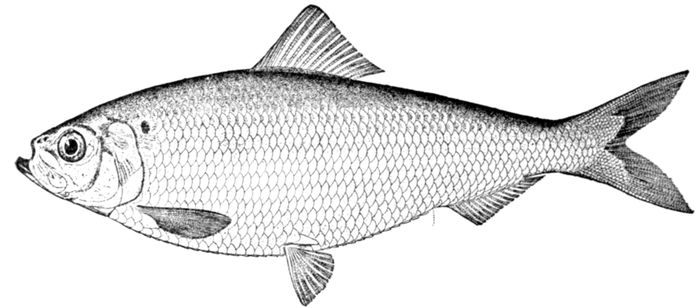
Fig. 39.—Alewife, Pomolobus pseudoharengus (Wilson). Potomac River.
Very near also to the herring is the shad (Alosa sapidissima)
of the eastern coasts of America, and its inferior relatives, the
shad of the Gulf of Mexico (Alosa alabamæ), the Ohio River
shad (Alosa ohiensis), very lately discovered, the Allice shad
(Alosa alosa) of Europe, and the Thwaite shad (Alosa finta).
In the genus Alosa the cheek region is very deep, giving the
head a form different from that seen in the herring.
The American shad is the best food-fish in the family, peculiarly
delicate in flavor when broiled, but, to a greater degree
than occurs in any other good food-fish, its flesh is crowded
with small bones. The shad has been successfully introduced
into the waters of California, where it abounds from Puget
Sound to Point Concepcion, ascending the rivers to spawn in
May as in its native region, the Atlantic coast.
The genus Sardinella includes species of rich flesh and feeble
skeleton, excellent when broiled, when they may be eaten bones
and all. This condition favors their preservation in oil as
"sardines." All the species are alike excellent for this purpose.
The sardine of Europe is the Sardinella pilchardus, known
in England as the pilchard. The "Sardina de España" of
51Cuba is Sardinella pseudohispanica, the sardine of California,
Sardinella cærulea. Sardinella sagax abounds in Chile, and Sardinella
melanosticta is the valued sardine of Japan.
In the tropical Pacific occur other valued species, largely
belonging to the genus Kowala. The genus Harengula contains
small species with very large, firm scales which do not fall when
touched, as is generally the case with the sardines. Most
common of these is Harengula sardina of the West Indies.
Similar species occur in southern Europe and in Japan.
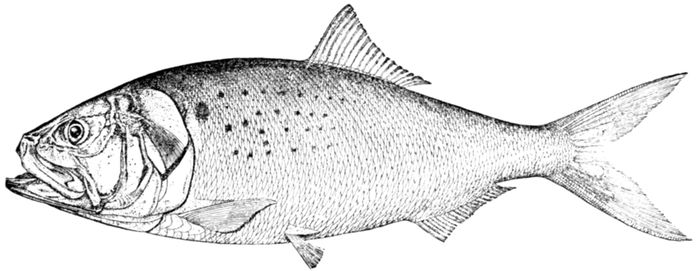
Fig. 40.—Menhaden, Brevoortia tyrannus (Latrobe). Wood's Hole, Mass.
In Opisthonema, the thread-herring, the last dorsal ray is
much produced, as in the gizzard-shad and the tarpon. The
two species known are abundant, but of little commercial importance.
Of greater value are the menhaden, or the moss-bunker,
Brevoortia tyrannus, inhabiting the sandy coasts from
New England southward. It is a coarse and bony fish, rarely
eaten when adult, although the young in oil makes acceptable
sardines. It is used chiefly for oil, the annual yield exceeding
in value that of whale-oil. The refuse is used as manure, a
purpose for which the fishes are often taken without preparation,
being carried directly to the cornfields. From its abundance
this species of inferior flesh exceeds in commercial value
almost all other American fishes excepting the cod, the herring,
and the quinnat salmon.
One of the most complete of fish biographies is that of Dr. G.
Brown Goode on the "Natural and Economic History of Menhaden."
Numerous other herring-like forms, usually with compressed
bodies, dry and bony flesh, and serrated bellies, abound in the
52tropics and are largely salted and dried by the Chinese. Among
these are Ilisha elongata of the Chinese coast. Related forms
occur in Mexico and Brazil.
The round herrings, small herrings which have no serrations
on the belly, are referred by Dr. Gill to the family of Dussumieriidæ.
These are mostly small tropical fishes used as food
or bait. One of these, the Kobini-Iwashi of Japan (Stolephorus
japonicus), with a very bright silver band on the side, has considerable
commercial importance. Very small herrings of this
type in the West Indies constitute the genus Jenkinsia, named
for Dr. Oliver P. Jenkins, the first to study seriously the fishes
of Hawaii. Other species constitute the widely distributed
genera Etrumeus and Dussumieria. Etrumeus sardina is the
round herring of the Virginia coast. Etrumeus micropus is
the Etrumei-Iwashi of Japan and Hawaii.

Fig. 41.—A fossil Herring, Diplomystus humilis Leidy. (From a specimen obtained at Green River, Wyo.) The scutes along the back lost in the specimen. Family Clupeidæ.
Fossil herring are plentiful and exist in considerable variety,
even among the Clupeidæ as at present restricted. Histiothrissa
of the Cretaceous seems to be allied to Dussumieria and
Stolephorus. Another genus, from the Cretaceous of Palestine,
Pseudoberyx (syriacus, etc.), having pectinated scales, should
perhaps constitute a distinct subfamily, but the general structure
is like that of the herring. More evidently herring-like
is Scombroclupea (macrophthalma). The genus Diplomystus,
with enlarged scales along the back, is abundantly represented
in the Eocene shales of Green River, Wyoming. Species of
similar appearance, usually but wrongly referred to the same
genus, occur on the coasts of Peru, Chile, and New South Wales.
A specimen of Diplomystus humilis from Green River is here
53figured. Numerous herring, referred to Clupea, but belonging
rather to Pomolobus, or other non-Arctic genera, have been
described from the Eocene and later rocks.
Several American fossil herring-like fishes, of the genus
Leptosomus, as Leptosomus percrassus, are found in the Cretaceous
of South Dakota.
Fossil species doubtfully referred to Dorosoma, but perhaps
allied rather to the thread-herring (Opisthonema), being herrings
with a prolonged dorsal ray, are recorded from the early Tertiary
of Europe. Among these is Opisthonema doljeanum from
Austria.
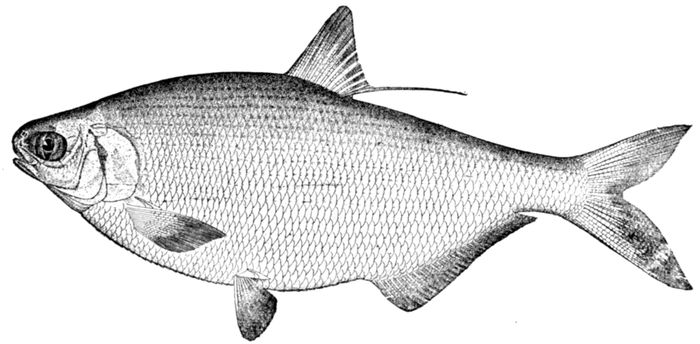
Fig. 42.—Hickory-shad, Dorosoma cepedianum (Le Sueur). Potomac River.
The Dorosomatidæ.—The gizzard-shad, Dorosomatidæ, are
closely related to the Clupeidæ, differing in the small contracted
toothless mouth and reduced maxillary. The species are deep-bodied,
shad-like fishes of the rivers and estuaries of eastern
America and eastern Asia. They feed on mud, and the stomach
is thickened and muscular like that of a fowl. As the stomach
has the size and form of a hickory-nut, the common American
species is often called hickory-shad. The gizzard-shad are all
very poor food-fish, bony and little valued, the flesh full of
small bones. The belly is always serrated. In three of the
four genera of Dorosomatidæ the last dorsal ray is much produced
and whip-like. The long and slender gill-rakers serve as strainers
for the mud in which these fishes find their vegetable and animal
food. Dorosoma cepedianum, the common hickory-shad or
54gizzard-shad, is found in brackish river-mouths and ponds from
Long Island to Texas, and throughout the Mississippi Valley
in all the large rivers. Through the canals it has entered Lake
Michigan. The Konoshiro, Clupanodon thrissa, is equally common
in China and Japan.
The Engraulididæ.—The anchovies (Engraulididæ) are dwarf
herrings with the snout projecting beyond the very wide mouth.
They are small in size and weak in muscle, found in all warm
seas, and making a large part of the food of the larger fish.
The genus Engraulis includes the anchovy of Europe, Engraulis
encrasicholus, with similar species in California, Chile, Japan,
and Australia. In this genus the vertebræ are numerous, the
bones feeble, and the flesh tender and oily. The species of
Engraulis are preserved in oil, often with spices, or are made
into fish-paste, which is valued as a relish. The genus Anchovia
replaces Engraulis in the tropics. The vertebræ are fewer, the
bones firm and stiff, and the flesh generally dry. Except as
food for larger fish, these have little value, although existing
in immense schools. Most of the species have a bright silvery
band along the side. The most familiar of the very numerous
species is the silver anchovy, Anchovia browni, which abounds
in sandy bays from Cape Cod to Brazil. Several other genera
occur farther southward, as well as in Asia, but Engraulis only
is found in Europe. Fossil anchovies called Engraulis are
recorded from the Tertiary of Europe.

Fig. 43.—A Silver Anchovy, Anchovia perthecata (Goode & Bean). Tampa.
55
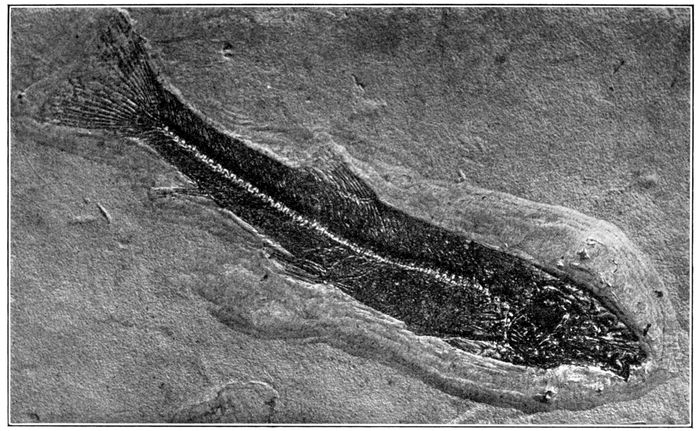
Fig. 44.—Notogoneus osculus Cope. Green River Eocene. Family Gonorhynchidæ.
56Gonorhynchidæ.—To the Isospondyli belongs the small primitive
family of Gonorhynchidæ, elongate fishes with small mouth,
feeble teeth, no air-bladder, small scales of peculiar structure
covering the head, weak dentition, the dorsal fin small, and
posterior without spines. The mesocoracoid is present as in
ordinary Isospondyli. Gonorhynchus abbreviatus occurs in
Japan, and Gonorhynchus gonorhynchus is found in Australia and
about the Cape of Good Hope. Numerous fossil species occur.
Charitosomus lineolatus and other species are found in the Cretaceous
of Mount Lebanon and elsewhere. Species without
teeth from the Oligocene of Europe and America are referred
to the genus Notogoneus. Notogoneus osculus occurs in the
Eocene fresh-water deposits at Green River, Wyoming. It
bears a very strong resemblance in form to an ordinary sucker
(Catostomus), for which reason it was once described by the
name of Protocatostomus. The living Gonorhynchidæ are all
strictly marine.
In the small family of Cromeriidæ the head and body are naked.
The Osteoglossidæ.—Still less closely related to the herring
is the family of Osteoglossidæ, huge pike-like fishes of the tropical
rivers, armed with hard bony scales formed of pieces like mosaic.
The largest of all fresh-water fishes is Arapaima gigas of the
Amazon region, which reaches a length of fifteen feet and a
weight of 400 pounds. It has naturally considerable commercial
importance, as have species of Osteoglossum, coarse river-fishes
which occur in Brazil, Egypt, and the East Indies.
Heterotis nilotica is a large fish of the Nile. In some or all
of these the air-bladder is cellular or lung-like, like that of a
Ganoid.
Allied to the Osteoglossidæ is Phareodus (Dapedoglossus),
a group of large shad-like fossil fishes, with large scales of
peculiar mosaic texture and with a bony casque on the head,
found in fresh-water deposits of the Green River Eocene. In
the perfect specimens of Phareodus (or Dapedoglossus) testis the
first ray of the pectoral is much enlarged and serrated on its
inner edge, a character which may separate these fishes as a
family from the true Osteoglossidæ. It does not, however,
appear in Cope's figures, none of his specimens having the
pectorals perfect. In these fishes the teeth are very strong
and sharp, the scales are very large and thin, looking like the
scales of a parrot-fish, the long dorsal is opposite to the anal
and similar to it, and the caudal is truncate. The end of the
vertebral column is turned upward.
57Other species are Phareodus acutus, known from the jaws;
P. encaustus is known from a mass of thick scales with reticulate
or mosaic-like surface, much as in Osteoglossum, and
P. æquipennis from a small example, perhaps immature.
Phareodus testis is frequently found well preserved in the shales
at Fossil Station, to the northwestward of Green River.
Whether all these species possess the peculiar structure of the
scales, and whether all belong to one genus, is uncertain.
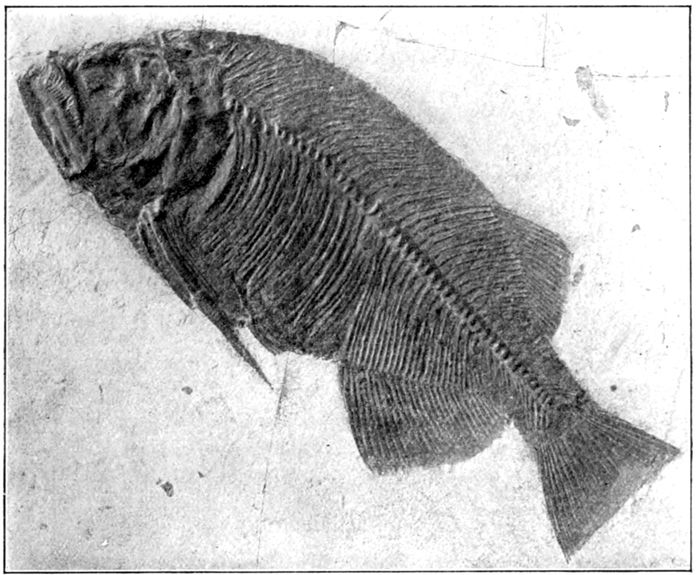
Fig. 45.—Phareodus testis (Cope). From a specimen 20 inches long collected at Fossil, Wyo., in the Museum of the Univ. of Wyoming. (Photograph by Prof. Wilbur C. Knight.)
In Eocene shales of England occurs Brychætus muelleri, a
species closely related to Phareodus, but the scales smaller and
without the characteristic reticulate or mosaic structure seen
in Phareodus encaustus.
58

Fig. 46.—Deposits of Green River Shales, bearing Phareodus, at Fossil, Wyoming. (Photograph by Wilbur C. Knight.)
59

Fig. 47.—A day's catch of Fossil fishes, Phareodus, Diplomystus, etc. Green River Eocene Shales, Fossil, Wyoming. (Photograph by Prof. Wilbur C. Knight.)
60The Pantodontidæ.—The bony casque of Osteoglossum is
found again in the Pantodontidæ, consisting of one species,
Pantodon buchholzi, a small fish of the brooks of West Africa.
As in the Osteoglossidæ and in the Siluridæ, the subopercle is
wanting in Pantodon.

Fig. 48.—Alepocephalus agassizii Goode & Bean. Gulf Stream.
The Alepocephalidæ are deep-sea herring-like fishes very
soft in texture and black in color, taken in the oceanic abysses.
Some species may be found in almost all seas below the depth
of half a mile. Alepocephalus rostratus of the Mediterranean
has been long known, but most of the other genera, Talismania,
Mitchillina, Conocara, etc., are of very recent discovery,
having been brought to the surface by the deep-sea dredging
of the Challenger, the Albatross, the Blake, the Travailleur,
the Talisman, the Investigator, the Hirondelle, and the Violante.
61
CHAPTER IV
SALMONIDÆ
The Salmon Family.—The series or suborder Salmonoidea,
or allies of the salmon and trout, are characterized as a
whole by the presence of the adipose fin, a structure
also retained in Characins and catfishes, which have no
evident affinity with the trout, and in the lantern-fishes, lizard-fishes,
and trout-perches, in which the affinity is very remote.
Probably these groups all have a common descent from some
primitive fish having an adipose fin, or at least a fleshy fold on
the back.
Of all the families of fishes, the one most interesting from
almost every point of view is that of the Salmonidæ, the salmon
family. As now restricted, it is not one of the largest families,
as it comprises less than a hundred species; but in beauty,
activity, gaminess, quality as food, and even in size of individuals,
different members of the group stand easily with the
first among fishes. The following are the chief external characteristics
which are common to the members of the family:
Body oblong or moderately elongate, covered with cycloid, in
scales of varying size. Head naked. Mouth terminal or somewhat
inferior, varying considerably among the different species,
those having the mouth largest usually having also the strongest
teeth. Maxillary provided with a supplemental bone, and
forming the lateral margin of the upper jaw. Pseudobranchiæ
present. Gill-rakers varying with the species. Opercula complete.
No barbels. Dorsal fin of moderate length, placed
near the middle of the length of the body. Adipose fin well
developed. Caudal fin forked. Anal fin moderate or rather
long. Ventral fins nearly median in position. Pectoral fins
inserted low. Lateral line present. Outline of belly rounded.
Vertebræ in large number, usually about sixty.
62The stomach in all the Salmonidæ is siphonal, and at the
pylorus are many (15 to 200) comparatively large pyloric cœca.
The air-bladder is large. The eggs are usually much larger
than in fishes generally, and the ovaries are without special
duct, the ova falling into the cavity of the abdomen before
exclusion. The large size of the eggs, their lack of adhesiveness,
and the readiness with which they may be impregnated,
render the Salmonidæ peculiarly adapted for artificial culture.
The Salmonidæ are peculiar to the north temperate and
Arctic regions, and within this range they are almost equally
abundant wherever suitable waters occur. Some of the species,
especially the larger ones, are marine and anadromous, living
and growing in the sea, and ascending fresh waters to spawn.
Still others live in running brooks, entering lakes or the sea
when occasion serves, but not habitually doing so. Still others
are lake fishes, approaching the shore or entering brooks in
the spawning season, at other times retiring to waters of considerable
depth. Some of them are active, voracious, and
gamy, while others are comparatively defenseless and will not
take the hook. They are divisible into ten easily recognized
genera: Coregonus, Argyrosomus, Brachymystax, Stenodus, Oncorhynchus,
Salmo, Hucho, Cristivomer, Salvelinus, and Plecoglossus.
Fragments of fossil trout, very imperfectly known, are recorded
chiefly from Pleistocene deposits of Idaho, under the
name of Rhabdofario lacustris. We have also received from
Dr. John C. Merriam, from ferruginous sands of the same region,
several fragments of jaws of salmon, in the hook-nosed condition,
with enlarged teeth, showing that the present salmon-runs have
been in operation for many thousands of years. Most other
fragments hitherto referred to Salmonidæ belong to some other
kind of fish.
Coregonus, the Whitefish.—The genus Coregonus, which includes
the various species known in America as lake whitefish,
is distinguishable in general by the small size of its mouth, the
weakness of its teeth, and the large size of its scales. The teeth,
especially, are either reduced to slight asperities, or else are
altogether wanting. The species reach a length of one to three
feet. With scarcely an exception they inhabit clear lakes,
63and rarely enter streams except to spawn. In far northern
regions they often descend to the sea; but in the latitude of the
United States this is never possible for them, as they are unable
to endure warm or impure water. They seldom take the hook,
and rarely feed on other fishes. Numerous local varieties characterize
the lakes of Scandinavia, Scotland, and Arctic Asia
and America. Largest and most desirable of all these as a
food-fish is the common whitefish of the Great Lakes (Coregonus
clupeiformis), with its allies or variants in the Mackenzie and
Yukon.
The species of Coregonus differ from each other in the form
and size of the mouth, in the form of the body, and in the development
of the gill-rakers.
Coregonus oxyrhynchus—the Schnäbel of Holland, Germany,
and Scandinavia—has the mouth very small, the sharp snout
projecting far beyond it. No species similar to this is found
in America.
The Rocky Mountain whitefish (Coregonus williamsoni) has
also a small mouth and projecting snout, but the latter is blunter
and much shorter than in C. oxyrhynchus. This is a small
species abounding everywhere in the clear lakes and streams of
the Rocky Mountains and the Sierra Nevada, from Colorado to
Vancouver Island. It is a handsome fish and excellent as food.
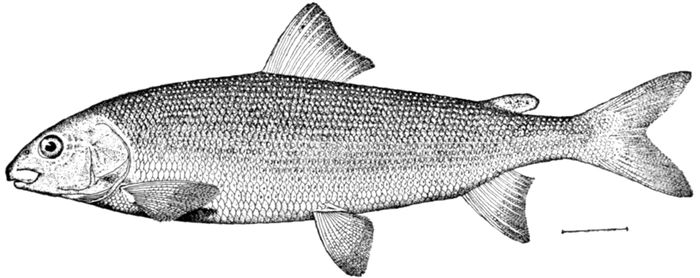
Fig. 49.—Rocky Mountain Whitefish, Coregonus williamsoni Girard.
Closely allied to Coregonus williamsoni is the pilot-fish,
shad-waiter, roundfish, or Menomonee whitefish (Coregonus
quadrilateralis). This species is found in the Great Lakes, the
Adirondack region, the lakes of New Hampshire, and thence
64northwestward to the Yukon, abounding in cold deep waters, its
range apparently nowhere coinciding with that of Coregonus
williamsoni.
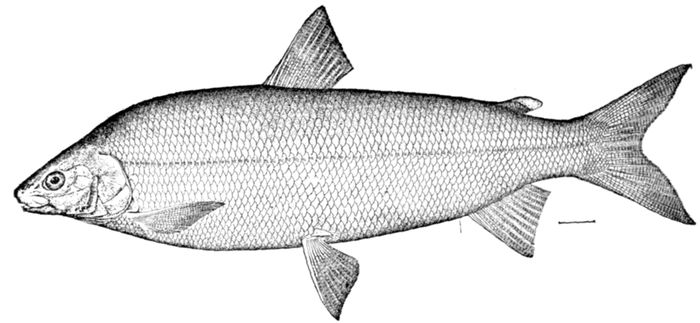
Fig. 50.—Whitefish, Coregonus clupeiformis Mitchill. Ecorse, Mich.
The common whitefish (Coregonus clupeiformis) is the largest
in size of the species of Coregonus, and is unquestionably the
finest as an article of food. It varies considerably in appearance
with age and condition, but in general it is proportionately
much deeper than any of the other small-mouthed Coregoni.
The adult fishes develop a considerable fleshy hump at the
shoulders, which causes the head, which is very small, to appear
disproportionately so. The whitefish spawns in November
and December, on rocky shoals in the Great Lakes. Its food
was ascertained by Dr. P. R. Hoy to consist chiefly of deep-water
crustaceans, with a few mollusks, and larvæ of water
insects. "The whitefish," writes Mr. James W. Milner, "has
been known since the time of the earliest explorers as preeminently
a fine-flavored fish. In fact there are few table-fishes
its equal. To be appreciated in its fullest excellence it
should be taken fresh from the lake and broiled. Father Marquette,
Charlevoix, Sir John Richardson—explorers who for
months at a time had to depend upon the whitefish for their
staple article of food—bore testimony to the fact that they never
lost their relish for it, and deemed it a special excellence that
the appetite never became cloyed with it." The range of the
whitefish extends from the lakes of New York and New England
northward to the Arctic Circle. The "Otsego bass" of Otsego
65Lake in New York, celebrated by De Witt Clinton, is a local
form of the ordinary whitefish.
Allied to the American whitefish, but smaller in size, is the
Lavaret, Weissfisch, Adelfisch, or Weissfelchen (Coregonus
lavaretus), of the mountain lakes of Switzerland, Germany, and
Sweden. Coregonus kennicotti, the muksun, and Coregonus nelsoni,
the humpback whitefish, are found in northern Alaska and in the
Yukon. Several other related species occur in northern Europe
and Siberia.
Another American species is the Sault whitefish, Lake Whiting
or Musquaw River whitefish (Coregonus labradoricus). Its
teeth are stronger, especially on the tongue, than in any of our
other species, and its body is slenderer than that of the whitefish.
It is found in the upper Great Lakes, in the Adirondack region,
in Lake Winnipeseogee, and in the lakes of Maine and New
Brunswick. It is said to rise to the fly in the Canadian lakes.
This species runs up the St. Mary's River, from Lake Huron to
Lake Superior, in July and August. Great numbers are snared
or speared by the Indians at this season at the Sault Ste. Marie.
In the breeding season the scales are sometimes thickened
or covered with small warts, as in the male Cyprinidæ.
Argyrosomus, the Lake Herring.—In the genus Argyrosomus
the mouth is larger, the premaxillary not set vertical, but extending
forward on its lower edge, and the body is more elongate
and more evenly elliptical. The species are more active and
predaceous than those of Coregonus and are, on the whole, inferior
as food.
The smallest and handsomest of the American whitefish
is the cisco of Lake Michigan (Argyrosomus hoyi). It is a
slender fish, rarely exceeding ten inches in length, and its scales
have the brilliant silvery luster of the mooneye and the ladyfish.
The lake herring, or cisco (Argyrosomus artedi), is, next to
the whitefish, the most important of the American species. It
is more elongate than the others, and has a comparatively large
mouth, with projecting under-jaw. It is correspondingly more
voracious, and often takes the hook. During the spawning
season of the whitefish the lake herring feeds on the ova of the
latter, thereby doing a great amount of mischief. As food
66this species is fair, but much inferior to the whitefish. Its
geographical distribution is essentially the same, but to a greater
degree it frequents shoal waters. In the small lakes around
Lake Michigan, in Indiana and Wisconsin (Tippecanoe, Geneva,
Oconomowoc, etc.), the cisco has long been established; and
in these waters its habits have undergone some change, as has
also its external appearance. It has been recorded as a distinct
species, Argyrosomus sisco, and its excellence as a game-fish has
been long appreciated by the angler. These lake ciscoes remain
for most of the year in the depths of the lake, coming to the
surface only in search of certain insects, and to shallow water
only in the spawning season. This periodical disappearance
of the cisco has led to much foolish discussion as to the probability
of their returning by an underground passage to Lake
Michigan during the periods of their absence. One author, confounding
"cisco" with "siscowet," has assumed that this underground
passage leads to Lake Superior, and that the cisco is
identical with the fat lake trout which bears the latter name.
The name "lake herring" alludes to the superficial resemblance
which this species possesses to the marine herring, a fish of quite
a different family.
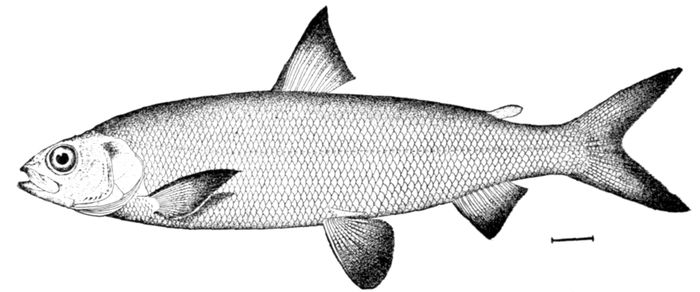
Fig. 51.—Bluefin Cisco, Argyrosomus nigripinnis Gill. Sheboygan.
Closely allied to the lake herring is the bluefin of Lake Michigan
and of certain lakes in New York (Argyrosomus nigripinnis),
a fine large species inhabiting deep waters, and recognizable
by the blue-black color of its lower fins. In the lakes of central
New York are found two other species, the so-called lake smelt
(Argyrosomus osmeriformis) and the long-jaw (Argyrosomus
67prognathus). Argyrosomus lucidus is abundant in Great Bear
Lake. In Alaska and Siberia are still other species of the cisco
type (Argyrosomus laurettæ, A. pusillus, A. alascanus); and in
Europe very similar species are the Scotch vendace (Argyrosomus
vandesius) and the Scandinavian Lok-Sild (lake herring), as
well as others less perfectly known.
The Tullibee, or "mongrel whitefish" (Argyrosomus tullibee),
has a deep body, like the shad, with the large mouth of the
ciscoes. It is found in the Great Lake region and northward,
and very little is known of its habits. A similar species (Argyrosomus
cyprinoides) is recorded from Siberia—a region which
is peculiarly suited for the growth of the Coregoni, but in which
the species have never received much study.
Brachymystax and Stenodus, the Inconnus.—Another little-known
form, intermediate between the whitefish and the salmon,
is Brachymystax lenock, a large fish of the mountain streams of
Siberia. Only the skins brought home by Pallas a century ago
are yet known. According to Pallas, it sometimes reaches a
weight of eighty pounds.
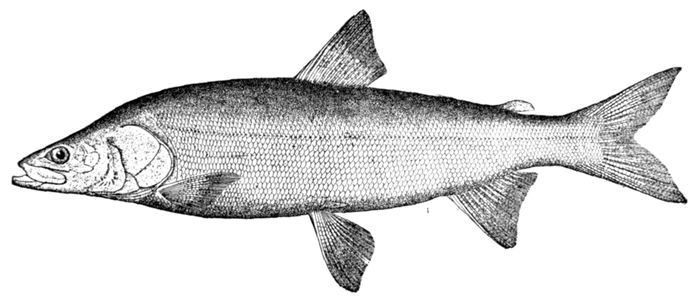
Fig. 52.—Inconnu, Stenodus mackenziei (Richardson). Nulato, Alaska.
Still another genus, intermediate between the whitefish and
the salmon, is Stenodus, distinguished by its elongate body,
feeble teeth, and projecting lower jaw. The Inconnu, or Mackenzie
River salmon, known on the Yukon as "charr" (Stenodus
mackenziei), belongs to this genus. It reaches a weight of twenty
pounds or more, and in the far north is a food-fish of good
quality. It runs in the Yukon as far as White Horse Rapids.
Not much is recorded of its habits, and few specimens exist in
68museums. A species of Stenodus called Stenodus leucichthys
inhabits the Volga, Obi, Lena, and other northern rivers; but
as yet little is definitely known of the species.
Oncorhynchus, the Quinnat Salmon.—The genus Oncorhynchus
contains the salmon of the Pacific. They are in fact,
as well as in name, the king salmon. The genus is closely
related to Salmo, with which it agrees in general as to the
structure of its vomer, and from which it differs in the increased
number of anal rays, branchiostegals, pyloric cœca, and gill-rakers.
The character most convenient for distinguishing
Oncorhynchus, young or old, from all the species of Salmo, is
the number of developed rays in the anal fin. These in Oncorhynchus
are thirteen to twenty, in Salmo nine to twelve.
The species of Oncorhynchus have long been known as anadromous
salmon, confined to the North Pacific. The species were
first made known nearly one hundred and fifty years ago by that
most exact of early observers, Steller, who, almost simultaneously
with Krascheninnikov, another early investigator, described and
distinguished them with perfect accuracy under their Russian
vernacular names. These Russian names were, in 1792, adopted
by Walbaum as specific names in giving to these animals a
scientific nomenclature. Five species of Oncorhynchus are well
known on both shores of the North Pacific, besides one other
in Japan. These have been greatly misunderstood by early
observers on account of the extraordinary changes due to differences
in surroundings, in sex, and in age, and in conditions connected
with the process of reproduction.
There are five species of salmon (Oncorhynchus) in the waters
of the North Pacific, all found on both sides, besides one other
which is known only from the waters of Japan. These species
may be called: (1) the quinnat, or king-salmon, (2) the blue-back
salmon, or redfish, (3) the silver salmon, (4) the dog-salmon,
(5) the humpback salmon, and (6) the masu; or (1)
Oncorhynchus tschawytscha, (2) Oncorhynchus nerka, (3) Oncorhynchus
milktschitsch, (4) Oncorhynchus keta, (5) Oncorhynchus
gorbuscha, (6) Oncorhynchus masou. All these species save the
last are now known to occur in the waters of Kamchatka, as
well as in those of Alaska and Oregon. These species, in all
their varied conditions, may usually be distinguished by the
69characters given below. Other differences of form, color, and
appearance are absolutely valueless for distinction, unless specimens
of the same age, sex, and condition are compared.
The quinnat salmon (Oncorhynchus tschawytscha),[7] called
quinnat, tyee, chinook, or king-salmon, has an average weight
of 22 pounds, but individuals weighing 70 to 100 pounds are
occasionally taken. It has about 16 anal rays, 15 to 19 branchiostegals,
23 (9 + 14) gill-rakers on the anterior gill-arch, and
140 to 185 pyloric cœca. The scales are comparatively large,
there being from 130 to 155 in a longitudinal series. In the
spring the body is silvery, the back, dorsal fin, and caudal fin
having more or less of round black spots, and the sides of the
head having a peculiar tin-colored metallic luster. In the fall
the color is often black or dirty red, and the species can then
be distinguished from the dog-salmon by its larger size and by
its technical characters. The flesh is rich and salmon-red,
becoming suddenly pale as the spawning season draws near.

Fig. 53.—Quinnat Salmon (female), Oncorhynchus tschawytscha (Walbaum). Columbia River.
70
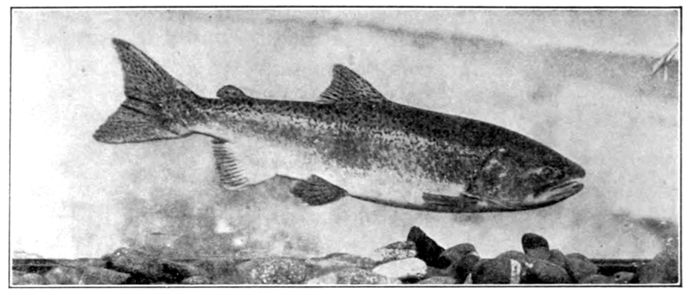
Fig. 54.—King-salmon grilse, Oncorhynchus tschawytscha (Walbaum). (Photograph by Cloudsley Rutter.)

Fig. 55.—Male Red Salmon in September, Oncorhynchus nerka (Walbaum). Payette Lake, Idaho.
The blue-back salmon (Oncorhynchus nerka),[8] also called
red salmon, sukkegh, or sockeye, usually weighs from 5 to 8
pounds. It has about 14 developed anal rays, 14 branchiostegals,
and 75 to 95 pyloric cœca. The gill-rakers are more numerous
than in any other salmon, the number being usually about
39 (16 + 23). The scales are larger, there being 130 to 140 in
the lateral line. In the spring the form is plumply rounded,
and the color is a clear bright blue above, silvery below, and
everywhere immaculate. Young fishes often show a few round
black spots, which disappear when they enter the sea. Fall
specimens in the lakes are bright crimson in color, the head clear
olive-green, and they become in a high degree hook-nosed and
slab-sided, and bear little resemblance to the spring run. Young
spawning male grilse follow the changes which take place in the
adult, although often not more than half a pound in weight.
These little fishes often appear in mountain lakes, but whether
they are landlocked or have come up from the sea is still unsettled.
71These dwarf forms, called kokos by the Indians and
benimasu in Japan, form the subspecies Oncorhynchus nerka
kennerlyi. The flesh in this species is firmer than that of any
other and very red, of good flavor, though drier and less rich
than the king-salmon.
The silver salmon, or coho (Oncorhynchus milktschitsch, or
kisutch), reaches a weight of 5 to 8 pounds. It has 13 developed
rays in the anal, 13 branchiostegals, 23 (10 + 13) gill-rakers,
and 45 to 80 pyloric cœca. There are about 127 scales in the
lateral line. The scales are thin and all except those of the
lateral line readily fall off. This feature distinguishes the species
readily from the red salmon. In color it is silvery in spring,
greenish above, and with a few faint black spots on the upper
parts only. In the fall the males are mostly of a dirty red.
The flesh in this species is of excellent flavor, but pale in color,
and hence less valued than that of the quinnat and the red
salmon.
The dog-salmon, calico salmon, or chum, called saké in
Japan (Oncorhynchus keta), reaches an average weight of about
7 to 10 pounds. It has about 14 anal rays, 14 branchiostegals,
24 (9 + 15) gill-rakers, and 140 to 185 pyloric cœca. There are
about 150 scales in the lateral line. In spring it is dirty
silvery, immaculate, or sprinkled with small black specks, the
fins dusky, the sides with faint traces of gridiron-like bars. In
the fall the male is brick-red or blackish, and its jaws are greatly
distorted. The pale flesh is well flavored when fresh, but pale
and mushy in texture and muddy in taste when canned. It is
said to take salt well, and great numbers of salt dog-salmon are
consumed in Japan.
The humpback salmon, or pink salmon (Oncorhynchus gorbuscha),
is the smallest of the American species, weighing from
3 to 5 pounds. It has usually 15 anal rays, 12 branchiostegals,
28 (13 + 15) gill-rakers, and about 180 pyloric cœca. Its scales
are much smaller than in any other salmon, there being 180
to 240 in the lateral line. In color it is bluish above, silvery
below, the posterior and upper parts with many round black
spots, the caudal fin always having a few large black spots
oblong in form. The males in fall are dirty red, and are more
extravagantly distorted than in any other of the Salmonidæ.
72The flesh is softer than in the other species; it is pale in color,
and, while of fair flavor when fresh, is distinctly inferior when
canned.
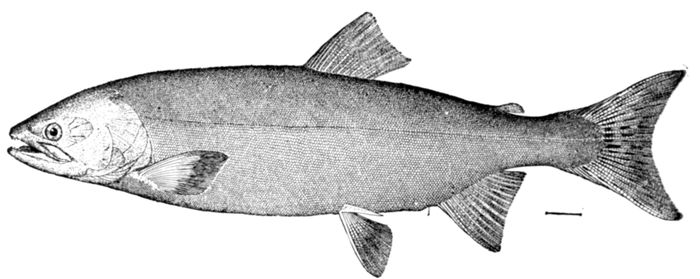
Fig. 56.—Humpback Salmon (female), Oncorhynchus gorbuscha (Walbaum). Cook's Inlet.
The masu, or yezomasu (Oncorhynchus masou), is very similar
to the humpback, the scales a little larger, the caudal without
black spots, the back usually immaculate. It is one of the smaller
salmon, and is fairly abundant in the streams of Hokkaido,
the island formerly known as Yezo.

Fig 57.—Masu (female), Oncorhynchus masou (Brevoort). Aomori, Japan.
Of these species the blue-back or red salmon predominates
in Frazer River and in most of the small rivers of Alaska, including
all those which flow from lakes. The greatest salmon rivers
of the world are the Nushegak and Karluk in Alaska, with the
Columbia River, Frazer River, and Sacramento River farther
south. The red and the silver salmon predominate in Puget
Sound, the quinnat in the Columbia and the Sacramento, and
the silver salmon in most of the smaller streams along the coast.
All the species occur, however, from the Columbia northward;
73but the blue-back is not found in the Sacramento. Only the
quinnat and the dog-salmon have been noticed south of San
Francisco. In Japan keta is by far the most abundant species of
salmon. It is known as saké, and largely salted and sold in the
markets. Nerka is known in Japan only as landlocked in Lake Akan
in northern Hokkaido. Milktschitsch is generally common, and
with masou is known as masu, or small salmon, as distinguished
from the large salmon, or saké. Tschawytscha and gorbuscha are
unknown in Japan. Masou has not been found elsewhere.
The quinnat and blue-back salmon, the "noble salmon,"
habitually "run" in the spring, the others in the fall. The
usual order of running in the rivers is as follows: tschawytscha,
nerka, milktschitsch, gorbuscha, keta. Those which run first go
farthest. In the Yukon the quinnat runs as far as Caribou
Crossing and Lake Bennett, 2250 miles. The red salmon runs
to "Forty-Mile," which is nearly 1800 miles. Both ascend to
the head of the Columbia, Fraser, Nass, Skeena, Stikeen, and
Taku rivers. The quinnat runs practically only in the streams
of large size, fed with melting snows; the red salmon only in
streams which pass through lakes. It spawns only in small
streams at the head of a lake. The other species spawn in
almost any fresh water and only close to the sea.
The economic value of the spring-running salmon is far
greater than that of the other species, because they can be captured
in numbers when at their best, while the others are usually
taken only after deterioration.
The habits of the salmon in the ocean are not easily studied.
Quinnat and silver salmon of all sizes are taken with the seine
at almost any season in Puget Sound and among the islands
of Alaska. This would indicate that these species do not go
far from the shore. The silver salmon certainly does not.
The quinnat pursues the schools of herring. It takes the
hook freely in Monterey Bay, both near the shore and at a
distance of six to eight miles out. We have reason to believe
that these two species do not necessarily seek great depths,
but probably remain not very far from the mouth of the rivers
in which they were spawned. The blue-back or red salmon certainly
seeks deeper water, as it is seldom or never taken with the
seine along shore, and it is known to enter the Strait of Fuca in
74July, just before the running season, therefore coming in from
the open sea. The great majority of the quinnat salmon, and
probably all the blue-back salmon, enter the rivers in the spring.
The run of the quinnat begins generally at the last of March;
it lasts, with various modifications and interruptions, until
the actual spawning season in November, the greatest run being
in early June in Alaska, in July in the Columbia. The run
begins earliest in the northernmost rivers, and in the longest
streams, the time of running and the proportionate amount
in each of the subordinate runs varying with each different
river. In general the runs are slack in the summer and increase
with the first high water of autumn. By the last of August
only straggling blue-backs can be found in the lower course of
any stream; but both in the Columbia and in the Sacramento
the quinnat runs in considerable numbers at least till October.
In the Sacramento the run is greatest in the fall, and more run
in the summer than in spring. In the Sacramento and the
smaller rivers southward there is a winter run, beginning in
December. The spring quinnat salmon ascends only those
rivers which are fed by the melting snows from the mountains
and which have sufficient volume to send their waters well out
to sea. Those salmon which run in the spring are chiefly adults
(supposed to be at least three years old). Their milt and spawn
are no more developed than at the same time in others of
the same species which have not yet entered the rivers. It
would appear that the contact with cold fresh water, when
in the ocean, in some way causes them to run towards it, and
to run before there is any special influence to that end exerted
by the development of the organs of generation. High water
on any of these rivers in the spring is always followed by an
increased run of salmon. The salmon-canners think—and this
is probably true—that salmon which would not have run till
later are brought up by the contact with the cold water. The
cause of this effect of cold fresh water is not understood. We
may call it an instinct of the salmon, which is another way of
expressing our ignorance. In general it seems to be true that
in those rivers and during those years when the spring run is
greatest the fall run is least to be depended on.
The blue-back salmon runs chiefly in July and early August,
75beginning in late June in Chilcoot River, where some were
found actually spawning July 15; beginning after the middle
of July in Frazer River.
As the season advances, smaller and younger salmon of these
species (quinnat and blue-back) enter the rivers to spawn, and
in the fall these young specimens are very numerous. We have
thus far failed to notice any gradations in size or appearance
of these young fish by which their ages could be ascertained.
It is, however, probable that some of both sexes reproduce at
the age of one year. In Frazer River, in the fall, quinnat male
grilse of every size, from eight inches upwards, were running,
the milt fully developed, but usually not showing the hooked
jaws and dark colors of the older males. Females less than
eighteen inches in length were not seen. All of either sex, large
and small, then in the river had the ovaries or milt developed.
Little blue-backs of every size, down to six inches, are also
found in the upper Columbia in the fall, with their organs of
generation fully developed. Nineteen-twentieths of these young
fish are males, and some of them have the hooked jaws and red
color of the old males. Apparently all these young fishes, like
the old ones, die after spawning.
The average weight of the adult quinnat in the Columbia,
in the spring, is twenty-two pounds; in the Sacramento, about
sixteen. Individuals weighing from forty to sixty pounds are
frequently found in both rivers, and some as high as eighty or
even one hundred pounds are recorded, especially in Alaska,
where the species tends to run larger. It is questionable whether
these large fishes are those which, of the same age, have grown
more rapidly; those which are older, but have for some reason
failed to spawn; or those which have survived one or more
spawning seasons. All these origins may be possible in individual
cases. There is, however, no positive evidence that any salmon
of the Pacific survives the spawning season.
Those fish which enter the rivers in the spring continue their
ascent till death or the spawning season overtakes them. Doubtless
not one of them ever returns to the ocean, and a large proportion
fail to spawn. They are known to ascend the Sacramento
to its extreme head-waters, about four hundred miles.
In the Columbia they ascend as far as the Bitter Root and Sawtooth
76mountains of Idaho, and their extreme limit is not known.
This is a distance of nearly a thousand miles. In the Yukon
a few ascend to Caribou Crossing and Lake Bennett, 2250 miles.
At these great distances, when the fish have reached the spawning
grounds, besides the usual changes of the breeding season
their bodies are covered with bruises, on which patches of white
fungus (Saprolegnia) develop. The fins become mutilated,
their eyes are often injured or destroyed, parasitic worms gather
in their gills, they become extremely emaciated, their flesh
becomes white from the loss of oil; and as soon as the spawning
act is accomplished, and sometimes before, all of them die.
The ascent of the Cascades and the Dalles of the Columbia
causes the injury or death of a great many salmon.
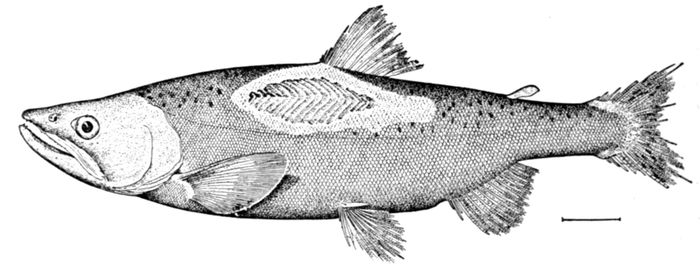
Fig. 58.—Red Salmon (mutilated dwarf male, after spawning), Oncorhynchus nerka (Walbaum). Alturas Lake, Idaho.
When the salmon enter the river they refuse to take bait,
and their stomachs are always found empty and contracted.
In the rivers they do not feed; and when they reach the spawning
grounds their stomachs, pyloric cœca and all, are said to
be no larger than one's finger. They will sometimes take the
fly, or a hook baited with salmon-roe, in the clear waters of the
upper tributaries, but this is apparently solely out of annoyance,
snapping at the meddling line. Only the quinnat and blue-back
(there called redfish) have been found at any great distance
from the sea, and these (as adult fishes) only in late summer
and fall.
77
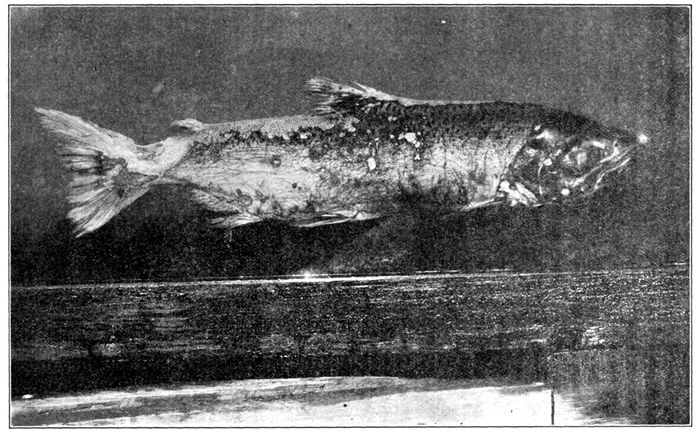
Fig. 59.—Young Male Quinnat Salmon, Oncorhynchus tschawytscha, dying after spawning. Sacramento River. (Photograph by Cloudsley Rutter.)
78The spawning season is probably about the same for all the
species. It varies for each of the different rivers, and for different
parts of the same river. It doubtless extends from July to
December, and takes place usually as soon as the temperature
of the water falls to 54°. The manner of spawning is probably
similar for all the species. In the quinnat the fishes pair off;
the male, with tail and snout, excavates a broad, shallow "nest"
in the gravelly bed of the stream, in rapid water, at a depth
of one to four feet and the female deposits her eggs in it.
They then float down the stream tail foremost, the only
fashion in which salmon descend to the sea. As already
stated, in the head-waters of the large streams, unquestionably,
all die; it is the belief of the writer that none ever survive.
The young hatch in sixty days, and most of them return to
the ocean during the high water of the spring. They enter the
river as adults at the age of about four years.
The salmon of all kinds in the spring are silvery, spotted
or not according to the species, and with the mouth about equally
symmetrical in both sexes. As the spawning season approaches
the female loses her silvery color, becomes more slimy, the
scales on the back partly sink into the skin, and the flesh changes
from salmon-red and becomes variously paler, from the loss of
oil; the degree of paleness varying much with individuals and
with inhabitants of different rivers. In the Sacramento the
flesh of the quinnat, in either spring or fall, is rarely pale. In
the Columbia a few with pale flesh are sometimes taken in
spring, and an increasing number from July on. In Frazer
River the fall run of the quinnat is nearly worthless for canning
purposes, because so many are "white-meated." In the spring
very few are "white-meated"; but the number increases towards
fall, when there is every variation, some having red streaks
running through them, others being red toward the head and
pale toward the tail. The red and pale ones cannot be distinguished
externally, and the color is dependent on neither
age nor sex. There is said to be no difference in the taste, but
there is little market for canned salmon not of the conventional
orange-color.
79

Fig. 60.—Quinnat Salmon, Oncorhynchus tschawytscha (Walbaum). Monterey Bay. (Photograph by C. Rutter.)
As the season advances the difference between the males
and females becomes more and more marked, and keeps pace
with the development of the milt, as is shown by dissection.
The males have (1) the premaxillaries and the tip of the lower
jaw more and more prolonged, both of the jaws becoming finally
strongly and often extravagantly hooked, so that either they
shut by the side of each other like shears, or else the mouth
cannot be closed. (2) The front teeth become very long and
canine-like, their growth proceeding very rapidly, until they
are often half an inch long. (3) The teeth on the vomer and
tongue often disappear. (4) The body grows more compressed
and deeper at the shoulders, so that a very distinct hump is
formed; this is more developed in the humpback salmon, but
is found in all. (5) The scales disappear, especially on the
back, by the growth of spongy skin. (6) The color changes
from silvery to various shades of black and red, or blotchy,
according to the species. The blue-back turns rosy-red, the
head bright olive; the dog-salmon a dull red with blackish bars,
and the quinnat generally blackish. The distorted males are
commonly considered worthless, rejected by the canners and
salmon-salters, but preserved by the Indians. These changes
are due solely to influences connected with the growth of the
reproductive organs. They are not in any way due to the
action of fresh water. They take place at about the same time
in the adult males of all species, whether in the ocean or in the
rivers. At the time of the spring runs all are symmetrical.
In the fall all males, of whatever species, are more or less distorted.
Among the dog-salmon, which run only in the fall,
the males are hook-jawed and red-blotched when they first
enter the Strait of Fuca from the outside. The humpback,
taken in salt water about Seattle, have the same peculiarities.
The male is slab-sided, hook-billed, and distorted, and is rejected
80by the canners. No hook-jawed females of any species
have been seen.
On first entering a stream the salmon swim about as if playing.
They always head towards the current, and this appearance
of playing may be simply due to facing the moving tide.
Afterwards they enter the deepest parts of the stream and
swim straight up, with few interruptions. Their rate of travel
at Sacramento is estimated by Stone at about two miles per
day; on the Columbia at about three miles per day. Those
which enter the Columbia in the spring and ascend to the mountain
rivers of Idaho must go at a more rapid rate than this, as
they must make an average of nearly four miles per day.
As already stated, the economic value of any species depends
in great part on its being a "spring salmon." It is not generally
possible to capture salmon of any species in large numbers
until they have entered the estuaries or rivers, and the
spring salmon enter the large rivers long before the growth
of the organs of reproduction has reduced the richness of the
flesh. The fall salmon cannot be taken in quantity until their
flesh has deteriorated; hence the dog-salmon is practically
almost worthless except to the Indians, and the humpback
salmon was regarded as little better until comparatively recently,
when it has been placed on the market in cans as "Pink
Salmon." It sells for about half the price of the red salmon
and one-third that of the quinnat. The red salmon is smaller
than the quinnat but, outside the Sacramento and the Columbia,
far more abundant, and at present it exceeds the quinnat in
economic value. The pack of red salmon in Alaska amounted
in 1902 to over two million cases (48 pounds each), worth wholesale
about $4.00 per case, or about $8,000,000. The other species
in Alaska yield about one million cases, the total wholesale value
of the pack for 1902 being $8,667,673. The aggregate value of
the quinnat is considerably less, but either species far exceed in
value all other fishes of the Pacific taken together. The silver
salmon is found in the inland waters of Puget Sound for a
considerable time before the fall rains cause the fall runs, and
it may be taken in large numbers with seines before the season
for entering the rivers.
The fall salmon of all species, but especially of the dog-salmon,
81ascend streams but a short distance before spawning.
They seem to be in great anxiety to find fresh water, and many
of them work their way up little brooks only a few inches deep,
where they perish miserably, floundering about on the stones.
Every stream of whatever kind, from San Francisco to Bering
Sea, has more or less of these fall salmon.
The absence of the fine spring salmon in the streams of
Japan is the cause of the relative unimportance of the river
fisheries of the northern island of Japan, Hokkaido. It is
not likely that either the quinnat or the red salmon can be
introduced into these rivers, as they have no snow-fed streams,
and few of them pass through lakes which are not shut off by
waterfalls. For the same reason neither of these species is
likely to become naturalized in the waters of our Eastern States,
though it is worth while to bring the red salmon to the St.
Lawrence. The silver salmon, already abundant in Japan,
should thrive in the rivers and bays of New England.
The Parent-stream Theory.—It has been generally accepted
as unquestioned by packers and fishermen that salmon return
to spawn to the very stream in which they were hatched. As
early as 1880 the present writer placed on record his opinion
that this theory was unsound. In a general way most salmon
return to the parent stream, because when in the sea the parent
stream is the one most easily reached. The channels and runways
which directed their course to the sea may influence their
return trip in the same fashion. When the salmon is mature
it seeks fresh water. Other things being equal, about the same
number will run each year in the same channel. With all this,
we find some curious facts. Certain streams will have a run
of exceptionally large or exceptionally small red salmon. The
time of the run bears some relation to the length of the stream:
those who have farthest to go start earliest. The time of running
bears also a relation to the temperature of the spawning grounds:
where the waters cool off earliest the fish run soonest.
The supposed evidence in favor of the parent-stream theory
may be considered under three heads:[9] (1) Distinctive runs in
82various streams. (2) Return of marked salmon. (3) Introduction
of salmon into new streams followed by their return.
Under the first head it is often asserted of fishermen that
they can distinguish the salmon of different streams. Thus the
Lynn Canal red salmon are larger than those in most waters,
and it is claimed that those of Chilcoot Inlet are larger than those
of the sister stream at Chilcat. The red salmon of Red Fish Bay
on Baranof Island are said to be much smaller than usual, and
those of the neighboring Necker Bay are not more than one-third
the ordinary size. Those of a small rapid stream near
Nass River are more wiry than those of the neighboring large
stream. The same claim is made for the different streams of
Puget Sound, each one having its characteristic run. In all
this there is some truth and perhaps some exaggeration. I have
noticed that the Chilcoot fish seem deeper in body than those
at Chilcat. The red salmon becomes compressed before spawning,
and the Chilcoot fishes having a short run spawn earlier
than the Chilcat fishes, which have many miles to go, the water
being perhaps warmer at the mouth of the river. Perhaps
some localities may meet the nervous reactions of small fishes,
while not attracting the large ones. Mr. H. S. Davis well
observes that "until a constant difference has been demonstrated
by a careful examination of large numbers of fish from
each stream taken at the same time, but little weight can be
attached to arguments of this nature."
It is doubtless true as a general proposition that nearly
all salmon return to the region in which they were spawned.
Most of them apparently never go far away from the mouth of
the stream or the bay into which it flows. It is true that salmon
are occasionally taken well out at sea, and it is certain that the
red salmon runs of Puget Sound come from outside the Straits
of Fuca. There is, however, evidence that they rarely go so
far as that. When seeking shore they do not reach the original
channels.
In 1880 the writer, studying the salmon of the Columbia,
used the following words, which he has not had occasion to
change:
"It is the prevailing impression that the salmon have some
special instinct which leads them to return to spawn in the
83same spawning grounds where they were originally hatched.
We fail to find any evidence of this in the case of the Pacific-coast
salmon, and we do not believe it to be true. It seems
more probable that the young salmon hatched in any river
mostly remain in the ocean within a radius of twenty, thirty,
or forty miles of its mouth. These, in their movements about
in the ocean, may come into contact with the cold waters of
their parent rivers, or perhaps of any other river, at a considerable
distance from the shore. In the case of the quinnat and
the blue-back their 'instinct' seems to lead them to ascend
these fresh waters, and in a majority of cases these waters will
be those in which the fishes in question were originally spawned.
Later in the season the growth of the reproductive organs leads
them to approach the shore and search for fresh waters, and
still the chances are that they may find the original stream.
But undoubtedly many fall salmon ascend, or try to ascend,
streams in which no salmon was ever hatched. In little brooks
about Puget Sound, where the water is not three inches deep,
are often found dead or dying salmon which have entered them
for the purpose of spawning. It is said of the Russian River
and other California rivers that their mouths, in the time of
low water in summer, generally become entirely closed by sand-bars,
and that the salmon, in their eagerness to ascend them,
frequently fling themselves entirely out of water on the beach.
But this does not prove that the salmon are guided by a marvelous
geographical instinct which leads them to their parent
river in spite of the fact that the river cannot be found. The
waters of Russian River soak through these sand-bars, and
the salmon instinct, we think, leads them merely to search for
fresh waters. This matter is much in need of further investigation;
at present, however, we find no reason to believe that
the salmon enter the Rogue River simply because they were
spawned there, or that a salmon hatched in the Clackamas
River is more likely, on that account, to return to the Clackamas
than to go up the Cowlitz or the Des Chûtes."
Attempts have been made to settle this question by marking
the fry. But this is a very difficult matter indeed. Almost
the only structure which can be safely mutilated is the adipose
fin, and this is often nipped off by sticklebacks and other meddling
84fish. The following experiments have been tried, according
to Mr. Davis:
In March, 1896, 5000 king-salmon fry were marked by
cutting off the adipose fin, then set free in the Clackamas River.
Nearly 400 of these marked fish are said to have been taken in
the Columbia in 1898, and a few more in 1899. In addition a
few were taken in 1898, 1899, and 1900 in the Sacramento
River, but in much less numbers than in the Columbia. In the
Columbia most were taken at the mouth of the river, where
nearly all of the fishing was done, but a few were in the original
stream, the Clackamas. It is stated that the fry thus set free
in the Clackamas came from eggs obtained in the Sacramento—a
matter which has, however, no bearing on the present case.
In the Kalama hatchery on the Columbia River, Washington,
2000 fry of the quinnat or king-salmon were marked in
1899 by a V-shaped notch in the caudal fin. Numerous fishes
thus marked were taken in the lower Columbia in 1901 and 1902.
A few were taken at the Kalama hatchery, but some also at the
hatcheries on Wind River and Clackamas River. At the
hatchery on Chehalis River six or seven were taken, the stream
not being a tributary of the Columbia, but flowing into Shoalwater
Bay. None were noticed in the Sacramento. The evidence
shows that the most who are hatched in a large stream
tend to return to it, and that in general most salmon return
to the parent region. There is no evidence that a salmon hatched
in one branch of a river tends to return there rather than to
any other. Experiments of Messrs. Rutter and Spaulding in
marking adult fish at Karluk would indicate that they roam
rather widely about the island before spawning. An adult
spawning fish, marked and set free at Karluk, was taken soon
after on the opposite side of the island of Kadiak.
The introduction of salmon into new streams may throw
some light on this question. In 1897 and 1898 3,000,000 young
quinnat-salmon fry were set free in Papermill Creek near Olema,
California. This is a small stream flowing into the head of
Tomales Bay, and it had never previously had a run of salmon.
In 1900, and especially in 1901, large quinnat salmon appeared
in considerable numbers in this stream. One specimen weighing
about sixteen pounds was sent to the present writer for
85identification. These fishes certainly returned to the parent
stream, although this stream was one not at all fitted for their
purpose.
But this may be accounted for by the topography of the
bay. Tomales Bay is a long and narrow channel, about twenty
miles long and from one to five in width, isolated from other
rivers and with but one tributary stream. Probably the
salmon had not wandered far from it; some may not have left it
at all. In any event, a large number certainly came back to the
same place.
That the salmon rarely go far away is fairly attested. Schools
of king-salmon play in Monterey Bay, and chase the herring
about in the channels of southeastern Alaska. A few years
since Captain J. F. Moser, in charge of the Albatross, set gill-nets
for salmon at various places in the sea off the Oregon and
Washington coast, catching none except in the bays.
Mr. Davis gives an account of the liberation of salmon in
Chinook River, which flows into the Columbia at Baker's Bay:
"It is a small, sluggish stream and has never been frequented
by Chinook salmon, although considerable numbers
of silver and dog salmon enter it late in the fall. A few years
ago the State established a hatchery on this stream, and since
1898 between 1,000,000 and 2,000,000 Chinook fry have been
turned out here annually. The fish are taken from the pound-nets
in Baker's Bay, towed into the river in crates and then
liberated above the dike, which prevents their return to the
Columbia. When ripe the salmon ascend to the hatchery,
some two or three miles farther up the river, where they are
spawned.
"The superintendent of the hatchery, Mr. Hansen, informs
me that in 1902, during November and December, quite a
number of Chinook salmon ascended the Chinook River. About
150 salmon of both sexes were taken in a trap located in the river
about four miles from its mouth. At first thought it would
appear that these were probably fish which, when fry, had been
liberated in the river, but unfortunately there is no proof
that this was the case. According to Mr. Hansen, the season
of 1902 was remarkable in that the salmon ran inshore in large
schools, a thing which they had not done before for years. It
86is possible that the fish, being forced in close to the shore, came
in contact with the current from the Chinook River, which,
since the stream is small and sluggish, would not be felt far from
shore. Once brought under the influence of the current from
the river, the salmon would naturally ascend that stream,
whether they had been hatched there or not."
The general conclusion, apparently warranted by the facts
at hand, is that salmon, for the most part, do not go to a great
distance from the stream in which they are hatched, that most
of them return to the streams of the same region, a majority to
the parent stream, but that there is no evidence that they choose
the parental spawning grounds in preference to any other, and
none that they will prefer an undesirable stream to a favorable
one for the reason that they happen to have been hatched in
the former.
The Jadgeska Hatchery.—Mr. John C. Callbreath of Wrangel,
Alaska, has long conducted a very interesting but very costly
experiment in this line. About 1890 he established himself
in a small stream called Jadgeska on the west coast of Etolin
Island, tributary to McHenry Inlet, Clarence Straits. This
stream led from a lake, and in it a few thousand red salmon
spawned, besides multitudes of silver salmon, dog-salmon, and
humpback salmon. Making a dam across the stream, he helped
the red salmon over it, destroying all of the inferior kinds which
entered the stream. He also established a hatchery for the
red salmon, turning loose many fry yearly for ten or twelve
years. This was done in the expectation that all the salmon
hatched would return to Jadgeska in about four years. By
destroying all individuals of other species attempting to run, it
was expected that they would become extinct so far as the
stream is concerned.
The result of this experiment has been disappointment.
After twelve years or more there has been no increase of red
salmon in the stream, and no decrease of humpbacks and other
humbler forms of salmon. Mr. Callbreath draws the conclusion
that salmon run at a much greater age than has been
supposed—at the age of sixteen years, perhaps, instead of four.
A far more probable conclusion is that his salmon have joined
other bands bound for more suitable streams. It is indeed
87claimed that since the establishment of Callbreath's hatchery
on Etolin Island there has been a notable increase of the salmon
run in the various streams of Prince of Wales Island on the
opposite side of Clarence Straits. But this statement, while
largely current among the cannerymen, and not improbable,
needs verification.
We shall await with much interest the return of the thousands
of salmon hatched in 1902 in Naha stream. We may
venture the prophecy that while a large percentage will return
to Loring, many others will enter Yes Bay, Karta Bay, Moira
Sound, and other red salmon waters along the line of their
return from Dixon Entrance or the open sea.
Salmon-packing.—The canning of salmon, that is, the packing
of the flesh in tin cases, hermetically sealed after boiling, was
begun on the Columbia River by the Hume Brothers in 1866.
In 1874 canneries were established on the Sacramento River,
in 1876 on Puget Sound and on Frazer River, and in 1878 in
Alaska. At first only the quinnat salmon was packed; afterwards
the red salmon and the silver salmon, and finally the
humpback, known commercially as pink salmon. In most
cases the flesh is packed in one-pound tins, forty-eight of
which constitute a case. The wholesale price in 1903 was for
quinnat salmon $5.60 per case, red salmon $4.00, silver salmon
$2.60, humpback salmon $2.00, and dog-salmon $1.50. It costs
in round numbers $2.00 to pack a case of salmon. The very
low price of the inferior brands is due to overproduction.
The output of the salmon fishery of the Pacific coast amounts
to about fifteen millions per year, that of Alaska constituting
seven to nine millions of this amount. Of this amount the red
salmon constitutes somewhat more than half, the quinnat about
four-fifths of the rest.
In almost all salmon streams there is evidence of considerable
diminution in numbers, although the evidence is sometimes
conflicting. In Alaska this has been due to the vicious custom,
now done away with, of barricading the streams so that the
fish could not reach the spawning grounds, but might be all
taken with the net. In the Columbia River the reduction
in numbers is mainly due to stationary traps and salmon-wheels,
which leave the fish relatively little chance to reach the
88spawning grounds. In years of high water doubtless many
salmon run in the spring which might otherwise have waited
until fall.
The key to the situation lies in the artificial propagation of
salmon by means of well-ordered hatcheries. By this means the
fisheries of the Sacramento have been fully restored, those of the
Columbia approximately maintained, and a hopeful beginning
has been made in hatching red salmon in Alaska.
89
CHAPTER V
SALMONIDÆ—(Continued)

Salmo, the Trout and Atlantic Salmon.—The genus
Salmo comprises those forms of salmon which have
been longest known. As in related genera, the mouth
is large, and the jaws, palatines, and tongue are armed with
strong teeth. The vomer is flat, its shaft not depressed below
the level of the head or chevron (the anterior end). There are
a few teeth on the chevron; and behind it, on the shaft, there
is either a double series of teeth or an irregular single series.
These teeth in the true salmon disappear with age, but in
the others (the black-spotted trout) they are persistent. The
scales are silvery and moderate or small in size. There are 9
to 11 developed rays in the anal fin. The caudal fin is truncate,
or variously concave or forked. There are usually 40 to 70
pyloric cœca, 11 or 12 branchiostegals, and about 20 (8 + 12)
gill-rakers. The sexual peculiarities are in general less marked
than in Oncorhynchus; they are also greater in the anadromous
species than in those which inhabit fresh waters. In general
the male in the breeding season is redder, its jaws are prolonged,
the front teeth enlarged, the lower jaw turned upwards at the
end, and the upper jaw notched, or sometimes even perforated,
by the tip of the lower. All the species of Salmo (like those of
Oncorhynchus) are more or less spotted with black. Unlike
the species of Oncorhynchus, the species of Salmo feed more or less
while in fresh water, and the individuals for the most part
do not die after spawning, although many old males do thus
perish.
The Atlantic Salmon.—The large species of Salmo, called
salmon by English-speaking people (Salmo salar, Salmo trutta),
are marine and anadromous, taking the place in the North
Atlantic occupied in the North Pacific by the species of Oncorhynchus.
90Two others more or less similar in character occur
in Japan and Kamchatka. The others (trout), forming the
subgenus Salar, are non-migratory, or at least irregularly
or imperfectly anadromous. The true or black-spotted trout
abound in all streams of northern Europe, northern Asia, and
in that part of North America which lies west of the Mississippi
Valley. The black-spotted trout are entirely wanting in eastern
America—a remarkable fact in geographical distribution, perhaps
explained only on the hypothesis of the comparatively recent
and Eurasiatic origin of the group, which, we may suppose, has
not yet had opportunity to extend its range across the plains,
unsuitable for salmon life, which separate the upper Missouri
from the Great Lakes.
The salmon (Salmo salar) is the only black-spotted salmonoid
found in American waters tributary to the Atlantic.
In Europe, where other species similarly colored occur, the
species may be best distinguished by the fact that the teeth
on the shaft of the vomer mostly disappear with age. From
the only other species positively known, the salmon trout (Salmo
trutta), which shares this character, the true salmon may be
distinguished by the presence of but eleven scales between the
adipose fin and the lateral line, while Salmo trutta has about
fourteen. The scales are comparatively large in the salmon,
there being about one hundred and twenty-five in the lateral
line. The caudal fin, which is forked in the young, becomes,
as in other species of salmon, more or less truncate with age.
The pyloric cœca are fifty to sixty in number.
The color in adults, according to Dr. Day, is "superiorly of
a steel-blue, becoming lighter on the sides and beneath. Mostly
a few rounded or X-shaped spots scattered above the lateral
line and upper half of the head, being more numerous in the
female than in the male. Dorsal, caudal, and pectoral fins
dusky; ventrals and anal white, the former grayish internally.
Prior to entering fresh waters these fish are of a brilliant steel-blue
along the back, which becomes changed to a muddy tinge
when they enter rivers. After these fish have passed into the
fresh waters for the purpose of breeding, numerous orange
streaks appear in the cheeks of the male, and also spots or
even marks of the same, and likewise of a red color, on the body.
91It is now termed a 'redfish.' The female, however, is dark
in color and known as 'blackfish.' 'Smolts' (young river fish)
are bluish along the upper half of the body, silvery along the
sides, due to a layer of silvery scales being formed over the
trout-like colors, while they have darker fins than the yearling
'ping,' but similar bands and spots, which can be seen (as
in the parr) if the example be held in certain positions of light.
'Parr' (fishes of the year) have two or three black spots only
on the opercle, and black spots and also orange ones along the
upper half of the body, and no dark ones below the lateral line,
although there may be orange ones which can be seen in its
course. Along the side of the body are a series (12 to 15) of
transverse bluish bands, wider than the ground color and crossing
the lateral line, while in the upper half of the body the darker
color of the back forms an arch over each of these bands, a
row of spots along the middle of the rayed dorsal fin, and the
adipose orange-tipped."
The dusky cross-shades found in the young salmon or parr
are characteristic of the young of salmon, trout, grayling, and
nearly all the other Salmonidæ.
The salmon of the Atlantic is, as already stated, an anadromous
fish, spending most of its life in the sea, and entering the
streams in the fall for the purpose of reproduction. The time
of running varies much in different streams and also in different
countries. As with the Pacific species, these salmon are not
easily discouraged in their progress, leaping cascades and other
obstructions, or, if these prove impassable, dying after repeated
fruitless attempts.
The young salmon, known as the "parr," is hatched in the
spring. It usually remains about two years in the rivers, descending
at about the third spring to the sea, when it is known
as "smolt." In the sea it grows much more rapidly, and becomes
more silvery in color, and is known as "grilse." The grilse
rapidly develop into the adult salmon; and some of them, as in
the case with the grilse of the Pacific salmon, are capable of
reproduction.
After spawning the salmon are very lean and unwholesome
in appearance, as in fact. They are then known as "kelts."
The Atlantic salmon does not ascend rivers to any such distances
92as those traversed by the quinnat and the blue-back.
Its kelts, therefore, for the most part survive the act of spawning.
Dr. Day thinks that they feed upon the young salmon in the
rivers, and that, therefore, the destruction of the kelts might
increase the supply of salmon.
As a food-fish the Atlantic salmon is very similar to the
quinnat salmon, neither better nor worse, so far as I can see,
when equally fresh. In both the flesh is rich and finely flavored;
but the appetite of man becomes cloyed with salmon-flesh sooner
than with that of whitefish, smelt, or charr. In size the Atlantic
salmon does not fall far short of the quinnat. The average
weight of the adult is probably less than fifteen pounds. The
largest one of which I find a record was taken on the coast of
Ireland in 1881, and weighed 84¾ pounds.
The salmon is found in Europe between the latitude of 45°
and 75°. In the United States it is now rarely seen south of
Cape Cod, although formerly the Hudson and numerous other
rivers were salmon-streams. Overfishing, obstructions in the
rivers, and pollution of the water by manufactories and by
city sewage are agencies against which the salmon cannot cope.
Seven species of salmon (as distinguished from trout) are
recognized by Dr. Günther in Europe, and three in America.
The landlocked forms, abundant in Norway, Sweden, and
Maine, which cannot, or at least do not, descend to the sea, are
regarded by him as distinct species. "The question," observes
Dr Günther, "whether any of the migratory species can be
retained by artificial means in fresh water, and finally accommodate
themselves to a permanent sojourn therein, must be
negatived for the present." On this point I think that the
balance of evidence leads to a different conclusion. These
fresh-water forms (Sebago and Ouananiche) are actually salmon
which have become landlocked. I have compared numerous
specimens of the common landlocked salmon (Salmo salar
sebago) of the lakes of Maine and New Brunswick with landlocked
salmon (Salmo salar hardini) from the lakes of Sweden,
and with numerous migratory salmon, both from America and
Europe. I see no reason for regarding them as specifically
distinct. The differences are very trivial in kind, and not
greater than would be expected on the hypothesis of recent
93adaptation of the salmon to lake life. We have therefore on
our Atlantic coast but one species of salmon, Salmo salar. The
landlocked form of the lakes of Maine is Salmo salar sebago.
The Ouananiche of Lake St. John and the Saguenay, beloved of
anglers, is Salmo salar ouananiche.
The Ouananiche.—Dr. Henry Van Dyke writes thus of the
Ouananiche: "But the prince of the pool was the fighting
Ouananiche, the little salmon of St. John. Here let me chant
thy praise, thou noblest and most high-minded fish, the cleanest
feeder, the merriest liver, the loftiest leaper, and the bravest
warrior of all creatures that swim! Thy cousin, the trout, in
his purple and gold with crimson spots, wears a more splendid
armor than thy russet and silver mottled with black, but thine
is the kinglier nature.
"The old salmon of the sea who begat thee long ago in these
inland waters became a backslider, descending again to the
ocean, and grew gross and heavy with coarse feeding. But thou,
unsalted salmon of the foaming floods, not landlocked as men call
thee, but choosing of thine own free will to dwell on a loftier
level in the pure, swift current of a living stream, hath grown
in grace and risen to a better life.
"Thou art not to be measured by quantity but by quality,
and thy five pounds of pure vigor will outweigh a score of
pounds of flesh less vitalized by spirit. Thou feedest on the
flies of the air, and thy food is transformed into an aerial passion
for flight, as thou springest across the pool, vaulting toward the
sky. Thine eyes have grown large and keen by piercing through
the foam, and the feathered hook that can deceive thee must
be deftly tied and delicately cast. Thy tail and fins, by ceaseless
conflict with the rapids, have broadened and strengthened,
so that they can flash thy slender body like a living arrow up
the fall. As Launcelot among the knights, so art thou among
the fish, the plain-armored hero, the sunburnt champion of all
the water-folk."
Dr. Francis Day, who has very thoroughly studied these
fishes, takes, in his memoir on "The Fishes of Great Britain
and Ireland," and in other papers, a similar view in regard
to the European species. Omitting the species with permanent
teeth on the shaft of the vomer (subgenus Salar), he finds
94among the salmon proper only two species, Salmo salar and
Salmo trutta. The latter species, the sea-trout or salmon-trout
of England and the estuaries of northern Europe, is similar to
the salmon in many respects, but has rather smaller scales,
there being fourteen in an oblique series between the adipose
fin and the lateral line. It is not so strong a fish as the salmon,
nor does it reach so large a size. Although naturally anadromous,
like the true salmon, landlocked forms of the salmon-trout
are not uncommon. These have been usually regarded
as different species, while aberrant or intermediate individuals
are usually regarded as hybrids. The salmon-trout of Europe
have many analogies with the steelhead of the Pacific.
The present writer has examined many thousands of American
Salmonidæ, both of Oncorhynchus and Salmo. While many
variations have come to his attention, and he has been compelled
more than once to modify his views as to specific distinctions,
he has never yet seen an individual which he had
the slightest reason to regard as a "hybrid." It is certainly
illogical to conclude that every specimen which does not correspond
to our closet-formed definition of its species must therefore
be a "hybrid" with some other. There is no evidence worth
mentioning, known to me, of extensive hybridization in a state
of nature in any group of fishes. This matter is much in need
of further study; for what is true of the species in one region,
in this regard, may not be true of others. Dr. Günther observes:
"Johnson, a correspondent of Willughby, had already expressed
his belief that the different salmonoids interbreed;
and this view has since been shared by many who have observed
these fishes in nature. Hybrids between the sewin
(Salmo trutta cambricus) and the river-trout (Salmo fario) were
numerous in the Rhymney and other rivers of South Wales
before salmonoids were almost exterminated by the pollutions
allowed to pass into these streams, and so variable in their
characters that the passage from one species to the other could
be demonstrated in an almost unbroken series, which might
induce some naturalists to regard both species as identical.
Abundant evidence of a similar character has accumulated,
showing the frequent occurrence of hybrids between Salmo
fario and S. trutta.... In some rivers the conditions appear
95to be more favorable to hybridism than in others in which
hybrids are of comparatively rare occurrence. Hybrids between
the salmon and other species are very scarce everywhere."
Very similar to the European Salmo trutta is the trout of Japan
(Salmo perryi), the young called yamabe, the adult kawamasu,
or river-salmon. This species abounds everywhere in Japan,
the young being the common trout of the brooks, black-spotted
and crossed by parr-marks, the adult reaching a weight of ten
or twelve pounds in the larger rivers and descending to the sea.
In Kamchatka is another large, black-spotted, salmon-like
species properly to be called a salmon-trout. This is Salmo
mykiss, a name very wrongly applied to the cutthroat trout of
the Columbia.
The black-spotted trout, forming the subgenus Salar, differ
from Salmo salar and Salmo trutta in the greater development
of the vomerine teeth, which are persistent throughout
life, in a long double series on the shaft of the vomer. About
seven species are laboriously distinguished by Dr. Günther
in the waters of western Europe. Most of these are regarded
by Dr. Day as varieties of Salmo fario. The latter species,
the common river-trout or lake-trout of Europe, is found throughout
northern and central Europe, wherever suitable waters
occur. It is abundant, gamy, takes the hook readily, and is
excellent as food. It is more hardy than the different species
of charr, although from an æsthetic point of view it must be
regarded as inferior to all of the Salvelini. The largest river-trout
recorded by Dr. Day weighed twenty-one pounds. Such
large individuals are usually found in lakes in the north, well
stocked with smaller fishes on which trout may feed. Farther
south, where the surroundings are less favorable to trout-life,
they become mature at a length of less than a foot, and a
weight of a few ounces. These excessive variations in the size
of individuals have received too little notice from students of
Salmonidæ. Similar variations occur in all the non-migratory
species of Salmo and of Salvelinus. Numerous river-trout have
been recorded from northern Asia, but as yet nothing can be
definitely stated as to the number of species actually existing.
The Black-spotted Trout.—In North America only the region
west of the Mississippi Valley, the streams of southeastern
96Alaska, and the valley of Mackenzie River have species of
black-spotted trout. There are few of these north of Sitka in
Alaska, although black-spotted trout are occasionally taken on
Kadiak and about Bristol Bay, and none east of the Rocky
Mountain region. If we are to follow the usage of the names
"salmon" and "trout" which prevails in England, we should
say that, in America, it is only these western regions which
have any trout at all. Of the number of species (about twenty-five
in all) which have been indicated by authors, certainly not
more than about 8 to 10 can possibly be regarded as distinct
species. The other names are either useless synonyms, or else
they have been applied to local varieties which pass by degrees
into the ordinary types.
The Trout of Western America.—In the western part of America
are found more than a score of forms of trout of the genus Salmo,
all closely related and difficult to distinguish. There are representatives
in the head-waters of the Rio Grande, Arkansas, South
Platte, Missouri, and Colorado rivers; also in the Great Salt Lake
basin, throughout the Columbia basin, in all suitable waters from
southern California and Chihuahua to Sitka, and even to Bristol
Bay, similar forms again appearing in Kamchatka and Japan.
Among the various more or less tangible species that may
be recognized, three distinct series appear. These have been
termed the cutthroat-trout series (allies of Salmo clarkii), the
rainbow-trout series (allies of Salmo irideus), and the steelhead
series (allies of Salmo rivularis, a species more usually but
wrongly called Salmo gairdneri).
The steelhead, or rivularis series, is found in the coastwise
streams of California and in the streams of Oregon and Washington,
below the great Shoshone Falls of Snake River, and northward
in Alaska along the mainland as far as Skaguay. The
steelhead-trout reach a large size (10 to 20 pounds). They
spend a large part of their life in the sea. In all the true steelheads
the head is relatively very short, its length being contained
about five times in the distance from tip of snout to base of
caudal fin. The scales in the steelhead are always rather small,
about 150 in a linear series, and there is no red under the throat.
The spots on the dorsal fin are fewer in the steelhead (4 to 6
rows) than in the other American trout.
97The rainbow forms are chiefly confined to the streams of
California and Oregon. In these the scales are large (about 135
in a lengthwise series) and the head is relatively large, forming
nearly one-fourth of the length to base of caudal. These enter
the sea only when in the small coastwise streams. Usually
they have no red under the throat. The cutthroat forms are
found from Humboldt Bay northward as far as Sitka, in
the coastwise streams of northern California, Oregon, Washington,
and Alaska, and all the clear streams on both sides
of the Rocky Mountains, and in the Great Basin and the
head-waters of the Colorado. The cutthroat-trout have the
scales small, about 180, and there is always a bright dash of
orange-red on each side concealed beneath the branches of the
lower jaw. Along the western slope of the Sierra Nevada there
are also forms of trout with the general appearance of rainbow-trout
and evidently belonging to that species, but with scales
intermediate in number (in McCloud River), var. shasta, or with
scales as small as in the typical cutthroat (Kern River), var.
gilberti. In these small-scaled forms more or less red appears
below the lower jaw, and they are doubtless what they appear to
be, really intermediate between clarkii and irideus, although
certainly nearest the latter. A similar series of forms occurs in
the Columbia basin, the upper Snake being inhabited by clarkii
and the lower Snake by clarkii and rivularis, together with a
medley of forms apparently intermediate.
It seems probable that the American trout originated in
Asia, extended its range to southeast Alaska, thence southward
to the Fraser and Columbia, thence to the Yellowstone and
the Missouri via Two-Ocean Pass; from the Snake River to the
Great Basins of Utah and Nevada; from the Missouri southward
to the Platte and the Arkansas, thence from the Platte
to the Rio Grande and the Colorado, and then from Oregon
southward coastwise and along the Sierras to northern Mexico,
thence northward and coastwise, the sea-running forms passing
from stream to stream.
98
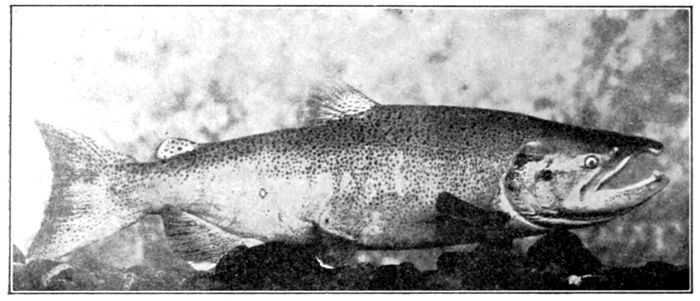
Fig. 61.—Rainbow Trout (male), Salmo irideus shasta Jordan. (Photograph by Cloudsley Rutter.)
Of the American species the rainbow trout of California
(Salmo irideus) most nearly approaches the European Salmo
fario. It has the scales comparatively large, although rather
smaller than in Salmo fario, the usual number in a longitudinal
series being about 135. The mouth is smaller than in other
American trout; the maxillary, except in old males, rarely
extending beyond the eye. The caudal fin is well forked,
becoming in very old fishes more nearly truncate. The head
is relatively large, about four times in the total length. The
size of the head forms the best distinctive character. The
color, as in all the other species, is bluish, the sides silvery in
the males, with a red lateral band, and reddish and dusky
blotches. The head, back, and upper fins are sprinkled with
round black spots, which are very variable in number, those
on the dorsal usually in about nine rows. In specimens taken
in the sea this species, like most other trout in similar conditions,
is bright silvery, and sometimes immaculate. This
species is especially characteristic of the waters of California.
It abounds in every clear brook, from the Mexican line northward
to Mount Shasta, or beyond, the species passing in the
Columbia region by degrees into the species or form known as
Salmo masoni, the Oregon rainbow trout, a small rainbow trout
common in the forest streams of Oregon, with smaller mouth and
fewer spots on the dorsal. No true rainbow trout have been
anywhere obtained to the eastward of the Cascade Range or
of the Sierra Nevada, except as artificially planted in the Truckee
River. The species varies much in size; specimens from
northern California often reach a weight of six pounds, while
in the streams above Tia Juana in Lower California the southernmost
99locality from which I have obtained trout, they seldom
exceed a length of six inches. Although not usually an anadromous
species, the rainbow trout frequently moves about in
the rivers, and it often enters the sea, large sea-run specimens
being often taken for steelheads. Several attempts have been
made to introduce it in Eastern streams, but it appears to seek
the sea when it is lost. It is apparently more hardy and
less greedy than the American charr, or brook-trout (Salvelinus
fontinalis). On the other hand, it is distinctly inferior to the
latter in beauty and in gaminess.

Fig. 62.—Rainbow Trout (female), Salmo irideus shasta Jordan. (Photograph by Cloudsley Rutter.)
Three varieties of some importance have been indicated,
Salmo irideus stonei, the Nissui trout of the Klamath, with spots
on the posterior parts only, Salmo irideus shasta of the upper
Sacramento, and the small-scaled Salmo irideus gilberti of the
Kings and Kern rivers. In the head-waters of the Kern, in a
stream called Volcano Creek or Whitney Creek, the waterfall sometimes
called Agua-Bonita shuts off the movements of the trout.
Above this fall is a dwarf form with bright golden fins, and the
scales scarcely imbricated. This is the "golden trout of Mount
Whitney," Salmo irideus agua-bonita. It will possibly be found to
change back to the original type if propagated in different waters.
In beauty of color, gracefulness of form and movement,
100sprightliness when in the water, reckless dash with which it
springs from the water to meet the descending fly ere it strikes
the surface, and the mad and repeated leaps from the water
when hooked, the rainbow trout must ever hold a very high rank.
"The gamest fish we have ever seen," writes Dr. Evermann, "was
a 16-inch rainbow taken on a fly in a small spring branch tributary
of Williamson River in southern Oregon. It was in a
broad and deep pool of exceedingly clear water. As the angler
from behind a clump of willows made the cast the trout bounded
from the water and met the fly in the air a foot or more above
the surface; missing it, he dropped upon the water, only to
turn about and strike viciously a second time at the fly just as
it touched the surface; though he again missed the fly, the
hook caught him in the lower jaw from the outside, and then
began a fight which would delight the heart of any angler. His
first effort was to reach the bottom of the pool, then, doubling
upon the line, he made three jumps from the water in quick
succession, clearing the surface in each instance from one to
four feet, and every time doing his utmost to free himself from
the hook by shaking his head as vigorously as a dog shakes a
rat. Then he would rush wildly about in the large pool, now
attempting to go down over the riffle below the pool, now
trying the opposite direction, and often striving to hide under
one or the other of the banks. It was easy to handle the fish
when the dash was made up or down stream or for the opposite
side, but when he turned about and made a rush for the protection
of the overhanging bank upon which the angler stood it
was not easy to keep the line taut. Movements such as these
were frequently repeated, and two more leaps were made. But
finally he was worn out after as honest a fight as trout ever
made."
"The rainbow takes the fly so readily that there is no reason
for resorting to grasshoppers, salmon-eggs, or other bait. It is
a fish whose gaminess will satisfy the most exacting of expert
anglers and whose readiness to take any proper line will please
the most impatient of inexperienced amateurs."
The steelhead (Salmo rivularis) is a large trout, reaching
twelve to twenty pounds in weight, found abundantly in river
estuaries and sometimes in lakes from Lynn Canal to Santa
101Barbara. The spent fish abound in the rivers in spring at the
time of the salmon-run. The species is rarely canned, but is
valued for shipment in cold storage. Its bones are much more
firm than those of the salmon—a trait unfavorable for canning
purposes. The flesh when not spent after spawning is excellent.
The steelhead does not die after spawning, as all the Pacific
salmon do.

Fig. 63.—Steelhead Trout, Salmo rivularis Ayres. Columbia River.
It is thought by some anglers that the young fish hatched
in the brooks from eggs of the steelhead remain in mountain
streams from six to thirty-six months, going down to the sea
with the high waters of spring, after which they return to spawn
as typical steelhead trout. I now regard this view as unfounded.
In my experience the rainbow and the steelhead are
always distinguishable: the steelhead abounds where the rainbow
trout is unknown; the scales in the steelhead are always
smaller (about 155) than in typical rainbow trout; finally,
the small size of the head in the steelhead is always distinctive.
The Kamloops trout, described by the writer from the upper
Columbia, seems to be a typical steelhead as found well up the
rivers away from the sea. Derived from the steelhead, but
apparently quite distinct from it, are three very noble trout,
all confined so far as yet known to Lake Crescent in northwestern
Washington. These are the crescent trout, Salmo crescentis,
the Beardslee trout, Salmo beardsleei, and the long-headed trout,
Salmo bathæcetor. The first two, discovered by Admiral L. A.
Beardslee, are trout of peculiar attractiveness and excellence.
The third is a deep-water form, never rising to the surface,
and caught only on set lines. Its origin is still uncertain, and
it may be derived from some type other than the steelhead.
102Cutthroat or Red-throated Trout.—This species has much
smaller scales than the rainbow trout or steelhead, the usual
number in a longitudinal series being 160 to 170. Its head is
longer (about four times in length to base of caudal). Its
mouth is proportionately larger, and there is always a narrow
band of small teeth on the hyoid bone at the base of the tongue.
These teeth are always wanting in Salmo irideus and rivularis
in which species the rim of the tongue only has teeth. The
color in Salmo clarkii is, as in other species, exceedingly variable.
In life there is always a deep-red blotch on the throat, between
the branches of the lower jaw and the membrane connecting
them. This is not found in other species, or is reduced to a
narrow strip or pinkish shade. It seems to be constant in
all varieties of Salmo clarkii, at all ages, thus furnishing a good
distinctive character. It is the sign manual of the Sioux Indians,
and the anglers have already accepted from this mark the name
of cutthroat-trout. The cutthroat-trout of some species is
found in every suitable river and lake in the great basin of
Utah, in the streams of Colorado, Wyoming, and Montana, on
both sides of the Rocky Mountains. It is also found throughout
Oregon, Washington, Idaho, British Columbia, the coastwise
islands of southeastern Alaska (Baranof, etc.), to Kadiak and
Bristol Bay, probably no stream or lake suitable for trout-life
being without it. In California the species seems to be comparatively
rare, and its range rarely extending south of Cape
Mendocino. Large sea-run individuals analogous to the steelheads
are sometimes found in the mouth of the Sacramento. In Washington
and Alaska this species regularly enters the sea. In Puget
Sound it is a common fish. These sea-run individuals are more
silvery and less spotted than those found in the mountain streams
and lakes. The size of Salmo clarkii is subject to much variation.
Ordinarily four to six pounds is a large size; but in certain
favored waters, as Lake Tahoe, and the fjords of southeastern
Alaska, specimens from twenty to thirty pounds are occasionally
taken.
Those species or individuals dwelling in lakes of considerable
size, where the water is of such temperature and depth as insures
an ample food-supply, will reach a large size, while those
in a restricted environment, where both the water and food are
103limited, will be small directly in proportion to these environing
restrictions. The trout of the Klamath Lakes, for example, reach
a weight of at least 17 pounds, while in Fish Lake in Idaho mature
trout do not exceed 8 to 9¼ inches in total length or one-fourth
pound in weight. In small creeks in the Sawtooth Mountains
and elsewhere they reach maturity at a length of 5 or 6 inches,
and are often spoken of as brook-trout and with the impression
that they are a species different from the larger ones found in
the lakes and larger streams. But as all sorts and gradations
between these extreme forms may be found in the intervening
and connecting waters, the differences are not even of sub-specific
significance.

Fig. 64.—Head of adult Trout-worm, Dibothrium cordiceps Leidy, a parasite of Salmo clarkii. From intestine of white pelican, Yellowstone Lake. (After Linton.)
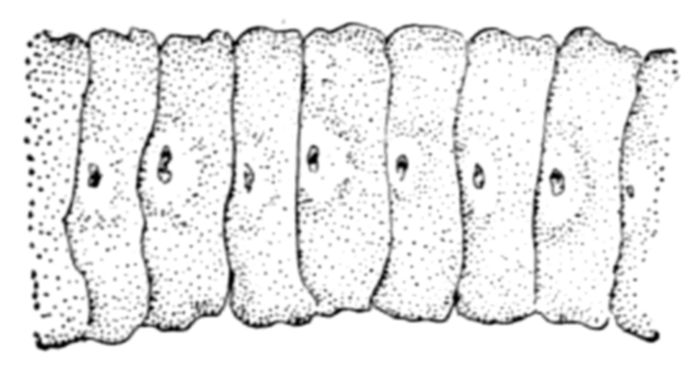
Fig. 65.—Median segments of Dibothrium cordiceps.
Dr. Evermann observes: "The various forms of cutthroat-trout
vary greatly in game qualities; even the same subspecies
in different waters, in different parts of its habitat, or at different
seasons, will vary greatly in this regard. In general, however,
it is perhaps a fair statement to say that the cutthroat-trout
are regarded by anglers as being inferior in gaminess to the
Eastern brook-trout. But while this is true, it must not by any
means be inferred that it is without game qualities, for it is
really a fish which possesses those qualities in a very high degree.
Its vigor and voraciousness are determined largely, of course,
by the character of the stream or lake in which it lives. The
individuals which dwell in cold streams about cascades and
seething rapids will show marvelous strength and will make a
fight which is rarely equaled by its Eastern cousin; while in
warmer and larger streams and lakes they may be very sluggish
and show but little fight. Yet this is by no means always true.
In the Klamath Lakes, where the trout grow very large and
104where they are often very logy, one is occasionally hooked
which tries to the utmost the skill of the angler to prevent his
tackle from being smashed and at the same time save the fish."
Of the various forms derived from Salmo clarkii some mere
varieties, some distinct species, the following are among the
most marked:
Salmo henshawi, the trout of Lake Tahoe and its tributaries
and outlet, Truckee River, found in fact also in the Humboldt
and the Carson and throughout the basin of the former glacial
lake called Lake Lahontan. This is a distinct species from
Salmo clarkii and must be regarded as the finest of all the cutthroat-trout.
It is readily known by its spotted belly, the
black spots being evenly scattered over the whole surface of
the body, above and below. This is an excellent game-fish, and
from Lake Tahoe and Pyramid Lake it is brought in large numbers
to the markets of San Francisco. In the depths of Lake
Tahoe, which is the finest mountain lake of the Sierra Nevada,
occurs a very large variety which spawns in the lake, Salmo
henshawi tahoensis. This reaches a weight of twenty-eight
pounds.

Fig. 66.—Tahoe Trout, Salmo henshawi Gill & Jordan. Lake Tahoe, California.
In the Great Basin of Utah is found a fine trout, very close
to the ordinary cutthroat of the Columbia, from which it is
derived. This is known as Salmo clarkii virginalis. In Utah
Lake it reaches a large size.
In Waha Lake in Washington, a lake without outlet, is found
a small trout with peculiar markings called Salmo clarkii bouvieri.
In the head-waters of the Platte and Arkansas rivers is the
small green-back trout, green or brown, with red throat-patch
105and large black spots. This is Salmo clarkii stomias, and it is
especially fine in St. Vrain's River and the streams of Estes Park.
In Twin Lakes, a pair of glacial lakes tributary of the Arkansas
near Leadville, is found Salmo clarkii macdonaldi, the yellow-finned
trout, a large and very handsome species living in deep
water, and with the fins golden yellow. This approaches the
Colorado trout, Salmo clarkii pleuriticus, and it may be derived
from the latter, although it occurs in the same waters as the
very different green-back trout, or Salmo clarkii stomias.

Fig. 67.—Green-back Trout, Salmo stomias Cope. Arkansas River, Leadville, Colo.

Fig. 68.—Yellow-fin Trout of Twin Lakes, Salmo macdonaldi Jordan & Evermann. Twin Lakes, Colo.
Two fine trout derived from Salmo clarkii have been lately
discovered by Dr. Daniel G. Elliot in Lake Southerland, a mountain
lake near Lake Crescent, but not connected with it, the
two separated from the sea by high waterfalls. These have
been described by Dr. Seth E. Meek as Salmo jordani, the
"spotted trout" of Lake Southerland, and Salmo declivifrons,
the "salmon-trout." These seem to be distinct forms or subspecies
produced through isolation.
106
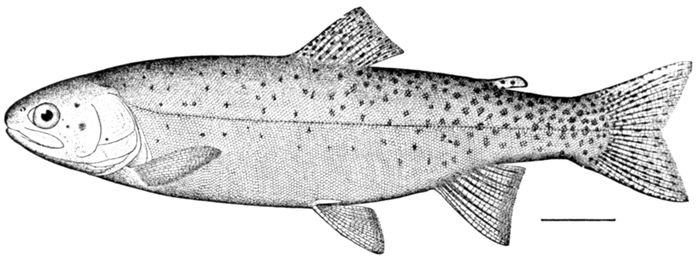
Fig. 69.—Rio Grande Trout, Salmo clarkii spilurus Cope. Del Norte, Colo.
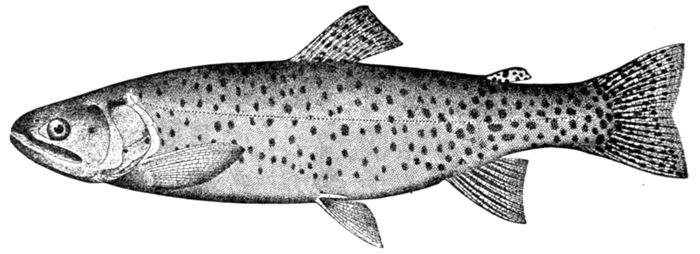
Fig. 70.—Colorado River Trout, Salmo clarkii pleuriticus Cope. Trapper's Lake, Colo.
The Rio Grande trout (Salmo clarkii spilurus) is a large and
profusely spotted trout, found in the head-waters of the Rio
Grande, the mountain streams of the Great Basin of Utah, and
as far south as the northern part of Chihuahua. Its scales are
still smaller than those of the ordinary cutthroat-trout, and the
black spots are chiefly confined to the tail. Closely related to
it is the trout of the Colorado Basin, Salmo clarkii pleuriticus,
a large and handsome trout with very small scales, much sought
by anglers in western Colorado, and abounding in all suitable
streams throughout the Colorado Basin.
Hucho, the Huchen.—The genus Hucho has been framed
for the Huchen or Rothfisch (Hucho hucho) of the Danube, a
very large trout, differing from the genus Salmo in having no
teeth on the shaft of the vomer, and from the Salvelini at least
in form and coloration. The huchen is a long and slender,
somewhat pike-like fish, with depressed snout and strong teeth.
107The color is silvery, sprinkled with small black dots. It reaches
a size little inferior to that of the salmon, and it is said to be
an excellent food-fish. In northern Japan is a similar species,
Hucho blackistoni, locally known as Ito, a large and handsome
trout with very slender body, reaching a length of 2½ feet. It
is well worthy of introduction into American and European
waters.

Fig. 71.—Ito, Hucho blackistoni (Hilgendorf). Hokkaido, Japan.
Salvelinus, the Charr.—The genus Salvelinus comprises the
finest of the Salmonidæ, from the point of view of the angler or
the artist. In England the species are known as charr or char,
in contradistinction to the black-spotted species of Salmo, which
are called trout. The former name has unfortunately been
lost in America, where the name "trout" is given indiscriminately
to both groups, and, still worse, to numerous other
fishes (Micropterus, Hexagrammos, Cynoscion, Agonostomus)
wholly unlike the Salmonidæ in all respects. It is sometimes
said that "the American brook-trout is no trout, nothing but
a charr," almost as though "charr" were a word of reproach.
Nothing higher, however, can be said of a salmonoid than that
it is a "charr." The technical character of the genus Salvelinus
lies in the form of its vomer. This is deeper than in Salmo;
and when the flesh is removed the bone is found to be somewhat
boat-shaped above, and with the shaft depressed and out of the
line of the head of the vomer. Only the head or chevron is
armed with teeth, and the shaft is covered by skin.
In color all the charrs differ from the salmon and trout.
The body in all is covered with round spots which are paler
than the ground color, and crimson or gray. The lower fins are
108usually edged with bright colors. The sexual differences are
not great. The scales, in general, are smaller than in other
Salmonidæ, and they are imbedded in the skin to such a degree
as to escape the notice of casual observers and even of most
anglers.
"One trout scale in the scales I'd lay
(If trout had scales), and 'twill outweigh
The wrong side of the balances."—Lowell.
The charrs inhabit, in general, only the clearest and coldest
of mountain streams and lakes, or bays of similar temperature.
They are not migratory, or only to a limited extent. In northern
regions they descend to the sea, where they grow much more
rapidly and assume a nearly uniform silvery-gray color. The
different species are found in all suitable waters throughout the
northern parts of both continents, except in the Rocky Mountains
and Great Basin, where only the black-spotted trout
occur. The number of species of charr is very uncertain, as,
both in America and Europe, trivial variations and individual
peculiarities have been raised to the rank of species. More
types, however, seem to be represented in America than in
Europe.
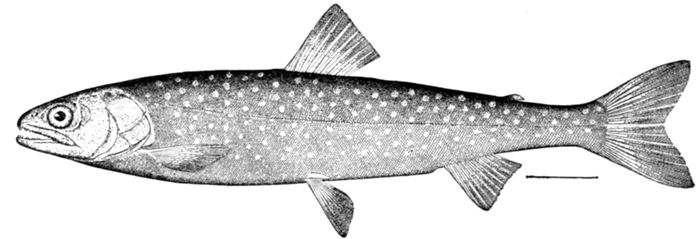
Fig. 72.—Rangeley Trout, Salvelinus oquassa (Girard). Lake Oquassa, Maine.
The only really well-authenticated species of charr in European
waters is the red charr, sälbling, or ombre chevalier (Salvelinus
alpinus). This species is found in cold, clear streams in
Switzerland, Germany, and throughout Scandinavia and the
British Islands. Compared with the American charr or brook-trout,
it is a slenderer fish, with smaller mouth, longer fins,
and smaller red spots, which are confined to the sides of the
109body. It is a "gregarious and deep-swimming fish, shy of
taking the bait and feeding largely at night-time. It appears
to require very pure and mostly deep water for its residence."
It is less tenacious of life than the trout. It reaches a weight of
from one to five pounds, probably rarely exceeding the latter
in size. The various charr described from Siberia are far too
little known to be enumerated here.
Of the American charr the one most resembling the European
species is the Rangeley Lake trout (Salvelinus oquassa). The
exquisite little fish is known in the United States only from
the Rangeley chain of lakes in western Maine. This is very
close to the Greenland charr, Salvelinus stagnalis, a beautiful
species of the far north. The Rangeley trout is much slenderer
than the common brook-trout, with much smaller head and
smaller mouth. In life it is dark blue above, and the deep-red
spots are confined to the sides of the body. The species rarely
exceeds the length of a foot in the Rangeley Lakes, but in some
other waters it reaches a much larger size. So far as is known
it keeps itself in the depths of the lake until its spawning season
approaches, in October, when it ascends the stream to spawn.

Fig. 73.—Sunapee Trout, Salvelinus aureolus Bean. Sunapee Lake, N. H.
Still other species of this type are the Sunapee trout,
Salvelinus aureolus, a beautiful charr almost identical with the
European species, found in numerous ponds and lakes of eastern
New Hampshire and neighboring parts of Maine. Mr. Garman
regards this trout as the offspring of an importation of the ombre
chevalier and not as a native species, and in this view he may
be correct. Salvelinus alipes of the far north may be the same
species. Another remarkable form is the Lac de Marbre trout
of Canada, Salvelinus marstoni of Garman.
110In Arctic regions another species, called Salvelinus naresi, is
very close to Salvelinus oquassa and may be the same.
Another beautiful little charr, allied to Salvelinus stagnalis,
is the Floeberg charr (Salvelinus arcturus). This species has
been brought from Victoria Lake and Floeberg Beach, in the
extreme northern part of Arctic America, the northernmost
point whence any salmonoid has been obtained.
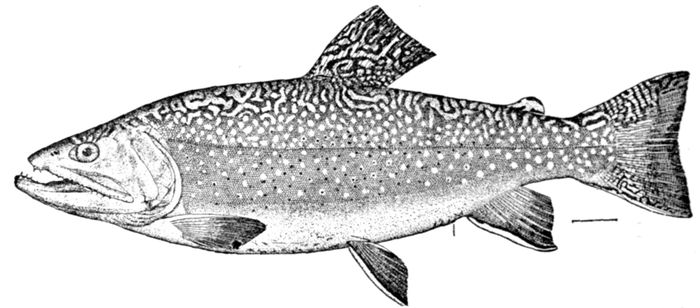
Fig. 74.—Speckled Trout (male), Salvelinus fontinalis (Mitchill). New York.
111
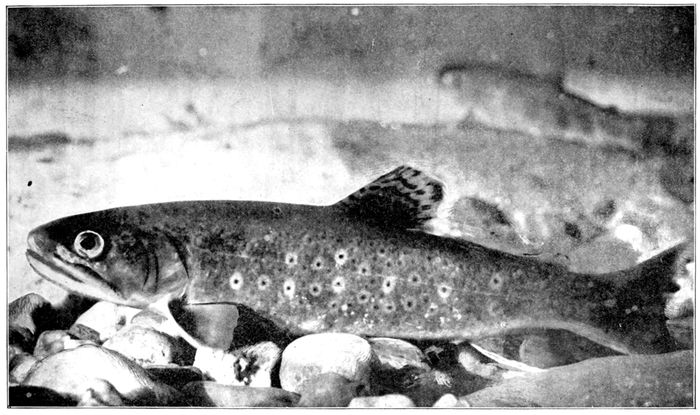
Fig. 75.—Brook Trout, Salvelinus fontinalis (Mitchill), natural size. (From life by Dr. R. W. Shufeldt.)
112The American charr, or, as it is usually called, the brook-trout
(Salvelinus fontinalis), although one of the most beautiful
of fishes, is perhaps the least graceful of all the genuine charrs.
It is technically distinguished by the somewhat heavy head and
large mouth, the maxillary bone reaching more or less beyond
the eye. There are no teeth on the hyoid bone, traces at least
of such teeth being found in nearly all other species. Its color
is somewhat different from that of the others, the red spots
being large and the black more or less mottled and barred with
darker olive. The dorsal and caudal fins are likewise barred
or mottled, while in the other species they are generally uniform
in color. The brook-trout is found only in streams east of the
Mississippi and Saskatchewan. It occurs in all suitable streams
of the Alleghany region and the Great Lake system, from the
Chattahoochee River in northern Georgia northward at least
to Labrador and Hudson Bay, the northern limits of its range
being as yet not well ascertained. It varies greatly in size,
according to its surroundings, those found in lakes being
larger than those resident in small brooks. Those found
farthest south, in the head-waters of the Chattahoochee,
Savannah, Catawba, and French Broad, rarely pass the dimensions
of fingerlings. The largest specimens are recorded from
the sea along the Canadian coast. These frequently reach a
weight of ten pounds; and from their marine and migratory
habits, they have been regarded as forming a distinct variety
(Salvelinus fontinalis immaculatus), but this form is merely
a sea-run brook-trout. The largest fresh-water specimens rarely
exceed seven pounds in weight. Some unusually large brook-trout
have been taken in the Rangeley Lakes, the largest known
to me having a reputed weight of eleven pounds. The brook-trout
is the favorite game-fish of American waters, preëminent
in wariness, in beauty, and in delicacy of flesh. It inhabits all
clear and cold waters within its range, the large lakes and the
smallest ponds, the tiniest brooks and the largest rivers; and
when it can do so without soiling its aristocratic gills on the way,
it descends to the sea and grows large and fat on the animals of
the ocean. Although a bold biter it is a wary fish, and it often
requires much skill to capture it. It can be caught, too, with
artificial or natural flies, minnows, crickets, worms, grasshoppers,
grubs, the spawn of other fish, or even the eyes or cut pieces of
other trout. It spawns in the fall, from September to late in
November. It begins to reproduce at the age of two years,
then having a length of about six inches. In spring-time the
trout delight in rapids and swiftly running water; and in the
hot months of midsummer they resort to deep, cool, and shaded
pools. Later, at the approach of the spawning season, they
gather around the mouths of cool, gravelly brooks, whither they
resort to make their beds.[10]
The trout are rapidly disappearing from our streams through
the agency of the manufacturer and the summer boarder. In
the words of an excellent angler, the late Myron W. Reed of
Denver: "This is the last generation of trout-fishers. The
children will not be able to find any. Already there are well-trodden
paths by every stream in Maine, in New York, and in
Michigan. I know of but one river in North America by the
side of which you will find no paper collar or other evidence of
civilization. It is the Nameless River. Not that trout will
113cease to be. They will be hatched by machinery and raised
in ponds, and fattened on chopped liver, and grow flabby and
lose their spots. The trout of the restaurant will not cease to
be. He is no more like the trout of the wild river than the
fat and songless reedbird is like the bobolink. Gross feeding
and easy pond-life enervate and deprave him. The trout that
the children will know only by legend is the gold-sprinkled,
living arrow of the white water; able to zigzag up the cataract;
able to loiter in the rapids; whose dainty meat is the glancing
butterfly."
The brook-trout adapts itself readily to cultivation in artificial
ponds. It has been successfully transported to Europe,
and it is already abundant in certain streams in England, in California,
and elsewhere.
In Dublin Pond, New Hampshire, is a gray variety without
red spots, called Salvelinus agassizi.
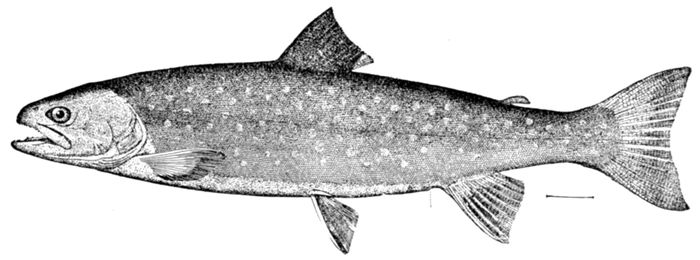
Fig. 76.—Malma Trout, or "Dolly Varden," Salvelinus malma (Walbaum). Cook Inlet, Alaska.
The "Dolly Varden" trout, or malma (Salvelinus malma), is
very similar to the brook-trout, closely resembling it in size, form,
color, and habits. It is found always to the westward of the
Rocky Mountains, in the streams of northern California, Oregon,
Washington, and British Columbia, Alaska, and Kamchatka, as
far as the Kurile Islands. It abounds in the sea in the northward,
and specimens of ten to twelve pounds weight are not
uncommon in Puget Sound and especially in Alaska. The Dolly
Varden trout is, in general, slenderer and less compressed than
the Eastern brook-trout. The red spots are found on the back
of the fish as well as on the sides, and the back and upper
fins are without the blackish marblings and blotches seen in
114Salvelinus fontinalis. In value as food, in beauty, and in gaminess
Salvelinus malma is very similar to its Eastern cousin.
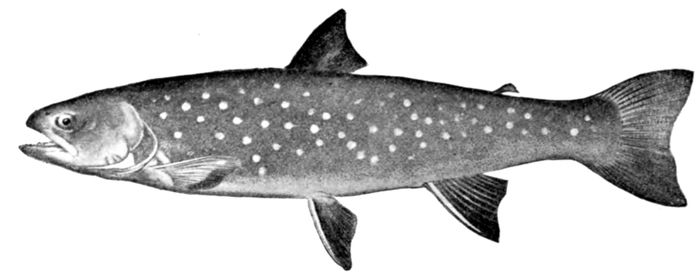
Fig. 77.—The Dolly Varden Trout, Salvelinus malma (Walbaum). Lake Pend d'Oreille, Idaho. (After Evermann.)
In Alaska the Dolly Varden, locally known as salmon-trout,
is very destructive to the eggs of the salmon, and countless
numbers are taken in the salmon-nets of Alaska and thrown away
as useless by the canners. In every coastwise stream of Alaska
the water fairly "boils" with these trout. They are, however,
not found in the Yukon. In northern Japan occurs Salvelinus
pluvius, the iwana, a species very similar to the Dolly Varden,
but not so large or so brightly colored. In the Kurile region
and Kamchatka is another large charr, Salvelinus kundscha,
with the spots large and cream-color instead of crimson.
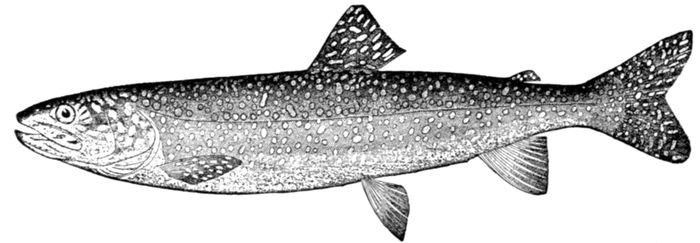
Fig. 78.—Great Lake Trout, Cristivomer namaycush (Walbaum). Lake Michigan.
Cristivomer, the Great Lake Trout.—Allied to the true charrs,
but now placed by us in a different genus, Cristivomer, is the
Great Lake trout, otherwise known as Mackinaw trout, longe,
or togue (Cristivomer namaycush). Technically this fish differs
from the true charrs in having on its vomer a raised crest behind
115the chevron and free from the shaft. This crest is armed with
strong teeth. There are also large hooked teeth on the hyoid
bone, and the teeth generally are proportionately stronger than
in most of the other species. The Great Lake trout is grayish in
color, light or dark according to its surroundings; and the body
is covered with round paler spots, which are gray instead of red.
The dorsal and caudal fins are marked with darker reticulations,
somewhat as in the brook-trout. This noble species is
found in all the larger lakes from New England and New York to
Wisconsin, Montana, the Mackenzie River, and in all the lakes
tributary to the Yukon in Alaska. We have taken examples
from Lake Bennett, Lake Tagish, Summit Lake (White Pass),
and have seen specimens from Lake La Hache in British
Columbia. It reaches a much larger size than any Salvelinus,
specimens of from fifteen to twenty pounds weight being not
uncommon, while it occasionally attains a weight of fifty to
eighty pounds. As a food-fish it ranks high, although it may be
regarded as somewhat inferior to the brook-trout or the whitefish.
Compared with other salmonoids, the Great Lake trout is a sluggish,
heavy, and ravenous fish. It has been known to eat raw potato,
liver, and corn-cobs,—refuse thrown from passing steamers.
According to Herbert, "a coarse, heavy, stiff rod, and a powerful
oiled hempen or flaxen line, on a winch, with a heavy sinker; a
cod-hook, baited with any kind of flesh, fish, or fowl,—is the most
successful, if not the most orthodox or scientific, mode of capturing
him. His great size and immense strength alone give him
value as a fish of game; but when hooked he pulls strongly and
fights hard, though he is a boring, deep fighter, and seldom if
ever leaps out of the water, like the true salmon or brook-trout."
In the depths of Lake Superior is a variety of the Great Lake
trout known as the Siscowet (Cristivomer namaycush siskawitz),
remarkable for its extraordinary fatness of flesh. The cause of
this difference lies probably in some peculiarity of food as yet
unascertained.
The Ayu, or Sweetfish.—The ayu, or sweetfish, of Japan,
Plecoglossus altivelis, resembles a small trout in form, habits,
and scaling. Its teeth are, however, totally different, being
arranged on serrated plates on the sides of the jaws, and the
tongue marked with similar folds. The ayu abounds in all
116clear streams of Japan and Formosa. It runs up from the sea
like a salmon. It reaches the length of about a foot. The
flesh is very fine and delicate, scarcely surpassed by that of
any other fish whatsoever. It should be introduced into clear
short streams throughout the temperate zones.
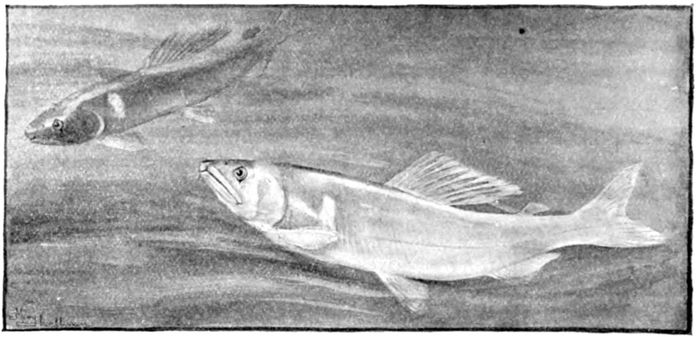
Fig. 79.—Ayu, or Japanese Samlet, Plecoglossus altivelis Schlegel. Tamagawa, Tokyo, Japan.
In the river at Gifu in Japan and in some other streams
the ayu is fished for on a large scale by means of tamed cormorants.
This is usually done from boats in the night by the
light of torches.
Cormorant-fishing.—The following account of cormorant-fishing
is taken, by the kind permission of Mr. Caspar W. Whitney,
from an article contributed by the writer to Outing, April,
1902:
Tamagawa means Jewel River, and no water could be clearer.
It rises somewhere up in the delectable mountains to the eastward
of Musashi, among the mysterious pines and green-brown fir-trees,
and it flows across the plains bordered by rice-fields and mulberry
orchards to the misty bay of Tokyo. It is, therefore, a
river of Japan, and along its shores are quaint old temples, each
guarding its section of primitive forest, picturesque bridges,
huddling villages, and torii, or gates through which the gods
may pass.
The stream itself is none too large—a boy may wade it—but
it runs on a wide bed, which it will need in flood-time, when the
snow melts in the mountains. And this broad flood-bed is
117filled with gravel, with straggling willows, showy day-lilies,
orange amaryllis, and the little sky-blue spider-flower, which
the Japanese call chocho, or butterfly-weed.
In the Tamagawa are many fishes: shining minnows in the
white ripples, dark catfishes in the pools and eddies, and little
sculpins and gobies lurking under the stones. Trout dart
through its upper waters, and at times salmon run up from the
sea.
But the one fish of all its fishes is the ayu. This is a sort
of dwarf salmon, running in the spring and spawning in the
rivers just as a salmon does. But it is smaller than any salmon,
not larger than a smelt, and its flesh is white and tender, and
so very delicate in its taste and odor that one who tastes it
crisply fried or broiled feels that he has never tasted real fish
before. In all its anatomy the ayu is a salmon, a dwarf of its
kind, one which our ancestors in England would have called
a "samlet." Its scientific name is Plecoglossus altivelis. Plecoglossus
means plaited tongue, and altivelis, having a high sail;
for the skin of the tongue is plaited or folded in a curious way,
and the dorsal fin is higher than that of the salmon, and one poetically
inclined might, if he likes, call it a sail. The teeth of the
ayu are very peculiar, for they constitute a series of saw-edged
folds or plaits along the sides of the jaws, quite different from
those of any other fish whatsoever.
In size the ayu is not more than a foot to fifteen inches
long. It is like a trout in build, and its scales are just as small.
It is light yellowish or olive in color, growing silvery below.
Behind its gills is a bar of bright shining yellow, and its adipose
fin is edged with scarlet. The fins are yellow, and the dorsal
fin shaded with black, while the anal fin is dashed with pale
red.
So much for the river and the ayu. It is time for us to go
afishing. It is easy enough to find the place, for it is not more
than ten miles out of Tokyo, on a fine old farm just by the ancient
Temple of Tachikawa, with its famous inscribed stone, given by
the emperor of China.
At the farmhouse, commodious and hospitable, likewise clean
and charming after the fashion of Japan, we send for the boy
who brings our fishing-tackle.
118They come waddling into the yard, the three birds with which
we are to do our fishing. Black cormorants they are, each with
a white spot behind its eye, and a hoarse voice, come of standing
in the water, with which it says y-eugh whenever a stranger
makes a friendly overture. The cormorants answer to the
name of Ou, which in Japanese is something like the only word
the cormorants can say. The boy puts them in a box together
and we set off across the drifted gravel to the Tamagawa. Arrived
at the stream, the boy takes the three cormorants out of
the box and adjusts their fishing-harness. This consists of a
tight ring about the bottom of the neck, of a loop under each
wing, and a directing line.
Two other boys take a low net. They drag it down the
stream, driving the little fishes—ayu, zakko, haë, and all the
rest—before it. The boy with the cormorants goes in advance.
The three birds are eager as pointer dogs, and apparently full
of perfect enjoyment. To the right and left they plunge with
lightning strokes, each dip bringing up a shining fish. When
the bird's neck is full of fishes down to the level of the shoulders,
the boy draws him in, grabs him by the leg, and shakes him
unceremoniously over a basket until all the fishes have flopped
out.
The cormorants watch the sorting of the fish with eager
eyes and much repeating of y-eugh, the only word they know.
The ayu are not for them, and some of the kajikas and hazés
were prizes of science. But zakko (the dace) and haë (the
minnow) were made for the cormorant. The boy picks out
the chubs and minnows and throws them to one bird and then
another. Each catches his share on the fly, swallows it at one
gulp, for the ring is off his neck by this time, and then says
y-eugh, which means that he likes the fun, and when we are
ready will be glad to try again. And no doubt they have tried
it many times since, for there are plenty of fishes in the Jewel
River, zakko and haë as well as ayu.
Fossil Salmonidæ.—Fossil salmonidæ are rare and known
chiefly from detached scales, the bones in this family being
very brittle and easily destroyed. Nothing is added to our
knowledge of the origin of these fishes from such fossils.
A large fossil trout or salmon, called Rhabdofario lacustris,
119has been brought from the Pliocene at Catherine's Creek, Idaho.
It is known from the skull only. Thaumaturus luxatus, from the
Miocene of Bohemia, shows the print of the adipose fin. As
already stated (p. 62), fragments of the hooked jaws of salmon,
from pleistocene deposits in Idaho, are in the museum of the
University of California.
120
CHAPTER VI
THE GRAYLING AND THE SMELT
The Grayling, or Thymallidæ.—The small family of
Thymallidæ, or grayling, is composed of finely organized
fishes allied to the trout, but differing in having the
frontal bones meeting on the middle line of the skull, thus
excluding the frontals from contact with the supraoccipital.
The anterior half of the very high dorsal is made up of unbranched
simple rays. There is but one genus, Thymallus,
comprising very noble game-fishes characteristic of subarctic
streams.
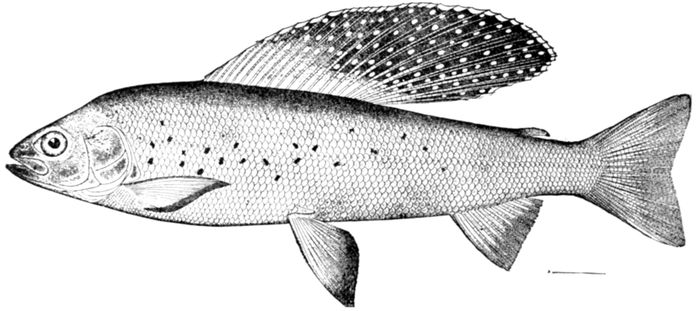
Fig. 80.—Alaska Grayling, Thymallus signifer Richardson. Nulato, Alaska.
The grayling, Thymallus, of Europe, is termed by Saint
Ambrose "the flower of fishes." The teeth on the tongue,
found in all the trout and salmon, are obsolete in the grayling.
The chief distinctive peculiarity of the genus Thymallus is the
great development of the dorsal fin, which has more rays (20
to 24) than are found in any of the Salmonidæ, and the
fin is also higher. All the species are gaily colored, the dorsal
fin especially being marked with purplish or greenish bands
121and bright rose-colored spots; while the body is mostly purplish
gray, often with spots of black. Most of the species rarely
exceed a foot in length, but northward they grow larger. Grayling
weighing five pounds have been taken in England; and
according to Dr. Day they are said in Lapland to reach a weight
of eight or nine pounds. The grayling in all countries frequent
clear, cold brooks, and rarely, if ever, enter the sea, or even the
larger lakes. They congregate in small shoals in the streams,
and prefer those which have a succession of pools and shallows,
with a sandy or gravelly rather than rocky bottom. The
grayling spawns on the shallows in April or May (in England).
It is non-migratory in its habits, depositing its ova in the
neighborhood of its usual haunts. The ova are far more delicate
and easily killed than those of the trout or charr. The grayling
and the trout often inhabit the same waters, but not altogether
in harmony. It is said that the grayling devours the
eggs of the trout. It is certain that the trout feed on the
young grayling. As a food-fish, the grayling of course ranks
high; and it is beloved by the sportsman. They are considered
gamy fishes, although less strong than the brook-trout, and
perhaps less wary. The five or six known species of grayling
are very closely related, and are doubtless comparatively recent
offshoots from a common stock, which has now spread itself
widely through the northern regions.
The common grayling of Europe (Thymallus thymallus)
is found throughout northern Europe, and as far south as the
mountains of Hungary and northern Italy. The name Thymallus
was given by the ancients, because the fish, when fresh, was
said to have the odor of water-thyme. Grayling belonging to
this or other species are found in the waters of Russia and Siberia.
The American grayling (Thymallus signifer) is widely distributed
in British America and Alaska. In the Yukon it is
very abundant, rising readily to the fly. In several streams
in northern Michigan, Au Sable River, and Jordan River in
the southern peninsula, and Otter Creek near Keweenaw in
the northern peninsula, occurs a dwarfish variety or species with
shorter and lower dorsal fins, known to anglers as the Michigan
grayling (Thymallus tricolor). This form has a longer head,
rather smaller scales, and the dorsal fin rather lower than in
122the northern form (signifer); but the constancy of these characters
in specimens from intermediate localities is yet to be proved.
Another very similar form, called Thymallus montanus, occurs
in the Gallatin, Madison, and other rivers of Western Montana
tributary to the Missouri. It is locally still abundant and one
of the finest of game-fishes. It is probable that the grayling
once had a wider range to the southward than now, and that
so far as the waters of the United States are concerned it is
tending toward extinction. This tendency is, of course, being
accelerated in Michigan by lumbermen and anglers. The
colonies of grayling in Michigan and Montana are probably
remains of a post-glacial fauna.
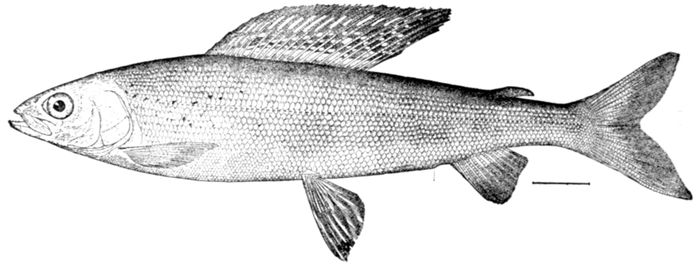
Fig. 81.—Michigan Grayling, Thymallus tricolor Cope. Au Sable River, Mich.
The Argentinidæ.—The family of Argentinidæ, or smelt, is
very closely related to the Salmonidæ, representing a dwarf
series of similar type. The chief essential difference lies in the
form of the stomach, which is a blind sac, the two openings
near together, and about the second or pyloric opening there
are few if any pyloric cæca. In all the Salmonidæ the stomach
has the form of a siphon, and about the pylorus there are very
many pyloric cæca. The smelt have the adipose fin and the general
structure of the salmon. All the species are small in size,
and most of them are strictly marine, though some of them
ascend the rivers to spawn, just as salmon do, but not going
very far. A few kinds become landlocked in ponds. Most of
the species are confined to the north temperate zone, and a
few sink into the deep seas. All that are sufficiently abundant
furnish excellent food, the flesh being extremely delicate and
often charged with a fragrant oil easy of digestion.
123
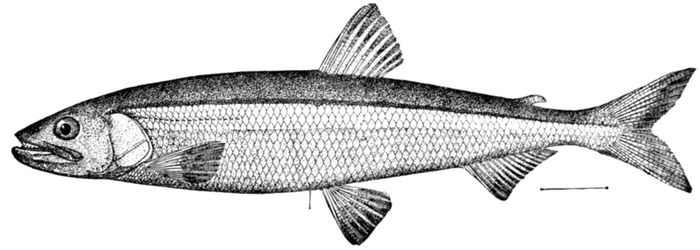
Fig. 82.—Smelt, Osmerus mordux (Mitchill). Wood's Hole, Mass.
The best-known genus, Osmerus, includes the smelt, or
spirling (éperlan), of Europe, and its relatives, all excellent food-fishes,
although quickly spoiling in warm weather. Osmerus
eperlanus is the European species; Osmerus mordax of our eastern
coast is very much like it, as is also the rainbow-smelt, Osmerus
dentex of Japan and Alaska. A larger smelt, Osmerus albatrossis,
occurs on the coast of Alaska, and a small and feeble
one, Osmerus thaleichthys, mixed with other small or delicate
fishes, is the whitebait of the San Francisco restaurants. The
whitebait of the London epicure is made up of the young of
herrings and sprats of different species. The still more delicate
whitebait of the Hong Kong hotels is the icefish, Salanx chinensis.
Retropinna retropinna, so called from the backward insertion
of its dorsal, is the excellent smelt of the rivers of New Zealand.
All the other species belong to northern waters. Mesopus,
the surf-smelt, has a smaller mouth than Osmerus and inhabits
the North Pacific. The California species, Mesopus pretiosus,
of Neah Bay has, according to James G. Swan, "the belly
covered with a coating of yellow fat which imparts an oily
appearance to the water where the fish has been cleansed or
washed and makes them the very perfection of pan-fish." This
species spawns in late summer along the surf-line. According
to Mr. Swan the water seems to be filled with them. "They
come in with the flood-tide, and when a wave breaks upon the
beach they crowd up into the very foam, and as the surf recedes
many will be seen flapping on the sand and shingle, but
invariably returning with the undertow to deeper water."
The Quilliute Indians of Washington believe that "the first
124surf-smelts that appear must not be sold or given away to be
taken to another place, nor must they be cut transversely, but
split open with a mussel-shell."
The surf-smelt is marine, as is also a similar species, Mesopus
japonicus, in Japan. Mesopus olidus, the pond-smelt of Alaska,
Kamchatka, and Northern Japan, spawns in fresh-water ponds.

Fig. 83.—Eulachon, or Ulchen. Thaleichthys pretiosus Girard. Columbia River. Family Argentinidæ.
Still more excellent as a food-fish than even these exquisite
species is the famous eulachon, or candle-fish (Thaleichthys
pacificus). The Chinook name, usually written eulachon, is
perhaps more accurately represented as ulchen. This little
fish has the form of a smelt and reaches the length of nearly a
foot. In the spring it ascends in enormous numbers all the
rivers north of the Columbia, as far as Skaguay, for a short
distance for the purpose of spawning. These runs take place
usually in advance of the salmon-runs. Various predatory
fishes and sea-birds persecute the eulachon during its runs,
and even the stomachs of the sturgeons are often found full
of the little fishes, which they have taken in by their sucker-like
mouths. At the time of the runs the eulachon are extremely
fat, so much so that it is said that when dried and a
wick drawn through the body they may be used as candles.
On Nass River, in British Columbia, a stream in which their
run is greatest, there is a factory for the manufacture of eulachon-oil
from them. This delicate oil is proposed as a substitute
for cod-liver oil in medicine. Whatever may be its merits in
this regard, it has the disadvantage in respect to salability
of being semi-solid or lard-like at ordinary temperatures, requiring
melting to make it flow as oil. The eulachon is a favorite
pan-fish in British Columbia. The writer has had considerable
experience with it, broiled and fried, in its native region, and
has no hesitation in declaring it to be the best-flavored food-fish
in American waters. It is fat, tender, juicy, and richly
flavored, with comparatively few troublesome bones. It does
not, however, bear transportation well. The Indians in Alaska
bury the eulachon in the ground in great masses. After the
fish are well decayed they are taken out and the oil pressed
from them. The odor of the fish and the oil is then very offensive,
less so, however, than that of some forms of cheese eaten by
civilized people.
125
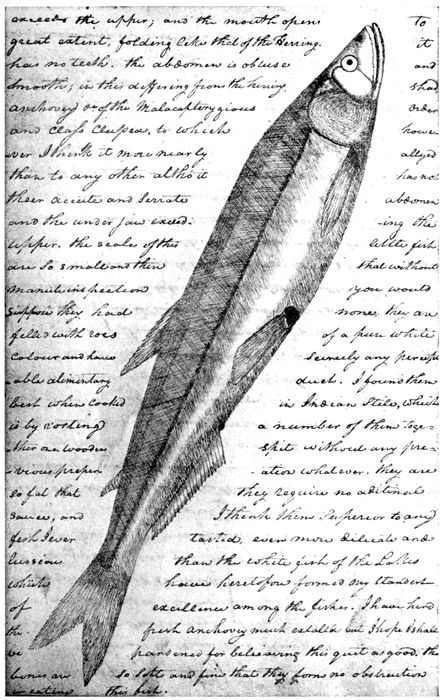
Fig. 84.—Page of William Clark's handwriting with sketch of the Eulachon (Thaleichthys pacificus), the first notice of the species. Columbia River, 1805. (Expedition of Lewis & Clark.) (Reproduced from the original in the possession of his granddaughter Mrs. Julia Clark Voorhis, through the courtesy of Messrs. Dodd, Mead & Company, publishers of the "Original Journals of the Lewis and Clark Expedition.")
126The capelin (Mallotus villosus) closely resembles the eulachon,
differing mainly in its broader pectorals and in the peculiar
scales of the males. In the male fish a band of scales above
the lateral line and along each side of the belly become elongate,
closely imbricated, with the free points projecting, giving the
body a villous appearance. It is very abundant on the coasts
of Arctic America, both in the Atlantic and the Pacific, and is
an important source of food for the natives of those regions.

Fig. 85.—Capelin, Mallotus villosus L. Crosswater Bay.
This species spawns in the surf, and the writer has seen
them in August cast on the shores of the Alaskan islands (as at
Metlakahtla in 1897), living and dead, in numbers which seem
incredible. The males are then distorted, and it seems likely
that all of them perish after spawning. The young are
abundant in all the northern fiords. Even more inordinate
numbers are reported from the shores of Greenland.
The capelin seems to be inferior to the eulachon as a food-fish,
but to the natives of arctic regions in both hemispheres it
is a very important article of food. Fossil capelin are found
127in abundance in recent shales in Greenland enveloped in nodules
of clay. In the open waters about the Aleutian Islands a small
smelt, Therobromus callorhini, occurs in very great abundance
and forms the chief part of the summer food of the fur-seal.
Strangely enough, no complete specimen of this fish has yet
been seen by man, although thousands of fragments have been
taken from seals' stomachs. From these fragments Mr. Frederick
A. Lucas has reconstructed the fish, which must be an ally of
the surf-smelt, probably spawning in the open ocean of the north.
The silvery species called Argentina live in deeper water
and have no commercial importance. Argentina silus, with
prickly scales, occurs in the North Sea. Several fossils have
been doubtfully referred to Osmerus.
The Microstomidæ.—The small family of Microstomidæ consists
of a few degraded smelt, slender in form, with feeble mouth
and but three or four branchiostegals, rarely taken in the deep
seas. Nansenia grœnlandica was found by Reinhardt off the
coast of Greenland, and six or eight other species of Microstoma
and Bathylagus have been brought in by the deep-sea explorations.
The Salangidæ, or Icefishes.—Still more feeble and insignificant
are the species of Salangidæ, icefishes, or Chinese whitebait,
which may be described as Salmonidæ reduced to the lowest
terms. The body is long and slender, perfectly translucent,
almost naked, and with the skeleton scarcely ossified. The
fins are like those of the salmon, the head is depressed, the jaws
long and broad, somewhat like the bill of a duck, and within
there are a few disproportionately strong canine teeth, those
of the lower jaw somewhat piercing the upper. The alimentary
canal is straight for its whole length, without pyloric cæca.
These little fishes, two to five inches long, live in the sea in
enormous numbers and ascend the rivers of eastern Asia for
the purpose of spawning. It is thought by some that they are
annual fishes, all dying in the fall after reproduction, the species
living through the winter only within its eggs. But this is
only suspected, not proved, and the species will repay the careful
study which some of the excellent naturalists of Japan are
sure before long to give to it. The species of Salanx are known
as whitebait, in Japan as Shiro-uwo, which means exactly the
128same thing. They are also sometimes called icefish (Hingio),
which, being used for no other fish, may be adopted as a group
name for Salanx.
The species are Salanx chinensis from Canton, Salanx hyalo
cranius from Korea and northern China, Salanx microdon from
northern Japan, and Salanx ariakensis from the southern island
of Kiusiu. The Japanese fishes are species still smaller and
feebler than their relatives from the mainland.
The Haplochitonidæ.—The Haplochitonidæ are trout-like
fishes of the south temperate zone, differing from the Salmonidæ
mainly in the extension of the premaxillary until, as in the
perch-like fishes, it forms the outer border of the upper jaw.
The adipose fin is present as in all the salmon and smelt. Haplochiton
of Tierra del Fuego and the Falkland Islands is naked,
while in Prototroctes of Australia and New Zealand the body,
as in all salmon, trout, and smelt, is covered with scales. Prototroctes
maræna is the yarra herring of Australia. The closely
related family of Galaxiidæ, also Australian, but lacking the
adipose fin, is mentioned in a later chapter.

Fig. 86.—Icefish, Salanx hyalocranius Abbott. Family Salangidæ. Tientsin, China.
Stomiatidæ.—The Stomiatidæ, with elongate bodies, have
the mouth enormous, with fang-like teeth, usually barbed. Of
the several species Stomias ferox is best known. According to
Dr. Boulenger, these fishes are true Isospondyli.

Fig. 87.—Stomias ferox Reinhardt. Banquereau.
Astronesthidæ is another small group of small fishes naked
and black, with long canines, found in the deep sea.
The Malacosteidæ is a related group with extremely distensible
129mouth, the species capable of swallowing fishes much
larger than themselves.
The viper-fishes (Chauliodontidæ) are very feeble and very
voracious little fishes occasionally brought up from the depths.
Chauliodus sloanei is notable for the length of the fangs.
Much smaller and feebler are the species of the closely
related family of Gonostomidæ. Gonostoma and Cyclothone
dwell in oceanic abysses. One species, Cyclothone elongata,
occurs at the depth of from half a mile to nearly four miles
almost everywhere throughout the oceans. It is probably
the most widely distributed, as well as one of the feeblest and
most fragile, of all bassalian or deep-sea fishes.

Fig. 88.—Chauliodus sloanei Schneider. Grand Banks.
Suborder Iniomi, the Lantern-fishes.—The suborder Iniomi
(ἰνίον, nape; ὤμος, shoulder) comprises soft-rayed fishes, in
which the shoulder-girdle has more or less lost its completeness
of structure as part of the degradation consequent
on life in the abysses of the sea. These features distinguish
these forms from the true Isospondyli, but only in a very few
of the species have these characters been verified by actual
examination of the skeleton. The mesocoracoid arch is wanting
or atrophied in all of the species examined, and the orbitosphenoid
is lacking, so far as known. The group thus agrees in
most technical characters with the Haplomi, in which group they
are placed by Dr. Boulenger. On the other hand the relationships
to the Isospondyli are very close, and the Iniomi have many
traits suggesting degenerate Isospondyli. The post-temporal
has lost its usual hold on the skull and may touch the occiput
on the sides of the cranium. Nearly all the species are soft
in body, black or silvery over black in color, and all that live
130in the deep sea are provided with luminous spots or glands
giving light in the abysmal depths. These spots are wanting in
the few shore species, as also in those which approach most nearly
to the Salmonidæ, these being presumably the most primitive
of the group. In these also the post-temporal touches the back
of the cranium near the side. In the majority of the Iniomi
the adipose fin of the Salmonidæ is retained. From the phosphorescent
spots is derived the general name of lantern-fishes
applied of late years to many of the species. Most of these are
of recent discovery, results of the remarkable work in deep-sea
dredging begun by the Albatross and the Challenger. All
of the species are carnivorous, and some, in spite of their feeble
muscles, are exceedingly voracious, the mouth being armed
with veritable daggers and spears.
Aulopidæ.—Most primitive of the Iniomi is the family of
Aulopidæ, having an adipose fin, a normal maxillary, and no
luminous spots. The rough firm scales suggest those of the
berycoid fishes. The few species of Aulopus and Chlorophthalmus
are found in moderate depths. Aulopus purpurissatus is the
"Sergeant Baker" of the Australian fishermen.

Fig. 89.—Lizard-fish, Synodus fætens L. Charleston, S. C.
The Lizard-fishes.—The Synodontidæ, or lizard-fishes, have
lizard-like heads with very large mouth. The head is scaly, a
character rare among the soft-rayed fishes. The slender maxillary
is grown fast to the premaxillary, and the color is not black.
Most of the species are shore-fishes and some are brightly colored.
Synodus fætens is the common lizard-fish, or galliwasp, of our
Atlantic coast. Synodus varius of the Pacific is brightly
colored, olive-green and orange-red types of coloration existing
at different depths. Most of the species lie close to the
bottom and are mottled gray like coral sand. A few occur in
131oceanic depths. The "Bombay duck" of the fishermen of
India is a species of Harpodon, H. nehereus, with large mouth
and arrow-shaped teeth. The dried fish is used as a relish.
The Benthosauridæ are deep-sea fishes of similar type, but
with distinct maxillaries. The Bathypteroidæ, of the deep seas,
resemble Aulopus, but have the upper and lower pectoral rays
filiform, developed as organs of touch in the depths in which
the small eyes become practically useless.
Ipnopidæ.—In the Ipnopidæ the head is depressed above
and the two eyes are flattened and widened so as to occupy
most of its upper surface. These structures were at first supposed
to be luminous organs, but Professor Moseley has shown
them to be eyes. "They show a flattened cornea extending
along the median line of the snout, with a large retina composed
of peculiar rods which form a complicated apparatus
destined undoubtedly to produce an image and to receive
especial luminous rays." The single species, Ipnops murrayi,
is black in color and found at the depth of 2½ miles in various
seas.

Fig. 90.—Ipnops murrayi Günther.
The existence of well-developed eyes among fishes destined
to live in the dark abysses of the ocean seems at first contradictory,
but we must remember that these singular forms
are descendants of immigrants from the shore and from the
surface. "In some cases the eyes have not been specially
modified, but in others there have been modifications of a luminous
mucous membrane leading on the one hand to phosphorescent
organs more or less specialized, or on the other to such
remarkable structures as the eyes of Ipnops, intermediate
between true eyes and phosphorescent plates. In fishes which
cannot see, and which retain for their guidance only the general
sensibility of the integuments and the lateral line, these parts
soon acquire a very great delicacy. The same is the case with
132tactile organs (as in Bathypterois and Benthosaurus), and experiments
show that barbels may become organs of touch adapted
to aquatic life, sensitive to the faintest movements or the
slightest displacement, with power to give the blinded fishes
full cognizance of the medium in which they live."
Rondeletiidæ.—The Rondeletiidæ are naked black fishes with
small eyes, without adipose fin and without luminous spots,
taken at great depths in the Atlantic. The relationship of these
fishes is wholly uncertain.

Fig. 91.—Cetomimus gillii Goode & Bean. Gulf Stream.
The Cetomimidæ are near allies of the Rondeletiidæ, having
the mouth excessively large, with the peculiar form seen in the
right whales, which these little fishes curiously resemble.
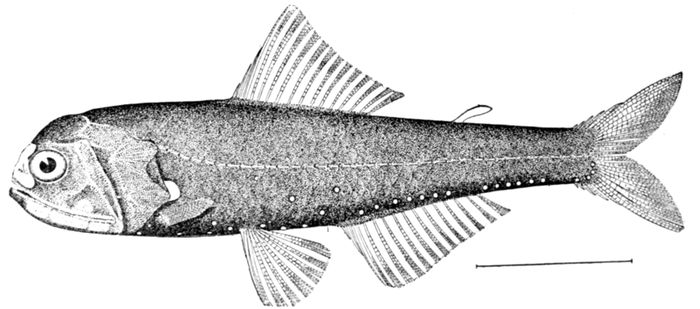
Fig. 92.—Headlight Fish, Diaphus lucidus Goode & Bean. Gulf Stream.
Myctophidæ.—The large family of Myctophidæ, or lantern-fishes,
is made up of small fishes allied to the Aulopidæ, but
with the body covered with luminous dots, highly specialized
and symmetrically arranged. Most of them belong to the
deep sea, but others come to the surface in the night or during
storms when the sunlight is absent. Through this habit they
are often thrown by the waves on the decks of small vessels.
133Largely from Danish merchant-vessels, Dr. Lütken has obtained
the unrivaled collection of these sea-waifs preserved in the
Museum of the University of Copenhagen. The species are
all small in size and feeble in structure, the prey of the larger
fishes of the depths, from which their lantern-like spots and
large eyes help them to escape. The numerous species are now
ranged in about fifteen genera, although earlier writers placed
them all in a single genus Myctophum (Scopelus).

Fig. 93.—Lantern-fish, Myctophum opalinum Goode & Bean. Gulf Stream.
In the genus Diaphus (Æthoprora) there is a large luminous
gland on the end of the short snout, like the headlight of an
engine. In Dasyscopelus the scales are spinescent, but in most of
the genera, as in Myctophum, the scales are cycloid and caducous,
falling at the touch. In Diaphus the luminous spots are crossed
by a septum giving them the form of the Greek letter θ (theta).
One of the commonest species is Myctophum humboldti.

Fig. 94.—Lantern-fish, Ceratoscopelus madeirensis (Lowe). Gulf Stream.
Chirothricidæ.—The remarkable extinct family of Chirothricidæ
may be related to the Synodontidæ, or Myctophidæ.
In this group the teeth are feeble, the paired fins much
134enlarged, and the ventrals are well forward. The dorsal fin,
inserted well forward, has stout basal bones. Chirothrix libanicus
of the Cretaceous of Mt. Lebanon is remarkable for its excessively
large ventral fins. Telepholis is a related genus. Exocœtoides
with rounded caudal fin is probably the type of a
distinct family, Exocœtoididæ, the caudal fin being strongly
forked in Chirothrix. The small extinct group of Rhinellidæ is
usually placed near the Myctophidæ. They are distinguished
by the very long gar-like jaws; whether they possessed adipose
fins or luminous spots cannot be determined. Rhinellus furcatus
and other species occur in the Cretaceous of Europe and
Asia. Fossil forms more or less distinctly related to the Myctophidæ
are numerous. Osmeroides monasterii (wrongly called
Sardinioides), from the German Cretaceous, seems allied to
Myctophum, although, of course, luminous spots leave no trace
among fossils. Acrognathus boops is remarkable for the large
size of the eyes.

Fig. 95.—Rhinellus furcatus Agassiz. Upper Cretaceous of Mt. Lebanon. (After Woodward.)
Maurolicidæ.—The Maurolicidæ are similar in form and
habit, but scaleless, and with luminous spots more highly
specialized. Maurolicus pennanti, the "Sleppy Argentine," is
occasionally taken on either side of the Atlantic. Other genera
are Zalarges, Vinciguerria, and Valenciennellus.
The Lancet-fishes.—The Plagyodontidæ (Alepisauridæ) contains
the lancet-fishes, large, swift, scaleless fishes of the ocean
depths with very high dorsal fin, and the mouth filled with
knife-like teeth. These large fish are occasionally cast up by
storms or are driven to the shores by the torments of a parasite,
Tetrarhynchus, found imbedded in the flesh.
It is probable that they are sometimes killed by being forced
above their level by fishes which they have swallowed. In
such cases they are destroyed through the reduction of pressure.
Every part of the body is so fragile that perfect specimens
are rare. The dorsal fin is readily torn, the bones are very
135feebly ossified, and the ligaments connecting the vertebræ are
very loose and extensible, so that the body can be considerably
stretched. "This loose connection of the parts of the body
is found in numerous deep-sea fishes, and is merely the consequence
of their withdrawal from the pressure of the water to
which they are exposed in the depths inhabited by them. When
within the limits of their natural haunts, the osseous, muscular,
and fibrous parts of the body will have that solidity which is
required for the rapid and powerful movements of a predatory
fish. That the fishes of this genus (Plagyodus) belong to the
most ferocious of the class is proved by their dentition and the
contents of their stomach." (Günther.) Dr. Günther elsewhere
observes: "From the stomach of one example have been
taken several octopods, crustaceans, ascidians, a young Brama,
twelve young boarfishes (Capros), a horse-mackerel, and one
young of its own species."
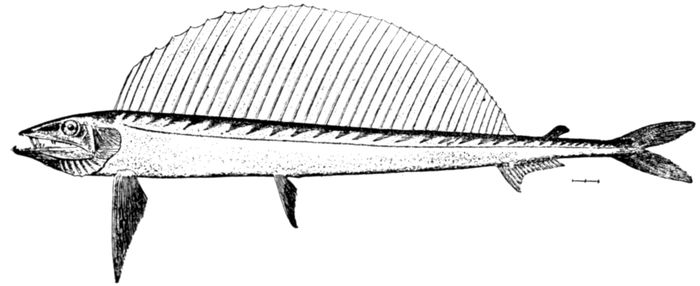
Fig. 96.—Lancet-fish, Plagyodus ferox (Lowe). New York.
The lancet-fish, Plagyodus ferox, is occasionally taken on
either side of the Atlantic and in Japan. The handsaw-fish,
called Plagyodus æsculapius, has been taken at Unalaska, off
San Luis Obispo, and in Humboldt Bay. It does not seem to
differ at all from Plagyodus ferox. The original type from Unalaska
had in its stomach twenty-one lumpfishes (Eumicrotremus
spinosus). This is the species described from Steller's manuscripts
by Pallas under the name of Plagyodus. Another
species, Plagyodus borcalis, is occasionally taken in the North
Pacific.
The Evermannellidæ is a small family of small deep-sea fishes
136with large teeth, distensible muscles, and an extraordinary
power of swallowing other fishes, scarcely surpassed by Chiasmodon
or Saccopharynx. Evermannella (Odontostomus, the latter
name preoccupied) and Omosudis are the principal genera.
The Paralepidæ are reduced allies of Plagyodus, slender,
silvery, with small fins and fang-like jaws. As in Plagyodus,
the adipose fin is developed and there are small luminous dots.
The species are few and mostly northern; one of them, Sudis
ringens, is known only from a single specimen taken by the
present writer from the stomach of a hake (Merluccius productus),
the hake in turn swallowed whole by an albacore in the
Santa Barbara Channel. The Sudis had been devoured by the
hake, the hake by the albacore, and the albacore taken on
the hook before the feeble Sudis had been digested.

Fig. 97.—Eurypholis sulcidens Pictet, restored. Family Enchodontidæ. Upper Cretaceous of Mt. Lebanon. (After Woodward, as E. boissieri.)
Perhaps allied to the Plagyodontidæ is also the large family
of Enchodontidæ, widely represented in the Cretaceous rocks of
Syria, Europe, and Kansas. The body in this group is elongate,
the teeth very strong, and the dorsal fin short. Enchodus
lewesiensis is found in Mount Lebanon, Halec sternbergi in the
German Cretaceous, and many species of Enchodus in Kansas;
Cimolichthys dirus in North Dakota.
Remotely allied to these groups is the extinct family of
Dercetidæ from the Cretaceous of Germany and Syria. These
are elongate fishes, the scales small or wanting, but with two
or more series of bony scutes along the flanks. In Dercetis
scutatus the scutes are large and the dorsal fin is very long. Other
genera are Leptotrachelus and Pelargorhynchus. Dr. Boulenger
places the Dercetidæ in the order Heteromi. This is an expression
of the fact that their relations are still unknown. Probably
137related to the Dercetidæ is the American family of Stratodontidæ
with its two genera, Stradodus and Empo from the Cretaceous
(Niobrara) deposits of Kansas. Empo nepaholica is one of the
best-known species.

Fig. 98.—Eurypholis freyeri Heckel. Family Enchodontidæ. Cretaceous. (After Heckel; the restoration of the jaws incorrect.)
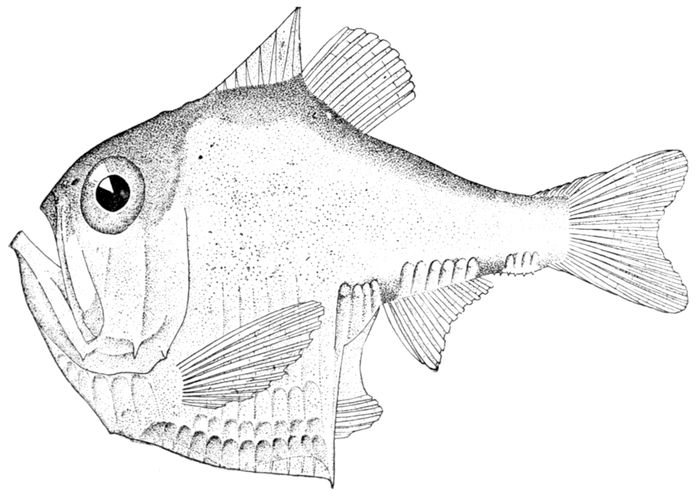
Fig. 99.—Argyropelecus olfersi Cuvier. Gulf Stream.
The Sternoptychidæ.—The Sternoptychidæ differ materially
from all these forms in the short, compressed, deep body
and distorted form. The teeth are small, the body bright
silvery, with luminous spots. The species live in the deep
seas, rising in dark or stormy weather. Sternoptyx diaphana is
found in almost all seas, and species of Argyropelecus are almost
as widely distributed. After the earthquakes in 1896, which
engulfed the fishing villages of Rikuzen, in northern Japan,
138numerous specimens of this species were found dead, floating
on the water, by the steamer Albatross.
The Idiacanthidæ are small deep-sea fishes, eel-shaped and
without pectorals, related to the Iniomi.
Order Lyopomi.—Other deep-sea fishes constitute the order
or suborder Lyopomi (λυός, loose; πῶμα, opercle). These are
elongate fishes having no mesocoracoid, and the preopercle
rudimentary and connected only with the lower jaw, the large
subopercle usurping its place. The group, which is perhaps to
be regarded as a degenerate type of Isospondyli, contains the
single family of Halosauridæ, with several species, black in
color, soft in substance, with small teeth and long tapering
tail, found in all seas. The principal genera are Halosaurus
and Aldrovandia (Halosauropsis). Aldrovandia macrochira is
the commonest species on our Atlantic coast.

Fig. 100.—Aldrovandia gracilis (Goode & Bean). Guadaloupe Island, West Indies. Family Halosauridæ.
Several fossil Halosauridæ are described from the Cretaceous
of Europe and Syria, referred to the genera Echidnocephalus
and Enchelurus. Boulenger refers the Lyopomi to the suborder
Heteromi.
139
CHAPTER VII
THE APODES, OR EEL-LIKE FISHES
The Eels.—We may here break the sequence from the
Isospondyli to the other soft-rayed fishes, to interpolate
a large group of uncertain origin, the series
or subclass of eels.
The mass of apodal or eel-like fishes has been usually regarded
as constituting a single order, the Apodes (ἄ, without; ποῦς,
foot). The group as a whole is characterized by the almost
universal separation of the shoulder-girdle from the skull, by
the absence of the mesocoracoid arch on the shoulder-girdle,
by the presence of more than five pectoral actinosts, as in the
Ganoid fishes, by the presence of great numbers of undifferentiated
vertebræ, giving the body a snake-like form, by the
absence in all living forms of the ventral fins, and, in all living
forms, by the absence of a separate caudal fin. These structures
indicate a low organization. Some of them are certainly results
of degeneration, and others are perhaps indications of primitive
simplicity. Within the limits of the group are seen other
features of degeneration, notably shown in the progressive loss
of the bones of the upper jaw and the membrane-bones of the
head and the degradation of the various fins. The symplectic
bone is wanting, the notochord is more or less persistent, the
vertebral centra always complete constricted cylinders, none
coalesced. But, notwithstanding great differences in these
regards, the forms have been usually left in a single order, the
more degraded forms being regarded as descended from the
types which approach nearest to the ordinary fishes. From
this view Professor Cope dissents. He recognizes several orders
of eels, claiming that we should not unite all these various fishes
into a single order on account of the eel-like form. If we do so,
we should place in another order those with the fish-like form.
140It is probable, though not absolutely certain, that the Apodes
are related to each other. The loss among them, first, of the connection
of the post-temporal with the skull; second, of the
separate caudal fin and its hypural support; third, of the distinct
maxillary and premaxillary; and fourth, of the pectoral fins, must
be regarded as successive phases of a general line of degradation.
The large number of actinosts, the persistence of the notochord,
the absence of spines, and the large numbers of vertebræ seem
to be traits of primitive simplicity. Special lines of degeneration
are further shown by deep-sea forms. What the origin
of the Apodes may have been is not known with any certainty.
They are soft-rayed fishes, with the air-bladder connected by
a tube with the œsophagus, and with the anterior vertebræ not
modified. In so far they agree with the Isospondyli. In some
other respects they resemble the lower Ostariophysi, especially
the electric eel and the eel-like catfishes. But these resemblances,
mainly superficial, may be wholly deceptive; we have
no links which certainly connect the most fish-like Apodes
with any of the other orders. Probably Woodward's suggestion
that they may form a series parallel with the Isospondyli
and independently descended from Tertiary Ganoids
deserves serious consideration. Perhaps the most satisfactory
arrangement of these fishes will be to regard them as constituting
four distinct orders for which we may use the names Symbranchia
(including Ichthyocephali and Holostomi), Apodes (including
Enchelycephali and Colocephali), Carencheli, and Lyomeri.
Order Symbranchia.—The Symbranchia are distinguished by
the development of the ordinary fish mouth, the maxillary and
premaxillary being well developed. The gill-openings are very
small, and usually confluent below. These fresh-water forms
of the tropics, however eel-like in form, may have no real
affinity with the true eels. In any event, they should not be
placed in the same order with the latter.
The eels of the suborder Ichthyocephali (ιχθύς, fish; κεφαλή,
head) have the head distinctly fish-like. The maxillary, premaxillary,
and palatines are well developed, and the shoulder-girdle
is joined by a post-temporal to the skull. The body is
distinctly eel-like, the tail being very short and the fins inconspicuous.
141The number of vertebræ is unusually large. The
order contains the single family Monopteridæ, the rice-field eels,
one species, Monopterus albus, being excessively common in
pools and ditches from China and southern Japan to India.
The eels of the suborder Holostomi (ὀλός, complete; στόμα,
mouth) differ from these mainly in the separation of the shoulder-girdle
from the skull, a step in the direction of the true eels.
The Symbranchidæ are very close to the Monopteridæ in external
appearance, small, dusky, eel-like inhabitants of sluggish ponds
and rivers of tropical America and the East Indies. The gill-openings
are confluent under the throat. Symbranchus marmoratus
ranges northward as far as Vera Cruz, having much the
habit of the rice-field eel of Japan and China. The Amphipnoidæ,
with peculiar respiratory structures, abound in India.
Amphipnous cuchia, according to Günther, has but three gill-arches,
with rudimentary lamina and very narrow slits. To
supplement this insufficient branchial apparatus, a lung-like
sac is developed on each side of the body behind the head, opening
between the hyoid and the first branchial arch. The interior
of the sac is abundantly provided with blood-vessels, the
arterial coming from the branchial arch, whilst those issuing
from it unite to form the aorta. Amphipnous has rudimentary
scales. The other Holostomi and Ichthyocephali are naked and
all lack the pectoral fin.
The Chilobranchidæ are small sea-fishes from Australia, with
the tail longer than the rest of the body, instead of much shorter
as in the others.
No forms allied to Symbranchus or Monopterus are recorded
as fossils.
Order Apodes, or True Eels.—In this group the shoulder-girdle
is free from the skull, and the bones of the jaws are reduced
in number, through coalescence of the parts.
Three well-marked suborders may be recognized, groups perhaps
worthy of still higher rank: Archencheli, Enchelycephali,
and Colocephali.
Suborder Archencheli.—The Archencheli, now entirely extinct,
are apparently the parents of the eels, having, however, certain
traits characteristic of the Isospondyli. They retain the separate
caudal fin, with the ordinary hypural plate, and Professor
142Hay has recently found, in an example from the Cretaceous
of Mount Lebanon, remains of distinct ventral fins. These
traits seem to indicate an almost perfect transition from the
Isospondyli to the Archencheli.
One family may be recognized at present, Urenchelyidæ.
The earliest known eel, Urenchelys avus, occurs in the upper
Cretaceous at Mount Lebanon. It represents the family Urenchelyidæ,
apparently allied to the Anguillidæ, but having a
separate caudal fin. Its teeth are small, conical, blunt, in
many series. There are more than 100 vertebræ, the last
expanded in a hypural. Pectorals present. Scales rudimentary;
dorsal arising at the occiput. Branchiostegals slender,
not curved around the opercle. Urenchelys anglicus is another
species, found in the chalk of England.
Suborder Enchelycephali.—The suborder Enchelycephali (ἔγχελυς,
eel; κεφαλή, head) contains the typical eels, in which
the shoulder-girdle is free from the skull, the palatopterygoid
arch relatively complete, the premaxillaries wanting or rudimentary,
the ethmoid and vomer coalesced, forming the front
of the upper jaw, the maxillaries lateral, and the cranium with
a single condyle. In most of the species pectoral fins are present,
and the cranium lacks the combined degradation and specialization
shown by the morays (Colocephali).
Family Anguillidæ.—The most primitive existing family is that
of the typical eels, Anguillidæ, which have rudimentary scales
oblong in form, and set separately in groups at right angles with
one another. These fishes are found in the fresh and brackish
waters of all parts of the world, excepting the Pacific coast of
North America and the islands of the Pacific. In the upper Great
Lakes and the upper Mississippi they are also absent unless introduced.
The species usually spawn in the sea and ascend the
rivers to feed. But some individuals certainly spawn in fresh
water, and none go far into the sea, or where the water is entirely
salt. The young eels sometimes ascend the brooks near the sea
in incredible numbers, constituting what is known in England
as "eel-fairs." They will pass through wet grass to surmount
ordinary obstacles. Niagara Falls they cannot pass, and
according to Professor Baird "in the spring and summer the
visitor who enters under the sheet of water at the foot of the
143falls will be astonished at the enormous numbers of young
eels crawling over the slippery rocks and squirming in the
seething whirlpools. An estimate of hundreds of wagon-loads,
as seen in the course of the perilous journey referred to, would
hardly be considered excessive by those who have visited the
spot at a suitable season of the year." "At other times large
eels may be seen on their way down-stream, although naturally
they are not as conspicuous then as are the hosts of the
young on their way upstream. Nevertheless it is now a well-assured
fact that the eels are catadromous, that is, that the
old descend the watercourses to the salt water to spawn, and
the young, at least of the female sex, ascend them to enjoy life
in the fresh water."

Fig. 101.—Common Eel, Anguilla chrisypa Rafinesque. Holyoke, Mass.
Reproduction of the Eel.—Dr. Gill ("Riverside Natural History,"
p. 103) gives the following account of the reproduction
of Anguilla:
"The generation of the eel was long involved in great
mystery, and the knowledge thereof is one of the recent acquisitions
of scientific investigation. So late, indeed, as 1880 it
was declared that 'their mode of propagation is still unknown.'
In want of positive knowledge the rein has been given to loose
hypothesis and conjecture. It has been variously asserted that
eels were generated from slime, from dew, and from the skins
of old eels or of snakes. The statement that they come from
horse-hairs is familiar to many country boys, and the origin
of this belief is due simply to the fact that there are certain
aquatic worms, known under the generic name Gordius, which
are elongated and apparently smooth like the eel, and which
144may be found in the same waters. It was one of the ideas of
the Greek to attribute their paternity, as of many other doubtful
offspring, to the convenient Jupiter. The statement that
they are viviparous has arisen from two causes: one the existence
of intestinal worms, and the other from the confusion of
the eel with an elongated and consequently eel-like but otherwise
very different form, the Zoarces viviparus. The Zoarces
is indeed, in Germany as well as in the Scandinavian countries,
generally known as the Aal-mutter, or eel-mother, and thus in
its name perpetuates the fancy. Even where eels are to be
found in extreme abundance, and where they are the objects
of a special culture, like erroneous opinions prevail. Thus,
according to Jacoby, about the lagoon of Comacchio there is
an 'ineradicable belief among the fishermen that the eel is born
of other fishes; they point to special differences in color and
especially in the common mullet, Mugil cephalus, as the causes
of variation in color and form among eels. It is a very ancient
belief, widely prevalent to the present day, that eels pair with
water-snakes. In Sardinia the fishermen cling to the belief that
a certain beetle, the so-called water-beetle, Dytiscus ræselii, is
the progenitor of eels, and they therefore call this "mother of
eels."' The assignment of such maternity to the water-beetle
is doubtless due to the detection of the hair-worm, or Gordius,
in the insect by sharp-sighted but unscientific observers, and,
inasmuch as the beetle inhabits the same waters as the eel, a
very illogical deduction has led to connect the two together.
"All such beliefs as have been thus recounted are due to
the inconspicuous nature of the generative organs in eels found
in fresh waters and at most seasons—a characteristic which is
in strong contrast to the development of corresponding parts
in fishes generally. Nevertheless the ovaries of the eel were
discovered, as long ago as 1707, by Dr. Sancassini of Comacchio,
and described by the celebrated Valisneri (after whom the
plant Valisneria was named) in 1710, again by Mondini in 1777,
and almost contemporaneously by O. J. Müller of Denmark.
Later the illustrious Rathke (in 1824, 1838, and 1850) and
also Hornbaum-Hornschuch published the results of special
investigations, and figured the eggs. But it was only in 1873
(after several futile endeavors by others) that the male organ
145of the eel was recognized, also by an Italian naturalist, Dr.
Syrski, in small individuals of the species, and a previous idea
that the eel was hermaphroditic thereby dispelled. The sexual
differences are correlated with external ones, and generally the
males and females, when adult, can be told apart. Jacoby
testifies that he examined large numbers with a view to solve
this question. The most important differences relate to (1)
size; (2) form of the snout; (3) color; (4) dorsal fin; and
(5) size of the eyes. (1) The males rarely attain a length of
more than seventeen to nineteen inches, while adult females
are generally much larger; (2) the snout in the male is attenuated
and rather pointed, while in the female it is comparatively
broad and blunt; (3) the male is of a deep darkish green, or
often a deep black with a shining luster and a whitish
belly, while the female has a clearer color, usually of a greenish
hue on the back and yellowish on the belly; (4) the dorsal fin
is lower and less developed in the male than in the female; and
(5) the eye of the male is large and that of the female, as a rule,
comparatively small. These characters, however, do not always
hold good. Jacoby remarked that 'special reference having
been paid to the height and narrowness of the dorsal fin, much
success has been met with in picking out, in the fish-market
of Trieste, the eels which possessed the organ of Syrski (that
is, the male organ); absolute certainty, however, in recognizing
them cannot be guaranteed. If one is searching among
living eels with no characters in mind,—with the exception of
the first, that of length,—he will find in every ten eels, on an
average, eight females and two with the supposed male organ;
but if the selection is made with a careful reference to all these
marks of difference, the proportion changes, and out of every
ten examples about eight will be found with the supposed
male organ.'
"According to Herr Benecke, 'it may be assumed with the
greatest safety that the eel lays its eggs like most other fish,
and that, like the lamprey, it spawns only once and then dies.
All the eggs of a female show the same degree of maturity,
while in the fish which spawn every year, besides the large
eggs which are ready to be deposited at the next spawning
period, there exist very many of much smaller size, which are
146destined to mature hereafter and be deposited in other years.
It is very hard to understand how young eels could find room
in the body of their mother if they were retained until they
had gained any considerable size. The eel embryo can live and
grow for a long time supported by the little yolk, but, when
this is done, it can only obtain food outside of the body of its
mother. The following circumstances lead us to believe that
the spawning of the eel takes place only in the sea: (1) that the
male eel is found only in the sea or brackish water, while female
eels yearly undertake a pilgrimage from the inland waters to
the sea, a circumstance which has been known since the time
of Aristotle, and upon the knowledge of which the principal
capture of eels by the use of fixed apparatus is dependent;
(2) that the young eels, with the greatest regularity, ascend
from the sea into the rivers and lakes.'"
All statements in opposition to this theory are untenable,
since the young eels never find their way into landlocked ponds
in the course of their wanderings, while eels planted in such
isolated bodies of water thrive and grow rapidly, but never
increase in numbers. Another still more convincing argument
is the fact that in lakes which formerly contained many eels,
but which, by the erection of impassable weirs, have been cut
off from the sea, the supply of eels has diminished, and after a
time only scattering individuals, old and of great size, are taken
in them. An instance of this sort occurred in Lake Muskengorf
in West Prussia. If an instance of the reproduction of
the eel in fresh water could be found, such occurrences as these
would be quite inexplicable.
In the upper stretches of long rivers the migration of the
eels begins in April or in May; in their lower stretches and
shorter streams, later in the season. In all running waters the
eel-fishery depends upon the downward migrations; the eels
press up the streams with occasional halts, remaining here and
there for short periods, but always make their way above.
They appear to make the most progress during dark nights,
when the water is troubled and stormy, for at this time they
are captured in the greatest numbers. It is probable that after
the eels have once returned to the sea and there deposited their
spawn, they never can return into fresh water, but remain
147there to die. A great migration of grown eels in spring or
summer has never been reported, and it appears certain that
all the female eels which have once found their way to the sea
are lost to the fisherman.
Food of the Eel.—Eels, in the words of Mr. W. H. Ballou,
are "among the most voracious of carnivorous fishes. They
eat most inland fishes, except the garfish and the chub. Investigation
of six hundred stomachs by Oswego fishermen showed
that the latter bony fish never had a place in their bill of fare.
They are particularly fond of game-fishes, and show the delicate
taste of a connoisseur in their selection from choice trout, bass,
pickerel, and shad. They fear not to attack any object when
disposed, and their bite in human flesh shows even a vicious
attitude towards man. On their hunting excursions they overturn
huge and small stones alike, working for hours if necessary,
beneath which they find species of shrimp and crayfish,
of which they are exceedingly fond. Of shrimps they devour
vast numbers. Their noses are poked into every imaginable
hole in their search for food, to the terror of innumerable small
fishes."
In the opinion of Mr. Ballou, too, "eels are to the water
what the fishhawk is to the air. They are, perhaps, the most
powerful and rapid of natatorians. Again, they hide in the
mud beneath some log or overhanging rock, and dart out with
tremendous fury at the unsuspecting prey. They attack the
spawn of other fishes open-mouthed, and are even said to suck
the eggs from an impaled female. They fearlessly and rapidly
dive head-foremost in the mud, disappearing from view in the
twinkling of a star. They are owl-like in their habits, committing
many of their depredations at night.
"No fish is yet reported to utilize a full-grown eel as food.
Pickerel, garfish, and bass, which are particularly numerous
in these lakes, are supposed to literally devour the young fry.
Mr. Sawyer describes the operation of the pickerel darting
through a long column of young eels open-mouthed and devouring
vast numbers of them."
Larva of the Eel.—The translucent band-shaped larva of
the common eel has been very recently identified and described
by Dr. Eigenmann. It is probable that all true eels, Enchelycephali,
148pass through a band-shaped or leptocephalous stage,
as is the case with Albula and other Isospondyli. In the continued
growth the body becomes firmer, and at the same time
much shorter and thicker, gradually assuming the normal form
of the species in question.

Fig. 102.—Larva of Common Eel, Anguilla chrisypa (Rafinesque), called Leptocephalus grassii. (After Eigenmann.)
In a recent paper Dr. Carl H. Eigenmann has very fully
reviewed the life-history of the eel. The common species live
in fresh waters, migrating to the sea in the winter. They
deposit in deep water minute eggs that float at the surface.
The next year they develop into the band-shaped larva. The
young eels enter the streams two years after their parents drop
down to the sea. It is doubtful whether eels breed in fresh
water. The male eel is much smaller than the female.
The eel is an excellent food-fish, the flesh being tender and
oily, of agreeable flavor, better than that of any of its relatives.
Eels often reach a large size, old individuals of five or
six feet in length being sometimes taken.
Species of Eels.—The different species are very closely related.
Not more than four or five of them are sharply defined, and
these mostly in the South Seas and in the East Indies. The
three abundant species of the north temperate zone, Anguilla
anguilla of Europe, Anguilla chrisypa of the eastern United States,
and Anguilla japonica of Japan, are scarcely distinguishable. In
color, size, form, and value as food they are all alike.
Fossil species referred to the Anguillidæ are known from
the early Tertiary. Anguilla leptoptera occurs in the Eocene
of Monte Bolea, and Anguilla elegans in the Miocene of Œningen
in Baden. Other fossil eels seem to belong to the Nettastomidæ
and Myridæ.
Pug-nosed Eels.—Allied to the true eel is the pug-nosed eel,
Simenchelys parasiticus, constituting the family of Simenchelyidæ.
This species is scaled like a true eel, has a short,
149blunt nose, and burrows its way into the bodies of halibut and
other large fishes. It has been found in Newfoundland and
Madeira. Another family possessing rudimentary scales is that
of the Synaphobranchidæ, slender eels of the ocean depths, widely
distributed. In these forms the gill-openings are confluent.
Synaphobranchus pinnatus is the best-known species.

Fig. 103.—Pug-nosed Eel, Simenchelys parasiticus Gill. Sable Island Bank.

Fig. 104.—Synaphobranchus pinnatus (Gronow). Le Have Bank.
Conger-eels.—The Leptocephalidæ, or conger-eels, are very
similar to the fresh-water eels, but are without scales and with
a somewhat different mouth, the dorsal beginning nearer to the
head.
The principal genus is Leptocephalus, including the common
conger-eel (Leptocephalus conger) of eastern America and Europe
and numerous very similar species in the tropics of both continents.
These fishes are strictly marine and, reaching the
length of five or six feet, are much valued as food. The eggs
are much larger than those of the eel and are produced in great
numbers, so that the female almost bursts with their numbers.
Dr. Hermes calculated that 3,300,000 were laid by one female
in an aquarium.
These eggs hatch out into transparent band-like larva, with
very small heads formerly known as Leptocephalus, an ancient
name which is now taken for the genus of congers, having
150been first used for the larva of the common conger-eel. The
loose watery tissues of these "ghost-fishes" grow more and more
compact and they are finally transformed into young congers.
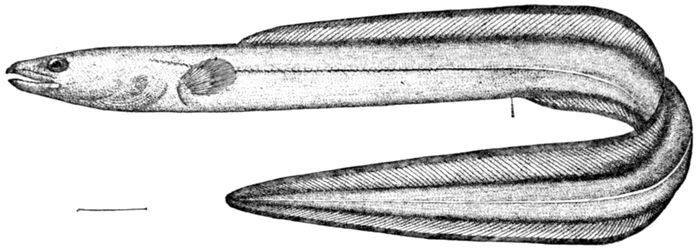
Fig. 105.—Conger-eel, Leptocephalus conger (L.). Noank, Conn.
The Murænesocidæ are large eels remarkable for their strong
knife-like teeth. Murænesox savanna occurs in the West
Indies and in the Mediterranean, Murænesox cinereus in Japan,
and Murænesox coniceps on the west coast of Mexico, all large
and fierce, with teeth like shears. The Myridæ are small and
worm-like eels closely allied to the congers, having the tail
surrounded by a fin, but the nostrils labial. Myrus myrus is
found in the Mediterranean. Species of Eomyrus, Rhynchorhinus,
and Paranguilla apparently allied to Myrus occur in the
Eocene. Other related families, mostly rare or living in the
deep seas, are the Ilyophidæ, Heterocongridæ, and Dysommidæ.

Fig. 106.—Larva of Conger-eel (Leptocephalus conger), called Leptocephalus morrissi. (After Eigenmann.)
The Snake-eels.—Most varied of the families of eels is the
Ophichthyidæ, snake-like eels recognizable by the form of the
tail, which protrudes beyond the fins. Of the many genera found
in tropical waters several are remarkable for the sharply defined
coloration, suggesting that of the snake. Characteristic species
are Chlevastes colubrinus and Leiuranus semicinctus, two beautifully
banded species of Polynesia, living in the same holes in
the reefs and colored in the same fashion. Another is Callechelys
151melanotænia. The commonest species on the Atlantic
coast is the plainly colored Ophichthus gomesi.

Fig 107.—Xyrias revulsus Jordan & Snyder. Family Ophichthyidæ. Misaki, Japan.
In the genus Sphagebranchus, very slender eels of the reefs,
the fins are almost wanting.

Fig. 108.—Myrichthys pantostigmius Jordan & McGregor. Clarion Island.

Fig. 109.—Ophichthus ocellatus (Le Sueur). Pensacola.
Allied to the Congers is the small family of duck-billed eels
(Nettastomidæ) inhabiting moderate depths of the sea. Nettastoma
bolcense occurs in the Eocene of Monte Bolca. The produced
snout forms a transition to the really extraordinary type
of thread-eels or snipe-eels (Nemichthyidæ), of which numerous
genera and species live in the oceanic depths. In Nemichthys
the long, very slender, needle-like jaws are each curved backward
so that the mouth cannot by any possibility be shut.
The body is excessively slender and the fish swims with swift
undulations, often near the surface, and when seen is usually
152taken for a snake. The best-known species is Nemichthys scolopaceus
of the Atlantic and Pacific. Nemichthys
avocetta, very much like it, has been twice taken
in Puget Sound.

Fig. 110.—Thread-eel, Nemichthys avocetta Jordan & Gilbert. Vancouver Island.
Suborder Colocephali, or Morays.—In the
suborder Colocephali (κολός, deficient; κεφαλή,
head) the palatopterygoid arch and the membrane-bones
generally are very rudimentary.
The skull is thus very narrow, the gill-structures
are not well developed, and in the chief
family there are no pectoral fins. This group
is very closely related to the Enchelycephali,
from which it is probably derived.

Fig. 111.—Jaws of Nemichthys avocetta Jordan & Gilbert.
In the great family of morays (Murænidæ)
the teeth are often very highly developed. The
muscles are always very strong and the spines
bite savagely, a live moray being often able to
drive men out of a boat. The skin is thick
and leathery, and the coloration is highly
specialized, the pattern of color being often
elaborate and brilliant. In Echidna zebra for example the body
is wine-brown, with cross-stripes of golden yellow. In Muræna
each nostril has a barbel. Muræna helena, the oldest moray
known, is found in Europe. In Gymnothorax, the largest genus,
only the anterior nostrils are thus provided. Gymnothorax
mordax of California is a large food-fish, as are also the brown
Gymnothorax funebris and the spotted Gymnothorax moringa in
the West Indies. These and many other species may coil themselves
in crevices in the reefs, whence they strike out at their
prey like snakes, taking perhaps the head of a duck or the finger
of a man.
153In many of the morays the jaws are so curved and the
mouth so filled with knife-like teeth that the jaws cannot be
closed. This fact, however, renders no assistance to their prey,
as the teeth are adapted for holding as well as for cutting.
In Enchelynassa bleekeri, a huge wine-colored eel of the South
Seas, the teeth are larger than in any other species. Evenchelys
(macrurus) is remarkable for its extraordinary length of tail,
Echidna for its blunt teeth, and Scuticaria, Uropterygius, and
Channomuræna for the almost complete absence of fins. In
Anarchias (allardicei; knighti), the anal fin is absent. The flesh
of the morays is rather agreeable in taste, but usually oily and
not readily digestible, less wholesome than that of the true eels.
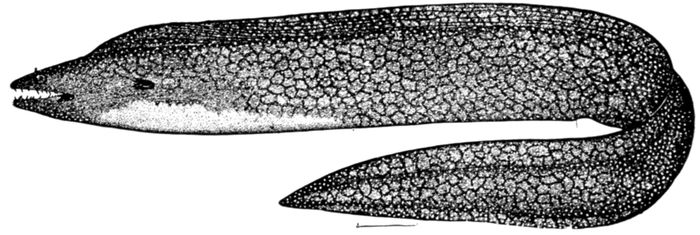
Fig. 112.—Muræna retifera Garman. Charleston, S. C.
The Myrocongridæ are small morays with developed pectoral
fins. The species are few and little known.
Family Moringuidæ.—Structurally one of the most peculiar
of the groups of eels is the small family of Moringuidæ of the
East and West Indies. In these very slender, almost worm-like
fishes the heart is placed very far behind the gills and
the tail is very short. The fins are very little developed, and
some forms, as Gordiichthys irretitus of the Gulf of Mexico, the
body as slender as a whiplash, possess a very great number of
vertebræ. Moringua hawaiiensis occurs in Hawaii, M. edwardsi
in the Bahamas. This family probably belongs with the morays
to the group of Colocephali, although its real relationships are
not wholly certain.
Order Carencheli, the Long-necked Eels.—Certain offshoots from
the Apodes so widely diverging in structure that they must
apparently be considered as distinct orders occur sparingly
in the deep seas. One of these, Derichthys serpentinus, the
long-necked eel, constitutes the sole known species of the suborder
Carencheli (καρά, head; ἔγχελυς, eel). In this group
the premaxillaries and maxillaries are present as in ordinary
fishes, but united by suture and soldered to the cranium. As
in true eels, the shoulder-girdle is remote from the skull. The
head is set on a snake-like neck. The single species representing
the family Derichthyidæ was found in the abysmal depths of
the Gulf Stream.
154
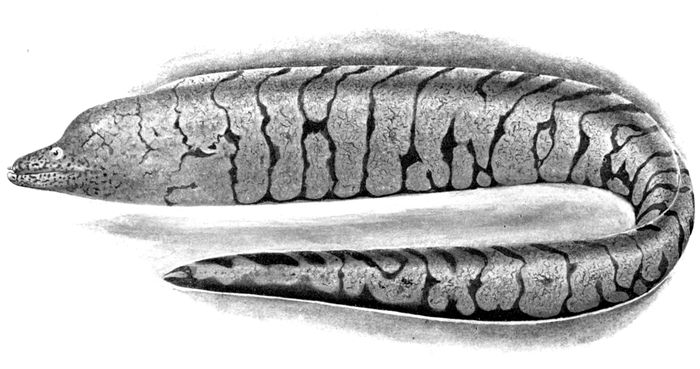
Fig. 113.—Gymnothorax berndti Snyder. Hawaii. Family Murænidæ.
155
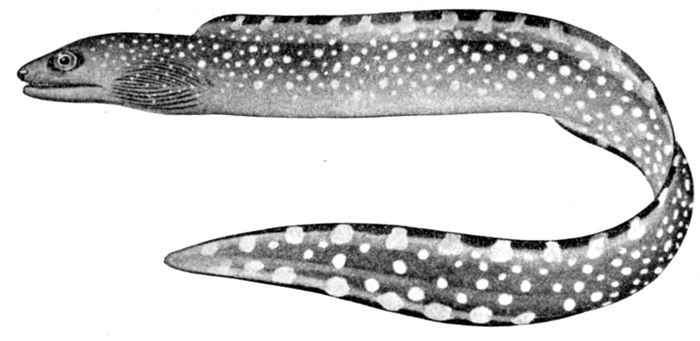
Fig. 114.—Gymnothorax jordani (Evermann & Marsh). Family Murænidæ. Puerto Rico.
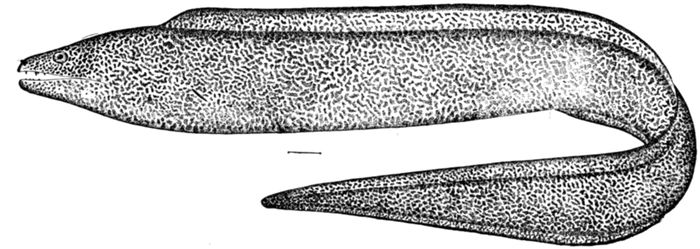
Fig. 115.—Moray, Gymnothorax moringa Bloch. Family Murænidæ. Tortugas.
156

Fig. 116.—Derichthys serpentinus Gill. Gulf Stream.

Fig. 117.—Gulper-eel, Gastrostomus bairdi Gill & Ryder. Gulf Stream.
Order Lyomeri, or Gulpers.—Still more aberrent and in many
respects extraordinary are the eels of the order or suborder
Lyomeri (λυός, loose; μέρος, part), known as "Gulpers."
These are degenerate forms, possibly degraded from some conger-like
type, but characterized by an extreme looseness of
structure unique among fishes. The gill-arches are reduced
to five small bars of bone, not attached to the skull, the palatopterygoid
arch is wholly wanting, the premaxillaries are
wanting, as in all true eels, and the maxillaries loosely joined
to the skull. The symplectic bone is wanting, and the lower jaw
is so hinged to the skull that it swings freely in various directions.
In place of the lateral line are singular appendages.
Dr. Gill says of these fishes: "The entire organization is peculiar
to the extent of anomaly, and our old conceptions of the characteristics
of a fish require to be modified in the light of our
knowledge of such strange beings." Special features are the
extraordinary size of the mouth, which has a cavity larger than
that of the rest of the body, the insertion of the very small
eye at the tip of the snout, and the relative length of the tail.
The whole substance is excessively fragile as usual with animals
living in great depths and the color is jet black. Three species
have been described, and these have been placed in two families,
Saccopharyngidæ, with the trunk (gill-opening to the vent) much
longer than the head, and Eurypharyngidæ, with the trunk very
short, much shorter than the head. The best-known species
is the pelican eel (Eurypharynx pelacanoides), of the coast of
Morocco, described by Vaillant in 1882. Gastrostomus bairdi,
very much like it, occurs in the great depths under the Gulf
Stream. So fragile and so easily distorted are these fishes that
157it is possible that all three are really the same species, for which
the oldest name would be Saccopharynx ampullaceus. Of this
form four specimens have been taken in the Atlantic, one of
them six feet long, carried to the surface through having
swallowed fishes too large to be controlled. To be carried above
its depth in a struggle with its prey is one of the greatest dangers
to which the abysmal fishes are subject.
Order Heteromi.—The order of Heteromi (ἑτερός, different;
ὤμος, shoulder), or spiny eels, may be here noticed for want of
a better place, as its affinities are very uncertain. Some writers
have regarded it as allied to the eels; some have placed it among
the Ganoids. Others have found affinities with the sticklebacks,
and still others with the singular fresh-water fishes called
Mastacembelus. The Heteromi agree with the eels, as well as
with Mastacembelus, in having the scapular arch separate from
the cranium. Unlike all the true eels, most of the species have
true dorsal and anal spines, as in the Percesoces and Hemibranchii.
The ventral fins, when present, are abdominal and
each with several spines in front, a character not found among
the Acanthopteri. There is no mesocoracoid.
The air-bladder has a duct, and the coracoids, much as in
the Xenomi, are reduced to a single lamellar imperforate plate.
The two groups have little else in common, however, and this
trait is possibly primitive in both cases, more likely to have
arisen through independent degeneration. The separation of
the shoulder-girdle doubtless indicates no affinity with the eels,
as the bones of the jaws are quite normal. Two families are
known, both from the deep sea, besides an extinct family in
which spines are not developed.
The Notacanthidæ are elongate, compressed, ending in a band-shaped,
tapering tail; the back has numerous free spines and
few or no soft rays, and the mouth is normal, provided with
teeth. The species of Notacanthus are few and scantily preserved.
Those of Macdonaldia are more abundant. Macdonaldia
challengeri is from the North Pacific, being once taken
off Tokio. The extinct family of Protonotacanthidæ differs in
the total absence of dorsal spines and fin-rays; the single species,
Pronotocanthus sahel-almæ, originally described as a primitive
eel, occurs in the Cretaceous of Mount Lebanon.
158The Lipogenyidæ have a round, sucker-like mouth, with
imperfect lower jaw, but are otherwise similar. Lipogenys
gilli was dredged in the Gulf Stream.

Fig. 118.—Notacanthus phasganorus Goode & Bean. Grand Banks.
Dr. Boulenger has recently extended the group of Heteromi
by the addition of the Dercetidæ, Halosauridæ (Lyopomi), and
the Fierasferidæ. We can hardly suppose that all these forms
are really allied to Notacanthus.
159
CHAPTER VIII
SERIES OSTARIOPHYSI
Ostariophysi.—A large group of orders, certainly of
common descent, may be brought together under the
general name of Ostariophysi (ὀσταρίον, a small bone;
θυσός, inflated). These are in many ways allied to the Isospondyli,
but they have undergone great changes of structure,
some of the species being highly specialized, others variously
degenerate. A chief character is shared by all the species. The
anterior vertebræ are enlarged, interlocked, considerably modified,
and through them a series of small bones connect the air-bladder
with the ear. The air-bladder thus becomes apparently
an organ of hearing through a form of connection which is
lost in all the higher fishes.
In all the members of this group excepting perhaps the degraded
eel-like forms called Gymnonoti, the mesocoracoid arch persists,
a trait found in all the living types of Ganoids, as well as in the
Teleost order of Isospondyli. Other traits of the Ostariophysan
fishes are shared by the Isospondyli (herring, salmon) and other
soft-rayed fishes. The air-bladder is large, but not cellular. It
leads through life by an open duct to the œsophagus. The ventral
fins are abdominal in position. The pectorals are inserted
low. A mesocoracoid arch is developed on the inner side of
the shoulder-girdle. (See Fig. 119.) There are no spines on
the fins, except in many cases a single one, a modified soft ray
at front of dorsal or pectoral. The scales, if present, are cycloid
or replaced by bony plates.
Many of the species have an armature much like that of
the sturgeon, but here the resemblance ends, the bony plates
in the two cases being without doubt independently evolved.
According to Cope, the affinities of the catfishes to the sturgeon
are "seen in the absence of symplectic, the rudimentary maxillary
160bone, and, as observed by Parker, in the interclavicles. There is
also a superficial resemblance in the dermal bones." But it is
not likely that any real affinity exists.

Fig. 119.—Inner view of shoulder-girdle of the Buffalo-fish. Ictiobus bubalus Rafinesque, showing the mesocoracoid (59). (After Starks.)
The sturgeons lack the characteristic
auditory ossicles, or "Weberian apparatus,"
which the catfishes possess in
common with the carp family, the Characins,
and the Gymnonoti. These orders
must at least have a common origin,
although this origin is obscure, and fossil
remains give little help to the solution of
the problem. Probably the ancestors of
the Ostariophysi are to be found among
the allies of the Osteoglossidæ. Gill has
called attention to the resemblance of
Erythrinus to Amia. In any event, all the
Ostariophysi must be considered together,
as it is not conceivable that so complex
a structure as the Weberian apparatus
should have been more than once independently evolved.
The branchiostegals, numerous among the Isospondyli, are
mostly few among the Ostariophysi.
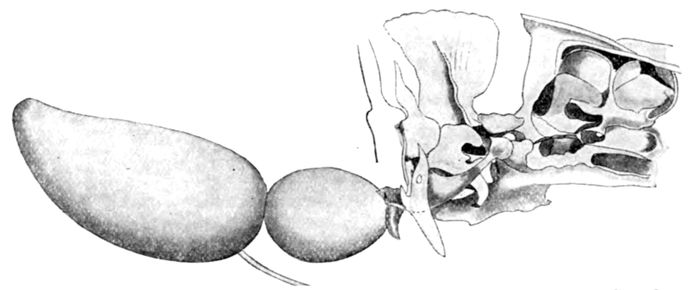
Fig. 120.—Weberian apparatus and air-bladder of Carp. (From Günther, after Weber.)
To the Ostariophysi belong the vast majority of the fresh-water
fishes of the world. Their primitive structure is shown in
many ways; among others by the large number of vertebræ
instead of the usual twenty-four among the more highly specialized
families of fishes. We may group the Ostariophysi under
161four orders: Heterognathi, Eventognathi (Plectospondyli), Nematognathi,
and Gymnonoti.
The Heterognathi.—Of these the order of Heterognathi seems
to be the most primitive, but in some ways the most highly developed,
showing fewer traits of degeneration than any of the
others. The presence of the adipose fin in this group and in
the catfishes seems to indicate some sort of real affinity with
the salmon-like forms, although there has been great change in
other regards.
The order Heterognathi, or Characini (ἕτερος, different; γνάθος,
jaw), contains those Ostariophysi which retain the mesocoracoid
and are not eel-like, and which have the lower pharyngeals
developed as in ordinary fishes. In most cases an adipose
fin is present and there are strong teeth in the jaws. There are
no pseudobranchiæ, and, as in the Cyprinidæ, usually but three
branchiostegals. The Characidæ constitute the majority of the
fresh-water fishes in those regions which have neither Cyprinidæ
nor Salmonidæ. Nearly four hundred species are known from
the rivers of South America and Africa. A single species,
Tetragonopterus argentatus, extends its range northward to the
Rio Grande in Texas. None are found in Asia, Europe, or, with
this single exception, in the United States. Most of them are
small fishes with deep bodies and very sharp, serrated, incisor-like
teeth. Some are as innocuous as minnows, which they very
much resemble, but others are extremely voracious and destructive
in the highest degree. Of the caribe, belonging to the
genus Serrasalmo, known by its serrated belly, Dr. Günther
observes:
"Their voracity, fearlessness and number render them a
perfect pest in many rivers of tropical America. In all the
teeth are strong, short, sharp, sometimes lobed incisors, arranged
in one or more series; by means of them they cut off a mouthful
of flesh as with a pair of scissors; and any animal falling
into the water where these fish abound is immediately attacked
and cut to pieces in an incredibly short time. They assail
persons entering the water, inflicting dangerous wounds before
the victims are able to make their escape. In some localities
it is scarcely possible to catch fishes with the hook and line, as
the fish hooked is immediately attacked by the 'caribe' (as
162these fish are called), and torn to pieces before it can be withdrawn
from the water. The caribes themselves are rarely
hooked, as they snap the hook or cut the line. The smell of
blood is said to attract at once thousands of these fishes to the
spot."
Two families of Heterognathi are recognized: the Erythrinidæ,
which lack the adipose fin, and the Characidæ, in which
this fin is developed. The Erythrinidæ are large pike-like
fishes of the South American rivers, robust and tenacious of
life, with large mouths armed with strong unequal teeth. The
best-known species is the Trahira (Hoplias malabaricus).
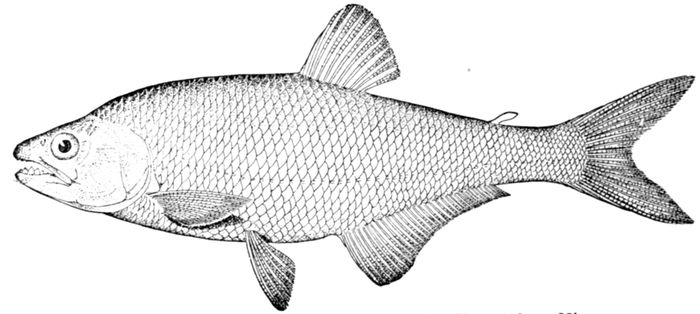
Fig. 121.—Brycon dentex Günther. Family Characidæ. Nicaragua.
Among the Characidæ, Serrasalmo has been already noticed.
Citharinus in Africa has very few teeth, and Curimatus in South
America none at all. Nannocharax in Africa is composed of
very diminutive fishes, Hydrocyon exceedingly voracious ones,
reaching a length of four feet, with savage teeth. Many of the
species are allies of Tetragonopterus, small, silvery, bream-like
fishes with flat bodies and serrated incisor teeth. Most of these
are American. A related genus is Brycon, found in the streams
about the Isthmus of Panama.
Extinct Characins are very rare. Two species from the Tertiary
lignite of São Paulo, Brazil, have been referred to Tetragonopterus—T. avus
and T. ligniticus.
The Eventognathi.—The Eventognathi (ἔυ, well; ἔν, within;
γνάθος, jaw) are characterized by the absence of teeth in the
jaws and by the high degree of specialization of the lower pharyngeals,
163which are scythe-shaped and in typical forms are armed
with a relatively small number of highly specialized teeth of
peculiar shape and arranged in one, two, or three rows. In
all the species the gill-openings are restricted to the sides; there is
no adipose fin, and the broad, flat branchiostegals are but three
in number. In all the species the scales, if present, are cycloid,
and the ventral fins, of course, abdominal. The modification
of the four anterior vertebræ and their connection with the
air bladder are essentially as seen in the catfishes.
The name Plectospondyli is often used for this group (πλεκτός,
interwoven; σπόνδυλος, vertebra), but that term originally included
the Characins as well.
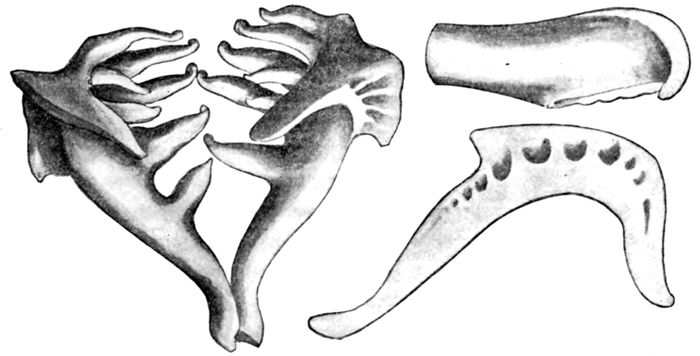
Fig. 122.—Pharyngeal bones and teeth of European Chub, Leuciscus cephalus (Linnæus). (After Seelye.)
The Cyprinidæ.—The chief family of the Eventognathi and the
largest of all the families of fishes is that of Cyprinidæ, comprising
200 genera and over 2000 species, found throughout the north temperate
zone but not extending to the Arctic Circle on the north,
nor much beyond the Tropic of Cancer on the south. In this
family belong all the fishes known as carp, dace, chub, roach,
bleak, minnow, bream, and shiner. The essential character of the
family lies in the presence of one, two, or three rows of highly
specialized teeth on the lower pharyngeals, the main row containing
4, 5, 6, or 7 teeth, the others 1 to 3. The teeth of the
main row differ in form according to the food of the fish. They
may be coarse and blunt, molar-like in those which feed on shells;
164they may be hooked at tip in those which eat smaller fishes;
they may be serrated or not; they may have an excavated
"grinding surface," which is most developed in the species which
feed on mud and have long intestines. In the Cyprinidæ, or
carp family, the barbels are small or wanting, the head is naked,
the caudal fin forked, the mouth is toothless and without sucking
lips, and the premaxillaries form its entire margin. With
a few exceptions the Cyprinidæ are small and feeble fishes.
They form most of the food of the predatory river fishes, and
their great abundance in competition with these is due to their
fecundity and their insignificance. They spawn profusely and
find everywhere an abundance of food. Often they check the
increase of predatory fish by the destruction of their eggs.
In many of the genera the breeding color of the males is
very brilliant, rendering these little creatures for a time the
most beautifully colored of fishes. In spring and early summer
the fins, sides, and head in the males are often charged with pigment,
the prevailing color of which is rosy, though often satin-white,
orange, crimson, yellow, greenish, or jet black. Among
American genera Chrosomus, Notropis, and Rhinichthys are most
highly colored. Rhodeus, Rutilus, and Zacco in the Old World
are also often very brilliant.
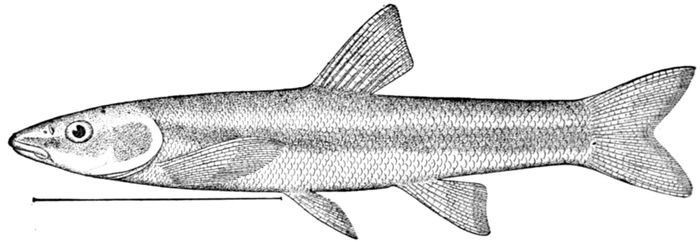
Fig. 123.—Black-nosed Dace, Rhinichthys dulcis Girard. Yellowstone River.
In very many species, especially in America, the male in
the breeding season is often more or less covered with small,
grayish tubercles or pearly bodies, outgrowths of the epidermis.
These are most numerous on the head and fall off after the
breeding season. They are most developed in Campostoma.
The Cyprinidæ are little valued as food-fishes. The carp,
largely domesticated in small ponds for food, is coarse and
165tasteless. Most of the others are flavorless and full of small
bones. One species, Opsariichthys uncirostris, of Japan is an
exception in this regard, being a fish of very delicate flavor.
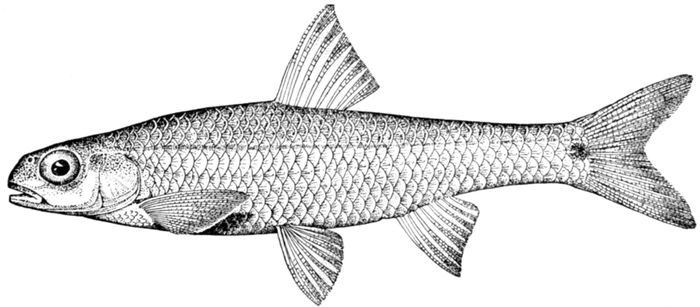
Fig. 124.—White Chub, Notropis hudsonius (Clinton). Kilpatrick Lake, Minn.

Fig. 125.—Silver-jaw Minnow, Ericymba buccata Cope. Defiance, Ohio.
In America 225 species of Cyprinidæ are known. One hundred
of these are now usually held to form the single genus
Notropis. This includes the smaller and weaker species, from
two to seven inches in length, characterized by the loss, mostly
through degeneration, of special peculiarities of mouth, fins, and
teeth. These have no barbels and never more than four teeth
in the main row. Few, if any, Asiatic species have so small
a number, and in most of these the maxillary still retains its
rudimentary barbel. But one American genus (Orthodon) has
more than five teeth in the main row and none have more than
two rows or more than two teeth in the lower row. By these
and other peculiarities it would seem that the American species
are at once less primitive and less complex than the Old World
166forms. There is some evidence that the group is derived from
Asia through western America, the Pacific Coast forms being
much nearer the Old World types than the forms inhabiting the
Mississippi Valley. Not many Cyprinidæ are found in Mexico,
none in Cuba, South America, Australia, Africa, or the islands
to the eastward of Borneo. Many species are very widely
distributed, many others extremely local. In the genus Notropis,
each river basin in the Southern States has its series of different
and mostly highly colored species. The presence of Notropis
niveus in the Neuse, Notropis pyrrhomelas in the Santee, Notropis
zonistius in the Chattahoochee, Notropis callistius, trichroistius,
and stigmaturus in the Alabama, Notropis whipplei in
the Mississippi, Notropis galacturus in the Tennessee, and Notropis
cercostigma in the Sabine forms an instructive series in this
regard. These fishes and the darters (Etheostominæ) are, among
American fishes, the groups best suited for the study of local
problems in distribution.
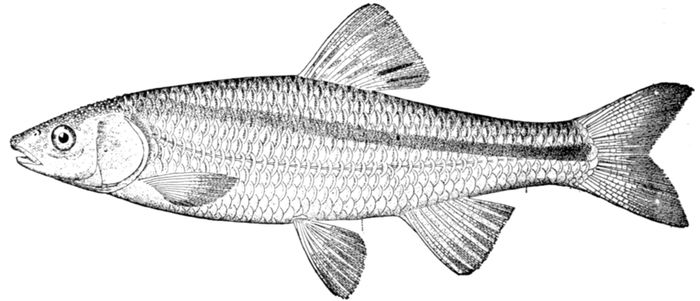
Fig. 126.—Silverfin, Notropis whipplei (Girard). White River, Indiana. Family Cyprinidæ.
Species of Dace and Shiner.—Noteworthy species in other
genera are the following:
Largest and best known of the species of Notropis is the
familiar shiner or redfin, Notropis cornutus, found in almost
every brook throughout the region east of the Missouri River.
Campostoma anomalum, the stone-roller, has the very long
intestines six times the length of its body, arranged in fifteen
coils around the air-bladder. This species feeds on mud and
spawns in little brooks, swarming in early spring throughout
167the Mississippi Valley, and is notable for its nuptial tubercles
and the black and orange fins.
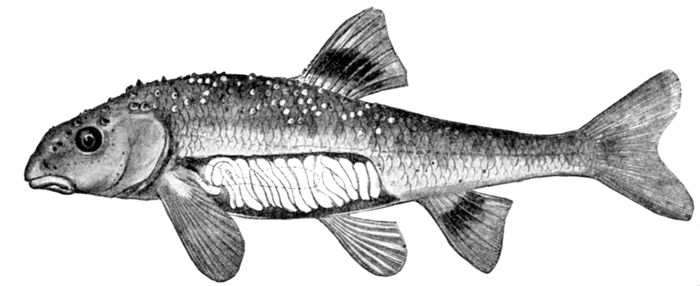
Fig. 127.—Stone-roller, Campostoma anomalum (Rafinesque). Family Cyprinidæ. Showing nuptial tubercles and intestines coiled about the air-bladder.
In the negro-chub, Exoglossum maxillingua of the Pennsylvanian
district, the rami of the lower jaw are united for their
whole length, looking like a projecting tongue.
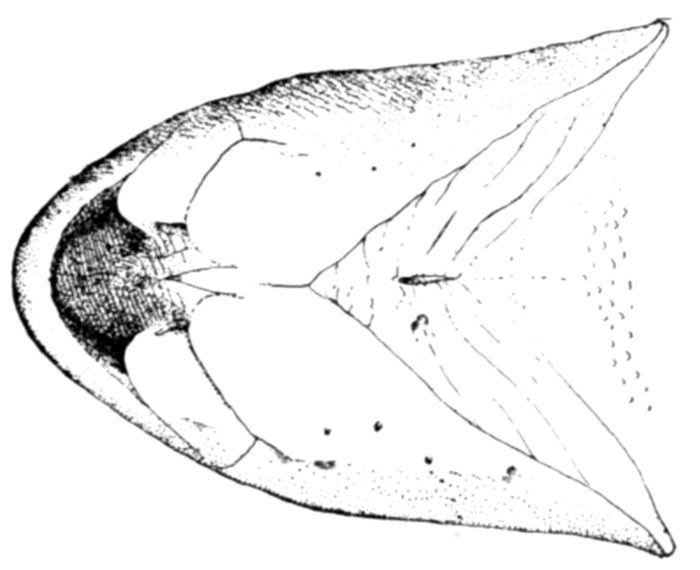
Fig. 128.—Head of Day-chub, Exoglossum maxillingua (Le Sueur). Shenandoah River.
The fallfish, Semotilus corporalis, is the largest chub of the
Eastern rivers, 18 inches long, living in swift, clear rivers. It
is a soft fish, and according to
Thoreau "it tastes like brown
paper salted" when it is cooked.
Close to this is the horned dace,
Semotilus atromaculatus, and the
horny head, Hybopsis kentuckiensis,
both among the most widely
distributed of our river fishes.
These are all allied to the gudgeon
(Gobio gobio), a common boys' fish
of the rivers of Europe, and much
sought by anglers who can get
nothing better. The bream,
Abramis, represented by numerous species in Europe, has a deep
compressed body and a very long anal fin. It is also well represented
in America, the golden shiner, common in Eastern and
Southern streams, being Abramis chrysoleucus. The bleak of
Europe (Alburnus alburnus) is a "shiner" close to some of our
species of Notropis, while the minnow of Europe, Phoxinus
phoxinus, resembles our gorgeously colored Chrosomus erythrogaster.
168Other European forms are the roach (Rutilus rutilus),
the chub (Leuciscus cephalus), the dace (Leuciscus leuciscus),
the id (Idus idus), the redeye (Scardinius erythropthalmus),
and the tench (Tinca tinca). The tench is the largest of the
European species, and its virtues with those of its more or less
insignificant allies are set forth in the pages of Izaak Walton.
All of these receive more attention from anglers in England
than their relatives receive in America. All the American
Cyprinidæ are ranked as "boys' fish," and those who seek the
trout or black bass or even the perch or crappie will not notice
them. Thoreau speaks of the boy who treasures the yellow
perch as a real fish: "So many unquestionable fish he counts,
then so many chubs which he counts, then throws away."
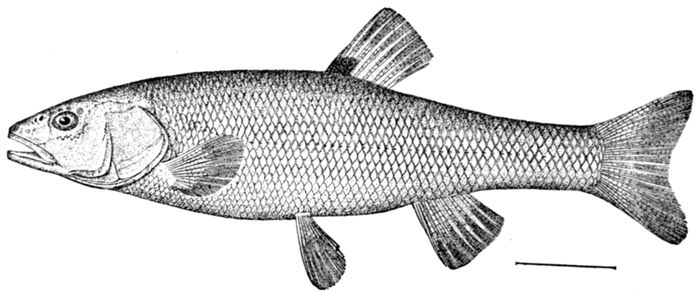
Fig. 129.—Horned Dace, Semotilus atromaculatus (Mitchill). Aux Plaines River, Ill. Family Cyprinidæ.
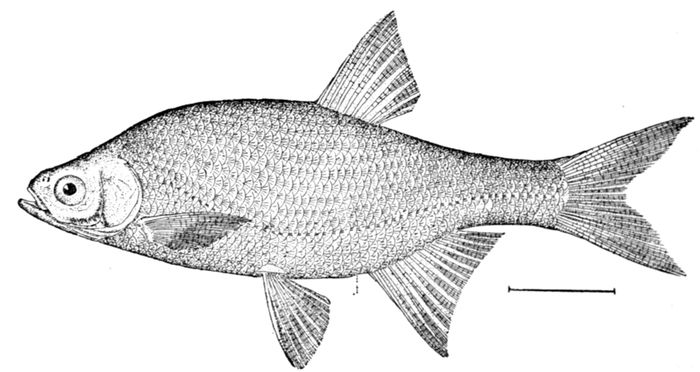
Fig. 130.—Shiner, Abramis chrysoleucus (Mitchill). Hackensack River, N. J.
169

Fig. 131.—The Squawfish, Ptychocheilus grandis Agassiz. (Photograph by Cloudsley Rutter.)
Chubs of the Pacific Slope.—In the Western waters are numerous
genera, some of the species reaching a large size. The species
of squawfish (Ptychocheilus lucius in the Colorado, Ptychocheilus
grandis in the Sacramento, and Ptychocheilus oregonensis in the
Columbia) reach a length of 4 or 5 feet or even more. These
fishes are long and slender, with large toothless mouths and
the aspect of a pike.
Allied to these are the "hard tails" (Gila elegans and Gila
robusta) of the Colorado Basin, strange-looking fishes scarcely
eatable, with lean bodies, flat heads, and expanded tails. The
split-tail, Pogonichthys macrolepidotus, is found in the Sacramento.
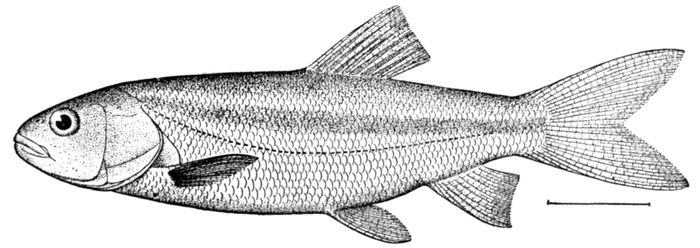
Fig. 132.—Chub of the Great Basin, Leuciscus lineatus (Girard). Heart Lake, Yellowstone Park. Family Cyprinidæ.
In the chisel-mouth, Acrocheilus alutaceus, of the Columbia
the lips have a hard cutting edge. In Meda, very small fishes
of the Colorado Basin, the dorsal has a compound spine of
peculiar structure. Many of the species of Western waters
belong to the genus Leuciscus, which includes also many species
170of Asia and Europe. The common Japanese dace (Leuciscus
hakuensis) is often found out in the sea, but, in general,
Cyprinidæ are only found in fresh waters. The genus of
barbels (Barbus) contains many large species in Europe and
Asia. In these the barbel is better developed than in most
other genera, a character which seems to indicate a primitive
organization. Barbus mosal of the mountains of India is said
to reach a length of more than six feet and to have "scales
as large as the palm of the hand."
The Carp and Goldfish.—In the American and European Cyprinidæ
the dorsal fin is few-rayed, but in many Asiatic species it is
longer, having 15 to 20 rays and is often preceded by a serrated
spine like that of a catfish. Of the species with long
dorsal the one most celebrated is the carp (Cyprinus carpio).
This fish is a native of the rivers of China, where it has been
domesticated for centuries. Nearly three hundred years ago it
was brought to northern Europe, where it has multiplied in
domestication and become naturalized in many streams and
ponds. Of late years the cultivation of the carp has attracted
much attention in America. It has been generally satisfactory
where the nature of the fish is understood and where expectations
have not been too high.
The carp is a dull and sluggish fish, preferring shaded, tranquil,
and weedy waters with muddy bottoms. Its food consists
of water insects and other small animals, and vegetable
matter, such as the leaves of aquatic plants. They can be
fed on much the same things as pigs and chickens, and they
bear much the same relation to trout and bass that pigs and
chickens do to wild game and game-birds. The carp is a very
hardy fish, grows rapidly, and has immense fecundity, 700,000
eggs having been found in the ovaries of a single individual.
It reaches sometimes a weight of 30 to 40 pounds. As a food-fish
the carp cannot be said to hold a high place. It is tolerated
in the absence of better fish.
The carp, either native or in domestication, has many enemies.
In America, catfish, sunfish, and pike prey upon its eggs
or its young, as well as water-snakes, turtles, kingfishes, crayfishes,
and many other creatures which live about our ponds
and in sluggish streams. In domestication numerous varieties
171of carp have been formed, the "leather-carp" (Lederkarpfen)
being scaleless, others, "mirror-carp" (Spiegelkarpfen), having
rows of large scales only along the lateral line or the bases of
the fins.
Closely allied to the carp is the goldfish (Carassius auratus).
This is also a common Chinese fish introduced in domestication
into Europe and America. The golden-yellow color is found
only in domesticated specimens, and is retained by artificial
selection. The native goldfish is olivaceous in color, and where
the species has become naturalized (as in the Potomac River,
where it has escaped from fountains in Washington) it reverts
to its natural greenish hue. The same change occurs in the
rivers of Japan. The goldfish is valued solely for its bright
colors as an ornamental fish. It has no beauty of form nor
any interesting habits, and many of our native fishes (Percidæ,
Cyprinidæ) far excel it in attractiveness as aquarium fishes.
Unfortunately they are less hardy. Many varieties and monstrosities
of the goldfish have been produced by domestication.
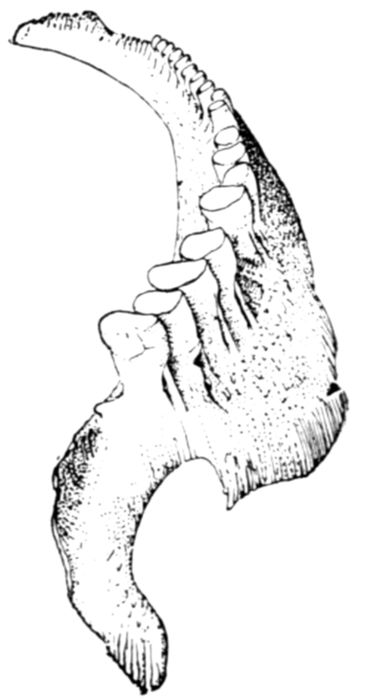
Fig. 133.—Lower pharyngeal of Placopharynx duquesnii (Le Sueur).
The Catostomidæ.—The suckers, or Catostomidæ, are an offshoot
from the Cyprinidæ, differing chiefly in the structure of the
mouth and of the lower pharyngeal bones.
The border of the mouth above is formed
mesially by the small premaxillaries and
laterally by the maxillaries. The teeth of
the lower pharyngeals are small and very
numerous, arranged in one series like the
teeth of a comb. The lips are usually thick
and fleshy, and the dorsal fin is more or less
elongate (its rays eleven to fifty in number),
characters which distinguish the suckers from
the American Cyprinidæ generally, but not
from those of the Old World.
About sixty species of suckers are known,
all of them found in the rivers of North
America except two, which have been recorded
on rather uncertain authority from
Siberia and China. Only two or three of
the species extend their range south of the
Tropic of Cancer into Mexico or Central America, and none
172occur in Cuba nor in any of the neighboring islands. The
majority of the genera are restricted to the region east of the
Rocky Mountains, although species of Catostomus, Chasmistes,
Deltistes, Xyrauchen, and Pantosteus are found in abundance
in the Great Basin and the Pacific slope.
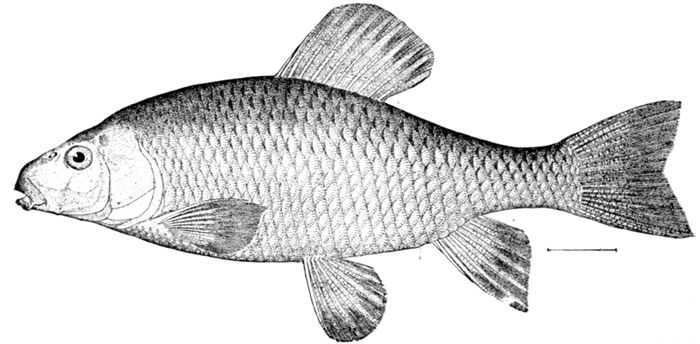
Fig. 134.—Creekfish or Chub-sucker, Erimyzon sucetta (Lacépède). Nipisink Lake, Illinois. Family Catostomidæ.
In size the suckers range from six inches in length to about
three feet. As food-fishes they are held in low esteem, the flesh
of all being flavorless and excessively full of small bones. Most
of them are sluggish fishes; they inhabit all sorts of streams,
lakes, and ponds, but even when in mountain brooks they
gather in the eddies and places of greatest depth and least
current. They feed on insects and small aquatic animals,
and also on mud, taking in their food by suction. They are not
very tenacious of life. Most of the species swarm in the spring
in shallow waters. In the spawning season they migrate up
smaller streams than those otherwise inhabited by them. The
large species move from the large rivers into smaller ones; the
small brook species go into smaller brooks. In some cases
the males in spring develop black or red pigment on the body
or fins, and in many cases tubercles similar to those found in
the Cyprinidæ appear on the head, body, and anal and caudal
fins.
173
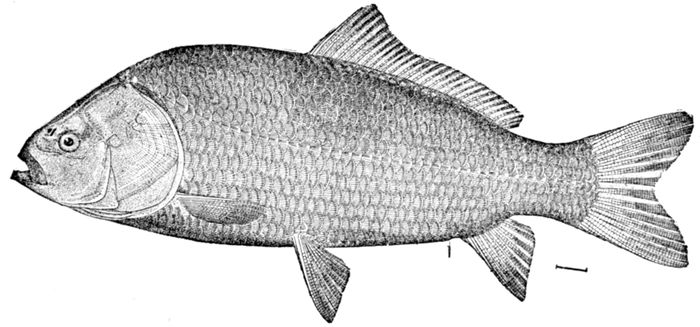
Fig. 135.—Buffalo-fish, Ictiobus cyprinella (Cuv. & Val.). Normal, Ill.
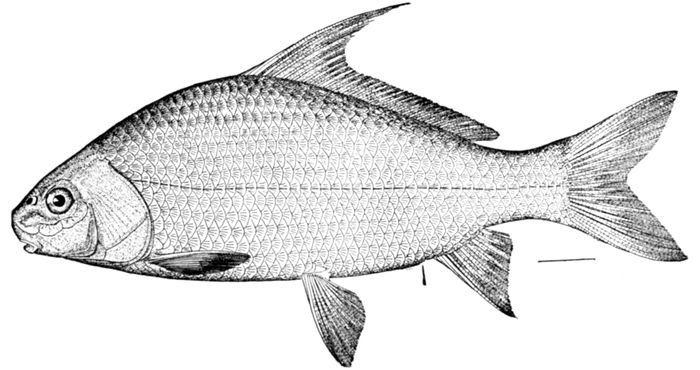
Fig. 136.—Carp-sucker, Carpiodes cyprinus (Le Sueur). Havre de Grace.
The buffalo-fishes and carp-suckers, constituting the genera
Ictiobus and Carpiodes, are the largest of the Catostomidæ, and
bear a considerable resemblance to the carp. They have the
dorsal fin many rayed and the scales large and coarse. They
abound in the large rivers and lakes between the Rocky Mountains
and the Alleghanies, one species being found in Central America
and a species of a closely related genus (Myxocyprinus asiaticus)
being reported from eastern Asia. They rarely ascend the
smaller rivers except for the purpose of spawning. Although
so abundant in the Mississippi Valley as to be of importance
commercially, they are very inferior as food-fishes, being coarse
and bony. The genus Cycleptus contains the black-horse, or
Missouri sucker, a peculiar species with a small head, elongate
174body, and jet-black coloration, which comes up the smaller
rivers tributary to the Mississippi and Ohio in large numbers
in the spring. Most of the other suckers belong to the genera
Catostomus and Moxostoma, the latter with the large-toothed
Placopharynx being known, from the red color of the fins, as
red-horse, the former as sucker. Some of the species are very
widely distributed, two of them (Catostomus commersoni, Erimyzon
sucetta) being found in almost every stream east of the
Rocky Mountains and Catostomus catostomus throughout Canada
to the Arctic Sea. The most peculiar of the suckers in appearance
is the harelip sucker (Quassilabia lacera) of the Western
rivers. Very singular in form is the humpback or razor-back
sucker of the Colorado, Xyrauchen cypho.
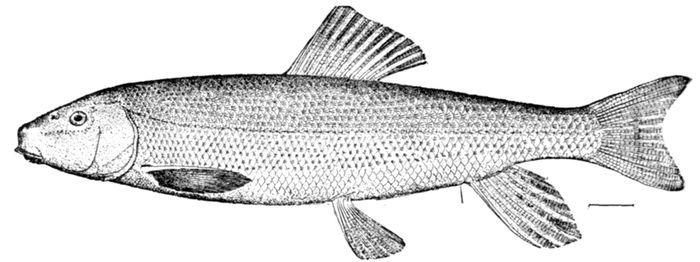
Fig. 137.—Common Sucker, Catostomus commersoni (Le Sueur). Ecorse, Mich.
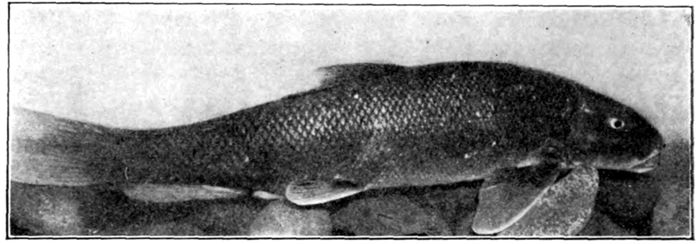
Fig. 138.—California Sucker, Catostomus occidentalis Agassiz. (Photograph by Cloudsley Rutter.)
Fossil Cyprinidæ.—Fossil Cyprinidæ, closely related to existing
forms, are found in abundance in fresh-water deposits of the
Tertiary, but rarely if ever earlier than the Miocene. Cyprinus
175priscus occurs in the Miocene of Germany, perhaps showing that
Germany was the original home of the so-called "German carp,"
afterwards actually imported to Germany
from China. Some specimens referred to
Barbus, Tinca, Rhodeus, Aspius, and
Gobio are found in regions now inhabited
by these genera, and many species are
referred to the great genus Leuciscus, Leuciscus
œningensis from the Miocene of
Germany being perhaps the best known.
Several species of Leuciscus or related
genera are found in the Rocky Mountain
region. Among these is the recently described
Leuciscus turneri.

Fig. 139.—Pharyngeal teeth of Oregon Sucker, Catostomus macrocheilus.
Fossil Catostomidæ are very few and
chiefly referred to the genus Amyzon,
supposed to be allied to Erimyzon, but
with a longer dorsal. Amyzon commune
and other species are found in the Rocky
Mountains, especially in the Miocene of the South Park in Colorado
and the Eocene of Wyoming. Two or three species of
Catostomus, known by their skulls, are found in the Pliocene
of Idaho.
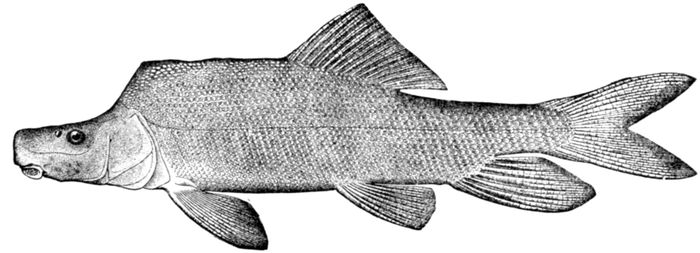
Fig. 140.—Razor-back Sucker, Xyrauchen cypho (Lockington). Green River, Utah.
The Loaches.—The Cobitidæ, or loaches, are small fishes, all
less than a foot in length, inhabiting streams and ponds of
Europe and Asia. In structure they are not very different from
minnows, but they are rather eel-like in form, and the numerous
176long barbels about the mouth strongly suggest affinity with
the catfishes. The scales are small, the pharyngeal teeth few,
and the air-bladder, as in most small catfishes, enclosed in a
capsule. The loaches are all bottom fishes of dark colors,
tenacious of life, feeding on insects and worms. The species
often bury themselves in mud and sand. They lie quiet on
the bottom and move very quickly when disturbed much after
the manner of darters and gobies. Species of Cobitis and Misgurnus
are widely distributed from England to Japan. Nemachilus
barbatulus is the commonest European species. Cobitis
tænia is found, almost unchanged, from England to the streams
of Japan.
Remains of fossil loaches, mostly indistinguishable from
Cobitis, occur in the Miocene and more recent rocks.
From ancestors of loaches or other degraded Cyprinidæ we
may trace the descent of the catfishes.
The Homalopteridæ are small loaches in the mountain streams
of the East Indies. They have no air-bladder and the number
of pharyngeal teeth (10 to 16) is greater than in the loaches,
carp, or minnows.
177
CHAPTER IX
THE NEMATOGNATHI, OR CATFISHES
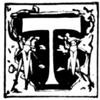
The Nematognathi.—The Nematognathi (νῆμα, thread;
γνάθος, jaw), known collectively as catfishes, are
recognized at once by the fact that the rudimentary
and usually toothless maxillary is developed as the bony base
of a long barbel or feeler. Usually other feelers are found around
the head, suggesting the "smellers" of a cat. The body is
never scaly, being either naked and smooth or else more or less
completely mailed with bony plates which often resemble
superficially those of a sturgeon. Other distinctive characters
are found in the skeleton, notably the absence of the subopercle,
but the peculiar development of the maxillary and its barbel
with the absence of scales is always distinctive. The symplectic
is usually absent, and in some the air-bladder is reduced to a
rudiment inclosed in a bony capsule. In almost all cases a
stout spine exists in the front of the dorsal fin and in the front
of each pectoral fin. This spine, made of modified or coalescent
soft rays, is often a strong weapon with serrated edges and
capable of inflicting a severe wound. When the fish is alarmed,
it sets this spine by a rotary motion in its socket joint. It can
then be depressed only by breaking it. By a rotary motion
upward and toward the body the spine is again lowered. The
wounds made by this spine are often painful, but this fact is
due not to a specific poison but to the irregular cut and to the
slime of the spine.
In two genera, Noturus and Schilbeodes, a poison-gland exists
at the base of the pectoral spine, and the wound gives a sharp
pain like the sting of a hornet and almost exactly like the sting
of a scorpion-fish. Most of the Nematognathi possess a fleshy
or adipose fin behind the dorsal, exactly as in the salmon. In
178a few cases the adipose fin develops an anterior spine and
occasionally supporting rays.
All the Nematognathi are carnivorous bottom feeders, devouring
any prey they can swallow. Only a few enter the
sea, and they occur in the greatest abundance in the Amazon
region. Upward of 1200 species, arranged in 150 genera, are
recorded. They vary greatly in size, from two inches to six feet
in length. All are regarded as food-fishes, but the species in
the sea have very tough and flavorless flesh. Some of the
others are extremely delicate, with finely flavored flesh and a
grateful absence of small bones.
Families of Nematognathi.—According to Dr. Eigenmann's
scheme of classification,[11] the most primitive family of Nematognathi
is that of Diplomystidæ, characterized by the presence
of a well-developed maxillary, as in other soft-rayed fishes.
The single species, Diplomystes papillosus, is found in the waters
of Chile.
Similar to the Diplomystidæ in all other respects is the great
central family of Siluridæ, by far the most numerous and important
of all the divisions of Nematognathi.
The Siluridæ.—This group has the skin naked or imperfectly
mailed, the barbels on the head well developed, the dorsal short,
inserted forward, the adipose fin without spine, and the lower
pharyngeals separate. All the marine catfishes and most of
the fresh-water species belong to this group, and its members,
some 700 species, abound in all parts of the world where catfishes
are known—"a bloodthirsty and bullying race of rangers
inhabiting the river bottoms with ever a lance at rest and ready
to do battle with their nearest neighbor."
The Sea Catfish.—In the tropical seas are numerous species of
catfishes belonging to Tachysurus, Arius, Galeichthys, Felichthys,
and other related genera. These are sleek, silvery fishes
covered with smooth skin, the head usually with a coat of mail,
pierced by a central fontanelle. Some of them reach a considerable
size, swarming in sandy bays. None are valued as food,
being always tough and coarsely flavored. Sea birds, as the
pelican, which devour these catfishes are often destroyed by
179the sudden erection of the pectoral spines. None of these are
found in Europe or in Japan. Of the very many American
species the gaff-topsail catfish (Felichthys felis), noted for its
very high spines, extends farthest north and is one of the
very largest species. This genus has two barbels at the chin.
Most others have four. The commonest sea catfish of the
Carolina coast is Galeichthys milberti. In Tachysurus the teeth
on the palate are rounded, in most of the others they are in
villiform bands.
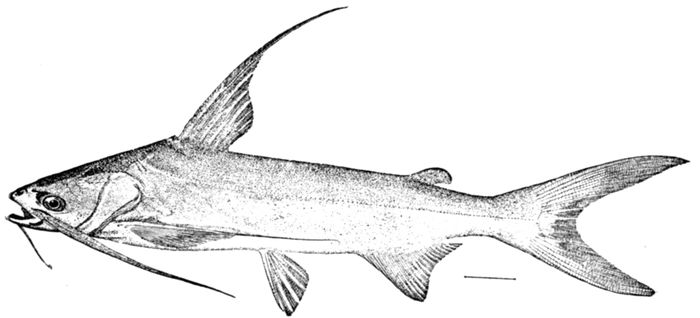
Fig. 141.—Gaff-topsail Cat, Felichthys felis (L.). Wood's Hole.
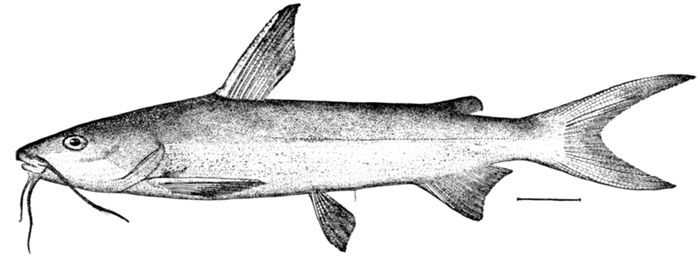
Fig. 142.—Sea Catfish, Galeichthys milberti (Cuv. & Val.). Pensacola.
In most or all of the sea catfish the eggs, as large as small
peas, are taken into the mouth of the male and there cared
for until hatched.
The Channel Cats.—In all the rivers of North America east
of the Rocky Mountains are found catfishes in great variety.
The channel cats, Ictalurus, known most readily by the forked
tails, are the largest in size and most valued as food. The technical
180character of the genus is the backward continuation of the
supraoccipital, forming a bony bridge to the base of the dorsal.
The great blue cat, Ictalurus furcatus, abounds throughout the
large rivers of the Southern States and reaches a weight of 150
pounds or more. It is an excellent food and its firm flesh is readily
cut into steaks. In the Great Lakes and northward is a very
similar species, also of large size, which has been called Ictalurus
lacustris. Another similar species is the willow cat, Ictalurus
anguilla. The white channel-cat, Ictalurus punctatus, reaches a
much smaller size and abounds on the ripples in clear swift
streams of the Southwest, such as the Cumberland, the Alabama,
and the Gasconade. It is a very delicate food-fish, with tender
white flesh of excellent flavor.

Fig. 143.—Channel Catfish, Ictalurus punctatus (Rafinesque). Illinois River. Family Siluridæ.
Horned Pout.—The genus Ameiurus includes the smaller brown
catfish, horned pout, or bullhead. The body is more plump and
the caudal fin is usually but not always rounded. The many
species are widely diffused, abounding in brooks, lakes, and
ponds. Ameiurus nebulosus is the best-known species, ranging
from New England to Texas, known in the East as horned pout.
It has been successfully introduced into the Sacramento, where
it abounds, as well as its congener, Ameiurus catus (see Fig.
229, Vol. I), the white bullhead, brought with it from the Potomac.
The latter species has a broader head and concave or notched tail.
All the species are good food-fishes. All are extremely tenacious
of life, and all are alike valued by the urchin, for they will bite
vigorously at any sort of bait. All must be handled with care,
for the sharp pectoral spines make an ugly cut, a species of
181wound from which few boys' hands in the catfish region are
often free.
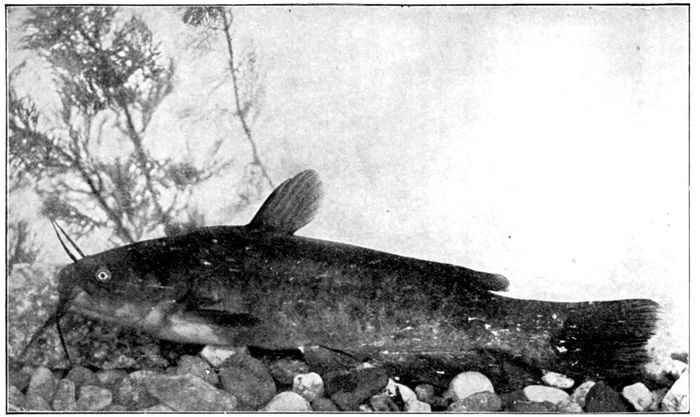
Fig. 144.—Horned pout, Ameiurus nebulosus (Le Sueur). (From life by Dr. R. W. Shufeldt.)
In the caves about Conestoga River in Lancaster County,
Pennsylvania, is a partly blind catfish, evidently derived from
local species outside the cave. It has been named Gronias
nigrilabris.
A few species are found in Mexico, one of them, Ictalurus
182meridionalis, as far south as Rio Usamacinta on the boundary of
Guatemala.
Besides these, a large channel-cat of peculiar dentition,
known as Istlarius balsanus, abounds in the basin of Rio Balsas.
In Mexico all catfishes are known as Bagre, this species as
Bagre de Rio.
The genus Leptops includes the great yellow catfish, or
goujon, known at once by the projecting lower jaw. It is a
mottled olive and yellow fish of repulsive exterior, and it reaches
a very great size. It is, however, a good food-fish.
The Mad-toms.—The genera Noturus and Schilbeodes are
composed of diminutive catfishes, having the pectoral spine
armed at base, with a poison sac which renders its sting extremely
painful though not dangerous. The numerous species
of this genus, known as "mad-toms" and "stone cats," live
among weeds in brooks and sluggish streams. Most of them
rarely exceed three inches in length, and their varied colors
make them attractive in the aquarium.
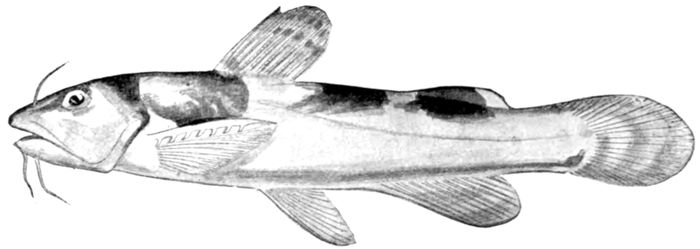
Fig. 145.—Mad-tom, Schilbeodes furiosus Jordan & Meek. Showing the poisoned pectoral spine. Family Siluridæ. Neuse River.
The Old World Catfishes.—In the catfishes of the Old World
and their relatives, the adipose fin is rudimentary or wanting.
The chief species found in Europe is the huge sheatfish, or wels,
Silurus glanis. This, next to the sturgeon, is the largest river fish
in Europe, weighing 300 to 400 pounds. It is not found in England,
France, or Italy, but abounds in the Danube. It is a lazy
fish, hiding in the mud and thus escaping from nets. It is very
voracious, and many stories are told of the contents of its
stomach. A small child swallowed whole is recorded from
Thorn, and there are still more remarkable stories, but not
183properly vouched for. The sheatfish is brown in color, naked,
sleek, and much like an American Ameiurus save that its tail
is much longer and more eel-like. Another large catfish, known
to the ancients, but only recently rediscovered by Agassiz and
Garman, is Parasilurus aristotelis of the rivers of Greece. In
China and Japan is the very similar Namazu, or Japanese catfish,
Parasilurus asotus, often found in ponds and used as food.
Numerous smaller related catfishes, Porcus (Bagrus), Pseudobagrus,
and related genera swarm in the brooks and ponds of the
Orient.

Fig. 146.—Electric Catfish, Torpedo electricus (Gmelin). Congo River. (After Boulenger.)
In the genus Torpedo (Malapterurus) the dorsal fin is wanting.
Torpedo electricus, the electric catfish of the Nile, is a species
of much interest to anatomists. The shock is like that of a
Leyden jar. The structures concerned are noticed on p. 186,
Vol. I. The generic name Torpedo was applied to the electric
catfish before its use for the electric ray.
In South America a multitude of genera and species cluster
around the genus Pimelodus. Some of them have the snout
very long and spatulate. Most of them possess a very long
adipose fin. The species are generally small in size and with
smooth skin like the North American catfishes. Still other
species in great numbers are grouped around the genus Doras.
In this group the snout projects, bearing the small mouth at
its end, and the lateral line is armed behind with spinous shields.
All but one of the genera belong to the Amazon district, Synodontis
being found in Africa.
Concerning Doras, Dr. Günther observes: "These fishes
have excited attention by their habit of traveling during the
dry season from a piece of water about to dry up in quest of a
pond of greater capacity. These journeys are occasionally
of such a length that the fish spends whole nights on the way,
184and the bands of scaly travelers are sometimes so large that
the Indians who happen to meet them fill many baskets of the
prey thus placed in their hands. The Indians suppose that
the fish carry a supply of water with them, but they have no
special organs and can only do so by closing the gill-openings
or by retaining a little water between the plates of their bodies,
as Hancock supposes. The same naturalist adds that they
make regular nests, in which they cover up their eggs with
care and defend them, male and female uniting in this parental
duty until the eggs are hatched. The nest is constructed, at
the beginning of the rainy season, of leaves and is sometimes
placed in a hole scooped out of the beach."
The Sisoridæ.—The Sisoridæ are small catfishes found in
swift mountain streams of northern India. In some of the
genera (Pseudecheneis) in swift streams a sucking-disk formed
of longitudinal plates of skin is formed on the breast. This
enables these fishes to resist the force of the water. In one
genus, Exostoma, plates of skin about the mouth serve the same
purpose.
The Bunocephalidæ are South American catfishes with the
dorsal fin undeveloped and the top of the head rough. In
Platystacus (Aspredo), the eggs are carried on the belly of the
female, which is provided with spongy tentacles to which the
eggs are attached. After the breeding season the ventral surface
becomes again smooth.
The Plotosidæ.—The Plotosidæ are naked catfishes, largely
marine, found along the coasts of Asia. In these fishes the
second dorsal is very long. Plotosus anguillaris, the sea catfish
of Japan, is a small species striped with yellow and armed with
sharp pectoral spines which render it a very disagreeable object
to the fishermen. In sandy bays like that of Nagasaki it is
very abundant. Allied to this is the small Asiatic family of
Chacidæ.
The Chlariidæ.—The Chlariidæ are eel-like, with a soft skeleton
and a peculiar accessory gill. These abound in the swamps
and muddy streams of India, where some species reach a length
of six feet. One species, Chlarias magur, has been brought
by the Chinese to Hawaii, where it flourishes in the same
185waters as Ameiurus nebulosus, brought from the Potomac and
by Chinese carried from San Francisco.
The Hypophthalmidæ and Pygidiidæ.—The Hypophthalmidæ
have the minute air-bladder inclosed in a long bony capsule.
The eyes are placed very low and the skin is smooth. The
statement that this family lacks the auditory apparatus is not
correct. The few species belong to northern South America.

Fig. 147.—An African Catfish, Chlarias breviceps Boulenger. Congo River. Family Chlariidæ. (After Boulenger.)
Allied to this group is the family Pygidiidæ with a differently
formed bony capsule and no adipose fin. The numerous
species are all South American, mostly of mountain streams
of high altitude. Some are very small. Certain species are
said to flee for protection into the gill-cavity of larger catfishes.
Some are reported to enter the urethra of bathers,
causing severe injuries. The resemblance of certain species
to the loaches, or Cobitidæ, is very striking. This similarity
is due to the results of similar environment and necessarily
parallel habits. The Argidæ have the capsule of the air-bladder
formed in a still different fashion. The few species are very
small, inhabitants of the streams of the high Andes.
The Loricariidæ.—In the family of Loricariidæ the sides and
back are armed with rough bony plates. The small air-bladder
is still in a bony capsule, and the mouth is small with thick
fringed lips. The numerous species are all small fishes of the
South American waters, bearing a strong external resemblance
to Agonidæ, but wholly different in anatomy.
The Callichthyidæ.—The Callichthyidæ are also small fishes
armed with a bony interlocking coat of mail. They are closely
allied to the Pygidiidæ. The body is more robust than in the
Callichthyidæ and the coat of mail is differently formed. The
species swarm in the rivers of northern South America, where
186with the mailed Loricariidæ they
form a conspicuous part of the
fish fauna.

Fig. 148.—Loricaria aurea Steindachner, a mailed Catfish from Rio Meta, Venezuela. Family Loricariidæ. (After Steindachner.)
Fossil Catfishes.—Fossil catfishes
are very few in number. Siluridæ,
allied to Chlarias, Bagarius, Heterobranchus,
and other fresh-water
forms of India, are found in the late
Tertiary rocks of Sumatra, and
catfish spines exist in the Tertiary
rocks of the United States. Vertebræ
in the Canadian Oligocene have
been referred by Cope to species of
Ameiurus (A. cancellatus and A.
maconnelli). Rhineastes peltatus
and six other species, perhaps allied
to Pimelodus, have been described
by Cope from Eocene of Wyoming
and Colorado. Bucklandium diluvii
is found in the Eocene London
clays, and several species apparently
marine, referred to the neighborhood
of Tachysurus or Arius, are
found in Eocene rocks of England.
There is no evidence that the
group of catfishes has any great
antiquity, or that its members were
ever so numerous and varied as at
the present time. The group is
evidently derived from scaly ancestors,
and its peculiarities are due
to specialization of certain parts
and degeneration of others.
There is not the slightest reason
for regarding the catfishes as direct
descendants of the sturgeon or
other Ganoid type. They should
rather be looked upon as a degenerate
and highly modified offshoot
from the primitive Characins.
187Order Gymnonoti.—At the end of the series of Ostariophysans
we may place the Gymnonoti (γυμνός, bare; νῶτος, back). This
group contains about thirty species of fishes from the rivers
of South America and Central America. All are eel-like in
form, though the skeleton with the shoulder-girdle suspended
from the cranium is quite unlike that of a true eel. There is
no dorsal fin. The vent is at the throat and the anal is excessively
long. The gill-opening is small as in the eel, and as
in most elongate fishes, the ventral fins are undeveloped. The
body is naked or covered with small scales.
Two families are recognized, differing widely in appearance.
The Electrophoridæ constitutes by itself Cope's order of Glanencheli
(γλανίς, catfish; ἔγχελυς, eel). This group he regards
as intermediate between the eel-like catfishes (Chlarias) and
the true eels. It is naked and eel-shaped, with a short
head and projecting lower jaw like that of the true eel. The
single species, Electrophorus electricus, inhabits the rivers of
Brazil, reaching a length of six feet, and is the most powerful of
all electric fishes. Its electric organs on the tail are derived
from modified muscular tissue. They are described on p. 170,
Vol. I.
The Gymnotidæ are much smaller in size, with compressed
scaly bodies and the mouth at the end of a long snout. The
numerous species are all fishes without electric organs. Eigenmannia
humboldti of the Panama region is a characteristic
species. No fossil Gymnonoti are recorded.
188
CHAPTER X
THE SCYPHOPHORI, HAPLOMI, AND XENOMI
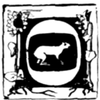
Order Scyphophori.—The Scyphophori (σκύφος, cup;
φορέω, to bear) constitutes a small order which lies
apparently between the Gymnonoti and the Isospondyli.
Boulenger unites it with the Isospondyli. The species, about
seventy-five in number, inhabit the rivers of Africa, where
they are important as food-fishes. In all there is a deep
cavity on each side of the cranium covered by a thin bony
plate, the supertemporal bone. There is no symplectic bone,
and the subopercle is very small or concealed. The gill-openings
are narrow and there are no pharyngeal teeth. The air-bladder
connects with the ear, but not apparently in the same way as
with the Ostariophysan fishes, to which, however, the Scyphophori
are most nearly related. In all the Scyphophori the body
is oblong, covered with cycloid scales, the head is naked, there
are no barbels, and the small mouth is at the end of a long
snout. All the species possess a peculiar organ on the tail,
which with reference to a similar structure in Torpedo and
Electrophorus is held to be a degenerate electric organ. According
to Günther, "it is without electric functions, but evidently
representing a transitional condition from muscular substance
to an electric organ. It is an oblong capsule divided into
numerous compartments by vertical transverse septa and containing
a gelatinous substance."
The Mormyridæ.—There are two families of Scyphophori.
The Mormyridæ have the ordinary fins and tail of fishes and the
Gymnarchidæ are eel-like, with ventrals, anal and caudal wanting.
Gymnarchus miloticus of the Nile reaches a length of six feet,
and it is remarkable as retaining the cellular structure of the
air-bladder as seen in the garpike and bowfin. It doubtless
serves as an imperfect lung.
189The best-known genus of Scyphophori is Mormyrus. Species
of this genus found in the Nile were worshiped as sacred by
the ancient Egyptians and pictures of Mormyrus are often
seen among the emblematic inscriptions. The Egyptians did not
eat the Mormyrus because with two other fishes it was accused
of having devoured a limb from the body of Osiris, so that Isis
was unable to recover it when she gathered the scattered remains
of her husband.
In Mormyrus the bones of the head are covered by skin,
the snout is more or less elongated, and the tail is generally
short and insignificant. One of the most characteristically
eccentric species is Gnathonemus curvirostris, lately discovered
by Dr. Boulenger from the Congo. Fossil Mormyridæ are unknown.
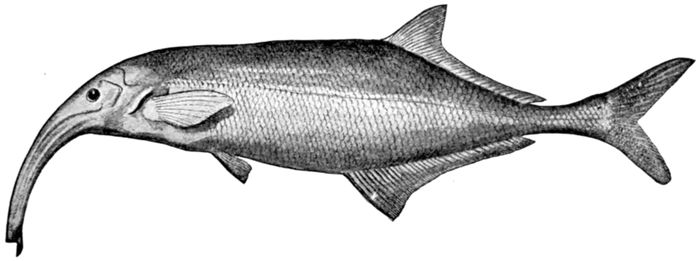
Fig. 149.—Gnathonemus curvirostris Boulenger. Family Mormyridæ. Congo River. (After Boulenger.)
The Haplomi.—In the groups called Iniomi and Lyopomi,
the mesocoracoid arch is imperfect or wanting, a condition
which in some cases may be due to the degeneration produced by
deep-sea life. In the eels a similar condition obtains. In the group
called Haplomi (ἁπλοός, simple; ὤμος, shoulder), as in all the
groups of fishes yet to be discussed, this arch is wholly wanting at
all stages of development. In common with the Isospondyli and
with soft-rayed fishes in general the air-bladder has a persistent
air-duct, all the fins are without true spines, the ventral fins
are abdominal, and the scales are cycloid. The group is a
transitional one, lying almost equidistant between the Isospondyli
and the Acanthopterygii. Gill unites it with the latter and
Woodward with the former. We may regard it for the present
190as a distinct order, although no character of high importance
separates it from either. Hay unites the Haplomi with the
Synentognathi to form the order of Mesichthyes, or transitional
fishes, but the affinities of either with other groups are quite
as well marked as their relation to each other. Boulenger unites
the Iniomi with the Haplomi, an arrangement which apparently
has merit, for the most primitive and non-degenerate Iniomi, as
Aulopus and Synodus, lack both mesocoracoid and orbitosphenoid.
These bones are characteristic of the Isospondyli, but are
wanting in Haplomi.
There is no adipose dorsal in the typical Haplomi, the dorsal
is inserted far back, and the head is generally scaly. Most but
not all of the species are of small size, living in fresh or brackish
water, and they are found in almost all warm regions, though
scantily represented in California, Japan, and Polynesia. The
four families of typical Haplomi differ considerably from one
another and are easily distinguished, although obviously related.
Several other families are provisionally added to this
group on account of agreement in technical characters, but
their actual relationships are uncertain.
The Pikes.—The Esocidæ have the body long and slender
and the mouth large, its bones armed with very strong, sharp
teeth of different sizes, some of them being movable. The
upper jaw is not projectile, and its margin, as in the Salmonidæ,
is formed by the maxillary. The scales are small, and the
dorsal fin far back and opposite the anal, and the stomach
is without pyloric cæca. There is but a single genus, Esox
(Lucius of Rafinesque), with about five or six living species.
Four of these are North American, the other one being found
in Europe, Asia, and North America.
All the pikes are greedy and voracious fishes, very destructive
to other species which may happen to be their neighbors;
"mere machines for the assimilation of other organisms."
Thoreau describes the pike as "the swiftest, wariest, and most
ravenous of fishes, which Josselyn calls the river-wolf. It is
a solemn, stately, ruminant fish, lurking under the shadow of
a lily-pad at noon, with still, circumspect, voracious eye; motionless
as a jewel set in water, or moving slowly along to take up
its position; darting from time to time at such unlucky fish
or frog or insect as comes within its range, and swallowing it
at one gulp. Sometimes a striped snake, bound for greener
meadows across the stream, ends its undulatory progress in
the same receptacle."
191
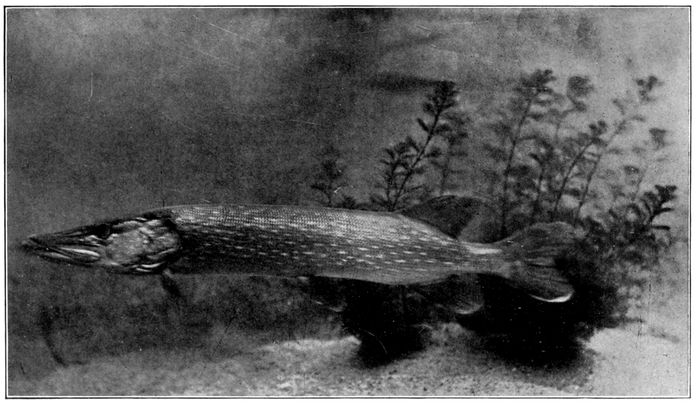
Fig. 150.—The Pike, Esox-lucius L. (From life by R. W. Shufeldt.)
192As food-fishes, all the Esocidæ rank high. Their flesh is
white, fine-grained, disposed in flakes, and of excellent flavor.
The finest of the Esocidæ, a species to be compared, as a
grand game fish, with the salmon, is the muskallunge (Esox
masquinongy). Technically this species may be known by
the fact that its cheeks and opercles are both naked on the
lower half. It may be known also by its great size and by its
color, young and old being spotted with black on a golden-olive
ground.

Fig. 151.—Muskallunge, Esox masquinongy Mitchill. Ecorse, Mich.
The muskallunge is found only in the Great Lake region,
where it inhabits the deeper waters, except for a short time
in the spring, when it enters the streams to spawn. It often
reaches a length of six feet and a weight of sixty to eighty
pounds. It is necessarily somewhat rare, for no small locality
would furnish food for more than one such giant. It is, says
Hallock, "a long, slim, strong, and swift fish, in every way
formed for the life it leads, that of a dauntless marauder."
A second species of muskallunge, Esox ohiensis, unspotted
but vaguely cross-barred, occurs sparingly in the Ohio River
and the upper Mississippi Valley. It is especially abundant
in Chautauqua Lake.
The pike (Esox lucius) is smaller than the muskallunge, and
is technically best distinguished by the fact that the opercles
are naked below, while the cheeks are entirely scaly. The
spots and cross-bars in the pike are whitish or yellowish, and
always paler than the olive-gray ground color. It is the most
193widely distributed of all fresh-water fishes, being found from
the upper Mississippi Valley, the Great Lakes, and New England
to Alaska and throughout northern Asia and Europe. It
reaches a weight of ten to twenty pounds or more, being a
large strong fish in its way, inferior only to the muskallunge.
In England Esox lucius is known as the pike, while its young
are called by the diminutive term pickerel. In America the name
pickerel is usually given to the smaller species, and sometimes
even to Esox lucius itself, the word being with us a synonym
for pike, not a diminutive.
Of the small pike or pickerel we have three species in the
eastern United States. They are greenish in color and banded
or reticulated, rather than spotted, and, in all, the opercles
as well as the cheeks are fully covered with scales. One of
these (Esox reticulatus) is the common pickerel of the Eastern
States, which reaches a respectable size and is excellent as
food. The others, Esox americanus along the Atlantic seaboard
and Esox vermiculatus in the middle West, seldom exceed a foot
in length and are of no economic importance.
Numerous fossil species are found in the Tertiary of Europe,
Esox lepidotus from the Miocene of Baden being one of the
earliest and the best known; in this species the scales are much
larger than in the recent species. The fossil remains would seem
to indicate that the origin of the family was in southern Europe,
although most of the living species are American.
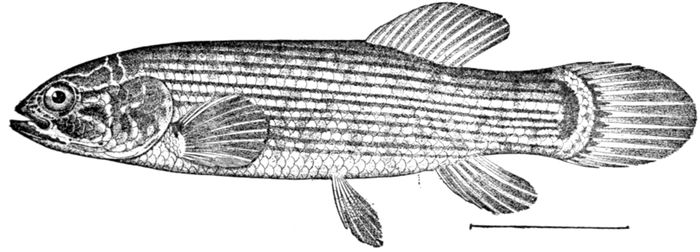
Fig. 152.—Mud-minnow, Umbra pygmæa (De Kay). New Jersey.
The Mud-minnows.—Close to the pike is the family of Umbridæ,
or mud-minnows, which technically differ from the pikes
only in the short snout, small mouth, and weak dentition. The
194mud-minnows are small, sluggish, carnivorous fishes living in
the mud at the bottom of cold, clear streams and ponds. They
are extremely tenacious of life, though soon suffocated in warm
waters. The barred mud-minnow of the prairies of the middle
West (Umbra limi) often remains in dried sloughs and bog-holes,
and has been sometimes plowed up alive. Umbra pygmæa,
a striped species, is found in the Eastern States and Umbra
crameri in bogs and brooks along the Danube. This wide break
in distribution seems to indicate a former wide extension of
the range of Umbridæ, perhaps coextensive with Esox. Fossil
Umbridæ are, however, not yet recognized.
The Killifishes.—Most of the recent Haplomi belong to the
family of Pœciliidæ (killifishes, or Cyprinodonts). In this
group the small mouth is extremely protractile, its margin
formed by the premaxillaries alone much as in the spiny-rayed
fishes. The teeth are small and of various forms according
to the food. In most of the herbivorous forms they are
incisor-like, serrate, and loosely inserted in the lips. In the
species that eat insects or worms they are more firmly fixed.
The head is scaly, the stomach without cæca, and the intestines
are long in the plant-eating species and short in the
others. There are nearly 200 species, very abundant from
New England and California southward to Argentina, and
in Asia and Africa also. In regions where rice is produced,
they swarm in the rice swamps and ditches. Some of them
enter the sea, but none of them go far from shore. Some
are brilliantly colored, and in many species the males are quite
unlike the females, being smaller and more showy. The largest
species (Fundulus, Anableps) rarely reach the length of a foot,
while Heterandria formosa, a diminutive inhabitant of the
Florida rivers, scarcely reaches an inch. Some species are
oviparous, but in most of the herbivorous forms, and some of
the others, the eggs are hatched within the body, and the anal
in the male is modified into a long sword-shaped intromittent
organ, placed farther forward than the anal in the female.
The young when born closely resemble the parent. Most of
the insectivorous species swim at the surface, moving slowly
with the eyes partly out of water. This habit in the genus
Anableps (four-eyed fish, or Cuatro ojos) is associated with an
195extraordinary structure of the eye. This organ is prominent
and is divided by a horizontal partition into two parts, the
upper, less convex, adopted for sight in the air, the lower in the
water. The few species of Anableps are found in tropical
America. The species of some genera swim near the bottom,
but always in very shallow waters. All are very tenacious of life,
and none have any commercial value although the flesh is good.

Fig. 152a.—Four-eyed Fish, Anableps dovii Gill. Tehuantepec, Mexico.
The unique structure of the eye of this curious fish has been
carefully studied by Mr. M. C. Marsh, pathologist of the U. S.
Fish Commission, who furnishes the following notes published
by Evermann & Goldsborough:
"The eye is crossed by a bar, like the diameter of a circle,
and parallel with the length of the body. This bar is darker
than the other external portions of the eyeball and has its edges
darker still. Dividing the external aspect of the eye equally,
it has its lower edge on the same level as the back of the fish,
which is flat and straight from snout to dorsal, or nearly the
whole length of the fish; so that when the body of the fish is just
submerged the level of the water reaches to this bar, and the
lower half of the eye is in water, the upper half in the air. Upon
dissecting the eyeball from the orbit, it appears nearly round.
A membranous sheath covers the external part and invests most
of the ball. It may be peeled off, when the dark bar on the
external portion of the eye is seen to be upon this membrane,
which may correspond to the conjunctiva. The back portion
of the eyeball being cut off, one lens is found. The lining of the
ball consists, in front, of one black layer, evidently choroid.
Behind there is a retinal layer. The choroid layer turns up
anteriorly, making a free edge comparable to an iris. The
free edge is chiefly evident in the lower part of the eye. A large
pupil is left, but is divided by two flaps, continuations of the
choroid coat, projecting from either side and overlapping.
196There are properly then two pupils, an upper and lower, separated
by a band consisting of the two flaps, which may probably,
by moving upward and downward, increase or diminish the
size of either pupil; an upward motion of the flaps increasing
the lower pupil at the expense of the other, and vice versa."
This division of the pupil into two parts permits the fish,
when swimming at the surface of the water, as is its usual custom,
to see in the air with the upper portion and in the water
with the lower. It is thus able to see not only such insects as
are upon the surface of the water or flying in the air above,
but also any that may be swimming beneath the surface.
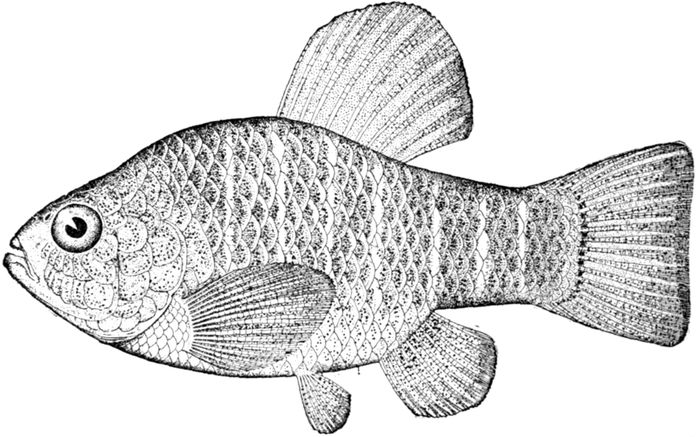
Fig. 153.—Round Minnow, Cyprinodon variegatus Lacépède. St. George Island, Maryland.
According to Mr. E. W. Nelson, "the individuals of this species
swim always at the surface and in little schools arranged in
platoons or abreast. They always swim headed upstream
against the current, and feed upon floating matter which the
current brings them. A platoon may be seen in regular formation
breasting the current, either making slight headway
upstream or merely maintaining their station, and on the qui
vive for any suitable food the current may bring. Now and
then one may be seen to dart forward, seize a floating food
particle, and then resume its place in the platoon. And thus
197they may be observed feeding for long periods. They are
almost invariably found in running water well out in the stream,
or at least where the current is strongest and where floating
matter is most abundant, for it is upon floating matter that
they seem chiefly to depend. They are not known to jump out
of the water to catch insects flying in the air or resting upon
vegetation above the water surface, nor do they seem to feed
to any extent upon all small crustaceans or other portions of
the plankton beneath the surface.
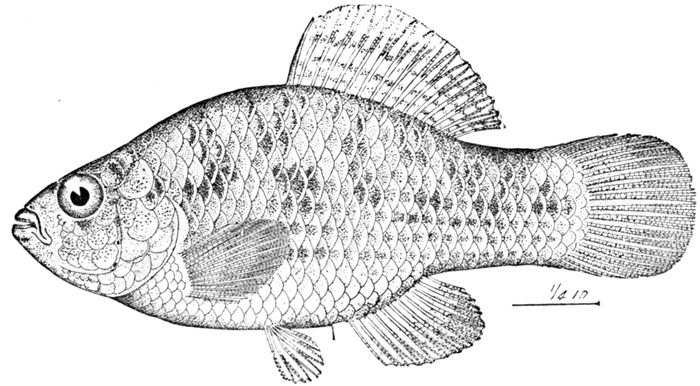
Fig. 154.—Everglade Minnow, Jordanella floridæ Goode & Bean. Everglades of Florida.
"When alarmed—and they are wary and very easily frightened—they
escape by skipping or jumping over the water,
2 or 3 feet at a skip. They rise entirely out of the water, and at
a considerable angle, the head pointing upward. In descending
the tail strikes the water first and apparently by a sculling
motion new impetus is acquired for another leap. This skipping
may continue until the school is widely scattered. When a
school has become scattered, and after the cause of their fright
has disappeared, the individuals soon rejoin each other. First
two will join each other and one by one the others will join them
until the whole school is together again. Rarely do they attempt
to dive or get beneath the surface; when they do they
have great difficulty in keeping under and soon come to the
surface again."
198
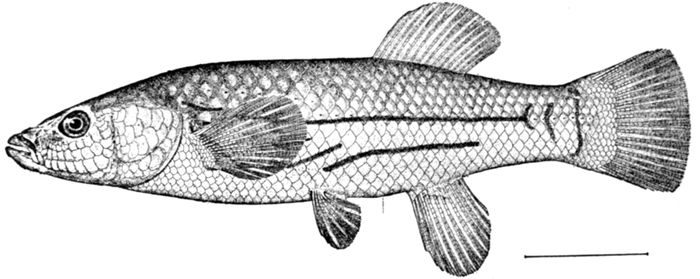
Fig. 155.—Mayfish, Fundulus majalis (L.) (male). Wood's Hole.
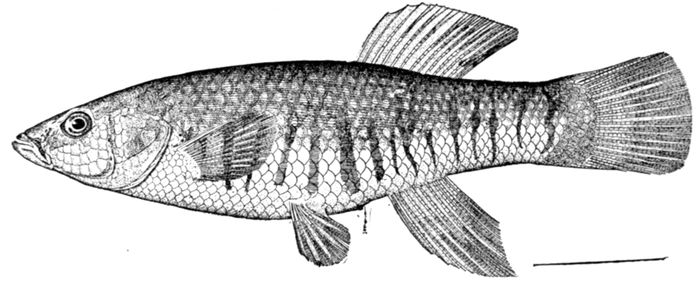
Fig. 156.—Mayfish, Fundulus majalis (female). Wood's Hole.

Fig. 157.—Top-minnow, Zygonectes notatus (Rafinesque). Eureka Springs, Ark.
199

Fig. 158.—Death Valley Fish, Empetrichthys merriami Gilbert. Amargosa Desert, Cal. Family Pœciliidæ. (After Gilbert.)
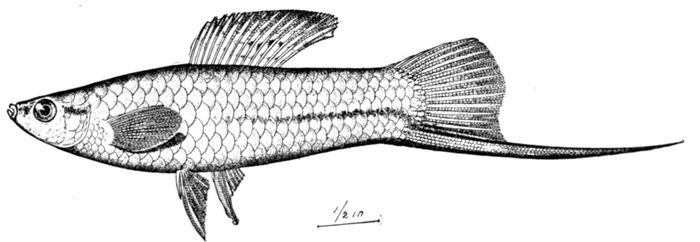
Fig. 159.—Sword-tail Minnow, male, Xiphophorus helleri Heckel. The anal fin modified as an intromittent organ. Vera Cruz.
Of the many genera of Pœciliidæ, top-minnows, and killifishes
we may mention the following: Cyprinodon is made
up of chubby little fishes of eastern America with tricuspid,
incisor teeth, oviparous and omnivorous. Very similar to
these but smaller are the species of Lebias in southern Europe.
Jordanella floridæ of the Florida everglades is similar, but with
the dorsal fin long and its first ray enlarged and spine-like.
It strongly resembles a young sunfish. Most of the larger forms
belong to Fundulus, a genus widely distributed from Maine
to Guatemala and north to Kansas and southern California.
Fundulus majalis, the Mayfish of the Atlantic Coast, is the
largest of the genus. Fundulus heteroclitus, the killifish, the
most abundant. Fundulus diaphanus inhabits sea and lake
indiscriminately. Fundulus stellifer of the Alabama is beautifully
colored, as is Fundulus zebrinus of the Rio Grande. The
genus Zygonectes includes dwarf species similar to Fundulus,
and Adinia includes those with short, deep body. Goodea
atripinnis with tricuspid teeth lives in warm springs in Mexico,
and several species of Goodea, Gambusia, Pœcilia, and other
genera inhabit hot springs of Mexico, Central America, and
Africa. The genus Gambusia, the top-minnows, includes numerous
species with dwarf males having the anal modified.
Gambusia affinis abounds in all kinds of sluggish water in
the southern lowlands, gutters and even sewers included. It
brings forth its brood in early spring. Viviparous and herbivorous
with modified anal fin are the species of Pœcilia, abundant
throughout Mexico and southward to Brazil; Mollienesia very
similar, with a banner-like dorsal fin, showily marked, occurs
from Louisiana southward, and Xiphophorus, with a sword-shaped
lobe on the caudal, abounds in Mexico; Characodon and
Goodea (see Fig. 53, Vol. I) in Mexico have notched teeth, and
finally, Heterandria contains some of the least of fishes, the
handsomely colored males barely half an inch long.
200
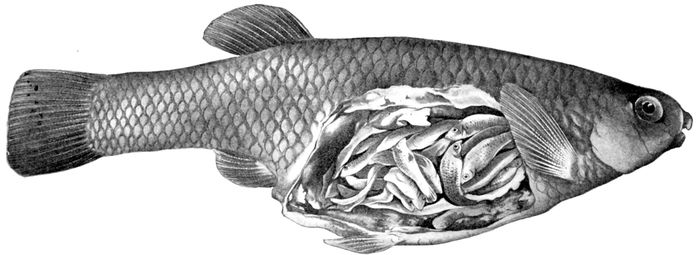
Fig. 160.—Goodea luitpoldi (Steindachner). A viviparous fish from Lake Patzcuaro, Mexico. Family Pœciliidæ. (After Meek.)
201In Lake Titicaca in the high Andes is a peculiar genus (Orestias)
without ventral fins. Still more peculiar is Empetrichthys
merriami of the desert springs of the hot and rainless Death
Valley in California, similar to Orestias, but with enormously
enlarged pharyngeals and pharyngeal teeth, an adaptation to some
unknown purpose. Fossil Cyprinodonts are not rare from the
Miocene in southern Europe. The numerous species are allied
to Lebias and Cyprinodon, and are referred to Prolebias and
Pachylebias. None are American, although two American extinct
genera, Gephyrura and Proballostomus, are probably allied to this
group.
Amblyopsidæ.—The cavefishes, Amblyopsidæ, are the most
remarkable of the haplomous fishes. In this family the vent is
placed at the throat. The form is that of the Pœciliidæ, but
the mouth is larger and not protractile. The species are viviparous,
the young being born at about the length of a quarter of
an inch.

Fig. 161.—Dismal Swamp Fish, Chologaster cornutus Agassiz. Supposed ancestor of Typhlichthys. Virginia.
In the primitive genus Chologaster, the fish of the Dismal
Swamp, the eyes are small but normally developed. Chologaster
cornutus abounds in the black waters of the Dismal Swamp
202of Virginia, thence southward through swamps and rice-fields
to Okefinokee Swamp in northern Florida. It is a small fish,
less than two inches long, striped with black, and with the habit
of a top-minnow. Other species of Chologaster, possessing
eyes and color, but provided also with tactile papillæ, are found
in cave springs in Tennessee and southern Illinois.

Fig. 162.—Blind Cave-fish, Typhlichthys subterraneus Girard. Mammoth Cave, Kentucky.
From Chologaster is directly descended the small blindfish
Typhlichthys subterraneus of the caves of the Subcarboniferous
limestone rocks of southern Indiana and southward to northern
Alabama. As in Chologaster, the ventral fins are wanting.
The eyes, present in the young, become defective and useless
in the adult, when they are almost hidden by other tissues.
The different parts of the eye are all more or less incomplete,
being without function. The structure of the eye has been
described in much detail in several papers by Dr. Carl H. Eigenmann.
As to the cause of the loss of eyesight two chief
theories exist—the Lamarckian theory of the inheritance in the
species of the results of disuse in the individual and the
Weissmannian doctrine that the loss of sight is a result of
panmixia or cessation of selection. This may be extended
to cover reversal of selection, as in the depths of the great
caves the fish without eyes would be at some slight advantage.
Dr. Eigenmann inclines to the Lamarckian doctrine, but the
evidence brought forward fails to convince the present writer
that results of individual use or disuse ever become hereditary
or that they are ever incorporated in the characters
of a species. In the caves of southern Missouri is an independent
case of similar degradation. Troglichthys rosæ, the
blindfish of this region, has the eye in a different phase of
degeneration. It is thought to be separately descended from
203some other species of Chologaster. Of this species Mr. Garman
and Mr. Eigenmann have given detailed accounts from somewhat
different points of view.
Concerning the habits of the blindfish (Troglichthys rosæ),
Mr. Garman quotes the following from notes of Miss Ruth
Hoppin, of Jasper County, Missouri: "For about two weeks
I have been watching a fish taken from a well. I gave him
considerable water, changed once a day, and kept him in an
uninhabited place subject to as few changes of temperature
as possible. He seems perfectly healthy and as lively as when
first taken from the well. If not capable of long fasts, he must
live on small organisms my eye cannot discern. He is hardly
ever still, but moves about the sides of the vessel constantly,
down and up, as if needing the air. He never swims through
the body of the water away from the sides unless disturbed.
Passing the finger over the sides of the vessel under water I
find it slippery. I am careful not to disturb this slimy coating
when the water is changed.... Numerous tests convince
me that it is through the sense of touch, and not through hearing,
that the fish is disturbed; I may scream or strike metal
bodies together over him as near as possible, yet he seems to
take no notice whatever. If I strike the vessel so that the
water is set in motion, he darts away from that side through
the mass of water, instead of around in his usual way. If I
stir the water or touch the fish, no matter how lightly, his
actions are the same."

Fig. 163.—Blindfish of the Mammoth Cave, Amblyopsis spelæus (De Kay). Mammoth Cave, Kentucky.
The more famous blindfish of the Mammoth Cave, Amblyopsis
spelæus, reaches a length of five inches. It possesses
ventral fins. From this fact we may infer its descent from
204some extinct genus which, unlike Chologaster, retains these
fins. The translucent body, as in the other blindfishes, is
covered with very delicate tactile papillæ, which form a very
delicate organ of touch.
The anomalous position of the vent in Amblyopsidæ occurs
again in an equally singular fish, Aphredoderus sayanus, which
is found in the same waters throughout the same region in
which Chologaster occurs. It would seem as if these lowland
fishes of the southern swamps were remains of a once much
more extensive fauna.
No fossil allies of Chologaster are known.
Kneriidæ, etc.—The members of the order of Haplomi, recorded
above, differ widely among themselves in various details of
osteology. There are other families, probably belonging here,
which are still more aberrant. Among these are the Kneriidæ,
and perhaps the entire series of forms called Iniomi, most of
which possess the osteological traits of the Haplomi.
The family of Kneriidæ includes a few very small fishes of
the rivers of Africa.
The Galaxiidæ.—The Galaxiidæ are trout-like fishes of the
southern rivers, where they take the place of the trout of the
northern zones. The species lack the adipose fins and have
the dorsal inserted well backward. According to Boulenger
these fishes, having no mesocoraoid, should be placed among
the Haplomi. Yet their relation to the Haplochitonidæ is very
close and both families may really belong to the Isospondyli.
Galaxias truttaceus is the kokopu, or "trout," of New Zealand.
Galaxias ocellatus is the yarra trout of Australia. Several other
species are found in southern Australia, Tasmania, Patagonia,
and the Falkland Islands, and even in South Africa. This very
wide distribution in the rivers remote from each other has given
rise to the suggestion of a former land connection between
Australia and Patagonia. Other similar facts have led some
geologists to believe in the existence of a former great continent
called Antarctica, now submerged except that part which
constitutes the present unknown land of the Antarctic.
As intimated on p. 253, Vol. I, this distribution of Galaxias
with similar anomalies in other groups could not if unsupported
by geological evidence be held to prove the former extension
205of the Antarctic continent. Dr. Boulenger[12] has recently
shown that Galaxias lives freely in salt water, a fact sufficient
206to account for its wide distribution in the rivers of the southern
hemisphere.
Neochanna is an ally of Galaxias living in burrows in the
clay or mud like a crayfish, often at a distance from water. As
in various other mud-living types, the ventral fins are obsolete.
Order Xenomi.—We must place near the Haplomi the
singular group of Xenomi (ξενός, strange; ὤμος, shoulder),
regarded by Dr. Gill as a distinct order. Externally these fish
much resemble the mud-minnows, differing mainly in the very
broad pectorals. But the skeleton is thin and papery, the two
coracoids forming a single cartilaginous plate imperfectly divided.
The pectorals are attached directly to this without the intervention
of actinosts, but in the distal third, according to
Dr. Charles H. Gilbert, the coracoid plate begins to break up
into a fringe of narrow cartilaginous strips. These about equal
the very large number (33 to 36) of pectoral rays, the basal
part of each ray being slightly forked to receive the tip of the
cartilaginous strip.

Fig. 164.—Alaska Blackfish, Dallia pectoralis (Bean). St. Michaels, Alaska.
"In the deep-sea eels of the order Heteromi there is a somewhat
similar condition of the coracoid elements inasmuch as
the hypercoracoid and hypocoracoid though present are merely
membranous elements surrounded by cartilage and the actinosts
are greatly reduced. It seems probable that we are
dealing in the two cases with independent degeneration of the
shoulder-girdle and that the two groups (Xenomi and Heteromi)
are not really related." (Gilbert.)
Of the single family Dalliidæ, one species is known, the
Alaska blackfish, Dallia pectoralis.
207This animal, formed like a mud-minnow, reaches a length
of eight inches and swarms in the bogs and sphagnum swamps of
northwestern Alaska and westward through Siberia. It is found
in countless numbers according to its discoverer, Mr. L. M.
Turner, "wherever there is water enough to wet the skin of
a fish," and wherever it occurs it forms the chief food of the
natives. Its vitality is most extraordinary. Blackfishes will
remain frozen in baskets for weeks and when thawed out are
as lively as ever. Turner gives an account of a frozen individual
swallowed by a dog which escaped in safety after being thawed
out by the heat of the dog's stomach.
208
CHAPTER XI
ACANTHOPTERYGII; SYNENTOGNATHI
Order Acanthopterygii, the Spiny-rayed Fishes.—The
most of the remaining bony fishes constitute a natural
group for which the name Acanthopterygii (ἄκανθα,
spine; πτερύξ, πτερόν, fin or wing) may be used. This name
is often written Actinopteri, a form equally correct and more
euphonious and convenient. These fishes are characterized,
with numerous exceptions, by the presence of fin spines, by
the connection of the ventral fins with the shoulder-girdle,
by the presence in general of more than one spine in the anterior
part of dorsal and anal fins, and as a rule of one spine and
five rays in the ventral fins, and by the absence in the adult
of a duct to the air-bladder. Minor characters are these:
the pectoral fins are inserted high on the shoulder-girdle, the
scales are often ctenoid, and the edge of the upper jaw is formed
by the premaxillary alone, the maxillary being always toothless.
But it is impossible to define or limit the group by any
single character or group of characters. It is connected with
the Malacopterygii through the Haplomi on the one hand by
transitional groups of genera which may lack any one of these
characters. On the other hand, in the extreme forms, each
of these distinctive characters may be lost through degeneration.
Thus fin spines, ctenoid scales, and the homocercal tail
are lost in the codfishes, the connection of ventrals with shoulder-girdle
fails in the Percesoces, etc., and the development of the
air-duct is subject to all sorts of variations. In one family
even the adipose fin remains through all the changes and
modifications the species have undergone.
The various transitional forms between the Haplomi and
the perch-like fishes have been from time to time regarded as
209separate orders. Some of them are more related to the perch,
others rather to ancestors of salmon or pike, while still others
are degenerate offshoots, far enough from either.
On the whole, all these forms, medium, extreme and transitional,
may well be placed in one order, which would include
the primitive flying-fishes and mullets, the degraded globefishes,
and the specialized flounders. As for the most part these are
spiny-rayed fishes, Cuvier's name Acanthopterygii, or Acanthopteri,
will serve us as well as any. The Physoclysti of Müller, the
Thoracices of older authors, and the Ctenoidei of Agassiz include
substantially the same series of forms. The order Teleocephali
of Gill (τελεός, perfect; κεφαλή, head) has been lately
so restricted as to cover nearly the same ground. In Gill's
most recent catalogue of families, the order Teleocephali includes
the Haplomi and rejects the Hemibranchii, Lophobranchii,
Plectognathi, and Pediculati, all of these being groups characterized
by sharply defined but comparatively recent characters
not of the highest importance. As originally arranged, the order
Teleocephali included the soft-rayed fishes as well. From it the
Ostariophysi were first detached, and still later the Isospondyli
were regarded by Dr. Gill as a separate order.
We may first take up serially as suborders the principal
groups which serve to effect the transition from soft-rayed to
spiny-rayed fishes.
Suborder Synentognathi.—Among the transitional forms between
the soft-rayed and the spiny-rayed fishes, one of the most
important groups is that known as Synentognathi (σύν, together;
ἔν, within; γνάθος, jaw). These have, in brief, the fins
and shoulder-girdle of Haplomi, the ventral fins abdominal, the
dorsal and anal without spines. At the same time, as in the
spiny-rayed fishes, the air-bladder is without duct and the
pectoral fins are inserted high on the side of the body. With
these traits are two others which characterize the group as a
suborder. The lower pharyngeal bones are solidly united into
one bone and the lateral line forms a raised ridge along the
lower side of the body. These forms are structurally allied
to the pikes (Haplomi), on the one hand, and to the mullets
(Percesoces), on the other, and this relationship accords with
their general appearance. In this group as in all the remaining
210families of fishes, there is no mesocoracoid, and in very
nearly all of these families the duct to the air-bladder disappears
at an early stage of development.
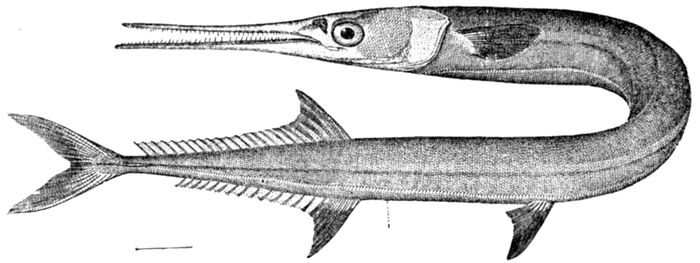
Fig. 165.—Needle-fish, Tylosurus acus (Lacépède). New York.
The Garfishes: Belonidæ.—There are two principal groups
or families among the Synentognathi, the Belonidæ, with strong
jaws and teeth, and the Exocœtidæ, in which these structures
are feeble. Much more important characters appear in the
anatomy. In the Belonidæ the third upper pharyngeal is
small, with few teeth, and the maxillary is firmly soldered to
the premaxillary. The vertebræ are provided with zygapophyses.
The species of Belonidæ are known as garfishes, or needle-fishes.
They resemble the garpike in form, but have nothing
else in common. The body is long and slender, covered with
small scales. Sharp, unequal teeth fill the long jaws and the
dorsal is opposite the anal, on the hinder part of the body. These
fishes are green in color, even the bones being often bright
green, while the scales on the sides have a silvery luster. The
species are excellent as food, the green color being associated
with nothing deleterious. All are very voracious and some of
the larger species, 5 or 6 feet long, may be dangerous even to
man. Fishermen have been wounded or killed by the thrust
of the sharp snout of a fish springing into the air. The garfishes
swim near the surface of the water and often move with great
swiftness, frequently leaping from the water. The genus
Belone is characterized by the presence of gill-rakers. Belone
belone is a small garfish common in southern Europe. Belone
platura occurs in Polynesia. The American species (Tylosurus)
lack gill-rakers. Tylosurus marinus, the common garfish of
211the eastern United States, often ascends the rivers. Tylosurus
raphidoma, Tylosurus fodiator, Tylosurus acus, and other species
are very robust, with short strong jaws. Athlennes hians is a
very large fish with the body strongly compressed, almost
ribbon-like. It is found in the West Indies and across the
Isthmus as far as Hawaii. Many other species, mostly belonging
to Tylosurus, abound in the warm seas of all regions.
Tylosurus ferox is the long tom of the Australian markets.
Potamorrhaphis with the dorsal fin low is found in Brazilian
rivers. A few fossil species are referred to Belone, Belone flava
from the lower Eocene being the earliest.
The Flying-fishes: Exocœtidæ.—The family of Exocœtidæ includes
the flying-fishes and several related forms more or less
intermediate between these and the garfishes. In these fishes
the teeth are small and nearly equal and the maxillary is separate
from the premaxillary. The third upper pharyngeal is
much enlarged and there are no zygapophyses to the vertebræ.
The skippers (Scombresox) have slender bodies, pointed jaws,
and, like the mackerel, a number of detached finlets behind
dorsal and anal, although in other respects they show no affinity
to the mackerel. The common skipper, or saury (Scombresox
saurus), is found on both shores of the North Atlantic swimming
in large schools at the surface of the water, frequently leaping
for a little distance like the flying-fish. They are pursued by
the mackerel-like fishes, as the tunny or bonito, and sometimes
by porpoises. According to Mr. Couch, the skippers, when
pursued, "mount to the surface in multitudes and crowd on
each other as they press forward. When still more closely
pursued, they spring to the height of several feet, leap over
each other in singular confusion, and again sink beneath. Still
further urged, they mount again and rush along the surface,
by repeated starts, for more than one hundred feet, without
once dipping beneath or scarcely seeming to touch the water.
At last the pursuer springs after them, usually across their course,
and again they all disappear together. Amidst such multitudes—for
more than twenty thousand have been judged to
be out of the water together—some must fall a prey to the enemy;
but so many hunting in company, it must be long before the
pursuers abandon. From inspection we could scarcely judge
212the fish to be capable of such flights, for the fins, though numerous,
are small, and the pectoral far from large, though the angle
of their articulation is well adapted to raise the fish by the
direction of their motions to the surface."
A similar species, Cololabis saira, with the snout very much
shorter than in the Atlantic skipper, is the Samma of the fishermen
of Japan.
The hard-head (Chriodorus atherinoides) has no beak at all
and its tricuspid incisor teeth are fitted to feed on plants. In
this genus, as in the flying-fishes, there are no finlets. The hard-head
is an excellent food-fish abundant about the Florida Keys
but not yet seen elsewhere.

Fig. 166.—Saury, Scombresox saurus (L.). Wood's Hole.

Fig. 167.—Halfbeak, Hyporhamphus unifasciatus (Ranzani). Chesapeake Bay.
Another group between the gars and the flying-fishes is that
of the halfbeaks, or balaos, Hemirhamphus, etc. These are also
vegetable feeders, but with much smaller teeth, and the lower
jaw with a spear-like prolongation to which a bright-red membrane
is usually attached. Of the halfbeaks there are several
genera, all of the species swimming near the surface in schools
and sometimes very swiftly. Some of them leap into the air
and sail for a short distance like flying-fishes, with which group
the halfbeaks are connected by easy gradations. The commonest
species along our Atlantic coast is Hyporhamphus unifasciatus;
a larger species, Hemirhamphus brasiliensis, abounds
about the Florida Keys. Euleptorhamphus longirostris, a ribbon-shaped
elongate fish, with long jaw and long pectorals, is taken
in the open sea, both in the Atlantic and Pacific, being common
in Hawaii. The Asiatic genus Zenarchopterus is viviparous,
213having the anal fin much modified in the male, forming an
intromittent organ, as in the Pœciliidæ. One species occurs in
the river mouths in Samoa.
The flying-fishes have both jaws short, and at least the
pectoral fins much enlarged, so that the fish may sail in the air
for a longer or shorter distance.
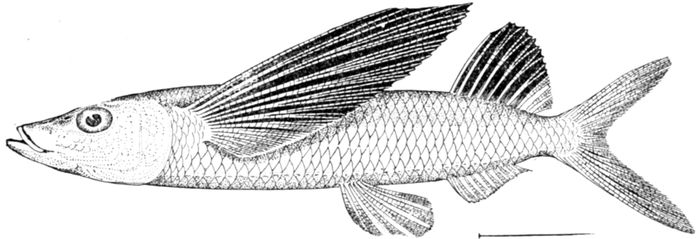
Fig. 168.—Sharp-nosed Flying-fish, Fodiator acutus (Val.). Panama.
The smaller species have usually shorter fins and approach
more nearly to the halfbeaks. Fodiator acutus, with sharp
jaws, and Hemiexocœtus, with a short beak on the lower jaw,
are especially intermediate. The flight of the flying-fishes is
described in detail on p. 157, Vol. I.
The Catalina flying-fish, Cypselurus californicus, of the shore
of southern California is perhaps the largest of the known species,
reaching a length of 18 inches. To this genus, Cypselurus,
having a long dorsal and short anal, and with ventrals enlarged
as well as pectorals, belong all the species strongest in
flight, Cypselurus heterurus and furcatus of the Atlantic, Cypselurus
simus of Hawaii and Cypselurus agoo in Japan. The very
young of most of these species have a long barbel at the chin
which is lost with age.
In the genus Exonautes the base of anal fin is long, as long
as that of the dorsal. The species of this group, also strong
in flight, are widely distributed. Most of the European flying-fishes,
as Exonautes rondeleti, Exonautes speculiger, and Exonautes
vinciguerræ, belong to this group, while those of Cypselurus
mostly inhabit the Pacific. The large Australian species Exonautes
unicolor, Fig. 226, Vol. I, belongs to this group. In the
restricted genus Exocœtus the ventral fins are short and not
used in flight. Exocœtus volitans (evolans) is a small flying-fish,
214with short ventral fins not used for flight. It is perhaps the
most widely distributed of all, ranging through almost all warm
seas. Parexocœtus brachypterus, still smaller, and with shorter,
grasshopper-like wings, is also very widely distributed. An excellent
account of the flying-fishes of the world has been given
by Dr. C. F. Lütken (1876), the University of Copenhagen,
which institution has received a remarkably fine series from
trading-ships returning to that port. Later accounts have
been given by Jordan and Meek, and by Jordan and Evermann.
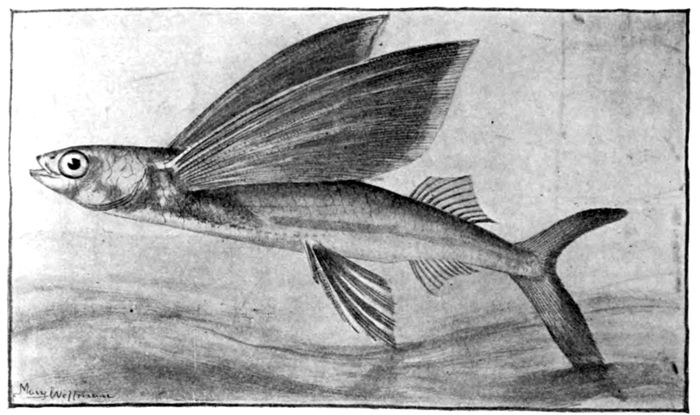
Fig. 169.—Catalina Flying-fish, Cypselurus californicus (Cooper). Santa Barbara.
Very few fossil Exocœtidæ are found. Species of Scombresox
and Hemirhamphus are found in the Tertiary, the earliest being
Hemirhamphus edwardsi from the Eocene of Monte Bolca. No
fossil flying-fishes are known, and the genera, Exocœtus, Exonautes,
and Cypselurus are doubtless all of very recent origin.
215
CHAPTER XII
PERCESOCES AND RHEGNOPTERI
Suborder Percesoces.—In the line of direct ascending
transition from the Haplomi and Synentognathi, the
pike and flying-fish, towards the typical perch-like
forms, we find a number of families, perch-like in essential
regards but having the ventral fins abdominal.
These types, represented by the mullet, the silverside, and
the barracuda, have been segregated by Cope as an order called
Percesoces (Perca, perch; Esox, pike), a name which correctly
describes their real affinities. In these typical forms, mullet,
silverside, and barracuda, the affinities are plain, but in other
transitional forms, as the threadfin and the stickleback, the
relationships are less clear. Cope adds to the series of Percesoces
the Ophiocephalidæ, which Gill leaves with the Anabantidæ
among the spiny-rayed forms. Boulenger adds also the sand-lances
(Ammodytidæ) and the threadfins (Polynemidæ), while
Woodward places here the Crossognathidæ. In the present
work we define the Percesoces so as to include all spiny-rayed
fishes in which the ventral fins are naturally abdominal, excepting
those having a reduced number of gill-bones, or of actinosts,
or other peculiarities of the shoulder-girdle. The Ammodytidæ
have no real affinities with the Percesoces. The Crossognathidæ
and other families with abdominal ventrals and the dorsal spines
wholly obsolete may belong with the Haplomi. Boulenger places
the Chiasmodontidæ, the Stromateidæ, and the Tetragonuridæ
among the Percesoces, an arrangement of very doubtful validity.
In most of the Percesoces the scales are cycloid, the spinous
dorsal forms a short separate fin, and in all the air-duct is
wanting.
The Silversides: Atherinidæ.—The most primitive of living
Percesoces constitute the large family of silversides (Atherinidæ),
216known as "fishes of the King," Pescados del Rey, Pesce Rey, or
Peixe Re, wherever the Spanish or Portuguese languages are
spoken. The species are, in general, small and slender fishes
of dry and delicate flesh, feeding on small animals. The mouth
is small, with feeble teeth. There is no lateral line, the color
is translucent green, with usually a broad lateral band of silver.
Sometimes this is wanting, and sometimes it is replaced by
burnished black. Some of the species live in lakes or rivers,
others in bays or arms of the sea, but never at a distance from
the shore or in water of more than a few feet in depth. The
larger species are much valued as food, the smaller ones, equally
delicate, are fried in numbers as "whitebait," but the bones are
firmer and more troublesome than in the smelts and young
herring. The species of the genus Atherina, known as "friars,"
or "brit," are chiefly European, although some occur in almost
all warm or temperate seas. These are small fishes, with the
mouth relatively large and oblique and the scales rather large
and firm. Atherina hepsetus and A. presbyter are common in
Europe, Atherina stipes in the West Indies, Atherina bleekeri
in Japan, and Atherina insularum and A. lacunosa in Polynesia.
The genus Chirostoma contains larger species, with projecting
lower jaw, abounding in the lakes of Mexico. Chirostoma
humboldtianum is very abundant about Mexico City.
Like all the other species of this genus it is remarkably excellent
as food, the different species constituting the famous "Pescados
Blancos" of the great lakes of Chapala and Patzcuaro of the
western slope of Mexico. A very unusual circumstance is this:
that numerous very closely related species occupy the same
waters and are taken in the same nets. In zoology, generally,
it is an almost universal rule that very closely related species
occupy different geographical areas, their separation being
due to barriers which prevent interbreeding. But in the lake
of Chapala, near Guadalajara, Prof. John O. Snyder and the
present writer, and subsequently Dr. S. E. Meek, found ten
distinct species of Chirostoma, all living together, taken in the
same nets and scarcely distinguishable except on careful
examination. Most of these species are very abundant throughout
the lake, and all reach a length of twelve to fifteen inches.
These species are Chirostoma estor, Ch. lucius, Ch. sphyræna,
217Ch. ocotlane, Ch. lermæ, Ch. chapalæ, Ch. grandocule, Ch. labarcæ,
Ch. promelas, and Ch. bartoni. A similar assemblage of species
nearly all different from these was obtained by Dr. Seth E.
Meek in the lake of Patzcuaro, farther south. In this lake
were found Ch. attenuatum, Ch. patzcuaro, Ch. humboldtianum,
Ch. grandocule, and Ch. estor. The lake of Zirahuen, near
Chapala, contains Ch. estor and Ch. zirahuen.
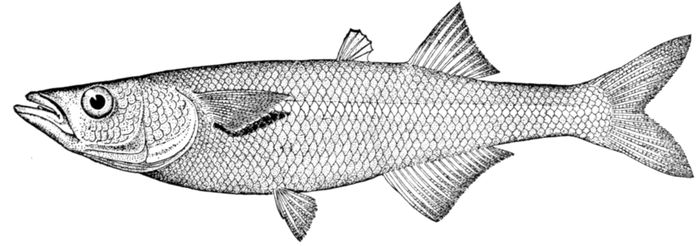
Fig. 170.—Pescado blanco, Chirostoma humboldtianum (Val.). Lake Chalco, City of Mexico.

Fig. 171.—Silverside or Brit, Kirtlandia vagrans (Goode & Bean). Pensacola.
Still another species, Ch. jordani, is found about the city of
Mexico, where it is sold baked in corn-husks. Along the coasts
of Peru, Chile, and Argentina is found still another assemblage
of fishes of the king, with very small scales, constituting the
genera Basilichthys and Gastropterus (Pisciregia). Basilichthys
microlepidotus is the common Pesca del Rey of Chile. The
small silversides, or "brit," of our Atlantic coast belong to
numerous species of Menidia, Menidia notata to the northward
and Menidia menidia to the southward being most abundant.
Kirtlandia laciniata, with ragged scales, is common along the
Virginia coast, and K. vagrans farther south. Another small
species, very slender and very graceful, is the brook silverside
218Labidesthes sicculus, which swarms in clear streams from
Lake Ontario to Texas. This species, three to four inches
long, has the snout produced and a very bright silvery stripe
along the side. Large and small species of silversides occur
in the sea along the California coast, where they are known
familiarly as "blue smelt" or "Peixe Re." The most important
of these and the largest member of the family, reaching
a length of eighteen inches, is Atherinopsis californiensis, an
important food-fish throughout California, everywhere wrongly
known as smelt. Atherinops affinis is much like it, but has
Y-shaped teeth. Iso flos-maris, called Nami-no-hana, or
flower of the surf, is a shining little fish with belly shape like
that of a herring. It lives in the surf on the coast of Japan.
Melanotænia nigrans of Australia (family Melanotæniidæ) has
the lateral band jet-black, as has also Melaniris balsanus of the
rivers of southern Mexico. Atherinosoma vorax of Australia has
strong teeth like those of a barracuda.

Fig. 172.—Blue Smelt or Pez del Rey, Atherinopsis californiensis Girard. San Diego.

Fig. 173.—Flower of the waves, Iso flos-maxis, Jordan & Starks. Enoshima, Japan.
Fossil species of Atherina occur in the Italian Eocene, the
best known being Atherina macrocephala. Another species,
Rhamphognathus paralepoides, allied to Menidia, occurs in the
Eocene of Monte Bolca.
219The Mullets: Mugilidæ.—The mullets (Mugilidæ) are more
clumsy in form than the silversides, robust, with broad heads
and stouter fin-spines. The ventral fins are abdominal but
well forward, the pelvis barely touching the clavicle, a condition
to be defined as "subabdominal." The small mouth
is armed with very feeble teeth, often reduced to mere fringes.
The stomach is muscular like the gizzard of a fowl and
the species feed largely on the vegetation contained in mud.
There are numerous species, mostly living in shallow bays
and estuaries, but some of them are confined to fresh waters.
All are valued as food and some of them under favorable conditions
are especially excellent.
Most of the species belong to the genera Mugil, the mullet of
all English-speaking people, although not at all related to the
red mullet or surmullet of the ancient Romans, Mullus barbatus.
The mullets are stoutish fish from one to two feet long,
with blunt heads, small mouths almost toothless, large scales,
and a general bluish-silvery color often varied by faint blue
stripes. The most important species is Mugil cephalus, the
common striped mullet. This is found throughout southern
Europe and from Cape Cod to Brazil, from Monterey, California,
to Chile, and across the Pacific to Hawaii, Japan, and the Red
Sea. Among specimens from all these regions we can detect no
difference.
Professor Goode gives the following account of its habits:
"The large mullets begin to assemble along the Florida
coast in schools in the height of summer, probably preparatory
to spawning, and at this time the eggs commence to mature.
In this season they swim at the surface, and are then pursued
by enemies in the water and the air, and also fall an easy prey to
the fishermen. They appear to prefer to swim against the
wind, and school best with a northeast wind. They also run
against the tide. In Florida the spawning season seems to
extend from the middle of November to the middle of January.
Some of the fishermen say that they go on the mud-flats and
oyster-beds at the mouth of the river to deposit their eggs.
What becomes of them after this no one seems to know, but
it is probable that they spread themselves over the whole surface
of water-covered country in such a manner as not to be
220perceptible to the fisherman, who makes no effort at this time
to secure the spent, lean fish. Many of them probably find
their way to the lakes and others remain wherever they find
good feeding-ground, gathering flesh and recruiting strength
for the great strain of the next spawning season."
Professor Goode informs us that the fishermen recognize
"three distinct periods of schooling and separate runs of mullet.
To what extent these are founded on tradition, or upon the
necessity of change in the size of the mesh of their nets, it is
impossible to say. The 'June mullet' average about five to
the pound; the 'fat mullet,' which are taken from August 20
to October 1, weigh about two pounds; these have, the fishermen
say, a 'roe of fat' on each side as thick as a man's thumb.
The 'roe mullet' weigh about two and a half pounds and are
caught in November and until Christmas. Between the seasons
of 'fat mullet' and 'roe mullet' there is an intermission of
two or three weeks in the fishing." Professor Goode hazards
the suggestion that "the 'fat mullet' of September are the
breeding fish of November, with roes in an immature state,
the ova not having become fully differentiated."
The mullet feed on the bottom in quiet water, swimming
head downward. The food is sifted over in the mouth, the
mud rejected, and the plants, chiefly microscopic, retained.
Mr. Silas Stearns compares a school of mullets to barnyard
fowls feeding together. When a fish finds a rich spot the others
flock about it as chickens do. The pharyngeals form a sort of
filter, stopping the sand and mud, the coarse parts being ejected
through the mouth. Dr. Günther thus describes this apparatus:
"The upper pharyngeals have a rather irregular form: they
are slightly arched, the convexity being directed toward the
pharyngeal cavity, tapering anteriorly and broad posteriorly.
They are coated with a thick, soft membrane, which reaches
far beyond the margin of the bone and is studded all over
with minute horny cilia. Each branchial arch is provided
with a series of long gill-rakers, which are laterally bent downward,
each series closely fitting to the sides of the adjoining
arch; they constitute together a sieve admirably adapted
to permit a transit for the water, retaining at the same time
every solid substance in the cavity of the pharynx."
221The young mullet feed in schools and often swim with the
head at the surface of the water.
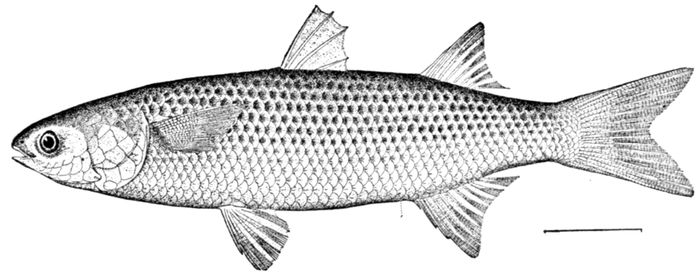
Fig. 174.—Striped Mullet, Mugil cephalus (L.). Wood's Hole, Mass.
We are not able to distinguish from the common striped
mullet of Europe and America the mullet of Hawaii, the famous
Ama-ama, the most valued of Hawaiian fishes. This species
is reared in mullet ponds, made by extending a stone wall
across an arm of the sea. Through openings in the wall the
young mullet enter, and in its protection they grow very fat on
the abundant algæ and other vegetation. They thus become
the most plentiful and most esteemed of the market fishes
of Honolulu. The Awa (Chanos) and the Awa-awa (Elops)
also enter these ponds and are reared with the mullet, being
similarly but less valued. Unfortunately the kaku, or small
barracuda (Sphyræna helleri), also enters with these helpless
fishes and destroys many of the smaller individuals. Another
striped species, also very similar to Mugil cephalus in appearance
and value, in fact indistinguishable from the Hawaiian mullet,
abounds in Japan and India.
The white or unstriped mullets are generally smaller, but
otherwise differ little. Mugil curema is the white mullet of
tropical America, ranging occasionally northward, and several
other species occur in the West Indies and the Mediterranean.
The genus Mugil has the eye covered by thick transparent
tissue called the adipose eyelid. In Liza the adipose eyelid is
wanting. Liza capito, the big-headed mullet of the Mediterranean,
is a well-known species. Most of the mullets of the south
seas belong to the genus Liza. Liza melinoptera and Liza
222cæruleomaculata are common in Samoa. The genus Querimana
includes dwarf-mullets, two or three inches long, known as
whirligig-mullets. These little fishes gather in small schools
and swim round and round on the surface like the whirligig-beetles,
or Gyrinidæ, their habits being like those of the young
mullets; some young mullets having been, in fact, described
as species of Querimana. The genus Agonostomus includes fresh-water
mullets of the mountain rivers of the East and West Indies
and Mexico, locally known as trucha, or trout. Agonostomus
nasutus of Mexico is the best-known species.
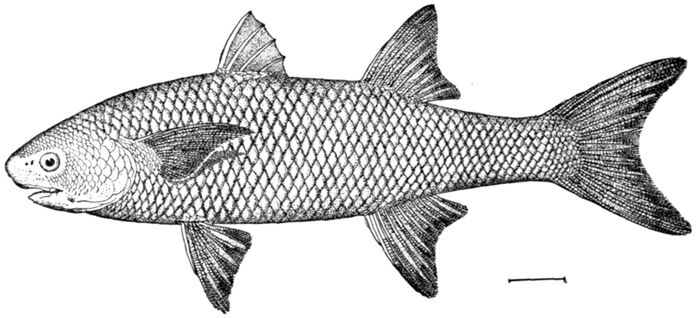
Fig. 175.—Joturo or Bobo, Joturus pichardi Poey. Rio Bayano, Panama.
The Joturo, or Bobo, Joturus pichardi, is a very large robust
and vigorous mullet which abounds at the foot of waterfalls
in the mountain torrents of Cuba, eastern Mexico, and Central
America. It is a good food-fish, frequently taken about Jalapa,
Havana, and on the Isthmus of Panama. Its lips are very
thick and its teeth are broad, serrated, loosely inserted incisors.
Fossil mullets are few. Mugil radobojanus is the earliest
from the Miocene of Croatia.
The Barracudas: Sphyrænidæ.—The Sphyrænidæ, or barracudas,
differ from the mullets in the presence of very strong
teeth in the bones of the large mouth. The lateral line is also
developed, there is no gizzard, and there are numerous minor
modifications connected with the food and habits. The species
are long, slender swift fishes, powerful in swimming and voracious
to the last degree. Some of the species reach a length of
six feet or more, and these are almost as dangerous to bathers
223as sharks would be. The long, knife-like teeth render them
very destructive to nets. The numerous species are placed
in the single genus Sphyræna, and some of them are found in
all warm seas, where they feed freely on all smaller fishes, their
habits in the sea being much like those of the pike in the lakes.
The flesh is firm, delicate, and excellent in flavor. In the larger
species, especially in the West Indies, it may be difficult of
digestion and sometimes causes serious illness, or "ichthyosism."

Fig. 176.—Barracuda, Sphyræna barracuda Walbaum. Florida.
Sphyræna sphyræna is the spet, or sennet, a rather small
barracuda common in southern Europe. Sphyræna borealis of
our eastern coast is a similar but still feebler species rarely
exceeding a foot in length. These and other small species are
feeble folk as compared with the great barracuda (Sphyræna
barracuda) of the West Indies, a robust savage fish, also known
as picuda or becuna. Sphyræna commersoni of Polynesia is a
similar large species, while numerous lesser ones occur through
the tropical seas. On the California coast Sphyræna argentea
is an excellent food-fish, slenderer than the great barracuda
but reaching a length of five feet.
Several species of fossil barracuda occur in the Italian
Eocene, Sphyræna bolcensis being the earliest.
Stephanoberycidæ.—We may append to the Percesoces, for
want of a better place, a small family of the deep sea, its
affinities at present unknown. The Stephanoberycidæ have the
ventrals I, 5, subabdominal, a single dorsal without spine, and
the scales cycloid, scarcely imbricated, each with one or two
central spines. The mouth is large, with small teeth, the skull
cavernous, as in the berycoids, from which group the normally
formed ventrals abdominal in position would seem to exclude it.
Stephanoberyx monæ and S. gilli are found at the depth of a
mile and a half below the Gulf Stream. Boulenger first placed
224them with the Percesoces, but more recently suggests their relationship
with the Haplomi. Perhaps, as supposed by Gill,
they may prove to be degenerate berycoids in which the ventral
fins have lost their normal connection.
Crossognathidæ.—A peculiar primitive group referred by
Woodward to the Percesoces is the family of Crossognathidæ
of the Cretaceous period. As in these fishes there are no fin-spines,
they may be perhaps better placed with the Haplomi.
The dorsal fin is long, without distinct spines, and the abdominal
ventrals have six to eight rays. The mouth is small,
with feeble teeth, and the body is elongate and compressed.
Crossognathus sabandianum occurs in the Cretaceous of Switzerland
and Germany, Syllæmus latifrons and other species in
the Colorado Cretaceous, and Syllæmus anglicus in England.
The Crossognathidæ have probably the lower pharyngeals separate,
else they would be placed among the Synentognathi, a
group attached by Woodward, not without reason, to the
Percesoces.
Cobitopsidæ.—Near the Crossognathidæ may be placed the
extinct Cobitopsidæ, Cobitopsis acuta being recorded from the
Oligocene of Puy-de-Dôme in France. In this species there
is a short dorsal fin of about seventeen rays, no teeth, and
the well-developed ventral fins are not far in front of the anal.
This little fish bears a strong resemblance to Ammodytes, but
the affinities of the latter genus are certainly with the
ophidioid fishes, while the real relationship of Cobitopsis is
uncertain.

Fig. 177.—Cobitopsis acuta Gervais, restored. Oligocene of Puy-de-Dôme. (After Woodward.)
Suborder Rhegnopteri.—The threadfins (Polynemidæ) are allied
to the mullets, but differ from them and from all other
fishes in the structure of the pectoral fin and its basal bones,
or actinosts.
225
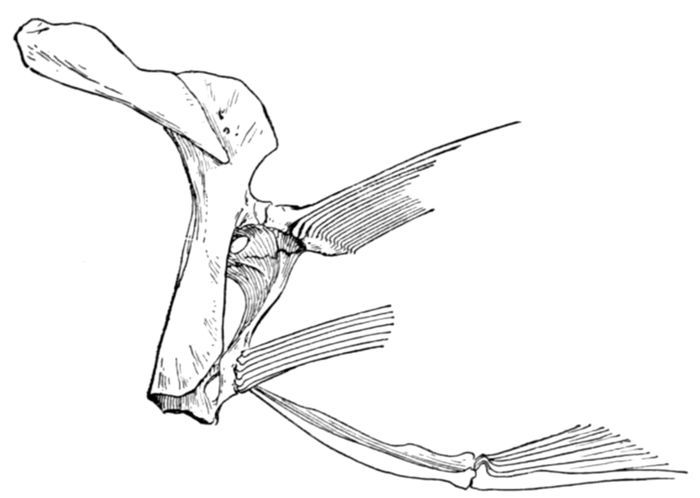
Fig. 178.—Shoulder-girdle of a Threadfin, Polydactylus approximans (Lay & Bennett).
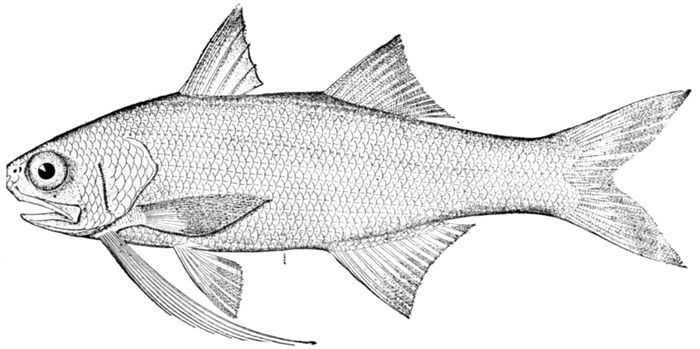
Fig. 179.—Threadfin, Polydactylus octonemus (Girard). Pensacola.
The pectoral fin is divided into two parts, the lower composed
of free or separate rays very slender and thread-like,
sometimes longer than the body. Two of the actinosts of the
pectoral support the fin, one is slender and has no rays, while
the fourth is plate-like and attached to the coracoids, supporting
the pectoral filaments. The body is rather robust, covered
with large scales, formed much as in the mullet. The lateral
line extends on the caudal fin as in the Sciænidæ which group
these fishes resemble in many ways. The mouth is large,
inferior, with small teeth. The species are carnivorous fishes
of excellent flesh, abounding on sandy shores in the warm
seas. They are not very active and not at all voracious. The
coloration is bluish and silvery, sometimes striped with black.
Most of the species belong to the genus Polydactylus. Polydactylus
226virginicus, the barbudo, with seven filaments, is common
in the West Indies and Florida. Polydactylus octonemus with
eight filaments is more rare, but ranges further north. Polydactylus
approximans, the raton of western Mexico, with six
filaments, reaches San Diego. Polydactylus plebejus is common
in Japan and other species range through Polynesia. In India
isinglass is made from the large air-bladder of species of Polydactylus.
The rare Polynemus quinquarius of the West Indies
have five pectoral filaments, these being greatly elongate, much
longer than the body.
No extinct Polynemidæ are recorded.
227
CHAPTER XIII
PHTHINOBRANCHII: HEMIBRANCHII, LOPHOBRANCHII,
AND HYPOSTOMIDES
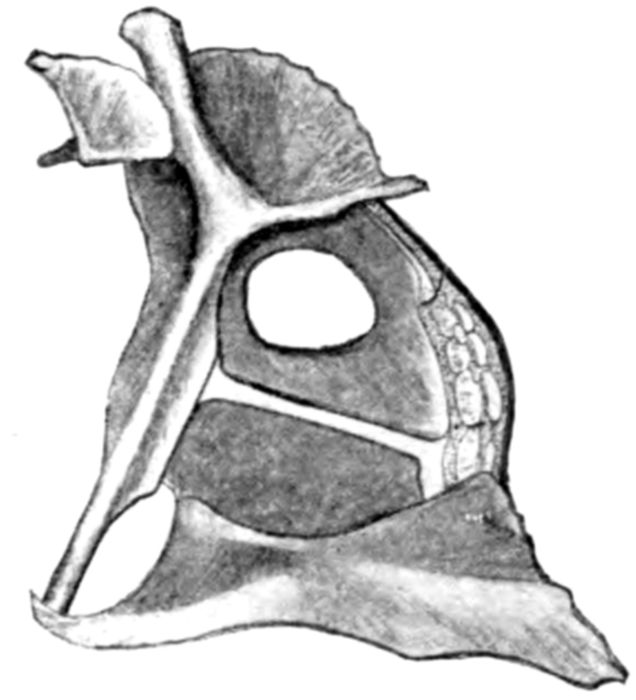
Fig. 180.—Shoulder-girdle of a Stickleback, Gasterosteus aculeatus Linnæus. (After Parker.)

Fig. 181.—Shoulder-girdle of Fistularia petimba Lacépède, showing greatly extended interclavicle, the surface ossified.

Suborder Hemibranchii.—Still another transitional
group, the Hemibranchii, is composed of spiny-rayed
fishes with abdominal ventrals. In this suborder
there are other points of divergence, though none of
high importance. In these fishes the bones of the shoulder-girdle
are somewhat distorted, the supraclavicle reduced or wanting,
and the gill structures somewhat degenerate. The presence
of bones called interclavicles or infraclavicles, below and behind
the clavicle, has been supposed to characterize the order of
Hemibranchii. But this character has very slight importance.
In two families, Macrorhamphosidæ and Centriscidæ, the interclavicles
are absent altogether. In the Fistulariidæ they are
very large. According to the studies of Mr. Edwin C. Starks,
the bone in question is not a true infraclavicle. It is not identical
with the infraclavicle of the Ganoids, but it is only a backward
extension of the hypocoracoid, there being no suture between
228the two bones. In those species which have bony plates instead
of scales, this bone has a deposit of bony substance or
ganoid enamel at the surface. This gives it an apparent
prominence as compared with other bones of the skeleton,
but it has no great taxonomic importance. Dr. Hay
unites the suborders Hemibranchii, Lophobranchii, and Hypostomides
to form the order Phthinobranchii (φθινάς, waning;
βράγχος, gill), characterized by the reduction of the gill-arches.
These forms are really nearly related, but their affinities with
the Percesoces are so close that it may not be necessary to form
a distinct order of the combined group. Boulenger unites
the Hemibranchii with Lampris to form a group, Catosteomi,
characterized by the development of infraclavicles; but we
cannot see that Lampris bears any affinity to the sticklebacks,
or that the presence of infraclavicle has any high
significance, nor is it the supposed infraclavicle of Lampris
homologous with that of the Hemibranchii. The dorsal fin
in the Hemibranchii has more or less developed spines; spines
are also present in the ventral fins. The lower pharyngeals
are separated; there is no air-duct. The mouth is small and
the bones of the snout are often much produced. The preopercle
and symplectic are distinct. The group is doubtless derived
from some transitional spiny-rayed type allied to the Percesoces.
The Lophobranchs, another supposed order, represent simply
a still further phase of degradation of gills and ventral fins.
Dr. Gill separates these two groups as distinct orders and
places them, as aberrant offshoots, near the end of his series
of bony fishes. We prefer to leave them with the other transitional
forms, not regarding their traits of divergence as of any
great importance in the systematic arrangement of families.
The Sticklebacks: Gasterosteidæ.—The sticklebacks (Gasterosteidæ)
are small, scaleless fishes, closely related to the
Fistulariidæ so far as anatomy is concerned, but with very
different appearance and habits. The body often mailed, the
dorsal is preceded by free spines and the ventrals are each
reduced to a sharp spine with a rudimentary ray. The jaws
are short, bristling with sharp teeth, and these little creatures
are among the most active, voracious, and persistent of all
fishes. They attack the fins of larger fishes, biting off pieces,
229and at the same time they devour the eggs of all species accessible
to them. In almost all fresh and brackish waters of the
north temperate zone these little fishes abound. "It is scarcely
to be conceived," Dr. Günther observes, "what damage these
little fishes do, and how greatly detrimental they are to the
increase of all the fishes among which they live, for it is with
the utmost industry, sagacity, and greediness that they seek
out and destroy all the young fry that come their way."
The sticklebacks inhabit brackish and fresh waters of the
northern hemisphere, species essentially alike being found
throughout northern Europe, Asia, and America. The same
species is subject to great variation. The degree of development
of spines and bony plates is greatest in individuals living
in the sea and least in clear streams of the interior. Each of
the mailed species has its series of half-mailed or even naked
varieties found in the fresh waters. This is true in Europe,
New England, California, and Japan. The farther the individuals
are from the sea, the less perfect is their armature.
Thus, Gasterosteus cataphractus, which in the sea has a full
armature of bony plates on the side, about 30 in number, will
have in river mouths from 6 to 20 plates and in strictly fresh
water only 2 or 3 or even none at all.
The sticklebacks have been noted for their nest-building
habits. The male performs this operation, and he is provided
with a special gland for secretion of the necessary cement.
Dr. Gill quotes from Dr. John A. Ryder an account of this
process. The secretory gland is a "large vesicle filled with a
clear secretion which coagulates into threads upon contact
with water. It appears to open directly in front of the vent.
As soon as it is ruptured, it loses its transparency, and whatever
secretion escapes becomes whitish after being in contact
with water for a short time. This has the same tough, elastic
qualities as when spun by the animal itself, and is also composed
of numerous fibers, as when a portion is taken that has been
recently spun upon the nest. Thus provided, when the nuptial
season has arrived the male stickleback prepares to build
his nest, wherein his mate may deposit her eggs. How this
nest is built, and the subsequent proceedings of the sticklebacks,
have been told us in a graphic manner by Mr. John K.
230Lord, from observations on Gasterosteus cataphractus on Vancouver
Island, although the source of his secretion was misunderstood:
"The site is generally amongst the stems of aquatic plants,
where the water always flows but not too swiftly. He first
begins by carrying small bits of green material which he nips
off the stalks and tugs from out the bottom and sides of the
bank; these he attaches by some glutinous material, that he
clearly has the power of secreting, to the different stems destined
as pillars for his building. During this operation he swims
against the work already done, splashes about, and seems
to test its durability and strength; rubs himself against the
tiny kind of platform, scrapes the slimy mucus from his sides
to mix with and act as mortar for his vegetable bricks. Then
he thrusts his nose into the sand at the bottom, and, bringing
a mouthful, scatters it over the foundation; this is repeated
until enough has been thrown on to weight the slender fabric
down and give it substance and stability. Then more twists,
turns, and splashings to test the firm adherence of all the
materials that are intended to constitute the foundation of
the house that has yet to be erected on it. The nest, or nursery,
when completed is a hollow, somewhat rounded, barrel-shaped
structure worked together much in the same way as the platform
fastened to the water-plants; the whole firmly glued
together by the viscous secretion scraped from off the body.
The inside is made as smooth as possible by a kind of plastering
system; the little architect continually goes in, then, turning
round and round, works the mucus from his body on to the
inner sides of the nest, where it hardens like tough varnish.
There are two apertures, smooth and symmetrical as the hole
leading into a wren's nest, and not unlike it.
"All this laborious work is done entirely by the male fish,
and when completed he goes a-wooing. Watch him as he
swims towards a group of the fair sex enjoying themselves
amidst the water-plants arrayed in his best and brightest
livery, all smiles and amiability; steadily and in the most
approved style of stickleback love-making this young and
wealthy bachelor approaches the object of his affections, most
likely tells her all about his house and its comforts, hints
231delicately at his readiness and ability to defend her children
against every enemy, vows unfailing fidelity, and in lover fashion
promises as much in a few minutes as would take a lifetime to
fulfill. Of course she listens to his suit; personal beauty,
indomitable courage, backed by the substantial recommendations
of a house ready built and fitted for immediate occupation,
are gifts not to be lightly regarded.
"Throwing herself on her side the captive lady shows her
appreciation, and by sundry queer contortions declares herself
his true and devoted spouse. Then the twain return to the
nest, into which the female at once betakes herself and therein
deposits her eggs, emerging, when the operation is completed,
by the opposite hole. During the time she is in the nest (about
six minutes) the male swims round and round, butts and rubs
his nose against it, and altogether appears to be in a state of
defiant excitement. On the female leaving, he immediately
enters, deposits the milt on the eggs, taking his departure through
the back door. So far his conduct is strictly pure; but I
am afraid morality in stickleback society is of rather a lax
order. No sooner has this lady, his first love, taken her departure,
than he at once seeks another, introduces her as he did
the first, and so on, wife after wife, until the nest is filled with
eggs, layer upon layer, milt being carefully deposited betwixt
each stratum of ova. As it is necessary there should be two
holes, by which ingress and egress can be readily accomplished,
so it is equally essential in another point of view. To fertilize
fish-eggs, running water is the first necessity; and, as the holes
are invariably placed in the direction of the current, a steady
stream of water is thus directed over them."
To the genus Gasterosteus the largest species belong, those
having three dorsal spines, and the body typically fully covered
with bony plates. Gasterosteus aculeatus inhabits both shores of
the Atlantic and the scarcely different Gasterosteus cataphractus
swarms in the inlets from southern California to Alaska, Siberia,
and northern Japan. Half-naked forms have been called by
various names and one entirely naked in streams of southern
California is named Gasterosteus williamsoni. Its traits are,
however, clearly related to its life in fresh waters.
In Pygosteus pungitius, a type of almost equally wide range,
232there are nine or ten dorsal spines and the body is more slender.
All kinds of waters of the north on both continents may yield
this species or its allies and variations, mailed or naked. The
naked, Apeltes quadracus, is found in the sea only, along the
New England coast.
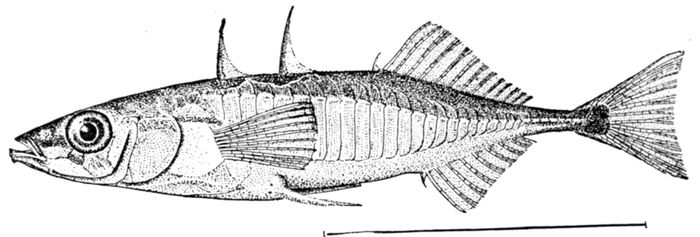
Fig. 182.—Three-spined Stickleback, Gasterosteus aculeatus L. Wood's Hole, Mass.
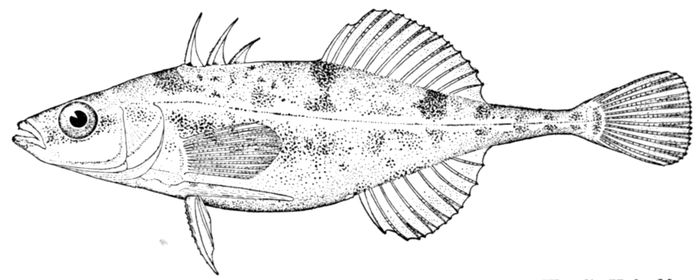
Fig. 183.—Four-spined Stickleback, Apeltes quadracus Mitchill. Wood's Hole, Mass.
Eucalia inconstans is the stickleback of the clear brook
from New York to Indiana and Minnesota. The male is jet
black in spring with the sheen of burnished copper and he is
intensely active in his work of protecting the eggs of his own
species and destroying the eggs and fry of others. Spinachia
spinachia is a large sea stickleback of Europe with many dorsal
spines.
No fossil Gasterosteidæ are recorded, and the family, while
the least specialized in most regards, is certainly not the most
primitive of the suborder.
The Aulorhynchidæ.—Closely related to the sticklebacks is
the small family of Aulorhynchidæ, with four soft rays in the
233ventral fins. Aulorhynchus, like Spinachia, has many dorsal
spines and an elongate snout approaching that of a trumpet-fish.
Aulorhynchus flavidus lives on the coast of California
and Aulichthys japonicus in Japan. The extinct family of Protosyngnathidæ
is near Aulorhynchus, with the snout tubular, the
ribs free, not anchylosed as in Aulorhynchus, and with the first
vertebræ fused, forming one large one as in Aulostomus. Protosyngnathus
sumatrensis occurs in Sumatra. Protaulopsis bolcensis
of the Eocene of Italy has the ventral fins farther back, and is
probably more primitive than the sticklebacks.
Cornet-fishes: Fistulariidæ.—Closely related to the sticklebacks
so far as structure is concerned is a family of very different
habit, the cornet-fishes, or cornetas (Fistulariidæ). In
these fishes the body is very long and slender, like that of a
garfish. The snout is produced into a very long tube, which
bears the short jaws at the end. The teeth are very small.
There are no scales, but bony plates are sunk in the skin. The
ventrals are abdominal, each with a spine and four rays. The
four anterior vertebræ are very much elongate. There are
no spines in the dorsal and the back-bone extends through the
forked caudal, ending in a long filament. The cornet-fishes
are dull red or dull green in color. They reach a length of
two or three feet, and the four or five known species are widely
distributed through the warm seas, where they swim in shallow
water near the surface. Fistularia tabaccaria, the tobacco-pipe
fish, is common in the West Indies, Fistularia petimba,
F. serrata, and others in the Pacific. A fossil cornet-fish of very
small size, Fistularia longirostris, is known from the Eocene
of Monte Bolca, near Verona. Fistularia kœnigi is recorded
from the Oligocene of Glarus.
The Trumpet-fishes: Aulostomidæ.—The Aulostomidæ, or trumpet-fishes
are in structure entirely similar to the Fistulariidæ,
but the body is band-shaped, compressed, and scaly,
the long snout bearing the feeble jaws at the end. There
are numerous dorsal spines and no filament on the tail.
Aulostomus chinensis (maculatus) is common in the West Indies,
Aulostomus valentini abounds in Polynesia and Asia, where
it is a food-fish of moderate importance. A species of Aulostomus
(bolcensis) is found in the Italian Eocene. Allied to it is
234the extinct family Urosphenidæ, scaleless, but otherwise similar.
Urosphen dubia occurs in the Eocene at Monte Bolca. Urosphen
is perhaps the most primitive genus of the whole suborder of
Hemibranchii.

Fig. 184.—Trumpet-fish, Aulostomus chinensis (L.) Virginia.
The Snipefishes: Macrorhamphosidæ.—Very remarkable fishes
are the snipefishes, or Macrorhamphosidæ. In these forms
the snout is still tubular, with the short jaws at the end. The
body is short and deep, partly covered with bony plates. The
dorsal has a very long serrated spine, besides several shorter
ones, and the ventral fins have one spine and five rays.
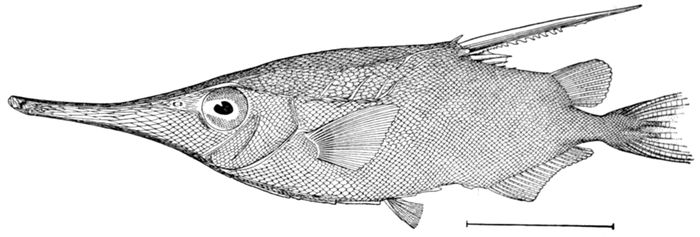
Fig. 185.—Japanese Snipefish, Macrorhamphosus sagifue Jordan & Starks. Misaki, Japan.
The snipefish, or woodcock-fish, Macrorhamphosus scolopax,
is rather common on the coasts of Europe, and a very similar
species (M. sagifue) occurs in Japan. The Rhamphosidæ, represented
by Rhamphosus, an extinct genus with the ventrals
further forward, are found in the Eocene rocks of Monte
Bolca. Rhamphosus vastrum has minute scales, short dorsal,
and the snout greatly attenuate.
The Shrimp-fishes: Centriscidæ.—One of the most extraordinary
types of fishes is the small family of Centriscidæ, found
in the East Indies. The back is covered by a transparent
bony cuirass which extends far beyond the short tail, on which
the two dorsal fins are crowded. Anteriorly this cuirass is
235composed of plates which are soldered to the ribs. The small
toothless mouth is at the end of a long snout.

Fig. 186.—Shrimp-fish, Æoliscus strigatus (Günther). Riu Kiu Islands, Japan.
These little fishes with the transparent carapace look very
much like shrimps. Centriscus scutatus (Amphisile) with the
terminal spine fixed is found in the East Indies, and Æoliscus
strigatus with the terminal spine movable is found in southern
Japan and southwards.

Fig. 187.—Æoliscus heinrichi Heckel. Eocene of Carpathia. Family Centriscidæ. (After Heckel.)
A fossil species, Æoliscus heinrichi, is found in the Oligocene
of various parts of Europe, and Centriscus longirostris occurs
in the Eocene of Monte Bolca.
In the Centriscidæ and Macrorhamphosidæ the expansions
of the hypocoracoid called infraclavicles are not developed.
The Lophobranchs.—The suborder Lophobranchii (λοφός,
tuft; βραγχός, gill) is certainly an offshoot from the Hemibranchii
and belongs likewise among the forms transitional
from soft to spiny-rayed fishes. At the same time it is a
degenerate group, and in its modifications it turns directly
away from the general line of specialization.
The chief characters are found in the reduction of the gills
to small lobate tufts attached to rudimentary gill-arches. The
so-called infraclavicles are present, as in most of the Hemibranchii.
Bony plates united to form rings take the place of
scales. The long tubular snout bears the short toothless jaws at
the end. The preopercle is absent, and the ventrals are seven-rayed
or wanting. The species known as pipefishes and sea-horses
are all very small and none have any economic value. They are
236numerous in all warm seas, mostly living in shallow bays among
seaweed and eel-grass. The muscular system is little developed
and all the species have the curious habit of carrying the eggs
until hatched in a pouch of skin under the belly or tail; this
structure is usually found in the male.
The Solenostomidæ.—The Solenostomidæ of the East Indies
are the most primitive of these fishes. They have the body
rather short and provided with spinous dorsal, and ventral
fins. The pretty species are occasionally swept northward to
Japan in the Black Current. Solenostomus cyanopterus is a
characteristic species. Solenorhynchus elegans, now extinct
(with the trunk more elongate), preceded Solenostomus in the
Eocene of Monte Bolca.
The Pipefishes: Syngnathidæ.—The Syngnathidæ are very long
and slender fishes, with neither spinous dorsal, nor ventral
fins, the body covered by bony rings. Of the pipefish,
Syngnathus, there are very many species on all northern coasts.
Syngnathus acus is common in Europe, Syngnathus fuscum
along the New England coast, Syngnathus californiense in
California, and Syngnathus schlegeli in Japan. Numerous
other species of Syngnathus and other genera are found further
south in the same regions. Corythroichthys is characteristic
of coral reefs and Microphis of the streams of the islands of
Polynesia. In general, the more northerly species have the
greater number of vertebræ and of bony rings. Tiphle tiphle
is a large pipefish of the Mediterranean. This species was
preceded by Tiphle albyi (Siphonostoma) in the Miocene of
Sicily. Other pipefishes, referred to as Syngnathus and Calamostoma,
are found as fossils in Tertiary rocks.
The Sea-horses: Hippocampus.—Both fossil and recent forms
constitute a direct line of connection from the pipefishes to the
sea-horses. In the latter the head has the form of the head
of a horse. It is bent at right angles to the body like the head
of a knight at chess. There is no caudal fin, and the tail in
typical species is coiled and can hardly be straightened out.
Calamostoma of the Eocene, Gasterotokeus of Polynesia, and
Acentronura of Japan are forms which connect the true sea-horses
with the pipefish. Gasterotokeus has the long head
and slender body of the pipefish, with the prehensile finless
tail of a sea-horse. Most of the living species of the sea-horse
belong to the genus Hippocampus. These little creatures
have the egg-sac of the male under
the abdomen. They range from
two inches to a foot in length and
some of the many species may be
found in abundance in every warm
sea. Some cling by the tails to
floating seaweed and are swept to
great distances; others cling to eel-grass
and live very near the shore.
The commonest European species
is Hippocampus hippocampus. Most
abundant on our Atlantic coast is
Hippocampus hudsonius. Hippocampus
coronatus is most common
in Japan. The largest species are
Hippocampus ingens of Lower California
and Hippocampus kelloggi
in Japan. Many species, especially
of the smaller ones, have the spines
of the bony plates of the body
ending in fleshy flaps. These are
sometimes so enlarged as to simulate
leaves of seaweed, thus serving
for the efficient protection of the
species. These flaps are developed
to an extreme degree in Phyllopteryx
eques, a pipefish of the East Indies.
237
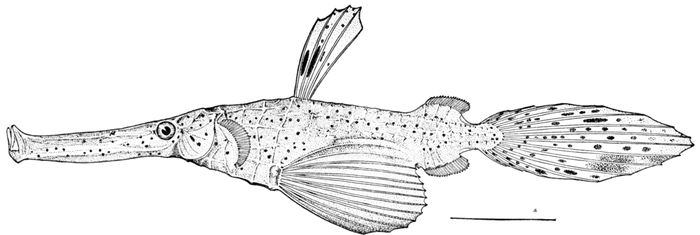
Fig. 188.—Solenostomus cyanopterus Bleeker. Misaki, Japan.
238
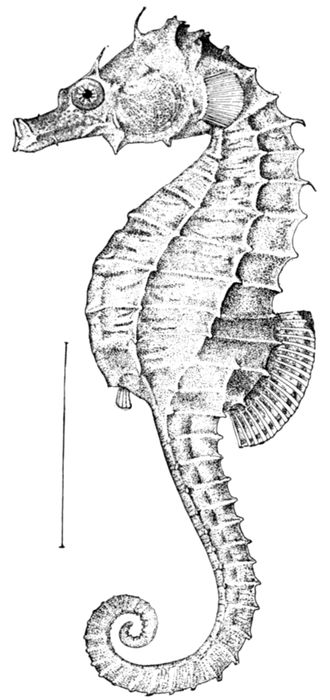
Fig. 189.—Sea-horse, Hippocampus hudsonius Dekay. Virginia.
No fossil sea-horses are known.
The following account of the breeding-habits of our smallest
sea-horse (Hippocampus zosteræ) was prepared by the writer
for a book of children's stories:
"He was a little bit of a sea-horse and his name was Hippocampus.
He was not more than an inch long, and he had a
red stripe on the fin on his back, and his head was made of bone
and it had a shape just like a horse's head, but he ran out to a
point at his tail, and his head and his tail were all covered with
bone. He lived in the Grand Lagoon at Pensacola in Florida,
239where the water is shallow and warm and there are lots of
seaweeds. So he wound his tail around a stem of seaweed
and hung with his head down, waiting to see what would happen
next, and then he saw another little sea-horse hanging on
another seaweed. And the other sea-horse put out a lot of
little eggs, and the little eggs all lay on the bottom of the sea
at the foot of the seaweed. So Hippocampus crawled down
from the seaweed where he was and gathered up all those little
eggs, and down on the under side of his tail where the skin is
soft he made a long slit for a pocket, and then he stuffed all
the eggs into this pocket and fastened it together and stuck it
with some slime. So he had all the other sea-horse's eggs in
his own pocket.
"Then he went up on the seawrack again and twisted his
tail around it, and hung there with his head down to see what
would happen next. The sun shone down on him, and by and
by all the little eggs began to hatch out, and each one of the
eggs was a little sea-pony, shaped just like a sea-horse. And
when he hung there with his head down he could feel all the
little sea-ponies squirming inside his pocket, and by and by
they squirmed so much that they pushed the pocket open,
and then every one crawled away from him, and he couldn't get
them back, and so he went along with them and watched to
see that nothing should hurt them. And by and by they hung
themselves all up on the seaweeds, and they are hanging there
yet. And so he crawled back to his own piece of seaweed and
twisted his tail around it, and waited to see what would happen
next. And what happened next was just the same thing over
again."
Suborder Hypostomides, the Sea-moths: Pegasidæ.—The small
suborder of Hypostomides (ὑπό, below; στόμα, mouth) consists
of the family of Pegasidæ. These "sea-moths" are
fantastic little fishes, probably allied to the sticklebacks, but
wholly unique in form. The slender body is covered with
bony plates, the gill-covers are reduced to a single plate. The
small mouth underneath a long snout has no teeth. The preopercle
and the symplectic are both wanting. The ventrals
are abdominal, formed of two rays, and the very large pectoral
fin is placed horizontally like a great wing.
240

Fig 190.—Sea-moth, Zalises umitengu Jordan & Snyder. Misaki, Japan. (View from below.)
The species, few in number, known as sea-moths and sea-dragons,
rarely exceed four inches in length. They are found
in the East Indies and drift with the currents northward to
Japan. The genera are Pegasus, Parapegasus, and Zalises.
The best-known species are Zalises draconis and Pegasus volitans.
No fossil species of Pegasidæ are known.
241
CHAPTER XIV
SALMOPERCÆ AND OTHER TRANSITIONAL
GROUPS

Suborder Salmopercæ, the Trout-perches: Percopsidæ.—More
ancient than the Hemibranchii, and still more
distinctly in the line of transition from soft-rayed to
spiny-rayed fishes, is the small suborder of Salmopercæ. This
is characterized by the presence of the adipose fin of the salmon,
in connection with the mouth, scales, and fin-spines of a perch.
The premaxillary forms the entire edge of the upper jaw, the
maxillary being without teeth. The air-bladder retains a
rudimentary duct. The bones of the head are full of mucous
cavities, as in the European perch called Gymnocephalus and
Acerina. There are two spines in the dorsal and one or two
in the anal, while the abdominal ventrals have each a spine and
eight rays. Two species only are known among living fishes,
these emphasizing more perfectly than any other known forms
the close relation really existing between spinous and soft-rayed
forms. The single family of Percopsidæ would seem to
find its place in Cretaceous rocks rather than in the waters of
to-day.

Fig. 191.—Sand-roller, Pecropsis guttatus Agassiz. Okoboji Lake, Ia.
242Percopsis guttata, the trout-perch or sand-roller of the Great
Lakes, is a pale translucent fish with dark spots, reaching a
length of six inches. It abounds in the Great Lakes and their
tributaries and is occasionally found in the Delaware, Ohio,
Kansas, and other rivers and northwestward as far as Medicine
Hat on the Saskatchewan. It is easily taken with a hook
from the piers at Chicago.
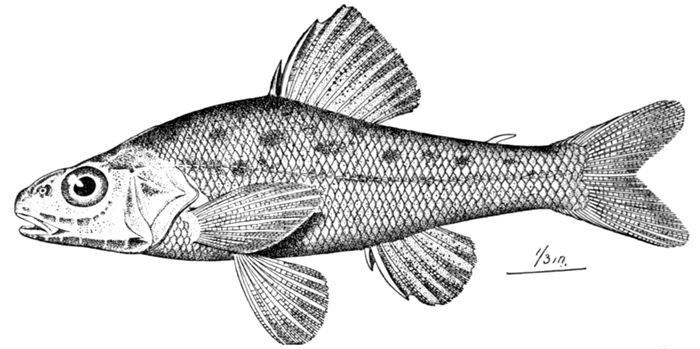
Fig. 192.—Oregon Trout-perch, Columbia transmontana Eigenmann. Umatilla River, Oregon.
Columbia transmontana is another little fish of similar type,
but rougher and more distinctly perch-like. It is found in
sandy or weedy lagoons throughout the lower basin of the
Columbia, where it was first noticed by Dr. Eigenmann in 1892.
From the point of view of structure and classification, this
left-over form is one of the most remarkable of American fishes.

Fig. 193.—Erismatopterus endlicheri Cope. Green River Eocene. (After Cope.)
Erismatopteridæ.—Here should perhaps be placed the family of
Erismatopteridæ, represented by Erismatopterus levatus and other
species of the Green River Eocene shales. In Erismatopterus the
243short dorsal has two or three spines, there are two or three
spines in the anal, and the abdominal ventrals are opposite
the dorsal. Allied to Erismatopterus
is Amphiplaga of
the same deposits.
We cannot, however, feel
sure that these extinct fragments,
however well preserved,
belonged to fishes having an
adipose fin. Among spiny-rayed
fishes the Percopsidæ
alone retain this character, and
the real affinities of Erismatopterus
may be with Aphredoderidæ
and other percoid
forms.
The relations of the extinct
family of Asineopidæ are also
still uncertain. This group
comprises fresh-water fishes
said to be allied to the Aphredoderidæ,
but with the pelvic
bones not forked. Asineops
pauciradiata, squamifrons and
viridensis are described from
the Green River shales. With
Erismatopterus all these fishes
may belong to the suborder
of Salmopercæ, but, as above
stated, the possession of the adipose fin, the most characteristic
trait of the Salmopercæ, cannot be verified in the fossil remains.
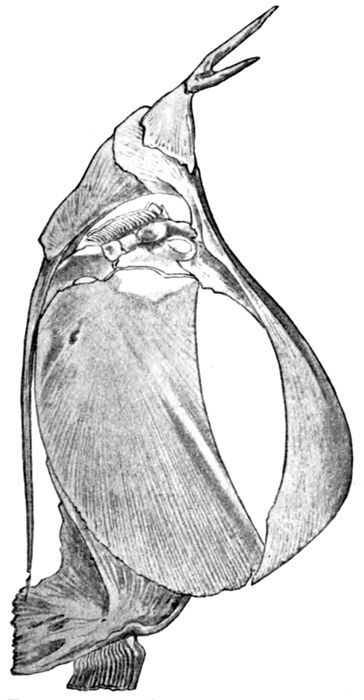
Fig. 194.—Shoulder-girdle of the Opah, Lampris guttatus (Brünnich), showing the enlarged infraclavicle. (After Boulenger.)
Suborder Selenichthyes, the Opahs: Lamprididæ.—We may bring
together as constituting another suborder certain forms of uncertain
relationship, but which seem to be transitional between
deep-bodied extinct Ganoids and the forms allied to Platax,
Zeus, and Antigonia. The name of Selenichthyes (σηλήνη, moon;
ἰχθύς, fish) is suggested by Boulenger for the group of opahs,
or moonfishes. These are characterized by the highly compressed
body, the great development of a large hypocoracoid,
244and especially by the structure of the ventral fins,
which are composed of about fifteen rays instead of the one
spine and five rays characteristic of the specialized perch-like
fishes. The living forms of this type are further characterized
by the partial or total absence of the spinous
dorsal, by the small oblique mouth, and the prominence of
the ventral curve of the body. A thorough study of the
osteology of these forms living and fossil will be necessary
before the group can be properly defined. The large bone
above mentioned was at first considered by Boulenger as
the interclavicle or infraclavicle, the hypocoracoid being regarded
by him as displaced, lying with the actinosts. But it
is certain, from the studies of Mr. Starks, that this bone is the
real hypocoracoid, which in this case is simply exaggerated in
size, but placed as in ordinary fishes.
The single living family, Lamprididæ, contains but one species,
Lampris guttatus, known as opah, moonfish, mariposa, cravo,
Jerusalem haddock, or San Pedro fish. This species reaches a
length of six feet and a weight of 500 to 600 pounds. Fig. 199
(Vol. I) is taken from a photograph of an example weighing
317½ pounds taken near Honolulu by Mr. E. L. Berndt. The
body is almost as deep as long, plump and smooth, without scales
or bony plates. The vertebræ are forty-five in number, and the
large ventrals contain about fifteen rays. The dorsal is without
spines, the small mouth without teeth. The color is a "rich
brocade of silver and lilac, rosy on the belly, everywhere with
round silvery spots." The head and back have ultramarine
tints, the jaws and fins are vermilion. On a drawing of this
fish made at Sable Island in 1856, Mr. James Farquhar wrote
(to Dr. J. Bernard Gilpin): "Just imagine the body, a beautiful
silver interspersed with spots of a lighter color about the
size of sixpence, the eyes very large and brilliant, with a golden
ring around them. You will then have some idea of the splendid
appearance of the fish when fresh. If Caligula had seen
them I might have realized a fortune."
The skeleton of the opah is very firm and heavy. The
flesh is of varying shades of salmon-red, tender, oily, and of
a rich, exquisite flavor scarcely surpassed by any other fish
whatsoever.
245The opah is a rare fish, swimming slowly near the surface and
ranging very widely in all the warm seas. It was first noticed
in Norway by Gunner, the good bishop of Throndhjem, about
1780. It was soon after recorded from Elsinore, Torbay, and
Madeira, and is occasionally taken in various places in Europe.
It is also recorded from Newfoundland, Sable Island, Cuba,
Monterey, San Pedro Point (near San Francisco), Santa Catalina,
Honolulu, and Japan.
The specimen studied by the writer came ashore at Monterey
in an injured condition, having been worsted in a struggle
with some better-armed fish.
Allied to Lampris is the imposing extinct species known as
Semiophorus velifer from the Eocene of Monte Bolca near Verona,
the type of the extinct family of Semiophoridæ. This is
a deep compressed fish, with very high spinous dorsal and
very long, many-rayed ventrals. Other related species are
known also from the Eocene. There is no evidence of any
close relation between these fishes with Caranx or Platax, with
which Woodward associates Semiophorus.
The Semiophoridæ differ from the Lamprididæ chiefly in the
development of the spinous dorsal fin, which is composed of
many slender rays.
Suborder Zeoidea.—Not far from the Selenichthyes and
the Berycoidei we may place the singular group of John
Dories, or zeoid fishes. These have the ventral fins thoracic
and many-rayed, the dorsal fin provided with spines, and the
post-temporal, as in the Chætodontidæ, fused with the skull.
Dr. Boulenger calls attention to the close relation of these
fishes to the flounders, and suggests the possible derivation of
both from a synthetic type, the Amphistiidæ, found in the
European Eocene. The Amphistiidæ, Zeidæ, and flounders
are united by him to form the group or suborder Zeorhombi,
characterized by the thoracic ventrals, which have the rays
not I, 5 in number, by the progressive degeneration of the fin-spines
and the progressive twisting of the cranium, bringing
the two eyes to the same side of the head. It is not certain
that the flounders are really derived from Zeus-like fishes, but
no other guess as to their origin has more elements of probability.
246

Fig. 195.—Semiophorus velifer Volta. Eocene. (After Agassiz, per Zittel.)
247We may, however, regard the Zeoidea on the one hand and
the Heterosomata on the other as distinct suborders. This is
certain, that the flounders are descended from spiny-rayed
forms and that they have no affinities with the codfishes.
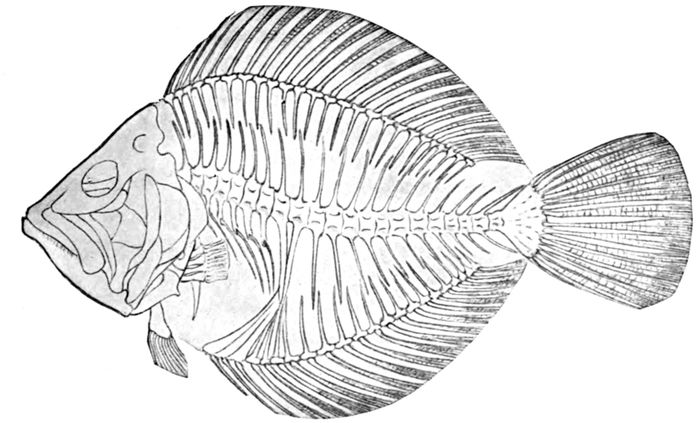
Fig. 196.—Amphistium paradoxum Agassiz. Upper Eocene. (Supposed ancestor of the flounders). (After Boulenger.)
Amphistiidæ.—The Amphistiidæ, now extinct, are deep-bodied,
compressed fishes, with long, continuous dorsal and anal fins in which
a few of the anterior rays are simple, slender spines scarcely
differentiated from the soft rays. The form of body and the
structure of the fins are essentially as in the flounders, from which
they differ chiefly by the symmetry of the head, the eyes being
normally placed. Amphistium paradoxum is described by Agassiz
from the upper Eocene. It occurs in Italy and France.
In its dorsal and anal fins there are about twenty-two rays,
the first three or four undivided. The teeth are minute or
absent and there is a high supraoccipital crest.
The John Dories: Zeidæ.—The singular family of Zeidæ,
or John Dories, agrees with Chætodonts in the single character
of the fusion of the post-temporal with the skull. The
species, however, diverge widely in other regards, and their
ventral fins are essentially those of the Berycoids. In all the
species there are seven to nine soft rays in the ventral fins, as
in the Berycoid fishes. Probably the character of the fused
post-temporal has been independently derived. The anterior
vertebræ in Zeus, as in Chætodon, are closely crowded together.
In the Zeidæ the spinous dorsal is well developed, the body
naked or with very thin scales, and provided with bony warts
at least around the bases of dorsal and anal fins. The species
are mostly of small size, silvery in color, living in moderate
depths in warm seas. The best-known genus is Zeus, which is
a group of shore-fishes of the waters of Asia and Europe. The
common John Dory (called in Germany Härings-König, or
king of the herrings), Zeus faber, abounds in shallow bays on
the coasts of Europe. It reaches a length of nearly a foot,
and is a striking feature of the markets of southern Europe.
The dorsal spines are high, the mouth large, and on the sides
is a black ring, said by some to be the mark of the thumb of
St. Peter, who is reported to have taken a coin from the mouth
of this species. A black spot on several other species is associated
with the same legend.
248
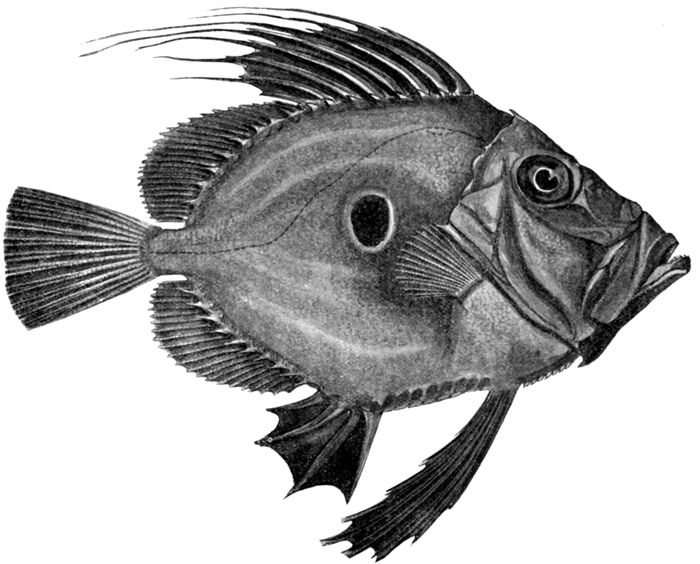
Fig. 197.—The John Dory, Zeus faber. Linnæus. Devon, England.
249On the coasts of Japan abounds the Matao, or target-fish
(Zeus japonicus), very similar to the European species and
like it in form and color. Zenopsis nebulosa and Zen itea also
occur on the coasts of Japan. The remaining Zeidæ (Cyttus,
Zenopsis, Zenion, etc.) are all rare species occasionally dredged
especially in the Australian region. Zeus priscus is recorded
from the Tertiary, and Cyttoides glaronensis from the upper
Eocene of Glavus.
Grammicolepidæ.—The Grammicolepidæ, represented by a
single species, Grammicolepis brachiusculus, rarely taken off the
coast of Cuba, is related to the Zeidæ. It has rough, ridged,
parchment-like scales deeper than long. The ventrals are
thoracic, with the rays in increased number, as in Zeus and
Beryx, with each of which it suggests affinity.
250
CHAPTER XV
BERYCOIDEI
The Berycoid Fishes.—We may place in a separate
order a group of fishes, mostly spiny-rayed, which
appeared earlier in geological time than any other
of the spinous forms, and which in several ways represent the
transition from the isospondylous fishes to those of the type of
the mackerel and perch. In
the berycoid fishes the ventral
fins are always thoracic, the
number of rays almost always
greater than I, 5, and in all
cases an orbitosphenoid bone
is developed in connection
with the septum between the
orbits above. This bone is
found in the Isospondyli and
other primitive fishes, but according
to the investigations
of Mr. E. C. Starks it is wanting in all percoid and scombroid
forms, as well as in the Haplomi and in all the higher fishes.
This trait may therefore, among thoracic fishes, be held to define
the section or suborder of Berycoidei.
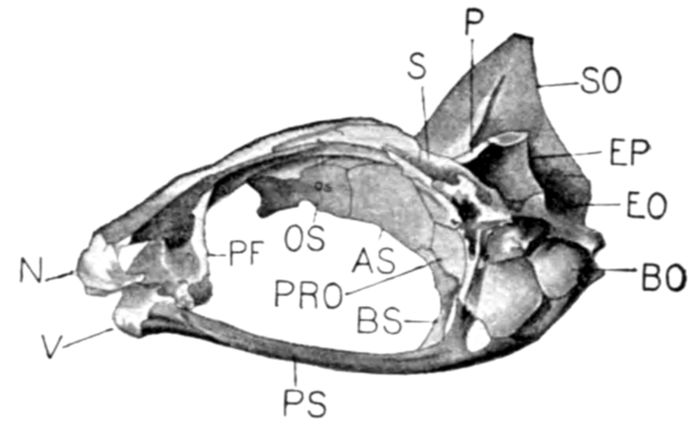
Fig. 198.—Skull of a Berycoid fish, Beryx splendens Cuv. & Val., showing the orbitosphenoid (OS), characteristic of all Berycoid fishes.
These fishes, most primitive of the thoracic types, were more
abundant in Cretaceous and Eocene times than now. The
possession of an increased number of soft rays in the ventral
fins is archaic, although in one family, the Monocentridæ, the
number is reduced to three. Most of the living Berycoidei
retain through life the archaic duct to the air-bladder characteristic
of most abdominal or soft-rayed fishes. In some
however, the duct is lost. For the first time in the fish series
the number of twenty-four vertebræ appears. In most spiny-rayed
251fishes of the tropics, of whatever family, this number is
retained.
In every case spines are present in the dorsal fin, and in
certain cases the development of the spinous dorsal surpasses
that of the most extreme perch-like forms. In geological
times the Berycoids preceded all other perch-like fishes. They
are probably ancestral to all the latter. All the recent species,
in spite of high specialization, retain some archaic characters.
The Alfonsinos: Berycidæ.—The typical family, Berycidæ, is
composed of fishes of rather deep water, bright scarlet or
black in color, with the body short and compressed, the scales
varying in the different genera. The single dorsal fin has a
few spines in front, and there are no barbels. The suborbitals
are not greatly developed.
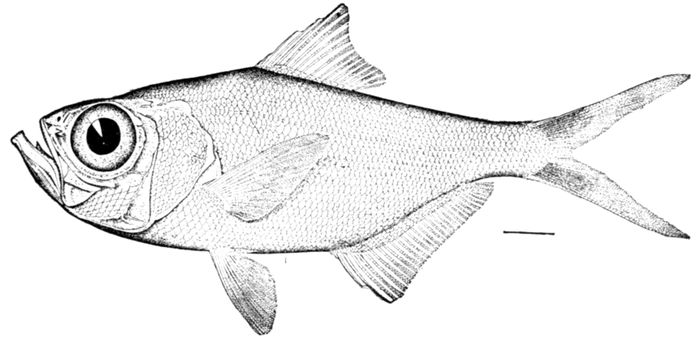
Fig. 199.—Beryx splendens Lowe. Gulf Stream.
The species of Beryx, called in Spanish Alfonsino, Beryx
elegans and Beryx decadactylus, are widely distributed at moderate
depths, the same species being recorded from Portugal,
Madeira, Cuba, the Gulf Stream, and Japan. The colors are
very handsome, being scarlet with streaks of white or golden.
These fishes reach the length of a foot or more and are valued
as food where sufficiently common.
Numerous species of Beryx and closely allied genera are
found in all rocks since Cretaceous times; Beryx dalmaticus,
from the Cretaceous of Dalmatia, is perhaps the earliest. Beryx
insculptus is found in New Jersey, but no other Berycoids
252are yet known as fossils from North America. Sphenocephalus,
with four anal spines, is found in the chalk, as are also species
of Acrogaster and Pycnosterinx, these being the earliest of fishes
with distinctly spiny fins.

Fig. 200.—Hoplopteryx lewesiensis (Mantell), restored. English Cretaceous Family Berycidæ. (After Woodward.)
The Trachichthyidæ are deep-sea fishes with short bodies,
cavernous skulls, and rough scales. The dorsal is short, with
a few spines in front. The suborbitals are very broad, often
covering the cheeks, and the anal fin is shorter than the dorsal,
a character which separates these fishes from the Berycidæ, in
which group the anal fin is very long. The belly has often
a serrated edge, and the coloration is red or black, the black
species being softer in body and living in deeper water. Species
of Hoplostethus, notably Hoplostethus mediterraneus, are found
in most seas at a considerable depth. Trachichthys, a genus
scarcely distinguishable from Hoplostethus, is found in various
seas. The genus Paratrachichthys is remarkable for the anterior
position of the vent, much as in Aphredoderus. Species occur
in Japan and Australia. Gephyroberyx, with the dorsal fin
notched, is known from Japan (G. japonicus) and Madeira (G.
darwini).
We may also refer to the Trachichthyidæ certain species
of still deeper waters, black in color and still softer in texture,
with smaller scales which are often peculiar in form. These
constitute the genera Caulolepis, Anoplogaster, Melamphaës,
253and Plectromus. In Caulolepis the jaws are armed with very
strong canines.
Allied to the Trachichthyidæ are also the fossil genera Hoplopteryx
and Homonotus. Hoplopteryx lewesiensis, from the
English chalk, is one of the earliest of the spiny-rayed fishes.
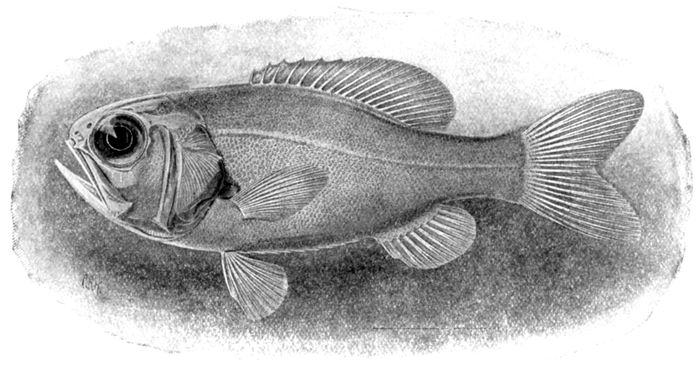
Fig. 201.—Paratrachichthys prosthemius Jordan & Fowler, Misaki, Japan. Family Trachichthyidæ.
The Soldier-fishes: Holocentridæ.—The soldier-fishes (Holocentridæ),
also known as squirrel-fishes, Welshmen, soldados,
matajuelos, malau, alehi, etc., are shore fishes very characteristic
of rocky banks in the tropical seas. In this family the flesh
is firm and the large scales very hard and with very rough
edges. There are eleven spines in the dorsal and four in the
anal, the third being usually very long. The ventral fins have
one spine and seven soft rays. The whole head and body are
rough with prickles. The coloration is always brilliant, the
ground hue being scarlet or crimson, often with lines or stripes
of white, black, or golden. The fishes are valued as food, and
they furnish a large part of the beauty of coloration so characteristic
of the fishes of the coral reefs. The species are active,
pugnacious, carnivorous, but not especially voracious, the
mouth being usually small.
254
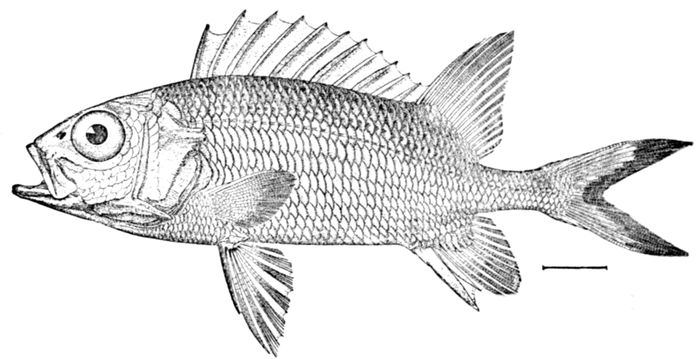
Fig. 202.—Soldier-fish, Holocentrus ascenscionis (Osbeck).
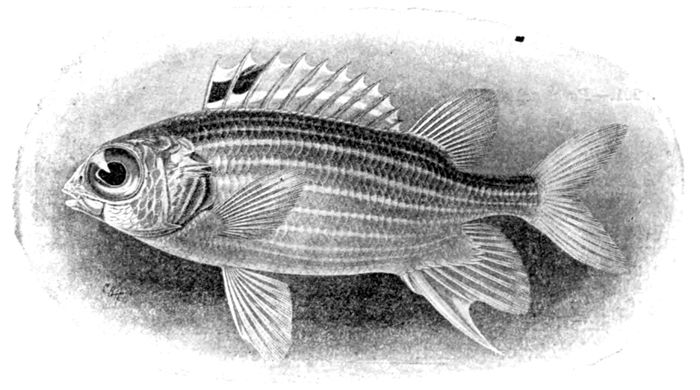
Fig. 203.—Soldier-fish, Holocentrus ittodai Jordan & Fowler. Riu Kiu Islands, Japan.
The genus Holocentrus is characterized by the presence of
a large spine on the angle of the preopercle. Its species are
especially numerous, Holocentrus ascenscionis, abundant in
Cuba, ranges northward in the Gulf Stream. Holocentrus
suborbitalis, the mojarra cardenal, is a small, relatively dull
species swarming about the rocks of western Mexico. Holocentrus
spinosissimus is a characteristic fish of Japan. Many
other species abound throughout Polynesia and the East Indies,
as well as in tropical America. Holocentrus ruber and Holocentrus
255diadema are common species of Polynesia and the East
Indies. Other abundant species are H. spinifer, H. microstomus,
and H. violascens.
Holocentrus marianus is the marian of the French West
Indies. Holocentrus sammara, and related large-mouthed species
occur in Polynesia.
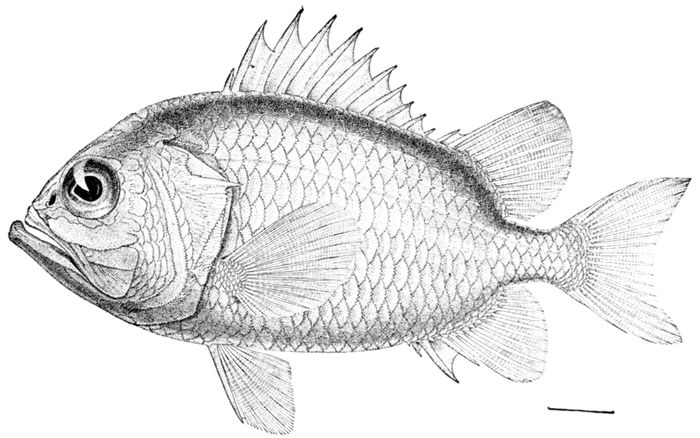
Fig. 204.—Ostichthys japonicus (Cuv. & Val.). Giran, Formosa.
In Myripristis the preopercular spine is wanting and the
air-bladder is divided into two parts, the anterior extending
to the ear. Myripristis jacobus is the brilliantly colored candil,
or "Frère Jacques," of the West Indies. Species of Myripristis
are known in Hawaii as u-u. A curious method of catching
Myripristis murdjan is pursued on the Island of Hawaii.
A living fish is suspended by a cord in front of a reef inhabited
by this species. It remains with scarlet fins spread and glistening
red scales. Its presence is a challenge to other individuals,
who rush out to attack it. These are then drawn out by a
concealed scoop-net, and a fresh specimen is taken as a decoy.
Myripristis pralinius, M. multiradiatus, and other species
occur in Polynesia. Ostichthys is allied to Myripristis but
with very large rough scales. Ostichthys japonicus is a large
and showy fish of the waters of Japan. Ostichthys pillwaxi
256occurs at Honolulu. Holotrachys lima is a small, brick-red fish
with small very rough scales found throughout Polynesia.
Fossil species of Holocentrus, Myripristis, and related extinct
genera occur in the Eocene and Miocene. Holocentrus macrocephalus,
from Monte Bolca Eocene, is one of the best known.
Myricanthus leptacanthus from the same region, has very slender
spines in the fins.
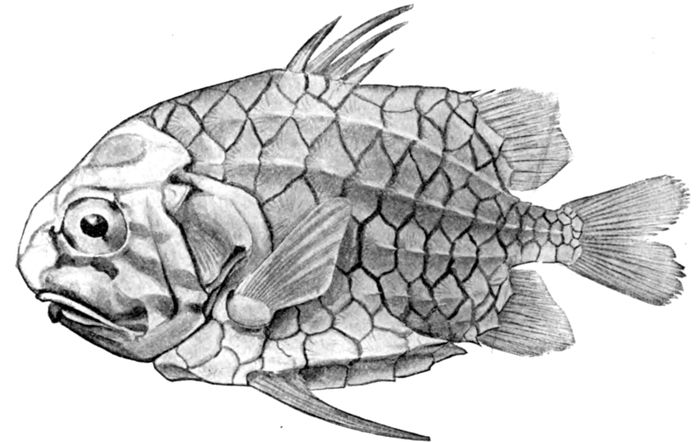
Fig. 205.—Pine-cone Fish, Monocentris japonicus (Houttuyn). Waka, Japan.
The Polymixiidæ.—The family of Polymixiidæ, or barbudos,
is one of the most interesting in Ichthyology from its bewildering
combination of characters belonging to different groups.
With the general aspect of a Berycoid, the ventral rays I, 7,
and the single dorsal fin with a few spines, Polymixia has the
scales rather smooth and at the chin are two long barbels which
look remarkably like those of the family of Mullidæ or Surmullets.
As in the Mullidæ, there are but four branchiostegals.
In other regards the two groups seem to have little in common.
According to Starks, the specialized feelers at the chin are
different in structure and must have been independently
developed in the two groups. In Polymixia, each barbel is
suspended from the hypohyal; three rudimentary branchiostegals
forming its thickened base. In Mullus, each barbel is suspended
from the trip of a slender projection of the ceratohyal,
having no connection with the branchiostegals. Polymixia possesses
257the orbitosphenoid bone and is a true berycoid, while
the Mullidæ are genuine percoid fishes.
Four species of Polymixia are recorded from rather deep
water: Polymixia nobilis from Madeira, Polymixia lowei from
the West Indies, Polymixia berndti from Hawaii, and Polymixia
japonica from Japan. All are plainly colored, without
red.
The Pine-cone Fishes: Monocentridæ.—Among the most extraordinary
of all fishes is the little family of Monocentridæ,
or pine-cone fishes. Monocentris japonicus, the best-known
species, is common on the coasts of Japan. It reaches the
length of five inches. The body is covered with a coat of mail,
made of rough plates which look as though carelessly put
together. The dorsal spines are very strong, and each ventral
fin is replaced by a very strong rough spine. The animal fully
justifies the remark of its discoverer, Houttuyn (1782), that
it is "the most remarkable fish which exists." It is dull golden
brown in color, and in movement as sluggish as a trunkfish.
A similar species, called knightfish, Monocentris gloriæ-maris,
is found in Australia. No fossils allied to Monocentris are
known.
258
CHAPTER XVI
PERCOMORPHI
Suborder Percomorphi, the Mackerels and Perches.—We
may place in a single suborder the various groups
of fishes which cluster about the perches, and the
mackerels. The group is not easily definable and may contain
heterogeneous elements. We may, however, arrange
in it, for our present purposes, those spiny-rayed fishes
having the ventral fins thoracic, of one spine and five rays
(the ventral fin occasionally wanting or defective, having a
reduced number of rays), the lower pharyngeal bones separate,
the suborbital chain without backward extension or bony
stay, the post-temporal normally developed and separate from
the cranium, the premaxillary and maxillary distinct, the
cranium itself without orbitosphenoid bone, having a structure
not greatly unlike that of perch or mackerel, and the back-bone
primitively of twenty-four vertebræ, the number increased
in arctic, pelagic, or fresh-water offshoots.
The species, comprising the great body of the spiny-rayed
forms, group themselves chiefly about two central families,
the Scombridæ, or mackerels, and the Serranidæ, the sea-bass,
with their fresh-water allies, the Percidæ, or perch.
The Mackerel Tribe: Scombroidea.—The two groups of Percomorphi,
the mackerel-like and the perch-like, admit of no
exact definition, as the one fully grades into the other. The
mackerel-like forms, or Scombroidea, as a whole are defined by
their adaptation for swift movement. The profile is sharp anteriorly,
the tail slender, with widely forked caudal; the scales
are usually small, thin, and smooth, of such a character as not
to produce friction in the water.
In general the external surface is smooth, the skeleton
light and strong, the muscles firm, and the species are carnivorous
259and predaceous. But among the multitude of forms are
many variations, and some of these will seem to be exceptions
to any definition of mackerel-like fishes which could possibly
be framed.
The mackerels, or Scombroidea, have usually the tail very
slender, composed of very strong bones, with widely forked
fin. In the perch and bass the tail is stout, composed largely
of flesh, the supporting vertebræ relatively small and spread out
fan-fashion behind. Neither mackerels nor perch nor any of
their near allies ever have more than five soft rays in the ventral
fins, and the persistence of this number throughout the Percomorphi,
Squamipinnes, Pharyngognathi, and spiny fishes
generally must be attributed to inheritance from the primitive
perch-like or mackerel-like forms. In almost all the groups
to be considered in this work, after the Berycoidea the ventral
rays are I, 5, or else fewer through degeneration, never more.
In the central or primitive members of most of these groups
there are twenty-four vertebræ, the number increased in certain
forms, probably through repetitive degeneration.
The True Mackerels: Scombridæ.—We may first consider
the great central family of Scombridæ, or true mackerels,
distinguished among related families by their swift forms,
smooth scales, metallic coloration, and technically by the
presence of a number of detached finlets behind the dorsal
and anal fins. The cut of the mouth is peculiar, the spines
in the fins are feeble, the muscular system is extremely strong,
the flesh oily, and the air-bladder reduced in size or altogether
wanting. As in most swift-swimming fishes and fishes of
pelagic habit, the vertebræ are numerous and relatively small,
an arrangement which promotes flexibility of body. It is
not likely that this group is the most primitive of the scombroid
fishes. In some respects the Stromateidæ stand nearer the
primitive stock. The true mackerels, however, furnish the
most convenient point of departure in reviewing the great
group.
In the genus of true mackerels, Scomber, the dorsal fins
are well separated, the first being rather short, and the scales
of the shoulders are not modified to form a corselet. There
are numerous species, two of them of general interest. The
260common mackerel, Scomber scombrus, is one of the best known
of food-fishes. It is probably confined to the Atlantic, where
on both shores it runs in vast schools, the movements varying
greatly from season to season, the preference being for cool
waters. The female mackerel produces about 500,000 eggs
each year, according to Professor Goode. These are very
minute and each is provided with an oil-globule, which causes
it to float on the surface. About 400,000 barrels of mackerel
are salted yearly by the mackerel fleet of Massachusetts. Single
schools of mackerel, estimated to contain a million barrels,
have been recorded. Captain Harding describes such a school
as "a windrow of fish half a mile wide and twenty miles
long."

Fig. 206.—Mackerel, Scomber scombrus L. New York.
Professor Goode writes:
"Upon the abundance of mackerel depends the welfare of
many thousands of the citizens of Massachusetts and Maine.
The success of the mackerel-fishery is much more uncertain
than that of the cod-fishery, for instance, for the supply of
cod is quite uniform from year to year. The prospects of
each season are eagerly discussed from week to week in
thousands of little circles along the coast, and are chronicled
by the local press. The story of each successful trip is passed
from mouth to mouth, and is a matter of general congratulation
in each fishing community. A review of the results of the
American mackerel-fishery, and of the movements of the fish
in each part of the season, would be an important contribution
to the literature of the American fisheries.
"The mackerel-fishery is peculiarly American, and its history
is full of romance. There are no finer vessels afloat than the
261American mackerel-schooners—yachts of great speed and
unsurpassed for seaworthiness. The modern instruments of
capture are marvels of inventive skill, and require the highest
degree of energy and intelligence on the part of the fishermen.
The crews of the mackerel-schooners are still for the
most part Americans of the old colonial stock, although the
cod and halibut fisheries are to a great extent given up to
foreigners.
"When the mackerel is caught, trout, bass, and sheepshead
cannot vanquish him in a gastronomic tournament. In
Holland, to be sure, the mackerel is not prized, and is accused
of tasting like rancid fish-oil, and in England, even, they are
usually lean and dry, like the wretched skeletons which are
brought to market in April and May by the southern fleet,
which goes forth in the early spring from Massachusetts to
intercept the schools as they approach the coasts of Carolina
and Virginia. They are not worthy of the name of mackerel.
Scomber Scombrus is not properly in season until the spawning
time is over, when the schools begin to feed at the surface in
the Gulf of Maine and the 'North Bay.'
"Just from the water, fat enough to broil in its own drippings,
or slightly corned in strong brine, caught at night and
eaten in the morning, a mackerel or a bluefish is unsurpassable.
A well-cured autumn mackerel is perhaps the finest of
all salted fish, but in these days of wholesale capture by the
purse-seine, hasty dressing and careless handling, it is very difficult
to obtain a sweet and sound salt mackerel. Salt mackerel
may be boiled as well as broiled, and a fresh mackerel
may be cooked in the same manner. Americans will usually
prefer to do without the sauce of fennel and gooseberry which
transatlantic cooks recommend. Fresh and salt, fat and lean,
new or stale, mackerel are consumed by Americans in immense
quantities, as the statistics show, and whatever their state,
always find ready sale."
Smaller, less important, less useful, but far more widely
distributed is the chub-mackerel, or thimble-eyed mackerel,
Scomber japonicus (Houttuyn, 1782), usually known by the
later name of Scomber colias (Gmelin, 1788). In this species
the air-bladder (absent in the common mackerel) is moderately
262developed. It very much resembles the true mackerel,
but is of smaller size, less excellence as a food-fish, and keeps
nearer to the shore. It may be usually distinguished by the
presence of vague, dull-gray spots on the sides, where the true
mackerel is lustrous silvery.
This fish is common in the Mediterranean, along our Atlantic
coast, on the coast of California, and everywhere in Japan.
Scomber antarcticus is the familiar mackerel of Australia.
Scomber loo, silvery, with round black spots, is the common
mackerel of the South Seas, locally known as Ga.
Scomber priscus is a fossil mackerel from the Eocene.
Auxis thazard, the frigate mackerel, has the scales of the
shoulders enlarged and somewhat coalescent, forming what is
called a corselet. The species ranges widely through the seas
of the world in great numbers, but very erratic, sometimes
myriads reaching our Eastern coast, then none seen for years.
It is more constant in its visits to Japan and Hawaii. Fossil
species of Auxis are found in the Miocene.
The genus Gymnosarda has the corselet as in Auxis, but the
first dorsal fin is long, extending backward to the base of the
second. Its two species, Gymnosarda pelamis, the Oceanic
bonito, and Gymnosarda alleterata, the little tunny, are found
in all warm seas, being especially abundant in the Mediterranean,
about Hawaii and Japan. These are plump fish of moderate
size, with very red and very oily flesh.
Closely related to these is the great tunny, or Tuna (Thunnus
thynnus) found in all warm seas and reaching at times a weight
of 1500 pounds. These enormous fishes are much valued by
anglers, a popular "Tuna Club" devoted to the sport of catching
them with a hook having its headquarters at Avalon, on
Santa Catalina Island, in California. They are good food,
although the flesh of the large ones is very oily. The name
horse-mackerel is often given to these monsters on the New
England coast. In California, the Spanish name of tuna has
become current among fisherman.
Very similar to the tuna, but much smaller, is the Albacore
(Germo alalonga). This reaches a weight of fifteen to thirty
pounds, and is known by its very long, almost ribbon-like pectoral
fins. This species is common in the Mediterranean, and
263about the Santa Barbara Islands, where it runs in great schools
in March. The flesh of the albacore is of little value, unless,
as in Japan, it is eaten raw. The Japanese shibi (Germo germo)
is another large albacore, having the finlets bright yellow. It is
found also at Hawaii.
The bonito (Sarda sarda) wanders far throughout the Atlantic,
abounding on our Atlantic coast as in the Mediterranean,
coming inshore in summer to spawn or feed. Its flesh is red
and not very delicate, though it may be reckoned as a fair food-fish.
It is often served under the name of "Spanish mackerel"
to the injury of the reputation of the better fish.

Fig. 207.—The Long-fin Albacore, Germo alalunga (Gmelin). Gulf Stream.
Professor Goode writes:
"One of these fishes is a marvel of beauty and strength.
Every line in its contour is suggestive of swift motion. The
head is shaped like a minie bullet, the jaws fit together so
tightly that a knife-edge could scarcely pass between, the eyes
are hard, smooth, their surfaces on a perfect level with the
adjoining surfaces. The shoulders are heavy and strong, the
contours of the powerful masses of muscle gently and evenly
merging into the straighter lines in which the contour of the
body slopes back to the tail. The dorsal fin is placed in a
groove into which it is received, like the blade of a clasp-knife
in its handle. The pectoral and ventral fins also fit into depressions
in the sides of the fish. Above and below, on the posterior
third of the body, are placed the little finlets, each a little
rudder with independent motions of its own, by which the
course of the fish may be readily steered. The tail itself is a
264crescent-shaped oar, without flesh, almost without scales, composed
of bundles of rays flexible, yet almost as hard as ivory.
A single sweep of this powerful oar doubtless suffices to propel
the bonito a hundred yards, for the polished surfaces of its
body can offer little resistance to the water. I have seen a
common dolphin swimming round and round a steamship,
advancing at the rate of twelve knots an hour, the effort being
hardly perceptible. The wild duck is said to fly seventy miles
in an hour. Who can calculate the speed of the bonito? It
might be done by the aid of the electrical contrivances by which
is calculated the initial velocity of a projectile. The bonitoes
in our sounds to-day may have been passing Cape Colony or
the Land of Fire day before yesterday."
Another bonito, Sarda chilensis, is common in California;
in Chile, and in Japan. This species has fewer dorsal spines
than the bonito of the Atlantic, but the same size, coloration,
and flesh. Both are blue, with undulating black stripes along
the side of the back.
The genus Scomberomorus includes mackerels slenderer in
form, with larger teeth, no corselet, and the flesh comparatively
pale and free from oil.

Fig. 208.—The Spanish Mackerel, Scomberomorus maculatus (Mitchill). New York.
Scomberomorus maculatus, the Spanish mackerel of the West
Indies, is one of the noblest of food-fishes. Its biography
was written by Mitchill almost a century ago in these
words:
"A fine and beautiful fish; comes in July."
Goode thus writes of it:
"The Spanish mackerel is surely one of the most graceful
265of fishes. It appeals as scarcely any other can to our love of
beauty, when we look upon it, as shown in Kilbourn's well-known
painting, darting like an arrow just shot from the bow,
its burnished sides, silver flecked with gold, thrown into bold
relief by the cool green background of the rippled sea; the
transparent grays, opalescent whites, and glossy blacks of its
trembling fins enhance the metallic splendor of its body, until
it seems to rival the most brilliant of tropical birds. Kilbourn
made copies of his large painting on the pearly linings of seashells
and produced some wonderful effects by allowing the
natural luster of the mother-of-pearl to show through his transparent
pigments and simulate the brilliancy of the life-inspired
hues of the quivering, darting sea-sprite, whose charms even
his potent brush could not properly depict.
"It is a lover of the sun, a fish of tropical nature, which
comes to us only in midsummer, and which disappears with
the approach of cold, to some region not yet explored by ichthyologists.
It is doubtless very familiar in winter to the
inhabitants of some region adjacent to the waters of the Caribbean
or the tropical Atlantic, but until this place shall have
been discovered it is more satisfactory to suppose that with
the bluefish and the mackerel it inhabits that hypothetical
winter resort to which we send the migratory fishes whose
habits we do not understand—the middle strata of the ocean,
the floating beds of Sargassum, which drift hither and thither
under the alternate promptings of the Gulf-stream currents
and the winter winds."
The Spanish mackerel swims at the surface in moderate
schools and is caught in abundance from Cape May southward.
Its white flesh is most delicious, when properly grilled,
and Spanish mackerel, like pampano, should be cooked in
no other way.
A very similar species, Scomberomorus sierra, occurs on the
west coast of Mexico. For some reason it is little valued as
food by the Mexicans. In California, the Monterey Spanish
mackerel (Scomberomorus concolor) is equally excellent as a
food-fish. This fish lacks the spots characteristic of most
of its relatives. It was first found in the Bay of Monterey,
especially at Santa Cruz and Soquel, in abundance in the autumn
266of 1879 and 1880. It has not, so far as is known, been seen
since, nor is the species recorded from any other coast.
The true Spanish mackerel has round, bronze-black spots
upon its sides. Almost exactly like it in appearance is the
pintado, or sierra (Scomberomorus regalis), but in this species
the spots are oblong in form. The pintado abounds in the
West Indies. Its flesh is less delicate than that of the more
true Spanish mackerel. The name sierra, saw, commonly
applied to these fishes by Spanish-speaking people, has been
corrupted into cero in some books on angling.
Still other Spanish mackerel of several species occur on
the coasts of India, Chile, and Japan.
The great kingfish, or cavalla (Scomberomorus cavalla), is
a huge Spanish mackerel of Cuba and the West Indies, reaching
a weight of 100 pounds. It is dark iron-gray in color, one
of the best of food-fishes, and is unspotted, and its firm, rich
flesh resembles that of the barracuda.
Still larger is the great guahu, or peto, an immense sharp-nosed,
swift-swimming mackerel found in the East and West
Indies, as well as in Polynesia, reaching a length of six feet
and a weight of more than a hundred pounds. Its large
knife-like teeth are serrated on the edge and the color is
almost black. Acanthocybium solandri is the species found in
Hawaii and Japan. The American Acanthocybium petus,
occasionally also taken in the Mediterranean, may be the
same species.
Fossil Spanish mackerels, tunnies, and albacores, as well
as representatives of related genera now extinct, abound in
the Eocene and Miocene, especially in northern Italy. Among
them are Scomber antiquus from the Miocene, Scombrinus
macropomus from the Eocene London clays, much like Scomber,
but with stronger teeth, Sphyrænodus priscus from the same
deposits, the teeth still larger, Scombramphodon crossidens,
from the same deposits, also with strong teeth, like those of
Scomberomorus. Scomberomorus is the best represented of
all the genera as fossil, Scomberomorus speciosus and numerous
other species occurring in the Eocene. A fossil species of
Germo, G. lanceolatus, occurs at Monte Bolca in Eocene rocks.
Another tunny, with very small teeth is Eothynnus salmonens,
267from the lower Eocene near London. Several other tunny-like
fishes occur in the lower Tertiary.
The Escolars: Gempylidæ.—More predaceous than the mackerels
and tunnies are the pelagic mackerels, Gempylidæ, known
as escolars ("scholars"), with the body almost band-shaped
and the teeth very large and sharp. Some of these, from
the ocean depths, are violet-black in color, those near the
surface being silvery. Escolar violaceus lives in the abysses
of the Gulf Stream. Ruvettus pretiosus, the black escolar,
lives in more moderate depths and is often taken in Cuba,
Madeira, Hawaii, and Japan. It is a very large fish, black,
with very rough scales. The flesh is white, soft, and full of
oil; sometimes rated very high, and at other times too rank
to be edible. The name escolar means scholar in Spanish, but
its root meaning, as applied to this fish, comes from a word
meaning to scour, in allusion to the very rough scales.
Promethichthys prometheus, the rabbit-fish, or conejo, so-called
from its wariness, is caught in the same regions, being
especially common about Madeira and Hawaii. Gempylus
serpens, the snake-mackerel, is a still slenderer and more voracious
fish of the open seas. Thyrsites atun is the Australian "barracuda,"
a valued food-fish, voracious and predaceous.
Scabbard-and Cutlass-fishes: Lepidopidæ and Trichiuridæ.—The
family of Lepidopidæ, or scabbard-fishes, includes degenerate
mackerels, band-shaped, with continuous dorsal fin,
and the long jaws armed with very small teeth. These are
found in the open sea, Lepidopus candatus being the most
common. This species reaches a length of five or six feet
and comes to different coasts occasionally to deposit its spawn.
It lives in warm water and is at once chilled by the least cold;
hence the name of frostfish occasionally applied to it. Several
species of Lepidopus are fossil in the later Tertiary. Lepidopus
glarisianus occurs in the Swiss Oligocene, and with it
Thyrsitocephalus alpinus, which approaches more nearly to the
Gempylidæ.
Still more degenerate are the Trichiuridæ, or cutlass-fishes,
in which the caudal fin is wanting, the tail ending in a hair-like
filament. The species are bright silvery in color, very slender,
and very voracious, reaching a length of three to five feet.
268Trichiurus lepturus is rather common on our Atlantic coast.
The names hairfish and silver-eel, among others, are often given
to it. Trichiurus japonicas, a very similar species, is common
in Japan, and other species inhabit the tropical seas. Trichiurichthys,
a fossil genus with well-developed scales, precedes
Trichiurus in the Miocene.

Fig. 209.—Cutlass-fish, Trichiurus lepturus Linnæus. St. Augustine, Fla.
The Palæorhynchidæ.—The extinct family of Palæorhynchidæ
is found from the Eocene to the Oligocene. It contains very
long and slender fishes, with long jaws and small teeth, the
dorsal fin long and continuous. The species resembles the
Escolar on the one hand and the sailfishes on the other, and
they may prove to be ancestral to the Istiophoridæ. Hemirhynchus
deshayesi with the upper jaw twice as long as the
lower, sword-like, occurs in the Eocene at Paris; Palæorhynchum
glarisianum, with the jaws both elongate, the lower longest, is
in the Oligocene of Glarus. Several other species of both genera
are recorded.

Fig. 210.—Palæorhynchus glarisianus Blainville. Oligocene. (After Woodward.)
The Sailfishes: Istiophoridæ.—Remotely allied to the cutlass-fishes
and still nearer to the Palæorhynchidæ is the family of
sailfishes, Istiophoridæ, having the upper jaw prolonged into
269a sword made of consolidated bones. The teeth are very feeble
and the ventral fins reduced to two or three rays. The species
are few in number, of large size, and very brilliant metallic
coloration, inhabiting the warm seas, moving northward in
summer. They are excellent as food, similar to the swordfish
in this as in many other respects. The species are not well
known, being too large for museum purposes, and no one having
critically studied them in the field. Istiophorus has the dorsal
fin very high, like a great sail, and undivided; Istiophorus nigricans
is rather common about the Florida Keys, where it
reaches a length of six feet. Its great sail, blue with black
spots, is a very striking object. Closely related to this is
Istiophorus orientalis of Japan and other less known species
of the East Indies.
Tetrapturus, the spearfish, has the dorsal fin low and divided
into two parts. Its species are taken in most warm seas,
Tetrapturus imperator throughout the Atlantic, Tetrapturus amplus
in Cuba, Tetrapturus mitsukurii and Tetrapturus mazara
in Japan. These much resemble swordfish in form and habits,
and they have been known to strike boats in the same way.
Fossil Istiophoridæ are known only from fragments of the
snout, in Europe and America, referred provisionally to Istiophorus.
The genus Xiphiorhynchus, fossil swordfishes from the
Eocene, known from the skull only, may be referred to this
family, as minute teeth are present in the jaws. Xiphiorhynchus
priscus is found in the London Eocene.
The Swordfishes: Xiphiidæ.—The family of swordfishes,
Xiphiidæ, consists of a single species, Xiphias gladius, of worldwide
distribution in the warm seas. The snout in the swordfish
is still longer, more perfectly consolidated, and a still more
effective weapon of attack. The teeth are wholly wanting,
and there are no ventral fins, while the second of the two fins
on the back is reduced to a slight finlet.

Fig. 211.—Young Swordfish, Xiphias gladius (Linnæus). (After Lütken.)
270The swordfish follows the schools of mackerel to the New
England coasts. "Where you see swordfish, you may know
that mackerel are about," Goode quotes from an old fisherman.
The swordfish swims near the surface, allowing its dorsal fin
to appear, as also the upper lobe of the caudal. It often leaps
out of the water, and none of all the fishes of the sea can swim
more swiftly.

Fig. 212.—Swordfish, Xiphias gladius (Linnæus). (After Day.)
"The pointed head," says Goode, "the fins of the back and
abdomen snugly fitting into grooves, the absence of ventrals,
the long, lithe, muscular body, sloping slowly to the tail, fit
it for the most rapid and forcible movement through the water.
Prof. Richard Owen, testifying in an England court in regard
to its power, said:
"'It strikes with the accumulated force of fifteen double-handed
hammers. Its velocity is equal to that of a swivel-shot,
and is as dangerous in its effects as a heavy artillery projectile.'
"Many very curious instances are on record of the encounters
of this fish with other fishes, or of their attacks upon ships.
What can be the inducement for it to attack objects so much
larger than itself it is hard to surmise.
"It surely seems as if a temporary insanity sometimes takes
possession of the fish. It is not strange that, when harpooned,
it should retaliate by attacking its assailant. An old swordfish
fisherman told Mr. Blackford that his vessel had been
struck twenty times. There are, however, many instances of
entirely unprovoked assault on vessels at sea. Many of these
are recounted in a later portion of this memoir. Their movements
when feeding are discussed below, as well as their alleged
peculiarities of movement during the breeding season.
271"It is the universal testimony of our fishermen that two
are never seen swimming close together. Capt. Ashby says
that they are always distant from each other at least thirty
or forty feet.
"The pugnacity of the swordfish has become a byword.
Without any special effort on my part numerous instances of
their attacks upon vessels have in the last ten years found their
way into the pigeon-hole labeled 'Swordfish.'"
Swordfishes are common on both shores of the Atlantic
wherever mackerel run. They do not breed on our shores,
but probably do so in the Mediterranean and other warm seas.
They are rare off the California coast, but five records existing
(Anacapa, Santa Barbara, Santa Catalina, San Diego, off Cerros
Island). The writer has seen two large individuals in the
market of Yokohama, but it is scarcely known in Japan. As
a food-fish, the swordfish is one of the best, its dark-colored
oily flesh, though a little coarse, making most excellent steaks.
Its average weight on our coast is about 300 pounds, the
maximum 625.
The swordfish undergoes great change in the process of development,
the very young having the head armed with rough
spines and in nowise resembling the adult.
Fossil swordfishes are unknown, or perhaps cannot be distinguished
from remains of Istiophoridæ.
272
CHAPTER XVII
CAVALLAS AND PAMPANOS
The Pampanos: Carangidæ.—We next take up the great
family of Pampanos, Carangidæ, distinguished from
the Scombridæ as a whole by the shorter, deeper
body, the fewer and larger vertebræ, and by the loss of the provision
for swift movement in the open sea characteristic of the
mackerels and their immediate allies. A simple mark of the
Carangidæ is the presence of two separate spines in front of
the anal fin. These spines are joined to the fin in the young.
All of the species undergo considerable changes with age, and
almost all are silvery in color with metallic blue on the back.
Most like the true mackerel are the "leather-jackets," or
"runners," forming the genera Scomberoides and Oligoplites.
Scomberoides of the Old World has the body scaly, long, slender,
and fitted for swift motion; Scomberoides sancti-petri is a widely
diffused species, and others are found in Polynesia. In the
New World genus Oligoplites the scales are reduced to linear
ridges imbedded in the skin at different angles. Oligoplites
saurus is a common dry and bony fish abounding in the West
Indies and ranging north in summer to Cape Cod.
Naucrates ductor, the pilot-fish, or romero, inhabits the
open sea, being taken—everywhere rarely—in Europe, the
West Indies, Hawaii, and Japan. It is marked by six black
cross-bands. Its tail has a keel, and it reaches a length of about
two feet. In its development it undergoes considerable change,
its first dorsal fin being finally reduced to disconnected spines.
The amber-fishes, forming the genus Seriola, are rather
robust fishes, with the anal fin much shorter than the soft dorsal.
The sides of the tail have a low, smooth keel. From a
yellow streak obliquely across the head in some species they
receive their Spanish name of coronado. The species are
273numerous, found in all warm seas, of fair quality as food, and
range in length from two to six feet.
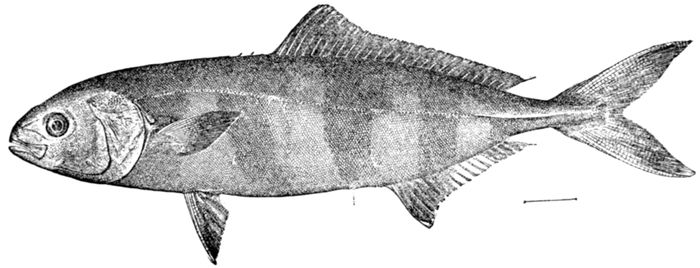
Fig. 213.—Pilot-fish, Naucrates ductor (Linnæus). New Bedford, Mass.
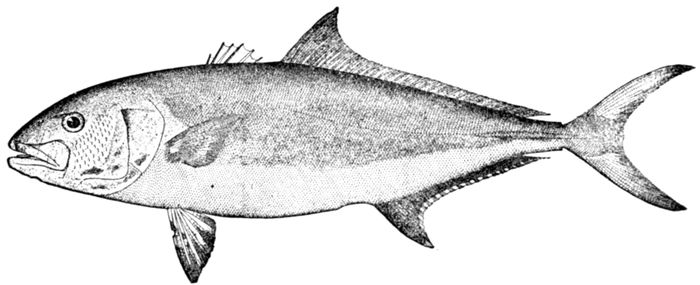
Fig. 214.—Amber-fish, Seriola lalandi (Cuv. & Val.). Family Carangidæ. Wood's Hole.
Seriola dorsalis is the noted yellow-tail of California, valued
by anglers for its game qualities. It comes to the Santa Barbara
Islands in early summer. Seriola zonata is the rudder-fish,
or shark's pilot, common on our New England coast. The
banded young, abundant off Cape Cod, lose their marks with
age. Seriola hippos is the "samson-fish" of Australia. Seriola
lalandi is the great amber-fish of the West Indies, occasionally
venturing farther northward, and Seriola dumerili
the amber-jack, or coronado, of the Mediterranean. The deep-bodied
medregal (Seriola fasciata) is also taken in the West
Indies, as is also the high-finned Seriola rivoliana. Species
very similar to these occur in Hawaii and Japan, where they
274are known as Ao, or bluefishes. Seriola lata is fossil in the
mountains of Tuscany.
The runner, Elegatis bipinnulatus, differs from Seriola in
having a finlet behind dorsal and anal. It is found in almost
all warm seas, ranging north once in a while to Long Island.
The mackerel scads (Decapterus) have also a finlet, and on
the posterior part of the body the lateral line is shielded with
bony plates. In size and form these little fishes much resemble
small mackerel, and they are much valued as food wherever
abundant. Decapterus punclatus, known also as cigar-fish and
round-robin, frequently visits our Atlantic coasts from the West
Indies, where it is abundant. Decapterus russelli is the Maruaji,
highly valued in Japan for its abundance, while Decapterus
muroadsi is the Japanese muroaji.
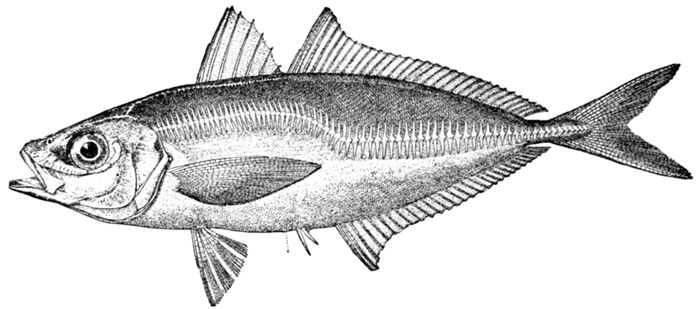
Fig. 215.—The Saurel, Trachurus trachurus (Linnæus). Newport, R. I.
Megalaspis cordyla abounds in the East Indies and Polynesia.
It has many finlets, and the bony plates on the lateral
line are developed to an extraordinary degree.
In Trachurus the finlets are lost and the bony plates extend
the whole length of the lateral line. The species known as
saurel and wrongly called horse-mackerel are closely related
and some of them very widely distributed.
Trachurus trachurus common in Europe, extends to Japan
where it is the abundant maaji. Trachurus mediterraneus is
common in southern Europe and Trachurus symmetricus in
California. Trachurus picturatus of Madeira is much the same
275as the last named, and there is much question as to the right
names and proper limits of all these species.
In Trachurops the bony plates are lacking on the anterior
half of the body, and there is a peculiar nick and projection
on the lower part of the anterior edge of the shoulder-girdle.
Trachurops crumenophthalma, the goggler, or big-eyed scad,
ranges widely in the open sea and at Hawaii, as the Akule, is
the most highly valued because most abundant of the migratory
fishes. At Samoa it is equally abundant, the name being
here Atule. Trachurops torva is the meaji, or big-eyed scad, of
the Japanese, always abundant.

Fig. 216.—Yellow Mackerel, Carangus chrysos (Mitchill). Wood's Hole.
To Caranx, Carangus, and a number of related genera, characterized
by the bony armature on the narrow caudal peduncle, a
host of species may be referred. These fishes, known as cavallas,
hard-tails, jacks, etc., are broad-bodied, silvery or metallic black
in color, and are found in all warm seas. They usually move from
the tropics northward in the fall in search of food and are especially
abundant on our Atlantic coast, in Polynesia, and in Japan.
About the Oceanic Islands they are resident, these being their
chosen spawning-grounds. In Hawaii and Samoa they form a
large part of the food-supply, the ulua (Carangus forsteri) and the
malauli (Carangus melampygus) being among the most valuable
food-fishes, large in size and excellent in flesh, unsurpassed in
fish chowders. Of the American species Carangus chrysos,
called yellow mackerel, is the most abundant, ranging from Cape
276Cod southward. This is an elongate species of moderate size.
The cavalla, or jiguagua, Carangus hippos, known by the black
spot on the opercle, with another on the pectoral fin, is a widely
distributed species and one of the largest of the tribe. Another
important food-fish is the horse-eye-jack, or jurel, Carangus
latus, which is very similar to the species called ulua in the Pacific.
The black jack, or tiñosa, of Cuba, Carangus funebris, is said to be
often poisonous. This is a very large species, black in color,
the sale of which has been long forbidden in the markets of
Havana. The young of different species of Carangus are often
found taking refuge under the disk of jelly-fishes protected by the
stinging feelers. The species of the genus Carangus have well-developed
teeth. In the restricted genus of Caranx proper, the
jaws are toothless. Caranx speciosus, golden with dark cross-bands,
is a large food-fish of the Pacific. Citula armata is another
widely distributed species, with some of the dorsal rays produced
in long filaments.
In Alectis ciliaris, the cobbler-fish, or threadfish, the armature
of the tail is very slight and each fin has some of its rays
drawn out into long threads. In the young these are very
much longer than the body, but with age they wear off and
grow shorter, while the body becomes more elongate. In
Vomer, Selene, and Chloroscombrus the bony armature of the
tail, feeble in Alectis, by degrees entirely disappears.
Vomer setipinnis, the so-called moonfish, or jorobado, has
the body greatly elevated, compressed, and distorted, while the
fins, growing shorter with age, become finally very low. Selene
vomer, the horse-head-fish, or look-down (see Fig. 113, Vol. I),
is similarly but even more distorted. The fins, filamentous in
the young, grow shorter with age, as in Vomer and Alectis.
The skeleton in these fishes is essentially like that of Carangus,
the only difference lying in the compression and distortion of
the bones. Chloroscombrus contains the casabes, or bumpers,
thin, dry, compressed fish, of little value as food, the bony
armature of the tail being wholly lost.
To the genus Trachinotus belong the pampanos, broad-bodied,
silvery fishes, toothless when adult, the bodies covered
with small scales and with no bony plates.
The true pampano, Trachinotus carolinus, is one of the
277finest of all food-fishes, ranking with the Spanish mackerel and
to be cooked in the same way, only by broiling. The flesh is
white, firm, and flaky, with a moderate amount of delicate oil.
It has no especial interest to the angler and it is not abundant
enough to be of great commercial importance, yet few fish
bring or deserve to bring higher prices in the markets of the
epicures. The species is most common along our Gulf coast,
ranging northward along the Carolinas as far as Cape Cod.
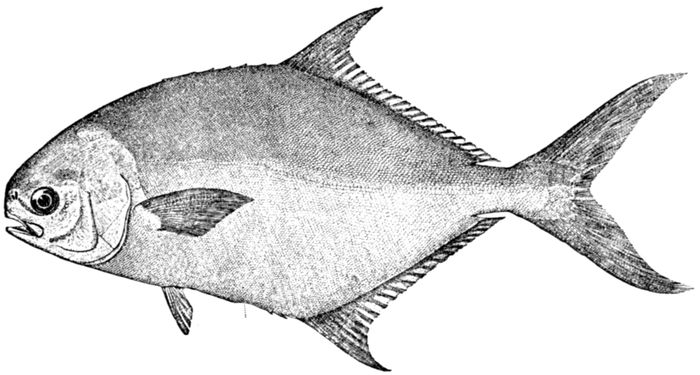
Fig. 217.—The Pampano, Trachinotus carolinus (Linnæus). Wood's Hole.
Pampano in Spanish means the leaf of the grape, from the
broad body of the fish. The spelling "pompano" should therefore
be discouraged.
The other pampanos, of which there are several in tropical
America and Asia, are little esteemed, the flesh being dry and
relatively flavorless. Trachinotus palometa, the gaff-topsail pampano,
has very high fins and its sides have four black bands
like the marks of a grill. The round pampano, Trachinotus
falcatus, is common southward, as is also the great pampano,
Trachinotus goodei, which reaches a length of three feet. Trachinotus
ovatus, a large deep-bodied pampano, is common in
Polynesia and the East Indies. No pampanos are found in
Europe, but a related genus, Lichia, contains species which much
resemble them, but in which the body is more elongate and
the mouth larger.
Numerous fossils are referred to the Carangidæ with more
278or less certainty. Aipichthys pretiosus and other species occur
in the Cretaceous. These are deep-bodied fishes resembling
Seriola, having the falcate dorsal twice as long as the anal and
the ventral ridge with thickened scales. Vomeropsis (longispina
elongata, etc.), also from the Eocene, with rounded caudal,
the anterior dorsal rays greatly elongate, and the supraoccipital
crest highly developed, probably constitutes with it a distinct
family, Vomeropsidæ. Several species referable to Carangus
are found in the Miocene. Archæus glarisianus, resembling
Carangus, but without scales so far as known, is found in the
Oligocene of Glarus; Seriola prisca and other species of Seriola
occur in the Eocene; Carangopsis brevis, etc., allied to Caranx,
but with the lateral line unarmed, is recorded from the Eocene
of France and Italy.
Ductor leptosomus from the Eocene of Monte Bolca
resembles Naucrates; Trachinotus tenuiceps is recorded from
Monte Bolca, and a species of uncertain relationship, called
Pseudovomer minutus, with sixteen caudal vertebræ is taken
from the Miocene of Licata.
The Papagallos: Nematistiidæ.—Very close to the Carangidæ,
and especially to the genus Seriola, is the small family of
Nematistiidæ, containing the papagallo, Nematistius pectoralis
of the west coast of Mexico. This large and beautiful fish has
the general appearance of an amber-fish, but the dorsal spines
are produced in long filaments. The chief character of the
family is found in the excessive division of the rays of the
pectoral fins.
The Bluefishes: Cheilodipteridæ.—Allied to the Carangidæ is
the family of bluefishes (Cheilodipteridæ, or Pomatomidæ). The
single species Cheilodipterus saltatrix, or Pomatomus saltatrix,
known as the bluefish, is a large, swift, extremely voracious fish,
common throughout most of the warmer parts of the Atlantic,
but very irregularly distributed on the various coasts. Its
distribution is doubtless related to its food. It is more abundant
on our Eastern coast than anywhere else, and its chief
food here is the menhaden. The bluefish differs from the
Carangidæ mainly in its larger scales, and in a slight serration
of the bones of the head. Its flesh is tender and easily torn.
As a food-fish, rich, juicy, and delicate, it has few superiors.
279Its maximum weight is from twelve to twenty pounds, but
most of those taken are much smaller. It is one of the most
voracious of all fish. Concerning this, Professor Baird observes:

Fig. 218.—Bluefish, Cheilodipterus saltatrix (L.). New York.
"There is no parallel in point of destructiveness to the
bluefish among the marine species on our coast, whatever may
be the case among some of the carnivorous fish of the South
American waters. The bluefish has been well likened to an
animated chopping-machine the business of which is to cut
to pieces and otherwise destroy as many fish as possible in a
given space of time. All writers are unanimous in regard to
the destructiveness of the bluefish. Going in large schools
in pursuit of fish not much inferior to themselves in size, they
move along like a pack of hungry wolves, destroying everything
before them. Their trail is marked by fragments of fish
and by the stain of blood in the sea, as, where the fish is too
large to be swallowed entire, the hinder portion will be bitten
off and the anterior part allowed to float away or sink. It is
even maintained with great earnestness that such is the gluttony
of the fish, that when the stomach becomes full the contents
are disgorged and then again filled. It is certain that
it kills many more fish than it requires for its own support.
"The youngest fish, equally with the older, perform this
function of destruction, and although they occasionally devour
crabs, worms, etc., the bulk of their sustenance throughout
the greater part of the year is derived from other fish. Nothing
is more common than to find a small bluefish of six or eight
inches in length under a school of minnows making continual
dashes and captures among them. The stomachs of the bluefish
280of all sizes, with rare exceptions, are found loaded with
the other fish, sometimes to the number of thirty or forty,
either entire or in fragments.
"As already referred to, it must also be borne in mind that
it is not merely the small fry that are thus devoured, and which
it is expected will fall a prey to other animals, but that the food
of the bluefish consists very largely of individuals which have
already passed a large percentage of the chances against their
reaching maturity, many of them, indeed, having arrived at
the period of spawning. To make the case more clear, let us
realize for a moment the number of bluefish that exist on our
coast in the summer season. As far as I can ascertain by the
statistics obtained at the fishing-stations on the New England
coast, as also from the records of the New York markets, kindly
furnished by Middleton & Carman, of the Fulton Market, the
capture of bluefish from New Jersey to Monomoy during the
season amounts to no less than one million individuals, averaging
five or six pounds each. Those, however, who have
seen the bluefish in his native waters and realized the immense
numbers there existing will be quite willing to admit that
probably not one fish in a thousand is ever taken by man. If,
therefore, we have an actual capture of one million, we may
allow one thousand millions as occurring in the extent of our
coasts referred to, even neglecting the smaller ones, which,
perhaps, should also be taken into account.
"An allowance of ten fish per day to each bluefish is not
excessive, according to the testimony elicited from the fishermen
and substantiated by the stomachs of those examined;
this gives ten thousand millions of fish destroyed per day. And
as the period of the stay of the bluefish on the New England
coast is at least one hundred and twenty days, we have in
round numbers twelve hundred million millions of fish devoured
in the course of a season. Again, if each bluefish, averaging
five pounds, devours or destroys even half its own weight of
other fish per day (and I am not sure that the estimate of some
witnesses of twice this weight is not more nearly correct), we
will have, during the same period, a daily loss of twenty-five
hundred million pounds, equal to three hundred thousand
millions for the season.
281"This estimate applies to three or four year old fish of at
least three to five pounds in weight. We must, however, allow
for those of smaller size, and a hundred-fold or more in number,
all engaged simultaneously in the butchery referred to.
"We can scarcely conceive of a number so vast; and however
much we may diminish, within reason, the estimate of the
number of bluefish and the average of their capture, there
still remains an appalling aggregate of destruction. While the
smallest bluefish feed upon the diminutive fry, those of which
we have taken account capture fish of large size, many of them,
if not capable of reproduction, being within at least one or
two years of that period.
"It is estimated by very good authority that of the spawn
deposited by any fish at a given time not more than 30 per
cent. are hatched, and that less than 10 per cent. attain an age
when they are able to take care of themselves. As their age
increases the chances of reaching maturity become greater and
greater. It is among the small residuum of this class that the
agency of the bluefish is exercised and whatever reasonable
reduction may be made in our estimate, we cannot doubt that
they exert a material influence.
"The rate of growth of the bluefish is also an evidence of
the immense amount of food they must consume. The young
fish which first appear along the shores of Vineyard Sound,
about the middle of August, are about five inches in length.
By the beginning of September, however, they have reached
six or seven inches, and on their reappearance in the second
year they measure about twelve or fifteen inches. After this
they increase in a still more rapid ratio. A fish which passes
eastward from Vineyard Sound in the spring weighing five
pounds is represented, according to the general impression,
by the ten to fifteen-pound fish of the autumn. If this be the
fact, the fish of three or four pounds which pass along the
coast of North Carolina in March return to it in October weighing
ten to fifteen pounds.
"As already explained, the relationship of these fish to the
other inhabitants of the sea is that of an unmitigated butcher;
and it is able to contend successfully with any other species
not superior to itself in size. It is not known whether an
282entire school ever unite in an attack upon a particular object of
prey, as is said to be the case with the ferocious fishes of the
South American rivers; should they do so, no animal, however
large, could withstand their onslaught.
"They appear to eat anything that swims of suitable size—fish
of all kinds, but perhaps more especially the menhaden,
which they seem to follow along the coast, and which they
attack with such ferocity as to drive them on the shore, where
they are sometimes piled up in windrows to the depth of a
foot or more."
The Sergeant-fishes: Rachycentridæ.—The Rachycentridæ, or
sergeant-fishes, are large, strong, swift, voracious shore fishes,
with large mouths and small teeth, ranging northward from the
warm seas. The dorsal spines are short and stout, separate
from the fin, and the body is almost cylindrical, somewhat like
that of the pike.

Fig. 219.—Sergeant-fish, Rachycentron canadum (Linnæus). Virginia.
Rachycentron canadum, called cobia, crab-eater, snooks, or
sergeant-fish, reaches a length of about five feet. The last
name is supposed to allude to the black stripe along its side,
like the stripe on a sergeant's trousers. It is rather common
in summer along our Atlantic coast as far as Cape Cod, especially
in Chesapeake Bay. Rachycentron pondicerrianum, equally
voracious, extends its summer depredations as far as Japan.
The more familiar name for these fishes, Elacate, is of later date
than Rachycentron.
Mr. Prime thus speaks of the crab-eater as a game-fish:
"In shape he may be roughly likened to the great northern
pike, with a similar head, flattened on the forehead. He is
dark green on the back, growing lighter on the sides, but the
283distinguishing characteristic is a broad, dark collar over the
neck, from which two black stripes or straps, parting on the
shoulders, extend, one on each side, to the tail. He looks as
if harnessed with a pair of traces, and his behavior on a fly-rod
is that of a wild horse. The first one that I struck, in the
brackish water of Hillsborough River at Tampa, gave me a
hitherto unknown sensation. The tremendous rush was not
unfamiliar, but when the fierce fellow took the top of the water
and went along lashing it with his tail, swift as a bullet, then
descended, and with a short, sharp, electric shock left the line
to come home free, I was for an instant confounded. It was
all over in ten seconds. Nearly every fish that I struck after
this behaved in the same way, and after I had got 'the hang
of them' I took a great many."
The Butter-fishes: Stromateidæ.—The butter-fishes (Stromateidæ)
form a large group of small fishes with short, compressed
bodies, smooth scales, feeble spines, the vertebræ in increased
number and especially characterized by the presence of a series
of tooth-like processes in the œsophagus behind the pharyngeals.
The ventral fins present in the young are often lost in
the process of development.
According to Mr. Regan, the pelvic bones are very loosely
attached to the shoulder-girdle as in the extinct genera Platycormus
and Homosoma. This is perhaps a primitive feature,
indicating the line of descent of these fishes from berycoid
forms.
We unite with the Stromateidæ the groups or families of
Centrolophidæ and Nomeidæ, knowing no characters by which
to separate them.
Stromateus fiatola, the fiatola of the Italian fishermen, is an
excellent food-fish of the Mediterranean. Poronotus triacanthus,
the harvest-fish, or dollar-fish, of our Atlantic coast, is a
common little silvery fish six to ten inches, as bright and almost
as round as a dollar. Its tender oily flesh has an excellent
flavor. Very similar to it is the poppy-fish (Palometa simillima)
of the sandy shores of California, miscalled the "California
pampano," valued by the San Francisco epicure, who pays
large prices for it supposing it to be pampano, although admitting
that the pampano in New Orleans has firmer flesh and
284better flavor. The harvest-fish, Peprilus paru, frequently
taken on our Atlantic coast, is known by its very high fins.
Stromateoides argenteus, a much larger fish than any of these,
is a very important species on the coasts of China.
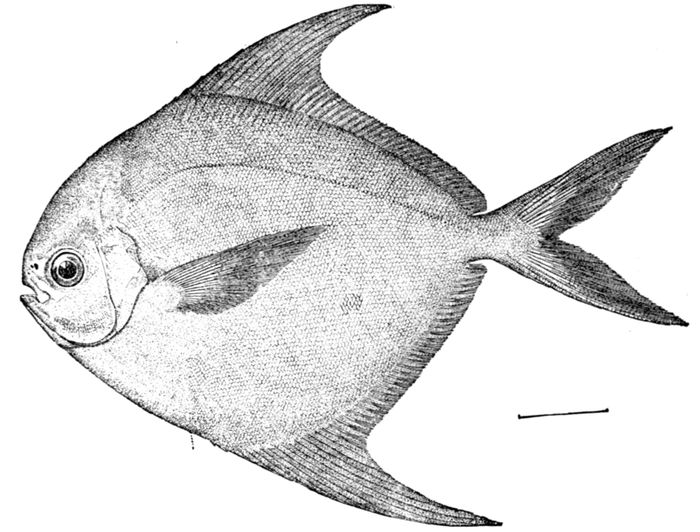
Fig. 220.—Harvest-fish, Peprilus paru (Linnæus). Virginia.
Psenopsis anomala takes the place of our butter-fishes in
Japan, and much resembles them in appearance as in flavor.
To the Stromateidæ we also refer the black ruff of Europe,
Centrolophus niger, an interesting deep-sea fish rarely straying
to our coast. Allied to it is the black rudder-fish, Palinurichthys
perciformis, common on the Massachusetts coast, where
it is of some value as a food-fish. A specimen in a live-box
once drifted to the coast of Cornwall, where it was taken uninjured,
though doubtless hungry. Other species of ruff-and
rudder-fish are recorded from various coasts.
Allied to the Stromateidæ are numerous fossil forms. Omosoma
sachelalmæ and other species occur in the Cretaceous at
Mount Lebanon. Platycormus germanus, with ctenoid scales
285resembling a berycoid, but with the ventral rays I, 5, occurs
in the Upper Cretaceous. Closely related to this is Berycopsis
elegans, with smoother scales, from the English Chalk.
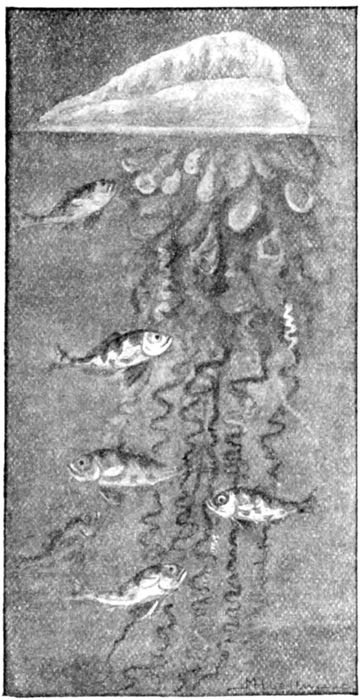
Fig. 221.—Portuguese Man-of-war Fish, Gobiomorus gronovii. Family Stromateidæ.
Gobiomorus gronovii (usually called Nomeus gronovii), the
Portuguese man-of-war-fish, is a neat little fish about three
inches long, common in the Gulf
of Mexico and the Gulf Stream,
where it hides from its enemies
among the poisoned tentacles of
the Portuguese man-of-war.
Under the Portuguese man-of-war
and also in or under large
jelly-fishes several other species
are found, notably Carangus
medusicola and Peprilus paru.
Many small species of Psenes,
a related genus, also abound in
the warm currents from tropical
seas.
The Rag-fishes: Icosteidæ.—Allied
to the butter-fishes are
the deep-water Icosteidæ, fishes
of soft, limp bodies as unresistant
as a wet rag, Icosteus
ænigmaticus of the California
coast being known as ragfish.
Schedophilus medusophagus feeds
on medusæ and salpa, living on
the surface in the deep seas.
Mr. Ogilby thus speaks of a
specimen taken in Ireland:
"It was the most delicate adult fish I ever handled; within
twenty-four hours after its capture the skin of the belly and
the intestines fell off when it was lifted, and it felt in the hand
quite soft and boneless." A related species (S. heathi) has been
lately taken by Dr. Charles H. Gilbert at Monterey in California.
The family of Acrotidæ contains a single species of large size.
Acrotus willoughbyi, allied to Icosteus, but without ventral fins
and with the vertebræ very numerous. The type, five and one-quarter
286feet long, was thrown by a storm on the coast of Washington,
near the Quinnault agency.
The family of Zaproridæ contains also a single large species,
Zaprora silenus, without ventrals, but scaly and firm in substance.
One specimen 2½ feet long was taken at Nanaimo on
Vancouver Island and a smaller one at Victoria.
The Pomfrets: Bramidæ.—The Bramidæ are broad-bodied
fishes of the open seas, covered with firm adherent scales. The
flesh is firm and the skeleton heavy, the hypercoracoid especially
much dilated. Of the various species the pomfret, or
black bream (Brama raii), is the best known and most widely
diffused. It reaches a length of two to four feet and is sooty black
in color. It is not rare in Europe and has been occasionally
taken at Grand Bank off Newfoundland, at the Bermudas, off
the coast of Washington, on Santa Catalina Island, and in Japan.
It is an excellent food-fish, but is seldom seen unless driven
ashore by storms.
Steinegeria rubescens of the Gulf of Mexico is a little-known
deep-sea fish allied to Brama, but placed by Jordan and Evermann
in a distinct family, Steinegeriidæ.
Closely related to the Bramidæ is the small family of Pteraclidæ,
silvery fishes with large firm scales, living near the surface
in the ocean currents. In these fishes the ventral fins
are placed well forward, fairly to be called jugular, and the
rays of the dorsal and anal, all inarticulate or spine-like, are
excessively prolonged. The species, none of them well known,
are referred to four genera—Pteraclis, Bentenia, Centropholis,
and Velifer. They are occasionally taken in ocean currents,
chiefly about Japan and Madeira.
Fossil forms more or less remotely allied to the Bramidæ are
recorded from the Eocene and Miocene. Among these are Acanthonemus,
and perhaps Pseudovomer.
The Dolphins: Coryphænidæ.—The dolphins, or dorados
(Coryphænidæ), are large, swift sea-fishes, with elongate, compressed
bodies, elevated heads, sharp like the cut-water of a
boat, and with the caudal fin very strong. The long dorsal
fin, elevated like a crest on the head, is without spines. The
high forehead characteristic of the dolphin is developed only in
the adult male. The flesh of the dolphin is valued as food.
287Its colors, golden-blue with deep-blue spots, fade rapidly at
death, though the extent of this change has been much exaggerated.
Similar changes of color occur at death in most bright-colored
fishes, especially in those with thin scales. The common
dolphin, or dorado (Coryphæna hippurus), is found in all warm
seas swimming near the surface, as usual in predatory fishes,
and reaches a length of about six feet. The small dolphin,
Coryphæna equisetis, rarely exceeds 2½ feet, and is much more
rare than the preceding, from which the smaller number of
dorsal rays (53 instead of 60) best distinguishes it. Young
dolphins of both species are elongate in form, the crest of the
head not elevated, the physiognomy thus appearing very different
from that of the adult. Goniognathus coryphænoides is an
extinct dolphin of the Eocene.
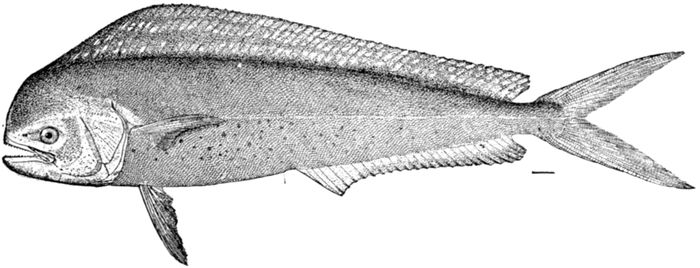
Fig. 222.—Dolphin or Dorado, Coryphæna hippurus Linnæus. New York.
The name dolphin, belonging properly to a group of small
whales or porpoises, the genus Delphinus, has been unfortunately
used in connection with this very different animal, which
bears no resemblance to the mammal of the same name.
Other mackerel-like families not closely related to these
occur in the warm seas. The Leiognathidæ are small, silvery
fishes of the East Indies. Leiognathus argentatus (Equula) is
very common in the bays of Japan, a small silvery fish of moderate
value as food. Gazza minuta, similar, with strong teeth,
abounds farther south. Leiognathus fasciatum is common in
Polynesia. A fossil species called Parequula albyi occurs in the
Miocene of Licata.
The Kurtidæ are small, short-bodied fishes of the Indian
seas, with some of the ribs immovably fixed between rings
288formed by the ossified cover of the air-bladder and with the
hypocoracoid obsolete. Kurtus indicus is the principal species.
The Menidæ.—Near the Kurtidæ we may perhaps place the
family of Menidæ, of one species, Mene maculata, the moonfish
of the open seas of the East Indies and Japan. This is a small
fish, about a foot long, with the body very closely compressed,
the fins low and the belly, through the extension of the pelvic
bone, a good deal more prominent than the back. The ventral
fins have the usual number of one spine and five soft rays, a
character which separates Mene widely from Lampris, which
in some ways seems allied to it.
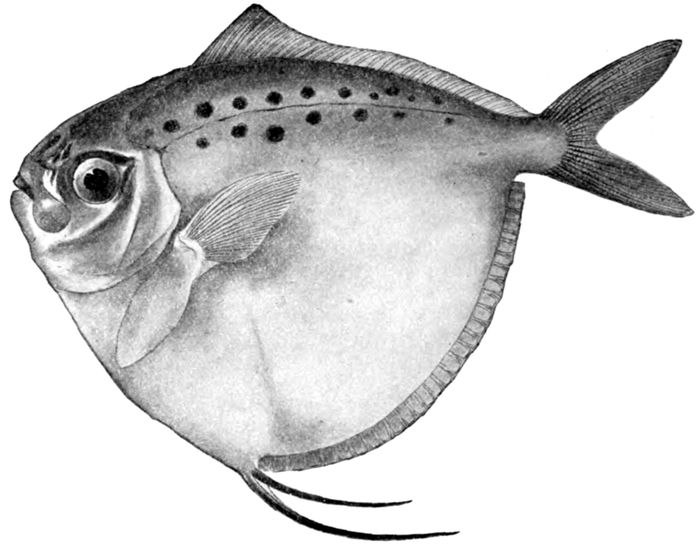
Fig. 223.—Mene maculata (Bloch & Schneider). Family Menidæ. Japan.
Another species of Menidæ is the extinct Gasteronemus
rhombeus of the Eocene of Monte Bolca. It has much the same
form, with long pubic bones. The very long ventral fins are,
however, made of one spine and one or two rays. A second
species, Gasteronemus oblongus, is recorded from the same rocks.
The Pempheridæ.—The Pempheridæ, "deep-water catalufas,"
or "magifi," are rather small deep-bodied fishes, reddish in
color, with very short dorsal, containing a few graduated spines,
289and with a very long anal fin. These inhabit tropical seas at
moderate depths. Pempheris bears a superficial resemblance to
Beryx, but, according to Starks, this resemblance is not borne
out by the anatomy. Pempheris mulleri and P. poeyi are found
in the West Indies. Pempheris otaitensis and P. mangula range
through Polynesia.
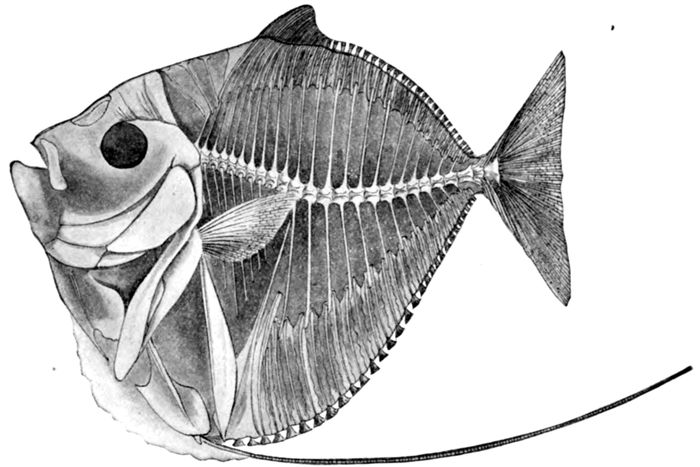
Fig. 224.—Gasteronemus rhombeus Agassiz. (After Woodward.) Menidæ.
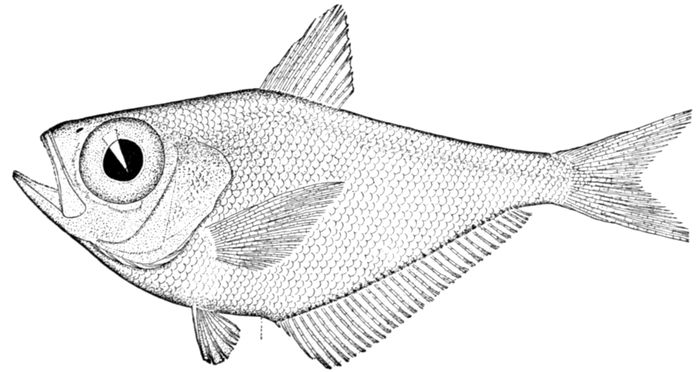
Fig. 225.—Catalufa de lo Alto, Pempheris mulleri Poey. Havana.
290
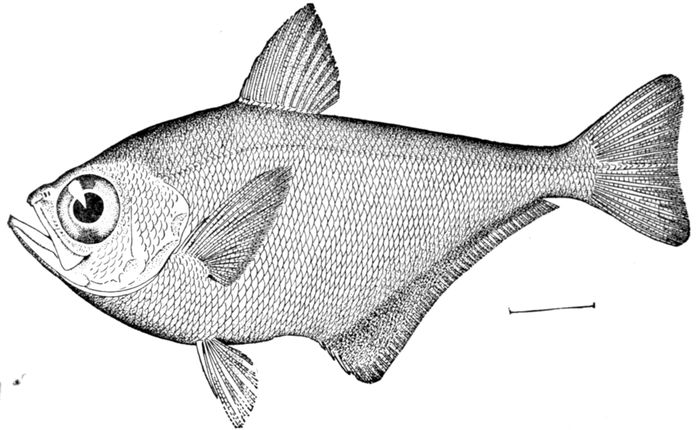
Fig. 226.—Pempheris nyctereutes Jordan & Evermann. Giran, Formosa.
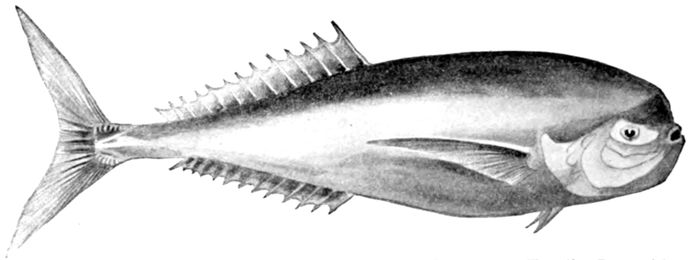
Fig. 227.—The Louvar, Luvarus imperialis Rafinesque. Family Luvaridæ. (After Day.)
Very close to the Pempheridæ is the small family of Bathyclupeidæ.
These are herring-like fishes, much compressed and
with a duct to the air-bladder. There are but one or two dorsal
spines. The ventrals are of one spine and five rays as in perch-like
fishes, but placed behind the pectoral fins. This feature,
due to the shortening of the belly, is regarded by Alcock, the
discoverer, as a result of degeneration, and the family was
placed by him among the herrings. The persistent air-duct
excludes it from the Percesoces, the normally formed ventrals
from the Berycoidei. If we trust the indications of the skeleton,
291we must place the family with Pempheris, near the scombroid
fishes.
Luvaridæ.—Another singular family is the group of Louvars,
Luvaridæ. Luvaris imperialis. The single known species is a large,
plump, voracious fish, with the dorsal and anal rays all unbranched,
and the scales scurf-life over the smooth skin. It is
frequently taken in the Mediterranean, and was found on the
island of Santa Catalina, California, by Mr. C. F. Holden.
The Square-tails: Tetragonuridæ.—The Tetragonuridæ are long-bodied
fishes of a plump or almost squarish form, covered
with hard, firm, very adherent scales. Tetragonurus cuvieri, the
single species, called square-tail, or escolar de natura, is a
curious fish, looking as if whittled out of wood, covered with
a compact armor of bony scales, and swimming very slowly in
deep water. It is known from the open Atlantic and Mediterranean
and has been once taken at Wood's Hole in Massachusetts.
According to Mr. C. T. Regan the relations of this
eccentric fish are with the Stromateidæ and Bramidæ, the skeleton
being essentially that of Stromateus, and Boulenger places
both Tetragonurus and Stromateus among the Percesoces.
The Crested Bandfishes: Lophotidæ.—The family of Lophotidæ
consists of a few species of deep-sea fishes, band-shaped,
naked, with the dorsal of flexible spines beginning as a high
crest on the elevated occiput. The first spine is very strong.
The ventrals are thoracic with the normal number, I, 5, of fin-rays.
Lophotes cepedianus, the crested bandfish, is occasionally
taken in the Mediterranean in rather deep water. Lophotes
capellei is rarely taken in the deep waters of Japan.
It is thought that the Lophotidæ may be related to the
ribbon-fishes, Tæniosomi, but on the whole they seem nearer
to the highly modified Scombroidei, the Pteraclidæ for
example.
In a natural arrangement, we should turn from the Bramidæ
to the Antigoniidæ and the Ilarchidæ, then passing over
the series which leads through Chætodontidæ and Teuthidæ
to the Plectognaths. It is, however, necessary to include here,
alongside the mackerels, though not closely related to them, the
parallel series of perch-like fishes, which at the end become
also hopelessly entangled, through aberrant forms, with other
292series of which the origin and relations are imperfectly understood.
As the relations of forms cannot be expressed in a linear
series, many pages must intervene before we can take up the
supposed line of development from the Scombroid fishes to
those called Squamipinnes.
293
CHAPTER XVIII
PERCOIDEA, OR PERCH-LIKE FISHES
Percoid Fishes.—We may now take up the long
series of the Percoidea, the fishes built on the type
of the perch or bass. This is a group of fishes of
diverse habits and forms, but on the whole representing better
than any other the typical Acanthopterygian fish. The group
is incapable of concise definition, or, in general, of any definition
at all; still, most of its members are definitely related
to each other and bear in one way or another a resemblance
to the typical form, the perch, or more strictly to its marine
relatives, the sea-bass, or Serranidæ. The following analysis
gives most of the common characters of the group:
Body usually oblong, covered with scales, which are
typically ctenoid, not smooth nor spinous, and of moderate
size. Lateral line typically present and concurrent with
the back. Head usually compressed laterally and with the
cheeks and opercles scaly. Mouth various, usually terminal
and with lateral cleft; the teeth various, but typically pointed,
arranged in bands on the jaws, and in several families on the
vomer and palatine bones also, as well as on the pharyngeals;
gill-rakers usually sharp, stoutish, armed with teeth, but sometimes
short or feeble; lower pharyngeals almost always separate,
usually armed with cardiform teeth; third upper pharyngeal
moderately enlarged, elongate, not articulated to the cranium,
the fourth typically present; gills four, a slit behind the fourth;
gill membranes free from the isthmus, and usually not connected
with each other; pseudobranchiæ typically well
developed. Branchiostegals few, usually six or seven. No
bony stay connecting the suborbital chain to the preopercle.
Opercular bones all well developed, normal in position; the
preopercle typically serrate. No cranial spines. Dorsal fin
294variously developed, but always with some spines in front,
these typically stiff and pungent; anal fin typically short,
usually with three spines, sometimes with a larger number,
rarely with none; caudal fin various, usually lunate; pectoral
fins well developed, inserted high; ventral fins always present,
thoracic, separate, almost always with one spine and five rays,
the Aphredoderidæ having more, a few Serranidæ having fewer.
Air-bladder usually present, without air-duct in adult; simple
and generally adherent to the walls of the abdomen. Stomach
cæcal, with pyloric appendages, the intestines short in most
species, long in the herbivorous forms. Vertebral column well
developed, none of the vertebræ especially modified, the number
10 + 14 = 24, except in certain extratropical and fresh-water
forms, which retain primitive higher numbers. Shoulder-girdle
normally developed, the post-temporal bifurcate attached to the
skull, but not coossified with it; none of the epipleural bones
attached to the center of the vertebræ; coracoids normal, the
hypercoracoid always with a median foramen, the basal bones of
the pectoral (actinosts or pterygials) normally developed, three or
four in number, hour-glass-shaped, longer than broad; premaxillary
forming the border of the mouth usually protractile; bones
of the mandible distinct. Orbitosphenoid wanting.
The most archaic of the perch-like types are apparently
some of those of the fresh waters. Among these the process
of evolution has been less rapid. In some groups, as the
Percidæ, the great variability of species is doubtless due to
the recent origin, the characters not being well fixed.
The Pirate-perches: Aphredoderidæ.—Among the most remarkable
of the living percoid fishes and probably the most
primitive of all, showing affinities with the Salmopercæ, is the
pirate-perch, Aphredoderus sayanus, a little fish of the lowland
streams of the Mississippi Valley. The family of Aphredoderidæ
agrees with the berycoid fishes in scales and structure
of the fins, and Boulenger places it with the Berycidæ. Starks
has shown, however, that it lacks the orbitosphenoid, and the
general osteology is that of the perch-like fishes. The dorsal
and anal have a few spines. The thoracic ventrals have one
spine and eight rays. There is no adipose fin and probably no
duct to the air-bladder. A singular trait is found in the position
295of the vent. In the adult this is in front of the ventral
fins, at the throat. In the young it is behind the ventral fins
as in ordinary fishes. With age it moves forward by the prolongation
of the horizontal part of the intestine or rectum.
The same peculiar position of the vent is found in the berycoid
genus Paratrachichthys.
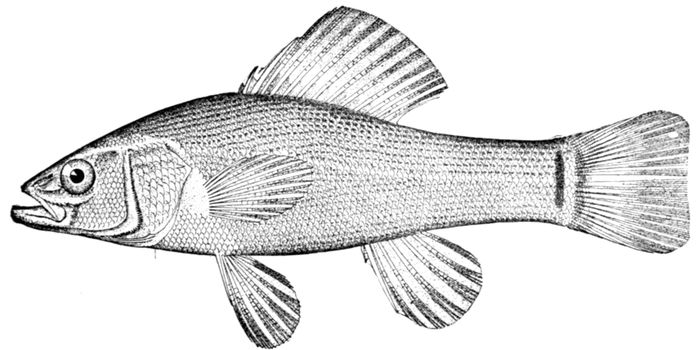
Fig. 228.—Pirate Perch, Aphredoderus sayanus (Gilliams). Illinois River.
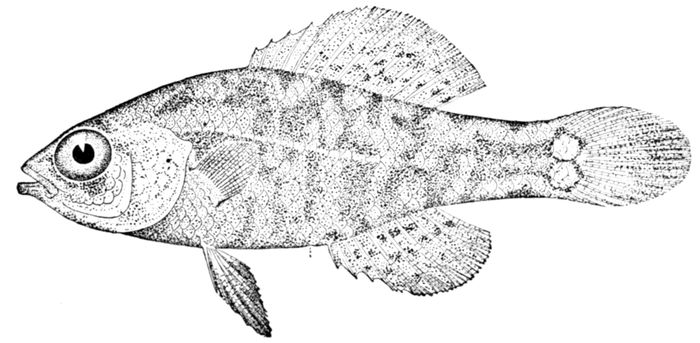
Fig. 229.—Everglade Pigmy Perch, Elassoma evergladei Jordan. Everglades of Florida.
In the family Aphredoderidæ but one species is known,
Aphredoderus sayanus, the pirate-perch. It reaches a length
of five inches and lives in sluggish lowland streams with muddy
bottom from New Jersey and Minnesota to Louisiana. It is
296dull green in color and feeds on insects and worms. It has no
economic value, although extremely interesting in its anatomy
and relationship.
Whether the Asineopidæ, fresh-water fishes of the American
Eocene, and the Erismatopteridæ, of the same deposits (see page
235) are related to Aphredoderus or to Percopsis is still uncertain.
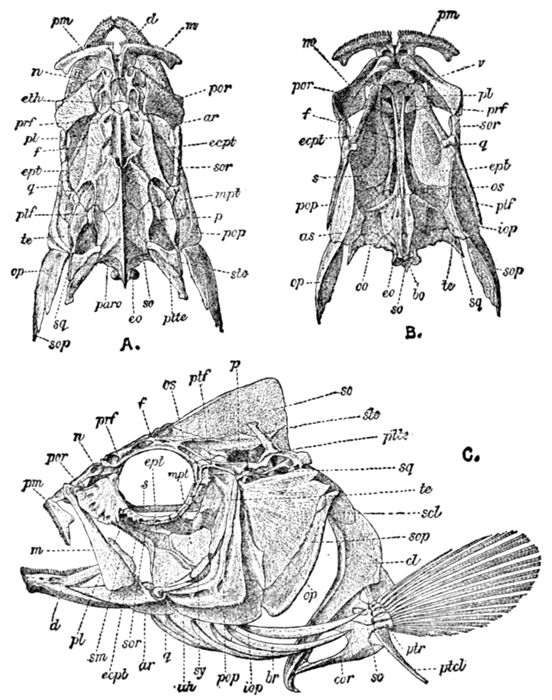
Fig. 230.—Skull of the Rock Bass, Ambloplites rupestris.
The Pigmy Sunfishes: Elassomidæ.—One of the most primitive
groups is that of Elassomidæ, or pigmy sunfishes. These are
very small fishes, less than two inches long, living in the swamps
of the South, resembling the sunfishes, but with the number of
dorsal spines reduced to from three to five. Elassoma zonatum
occurs from southern Illinois to Louisiana. Elassoma evergladei
abounds in the Everglades of Florida. In both the body
297is oblong and compressed, the color is dull green crossed by
black bars or blotches.
The Sunfishes: Centrarchidæ.—The large family of Centrarchidæ,
or sunfishes, is especially characteristic of the rivers of
the eastern United States, where the various species are
inordinately abundant. The body is relatively short and
deep, and the axis passes through the middle so that the back
has much the same outline as the belly. The pseudobranchiæ
are imperfect, as in many fresh-water fishes, and the head is
feebly armed, the bones being usually without spines or serratures.
The colors are often brilliant, the sexes alike, and all
are carnivorous, voracious, and gamy, being excellent as food.
The origin of the group is probably Asiatic, the fresh-water
serranoid of Japan, Bryttosus, resembling in many ways an
American sunfish, and the genus Kuhlia of the Pacific showing
many homologies with the black bass, Micropterus.
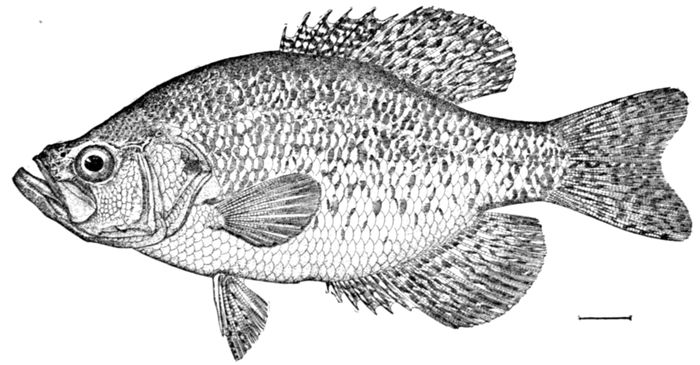
Fig. 231.—Crappie, Pomoxis annularis Rafinesque. Ohio River.
298
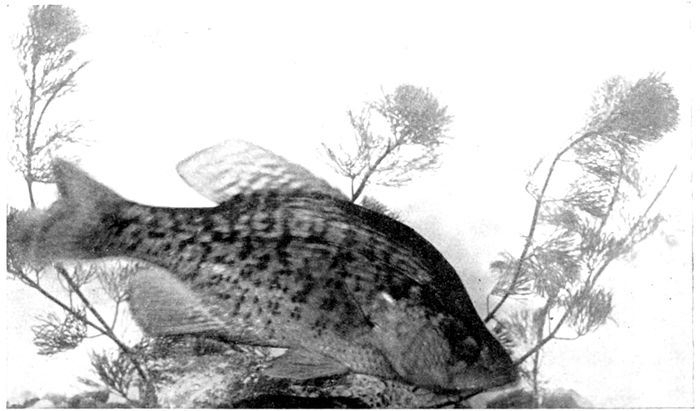
Fig. 232.—Crappie, Pomoxis annularis (Raf.). (From life by Dr. R. W. Shufeldt.)
299
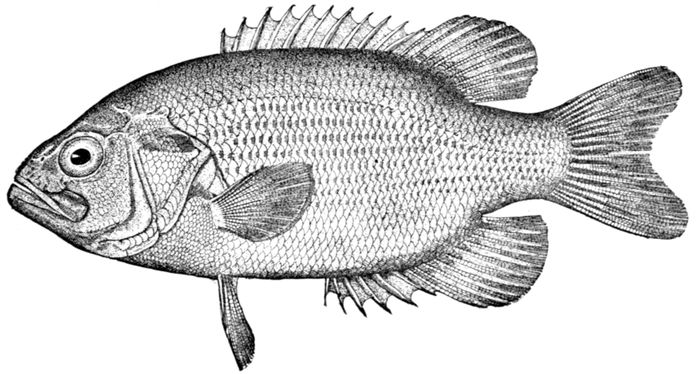
Fig. 233.—Rock Bass, Ambloplites rupestris (Rafinesque.) Ecorse, Mich.
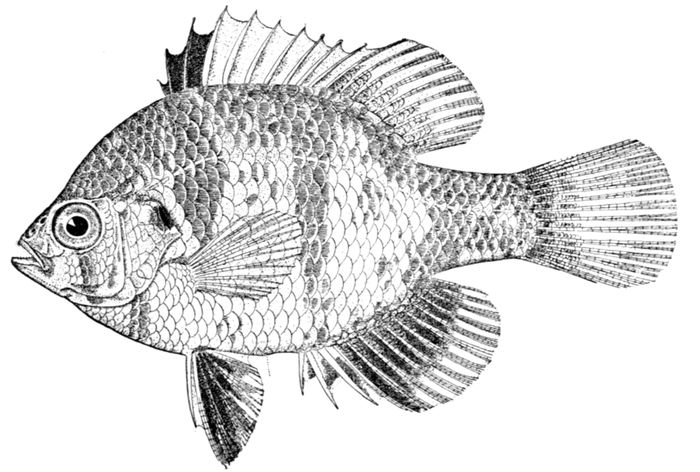
Fig. 234.—Banded Sunfish, Mesogonistius chætodon (Baird). Delaware River.
Crappies and Rock Bass.—Pomoxis annularis, the crappie,
and Pomoxis sparoides, the calico-bass, are handsome fishes,
valued by the angler. These are perhaps the most primitive
of the family, and in these species the anal fin is
larger than the dorsal. The flier, or round bass, Centrarchus
macropterus, with eight anal spines, is abundant in swamps
and lowland ponds of the Southern States. It is a pretty fish,
attractive in the aquarium. Acantharchus pomotis is the
mud-bass of the Delaware, and Archoplites interruptus, the
"perch" of the Sacramento. The latter is a large and gamy
fish, valued as food and interesting as being the only fresh-water
fish of the nature of perch or bass native to the west of
the Rocky Mountains. The numbers of this species, according
to Mr. Will S. Green of Colusa, California, have been greatly
reduced by the introduction of the catfish (Ameiurus nebulosus)
300into the Sacramento. The perch eats the young catfish, and
its stomach is torn by their sharp pectoral spines. Another
species of this type is the warmouth (Chænobryttus gulosus)
of the ponds of the South, and still more familiar rock-bass
or redeye (Ambloplites rupestris) of the more northern lakes
and rivers valued as a game-and food-fish. A very pretty
aquarium fish is the black-banded sunfish, Mesogonistius chætodon,
of the Delaware, as also the nine-spined sunfish, Enneacanthus
gloriosus, of the coast streams southward. Apomotis cyanellus,
the blue-green sunfish or little redeye, is very widely distributed
from Ohio westward, living in every brook. The dissection
of this species is given on page 26, Vol. I. To Lepomis
belong numerous species having the opercle prolonged in a long
flap which is always black in color, often with a border of scarlet
or blue. The yellowbelly of the South (Lepomis auritus), ear-like
the showily colored long-eared sunfish (Lepomis megalotis) of the
southwest, figured on page 2, Vol. I, the bluegill (Lepomis pallidus),
abundant everywhere south and west of New York, are
members of this genus. The genus Eupomotis differs in its larger
pharyngeals, which are armed with blunt teeth. The common
sunfish, or pumpkinseed, Eupomotis gibbosus, is the most familiar
representative of the family, abounding everywhere from Minnesota
to New England, then south to Carolina on the east slope
of the Alleghanies, breeding everywhere in ponds and in the
eddies of the clear brooks.
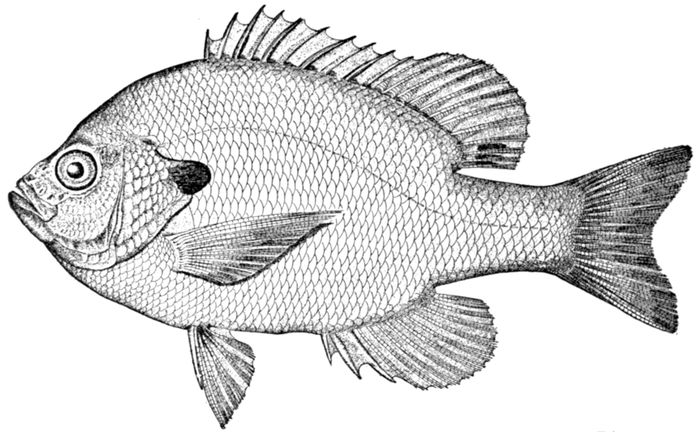
Fig. 235.—Blue-Gill, Lepomis pallidus (Mitchill). Potomac River.

Fig. 236.—Long-eared Sunfish, Lepomis megalotis (Rafinesque). From Clear Creek, Bloomington, Indiana. Family Centrarchidæ.
301
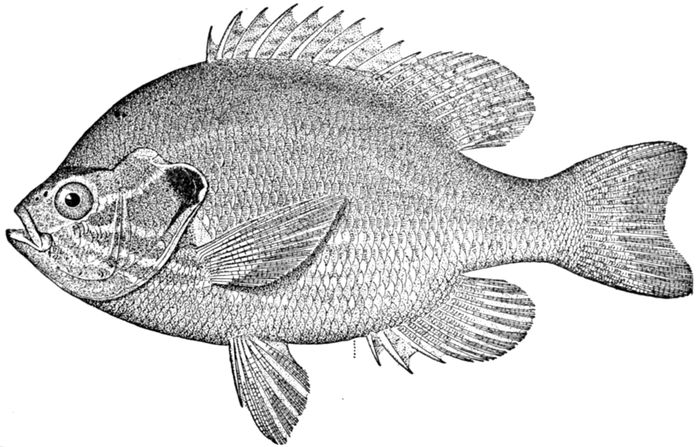
Fig. 237.—Common Sunfish, Eupomotis gibbosus (Linnæus). Root River, Wis.
The Black Bass.—The black bass (Micropterus) belong to the
same family as the sunfish, differing in the larger size, more
elongate form, and more voracious habit. The two species are
302among the most important of American game-fishes, abounding
in all clear waters east of the Alleghanies and resisting the evils
of civilization far better than the trout.
The small-mouthed black bass, Micropterus dolomieu, is the
most valuable of the species. Its mouth, although large, is
relatively small, the cleft not extending beyond the eye. The
green coloration is broken in the young by bronze cross-bands.
The species frequents only running streams, preferring clear
and cold waters, and it extends its range from Canada as far
to the southward as such streams can be found. Dr. James A.
Henshall, an accomplished angler, author of the "Book of the
Black Bass," says: "The black bass is eminently an American
fish; he has the faculty of asserting himself and of making
himself completely at home wherever placed. He is plucky,
game, brave, unyielding to the last when hooked. He has the
arrowy rush and vigor of a trout, the untiring strength and
bold leap of a salmon, while he has a system of fighting tactics
peculiarly his own. I consider him inch for inch and pound
for pound the gamest fish that swims."
In the same vein Charles Hallock writes: "No doubt the
bass is the appointed successor of the trout; not through heritage,
nor selection, nor by interloping, but by foreordination.
Truly, it is sad to contemplate, in the not distant future, the
extinction of a beautiful race of creatures, whose attributes
have been sung by all the poets; but we regard the inevitable
with the same calm philosophy with which the astronomer watches
the burning out of a world, knowing that it will be succeeded
by a new creation. As we mark the soft varitinted flush of
the trout disappear in the eventide, behold the sparkle of the
coming bass, as he leaps in the morning of his glory! We hardly
know which to admire the most—the velvet livery and the
charming graces of the departing courtier, or the flash of the
armor-plates of the advancing warrior. The bass will unquestionably
prove himself a worthy substitute for his predecessor
and a candidate for a full legacy of honors.
"No doubt, when every one of the older states shall become
as densely settled as Great Britain itself, and all the rural aspects
of the crowded domain resemble the suburban surroundings
of our Boston; when every feature of the pastoral landscape
303shall wear the finished appearance of European lands, and every
verdant field be closely cropped by lawn-mowers and guarded
by hedges, and every purling stream which meanders through
it has its water-bailiff, we shall still have speckled trout from
which the radiant spots have faded, and tasteless fish, to catch
at a dollar a pound (as we already have on Long Island), and
all the appurtenances and appointments of a genuine English
trouting privilege and a genuine English 'outing.'
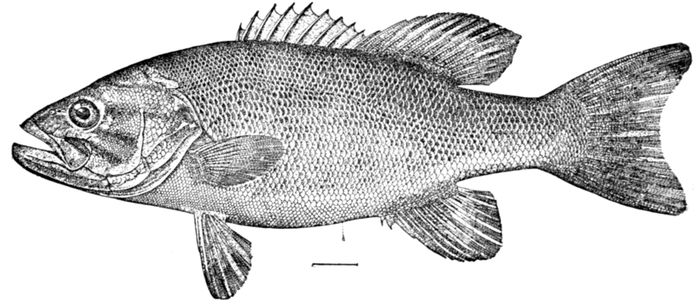
Fig. 238.—Small Mouth Black Bass, Micropterus dolomieu Lacépède.
"In those future days, not long hence to come, some venerable
piscator, in whose memory still lingers the joy of fishing,
the brawling stream which tumbled over the rocks in the tangled
wildwood, and moistened the arbutus and the bunchberries
which garnished its banks, will totter forth to the velvet edge
of some peacefully flowing stream, and having seated himself
on a convenient point in a revolving easy-chair, placed there
by his careful attendant, cast right and left for the semblance
of sport long dead.
"Hosts of liver-fed fish rush to the signal for their early
morning meal, and from the center of the boil which follows
the fall of the handfuls thrown in my piscator of the ancient
days will hook a two-pound trout, and play him hither and yon,
from surface to bottom, without disturbing the pampered gourmands
which are gorging themselves upon the disgusting viands;
and when he has leisurely brought him to land at last, and the
gillie has scooped him with his landing-net, he will feel in his
capacious pocket for his last trade dollar, and giving his friend
the tip, shuffle back to his house, and lay aside his rod forever."
304The black bass is now introduced into the streams of Europe
and California. There is little danger that it will work injury
to the trout, for the black bass prefers limestone streams, and
the trout rarely does well in waters which do not flow over
granite rock or else glacial gravel.
The large-mouth black bass (Micropterus salmoides) is very
much like the other in appearance. The mouth is larger, in
the adult cleft beyond the eye; the scales are larger, and in
the young there is always a broad black stripe along the sides
and no cross-bands. The two are found in the same region, but
almost never in the same waters, for the large-mouth bass is a
fish of the lakes, ponds, and bayous, always avoiding the swift
currents. The young like to hide among weeds or beneath
lily-pads. From its preference for sluggish waters, its range
extends farther to the southward, as far as the Mexican State
of Tamaulipas.
Plioplarchus is a genus of fossil sunfishes from the Eocene
of South Dakota and Oregon. Plioplarchus sexspinosus, septemspinosus,
and whitei are imperfectly known species.
The Saleles: Kuhliidæ.—Much like the sunfishes in anatomy,
though more like the white perch in appearance and habit,
are the members of the little family of Kuhliidæ. These are
active silvery perches of the tropical seas, ponds, and river-mouths,
especially abundant in Polynesia. Kuhlia malo is
the aholehole of the Hawaiians, a silvery fish living in great
numbers in brackish waters. Kuhlia rupestris, the salele of the
Samoan rivers, is a large swift fish of the rock pools, in form, color,
and habits remarkably like the black bass. It is silvery bronze
in hue, everywhere mottled with olive-green. The sesele, Kuhlia
marginata, lives with it in the rivers, but is less abundant. The
saboti, Kuhlia tæniura, a large silvery fish with cross-bands on
the caudal fin, lives about lava-rooks in Polynesia from the
Galapagos to Samoa and the East Indies, never entering rivers.
Still other species are found in the rock pools and streams of
Japan and southward.
The skeleton in Kuhlia is essentially like that of the black
bass, and Dr. Boulenger places the genus with the Centrarchidæ.
The True Perches: Percidæ.—The great family of Percidæ
includes fresh-water fishes of the northern hemisphere, elongate
in body, with the vertebræ in increased number and with
only two spines in the anal fin. About ninety species are
recorded, the vast majority being American. The dwarf perches,
called darters (Etheostominæ), are especially characteristic of
the clear streams to the eastward of the plains of the Missouri.
These constitute one of the greatest attractions of our American
river fauna. They differ from the perch and its European allies in
their small size, bright colors, and large fins, and more technically
in the rudimentary condition of the pseudobranchiæ and
the air-bladder, both of which organs are almost inappreciable.
The preopercle is unarmed, and the number of the branchiostegals
is six. The anal papilla is likewise developed, as in the
Gobiidæ, to which group the darters bear a considerable superficial
resemblance, which, however, indicates no real affinity.
305
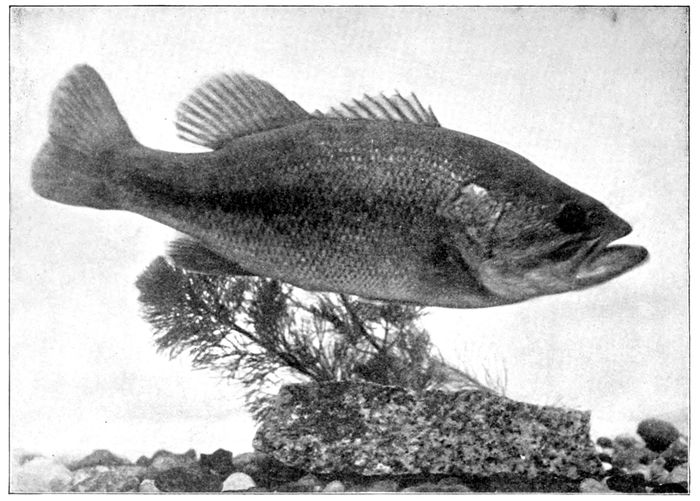
Fig. 239.—Large-mouthed Black Bass, Micropterus salmoides (Lac.). (From life by Dr. R. W. Shufeldt.)
306Relations of Darters to Perches.—The colors of the Etheostominæ,
or darters, are usually very brilliant, species of
Etheostoma especially being among the most brilliantly colored
fishes known; the sexual differences are often great, the females
being, as a rule, dull in color and more speckled or barred than
the males. Most of them prefer clear running water, where
they lie on the bottom concealed under stones, darting, when
frightened or hungry, with great velocity for a short distance,
by a powerful movement of the fan-shaped pectorals, then
stopping as suddenly. They rarely use the caudal fin in swimming,
and they are seldom seen floating or moving freely in
the water like most fishes. When at rest they support themselves
on their expanded ventrals and anal fin. All of them
can turn the head from side to side, and they frequently lie
with the head in a curved position or partly on one side of the
body. The species of Ammocrypta, and perhaps some of the
others, prefer a sandy bottom, where, by a sudden plunge,
the fish buries itself in the sand, and remains quiescent for
hours at a time with only its eyes and snout visible. The
others lurk in stony places, under rocks and weeds. Although
more than usually tenacious of vitality, the darters, from their
bottom life, are the first to be disturbed by impurities in the
water. All the darters are carnivorous, feeding chiefly on the
larvæ of Diptera, and in their way voracious. All are of small
size; the largest (Percina rex) reaches a length of ten inches,
307while the smallest (Microperca punctulata) is, one of the smallest
spiny-rayed fishes known, barely attaining the length of
an inch and a half. In Europe no Etheostominæ are found,
their place being filled by the genera Zingel and Aspro, which
bear a strong resemblance to the American forms, a resemblance
which may be a clue to the origin of the latter.
The Perches.—The European perch, Perca fluviatilis, is
placed by Cuvier at the head of the fish series, as representing
in a high degree the traits of a fish without sign of incomplete
development on the one hand or of degradation on the other.
Doubtless the increased number of the vertebræ is the chief
character which would lead us to call in question this time-honored
arrangement. Because, however, the perch has a
relatively degenerate vertebral column, we have used an allied
form, the striped bass, as a fairer type of the perfected spiny-rayed
fish. Certainly the bass represents this type better than
the perch.
But though we may regard the perch as nearest the typically
perfect fish, it is far from being one of the most highly specialized,
for, as we have seen in several cases, a high degree of specialization
of a particular structure is a first step toward its degradation.
The perch of Europe is a common game-fish of the rivers.
The yellow perch of America (Perca flavescens) is very much
like it, a little brighter in color, olive and golden with dusky
cross-bands. It frequents quiet streams and ponds from Minnesota
eastward, then southward east of the Alleghanies. "As
a still-pond fish," says Dr. Charles Conrad Abbott, "if there is
a fair supply of spring-water, they thrive excellently; but the
largest specimens come either from the river or from the inflowing
creeks. Deep water of the temperature of ordinary spring-water,
with some current and the bed of the stream at least
partly covered with vegetation, best suits this fish." The
perch is a food-fish of moderate quality. In spite of its beauty
and gaminess, it is little sought for by our anglers, and is much
less valued with us than is the European perch in England.
But Dr. Goode ventures to prophesy that "before many years
the perch will have as many followers as the black bass among
those who fish for pleasure" in the region it inhabits. "A
308fish for the people it is, we will grant, and it is the anglers from
among the people who have neither time nor patience for long
trips nor complicated tackle who will prove its steadfast friends."
The boy values it, according to Thoreau. When he returns
from the mill-pond, he numbers his perch as "real fishes."
"So many unquestionable fish he counts, and so many chubs,
which he counts, then throws away."
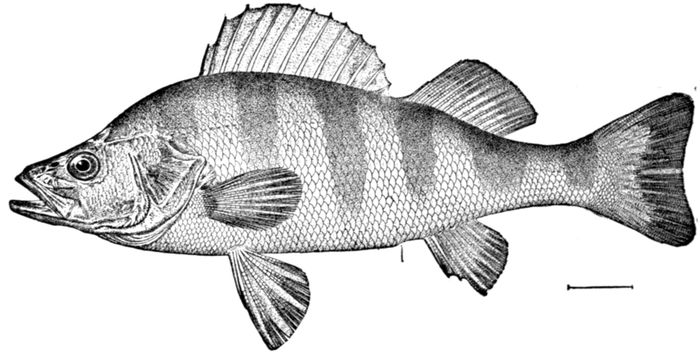
Fig. 240.—Yellow Perch, Perca flavescens Mitchill. Potomac River.
In the perch, the oral valves, characteristic of all bony fishes,
are well developed. These structures recently investigated by
Evelyn G. Mitchill, form a fold of connective tissue just behind
the premaxillary and before the vomer. They are used in respiration,
preventing the forward flow of water as the mouth closes.
Several perch-like fishes are recorded as fossils from the
Miocene.
Allied to the perch, but long, slender, big-mouthed, and
voracious, is the group of pike perches, found in eastern America
and Europe. The wall-eye, or glass-eye (Stizostedion vitreum), is
the largest of this tribe, reaching a weight of ten to twenty
pounds. It is found throughout the region east of the Missouri
in the large streams and ponds, an excellent food-fish,
with white, flaky flesh and in the north a game fish of high
rank. The common names refer to the large glassy eye, concerning
which Dr. Goode quotes from some "ardent admirer"
these words: "Look at this beautiful fish, as symmetrical in
form as the salmon. Not a fault in his make-up, not a scale
309disturbed, every fin perfect, tail clean-cut, and his great, big
wall-eyes stand out with that life-like glare so characteristic of
the fish."
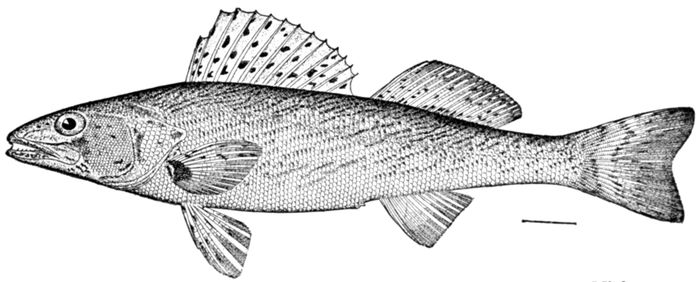
Fig. 241.—Sauger, Stizostedion canadense (Smith). Ecorse, Mich.
Similar to the wall-eye, but much smaller and more translucent
in color, is the sauger, or sand-pike, of the Great Lakes and
Northern rivers, Stizostedion canadense. This fish rarely exceeds
fifteen inches in length, and as a food-fish it is of correspondingly
less importance.

Fig. 242.—The Aspron, Aspro asper (Linnæus). Rhone River. Family Percidæ. (After Seelye.)
The pike-perch, or zander, of central Europe, Centropomus
(or Sandrus) lucioperca, is an excellent game-fish, similar to
the sauger, but larger, characterized technically by having the
ventral fins closer together. Another species, Centropomus volgensis,
in Russia, looks more like a perch than the other species
do. Sandroserrus, a fossil pike-perch, occurs in the Pliocene.
Another European fish related to the perch is the river ruff,
or pope, Acerina cernua, which is a small fish with the
form of a perch and with conspicuous mucous cavities in
the skull. It is common throughout the north of Europe
310and especially abundant at the confluence of rivers. Gymnocephalus
schrætzer of the Danube has the head still more cavernous.
Percarina demidoffi of southern Russia is another
dainty little fish of the general type of the perch. A fossil
genus of this type called Smerdis is numerously represented in
the Miocene and later rocks. The aspron, Aspro asper, is
a species like a darter found lying on the bottoms of swift rivers,
especially the Rhone. The body is elongate, with the paired
fins highly developed. Zingel zingel is found in the Danube,
as is also a third species called Aspro streber. In form and
coloration these species greatly resemble the American darters,
and the genus Zingel is, perhaps, the ancestor of the entire
group. Zingel differs from Percina mainly in having seven
instead of six branchiostegals and the pseudobranchiæ better
developed. The differences in these and other regards which
distinguish the darters are features of degradation, and they
are also no doubt of relatively recent acquisition. To this
fact we may ascribe the difficulty in finding good generic characters
within the group. Sharply defined genera occur where
the intervening types are lost. The darter is one of the very
latest products in the evolution of fishes.
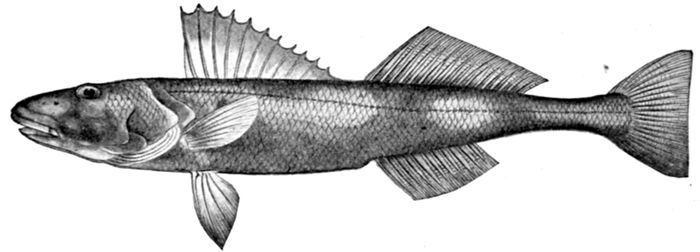
Fig. 243.—The Zingel, Zingel zingel (Linnæus). Danube River. (After Seelye.)
The Darters: Etheostominæ.—Of the darters, or etheostomine
perches, over fifty species are known, all confined to the
streams of the region bounded by Quebec, Assiniboia, Colorado,
and Nuevo Leon. All are small fishes and some of them
minute, and some are the most brilliantly colored of all fresh-water
fishes of any region, the most ornate belonging to the
large genus called Etheostoma. The largest species, the most
primitive because most like the perch, belong to the genus Percina.
311First among the darters because largest in size, most perch-like
in structure, and least degenerate, we place the king darter,
Percina rex of the Roanoke River in Virginia. This species
reaches a length of six inches, is handsomely colored, and looks
like a young wall-eye.
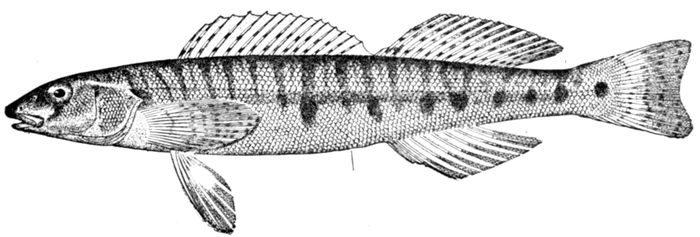
Fig. 244.—Log-perch, Percina caprodes (Rafinesque). Licking Co., Ohio.
The log-perch, Percina caprodes, is near to this, but a little
smaller, with the body surrounded by black rings alternately
large and small. In this widely distributed species, large
enough to take the hook, the air-bladder is present although
small. In the smaller species it vanishes by degrees, and in
proportion as in their habits they cling to the bottom of the
stream. The air-bladder is least developed in those species which cling closest to the bottom of the stream.

Fig. 245.—Black-sided Darter, Hadropterus aspro (Cope & Jordan). Chickamauga River.
The genus Hadropterus includes many handsome species,
most of them with a black lateral band widened at intervals.
The black-sided darter, Hadropterus aspro, is the best-known
species and one of the most elegant of all fishes, abounding in
the clear gravelly streams of the Ohio basin and northwestward.
Hadropterus evides of the Ohio region is still more brilliant,
312with alternate bands of dark blue-green and orange-red, most
exquisite in their arrangement. In the South, Hadropterus
nigrofasciatus, the crawl-a-bottom of the Georgia rivers, is
a heavily built darter, which Vaillant has considered the ancestral
species of the group. Still more swift in movement and
bright in color are the species of Hypohomus, which flash their
showy hues in the sparkling brooks of the Ozark and the Great
Smoky Mountains. Hypohomus aurantiacus is the best-known
species.
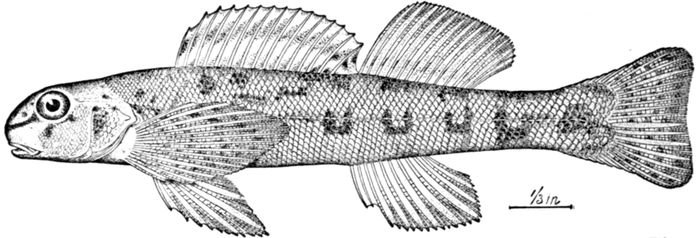
Fig. 246.—Green-sided Darter, Diplesion blennioides Rafinesque. Clinch River. Family Percidæ.
Diplesion blennioides, the green-sided darter, is the type
of numerous species with short heads, large fins, and coloration
of speckled green and golden. It abounds in the streams of
the Ohio Valley.
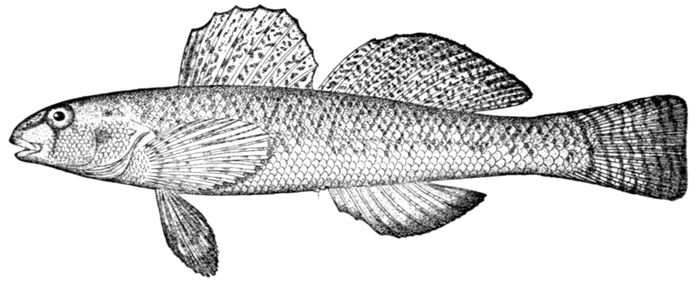
Fig. 247.—Tessellated Darter, Boleosoma olmstedi (Storer). Potomac River.
The tessellated darters, Boleosoma, are the most plainly
colored of the group and among the smallest; yet in the
delicacy, wariness, and quaintness of motion they are among
the most interesting, especially in the aquarium. Boleosoma
313nigrum, the Johnny darter in the West, and Boleosoma olmstedi
in the East are among the commonest species, found half hidden
in the weeds of small brooks, and showing no bright colors,
although the male in the spring has the head, and often the
whole body, jet black.

Fig. 248.—Crystal Darter, Crystallaria asprella (Jordan). Wabash River.
Crystallaria asprella, a large species almost transparent,
is occasionally taken in swift currents along the limestone
banks of the Mississippi. Still more transparent is the small
sand-darter, Ammocrypta pellucida, which lives in the clearest
of waters, concealing itself by plunging into the sand. Its
scales are scantily developed, as befits a fish that chooses this
method of protection, and in the related Ammocrypta beani of
the streams of the Louisiana pine-woods, the body is almost
naked, as also in Ioa vitrea, the glassy darter of the pine-woods
of North Carolina.

Fig. 249.—Sand-darter, Ammocrypta clara (Jordan & Meek). Des Moines River.
In the other darters the body is more compressed, the movements
less active, the coloration even more brilliant in the
males, which are far more showy than their dull olivaceous
mates.
To Etheostoma nearly half of the species belong, and they
314form indeed a royal series of little fishes. Only a few can be
noticed here, but all of them are described in detail and many
are figured by Jordan and Evermann ("Fishes of North and
Middle America," Vol. I).
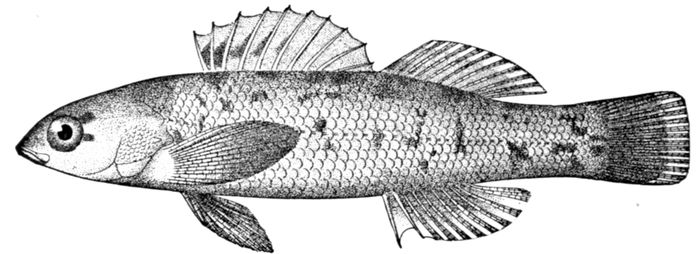
Fig. 250.—Etheostoma jordani Gilbert. Chestnut Creek, Verbena, Ala.
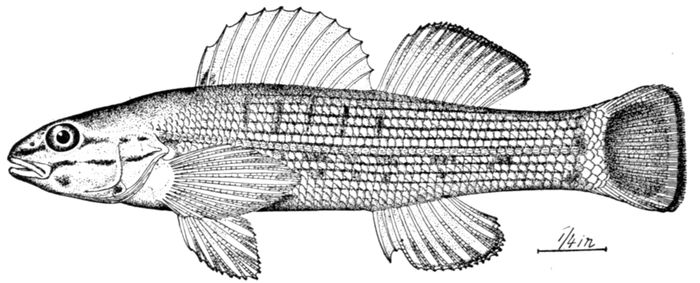
Fig. 251.—Blue-breasted Darter, Etheostoma camurum (Cope), the most brilliantly colored of American river fishes. Cumberland Gap, Tenn.
Most beautiful of all fresh-water fishes is the blue-breasted
darter, Etheostoma camurum, red-blue and olive, with red spots,
like a trout. This species lives in clear streams of the Ohio
valley, a region perhaps to be regarded as the center of abundance
of these fishes.
Very similar is the trout-spotted darter, Etheostoma maculatum,
dusky and red, with round crimson spots. Etheostoma
rufilineatum of the French Broad is one of the most gaudy of
fishes. Etheostoma australe of Chihuahua ranges farthest south
of all the darters, and Etheostoma boreale of Quebec perhaps
farthest north, though Etheostoma iowæ, found from Iowa to the
Saskatchewan, may dispute this honor. Etheostoma cæruleum,
315the rainbow darter or soldier-fish, with alternate oblique bands
of blue and scarlet, is doubtless the most familiar of the brilliantly
colored species, as it is the most abundant throughout
the Ohio valley.
Etheostoma flabellare, the fan-tailed darter, discovered by
Rafinesque in Kentucky in 1817, was the first species of the series
made known to science. It has no bright colors, but its movements
in water are more active than any of the others, and it
is the most hardy in the aquarium.
Psychromaster tuscumbia abounds in the great limestone
springs of northern Alabama, while Copelandellus quiescens
swarms in the black-water brooks which flow into the Dismal
Swamp and thence southward to the Suwanee. It is a little fish
not very active, its range going farther into the southern lowlands
than any other. Finally, Microperca punctulata, the least darter,
is the smallest of all, with fewest spines and dullest colors, most
specialized in the sense of being least primitive, but at the same
time the most degraded of all the darters.
No fossil forms nearly allied to the darters are on record.
The nearest is perhaps Mioplosus labracoides from the Eocene at
Green River, Wyoming. This elongate fish, a foot long, has
the dorsal rays IX-1, 13, and the anal rays II, 13, its scales
finely serrated, and the preopercle coarsely serrated on the
lower limb only. This species, with its numerous congeners
from the Rocky Mountain Eocene, is nearer the true perch
than the darters. Several species related to Perca are also
recorded from the Eocene of England and Germany. A species
called Lucioperca skorpili, allied to Centropomus, is described from
the Oligocene of Bulgaria, besides several other forms imperfectly
preserved, of still more doubtful affinities.
316
CHAPTER XIX
THE BASS AND THEIR RELATIVES
The Cardinal-fishes. Apogonidæ.—The Apogonidæ or cardinal-fishes
are perch-like fishes, mostly of small size,
with two distinct short dorsal fins. They are found in
the warm seas, and many of them enter rivers, some even inhabiting
hot springs. Many of the shore species are bright red
in color, usually with black stripes, bands, or spots. Still others,
however, are olive or silvery, and a few in deeper water are
violet-black.
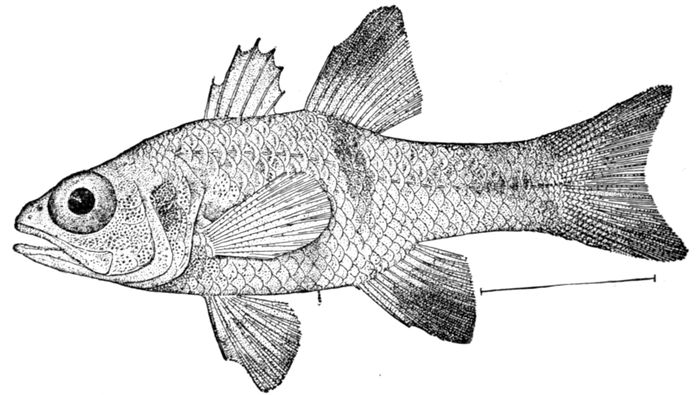
Fig. 252.—Cardinal-fish, Apogon retrosella Gill. Mazatlan.
The species of Apogon are especially numerous, and in
regions where they are abundant, as in Japan, they are much
valued as food. Apogon imberbis, the "king of the mullet," is
a common red species of southern Europe. Apogon maculatus
is found in the West Indies. Apogon retrosella is the pretty
"cardenal" of the west coast of Mexico. Apogon lineatus,
317semilineatus and other species abound in Japan, and many
species occur about the islands of Polynesia. Epigonus telescopium
is a deep-sea fish of the Mediterranean and Telescopias
and Synagrops are genera of the depths of the Pacific. Paramia
with strong canines is allied to Apogon, and similar in color
and habit.
Allied to Apogon are several small groups often taken as
distinct families. The species of Ambassis (Ambassidæ) are
little fishes of the rivers and bays of India and Polynesia,
resembling small silvery perch or bass. All these have three
anal spines instead of two as in Apogon. Some of these enter
rivers and several are recorded from hot springs. Scombrops
boops, the mutsu of Japan, is a valued food-fish found in rather
deep water. It is remarkable for its very strong teeth, although
its flesh is feeble and easily torn. A still larger species in Cuba,
Scombrops oculata, known as Escolar chino, resembles a barracuda.
These fishes with fragile bodies and very strong teeth
are placed by Gill in a separate family (Scombropidæ). Acropoma
japonicum is a neat little fish of the Japanese coast, with
the vent placed farther forward than in Apogon. It is the
type of the Acropomidæ, a small family of the Pacific. Enoplosus
armatus is an Australian fish with high back and fins,
with a rather stately appearance, type of the Enoplosidæ. In
his last catalogue of families of fishes Dr. Gill recognizes Scombropidæ
and Acropomidæ as distinct families, but their relationships
with Apogon are certainly very close. Many genera
allied to Apogon and Ambassis occur in Australian rivers.
Several fossils referred to Apogon (Apogon spinosus, etc.) occur
in the Eocene of Italy and Germany.
The Anomalopidæ.—The family of Anomalopidæ is a small
group of deep-sea fishes of uncertain relationship, but perhaps
remotely related to Apogon. Anomalops palpebrata is
found in Polynesia and has beneath the eye a large luminous
organ unlike anything seen elsewhere among fishes.
The Asineopidæ.—Another family of doubtful relationship
is that of Asineopidæ, elsewhere noticed. It is composed of
extinct fresh-water fishes found in the Green River shales. In
Asineops squamifrons the opercles are unarmed, the teeth
villiform, and the dorsal fin undivided, composed of eight or
nine spines and twelve to fourteen soft rays. The anal spines,
as in Apogon, are two only, and the scales are cycloid.
318
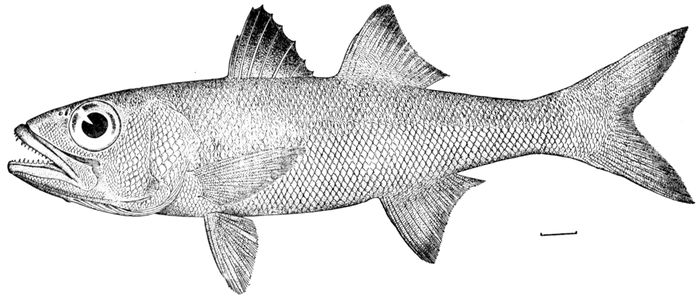
Fig. 253.—Kuromutsu, Telescopias gilberti Jordan & Snyder. Misaki, Japan.
319
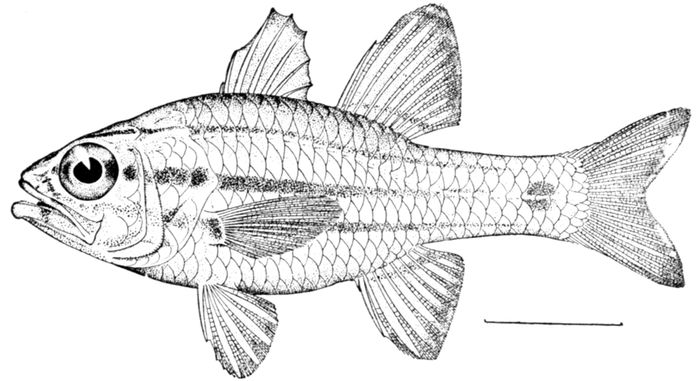
Fig. 254.—Apogon semilineatus Schlegel. Misaki, Japan.
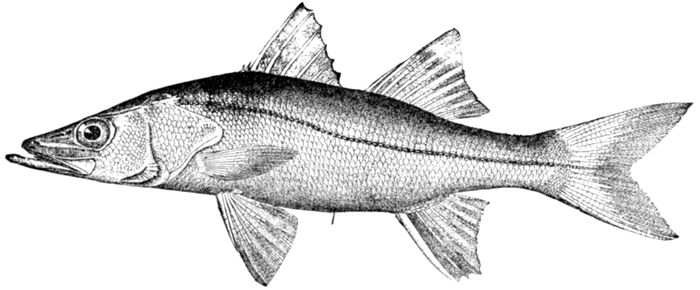
Fig. 255.—Robalo, Oxylabrax undecimalis (Bloch). Florida.
The Robalos:[13] Oxylabracidæ.—The family of Robalos (Oxylabracidæ
or Centropomidæ) is closely related to the Serranidæ,
differing among other things in having the conspicuous lateral
line extended on the caudal fin. These are silvery fishes with
elongate bodies, large scales, a pike-like appearance, the first
dorsal composed of strong spines and the second spine of the
320anal especially large. They are found in tropical America
only, where they are highly valued as food, the flesh being
like that of the striped bass, white, flaky, and of fine flavor.
The common robalo, or snook, Oxylabrax (or Centropomus) undecimalis,
reaches a weight of fifteen to twenty pounds. It
ranges north as far as Texas. In this species the lateral line
is black. The smaller species, of which several are described,
are known as Robalito or Constantino.
The Sea-bass: Serranidæ.—The central family of the percoid
fishes is that of the Serranidæ, or sea-bass. Of these about
400 species are recorded, carnivorous fishes found in all warm
seas, a few ascending the fresh waters. In general, the species
are characterized by the presence of twenty-four vertebræ and
three anal spines, never more than three. The fresh-water
species are all more or less archaic and show traits suggesting
the Oxylabracidæ, Percidæ, or Centrarchidæ, all of which are
doubtless derived from ancestors of Serranidæ. Among the
connecting forms are the perch-like genera Percichthys and
Percilia of the rivers of Chile. These species look much like
perch, but have three anal spines, the number of vertebræ
being thirty-five. Percichthys trucha is the common trucha, or
trout, of Chilean waters.
Lateolabrax japonicus, the susuki, or bass, of Japan, is one
of the most valued food-fishes of the Orient, similar in quality to
the robalo, which it much resembles. This genus and the
East Indian Centrogenys waigiensis approach Oxylabrax in
appearance and structure. Niphon spinosus, the ara of Japan,
is a very large sea-bass, also of this type. Close to these bass,
marine and fresh water, are the Chinese genus Siniperca and
the Korean genus Coreoperca, several species of which abound
in Oriental rivers. In southern Japan is the rare Bryttosus
kawamebari, a bass in structure, but very closely resembling
the American sunfish, even to the presence of the bright-edged
black ear-spot. There is reason to believe that from some
such form the Centrarchidæ were derived.
Other bass-like fishes occur in Egypt (Lates), Australia
(Percalates, etc.), and southern Africa. Oligorus macquariensis
is the great cod of the Australian rivers and Ctenolates ambiguus
is the yellow belly, while Percalates colonorum is everywhere
321the "perch" in Australian rivers. The most important member
of these transitional types between perch and sea-bass is
the striped bass, or rockfish (Roccus lineatus), of the Atlantic
coast of the United States. This large fish, reaching in extreme
cases a weight of 112 pounds, lives in shallow waters in the sea
and ascends the rivers in spring to spawn. It is olivaceous in
color, the sides golden silvery, with narrow black stripes. About
1880 it was introduced by the United States Fish Commission
into the Sacramento, where it is now very abundant and a
fish of large commercial importance. To the angler the
striped bass is always "a gallant fish and a bold biter," and
Genio Scott places it first among the game-fishes of America.
The white bass (Roccus chrysops) is very similar to it, but
shorter and more compressed, reaching a smaller size. This
fish is abundant in the Great Lakes and the upper Mississippi
as far south as Arkansas.
The yellow bass (Morone interrupta), a coarser and more
brassy fish, replaces it farther south. It is seldom seen above
Cincinnati and St. Louis. The white perch (Morone americana)
is a little fish of the Atlantic seaboard, entering the sea,
but running up all the rivers, remaining contentedly landlocked
in ponds. It is one of the most characteristic fishes
of the coast from Nova Scotia to Virginia. It is a good pan
fish, takes the hook vigorously, and in a modest way deserves
the good-will of the angler who cannot stray far into the mountains.
Very close to these American bass is the bass, bars, or
robalo, of southern Europe, Dicentrarchus labrax, a large olive-colored
fish, excellent as food, living in the sea about the mouths
of rivers.
The Jewfishes.—In the warm seas are certain bass of immense
size, reaching a length of six feet or more, and being robust
in form, a weight of 500 or 600 pounds. These are dusky
green in color, thick-headed, rough-scaled, with low fins, voracious
disposition, and sluggish movements. In almost all
parts of the world these great bass are called jewfish, but
no reason for this name has ever been suggested. In
habit and value the species are much alike, and the jewfish
of California, Stereolepis gigas, the prize of the Santa Catalina
anglers, may be taken as the type of them all. Closely related
to this is the Japanese ishinagi, Megaperca ischinagi, the jewfish,
or stone-bass, of Japan. Another Japanese jewfish is the
Abura bodzu, or "fat priest," Ebisus sagamius. In the West
Indies, as also on the west coast of Mexico, the jewfish, or guasa,
is Promicrops itaiara. The black grouper, Garrupa nigrita,
is the jewfish of Florida. The European jewfish, more often
called wreckfish, or stone-bass, is Polyprion americanus, and
the equally large Polyprion oxygeneios is found in Australia,
as is also another jewfish, Glaucosoma hebraicum, the last
belonging to the Lutianidæ. Largest of all these jewfishes is
Promicrops lanceolata of the South Pacific. This huge bass,
according to Dr. Boulenger, sometimes reaches a length of
twelve feet.
322
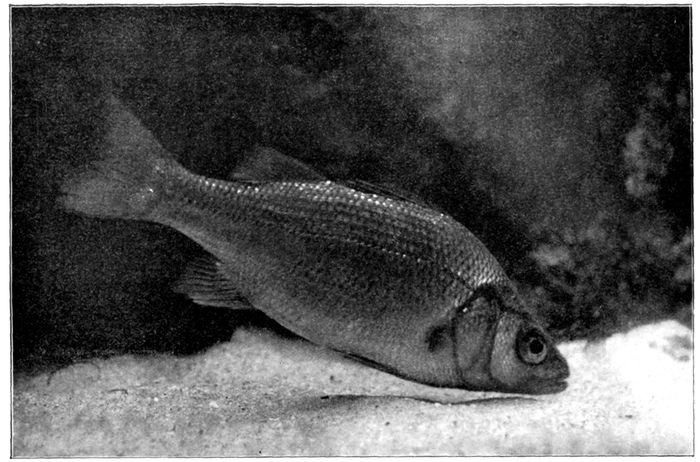
Fig. 256.—White Perch, Morone americana Gmelin. (From life by Dr. R. W. Shufeldt; one half natural size.)
323
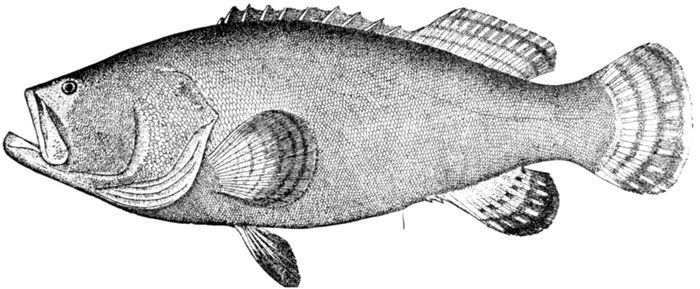
Fig. 257.—Florida Jewfish, Promicrops itaiara (Lichtenstein). St. John's River, Fla.
Related to the jewfishes are numerous smaller fishes. One
of these, the Spanish-flag of Cuba, Gonioplectrus hispanus, is
rose-colored, with golden bands like the flag of Spain itself.
Other species referred to Acanthistius and Plectropoma have,
like this, hooked spines on the lower border of the preopercle.
324
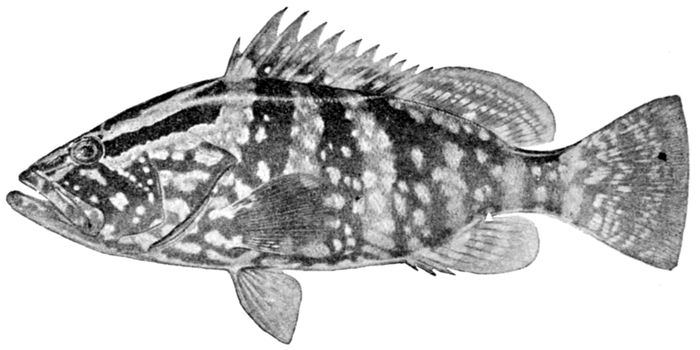
Fig. 258.—Epinephelus striatus (Bloch), Nassau Grouper: Cherna criolla. Family Serranidæ.
325
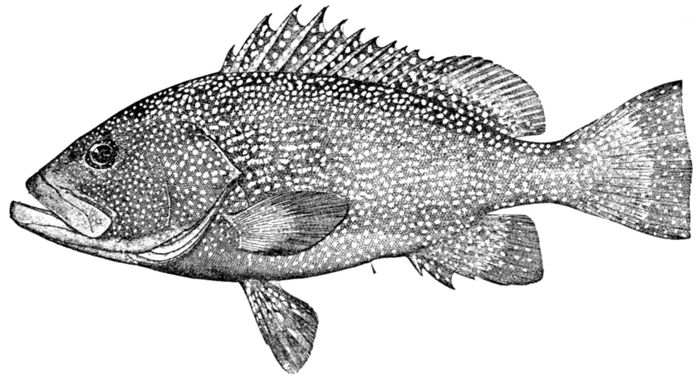
Fig. 259.—John Paw or Speckled Hind, Epinephelus drummond-hayi Goode Pensacola.
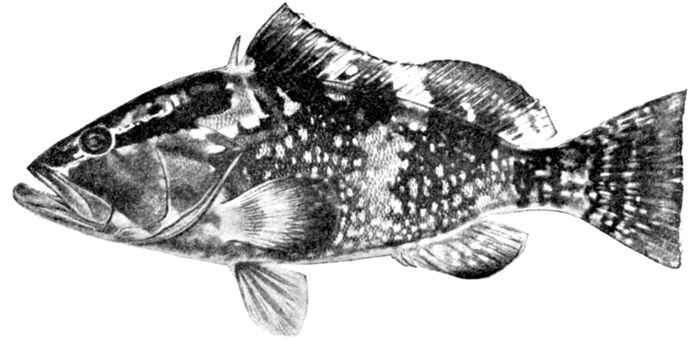
Fig. 260.—Epinephelus morio (Cuvier & Valenciennes), Red Grouper, or Mero. Family Serranidæ.
The Groupers.—In all warm seas abound species of Epinephelus
and related genera, known as sea-bass, groupers, or merous.
They are mostly large voracious fishes with small scales, pale
flesh of fair quality, and from their abundance they are of large
commercial importance. To English-speaking people these fishes
are usually known as grouper, a corruption of the Portuguese
name garrupa. In the West Indies and about Panama there
are very many species, and still others abound in the Mediterranean,
in southern Japan, and throughout Polynesia and
the West Indies. They have very much in common, but differ
in size and color, some being bright red, some gaudily spotted
with red or blue, but most of them are merely mottled green
or brown. In many cases individuals living near shore are
olivaceous, and those of the same species in the depths are
bright crimson or scarlet. We name below a few of the most
prominent species. Even a bare list of all of them would take
many pages. Cephalopholis cruentatus, the red hind of the
Florida Keys, is one of the smallest and brightest of all of them.
Cephalopholis fulvus, the blue-spotted guativere of the Cubans,
is called negro-fish, butter-fish, yellow-fish, or redfish, according
to its color, which varies with the depth. It is red, yellow,
or olive, with many round blue spots. Epinephelus adscenscionis,
the rock-hind, is spotted everywhere with orange.
Epinephelus guaza is the merou, or giant-bass, of Europe, a
large food-fish of value, rather dull in color. Epinephelus striatus
is the Nassau grouper, or Cherna criolla, common in the West
Indies. Epinephelus maculosus is the cabrilla of Cuba. Epinephelus
drummond-hayi, the speckled hind, umber brown, spotted
with lavender, is one of the handsomest of all the groupers.
Epinephelus morio, the red grouper, is the commonest of all
these fishes in the American markets. In Asia the species
are equally numerous, Epinephelus quernus of Hawaii and the
red Epinephelus fasciatus of Japan and southward being food-fishes
of importance. Epinephelus merra, Epinephelus gilberti,
and Epinephelus tauvina are among the more common species
of Polynesia. Epinephelus corallicola, a species profusely
spotted, abounds in the crevices of coral reefs, while Cepholopholis
argus and C. leopardus are showy fishes of the deeper
channels. Mycteroperca venenosa, the yellow-finned grouper,
is a large and handsome fish of the coast of Cuba, the flesh
sometimes poisonous; when red in deep water it is known as
the bonaci cardenal. Mycteroperca bonaci; the bonaci arará
sells in our markets as black grouper. Mycteroperca microlepis
is commonest along our South Atlantic coast, not reaching
the West Indies, and Mycteroperca rubra, which is never red,
enters the Mediterranean. Mycteroperca falcata is known in
the markets as scamp, and Mycteroperca venadorum is a giant
species from the Venados Islands, near Mazatlan. Diploprion
bifasciatus is a handsome grouper-like fish with two black
cross-bands, found in Japan and India. Variola louti, red,
with crimson spots and a forked caudal fin, is one of the most
showy fishes of the equatorial Pacific.
326

Fig. 261.—Red Hind, Epinephelus adscensionis (Osbeck). Puerto Rico. (After Evermann.)
327
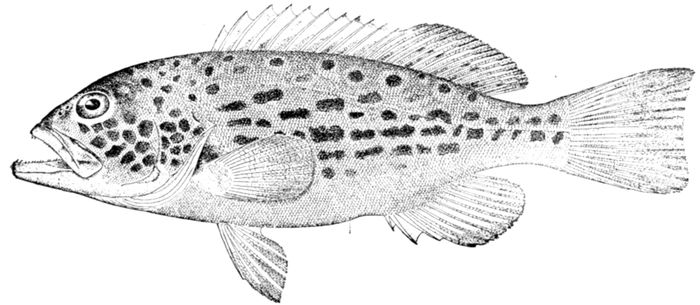
Fig. 262.—Yellow-fin Grouper, Mycteroperca venenosa (Linnæus). Havana.
The small fishes called Vaca in Cuba belong to the genus
Hypoplectrus. Their extraordinary and unexplained variations
in color have been noticed on page 235, Vol. I. The common
species—blue, orange, green, plain, striated, checkered, or striped—bears
the name of Hypoplectrus unicolor. (Fig. 264).
The Serranos.—In all the species known as jewfish and
grouper, as also in the Oxylabracidæ and most Centrarchidæ,
the maxillary bone is divided by a lengthwise suture which
sets off a distinct supplemental maxillary. This bone is wanting
in the remaining species of Serranidæ, as it is also in those
forms already noticed which are familiarly known as bass.
The species without the supplemental maxillary are in general
smaller in size, the canines are on the sides of the jaws instead
of in front, and there are none of the hinged depressible teeth
which are conspicuous in the groupers. The species are abundant
in the Atlantic, but scarcely any are found in Polynesia, and
few in Japan or India.
328
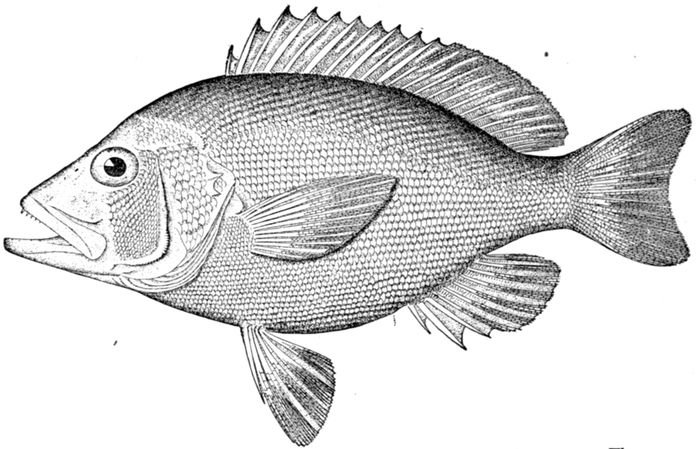
Fig. 263.—Hypoplectrus unicolor nigricans (Poey). Tortugas, Fla.
Serranus cabrilla is the Cabrilla of the Mediterranean, a
well-known and excellent food-fish, the original type of the
family of Serranidæ. Serranellus scriba is the serran, a very
pretty shore-fish of southern Europe, longer known than any
other of the tribe. On the coast of southern California are
also species called Cabrillas, fine, large, food-fish, bass-like in
form, Paralabrax clathratus, and other less common species.
The Cabrillas and their relatives are almost all American, a
few straying across to Europe. One of the most important
in the number is the black sea-bass, or black will, of our Atlantic
coast, Centropristes striatus. This is a common food-and
game-fish, dusky in color, gamy, and of fine flesh. The squirrel-fishes
(Diplectrum) and the many serranos (Prionodes) of the
tropics, small bright-colored fishes of the rocks and reefs, must
be passed with a word, as also the small Paracentropristis of
the Mediterranean and the fine red creole-fish of the West
Indies, Paranthias furcifer. In one species, Anyperodon leucogrammicus
of Polynesia, there are no teeth on the palatines.
The barber-fish (Anthias anthias) of southern Europe, bright
red and with the lateral line running very high, is the type of
a numerous group found at the lowest fishing level in all warm
seas. All the species of this group are bright red, very handsome,
and excellent as food. Hemianthias vivanus, known
only from the spewings of the red snapper (Lutianus aya) at
Pensacola, is one of the most brilliant species, red, with golden
streaks. The genus Plesiops consists of small fishes almost
black in color, with blue spots and other markings, abounding
about the coral reefs. In this genus the lateral line is interrupted
and there is some indication of affinity with the Opisthognathidæ.
329
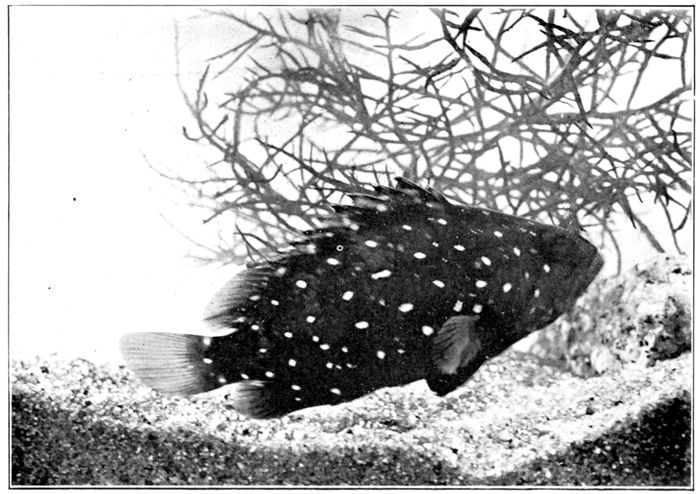
Fig. 264.—Snowy Grouper, Epinephelus niveatus (Cuv. & Val.). Natural size: young. (Photograph by Dr. R. W. Shufeldt.)
330

Fig. 265.—Soapfish, Rypticus bistrispinus (Mitchill). Virginia.
In the soapfishes (Rypticus) the supplemental maxillary
appears again, but in these forms the dorsal fin is reduced to
two or three spines and there are none in the anal. Rypticus
saponaceus, so called from the smooth or soapy scales, is the
best known of the numerous species, which all belong to tropical
America. Grammistes, with eight dorsal spines, is a related
form in Polynesia, bright yellow, with numerous black stripes.
Numerous species referred to the Serranidæ occur in the Eocene
and Miocene rocks. Some are related to Epinephelus, others to
Roccus and Lates. In the Tertiary lignite of Brazil is a species
of Percichthys, Percichthys antiquus, with Properca beaumonti,
which seem to be a primitive form of the bass, allied to
Dicentrarchus. Prolates heberti of the Cretaceous, one of the
earliest of the series, has the caudal rounded and is apparently
allied to Lates, as is also the heavily armed Acanus regleysianus
of the Oligocene. Smerdis minutus, a small fish from the
Oligocene, is also related to Lates, which genus with Roccus and
Dicentrarchus must represent the most primitive of existing
members of this family. Of both Smerdis and Dicentrarchus
(Labrax) numerous species are recorded, mostly from the Miocene
of Europe.
331
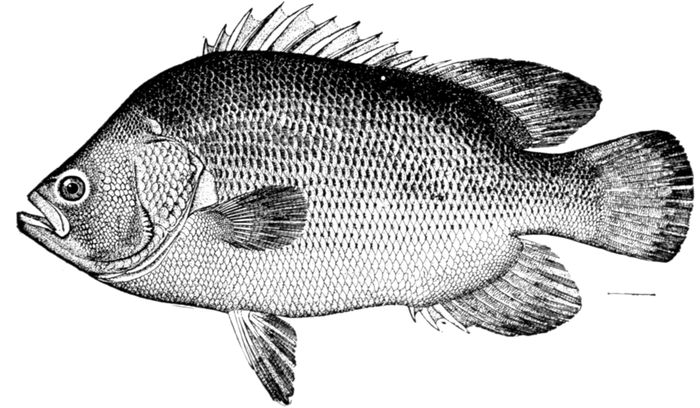
Fig. 266.—Flasher, Lobotes surinamensis (Bloch). Virginia.
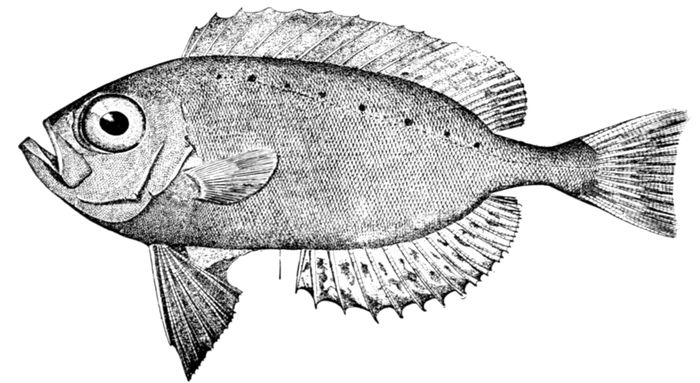
Fig. 267.—Catalufa, Priacanthus arenatus Cuv. & Val. Wood's Hole, Mass.
The Flashers: Lobotidæ.—The small family of Lobotidæ, flashers,
or triple-tails, closely resembles the Serranidæ, but there
are no teeth on vomer or palatines. The three species are
robust fishes, of a large size, of a dark-green color, the front
part of the head very short. They reach a length of about
three feet and are good food-fishes. Lobotes surinamensis
comes northward from the West Indies as far as Cape Cod.
Lobotes pacificus is found about Panama. Lobotes erate, common
in India, was taken by the writer at Misaki, Japan.
332
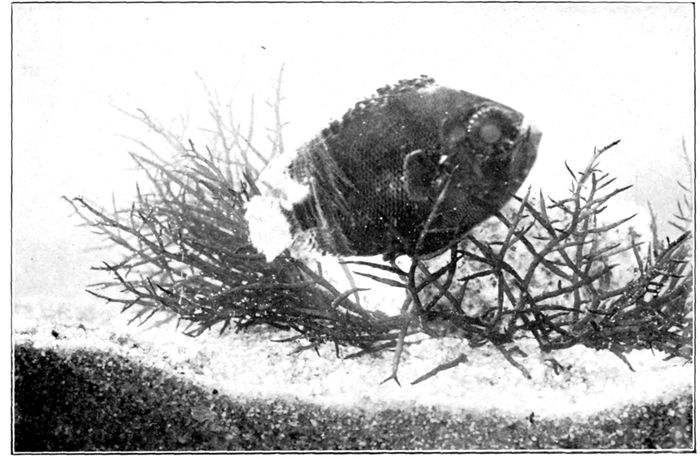
Fig. 268.—Bigeye, Pseudopriacanthus altus Gill. Young specimen. (From life by Dr. R. W. Shufeldt.)
333The Bigeyes: Priacanthidæ.—The Catalufas or bigeyes (Priacanthidæ)
are handsome fishes of the tropics, with short,
flattened bodies, rough scales, large eyes, and bright-red coloration.
The mouth is very oblique, and the anal fin about as
large as the dorsal. The commonest species is Priacanthus
cruentatus, widely diffused through the Pacific and also in the
West Indies. This is the noted Aweoweo of the Hawaiians,
which used to come into the bays in myriads at the period of
death of royalty. It is still abundant, even after Hawaiian
royalty has passed away.
Pseudopriacanthus altus is a short, very deep-bodied, and
very rough fish, scarlet in color, occasionally taken along our
coast, driven northward by the Gulf Stream. The young fishes
are quite unlike the adult in appearance. Numerous other
species of Priacanthus occur in the Indies and Polynesia.
The Pentacerotidæ.—Another family with strong spines and
rough scales is the group of Pentacerotidæ. Histiopterus typus,
the Matodai, is found in Japan, and is remarkable for its very
deep body and very high spines. Equally remarkable is the
Tengudai, Histiopterus acutirostris, also Japanese. Anoplus
banjos is a third Japanese species, more common than the others,
and largely taken in the Inland Sea. All these are eccentric
variations from the perch-like type.
The Snappers: Lutianidæ.—Scarcely less numerous and varied
than the sea-bass is the great family of Lutianidæ, known
in America as snappers or pargos. In these fishes the maxillary
slips along its edge into a sheath formed by the broad preorbital.
In the Serranidæ there is no such sheath. In the Lutianidæ
there is no supplemental maxillary, teeth are present
on the vomer and palatines, and in the jaws there are distinct
canines. These fishes of the warm seas are all carnivorous,
voracious, gamy, excellent as food though seldom of fine grain,
the flesh being white and not flaky. About 250 species are
known, and in all warm seas they are abundant.
334
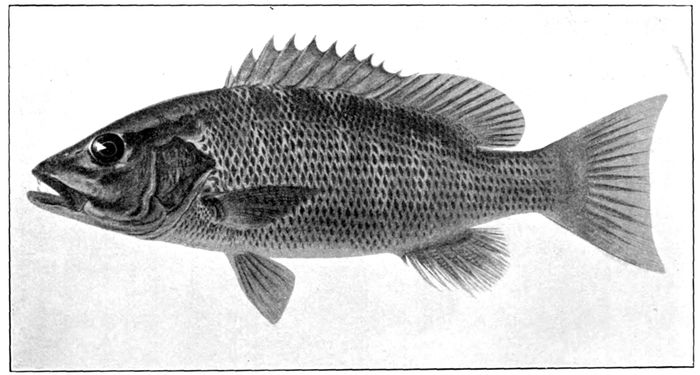
Fig. 269.—Gray Snapper, Lutianus griseus L. Puerto Rico. (After Evermann.)
335To the great genus Lutianus most of the species belong. These
are the snappers of our markets and the pargos of the Spanish-speaking
fishermen. The shore species are green in color, mostly
banded, spotted, or streaked. In deeper water bright-red species
are found. One of these, Lutianus aya, the red snapper or
pargo guachinango of the Gulf of Mexico, is, economically
speaking, the most important of all these fishes in the United
States. It is a large, rather coarse fish, bright red in color,
and it is taken on long lines on rocky reefs chiefly about Pensacola
and Tampa in Florida, although similar fisheries exist
on the shores of Yucatan and Brazil.
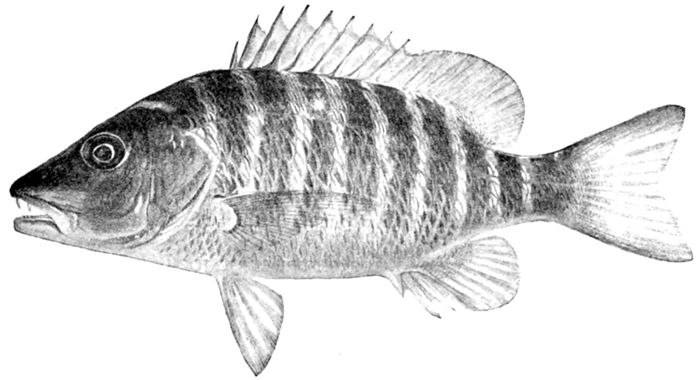
Fig. 270.—Lutianus apodus (Walbaum), Schoolmaster or Cají. Family Lutianidæ.
336
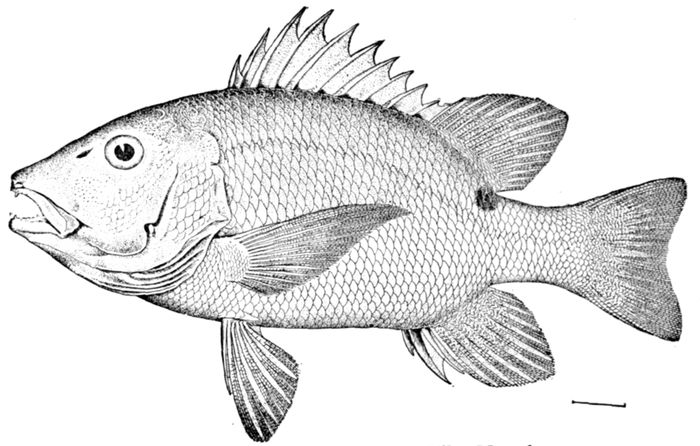
Fig. 271.—Hoplopagrus guntheri Gill. Mazatlan.
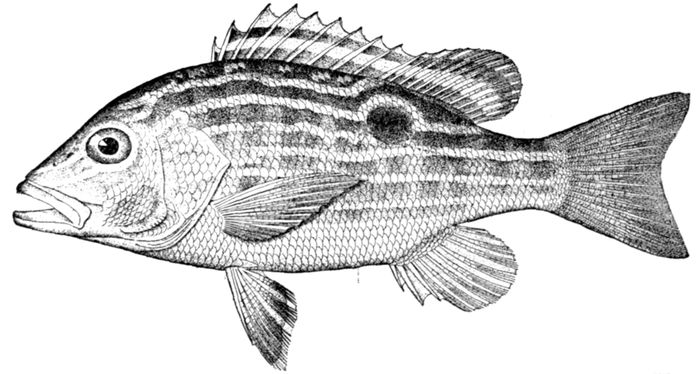
Fig. 272.—Lane Snapper or Biajaiba, Lutianus synagris (Linnæus). Key West.
A related species is the Lutianus analis, the mutton snapper
or pargo criollo of the West Indies. This is one of the staple
fishes of the Havana market, always in demand for banquets
and festivals, because its flesh is never unwholesome. The
mangrove snapper, or gray-snapper, Lutianus griseus, called
in Cuba, Caballerote, is the commonest species on our coasts.
The common name arises from the fact that the young hide
in the mangrove bushes of Florida and Cuba, whence they sally
out in pursuit of sardines and other small fishes. It is a very
wary fish, to be sought with care, hence the name "lawyer,"
sometimes heard in Florida. The cubero (Lutianus cyanopterus)
is a very large snapper, often rejected as unwholesome,
being said to cause the disease known as ciguatera. Certain
snappers in Polynesia have a similar reputation. The large red
mumea, Lutianus bohar, is regarded as always poisonous in
Samoa—the most dangerous fish of the islands. L. leioglossus is
also held under suspicion on Tutuila, though other fishes of
this type are regarded as always safe. Other common snappers
of Florida and Cuba are the dog snapper or jocu (Lutianus jocu),
the schoolmaster or cají (Lutianus apodus), the black-fin snapper
or sese de lo alto (Lutianus buccanella), the silk snapper or
pargo de lo alto (Lutianus vivanus), the abundant lane snapper
or biajaiba (Lutianus synagris), and the mahogany snapper
337or ojanco (Lutianus mahogani). Numerous other species occur
on both coasts of tropical America, and a vastly larger assemblage
is found in the East Indies, some of them ranging northward
to Japan.
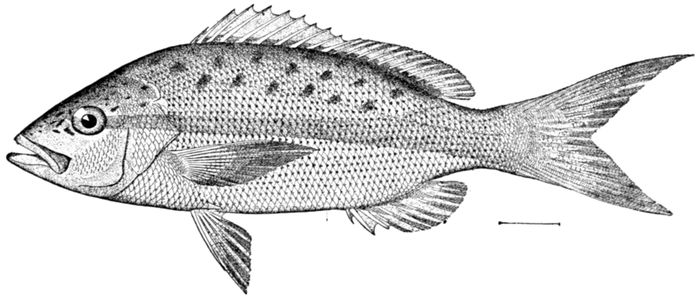
Fig. 273.—Yellow-tail Snapper, Ocyurus chrysurus (Linnæus). Key West.
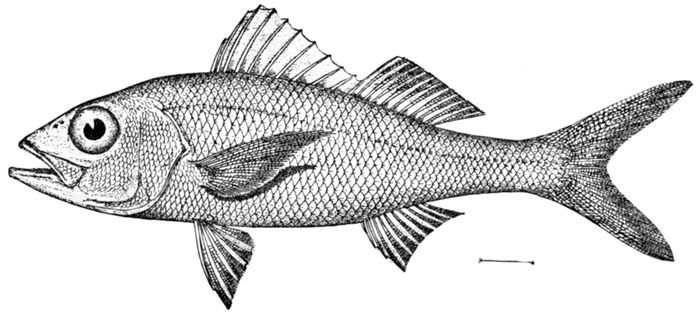
Fig. 274.—Cachucho, Etelis oculatus (Linnæus). Havana.
Hoplopagrus guntheri is a large snapper of the west coast
of Mexico, having very large molar teeth in its jaws besides slit-like
nostrils and other notable peculiarities. From the standpoint
of structure this species, with its eccentric characters—is
especially interesting. The yellow-tail snapper or rabirubia
(Ocyurus chrysurus) is a handsome and common fish of the
West Indies, with long, deeply forked tail, which makes it a
swifter fish than the others. Another red species is the diamond
snapper or cagon de lo alto, Rhomboplites aurorubens.
All these true snappers have the soft fins more or less scaly.
338In certain species that swim more freely in deep waters,
these fins are naked. Among them is the Arnillo, Apsilus
dentatus, a pretty brown fish of the West Indies, and its analogue
in Hawaii, Apsilus brighami, red, with golden cross-bands.
Aprion virescens, the Uku of Hawaii, is a large fish of
a greenish color and elongate body, widely diffused throughout
Polynesia and one of the best of food-fishes. A related
species is the red voraz (Aprion macrophthalmus) of the West
Indies.
Most beautiful of all the group are the species of Etelis,
with the dorsal fin deeply divided and the head flattened above.
These live in rather deep water about rocky reefs and are fiery
red in color. Best known is the Cuban species, Etelis oculatus,
the cachucho of the markets. Equally abundant and equally
beautiful is Etelis carbunculus of Polynesia, Etelis evurus of
Hawaii, and other species of the Pacific islands.
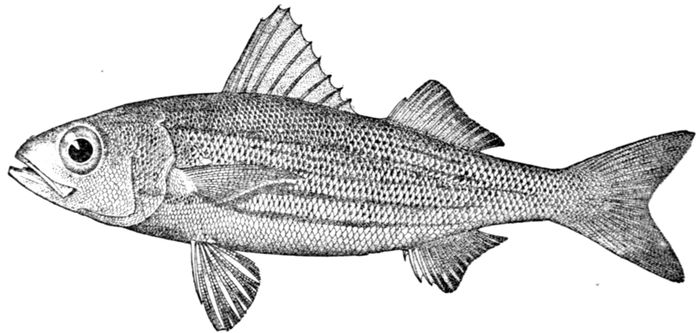
Fig. 275.—Xenocys jessiæ Jordan & Bollman. Family Lutianidæ. Galapagos Islands.
Verilus sordidus, the black escolar of Cuba, has the form
of Etelis, but the flesh is very soft and the color violet-black,
indicating its life in very deep water. Numerous small silvery
snappers living near the shore along the coast of western Mexico
belong to the genera called Xenichthys, Xenistius, and Xenocys.
Xenistius californiensis is the commonest of these species,
Xenocys jessiæ, the largest in size, with black lines like a striped
bass. To the genus Dentex belongs a large snapper-like fish of
the Mediterranean, Dentex dentex. Very many related species
occur in the old world, the prettily colored Nemipterus virgatus,
the Itoyori of Japan being one of the best known. Another
interesting fish is Aphareus furcatus, a handsome, swift fish of
the open seas occasionally taken in Japan and the East Indies.
Glaucosoma burgeri is a large snapper of Japan, and a related
species, Glaucosoma hebraicum, is one of the "jewfishes" of
Australia. Numerous fossil forms referred to Dentex occur in
the Eocene of Monte Bolca, as also a fish called Ctenodentex
lackeniensis from the Eocene of Belgium.
339
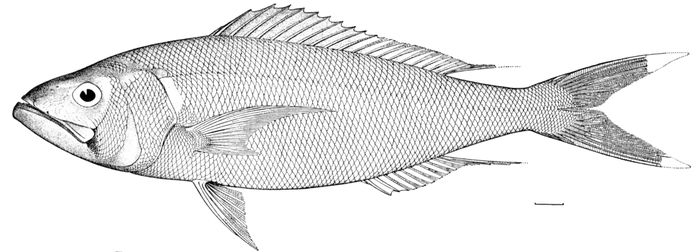
Fig. 276.—Aphareus furcatus (Lacépède). Odawara, Japan. Family Lutianidæ.
340

Fig. 277.—Grunt, Hæmulon plumieri (Bloch). Charleston, S. C.
The Grunts: Hæmulidæ.—The large family of Hæmulidæ,
known in America as grunters or roncos, is represented with the
snappers in all tropical seas. The common names (Spanish,
roncar, to grunt or snore) refer to the noise made either with
their large pharyngeal teeth or with the complex air-bladder.
These fishes differ from the Lutianidæ mainly in the feebler
detention, there being no canines and no teeth on the vomer.
Most of the American species belong to the genus Hæmulon
or red-mouth grunts, so called from the dash of scarlet at the
corner of the mouth. Hæmulon plumieri, the common grunt, or
ronco arará, is the most abundant species, known by the
narrow blue stripes across the head. In the yellow grunt,
ronco amarillo (Hæmulon sciurus), these stripes cross the whole
341body. In the margate-fish, or Jallao (Hæmulon album), the largest
of the grunts, there are no stripes at all. Another common
grunt is the black spotted sailor's choice, Ronco prieto (Hæmulon
parra), very abundant from Florida southward. Numerous other
grunts and "Tom Tates" are found on both shores of Mexico,
all the species of Hæmulon being confined to America. Anisotremus
includes numerous deep-bodied species with smaller
mouth, also all American. Anisotremus surinamensis, the
pompon, abundant from Louisiana southward is the commonest
species. Anisotremus virginicus, the porkfish or Catalineta,
beautifully striped with black and golden, is very common
in the West Indies. Plectorhynchus of Polynesia and the coasts
of Asia contains numerous large species closely resembling
Anisotremus, but lacking the groove at the chin characteristic
of Anisotremus and Hæmulon. Some of these are striped
or spotted with black in very gaudy fashion. Pomadasis, a
genus equally abundant in Asia and America, contains silvery
species of the sandy shores, with the body more elongate and
the spines generally stronger. Pomadasis crocro is the commonest
West Indian species, Pomadasis hasta the best known
of the Asiatic forms. Gnathodentex aurolineatus with golden
stripes is common in Polynesia.
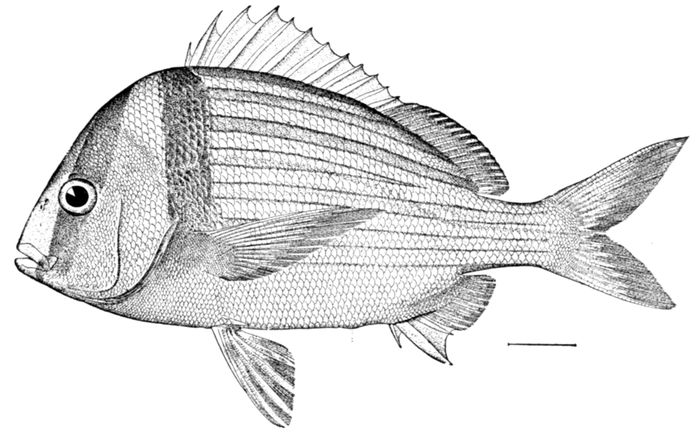
Fig. 278.—Porkfish, Anisotremus virginicus (Linnæus). Key West.
342The pigfishes, Orthopristis, have the spines feebler and the
anal fin more elongate. Of the many species, American and
Mediterranean, Orthopristis chrysopterus is most familiar, ranging
northward to Long Island, and excellent as a pan fish. Parapristipoma
trilineatum, the Isaki of Japan, is equally abundant
and very similar to it. Many related species belong to the
Asiatic genera, Terapon, Scolopsis, Cæsio, etc., sometimes
placed in a distinct family as Teraponidæ. Terapon servus
enters the streams of Polynesia, and is a very common fish
of the river mouths, taken in Samoa by the boys. Terapon
theraps is found throughout the East Indies. Terapon richardsoni
is the Australian silver perch. Cæsio contains numerous
small species, elongate and brightly colored, largely blue and
golden. Scolopsis, having a spine on the preorbital, contains
numerous species in the East Indies and Polynesia. These are
often handsomely colored. Among them is the taiva, Scolopsis
trilineatus of Samoa, gray with white streaks and markings of
delicate pattern. A fossil species in the Italian Eocene related
to Pomadasis is Pomadasis furcatus. Another, perhaps allied
to Terapon, is called Pelates quindecimalis.
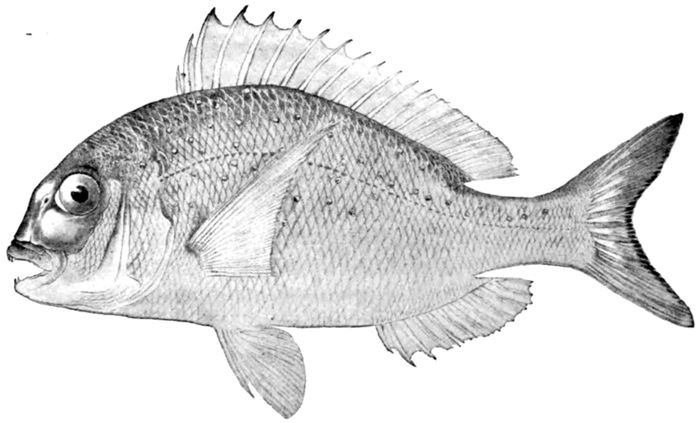
Fig. 279.—The Red Tai of Japan, Pagrus major Schlegel. Family Sparidæ. (After Kishinouye.)
The Porgies: Sparidæ.—The great family of Sparidæ or
porgies is also closely related to the Hæmulidæ. The most
tangible difference rests in the teeth, which are stronger, and
343some of those along the side of the jaw are transformed into
large blunt molars, fitted for grinding small crabs and shells.
The name porgy, in Spanish pargo, comes from the Latin
Pagrus and Greek πάγρος, the name from time immemorial
of the red porgy of the Mediterranean, Pagrus pagrus. In this
species the front teeth are canine-like, the side teeth molar. It
is a fine food-fish, very handsome, being crimson with blue
spots, and in the Mediterranean it is much esteemed. It also
breeds sparingly on our south Atlantic and Gulf coasts.
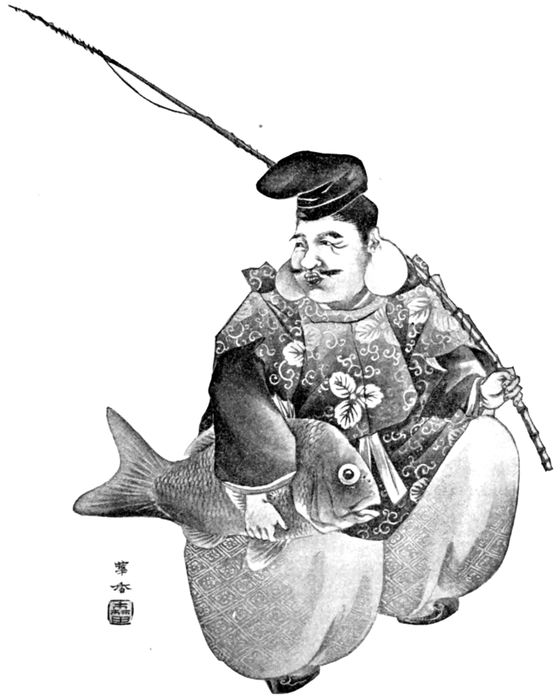
Fig. 280.—Ebisu, the Fish-god of Japan, bearing a Red Tai. (Sketch by Kako Morita.)
344
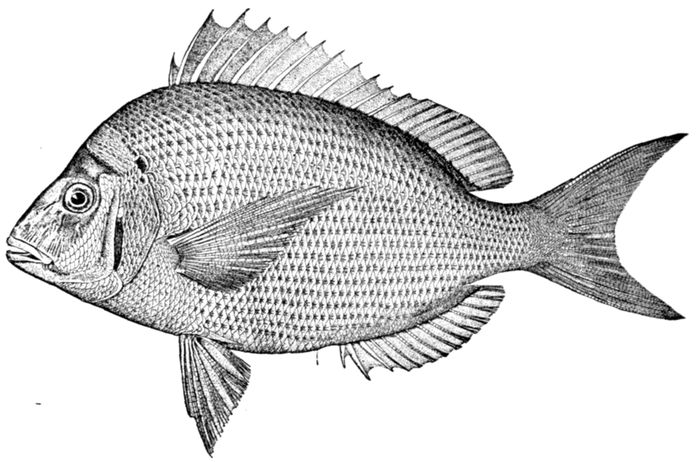
Fig. 281.—Scup, Stenotomus chrysops (Linnæus). Wood's Hole, Mass.
345
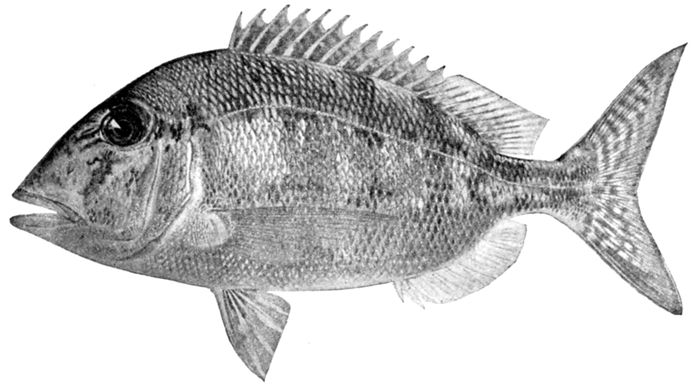
Fig. 282.—Calamus bajonado (Bloch & Schneider), Jolt-head Porgy. Pez de Pluma. Family Sparidæ.
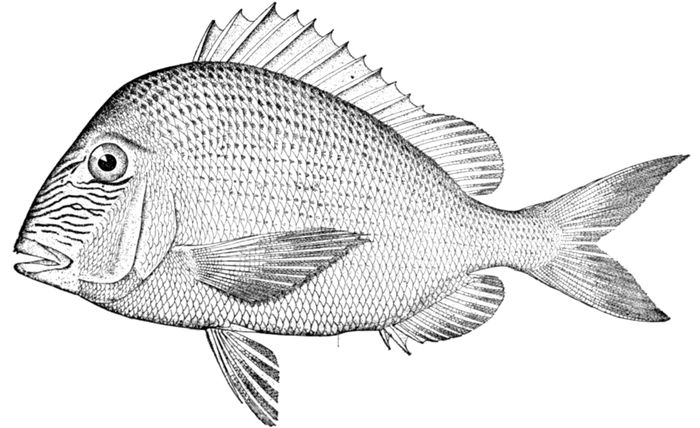
Fig. 283.—Little-head Porgy, Calamus proridens Jordan & Gilbert. Key West.
Very similar to the porgy is the famous red tai or akadai
of Japan (Pagrus major), a fish so highly esteemed as to be,
with the rising sun and the chrysanthemum, a sort of national
emblem. In all prints and images the fish-god Ebisu (Fig. 280),
beloved of the Japanese people, appears with a red tai under his
arm. This species, everywhere abundant, is crimson in color, and
the flesh is always tender and excellent. A similar species is
the well-known and abundant "schnapper" of Australia, Pagrus
unicolor. Another but smaller tai or porgy, crimson, sprinkled
with blue spots, Pagrus cardinalis, occurs in Japan in great
abundance, as also two species similar in character but without
red, known as Kurodai or black tai. These are Sparus latus
and Sparus berda. The gilt-head of the Mediterranean, Sparus
aurata, is very similar to these Japanese species. Sparus sarba
in Australia is the tarwhine, and Sparus australis the black
bream. The numerous species of Pagellus abound in the Mediterranean.
These are smaller in size than the species of Pagrus,
red in color and with feebler teeth. Monotaxis grandoculis,
known as the "mu," is a widely diffused and valuable food-fish
of the Pacific islands, greenish in color, with pale cross-bands.
Very closely related is also the American scup or fair maid
(Stenotomus chrysops), one of our commonest pan fishes. In
this genus and in Calamus the second interhæmal spine is very
greatly enlarged, its concave end formed like a quill-pen and
including the posterior end of the large air-bladder. This
arrangement presumably assists in hearing. Of the penfishes,
or pez de pluma, numerous species abound in tropical America,
where they are valued as food. Of these the bajonado or
jolt-head porgy (Calamus bajonado) is largest, most common
346and dullest in color. Calamus calamus is the saucer-eye porgy,
and Calamus proridens, the little-head porgy. Calamus leucosteus
is called white-bone porgy, and the small Calamus arctifrons
the grass-porgy.
The Chopa spina, or pinfish, Lagodon rhomboides, is a little
porgy with notched incisors, exceedingly common on our South
Atlantic coast.
In some of the porgies the front teeth instead of being canine-like
are compressed and truncate, almost exactly like human
incisors. These species are known as sheepshead, or sargos.

Fig. 284.—Diplodus holbrooki Bean. Pensacola.
Diplodus sargus and Diplodus annularis are common sargos of
the Mediterranean, silvery, with a black blotch on the back of
the tail. Diplodus argenteus of the West Indies and Diplodus
holbrooki of the Carolina coast are very close to these.
The sheepshead, Archosargus probatocephalus, is much the
most valuable fish of this group. The broad body is crossed
by about seven black cross-bands. It is common from Cape
Cod to Texas in sandy bays, reaching rarely a weight of fifteen
pounds. Its flesh is most excellent, rich and tender. The
sheepshead is a quiet bottom-fish, but takes the hook readily
and with some spirit. Close to the sheepshead is a smaller
species known as Salema (Archosargus unimaculatus), with blue
347and golden stripes and a black spot at the shoulder. It abounds
in the West Indies.
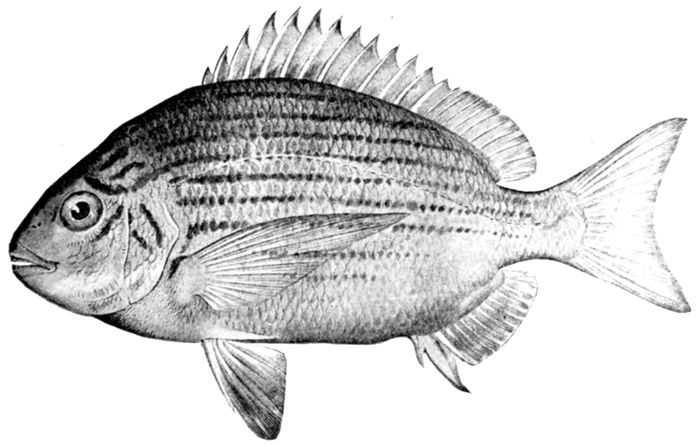
Fig. 285.—Archosargus unimaculatus (Bloch), Salema, Striped Sheepshead. Family Sparidæ.
On the coast of Japan and throughout Polynesia are numerous
species of Lethrinus and related genera, formed and
colored like snappers, but with molar teeth and the cheek without
scales. A common species in Japan is Lethrinus richardsoni.
Fossil species of Diplodus, Sparus, Pagrus, and Pagellus
occur in the Italian Eocene, as also certain extinct genera,
Sparnodus and Trigonodon, of similar type. Sparnodus macrophthalmus
is abundant in the Eocene of Monte Bolca.
The Picarels: Mænidæ.—The Mænidæ, or Picarels, are elongate,
gracefully formed fishes, remarkable for the extreme protractility
of the upper jaw. Spicara smaris and several other
small species are found in the Mediterranean. Emmelichthys
contains species of larger size occurring in the West Indies and
various parts of the Pacific, chiefly red and very graceful in
form and color. Emmelichthys vittatus, the boga, is occasionally
taken in Cuba, Erythrichthys schlegeli is found in Japan and
Hawaii.
348
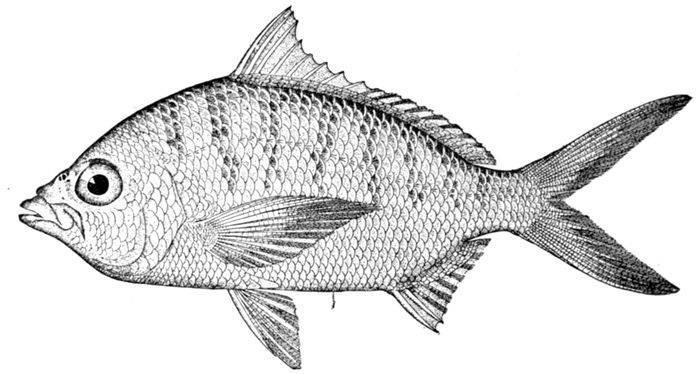
Fig. 286.—Mojarra, Xystæma cinereum (Walbaum). Key West.
The Mojarras: Gerridæ.—The Gerridæ, or Mojarras, have
the mouth equally protractile, but the form of the body is
different, being broad, compressed, and covered with large
silvery scales. In some species the dorsal spines and the third
anal spine are very strong, and in some the second interhæmal
is quill-shaped, including the end of the air-bladder, as in Calamus.
Most of the species, including all the peculiar ones, are American.
The smallest, Eucinostomus, have the quill-shaped interhæmal
and the dorsal and anal spines are very weak. The commonest
species is the silver jenny, or mojarra de Ley, Eucinostomus
gula, which ranges from Cape Cod to Rio Janeiro, in the surf
along sandy shores. Equally common is Eucinostomus californiensis
of the Pacific Coast of Mexico, while Eucinostomus
harengulus of the West Indies is also very abundant. Ulæma
lefroyi has but two anal spines and the interhæmal very small.
It is common through the West Indies. Xystæma, with the
interhæmal spear-shaped and normally formed, is found in
Asia and Polynesia more abundantly than in America, although
one species, Xystæma cinereum, the broad shad, or Mojarra
blanca, is common on both shores of tropical America.
Xystæma gigas is found in Polynesia, X. oyena in Japan, and
X. filamentosum in Formosa and India. Xystæma massalongoi
is also fossil in the Miocene of Austria. The species of Gerres
have very strong dorsal and anal spines and the back much
elevated. Gerres plumieri, the striped mojarra, Gerres brasiliensis,
the patao, Gerres olisthostomus, the Irish pampano,
and Gerres rhombeus are some of the numerous species found
349on the Florida coast and in the West Indies. The family of
Leiognathidæ, already noticed (page 287), should stand next to
the Gerridæ.
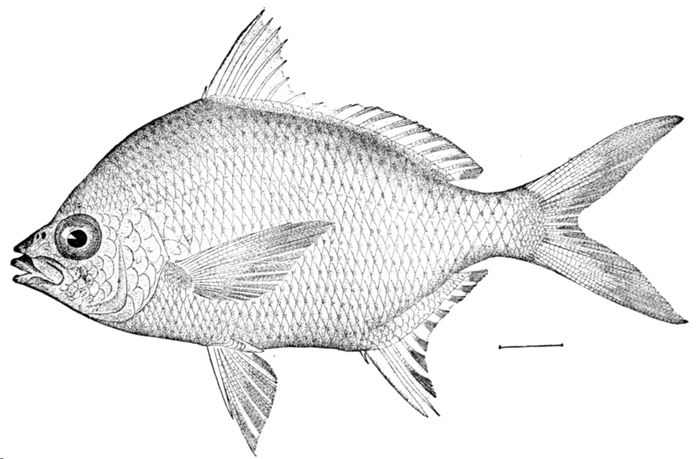
Fig. 287.—Irish Pampano, Gerres olisthostomus Goode & Bean. Indian River, Fla.
The Rudder-fishes: Kyphosidæ.—The Kyphosidæ, called rudder-fishes,
have no molars, the front of the jaws being occupied
by incisors, which are often serrated, loosely attached,
and movable. The numerous species are found in the warm
seas and are chiefly herbivorous.
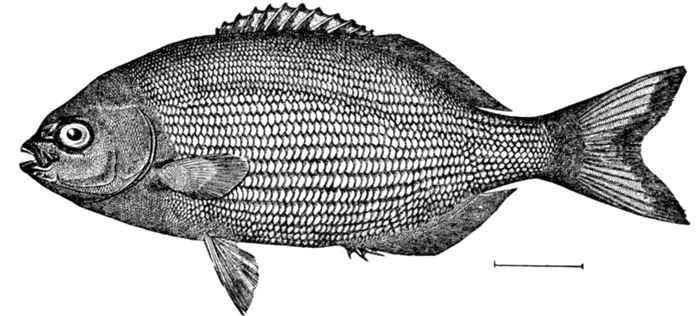
Fig. 288.—Chopa or Rudder-fish, Kyphosus sectatrix (Linnæus). Wood's Hole, Mass.
Boops boops and Boops salpa, known as boga and salpa,
350are elongate fishes common in the Mediterranean. Other Mediterranean
forms are Spondyliosoma cantharus, Oblata melanura,
etc. Girella nigricans is the greenfish of California, everywhere
abundant about rocks to the south of San Francisco,
and of considerable value as food. Almost exactly like it
is the Mejinadai (Girella punctata) of Japan. The best-known
members of this group belong to the genus Kyphosus. Kyphosus
sectatrix is the rudder-fish, or Chopa blanca, common in the
West Indies and following ships to the northward even as far
as Cape Cod, once even taken at Palermo. It is supposed
that it is enticed by the waste thrown overboard. Kyphosus
elegans is found on the west coast of Mexico, Kyphosus tahmel
in the East Indies and Polynesia, and numerous other species
occur in tropical America and along the coasts of southern
Asia. Sectator ocyurus is a more elongate form of rudder-fish,
striped with bright blue and yellow, found in the Pacific.
Medialuna californiensis is the half-moon fish, or medialuna,
of southern California, an excellent food-fish frequently taken
on rocky shores. Numerous related species occur in the Indian
seas.

Fig. 288a.—Blue-green Sunfish, Apomotis cyanellus (Rafinesque). Kansas River. (After Kellogg.)
Fossil fragments in Europe have been referred to Boops,
Spondyliosoma, and other genera.
351
CHAPTER XX
THE SURMULLETS, THE CROAKERS AND THEIR
RELATIVES
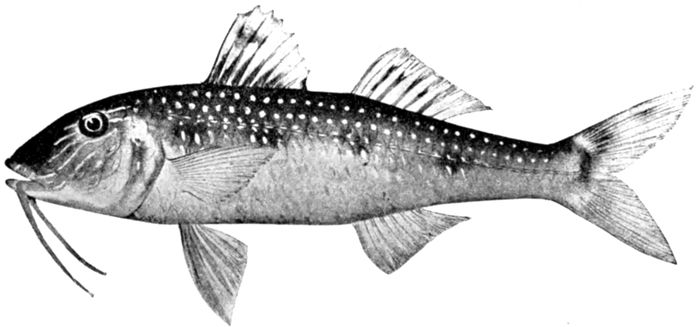
Fig. 289.—Red Goatfish, or Salmonete, Pseudupeneus maculatus Bloch. Family Mullidæ (Surmullets.)
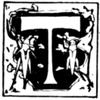
The Surmullets, or Goatfishes: Mullidæ.—The Mullidæ
(Surmullets) are shore-fishes of the warm seas, of moderate
size, with small mouth, large scales, and possessing
the notable character of two long, unbranched barbels
of firm substance at the chin. The dorsal fins are short,
well separated, the first of six to eight firm spines. There
are two anal spines and the ventral fins, thoracic, are formed
of one spine and five rays. The flesh is white and tender,
often of very superior flavor. The species are carnivorous,
feeding chiefly on small animals. They are not voracious,
and predaceous fishes feed freely on them. The coloration is
generally bright, largely red or golden, in nearly all cases with
an under layer, below the scales, of red, which appears when
the fish is scaled or placed in alcohol. The barbels are often
bright yellow, and when the fish swims along the bottom these
are carried in advance, feeling the way. Testing the bottom
352with their feelers, these fishes creep over the floor of shallow
waters, seeking their food.
The numerous species are all very much alike in form, and
the current genera are separated by details of the arrangement
of the teeth. But few are found outside the tropics.
The surmullet or red mullet of Europe, Mullus barbatus,
is the most famous species, placed by the Romans above all
other fishes unless it be the scarus, Sparisoma cretense. From
the satirical poets we learn that "enormous prices were paid
for a fine fish, and it was the fashion to bring the fish into the
dining-room and exhibit it alive before the assembled guests,
so that they might gloat over the brilliant and changing colors
during the death-agonies." It is red in life, and when the
scales are removed, the color is much brighter.
It is an excellent fish, tender and rich, but nowhere so extravagantly
valued to-day as was formerly the case in Rome.
Mullus surmuletus is a second European species, scarcely different
from Mullus barbatus.

Fig. 290.—Golden Surmullet, Mullus auratus Jordan & Gilbert. Wood's Hole, Mass.
Equally excellent as food and larger in size are two Polynesian
species known as kumu and munu (Pseudupeneus porphyreus
and Pseudupeneus bifasciatus). Mullus auratus is a small surmullet
occasionally taken off our Atlantic coast, but in deeper
water than that frequented by the European species. Pseudupeneus
maculatus is the red goatfish or salmonete, common
from Florida to Brazil, as is also the yellow goatfish, Pseudupeneus
353martinicus, equally valued. Many other species are
found in tropical America, Polynesia, and the Indies and Japan.
Perhaps the most notable are Upeneus vittatus, striped with
yellow and with the caudal fin cross-barred and the belly sulphur-yellow,
and Upeneus arge, similar, the belly white. The
common red and black-banded "moana" or goatfish of Hawaii
is Pseudupeneus multifasciatus.
No fossil Mullidæ are recorded, so far as known to us.
The Croakers: Sciænidæ.—The family of Sciænidæ (croakers,
roncadors) is another of the great groups of food-fishes.
The species are found on every sandy shore in warm regions
and all of them are large enough to have value as food, while
many have flesh of superior quality. None are brightly colored,
most of the species being nearly plain silvery.
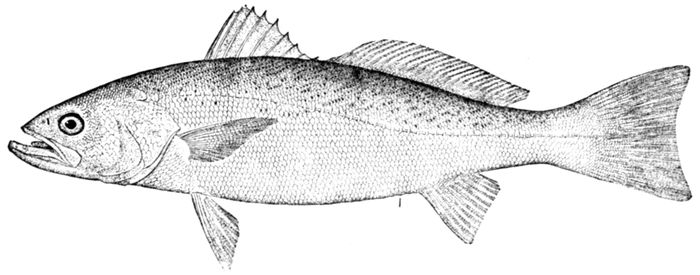
Fig. 291.—Spotted Weakfish, Cynoscion nebulosus. Virginia.
Special characters are the cavernous structure of the bones
of the head, which are full of mucous tracts, the specialization
(and occasional absence) of the air-bladder, and the presence
of never more than two anal spines, one of these being sometimes
very large. Most of the species are marine, all are carnivorous;
none inhabit rocky places and none descend to depths
in the sea. At the least specialized extreme of the family,
the mouth is large with strong canines and the species are
slender, swift, and predaceous.
The weakfish or squeteague (Cynoscion regalis) is a type
of a multitude of species, large, swift, voracious, but with tender
flesh, which is easily torn. The common weakfish, abundant
on our Atlantic coast, suffers much at the hands of its
354enemy and associate, the bluefish. It is one of the best of all
our food-fishes. Farther south the spotted weakfish (Cynoscion
nebulosus), very incorrectly known as sea-trout, takes its
place, and about New Orleans is especially and justly prized.
The California "bluefish," Cynoscion parvipinnis, is very
similar to these Atlantic species, and there are many other
species of Cynoscion on both coasts of tropical America, forming
a large part of the best fish-supply of the various markets
of the mainland. On the rocky islands, as Cuba, and about
coral reefs, Sciænidæ are practically unknown. In the Gulf
of California, the totuava, Cynoscion macdonaldi, reaches a
weight of 172 pounds, and the stateliest of all, the great
"white sea-bass" of California, Cynoscion nobilis, reaches 100
pounds. In these large species the flesh is much more firm
than in the weakfish and thus bears shipment better. Cynoscion
has canines in the upper jaw only and its species are all American.
In the East Indies the genus Otolithes has strong canines
in both jaws. Its numerous species are very similar in form,
habits, and value to those of Cynoscion. The queenfish, Seriphus
politus, of the California coast, is much like the others of
this series, but smaller and with no canines at all. It is a very
choice fish, as are also the species of Macrodon (Ancylodon)
known as pescadillo del red, voracious fishes of both shores
of South America.
Plagioscion squamosissimus and numerous species of Plagioscion
and other genera live in the rivers of South America.
A single species, the river-drum, gaspergou, river sheepshead, or
thunder-pumper (Aplodinotus grunniens), is found in streams
in North America. This is a large fish reaching a length of
nearly three feet. It is very widely distributed, from the Great
Lakes to Rio Usumacinta in Guatemala, whence it has been
lately received by Dr. Evermann. This species abounds in
lakes and sluggish rivers. The flesh is coarse, and in the Great
Lakes it is rarely eaten, having a rank odor. In Louisiana and
Texas it is, however, regarded as a good food-fish. In this
species the lower pharyngeals are very large and firmly united,
while, as in all other Sciænidæ, except the genus Pogonias, these
bones are separated. In all members of the family the ear-bones
or otoliths are largely developed, often finely sculptured.
355The otoliths of the river-drum are known to Wisconsin boys
as "lucky-stones," each having a rude impress of the letter L.
The names roncador, drum, thunder-pumper, croaker, and the
like refer to the grunting noise made by most Sciænidæ in the
water, a noise at least connected with the large and divided
air-bladder.
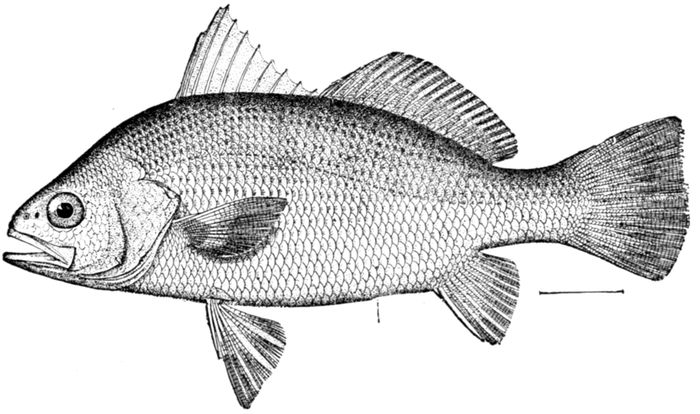
Fig. 292.—Mademoiselle, Bairdiella chrysura (Linnæus). Virginia.
Numerous silvery species belong to Larimus, Corvula, Odontoscion,
and especially to Bairdiella, a genus in which the second
anal spine is unusually strong. The mademoiselle, Bairdiella
chrysura is a pretty fish of our Atlantic coast, excellent as a
pan fish. In Bairdiella ensifera of Panama the second anal
spine is enormously large, much as in a robalo (Oxylabrax).
In Stellifer and Nebris, the head is soft and spongy. Stellifer
lanceolatus is occasionally taken off South Carolina, and
numerous other species of this and related genera are found
farther South.
Sciænops ocellata is the red-drum or channel bass of our
South Atlantic coast, a most important food-fish reaching a
weight of seventy-five pounds. It is well marked by a black
ocellus on the base of the tail. On the coast of Texas, this
species, locally called redfish, exceeds in economic value all other
species found in that State.
Pseudosciæna aquila, the maigre of southern Europe, is
356another large fish, similar in value to the red drum. Pseudosciæna
antarctica is the kingfish of Australia. To Sciæna belong
many species, largely Asiatic, with the mouth inferior, without
barbels, the teeth small, and the convex snout marked with
mucous pores. Sciæna umbra, the ombre, is the common
European species, Sciæna saturna, the black roncador of California,
is much like it. Sciæna deliciosa is one of the most valued
food-fishes of Peru, and Sciæna argentata is valued in Japan.
Species of Sciæna are especially numerous on the coasts of India.
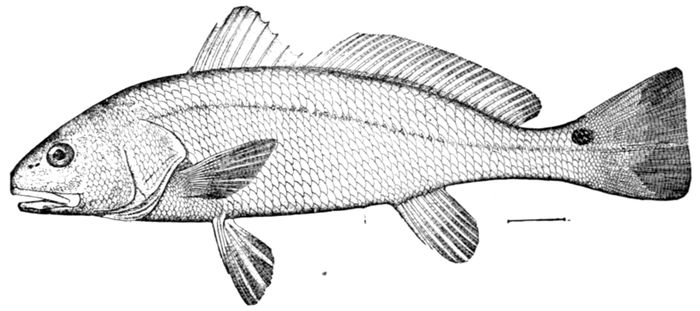
Fig. 293.—Red Drum, Sciænops ocellata Linnæus. Texas.
Roncador stearnsi, the California roncador, is a large fish with a
black ocellus at the base of the pectoral. It has some importance
in the Los Angeles market. The goody, spot, or lafayette (Leiostomus
xanthurus) is a small, finely flavored species abundant
from Cape Cod to Texas. Similar to it but inferior is the little
roncador (Genyonemus lineatus) of California. The common
croaker, Micropogon undulatus, is very abundant on our Eastern
coast, and other species known as verrugatos or white-mouthed
drummers replace it farther South.
In Umbrina the chin has a short thick barbel. The species
abound in the tropics, Umbrina cirrosa in the Mediterranean;
Umbrina coroides in California, and the handsome Umbrina
roncador, the yellow-tailed roncador, in southern California.
The kingfish, Menticirrhus, differs in lacking the air-bladder,
and lying on the bottom in shallow water the lower fins are
enlarged much as in the darters or gobies. All the species are
American. All are dull-colored and all excellent as food. Menticirrhus
saxatilis is the common kingfish or sea-mink, abundant
357from Cape Ann southward, Menticirrhus americanus is the
equally common sand-whiting of Carolina, and Menticirrhus
littoralis the surf-whiting. The California whiting or sand-sucker
is Menticirrhus undulatus.
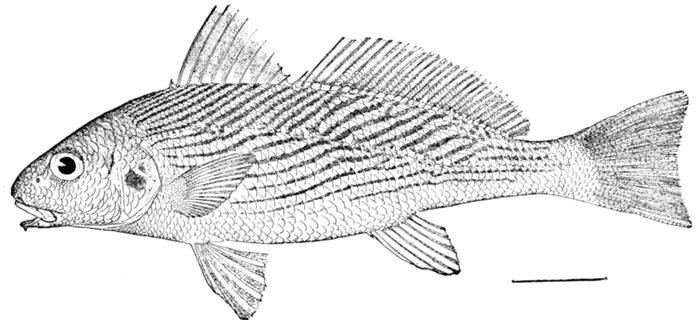
Fig. 294.—Yellow-fin Roncador, Umbrina sinaloæ Scofield. Mazatlan.
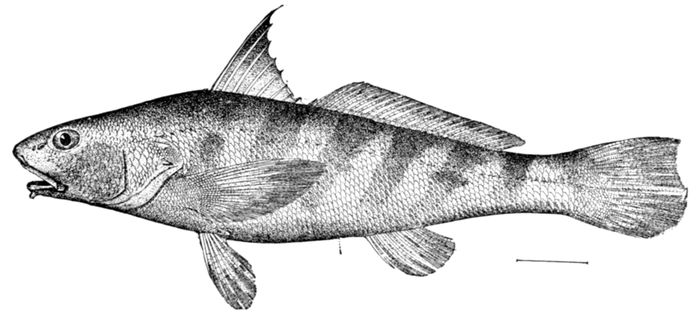
Fig. 295.—Kingfish, Menticirrhus americanus (Linnæus). Pensacola.
Pogonias chromis, the sea-drum, has barbels on the chin and
the lower pharyngeals are enlarged and united as in the river-drum,
Aplodinotus. It is a coarse fish common on our Atlantic
coasts, a large specimen taken at St. Augustine weighing 146
pounds. Other species of this family, belonging to the genus
Eques, are marked with ribbon-like stripes of black. Eques
lanceolatus, known in Cuba as serrana, is the most ornate of these
species, looking like a butterfly-fish or Chætodon.
Several fossil fragments have been doubtfully referred to
Sciæna, Umbrina, Pogonias, and other genera. Otoliths or
358ear-bones not clearly identifiable are found from the Miocene
on. These structures are more highly specialized in this group
than in any other.
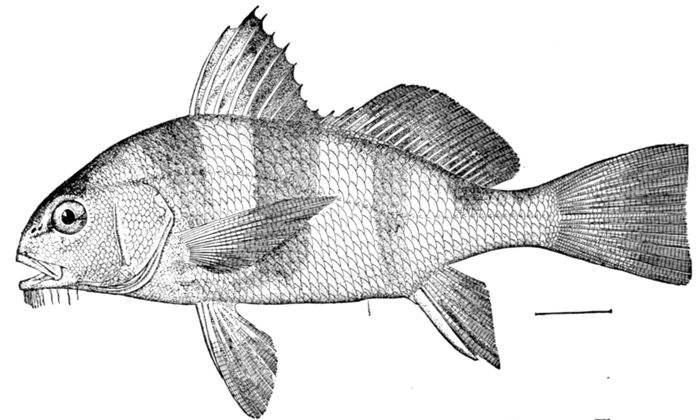
Fig. 296.—Drum, Pogonias chromis (Linnæus). Matanzas, Fla.
The Sillaginidæ, etc.—Allied to the Sciænidæ is the small family
of Kisugos, Sillaginidæ, of the coasts of Asia. These are slender,
cylindrical fishes, silvery in color, with a general resemblance
to small Sciænas.
Sillago japonicas, the kisugo of Japan, is a very abundant
species, valued as food. Sillago sihama ranges from Japan to
Abyssinia.
A number of small families, mostly Asiatic, may be appended
to the percoid series, with which they agree in general characters,
especially in the normal structure of the shoulder-girdle and
in the insertion of the pectoral and ventral fins.
The Lactariidæ constitute a small family of the East Indies,
allied to the Sciænidæ, but with three anal spines. The mouth
is armed with strong teeth. Lactarius lactarius is a food-fish of
India.
The Nandidæ are small spiny-rayed fishes of the East Indian
streams, without pseudobranchiæ.
The Polycentridæ are small fresh-water perch-like fishes of
the streams of South America, without lateral line and with
many anal spines.
359The Jawfishes: Opisthognathidæ, etc.—The Pseudochromipidæ
are marine-fishes of the tropics with the lateral line interrupted,
and with a single dorsal. They bear some resemblance
to Plesiops and other aberrant Serranidæ.
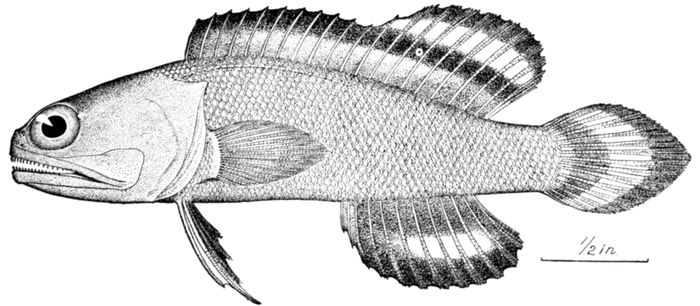
Fig. 297.—Gnathypops evermanni Jordan & Snyder. Misaki, Japan.
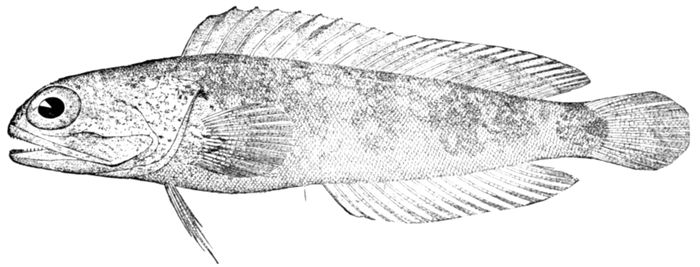
Fig. 298.—Jawfish, Opisthognathus macrognathus Poey. Tortugas, Fla.
Very close to these are the Opisthognathidæ or jawfishes with
a single lateral line and the mouth very large. In certain
species of Opisthognathus, the maxillary, long and curved, extends
far behind the head. The few species are found in warm
seas, but always very sparingly. Some of them are handsomely
colored.
The Stone-wall Perch: Oplegnathidæ.—A singular group evidently
allied to the Hæmulidæ is the family of Oplegnathidæ.
In these fishes the teeth are grown together to form a bony beak
like the jaw of a turtle. Except for this character, the species
are very similar to ordinary grunts. While the mouth resembles
360that of the parrot-fish, it is structurally different and must have
been independently developed. Oplegnathus punctatus, the
"stonewall perch" (ishigakidai), is common in Japan, as is also
the banded Oplegnathus fasciatus. Other species are found in
Australia and Chile.

Fig. 299.—Opisthognathus nigromarginatus. India. (After Day.)
The Swallowers: Chiasmodontidæ.—The family of swallowers
Chiasmodontidæ, is made up of a few deep-sea fishes of soft
flesh and feeble spines, the opercular apparatus much reduced.
The ventrals are post-thoracic, the rays I, 5, facts which point
to some affinity with the Opisthognathidæ, although Boulenger
places these fishes among the Percesoces. Chiasmodon niger, the
black swallower of the mid-Atlantic, has exceedingly long teeth
and the whole body so distensible that it can swallow fishes of
many times its own size. According to Gill:
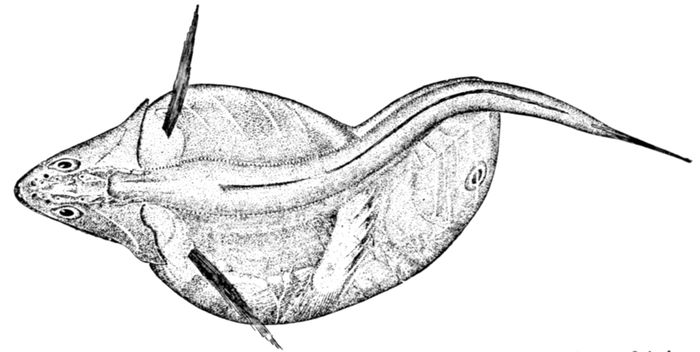
Fig. 300.—Black Swallower, Chiasmodon niger Johnson, containing a fish larger than itself. Le Have Bank.
"It espies a fish many times larger than itself, but which,
nevertheless, may be managed; it darts upon it, seizes it by
361the tail and gradually climbs over it with its jaws, first using
one and then the other; as the captive is taken in the stomach
and integuments stretch out, and at last the entire fish is passed
through the mouth and into the stomach, and the distended
belly appears as a great bag, projecting out far backwards and
forwards, over which is the swallower with the ventrals dislocated
and far away from their normal place. The walls of the
stomach and belly have been so stretched that they are transparent,
and the species of the fish can be discerned within. But
such rapacity is more than the captor itself can stand. At
length decomposition sets in, the swallower is forced belly upwards,
and the imprisoned gas, as in a balloon, takes it upwards
from the depths to the surface of the ocean, and there, perchance,
it may be found and picked up, to be taken home for a wonder,
as it is really. Thus have at least three specimens found their
way into museums—one being in the United States National
Museum—and in each the fish in the stomach has been about
twice as long, and stouter in proportion, than the swallower—six
to twelve times bulkier! Its true habitat seems to be at a
depth of about 1,500 fathoms."
Allied to this family is the little group of Champsodontidæ of
Japan and the East Indies. Champsodon vorax looks like a
young Uranoscopus. The body is covered with numerous
lateral lines and cross-lines.
The Malacanthidæ.—The Malacanthidæ are elongate fishes,
rather handsomely colored, with a strong canine on the premaxillary
behind. Malacanthus plumieri, the matajuelo blanco, a
slender fish of a creamy-brown color, is common in the West
Indies. Other species are found in Polynesia, the most notable
being Malacanthus (or Oceanops) lativittatus, a large fish of a
brilliant sky-blue, with a jet-black lateral band. In Samoa this
species is called gatasami, the "eye of the sea."
The Blanquillos: Latilidæ.—The Latilidæ, or blanquillos, have
also an enlarged posterior canine, but the body is deeper and the
flesh more firm. The species reach a considerable size and are
valued as food. Lopholotilus chamæleonticeps is the famous
tilefish dredged in the depths under the Gulf Stream. It is a
fish of remarkable beauty, red and golden. This species, Professor
Gill writes, "was unknown until 1879, when specimens
362were brought by fishermen to Boston from a previously unexplored
bank about eighty miles southeast of No Man's Land,
Mass. In the fall of 1880 it was found to be extremely abundant
everywhere off the coast of southern New England at a
depth of from seventy-five to two hundred and fifty fathoms.
The form of the species is more compressed, and higher, than
in most of the family, and what especially distinguishes it is
the development of a compressed, 'fleshy, fin-like appendage
over the back part of the head and nape, reminding one of the
adipose fin of the salmonids and catfishes.' It is especially
notable, too, for the brilliancy of its colors, as well as for its size,
being by far larger than any other member of its family. A
weight of fifty pounds or more is, or rather, one might say, was
frequently attained by it, although such was very far above
the average, that being little over ten pounds. In the reach of
water referred to, it could once be found abundantly at any
time, and caught by hook and line. After a severe gale in March,
1882, millions of tilefish could be seen, or calculated for, on the
surface of the water for a distance of about three hundred miles
from north to south, and fifty miles from east to west. It
has been calculated by Capt. Collins that as many as one thousand
four hundred and thirty-eight millions were scattered
over the surface. This would have allowed about two hundred
and twenty-eight pounds to every man, woman and child of
the fifty million inhabitants of the United States! On trying
at their former habitat the next fall, as well as all successive
years to the present time, not a single specimen could be found
where formerly it was so numerous. We have thus a case of a
catastrophe which, as far as has been observed, caused complete
annihilation of an abundant animal in a very limited
period. Whether the grounds it formerly held will be reoccupied
subsequently by the progeny of a protected colony remains to
be seen, but it is scarcely probable that the entire species
has been exterminated." It is now certain that the species
is not extinct.
Caulolatilus princeps is the blanquillo or "whitefish" of
southern California, a large handsome fish formed like a dolphin,
of purplish, olivaceous color and excellent flesh. Other
species of Caulolatilus are found in the West Indies. Latilus
363japonicus is the amadai or sweet perch of Japan, an excellent
food-fish of a bright crimson color.
The Pinguipedidæ of Chile resemble the Latilidæ, having
also the enlarged premaxillary tooth. The ventrals are, however,
thickened and placed farther forward.
The Bandfishes: Cepolidæ.—The small family of Cepolidæ, or
bandfishes, resemble the Latilidæ somewhat and are probably
related to them. The head is normally formed, the ventral fins
are thoracic, with a spine and five rays, but the body is drawn
out into a long eel-like form, the many-rayed dorsal and anal
fins meeting around the tail. The few species are crimson in
color with small scales. They are used as food, but the flesh
is dry and the bones are stiff and numerous. Cepola tænia is
common in the Mediterranean, and Acanthocepola krusensterni
abounds in the bays of southern Japan.
The Cirrhitidæ.—The species of the family Cirrhitidæ strongly
resemble the smaller Serranidæ and even Serranus itself, but
the lower rays of the pectoral fins are enlarged and are undivided,
as in the sea-scorpions and some sculpins. In these
fishes, however, the bony stay, which characterizes Scorpænidæ
and Cottidæ, is wholly absent. It is, however, considered possible
that this interesting family represents the point of separation
at which the mail-cheeked fishes become differentiated from the
typical perch-like forms. Goniistius zonatus, the takanohadai,
is a valuable food-fish of Japan, marked by black cross-bands.
Paracirrhites forsteri and other species of Cirrhitus and Paracirrhites
are very pretty fishes of the coral reefs, abundant in the
markets of Honolulu, the spotted Cirrhitus marmoratus being
the most widely diffused of these. Only one species of this
family, Cirrhitus rivulatus, a large fish, green, with blue markings,
is found in American waters. It frequents the rocky
shores of the west coast of Mexico.
Allied to the Cirrhitidæ is the small family of Latrididæ,
with a long dorsal fin deeply divided, and the lower rays of
the pectoral similarly modified. Latris hecateia is called the
"trumpeter" in Australian waters. It is one of the best food-fishes
of Australia, reaching a weight of sixty to eighty pounds.
Another small family showing the same peculiar structure
of the pectoral fin is that of the Aplodactylidæ. The species
364of Aplodactylus live on the coasts of Chile and Australia. They
are herbivorous fishes, with flat, tricuspid teeth, and except
for their pectoral fins are very similar to the Kyphosidæ.
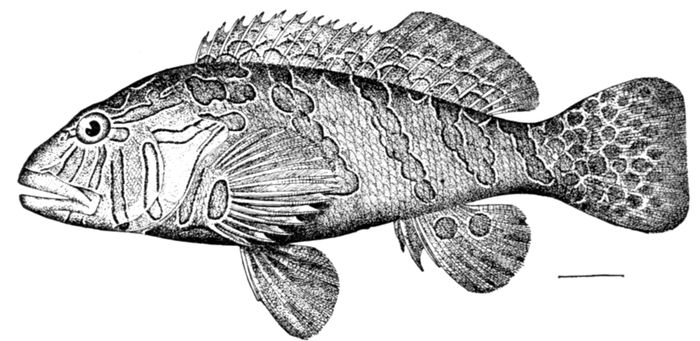
Fig. 301.—Cirrhitus rivulatus Valenciennes. Mazatlan.
The Sandfishes: Trichodontidæ.—In the neighborhood of the
Latrididæ, Dr. Boulenger places the Trichodontidæ or sandfishes,
small, scaleless, silvery fishes of the northern Pacific. These
are much compressed in body, with very oblique mouths, with
fringed lips and, as befits their northern habitat, with a much
increased number of vertebræ. They bury themselves in sand
under the surf, and the two species, Trichodon trichodon and
Arctoscopus japonicus, range very widely in the regions washed
by the Japan current. These species bear a strong resemblance
to the star-gazers (Uranoscopus), but this likeness seems to be
superficial only.
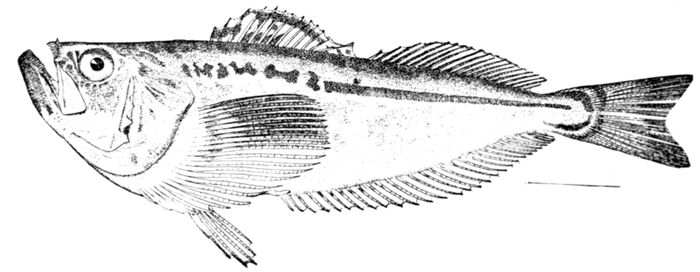
Fig. 302.—Sandfish, Trichodon trichodon (Tilesius). Shumagin Islands, Alaska.
365
CHAPTER XXI
LABYRINTHICI AND HOLCONOTI
The Labyrinthine Fishes.—An offshoot of the Percomorphi
is the group of Labyrinthici, composed of perch-like
fishes which have a very peculiar structure to the
pharyngeal bones and respiratory apparatus. This feature is
thus described by Dr. Gill:
"The upper elements of one of the pairs of gill-bearing
arches are peculiarly modified. The elements in question
(called branchihyal) of each side, instead of being straight
and solid, as in most fishes, are excessively developed and provided
with several thin plates or folds, erect from the surface
of the bones and the roof of the skull, to which the bones are
attached. These plates, by their intersection, form chambers,
and are lined with a vascular membrane, which is supplied
with large blood-vessels. It was formerly supposed that the
chambers referred to had the office of receiving and retaining
supplies of water which should trickle down and keep the gills
moist; such was supposed to be an adaptation for the sustentation
of life out of the water. The experiments of Surgeon
Day, however, throw doubt upon this alleged function, and
tend to show: (1) that these fishes died when deprived of access
to atmospheric air, not from any deleterious properties either
in the water or in the apparatus used, but from being unable
to subsist on air obtained solely from the water, aerial respiration
being indispensable; (2) that they can live in moisture
out of the water for lengthened periods, and for a short, but
variable period in water only; and (3) that the cavity or receptacle
does not contain water, but has a moist secreting surface,
in which air is retained for the purpose of respiration. It
seems probable that the air, after having been supplied for aerial
respiration, is ejected by the mouth, and not swallowed to be
366discharged per anum. In fine, the two respiratory factors
of the branchial apparatus have independent functions: (1)
the labyrinthiform, or branchihyal portion, being a special modification
for the respiration of atmospheric air, and (2) the gill
filaments discharging their normal function. If, however,
the fish is kept in water and prevented from coming to the
surface to swallow the atmospheric air, the labyrinthiform
apparatus becomes filled with water which cannot be discharged,
owing to its almost non-contractile powers. There
is thus no means of emptying it, and the water probably
becomes carbonized and unfit for oxygenizing the blood, so
that the whole of the respiration is thus thrown on the branchiæ.
This will account for the fact that when the fish is in a state
of quiescence, it lives much longer than when excited, whilst
the sluggishness sometimes evinced may be due to poisoned
or carbonized blood."
Four families of labyrinth-gilled fishes are recognized by
Professor Gill; and to these we may append a fifth, which, however,
lacks the elaborate structures mentioned above and
which shows other evidences of degeneration.
The Climbing-perches: Anabantidæ.—The family of Anabantidæ,
according to Gill, "includes those species which have the
mouth of moderate size and teeth on the palate (either on the
vomer alone, or on both the vomer and palatine bones). To
the family belongs the celebrated climbing-fish.

Fig. 303.—The Climbing Perch, Anabas scandens Linnæus. Opercle cut away to show the gill-labyrinth.
"The climbing-fish (Anabas scandens) is especially noteworthy
for the movability of the suboperculum. The operculum
367is serrated. The color is reddish olive, with a blackish
spot at the base of the caudal fin; the head, below the level
of the eye, grayish, but relieved by an olive band running from
the angle of the mouth to the angle of the preoperculum, and
with a black spot on the membrane behind the hindermost
spines of the operculum.
"The climbing-fish was first made known in a memoir,
printed in 1797, by Daldorf, a lieutenant in the service of the
Danish East India Company at Tranquebar. Daldorf called
it Perca scandens, and affirmed that he himself had taken one
of these fishes, clinging by the spine of its operculum in a slit
in the bark of a palm (Borassus flabelliformis) which grew near
a pond. He also described its mode of progression; and his
observations were substantially repeated by the Rev. Mr. John,
a missionary resident in the same country. His positive evidence
was, however, called into question by those who doubted
on account of hypothetical considerations. Even in popular
works not generally prone to even a judicious skepticism,
the accounts were stigmatized as unworthy of belief. We
have, however, in answer to such doubts, too specific information
to longer distrust the reliability of the previous reports.
"Mr. Rungasawmy Moodeliar, a native assistant of Capt.
Jesse Mitchell of the Madras Government Central Museum,
communicated to his superior the statement that 'this fish
inhabits tanks or pools of water, and is called Panai feri, i.e.,
the fish that climbs palmyra-trees. When there are palmyra-trees
growing by the side of a tank or pool, when heavy rain
falls and the water runs profusely down their trunks, this fish,
by means of its opercula, which move unlike those of other
fishes, crawls up the tree sideways (i.e., inclining to the sides
considerably from the vertical) to a height of from five to seven
feet, and then drops down. Should this fish be thrown upon
the ground, it runs or proceeds rapidly along in the same manner
(sideways) as long as the mucus on it remains.'
"These movements are effected by the opercula, which, it
will be remembered, are unusually mobile in this species; they
can, according to Captain Mitchell (and I have verified the
statement), be raised or turned outwards to nearly a right
angle with the body, and when in that position, the suboperculum
368distends a little, and it appears that it is chiefly by the
spines of this latter piece that the fish takes a purchase on
the tree or ground. 'I have,' says Captain Mitchell, 'ascertained
by experiment that the mere closing of the operculum,
when the spines are in contact with any surface, even common
glass, pulls an ordinary-sized fish forwards about half an inch,'
but it is probable that additional force is supplied by the caudal
and anal fins, both of which, it is said, are put in use when
climbing or advancing on the ground; the motion, in fact, is
described as a wriggling one.
"The climbing-fish seems to manifest an inclination to
ascend streams against the current, and we can now understand
how, during rain, the water will flow down the trunk of a tree,
and the climbing-fish, taking advantage of this, will ascend
against the down-flow by means of the mechanism already
described, and by which it is enabled to reach a considerable
distance up the trunk." (Gill.)
The Gouramis: Osphromenidæ.—"The Osphromenidæ are fishes
with a mouth of small size, and destitute of teeth on the
palate. To this family belongs the gourami, whose praises have
been so often sung, and which has been the subject of many
efforts for acclimatization in France and elsewhere by the French.
"The gourami (Osphromenus goramy) has an oblong, oval
form, and, when mature, the color is nearly uniform, but in the
young there are black bands across the body, and also a blackish
spot at the base of the pectoral fin. The gourami, if we can
credit reports, occasionally reaches a gigantic size, for it is
claimed that it sometimes attains a length of 6 feet, and weighs
150 pounds, but if this is true, the size is at least exceptional,
and one of 20 pounds is a very large fish; indeed, they are
considered very large if they weigh as much as 12 or 14 pounds,
in which case they measure about 2 feet in length.
"The countries in which the gourami is most at home lie
in the intertropical belt. The fish is assiduous in the care of
its young, and prepares a nest for the reception of eggs. The
bottom selected is muddy, the depth variable within a narrow
area, that is, in one place about a yard, and near by several
yards deep.
"They prefer to use, for the nests, tufts of a peculiar grass
369(Panicum jumentorum) which grows on the surface of the water,
and whose floating roots, rising and falling with the movements
of the water, form natural galleries, under which the fish can
conceal themselves. In one of the corners of the pond, among
the plants which grow there, the gouramis attach their nest,
which is of a nearly spherical form, and composed of plants
and mud, and considerably resembles in form those of some
birds.
"The gourami is omnivorous, taking at times flesh, fish, frogs,
insects, worms, and many kinds of vegetables; and on account
of its omnivorous habit, it has been called by the French colonists
of Mauritius porc des rivières, or 'water-pig.' It is, however,
essentially a vegetarian, and its adaptation for this diet
is indicated by the extremely elongated intestinal canal, which
is many times folded upon itself. It is said to be especially
fond of the leaves of several araceous plants. Its flesh is,
according to several authors, of a light-yellow straw-color, firm
and easy of digestion. They vary in quality with the nature
of the waters inhabited, those taken from a rocky river being
much superior to those from muddy ponds; but those dwelling
at the mouth of rivers, where the water is to some extent brackish,
are the best of all. Again, they vary with age; and the
large, overgrown fishes are much less esteemed than the small
ones. They are in their prime when three years old. Dr. Vinson
says the flavor is somewhat like that of carp; and, if this
is so, we may entertain some skepticism as to its superiority;
but the unanimous testimony in favor of its excellence naturally
leads to the belief that the comparison is unfair to the
gourami.
"Numerous attempts have been made by the French to
introduce the gourami into their country, as well as into several
of their provinces; and for a number of years consignments of
the eggs, or the young, or adult fish, were made. Although
at least partially successful, the fish has never been domiciliated
in the Republic, and, indeed, it could not be reasonably expected
that it would be, knowing, as we do, its sensitiveness to cold and
the climates under which it thrives.
"The fish of paradise (Macropodus viridi-auratus) is a species
remarkable for its beauty and the extension of its fins, and
370especially of the ventrals, which has obtained for it the generic
name Macropodus. To some extent this species has also been
made the subject of fish-culture, but with reference to its beauty
and exhibition in aquaria and ponds, like the goldfish, rather
than for its food qualities.
"The only other fish of the family that needs mention is the
fighting-fish (Betta pugnax). It is cultivated by the natives of
Siam, and a special race seems to have been the result of such
cultivation. The fishes are kept in glasses of water and fed,
among other things, with the larvæ of mosquitoes or other
aquatic insects. 'The Siamese are as infatuated with the combats
of these fishes as the Malays are with their cock-fights, and
stake on the issue considerable sums, and sometimes their own
persons and families. The license to exhibit fish-fights is farmed,
and brings a considerable annual revenue to the king of Siam.
The species abounds in the rivulets at the foot of the hills of
Penang. The inhabitants name it 'pla-kat,' or the 'fighting-fish.'"
The Helostomidæ are herbivorous, with movable teeth on the
lips and with long intestines. Helostoma temmincki lives in
the rivers of Java, Borneo, and Sumatra.
The Luciocephalidæ of East Indian rivers have the suprabranchial
organ small, formed of two gill-arches dilated by a
membrane. In these species there are no spines in the dorsal
and anal, while in the Anabantidæ and Osphromenidæ numerous
spines are developed both in the dorsal and anal. Luciocephalus
pulcher indicates a transition toward the Ophicephalidæ.
The Snake-head Mullets: Ophicephalidæ.—The family of Ophicephalidæ,
snake-head mullets, or China-fishes, placed among
the Percesoces by Cope and Boulenger, seems to us nearer
the Labyrinthine fishes, of which it is perhaps a degenerate
descendant. The body is long, cylindrical, covered with firm
scales which on the head are often larger and shield-like. The
mouth is large, the head pike-like, and the habit carnivorous and
voracious. There are no spines in any of the fins, but the thoracic
position of the ventrals indicates affinity with perch-like
forms and the absence of ventral spines seems rather a feature of
degradation, the more so as in one genus (Channa) the ventrals
are wanting altogether. The numerous species are found in
371the rivers of southern China and India, crossing to Formosa and
to Africa. They are extremely tenacious of life, and are carried
alive by the Chinese to San Francisco and to Hawaii, where
they are now naturalized, being known as "China-fishes."

Fig. 304.—Channa formosana Jordan & Evermann. Streams of Formosa.

Fig. 305.—Snake-headed China-fish, Ophicephalus barca. India. (After Day.)
These fishes have no special organ for holding water on the
gills, but the gill space may be partly closed by a membrane.
According to Dr. Günther, these fishes are "able to survive
drought living in semi-fluid mud or lying in a torpid state
below the hard-baked crusts of the bottom of a tank from
which every drop of water has disappeared. Respiration is
probably entirely suspended during the state of torpidity, but
whilst the mud is still soft enough to allow them to come to the
surface, they rise at intervals to take in a quantity of air, by
means of which their blood is oxygenized. This habit has been
observed in some species to continue also to the period of the
year in which the fish lives in normal water, and individuals
which are kept in a basin and prevented from coming to the
surface and renewing the air for respiratory purposes are suffocated.
The particular manner in which the accessory branchial
cavity participates in respiratory functions is not known. It
is a simple cavity, without an accessory branchial organ, the
372opening of which is partly closed by a fold of the mucous membrane."
Ophicephalus striatus is the most widely diffused species in
China, India, and the Philippines, living in grassy swamps and
biting at any bait from a live frog to an artificial salmon-fly.
It has been introduced into Hawaii. Ophicephalus marulius
is another very common species, as is also Channa orientalis,
known by the absence of ventral fins.
Suborder Holconoti, the Surf-fishes.—Another offshoot from the
perch-like forms is the small suborder of Holconoti (ὅλκος, furrow;
νῶτος, back). It contains fishes percoid in appearance, with much
in common with the Gerridæ and Sparidæ, but with certain
striking characteristics not possessed by any perch or bass. All the
species are viviparous, bringing forth their young alive, these being
in small number and born at an advanced stage of development.
The lower pharyngeals are solidly united, as in the Labridæ,
a group which these fishes resemble in scarcely any other respects.
The soft dorsal and anal are formed of many fine rays, the
anal being peculiarly modified in the male sex. The nostrils,
ventral fins, and shoulder-girdle have the structure normal
among perch-like fishes, and the dorsal furrow, which suggested
to Agassiz the name of Holconoti, is also found among
various perch-like forms.
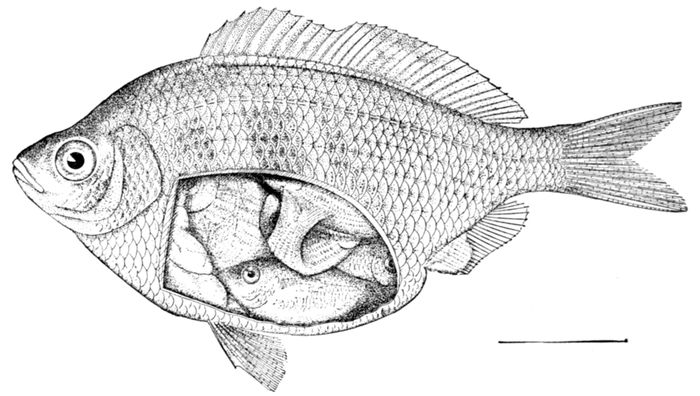
Fig. 306.—White Surf-fish, viviparous, with young, Cymatogaster aggregatus Gibbons. San Francisco.
373
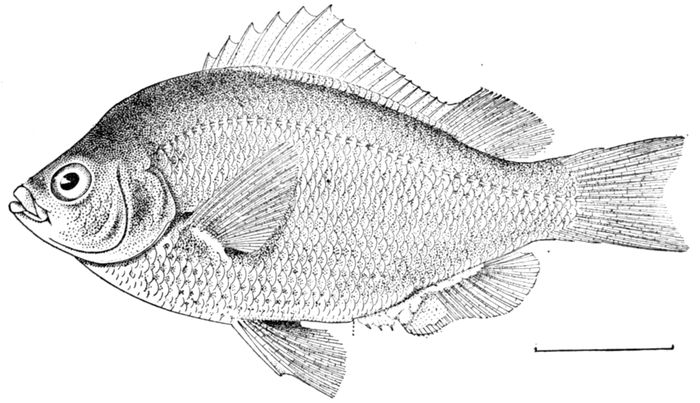
Fig. 307.—Fresh-water Viviparous Perch, Hysterocarpus traski Gibbons. Sacramento River.
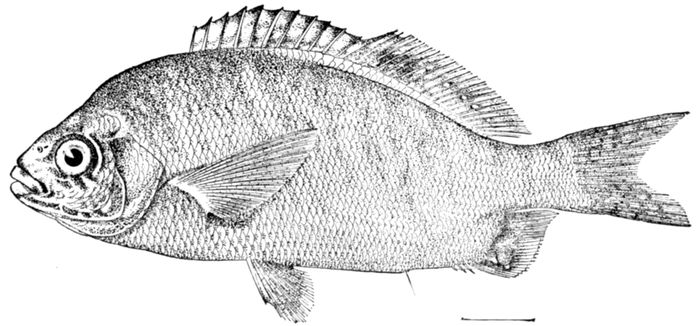
Fig. 308.—Hypsurus caryi (Agassiz). Monterey.
The Embiotocidæ.—The group contains a single family, the
Embiotocidæ, or surf-fishes. All but two of the species are confined
to California, these two living in Japan. The species are relatively
small fishes, from five inches to eighteen inches in length,
with rather large, usually silvery scales, small mouths and
small teeth. They feed mainly on crustaceans, two or three
species being herbivorous. With two exceptions, they inhabit
the shallow waters on sandy beaches, where they bring forth
their young. They can be readily taken in nets in the surf.
374As food-fishes they are rather inferior, the flesh being somewhat
watery and with little flavor. Many are dried by the
Chinese. The two exceptions in distribution are Hysterocarpus
traski, which lives exclusively in fresh waters, being confined
to the lowlands of the Sacramento Basin, and Zalembius
rosaceus, which descends to considerable depths in the sea. In
Hysterocarpus the spinous dorsal is very greatly developed,
seventeen stout spines being present, the others having but
eight to eleven and these very slender.
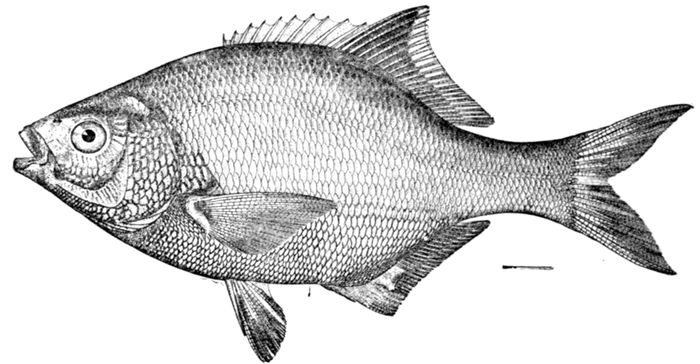
Fig. 309.—White Surf-fish, Damalichthys argyrosomus (Girard). British Columbia.
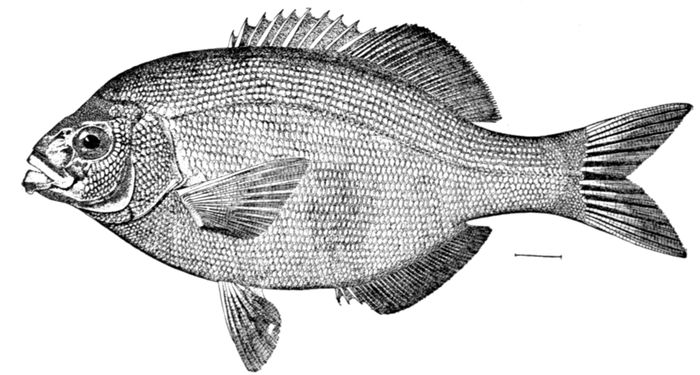
Fig. 310.—Thick-lipped Surf-fish, Rhacochilus toxotes Agassiz. Monterey, Cal.
375
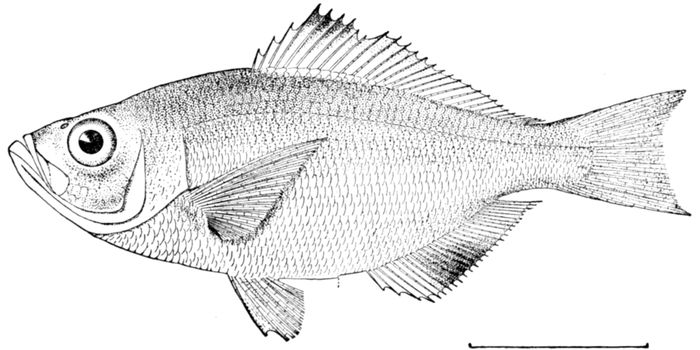
Fig. 311.—Silver Surf-fish (viviparous), Hypocritichthys analis (Agassiz). Monterey.
The details of structure vary greatly among the different
species, for which reason almost every species has been properly
made the type of a distinct genus. The two species
found in Japan are Ditrema temmincki and Neoditrema ransonneti.
In the latter species the female is always toothless.
Close to Ditrema is the blue surf-fish of California, Embiotoca
jacksoni, the first discovered and perhaps the commonest
species. Tæniotoca lateralis is remarkable for its bright coloration,
greenish, with orange stripes. Hypsurus caryi, still brighter
in color, orange, green and black, has the abdominal region
very long. Phanerodon furcatus and P. atripes are dull silvery
in color, as in Damalichthys argyrosomus, the white surf-fish,
which ranges northward to Vancouver Island, and is remarkable
for the extraordinary size of its lower pharyngeals. Holconotus
rhodoterus is a large, rosy species, and Amphistichus
argenteus a large species with dull yellowish cross-bands.
Rhachochilus toxotes is the largest species in the family and the
one most valued as food. It is notable for its thick, drooping,
ragged lips. Hyperprosopon arcuatus, the wall-eye surf-fish,
is brilliantly silvery, with very large eyes. H. agassizi
closely resembles it, as does also the dwarf species, Hypocritichthys
analis, to which the Japanese Neoditrema ransonneti is
very nearly related. The other species are all small. Abeona
minima and A. aurora feed on seaweed. Brachyistius frenatus
is the smallest of all, orange-red in color, while its relative,
376Zalembius rosaceus, is handsomest of all, rose-red with a black
lateral spot. Cymatogaster aggregatus, the surf-shiner, is a
little fish, excessively common along the California coast, and
from its abundance it has been selected by Dr. Eigenmann
as the basis of his studies of these fishes. In this species the
male shows golden and black markings, which are wanting in
the silvery female, and the anterior rays of the anal are thickened
or otherwise modified.
No fossil embiotocoids are recorded.
The viviparity of the Embiotocidæ was first made known
by Dr. A. C. Jackson in 1863 in a letter to Professor Agassiz.
From this letter we make the following extracts:
"A few days, perhaps a week, after the four trials, and on
the 7th of June, I rose early in the morning for the purpose of
taking a mess of fish for breakfast, pulled to the usual place,
baited with crabs, and commenced fishing, the wind blowing
too strong for profitable angling; nevertheless on the first and
second casts I fastened the two fishes, male and female, that
I write about, and such were their liveliness and strength that
they endangered my slight trout rod. I, however, succeeded
in bagging both, though in half an hour's subsequent work I
got not even a nibble from either this or any other species of
fish. I determined to change the bait, to put upon my hook
a portion of the fish already caught, and cut for that purpose
into the larger of the two fish caught. I intended to take a piece
from the thin part of the belly, when what was my surprise
to see coming from the opening thus made a small live fish.
This I at first supposed to be prey which this fish had
swallowed, but on further opening the fish I was vastly astonished
to find next to the back of the fish and slightly attached
to it a long very light violet bag, so clear and so transparent that I
could already distinguish through it the shape, color, and formation
of a multitude of small fish (all facsimiles of each other),
with which it was well filled. I took it on board (we were
occupying a small vessel which we had purchased for surveying
purposes). When I opened the bag, I took therefrom eighteen
more of the young fish, precisely like in size, shape, and color
the first I had accidentally extracted. The mother was very
large round her center and of a very dark-brown color, approaching
377about the back and on the fins a black color, and a
remarkably vigorous fish. The young which I took from her
were in shape, save as to rotundity, perfect miniatures of the
mother, formed like her, and of the same general proportions,
except that the old one was (probably owing to her pregnancy)
much broader and wider between the top of the dorsal and the
ventral fins in proportion to her length than the young were.
As to color, they were in all respects like the mother, though the
shades were many degrees lighter. Indeed, they were in all
respects like their mother and like each other, the same peculiar
mouth, the same position and shape of the fins, and the
same eyes and gills, and there cannot remain in the mind of
any one who sees the fish in the same state that I did a single
doubt that these young were the offspring of the fish from whose
body I took them, and that this species of fish gives birth to her
young alive and perfectly formed, and adapted to seeking its own
livelihood in the water. The number of young in the bag was
nineteen (I fear I misstated the number in my former letter),
and every one as brisk and lively and as much at home in a bucket
of salt water as if they had been for months accustomed to the
water. The male fish that was caught was not quite as large
as the female, either in length or circumference, and altogether
a more slim fish. I think we may reasonably expect to receive
the specimens by the first of December. But I can hardly
hope to get satisfactory specimens of the fish as I found it, with
young well grown, before the return of the same season, viz.,
June. By that time I trust the facts will be fully decided,
and the results, as important as they may be, fully appreciated."
Dr. Jackson's specimens came from Sausalito Bay, near
San Francisco. Soon after the publication of this letter a
similar discovery was made independently by Dr. William P.
Gibbons, of Alameda. Still other specimens were made known
in 1854 by Dr. Charles Girard, these having been collected in
connection with the United States Pacific Railroad Surveys.
The species first examined by Dr. Jackson was named by Agassiz
Embiotoca jacksoni.
In Professor Agassiz's comments on Dr. Jackson's discovery
he makes the following observations (Amer. Jour. Science and
Arts, 1854):
378"The female genital apparatus in the state of pregnancy
consists of a large bag the appearance of which in the living
animal has been described by Mr. Jackson. Upon the surface
of it large vascular ramifications are seen, and it is subdivided
internally into a number of distinct pouches, opening by wide
slits into the lower part of the sac. This sac seems to be nothing
but the widened lower end of the ovary, and the pouches
within it to be formed by the folds of the ovary itself. In each
of these pouches a young is wrapped up as in a sheet, and all
are packed in the most economical manner as far as saving
space is concerned, some having their head turned forwards
and others backwards. This is, therefore, a normal ovarian
gestation. The external genital opening is situated behind the
anus, upon the summit and in the center of a conical protuberance
formed by a powerful sphincter, kept in its place by
two strong transverse muscles attached to the abdominal walls.
The number of young contained in this sac seems to vary. Mr.
Jackson counted nineteen; I have seen only eight or nine in
the specimens sent by Mr. Cary, but since these were open when
received it is possible that some had been taken out. However,
their size is most remarkable in proportion to the mother.
In a specimen of Emb. jacksoni 10½ inches long and 4½ high
the young were nearly 3 inches long and 1 inch high; and in
an Emb. caryi 8 inches long and 3¼ high the young were
2¾ inches long and ⅞ of an inch high. Judging from their size, I
suspected for some time that the young could move in and
out of this sac like young opossums, but on carefully examining
the position of the young in the pouches, and also the
contracted condition of the sphincter at the external orifice
of the sexual organs, I remained satisfied that this could not be
the case, and that the young which Mr. Jackson found so lively
after putting them in a bucket of salt water had then for the
first time come into free contact with the element in which they
were soon to live; but at the same time it can hardly be doubted
that the water penetrates into the marsupial sac, since these
young have fully developed gills. The size of the young compared
with that of the mother is very remarkable, being full one-third
its length in the one, and nearly so in the other species.
Indeed these young Embiotocæ, not yet hatched, are three or
379four times larger than the young of a Pomotis (of the same
size) a full year old. In this respect these fishes differ from all
the other viviparous species known to us. There is another
feature about them of considerable interest, that while the two
adults differ markedly in coloration, the young have the same
dress, light yellowish olive with deeper and brighter transverse
bands, something like the young trout and salmon in their parr
dress."
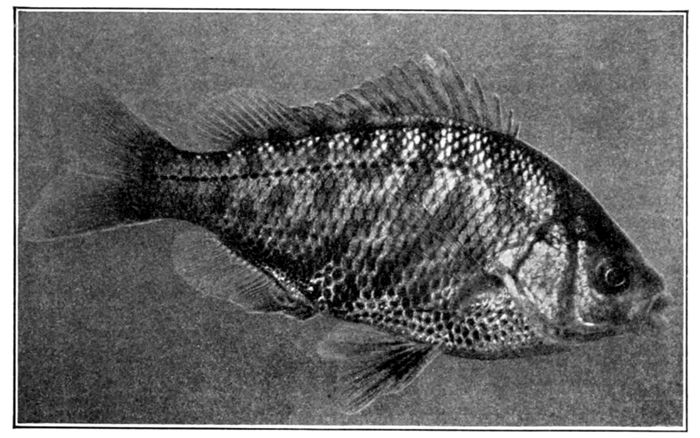
Fig. 312.—Viviparous Perch (male), Hysterocarpus traski Gibbons. Battle Creek, Sacramento River. (Photograph by Cloudsley Rutter.)
380
CHAPTER XXII
CHROMIDES AND PHARYNGOGNATHI
Suborder Chromides.—The suborder Chromides contains
spiny-rayed fishes similar to the perch-like
forms in most regards, but strikingly distinguished
by the complete union of the lower pharyngeal bones, as in the
Holconoti and Pharyngognathi, and still more remarkably by
the presence of but one nasal opening on each side. In all the
perch-like fishes and in nearly all others there are two nasal
openings or nostrils on each side, these two entering into the
same nasal sac. In all the Chromides the lateral line is incomplete
or interrupted, and the scales are usually large and ctenoid.
The Cichlidæ.—The suborder Chromides includes two families,
Cichlidæ, and Pomacentridæ. The Cichlidæ are fresh-water
fishes of the tropics, characterized by the presence of three to
ten spines in the anal fin. In size, color, appearance, habits,
and food value they bear a striking resemblance to the fresh-water
sunfishes, or Centrarchidæ, of the eastern United States.
This resemblance is one of analogy only, for in structure the
Cichlidæ have no more in common with the Centrarchidæ than
with other families of perch or bass. The numerous species
of Cichlidæ are confined to tropical America and to corresponding
districts in Africa and western Asia. Tilapia nilotica
abounds in the Nile. Tilapia galilæa is found in the river
Jordan and the Lake of Galilee. This species is supposed to
form part of the great draught of fishes recorded in the Gospels,
and a black spot on the side is held to commemorate the touch
of Simon Peter. Numerous other species of Cichlidæ, large and
small, abound in central Africa, even in the salt ditches of the
Sahara.
The species of Cichla, especially Cichla ocellaris, of the rivers
of South America, elongate and large-mouthed, bear a strong
381analogy to the black bass of farther north. A vast number
of species belonging to Heros, Acara, Cichlasoma, Geophagus,
Chætobranchus, and related genera swarm in the Amazon region.
Each of the large rivers of Mexico has one or more species; one
of these, Heros cyanoguttatus, occurs in the Rio Grande and the
rivers of southern Texas, its range corresponding with that of
Tetragonopterus argentatus, just as the range of the whole family
of Cichlidæ corresponds with that of the Characinidæ. No other
species of either family enters the United States. A similar
species, Heros tetracanthus, abounds in the rivers of Cuba, and
another, Heros beani, called the mojarra verde, in the streams
of Sinaloa. In the lakes and swamps of Central America Cichlidæ
and Characinidæ are very abundant. One fossil genus is
known, called Priscacara by Cope. Priscacara clivosa and
other species occur in the Eocene of Green River and the Great
Basin of Utah. In this genus vomerine teeth are said to be
present, and there are three anal spines. None of the living
Cichlidæ have vomerine teeth.
382
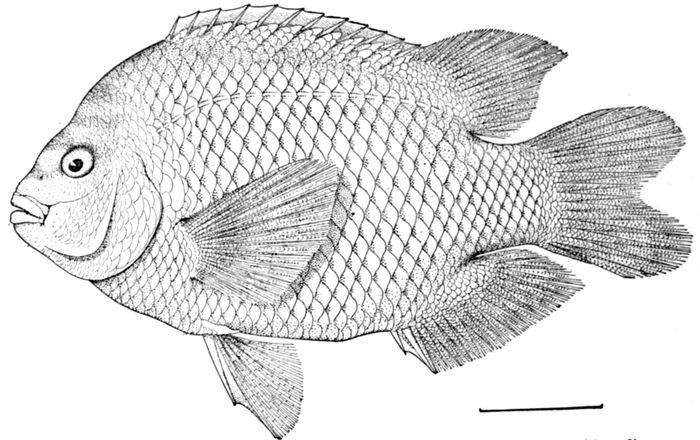
Fig. 313.—Garibaldi (scarlet in color), Hypsypops rubicunda (Girard). La Jolla, San Diego, Cal.
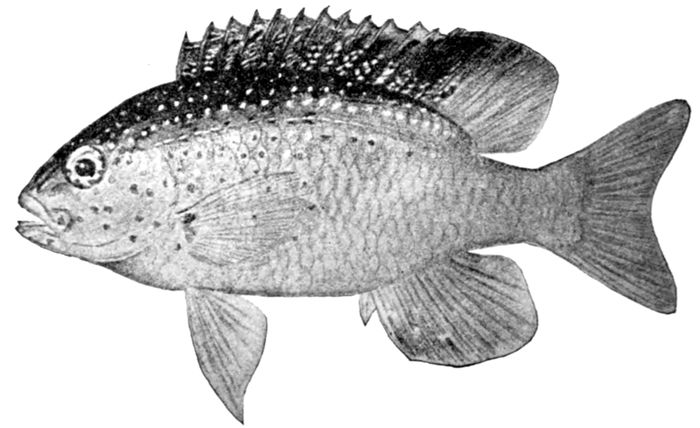
Fig. 314.—Pomacentrus leucostictus (Müller & Troschel), Damsel-fish. Family Pomacentridæ.
The Damsel-fishes: Pomacentridæ.—The Pomacentridæ, called
rock-pilots or damsel-fishes, are exclusively marine and have in
all cases but two anal spines. The species are often very brilliantly
colored, lustrous metallic blue and orange or scarlet
being the prevailing shades among the bright-colored species.
Their habits in the reef pools correspond very closely with those
of the Chætodontidæ. With the rock-pilots, as with the butterfly-fishes,
the exceeding alertness and quickness of movement make
up for lack of protective colors. With both groups the choice
of rocky basins, crevices in the coral, and holes in coral reefs
preserves them from attacks of enemies large enough to destroy
them. In Samoa the interstices in masses of living coral are
often filled with these gorgeous little fishes. The Pomacentridæ
are chiefly confined to the coral reefs, few ranging to the northward
of the Tropic of Cancer. Sometimes the young are colored
differently from the adult, having sky-blue spots and often
ocelli on the fins, which disappear with age. But one species
Chromis chromis, is found in the Mediterranean. Chromis
punctipinnis, the blacksmith, is found in southern California,
and Chromis notatus is the common dogoro of Japan. One of
the largest species, reaching the length of a foot, is the Garibaldi,
Hypsypops rubicundus, of the rocky shores of southern
California. This fish, when full grown, is of a pure bright
scarlet. The young are greenish, marked with blue spots.
Species of Pomacentrus, locally known as pescado azul, abound
383in the West Indies and on the west coast of Mexico. Pomacentrus
fuscus is the commonest West Indian species, and Pomacentrus
rectifrenum the most abundant on the west coast of Mexico,
the young, of an exquisite sky-blue, crowding the rock pools.
Pomacentrus of many species, blue, scarlet, black, and golden,
abound in Polynesia, and no rock pool in the East Indies is
without several forms of this type. The type reaches its greatest
development in the south seas. About forty different species of
Pomacentrus and Glyphisodon occur in the corals of the harbor
of Apia in Samoa.
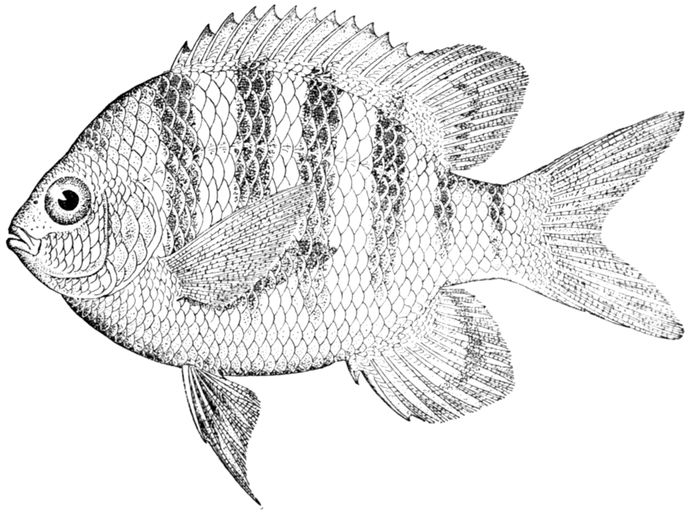
Fig. 315.—Cockeye Pilot, Glyphisodon marginatus (Bloch). Cuba.
Almost equally abundant are the species of Glyphisodon. The
"cockeye pilot," or jaqueta, Glyphisodon marginatus, green with
black bands, swarms in the West Indies, occasionally ranging
northward, and is equally common on the west coast of Mexico.
Glyphisodon abdominalis replaces it in Hawaii, and the Asiatic
Glyphisodon saxatilis is perhaps the parent of both. Glyphisodon
sordidus banded with pale and with a black ocellus below the
soft dorsal is very common from Hawaii to the Red Sea, and is
a food-fish of some importance. Glyphisodon cœlestinus blue,
with black bands, abounds in the south seas.
384The many species of Amphiprion are always brilliant, red
or orange, usually marked by one or two cross-bands of creamy
blue. Amphiprion melanopus abounds in the south seas.
Azurina hirundo is a slender species of lower California of a
brilliant metallic blue. All these species are carnivorous, feeding
on shrimps, worms, and the like.
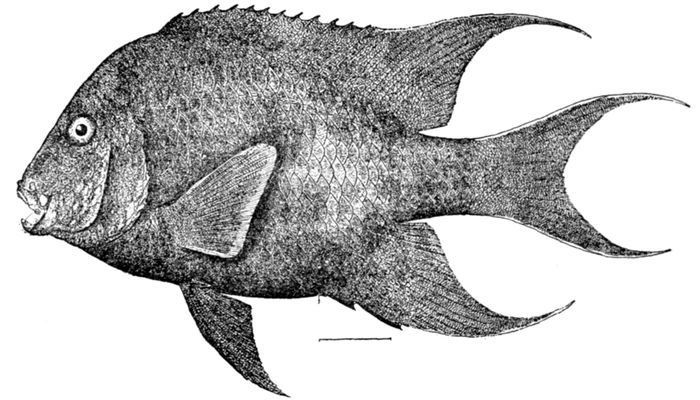
Fig. 316.—Indigo Damsel fish, Microspathodon dorsalis (Gill). Mazatlan, Mex.
Microspathodon is herbivorous, the serrated incisors being
loosely implanted in the jaws. Microspathodon dorsalis, of the
west coast of Mexico, is of a deep indigo-blue color, with streamer-like
fins. Microspathodon chrysurus, of the West Indian coral
reefs, black with round blue spots and the tail yellow. This
family is probably of recent origin, as few fossils are referred
to it. Odonteus pygmæus of the Eocene perhaps belongs to it.
Suborder Pharyngognathi.—The wrasses and parrot-fishes, constituting
the group called Pharyngognathi (φαρύγξ, gullet; γνάθος,
jaw), by Johannes Müller, have the lower pharyngeal bones
much enlarged and solidly united, their teeth being either
rounded or else flat and paved. The nostrils, ventral fins,
pectoral fins and shoulder-girdle are of the ordinary perch-like
type. The teeth are, however, highly specialized, usually
large and canine-like, developed in the jaws only, and the gills
are reduced in number, 3½ instead of 4, with no slit behind the
last half gill. The scales are always cycloid and are usually large.
In the tropical forms the vertebræ are always twenty-four in
385number (10 + 14), but in northern forms the number is largely
increased with a proportionate increase in the number and
strength of the dorsal spines. All the species are strictly marine,
and the coloration is often the most highly specialized and
brilliant known among fishes, the predominant shade being
blue.

Fig. 317.—Tautog, Tautoga onitis (L.). Wood's Hole, Mass.
All are carnivorous, feeding mainly on crustaceans and
snails, which they crush with their strong teeth, there being
often a strong canine at the posterior end of the premaxillary,
which holds the snail while the lower jaw acts upon it. The
species are very numerous and form the most conspicuous
feature in the fish markets of every tropical port. They abound
especially in the pools and openings in the coral reefs. All are
good for food, though all are relatively flavorless, the flesh
being rather soft and not oily.
The Wrasse Fishes: Labridæ.—The principal family is that of
the Labridæ, characterized by the presence of separate teeth
in the front of the jaws. Numerous fossil species are known
from the Eocene and Miocene. Most of these are known only
from the lower pharyngeal bones. Labrodon is the most widely
diffused genus, probably allied to Labrus, but with a pile of
successional teeth beneath each functional tooth. The species
are mostly from the Miocene.
386
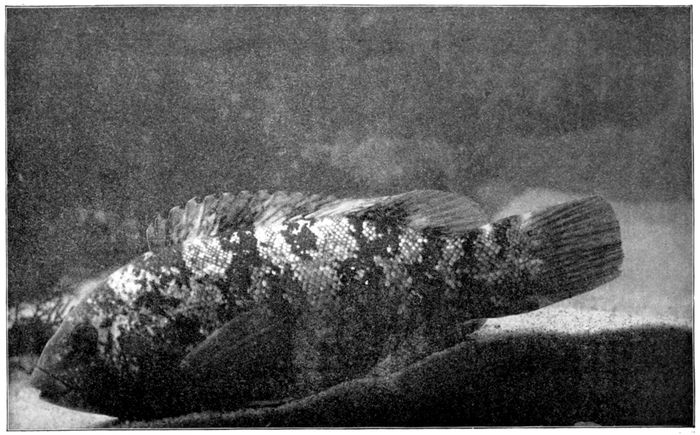
Fig. 318.—Tautog, Tautoga onitis (L.). (From life by Dr. R. W. Shufeldt.)
387The northern forms of Labridæ are known as wrasse on the
coasts of England. Among these are Labrus bergylta, the ballan
wrasse; Labrus viridis, the green wrasse; Labrus ossiphagus,
the red wrasse; and Labrus merula, the black wrasse. Acantholabrus
palloni and Centrolabrus exoletus have more than
three anal spines. The latter species, known as rock cook, is
abundant in western Norway, as far north as Throndhjem, its
range extending to the northward beyond that of any other
Labroid. Allied to these, on the American coast, is the tautog
or blackfish, Tautoga onitis, a common food-fish, dusky in
color with excellent white flesh, especially abundant on the
coast of New England. With this, and still more abundant, is
the cunner or chogset, Tautogolabrus adspersus, greenish-blue
in color, the flesh being also more or less blue. This fish is
too small to have much value as food, but it readily takes the
hook set for better fishes.
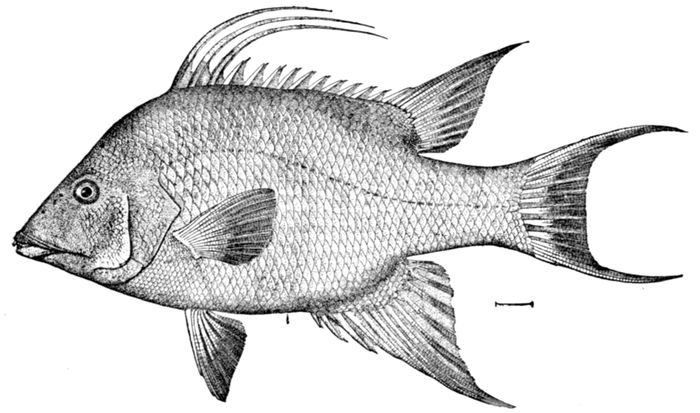
Fig. 319.—Capitaine or Hogfish, Lachnolaimus falcatus. Florida.
In the Mediterranean are found many species of Crenilabrus,
gaily colored, each species having its own peculiar pattern and
its own arrangement of inky spots. Among these are Crenilabrus
mediterraneus, Crenilabrus pavo, and Crenilabrus griseus.
With these are the small species called Ctenolabrus rupestris,
the goldsinny, much like the American cunner, and the long-nosed
Symphodus scina.
Of the many West Indian species we may notice the Capitaine
388or hogfish, Lachnolaimus maximus, a great fish, crimson
in color, with its fin spines ending in long streamers; Bodianus
rufus, the Spanish ladyfish or pudiano, half crimson, half
golden. Halichæres radiatus, the pudding-wife (a mysterious
word derived from "oldwife" and the Portuguese name, pudiano),
a blue fish handsomely mottled and streaked. Of the
smaller species, Clepticus parræ, the janissary, with very small
teeth, Halichœres bivittatus, the slippery-dick, ranging northward
to Cape Hatteras, and Doratonotus megalepis, of an intense
grass-green color, are among the most notable. The razor-fish,
Xyrichthys psittacus, red, with the forehead compressed
to a sharp edge, is found in the Mediterranean as well as throughout
the West Indies, where several other species of razor-fish
also occur.
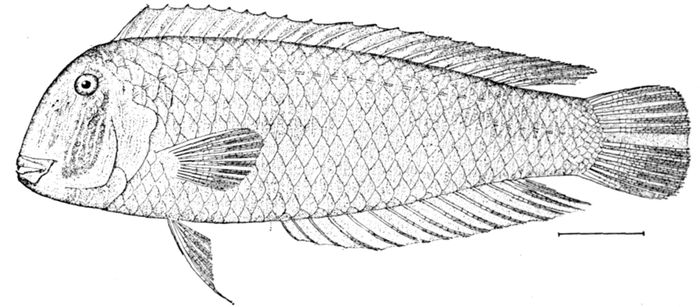
Fig. 320.—Razor-fish, Xyrichthys psittacus (Linnæus). Tortugas, Fla.
389
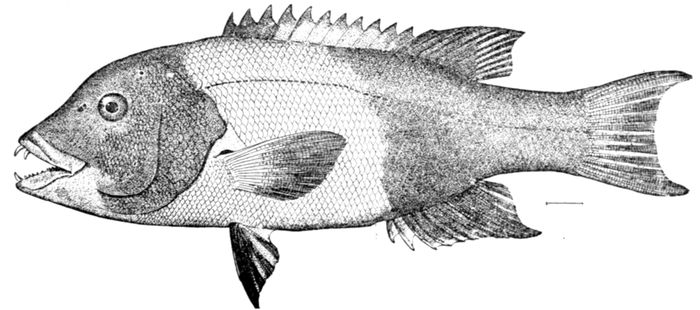
Fig. 321.—Redfish (male), Pimelometopon pulcher (Ayres). San Diego.
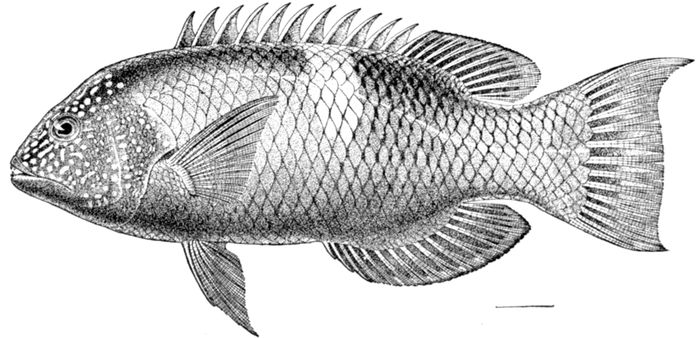
Fig. 322.—Lepidaplois perditio (Quoy & Gaimard). Wakanoura, Japan.
Scarcely less numerous are the species of the Pacific Coast
of America. Pimelometopon pulcher, the redfish or fathead of
southern California, reaches a length of two feet or more. It
abounds in the broad band of giant kelp which lines the California
coast and is a food-fish of much importance. The
female is dull crimson. In the male the head and tail are black
and on the top of the head is developed with age a great adipose
hump. A similar hump is found on the adult of several other
large labroids. Similar species on the coast of South America,
differing in color and size of scales, are Pimelometopon darwini,
Trochocopus opercularis, and Bodianus diplotænia. The señorita,
Oxyjulis californica, is a dainty cream-colored little fish
of the California coast, Halichœres semicinctus, the kelpfish,
light olive, the male with a blue shoulder bar, is found in southern
California. On the west coast of Mexico are numerous
species of Thalassoma, Halichœres, Pseudojulis, Xyrichthys
and Iniistius, all different from the corresponding species in
the West Indies, and equally different from the much greater
variety found in Hawaii and in Samoa. About the Polynesian
and West Indian islands abound a marvelous wealth of forms of
every shade and pattern of bright colors—blue, green, golden,
scarlet, crimson, purple—as if painted on with lavish hand and
often in the most gaudy pattern, although at times laid on
with the greatest delicacy. The most brilliant species belong
to Thalassoma and Julis, the most delicately colored to Stethojulis
390and Cirrhilabrus. In Gomphosus the snout is prolonged
on a long slender tube. In Cheilio the whole body is elongate.
In Iniistius the first two dorsal spines form a separate fin,
the forehead being sharp as in Xyrichthys. Other widely
distributed genera are Anampses, Lepidaplois, Semicossyphus,
Duymæria, Platyglossus, Pseudolabrus, Hologymnosus, Macropharyngodon,
Coris, Julis, Hemipteronotus, Novaculichthys,
Cheilinus, Hemigymnus, and Cymolutes. Halichœres is as abundant
in the East Indies as in the West, one of its species
Halichœres pæcilopterus being common as far north as Hakodate
in Japan. In this species as in a few others the sexes
are very different in color, although in most species no external
sexual differences of any sort appear. In the East Indian
genus, Pseudocheilinus, the eye is very greatly modified. The
cornea is thickened, forming two additional lens-like structures.
The small family of Odacidæ differs from the Labridæ in
having in each jaw a sharp cutting edge without distinct teeth
anteriorly, the pharyngeal teeth being pavement-like. The
scales are small, very much smaller than in the Scaridæ, the
body more elongate, and the structure of the teeth different.
The species are mostly Australian, Odax balteatus being the
most abundant. It is locally known as kelpfish.
In the Siphonognathidæ the teeth are much as in the Odacidæ,
but the body is very elongate, the snout produced as in the
cornet-fishes (Fistularia), and the upper jaw ends in a long skinny
appendage. Siphonognathus argyrophanes, from Australia, reaches
a length of sixteen inches.
The Parrot-fishes: Scaridæ.—The parrot-fishes, or Scaridæ, are
very similar to the Labridæ in form, color, and scales, but
differ in the more or less complete fusion of the teeth, a character
which varies in the different genera.
Of these the most primitive is Calotomus, confined to the
East Indies and Polynesia. In this genus the teeth are united
at base, their tips free and imbricated over the surface of the
jaw.
The species are dull in color, reddish or greenish. Calotomus
japonicus is the Budai or Igami of Japan. Calotomus
sandwichensis and Calotomus irradians are found in Hawaii,
and Calotomus xenodon on the off-shore islands of Mexico.
391In Calotomus the dorsal spines are slender. In Scaridea (balia)
of the Hawaiian Islands the first dorsal is formed of pungent
spines as in Sparisoma.
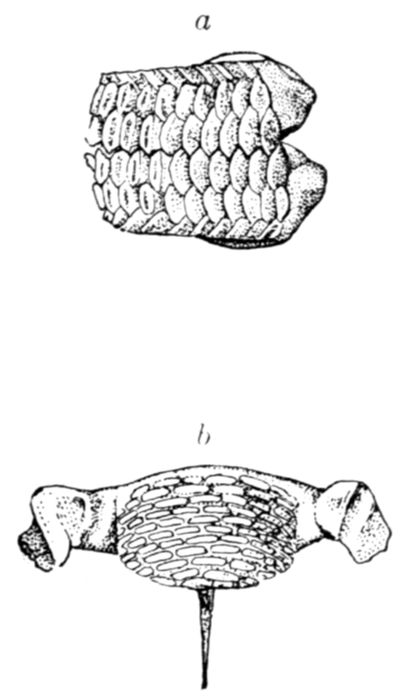
Fig. 323.—Pharyngeals of Italian Parrot-fish, Sparisoma cretense (L.). a, upper; b, lower.
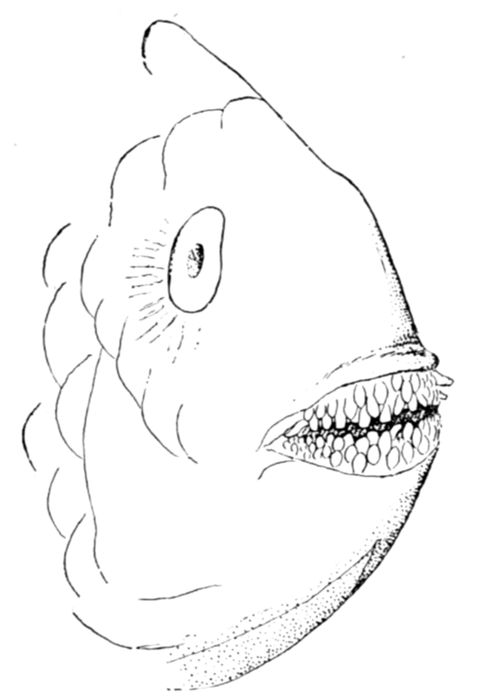
Fig. 324.—Jaws of a Parrot-fish, Calotomus xenodon Gilbert.
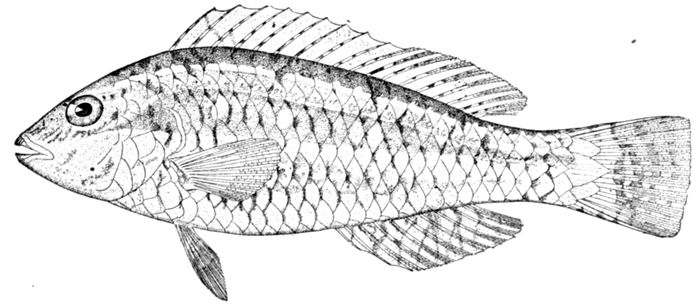
Fig. 325.—Cryptotomus beryllinus Jordan & Swain. Key West, Florida.
Cryptotomus of the Atlantic is also a transitional group
having the general characters of Sparisoma, but the anterior
teeth more separate. The several species are all small and
characteristic of the West Indian fauna, one species, Cryptotomus
beryllinus, ranging northward to Long Island.
392
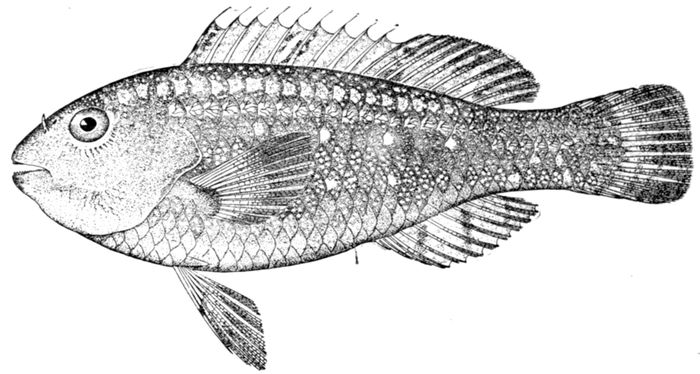
Fig. 326.—Sparisoma hoplomystax (Cope). Key West.
In the large genus Sparisoma the teeth are more completely
joined. In this group, which is found only in the tropical
Atlantic, the lower pharyngeals are broader than long and
hexagonal. The teeth of the jaws are not completely united,
the dorsal spines are pungent, the lateral line not interrupted,
and the gill membranes broadly united to the isthmus.
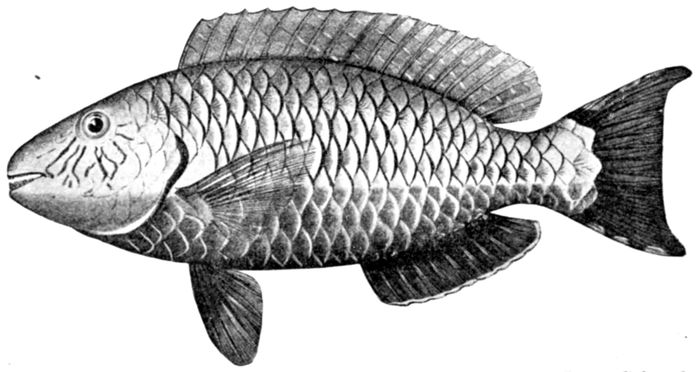
Fig. 327.—Sparisoma abildgaardi (Bloch), Red Parrot-fish. Loro, Colorado. Family Scaridæ.
Of the numerous species the dull-colored Sparisoma flavescens
is most abundant in the West Indies and ranges farther
north than any other. Sparisoma cretense, the Scarus of the
393ancients, is found in the Mediterranean, being the only member
of the family known in Europe and the only Sparisoma known
from outside the West Indian fauna.
Other West Indian species are the red parrot-fish, Sparisoma
abildgaardi, Sparisoma xystrodon, Sparisoma hoplomystax, the
last two being small species about the Florida Keys, and the
handsome Sparisoma viride from the West Indies.
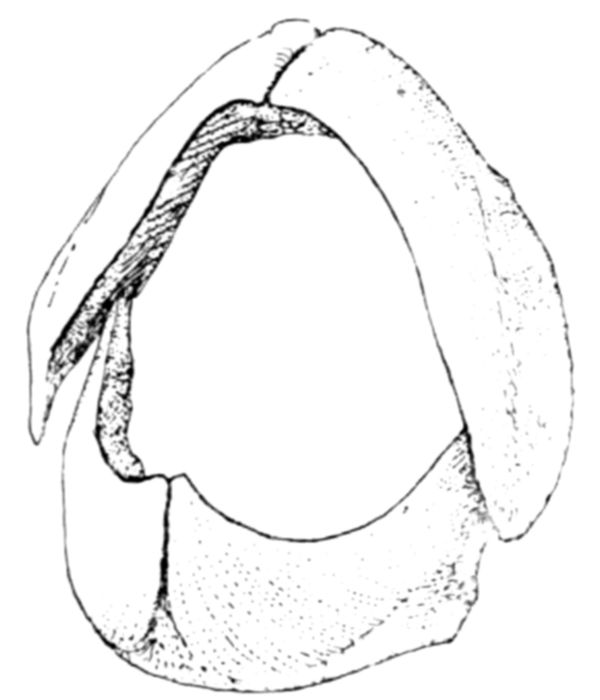
Fig. 328.—Jaws of Blue Parrot-fish, Scarus cæruleus (Bloch).
Scarus is the great central genus of parrot-fishes. Its members
are especially abundant in Polynesia and the East Indies,
the center of distribution of the group,
although some extend their range to
western Mexico, Japan, the Red Sea, and
Australia, and a large number are found
in the West Indies. Most of them are
fishes of large size, but a few, as the West
Indian Scarus croicensis, reach the length
of less than a foot, and other still smaller
species (Scarus evermanni, Scarus bollmani)
are found only in water of considerable
depth (200 fathoms).

Fig. 329.—Upper pharyngeals of an Indian Parrot-fish, Scarus strongylocephalus.
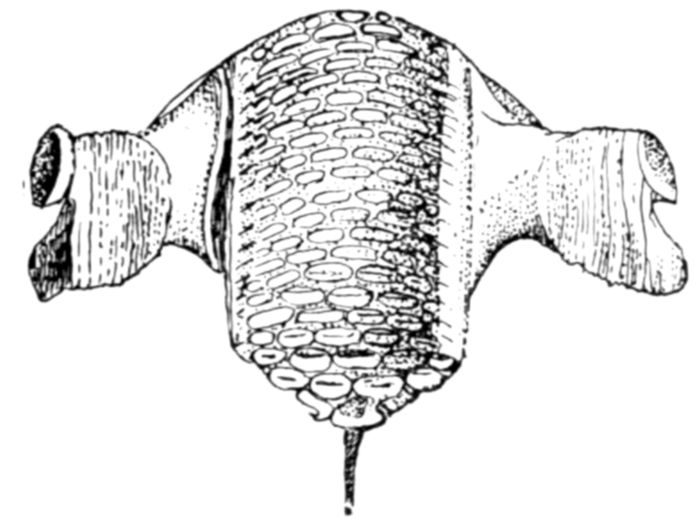
Fig. 330.—Lower pharyngeals of a Parrot-fish, Scarus strongylocephalus (Bleeker).
394
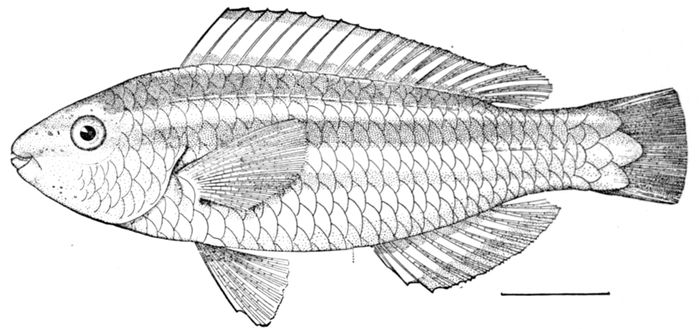
Fig. 331.—Scarus emblematicus Jordan & Rutter. Jamaica.
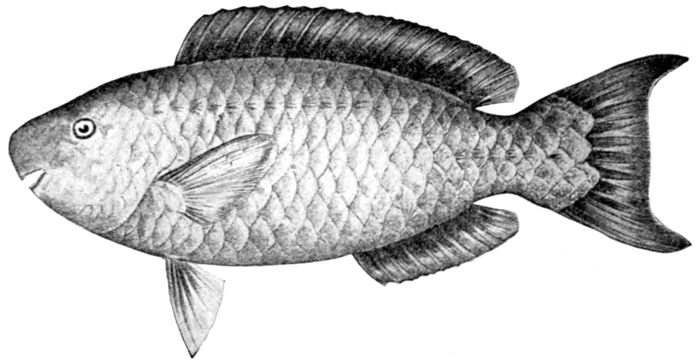
Fig. 332.—Scarus cœruleus (Bloch). Blue Parrot-fish. Loro, Azul. Family Scaridæ.
The genus Scarus is characterized by
not only the almost complete fusion of its
teeth, but by numerous other characters.
Its lower pharyngeals are oblong and spoon-shaped, the teeth
appearing as a mosaic on the concave surface. The gill-membranes
are scarcely united to the narrow isthmus, the lateral
line is interrupted, the dorsal spines are flexible, and there
are but few scales on the head. These, as well as the scales
of the body, are always large. The most highly specialized
of its species have the teeth deep blue in color, a character
which marks the genus or subgenus Pseudoscarus. Of the species
of this type, the loro, Pseudoscarus cœlestinus, and the more
abundant guacamaia, Pseudoscarus guacamaia (fig. 215 vol. I) of
the West Indies, are characteristic forms. The perrico, Pseudoscarus
perrico of the west coast of Mexico, and the great blue
parrot-fish, or galo, of Hawaii and Samoa, Pseudoscarus jordani,
belong to this type. Pseudoscarus jordani was formerly tabu
to the king in Hawaii, and its brilliant colors and toothsome
flesh (when eaten raw) made it the most highly valued fish
at the royal banquets of old Hawaii. It still sells readily at a
dollar or more per pound. To this type belong also the blue
parrot-fish, Pseudoscarus ovifrons, of Japan. In the restricted
genus Scarus proper the teeth are pale. The great blue parrot-fish,
of the West Indies, Scarus cœruleus, belongs to this
group. This species, deep blue in color, reaches a large size,
and the adult has a large fleshy hump on the forehead.
Lesser parrot-fish with pale teeth and with showy coloration
are the West Indian species Scarus tæniopterus, Scarus vetula,
Scarus croicensis, etc.
395
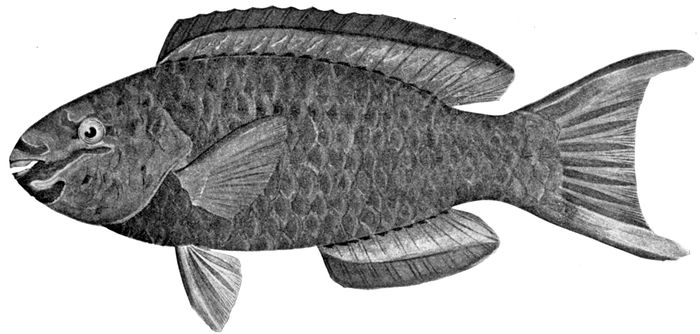
Fig. 333.—Scarus vetula Bloch & Schneider, Parrot-fish. Family Scaridæ.
396
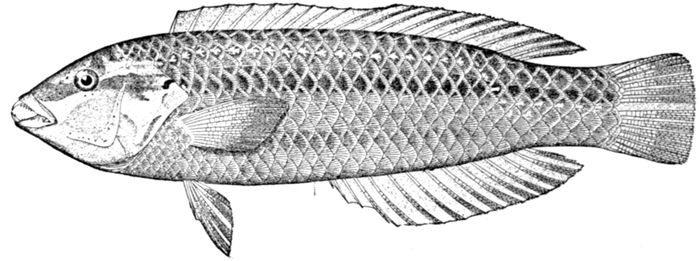
Fig. 334.—Slippery-dick or Doncella, Halichœres bivittatus (Bloch), a fish of the coral reefs. Key West. Family Labridæ.
Very many species of both Scarus and Pseudoscarus, green,
blue, red-brown, or variegated, abound about the coral reefs
of Polynesia. About twenty-five species occur in Samoa.
Pseudoscarus latax and P. ultramarinus being large and
showy species, chiefly blue. Pseudoscarus prasiognathus is
deep red with the jaws bright blue.
Fossil species referred to Scarus but belonging rather to Sparisoma
are found in the later Tertiary. The genera Phyllodus,
Egertonia, and Paraphyllodus of the Eocene perhaps form a
transition from Labridæ to Scaridæ. In Paraphyllodus medius
the three median teeth of the lower pharyngeals are greatly
widened, extending across the surface of the bone.
397
CHAPTER XXIII
THE SQUAMIPINNES
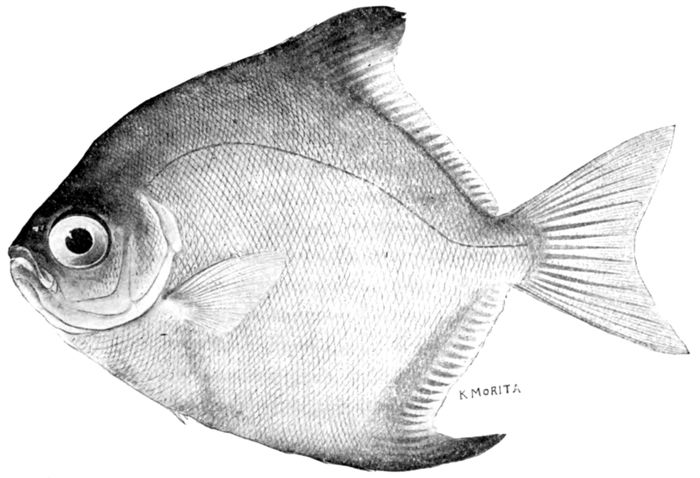
Fig. 335.—Monodactylus argenteus (Linnæus). From Apia, Samoa. Family Scorpididæ.
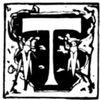
The Squamipinnes.—Very closely allied to the Percomorphi
is the great group called Squamipinnes
(squama, scale; pinna, fin) by Cuvier and Epelasmia
by Cope. With a general agreement with the Percomorphi, it
is distinguished by the more or less complete soldering of the
post-temporal with the cranium. In the more specialized
forms we find also a soldering of the elements of the upper
jaw, and a progressive reduction in the size of the gill-opening.
The ventral fin retains its thoracic insertion, and, as in the
perch mackerel-like forms, it has one spine and five rays, never
any more. The ventral fins are occasionally lost in the adult,
398as in the Stromateidæ, or they may lose part of their rays. The
name Squamipinnes refers to the scaly fins, the typical species
having the soft rays of dorsal, anal, and caudal, and sometimes
of other fins densely covered with small scales. In various
aberrant forms these scales are absent. The name Epelasmia
(ἔπι, above; ἐλάσμος, plate) refers to the thin upper pharyngeals
characteristic of certain forms. The transition from
this group to the Sclerodermi is very clear and very gradual.
The Squamipinnes, Sclerodermi, Ostracodermi, and Gymnodontes
form a continuous degenerating series. On the other hand the
less specialized Squamipinnes approach very closely to forms
already considered. The Antigoniidæ are of uncertain affinities,
possibly derived from such forms as Histiopteridæ, while Platax
show considerable resemblance to scaly-finned fishes like the
Kyphosidæ and Stromateidæ. The Scorpididæ seem intermediate
between Stromateidæ and Platacidæ. In such offshoots from
Scombroidei or Percoidei the group doubtless had its origin.
We may begin the series with some forms which are of
doubtful affinity and more or less intermediate between the
Squamipinnes and the more primitive Percomorphi.
The Scorpididæ.—This family has the general appearance of
Platax and Ilarches, but the teeth are not brush-like, and the
post-temporal is free from the skull as in perch-like fishes. The
species inhabit the Pacific. Scorpis georgianus is a food-fish of
Australia, with the body oblong. Monodactylus argenteus, the
toto of Samoa, is almost orbicular in form, while Psettus sebæ is
twice as deep as long, the deepest-bodied of all fishes in proportion
to its length.
The Boarfishes: Antigoniidæ.—The boarfishes (Antigoniidæ) are
characterized by a very deep body covered with rough scales,
the post-temporal, as in the Chætodontidæ and the Zeidæ, being
adnate to the skull.
399
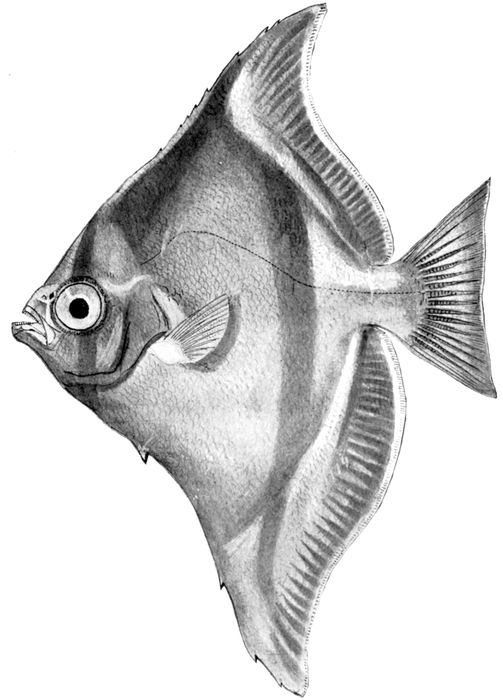
Fig. 336.—Psettus sebæ Cuv. & Val. East Indies.
400These fishes bear some resemblance to Zeus, but there is no
evidence of close affinity nor is it clear that they are related to
the Chætodontidæ. Capros aper, the boarfish, is common in
southern Europe, reaching a length of less than a foot, the
protractile mouth suggesting that of a pig. The diamond-fishes,
Antigonia, are deeper than long and strongly compressed,
the body being covered with roughish scales. The color is
salmon-red and the species live just below the depths ordinarily
explored by fishermen. Antigonia capros is found at Madeira
and in the West Indies, Antigonia steindachneri about Hawaii
and in Japan, while the smaller Antigonia rubescens is abundant
in the Japanese bays at a depth reached by the dredge. An
extinct genus, Proantigonia from the Miocene is said to connect
Antigonia with Capros.
The Arches: Toxotidæ.—The archers, Toxotidæ, have the body
compressed, the snout produced, and the dorsal fin with but five
spines. The skeleton differs widely from that of Chætodon and
the family should perhaps rather find its place among the percoids.
Toxotes jaculatrix is found in the East Indies. The
name alludes to its supposed habit of catching insects by shooting
drops of water at them through its long mouth.
The Ephippidæ.—With the typical Squamipinnes, the teeth
become very slender, crowded in brush-like bands. The least
specialized family is that of Ephippidæ, characterized by the
presence of four anal spines and a recumbent spine before the
dorsal. The principal genus, Ephippus (Scatophagus), is represented
by Ephippus argus, a small, bass-like fish, spotted with
black, found in the Indian seas, and ranging northward to Formosa.
Species referred to Ephippus (Scatophagus) are recorded
from the Italian Eocene of Monte Bolca, where a species of
Toxotes has been also found.
The Spadefishes: Ilarchidæ.—In the Ilarchidæ the dorsal is
divided into two fins, the spinous part being free from scales.
In various regards the species are intermediate between ordinary
perch-like forms and the chætodonts. In these fishes the body
is very deep and, with the soft fins, closely covered with roughish
scales. In Ilarches (Ephippus), represented by Ilarches orbis
of the Indian seas, these scales are relatively large. This
species is a common food-fish from India to Formosa.
In the American genus, Chætodipterus, the scales are quite
small. The spadefish (Chætodipterus faber), sometimes called also
moonfish or angel-fish, is a large, deep-bodied fish, reaching a
length of two feet. It is rather common from Cape Cod to Cuba,
and is an excellent pan fish, with finely flavored white flesh.
The young are marked by black cross-bands which disappear
with age, and in the adult the supraoccipital crest is greatly
401thickened and the skull otherwise modified. A very similar
species, Chætodipterus zonatus, occurs on the west coast of
Mexico. Species allied to Chætodipterus are fossil in the Italian
Eocene. The Drepanidæ of the East Indies are close to the
Ilarchidæ. Drepane punctata is a large, deep-bodied fish resembling
the spadefish but with larger scales.
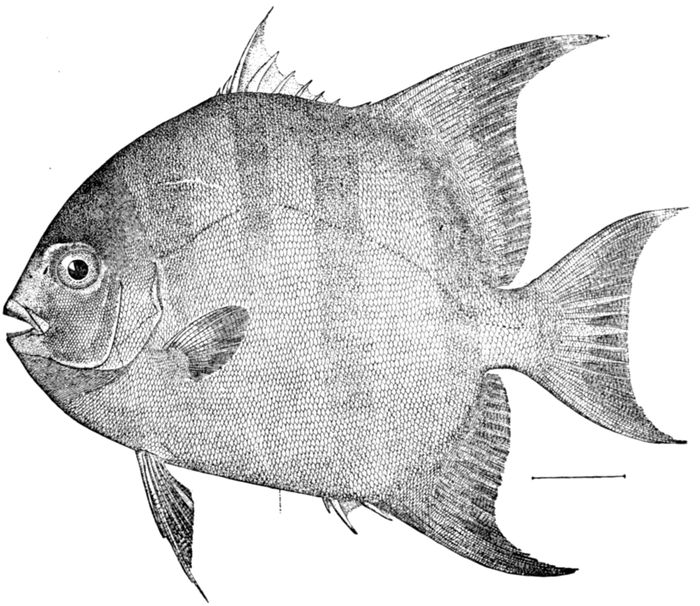
Fig. 337.—Spadefish, Chætodipterus faber (L.). Virginia.
The Platacidæ.—Closely related to the Ilarchidæ is also the
East Indian family of Platacidæ, remarkable for the very great
depth and compression of the body, which is much deeper than
long, and the highly elevated dorsal and anal still further emphasize
this peculiarity of form. In this group the few dorsal
spines are closely attached to the soft rays and the general
color is dusky. In the young the body is deeper than in the
adult and the ventral fins much more produced. The best-known
species is the tsuzume or batfish (Platax orbicularis),
which ranges from India through the warm current to northern
Japan. Platax teira, farther south, is very similar. Platax
402altissimus, with a very high dorsal, is a fossil in the Eocene of
Monte Bolca.
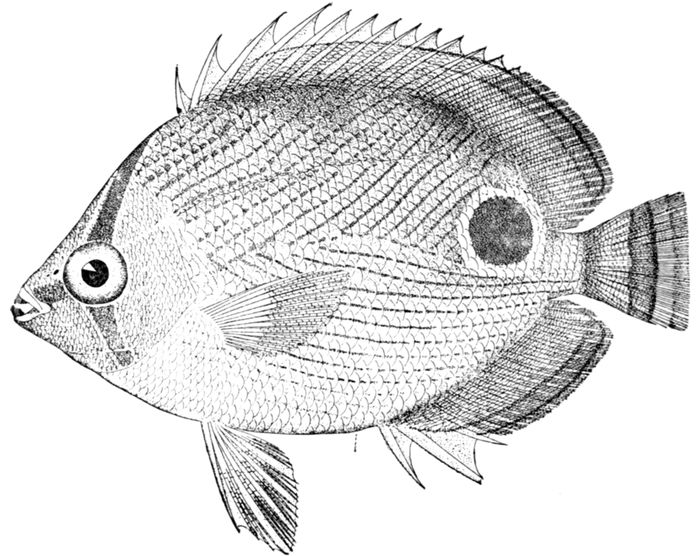
Fig. 338.—Butterfly-fish, Chætodon capistratus Linnæus. Jamaica.
The Butterfly-fishes: Chætodontidæ.—The central family of
Squamipinnes is that of the butterfly-fishes or Chætodontidæ.
In this group the teeth are distinctly brush-like, the mouth
small, the dorsal fin continuous and closely scaly, and the ventral
fins with one spine and five rays. The species are mostly
of small size and brilliant and varied coloration, yellow and
black being the leading colors. They vary considerably with
age, the young having the posterior free edges of the bones of
the head produced, forming a sort of collar. These forms have
received the name of Tholichthys, but that supposed genus
is merely the young of Chætodon. The species of Chætodontidæ
abound in rock pools and about coral reefs in clear water. They
are among the most characteristic forms of these waters and
their excessive quickness of movement compensates for their
conspicuous coloration. In these confined localities they have,
however, few enemies. The broad bodies and spinous fins make
them rather difficult for a large fish to swallow. They feed
403on small crustaceans, worms, and the like. The analogy to the
butterfly is a striking one, giving rise to the English name,
butterfly-fish, the Spanish mariposa, and the Japanese chochouwo,
all having the same meaning. Fossil chætodonts are
rather few, Chætodon pseudorhombus of the Pliocene of France,
Holocanthus microcephalus and Pomacanthus subarcuatus of the
Eocene, being the only species recorded by Zittel.

Fig. 339.—Black Angel-fish, Pomacanthus arcuatus (Linnæus). Barnegat, New Jersey.
In the principal genus, Chætodon, the colors are especially
bright. There is almost always a black bar across the eye,
and often black ocelli adorn the fins. This genus is wanting
in Europe. Chætodon capistratus, striatus, and numerous other
species are found in the West Indies; Chætodon humeralis and
nigrirostris are common on the coast of Mexico. The center
of their distribution is in Polynesia and the East Indian Archipelago.
Chætodon reticulatus, lineolatus, ulietensis, ornatissimus,
ephippion, setifer, and auriga are among the most showy
species. Numerous closely related genera are described. In
some of these the snout is prolonged into a long tube, bearing
404the jaws at its end. Of this type are Chelmo in India, Forcipiger
in Polynesia, and Prognathodes in the West Indies. Heniochus
(macrolepidotus) has one dorsal spine greatly elongated. Microcanthus
strigatus, one of the most widely distributed species, is
known by its small scales. Megaprotodon (triangularis) has four
anal spines instead of three as in the others.
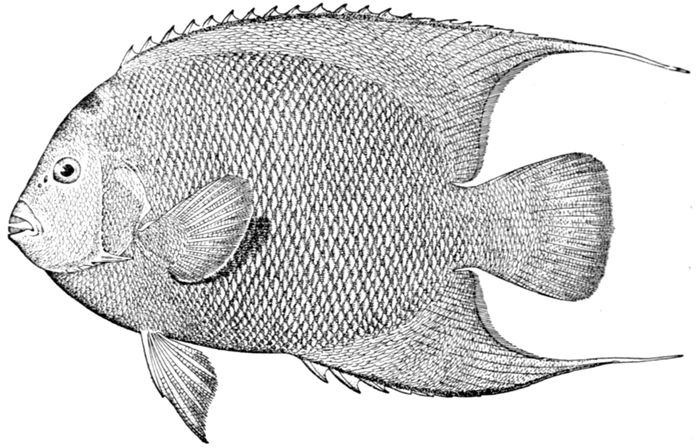
Fig. 340.—Angel-fish or Isabelita, Holacanthus ciliaris (Linnæus). Jamaica. Family Chætodontidæ.
The species of Holacanthus, known as angel-fishes, are larger
in size, and their colors are still more showy, being often scarlet
or blue. In this genus the preopercle is armed with a strong
spine, and there are fourteen or more strong spines in the dorsal.
This genus has also its center of distribution in the East Indies,
whence two species (septentrionalis and ronin) with concentric
stripes of blue range northward to Japan. Holacanthus tibicen,
jet-black with one yellow cross-band, is found from the Riu Kiu
Islands southward. The angel-fish or isabelita (Holacanthus
ciliaris), orange-red, sky-blue, and golden, as though gaudily
painted, is the best-known species. The vaqueta de dos colores
or rock beauty (Holacanthus bicolor), half jet-black, half golden,
is scarcely less remarkable. Both are excellent food-fishes of the
West Indies. Holacanthus passer is a showy inhabitant of the
west coast of Mexico. Holacanthus diacanthus, orange, barred
405with blue, is one of the gaudiest inhabitants of the coral
reefs of Polynesia. Holacanthus flavissimus, golden with some
deep-blue markings, and Holacanthus nicobariensis, blackish with
white circles, are found with other species in the same waters.
The genus Pomacanthus (Pomacanthodes) includes American
species only, still larger in size and differing from Holacanthus in
having nine to eleven spines only in the dorsal fin. The young
of Pomacanthus are blackish, crossed by many curved yellow
cross-bands, which disappear entirely with age. Three species
are known, Pomacanthus arcuatus, the black angel, chirivita
or portugais, Pomacanthus paru, the Indian-fish or paru of the
West Indies, and Pomacanthus zonipectus, "Mojarra de las
Piedras," of the west coast of Mexico. All are good food-fishes,
but lacking the brilliant colors of Holacanthus and the fine
pattern usual in Chætodon.
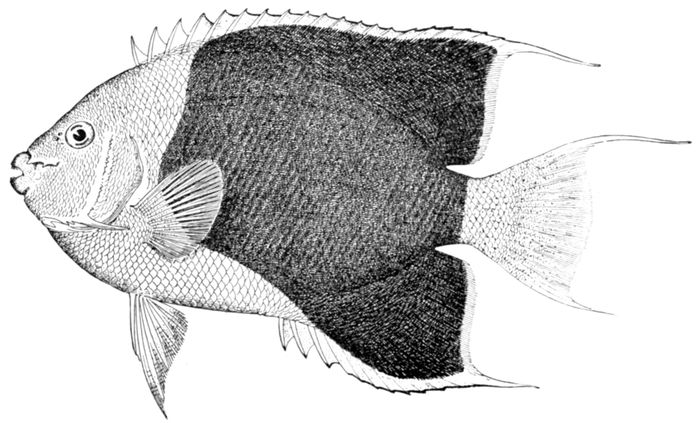
Fig. 341.—Rock Beauty, Holacanthus tricolor (L.). Puerto Rico.
The Pygæidæ.—Between the Chætodontidæ and the Acanthuridæ
we would place the extinct family of Pygæidæ, of the Eocene. In
Pygæus gigas and other species the dorsal spines are strong and
numerous; there are 5 to 8 species in the anal fin, the scales
are shagreen-like, and the teeth seem coarser than in the Chætodontidæ.
The tail is apparently unarmed, and the soft dorsal, as
in Chætodon, is much shorter than the spinous. To this family
406the Eocene genera, Aulorhamphus (bolceusis), with produced
snout, and Apostasis (croaticus), with long spinous dorsal, probably
belong.
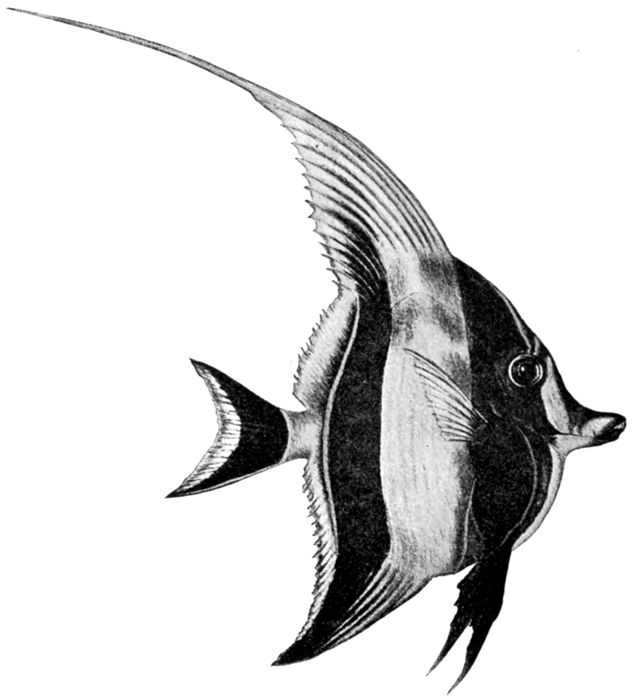
Fig. 342.—The Moorish Idol, Zanclus canescens (Linnæus). From Hawaii. Family Zanclidæ. (Painting by Mrs. E. G. Norris.)
The Moorish Idols: Zanclidæ.—The family of Zanclidæ includes
a single species, the Moorish idol or kihi kihi, Zanclus
canescens. In this family the scales are reduced to a fine shagreen,
and in the adult two bony horns grow out over the eye.
The dorsal spines are prolonged in filaments and the color is
yellow crossed by bars of black. Zanclus canescens is a very
handsome fish with the general appearance and habit of a
Chætodon, but the form is more exaggerated. It is found
throughout Polynesia, from Japan to the off-shore islands of
407Mexico, and is generally common, though rarely entering rock
pools.
Zanclus eocænus is recorded from the Italian Eocene.
The Tangs: Acanthuridæ.—In the next family, Acanthuridæ,
the surgeon-fishes or tangs, the scales remain small and shagreen-like,
the body is more elongate, the gill-openings still more
restricted, and the teeth are flattened and incisor-like. The pubic
bone is more elongate, and in all the species some sort of armature
is developed on the side of the tail. The spinous dorsal
in all is less developed than the soft dorsal. The species abound
in the warm seas, especially about the tide pools, and are used
as food. They undergo considerable changes with age, the
caudal armature being developed by degrees. Nearly all are
dull brown in color, but in some a vivid ornamentation is added.
Fossil forms are found from the Eocene and later. Most of
these are referable to Teuthis and Acanthurus.
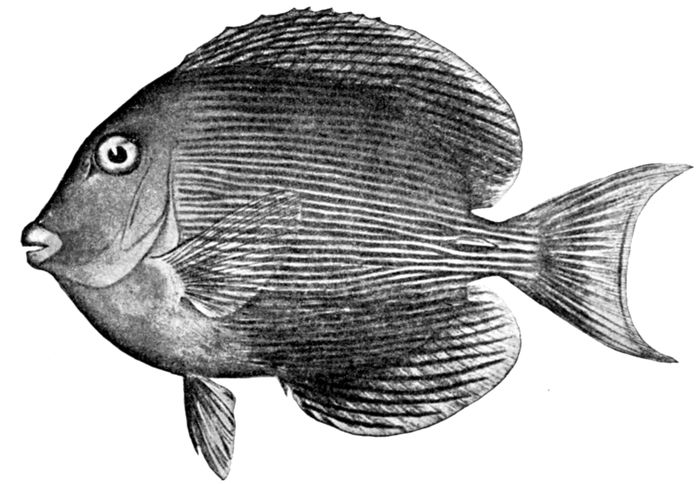
Fig. 343.—Teuthis cœruleus (Bloch & Schneider), Blue Tang. Mexico. Family Teuthididæ.
The principal genus is Teuthis, characterized by the presence
on each side of the tail of a sharp, knife-like, movable spine
with the point turned forwards and dropping into a sheath.
This spine gives these fishes their name of surgeon-fish, doctor-fish,
408lancet-fish, tang, barbero, etc., and it forms a very effective
weapon against fish or man who would seize one of these
creatures by the tail. The species have the center of distribution
in the East Indies and have not reached Europe. Three species
are found in the West Indies. The blue tang (Teuthis cœruleus)
is chiefly bright blue. The common tang, Teuthis chirurgus, is
brown with bluish streaks, while a third species, Teuthis bahianus,
has a forked caudal fin. Very close to this species is
Teuthis crestonis, of the west coast of Mexico, and both are
closely related to Teuthis matoides, found from India to Hawaii.
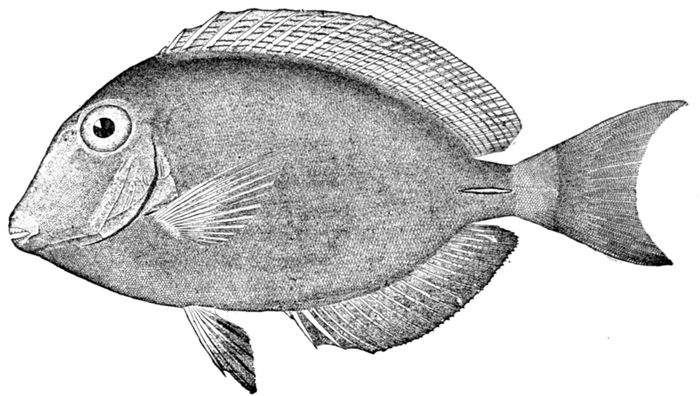
Fig. 344.—Brown Tang, Teuthis bahianus (Ranzani). Tortugas, Fla.
Teuthis triostegus, of Japan and Polynesia and the East
Indies, is covered with cross-bands alternately black and pale.
In Hawaii this is replaced by the very similar Teuthis sandwichensis.
Many species are found about Hawaii and the other
Polynesian Islands. Teuthis achilles has a large blotch of brilliant
scarlet on the tail, and Teuthis olivaceus a bright-colored
mark on the shoulder. Teuthis lineatus, yellow with blue
stripes, a showily colored fish of the coral reefs, is often poisonous,
its flesh producing ciguatera.
Zebrasoma differs from Teuthis in having but 4 or 5 dorsal
spines instead of 10 or 11. In this genus the soft dorsal fin is very
high. Zebrasoma flavescens, sometimes brown, sometimes bright
409yellow, is common in Polynesia; Zebrasoma veliferum, cross-barred
with black, is also common.
Ctenochætus (strigosus), unlike the others, is herbivorous and
has its teeth loosely implanted in the gums. This species, black
with dull orange streaks, was once tabu to the king of Hawaii,
who ate it raw, and common people who appropriated it were
put to death.
In Xesurus the caudal lancelet is replaced by three or four
bony tubercles which have no sharp edge. Xesurus scalprum
is common in Japan, and there are three species or more on
the west coast of Mexico, Xesurus punctatus and Xesurus
laticlavius being most abundant.
In Prionurus (microlepidotus) of the tropical Pacific the
armature is still more degraded, about six small plates being
developed.
In Acanthurus (Monoceros, Naseus), the unicorn-fish and its
relatives, the ventral fins are reduced, having but three soft rays,
the caudal spines are very large, blunt, immovable, one placed
in front of the other. In most of the species of Acanthurus
a long, bony horn grows forward from the cranium above the
eye. This is wanting in the young and has various degrees of
development in the different species, in some of which it is
wholly wanting. The species of Acanthurus reach a large size,
and in some the caudal spines are bright scarlet, in others blue.
Acanthurus unicornis, the unicorn-fish, is the commonest species
and the one with the longest horn. It is abundant in Japan,
in Hawaii, and in the East Indies.
Axinurus thynnoides of the East Indies has a long, slim body,
with slender tail like a mackerel.
Suborder Amphacanthi, the Siganidæ.—The Amphacanthi
(ἄμφϊ, everywhere; ἄκανθα, spine) are spiny-rayed fishes certainly
related to the Teuthididæ, but differing from all other
fishes in having the last ray of the ventrals spinous as well as
the first, the formula being I. 4, I. The anal fin has also six
or seven spines; and the maxillary is soldered to the premaxillary.
The skeleton is essentially like that of the Acanthuridæ.
The single family, Siganidæ, contains fishes of moderate
size, valued as food, and abounding about rocks in shallow
410water from the Red Sea to Tahiti. The coloration is rather
plain olive or brown, sometimes with white spots, sometimes
with bluish lines. The species are very much alike and all
belong to the single genus Siganus. One species, Siganus
fuscescens, dusky with small, pale dots, is a common food-fish
of Japan. Others, as Siganus oramin and Siganus vermiculatus,
occur in India, and Siganus punctatus, known as lo,
abounds about the coral reefs of Samoa. Siganus vulpinus
differs from the others in the elongate snout.
A fossil genus, Archoteuthis (glaronensis), is found in the
Tertiary of Glarus. It differs from Siganus in the deeper body
and in the presence of six instead of seven spines in the anal
fin.
The real relationship of the Siganidæ is still uncertain, but
the family is probably most nearly allied to the Acanthuridæ,
with which the species were first combined by Linnæus, who
included both in his genus Teuthis. In the structure of the
vertical fins the Siganidæ resemble the extinct genus Pygæus.
411
CHAPTER XXIV
SERIES PLECTOGNATHI
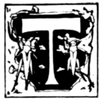
The Plectognaths.—Derived directly from the Acanthuridæ,
from which they differ by progressive steps of
degeneration, are the three suborders of Sclerodermi,
Ostracodermi, and Gymnodontes, forming together the series or
suborder of Plectognathi. As the members of this group differ
from one another more widely than the highest or most
generalized forms differ from the Acanthuridæ, we do not regard
it as a distinct order. The forms included in it differ from
the Acanthuridæ much as the swordfishes differ from ordinary
mackerel. The Plectognathi (πλεϡτός, woven together; γνάθος,
jaw) agree in the union of the maxillary and premaxillary,
in the union of the post-temporal with the skull, in the great
reduction of the gill-opening, and in the elongation of the pelvic
bones. All these characters in less degree are shown in
the Squamipinnes. We have also the reduction and final entire
loss of ventral fins, the reduction and loss of the spinous dorsal,
the compression and final partial or total fusion of the
teeth of the upper jaw, the specialization of the scales, which
change from bony scutes into a solid coat of mail on the one
hand, and on the other are reduced to thorns or prickles and
are finally altogether lost. The number of vertebræ is also
progressively reduced until in the extreme forms the caudal
fin seems attached to the head, the body being apparently
wanting. Throughout the group poisonous alkaloids are
developed in the flesh. These may produce the violent disease
known as ciguatera, directly attacking the nervous system.
See p. 182, vol. I.
The three suborders of plectognathous are easily recognized
by external characters. In the Sclerodermi (σκλερός, hard;
δέρμα, skin) the spinous dorsal is present and the body is
412more or less distinctly scaly. The teeth are separate and
incisor-like and the form is compressed. In the Ostracodermi
(ὀστράκος, a box; δέρμα, skin) there is no spinous dorsal, the teeth
are slender, and the body is inclosed in an immovable, bony
box. In the Gymnodontes (γυμνός, naked; ὀδούς, tooth) the
teeth are fused into a beak like that of a turtle, either continuous
or divided by a median suture in each jaw, the spinous
dorsal is lost, and the body is covered with thorns or prickles
or else is naked.
The Scleroderms.—The Sclerodermi include three recent and
one extinct families. Of the recent forms, Triacanthidæ is
the most primitive, having the ventral fins each represented
by a stout spine and the skin covered with small, rough scales.
The dorsal has from four to six stiff spines.
Triacanthodes anomalus is found in Japan, Hollardia hollardi
in Cuba. Triacanthus brevirostris, with the first spine very
large, is the common hornfish of the East Indies ranging northward
to Japan.
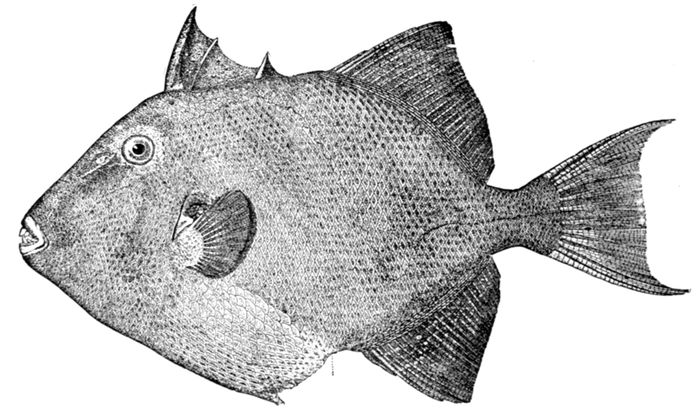
Fig. 345.—The Trigger-fish, Balistes carolinensis Gmelin. New York.
The Trigger-fishes: Balistidæ.—The Balistidæ, or trigger-fishes,
have the body covered with large rough scales regularly arranged.
The first dorsal fin is composed of a short stout rough spine,
with a smaller one behind it and usually a third so placed that
by touching it the first spine may be set or released. This
413peculiarity gives the name of trigger-fish as well as the older
name of Balistes, or cross-bow shooter. There are no ventral
fins, the long pelvis ending in a single blunt spine. The numerous
species of trigger-fishes are large coarse fishes of the tropical
seas occasionally ranging northward. The center of distribution
is in the East Indies, where many of the species are
most fantastically marked. Balistes carolinensis, the leather-jacket,
or cucuyo, is found in the Mediterranean as also on the
American coast. Balistes vetula, the oldwife, oldwench, or
cochino, marked with blue, is common in the West Indies,
as are several other species, as Canthidermis sufflamen, the
sobaco, and the jet-black Melichthys piceus, the black oldwife,
or galafata. Several species occur on the Pacific Coast of
Mexico, the Pez Puerco, Balistes verres, being commonest.
Still others are abundant about the Hawaiian Islands and
Japan. The genus Balistapus, having spinous plates on the
tail, contains the largest number of species, these being at the
same time the smallest in size and the most oddly colored.
Balistapus aculeatus and Balistapus undulatus are common
through Polynesia to Japan. Most of the tropical species
of Balistidæ are more or less poisonous, causing ciguatera, the
offensive alkaloids becoming weaker in the northern species.
Melichthys radula abounds in Polynesia. In this species great
changes take place at death, the colors changing from blue and
mottled golden green to jet black. Other abundant Polynesian
species are Xanthichthys lineopunctatus, Balistes vidua, Balistes
bursa, and Balistes flavomarginatus.
414
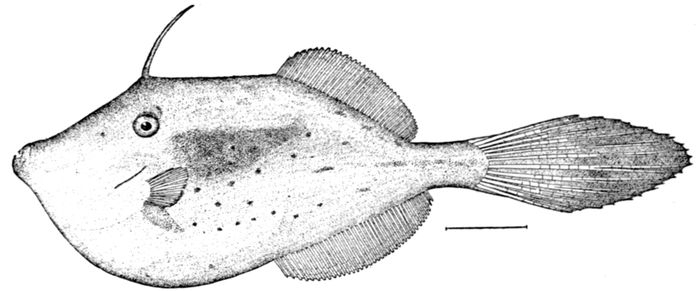
Fig. 346.—File-fish, Osbeckia lævis (scripta). Wood's Hole, Mass.
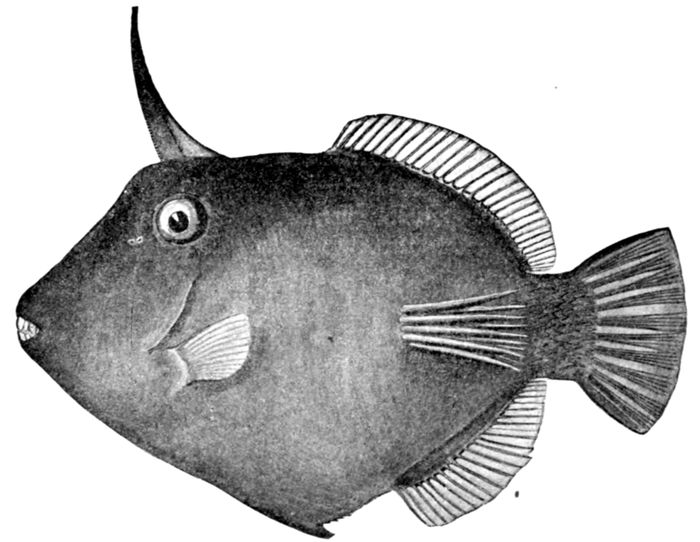
Fig. 347.—The Needle-bearing File-fish, Amanses scopas of Samoa.
The File-fishes: Monacanthidæ.—Closely related to the Balistidæ
are the Monacanthidæ, known as filefishes, or foolfishes. In
these the body is very lean and meager, the scales being
reduced to shagreen-like prickles. The ventral fins are
replaced by a single movable or immovable spine, which is
often absent, and the first dorsal fin is reduced to a single spine
with sometimes a rudiment behind it. The species are in
general smaller than the Balistidæ and usually but not always
dull in color. They have no economic value and are rarely
used as food, the dry flesh being bitter and offensive. The
species are numerous in tropical and temperate seas, although
none are found in Europe. On our Atlantic coast, Stephanolepis
hispidus and Ceratacanthus schœpfi are common species.
In the West Indies are numerous others, Osbeckia lævis and
Alutera güntheriana, largest in size, among the commonest. Both
of these are large fishes without ventral spine. Monacanthus
chinensis, with a great, drooping dewlap of skin behind the
ventral spine, is found on the coast of China. Of the numerous
Japanese species, the most abundant and largest is Pseudomonacanthus
415modestus, with deep-blue fins and the ventral spine
immovable. Another is Stephanolepis cirrhifer, known as Kawamuki,
or skin-peeler. Alutera monoceros, and Osbeckia scripta,
the unicorn fish, abound in the East Indies, with numerous
others of less size and note. In the male of the Polynesian
Amanses scopas (Fig. 347) the tail is armed with a brush of
extraordinarily long needle-like spines.
In Stephanolepis spilosomus the caudal fin is of a brilliant
scarlet color, contrasting with the usual dull colors of these
fishes. In Oxymonacanthus longirostris the body is blue with
orange checker-like spots and the snout is produced in a long
tube. About the islands of Polynesia, filefishes are relatively
few, but some of them are very curious in form or color.
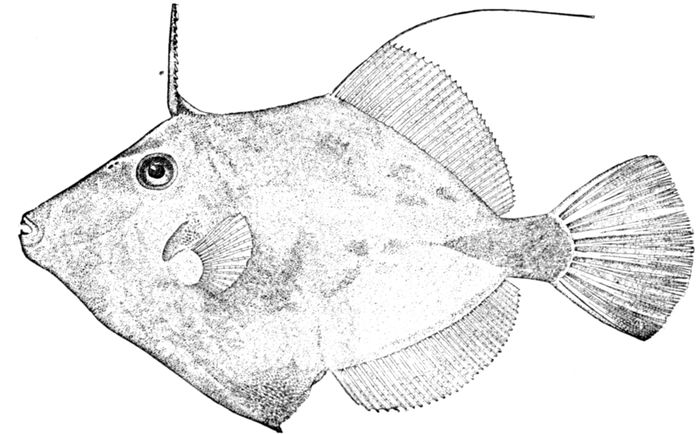
Fig. 348.—Common File fish, Stephanolepis hispidus (Linnæus). Virginia.
The Spinacanthidæ.—In the extinct family Spinacanthidæ
the body is elongate, high in front and tapering behind. The
first dorsal has six or seven spines, and there are rough spines
in the pectoral. The teeth are bluntly conical. Spinacanthus
blennioides and S. imperalis are found in the Eocene of Monte
Bolca. These are probably the nearest to the original ancestor
among known scleroderms.
The Trunkfishes: Ostraciidæ.—The group Ostracodermi contains
the single family of Ostraciidæ, the trunkfishes or cuckolds.
416In this group, the body is enveloped in a bony box,
made of six-sided scutes connected by sutures, leaving only
the jaws, fins and tail free. The spinous dorsal fin is wholly
wanting. There are no ventral fins, and the outer fins are
short and small. The trunkfishes live in shallow water in
the tropical seas. They are slow of motion, though often
brightly colored.
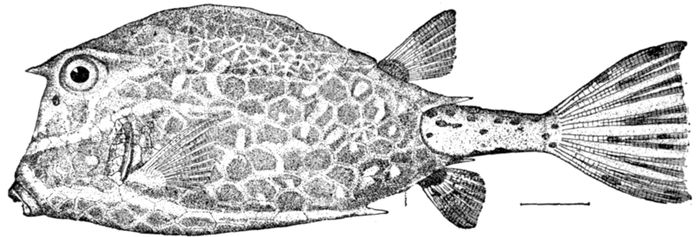
Fig. 349.—Horned Trunkfish, Cowfish, or Cuckold, Lactophrys tricornis (Linnæus). Charleston, S. C.

Fig. 350.—Horned Trunkfish, Ostracion cornutum (Linnæus). East Indies. (After Bleeker.)
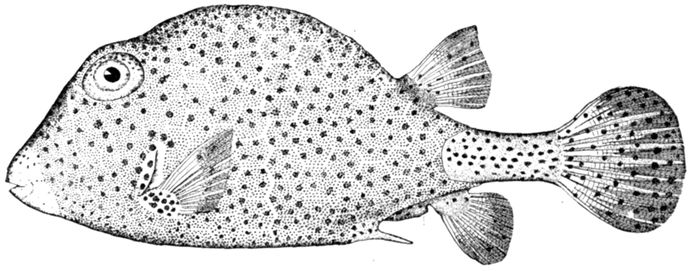
Fig. 351.—Spotted Trunkfish, Lactophrys bicaudalis (Linnæus). Cozumel Island, Yucatan.
417
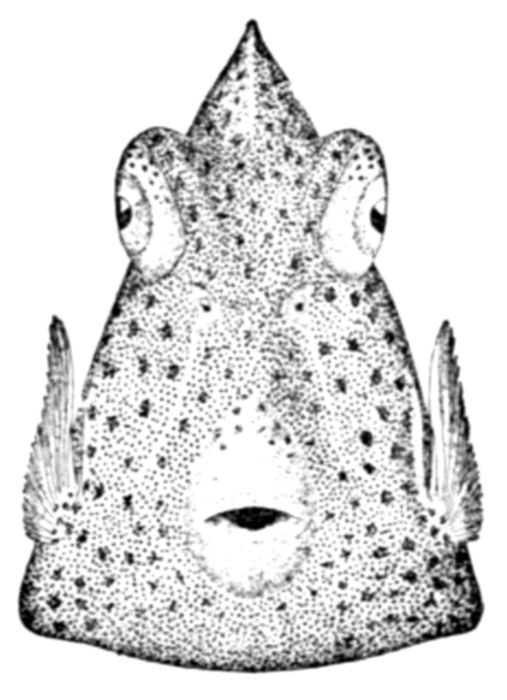
Fig. 352.—Spotted Trunkfish (face view), Lactophrys bicaudalis (Linnæus).
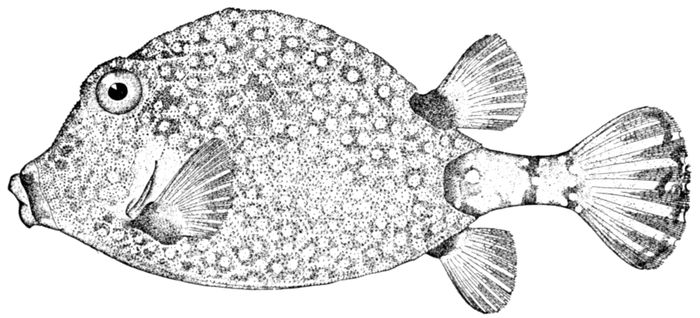
Fig. 353.—Spineless Trunkfish, Lactophrys triqueter (Linnæus). Tortugas.
Against most of their enemies they are protected by the
bony case. The species range from four inches to a foot in
length, so far as known. They are not poisonous, and are
often baked in the shell. Three genera are recognized: Lactophrys
with the carapace, three-angled; Ostracion
with four angles; and Aracana, resembling
Ostracion, but with the carapace not
closed behind the anal fin. In each of these
genera there is considerable minor variation
due to the presence or absence of spines on
the bony shell. In some species, called cuckolds,
or cowfishes, long horns are developed
over the eye. Others have spines on some
other part of the shield and some have no
spines at all. No species are found in
Europe, and none on the Pacific coast of
America. The three-angled species, called
Lactophrys, are native chiefly to the West Indies, sometimes
carried by currents to Guinea, and one is described from
Australia. Lactophrys tricornis of the West Indies has long
horns over the eye; Lactophrys trigonus has spines on the lower
parts only. Lactophrys triqueter is without spines, and the
fourth American species, Lactophrys bicaudalis, is marked by
large black spots. The species of Ostracion radiate from the
East Indies. One of them, Ostracion gibbosum, has a turret-like
spine on the middle of the back, causing the carapace to
appear five-angled; Ostracion diaphanum has short horns over
the eye, and Ostracion cornutum very long ones; Ostracion
418immaculatus, the common species of Japan, is without spines;
Ostracion sebæ of Hawaii and Samoa is deep, rich blue with
spots of golden. Aracana is also of East Indian origin; Aracana
aculeata, with numerous species, is common in Japan.
A fossil species of Ostracion (O. micrurum) is known from the
Eocene of Monte Bolca.

Fig. 354.—Hornless Trunkfish, Lactophrys trigonus (Linnæus). Tortugas, Fla.
The Gymnodontes.—The group of Gymnodontes, having the
teeth united in a turtle-like beak, carry still further the degeneration
of scales and fins. There is no trace of spinous dorsal,
or ventral. The scales are reduced to thorns or prickles, or
are lost altogether. All the species have the habit of inflating
themselves with air when disturbed, thus floating, belly upward,
on the surface of the water. Very few, and these only
northern species, are used as food, the flesh of the tropical
forms being generally poisonous, and that often in a higher
degree than any other fishes whatever.
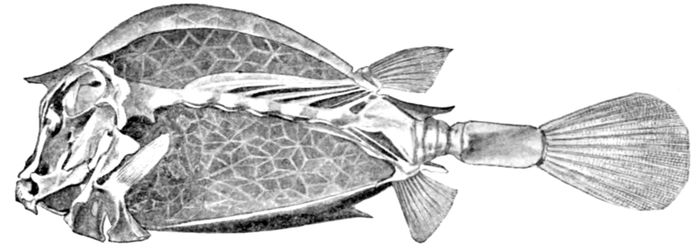
Fig. 355.—Skeleton of the Cowfish, Lactophrys tricornis (Linnæus).
The Triodontidæ.—The most generalized family is that of
the Triodontidæ. These fishes approach the Balistidæ in several
419regards, having the body compressed and covered with rough
scales. The teeth form a single plate in the lower jaw, but
are divided on the median line above. The compressed, fan-like,
ventral flap is greatly distensible. Triodon bursarius,
of the East Indies and northward to Japan, is the sole species of
the family.
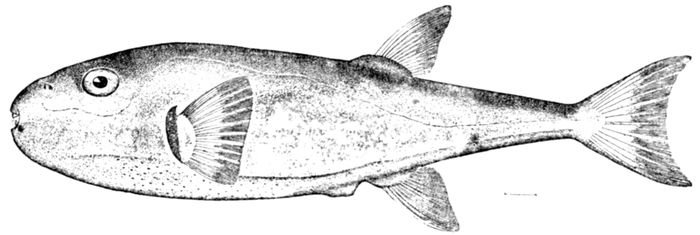
Fig. 356.—Silvery Puffer, Lagocephalus lævigatus (Linnæus). Virginia.
The Globefishes: Tetraodontidæ.—In the Tetraodontidæ (globefishes,
or puffers), each jaw is divided by a median suture.
The dorsal and anal are short, and the ventrals are reduced
in number, usually fifteen to twenty (7 + 13 to 7 + 9). The
walls of the belly are capable of extraordinary distension, so
that when inflated, the fish appears like a globe with a beak
and a short tail attached. The principal genus Spheroides
contains a great variety of forms, forming a closely intergrading
series. In some of these the body is smooth, in others more
or less covered with prickles, usually three-rooted. In some
the form is elongate, the color silvery, and the side of the belly
with a conspicuous fold of skin. In these species, the caudal
is lunate and the other fins falcate, and with numerous rays.
But these forms (called Lagocephalus) pass by degrees into
the short-bodied forms with small rounded fins, and no clear
line has yet been drawn separating the group into genera. In these
species each nostril has a double opening. Lagocephalus lagocephalus,
large and silvery, is found in Europe. Lagocephalus
lævigatus replaces it on the Atlantic Coast of North America.
In Japan are numerous forms of this type, the venomous
Lagocephalus sceleratus being one of the best known. Numerous
other Japanese species, Spheroides xanthopterus, rubripes,
pardalis, ocellatus, vermiculatus, chrysops, etc., mark the
420transition to typical Spheroides. Spheroides maculatus is common
on our Atlantic coast, the puffer, or swell-toad of the
coastwise boys who tease it to cause it to swell. Spheroides
spengleri and S. testudineus abound in the West Indies.
Spheroides politus on the west coast of Mexico.
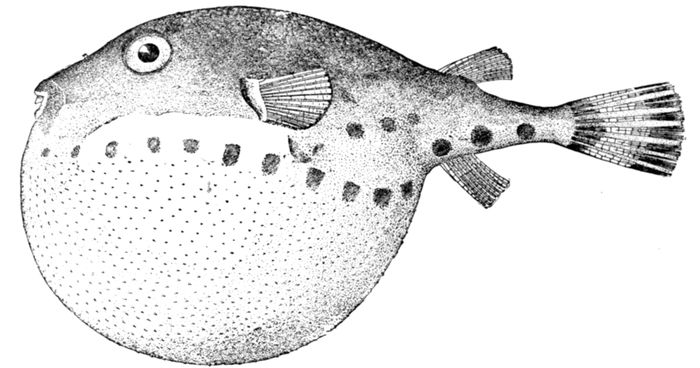
Fig. 357.—Puffer, inflated, Spheroides spengleri (Bloch). Wood's Hole, Mass.
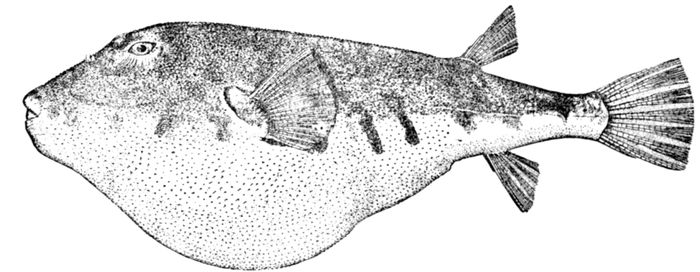
Fig. 358.—Puffer, Spheroides maculatus (Schneider). Noank, Conn.
In Tetraodon the nasal tentacle is without distinct opening,
its tip being merely spongy. The species of this genus are
even more inflatable and are often strikingly colored, the young
sometimes having the belly marked by concentric stripes of
black which disappear with age. Tetraodon hispidus abounds
in estuaries and shallow bays from Hawaii to India. In
Hawaii, it is regarded as the most poisonous of all fishes
(muki-muki) and it is said that its gall was once used to
421poison arrows. Tetraodon fahaka is a related species, the
first known of the family. It is found in the Nile. Tetraodon
lacrymatus, black with white spots, is common in Polynesia.
Tetraodon aërostaticus, with black spots, is frequently taken in
Japan, and Tetraodon setosus is frequent on the west coast
of Mexico. This species is subject to peculiar changes of color.
Normally dark brown, with paler spots, it is sometimes deep
blue, sometimes lemon-yellow and sometimes of mixed shades.
Specimens showing these traits were obtained about Clarion
Island of the Revillagigedos. No Tetraodon occurs in the West
Indies. Colomesus psittacus, a river fish of the northern part
of South America, resembles Spheroides, but shows considerable
difference in the skull.
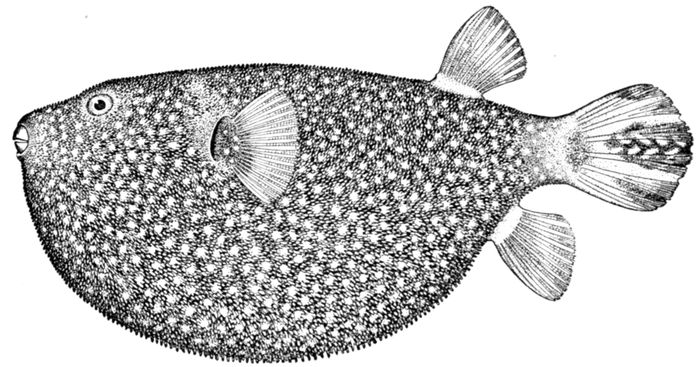
Fig. 359.—Tetraodon meleagris (Lacépède). Riu Kiu Islands.
But few fossil Tetraodontidæ have been recognized. These
are referred to Tetraodon. The earliest is Tetraodon pygmæus
from Monte Bolca.
The Chonerhinidæ of the East Indies are globefishes having
the dorsal and anal fins very long, the vertebræ more
numerous (12 + 17), twenty-nine in number. Chonerhinus
naritus inhabits the rivers of Sumatra and Java.
The little family of Tropidichthyidæ is composed of small
globefishes, with a sharply-keeled back, and the nostrils almost,
or quite, wanting. The teeth are as in the Tetraodontidæ.
The skeleton differs considerably from that of Spheroides,
apparently justifying their separation as a family. The species
422are all very small, three to six inches in length, and prettily
colored. In the West Indies Tropidichthys rostratus is found.
Tropidichthys solandri abounds in the South Seas, dull orange
with blue spots. Tropidichthys rivulatus is common in Japan
and several ether species are found in Hawaii.
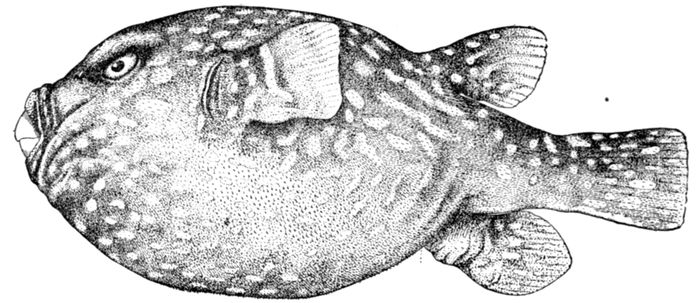
Fig. 360.—Bristly Globefish, Tetraodon setosus Rosa Smith. Clarion Island, Mex.
Other species occur on the west coast of Mexico, in Polynesia,
and in the East Indies.
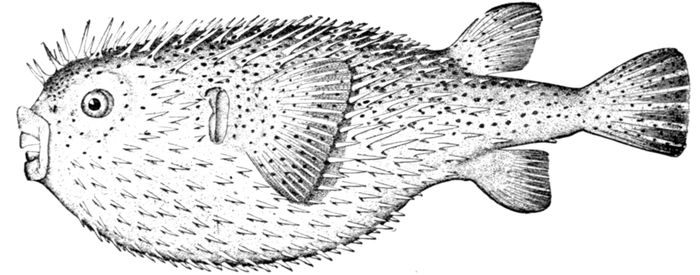
Fig. 361.—Porcupine-fish, Diodon hystrix (Linnæus). Tortugas Islands.
The Porcupine-fishes: Diodontidæ.—In the remaining families
of Gymnodontes, there is no suture in either jaw, the teeth
forming an undivided beak. The Diodontidæ, or porcupine-fishes,
have the body spherical or squarish, and armed with sharp
thorns, the bases of which are so broad as to form a continuous
coat of mail. In some of them, part of the spines are movable,
these being usually two-rooted; in others, all are immovable
423and three-rooted. All are reputed poisonous, especially in the
equatorial seas.
In Diodon the spines are very long, the anterior ones, at
least, movable. The common porcupine-fish, Diodon hystrix, is
found in all seas, and often in abundance. It is a sluggish fish,
olive and spotted with black. It reaches a length of two feet
or more, and by its long spines it is thoroughly protected from
all enemies. A second species, equally common, is the lesser
porcupine-fish, Diodon holacanthus. In this species, the frontal
spines are longer than those behind the pectoral, instead of the
reverse, as in Diodon hystrix. Many species of Diodon are
recorded from the Eocene, besides numerous species from later
deposits. One of these, as Heptadiodon heptadiodon from the
Eocene of Italy, with the teeth subdivided, possibly represents
a distinct family. Diodon erinaceus is found in the Eocene of
Monte Bolca and Progymnodon hilgendorfi in the Eocene of
Egypt.
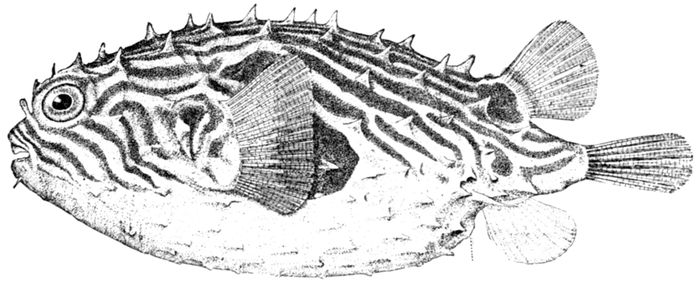
Fig. 362.—Rabbit-fish, Chilomycterus schœpfi (Walbaum). Noank, Conn.
In the rabbit-fishes (Chilomycterus) the body is box-shaped,
covered with triangular spines, much shorter and broader at
base than those of Diodon. Numerous species are known.
Chilomycterus schœpfi is the common rabbit-fish, or swell-toad
of our Atlantic coast, light green, prettily varied with black
lines. The larger, Chilomycterus affinis, with the pectoral fin
spotted with black, is widely diffused through the Pacific. It
is rather common in Japan, where it is the torabuku, or tiger
puffer. It is found also in Hawaii, and it is once recorded by
Dr. Eigenmann from San Pedro, California, and once by Snodgrass
and Heller, from the Galapagos.
424The Head-fishes: Molidæ.—The headfishes, or Molidæ, also
called sunfishes, have the body abbreviated behind so that the
dorsal, anal, and caudal fins seem to be attached to the posterior
outline of the head. This feature, constituting the so-called
gephyrocercal tail is a trait of specialized degradation.
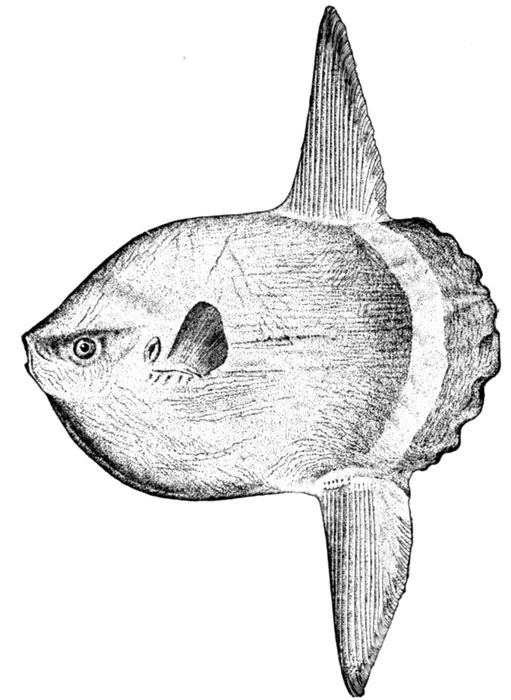
Fig. 363.—Headfish (adult), Mola mola (Linnæus). Virginia.
Mola mola, the common head-fish or sunfish, is found occasionally
in all tropical and temperate seas. Its form is almost
circular, having been compared by Linnæus to a mill-wheel
(mola), and its surface is covered with a rough, leathery skin.
It swims very lazily at the surface of the water, its high dorsal
often rising above the surface. It is rarely used as food, though
not known to be poisonous. The largest example known to the
writer was taken at Redondo Beach, California, by Mr. Thomas
Shooter, of Los Angeles. This specimen was 8 feet 2 inches in
425length, and weighed 1200 pounds. Another, almost as large,
was taken at San Diego, in April, 1904. No difference has been
noticed among specimens from California, Cape Cod, Japan,
and the Mediterranean. The young, however, differ considerably
from the adult, as might be expected in a fish of such
great size and extraordinary form. (See Figs.
109 and 110, Vol. I.)
Fragments named Chelonopsis, and doubtfully
referred to Mola, are found in the Pliocene of
Belgium. Certain jaws of cretaceous age, attributed
to Mola, probably belong, according to
Woodward, to a turtle.
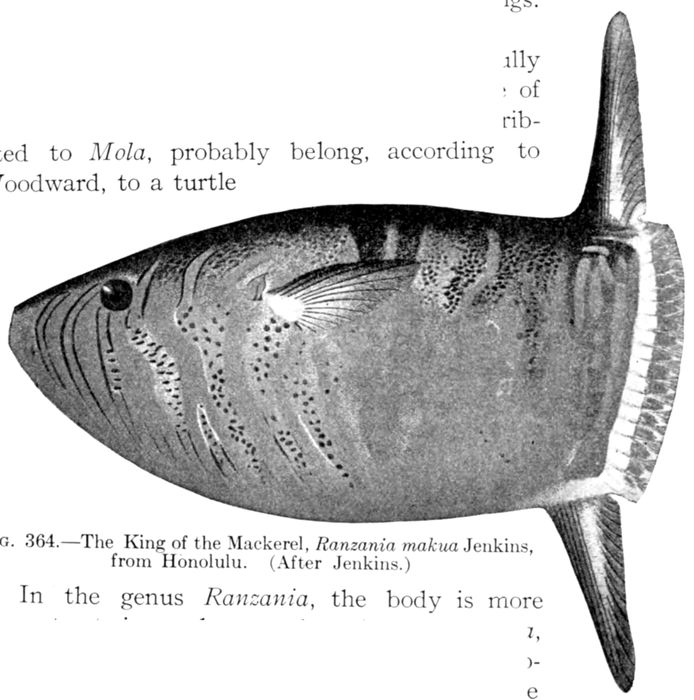
Fig. 364.—The King of the Mackerel, Ranzania makua Jenkins, from Honolulu. (After Jenkins.)
In the genus Ranzania, the body is more
elongate, twice as long as deep, but as in Mola,
the body appears as if bitten off and then provided
with a fringe of tail. The species are
rarely taken. Ranzania truncata is found in the Mediterranean
and once at Madeira. Ranzania makua, known as the king of
the mackerels about Hawaii, is beautifully colored brown and
silvery. This species has been taken once in Japan.
In Hawaii it is believed that all the Scombroid fishes are subject
to the rule of the makua and that they will disappear if
this fish be killed. By a similar superstition, Regalecus glesne
is "king of the herrings" in Norway and about Cape Flattery,
Trachypterus rex salmonorum is "king of the salmon."
426
CHAPTER XXV
PAREIOPLITÆ, OR MAILED-CHEEK FISHES
The Mailed-cheek Fishes.—The vast group of Pareioplitæ
(Loricati) or mailed-cheek fishes is characterized
by the presence of a "bony stay" or backward-directed
process from the third suborbital. This
extends backward across the cheek toward the preopercle. In
the most generalized forms this bony stay is small and hidden
under the skin. In more specialized forms it grows larger,
articulates with the preopercle, and becomes rough or spinous
at its surface. Finally, it joins the other bones to form a coat
of mail which covers the whole head. In degenerate forms it
is again reduced in size, finally becoming insignificant.
The more primitive Pareioplitæ (παρεία, cheek; ὁπλιτής,
armed) closely resemble the Percomorphi, having the same
fins, the same type of shoulder-girdle, and the same insertion
of the ventral fins. In the more specialized forms the ventral
fins remain thoracic, but almost all other parts of the anatomy
are greatly distorted. In all cases, so far as known to the
writer, the hypercoracoid is perforate as in the Percomorphi.
There are numerous points of resemblance between the Cirrhitidæ
and the Scorpænidæ, and it is probable that the Scorpænidæ
with all the other Pareioplitæ sprang from some perciform
stock allied to Cirrhitidæ and Latrididæ.
Fossil mailed-cheek fishes are extremely few and throw little
light on the origin of the group. Those belong chiefly to the
Cottidæ. Lepidocottus, recorded from the Miocene and Oligocene,
seems to be the earliest genus.
427
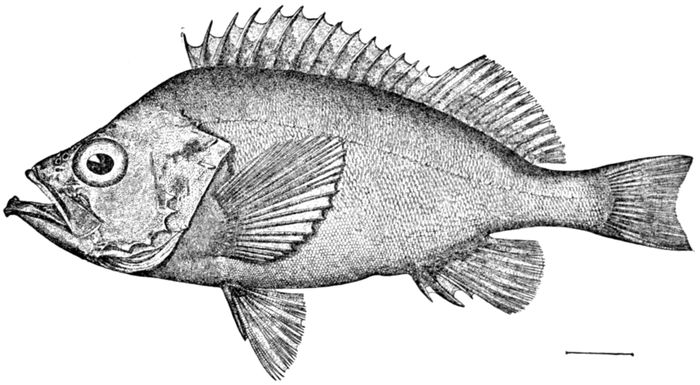
Fig. 365.—Rosefish, Sebastes marinus Linnæus. Cape Cod.

Fig. 366.—Skull of Scorpænichthys marmoratus Girard, showing the suborbital stay (a).
The Scorpion-fishes: Scorpænidæ.—The vast family of Scorpænidæ,
or scorpion-fishes, comprises such a variety of forms
as almost to defy diagnosis. The more primitive types are
percoid in almost all respects, save in the presence of the subocular
stay. Their scales are ctenoid and well developed.
The dorsal spines are numerous and strong. The ventral fins
are complete and normally attached; the anal has three strong
spines. The cranium shows only a trace of spiny ridges, and
the five spines on the preoperculum are not very different from
those seen in some species of bass. The gill-arches are, however,
different, there being but 3½ gills and no slit behind the last.
Otherwise the mouth and pharanx show no unusual characters.
In the extremes of the group, however, great changes take
place, the head becomes greatly distorted with ridges and
grooves, the anal spines are lost, and the dorsal spines variously
modified. The scales may be lost or replaced by warts or
428prickles and the ventral fins may be greatly reduced. Still
the changes are very gradual, and it is not easy to divide the
group into smaller families.
The most primitive existing genus is doubtless Sebastes.
The familiar rosefish, Sebastes marinus, is found on both shores
of the north Atlantic. It is bright red in color and is valued
as food. As befits a northern fish, it has an increased number
of vertebræ (31) and the dorsal spines number 15. From its
large haddock-like eye it has been called the Norway haddock.
It is an important food-fish in New England as well as in northern
Europe.
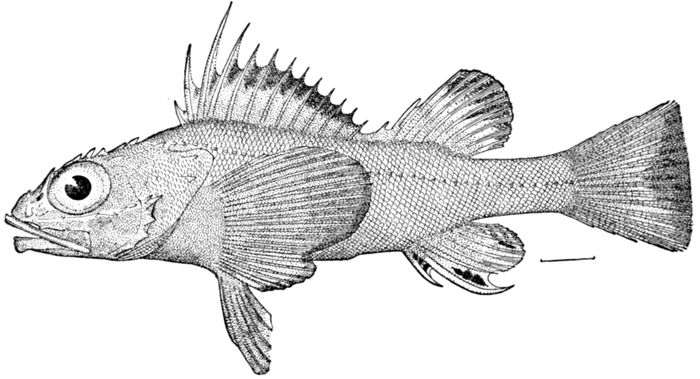
Fig. 367.—Sebastolobus altivelis Gilbert. Alaska.
In the north Pacific Sebastes gives place to Sebastolobus,
with three species (macrochir, altivelis, and alascanus), all bright-red
fishes of soft substance and living in rather deep water.
Sebastolobus is characterized by its two-lobed pectoral fin, the
lower rays being enlarged.
The genus Sebastodes, with its rougher-headed ally Sebastichthys,
with 13 dorsal spines and the vertebræ 27, ranges farther
south than Sebastes and forms one of the most characteristic
features of the fauna of California and Japan, 50 species
occurring about California and 25 being already known from
Japan. One species (Sebastichthys capensis) is recorded from
the Cape of Good Hope, and two, Sebastichthys oculatus and
S. darwini, from the coast of Chile.
429Within the limits of Sebastodes and Sebastichthys is a very large
range of form and color, far more than should exist within the
range of a natural genus. On the other hand, all attempts at
generic subdivision have failed because the species form a number
of almost perfectly continuous series. At one extreme are species
with large mouths, small scales, relatively smooth cranium,
and long gill-rakers. At the other extreme are robust species,
with the head very rough, the mouth moderate, the scales
larger, and the gill-rakers short and thick. Still other species
have slender cranial spines and spots of bright pink in certain
specialized localities. These approach the genus Helicolenus
as other species approach Scorpæna.
430
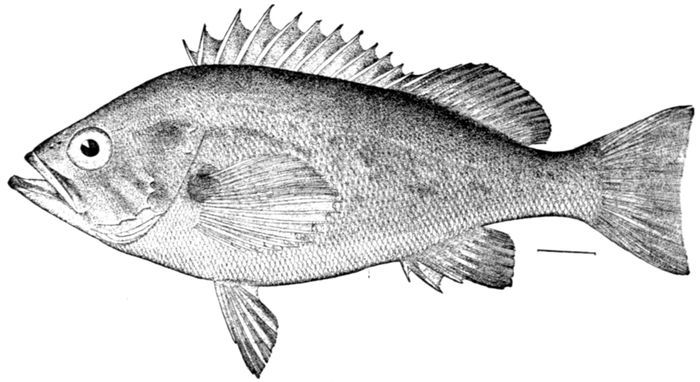
Fig. 368.—Priest-fish, Sebastodes mystinus Jordan & Gilbert. Monterey, Cal.
The various species are known in California as rockfish, or
rock-cod, in Japan as Soi and Mebaru. In both regions they
form a large part of the bulk of food-fishes, the flesh being
rather coarse and of moderate flavor. All the species so far
as known are ovoviviparous, the young being brought forth
in summer in very great number, born at the length of about
¼ of an inch. The species living close to shore are brown, black,
or green. Those living in deeper waters are bright red, and
in still deeper waters often creamy or gray, with the lining of
the mouth and the peritoneum black. The largest species
reach a length of two or three feet, the smallest eight or ten
inches. None are found between Lower California and Peru
and none south of Nagasaki in Japan. Of the California species
the following are of most note: Sebastodes paucispinis, the
Bocaccio of the fishermen, from its large mouth, is an elongate
fish, dull red in color, and reaching a very large size. In deeper
waters are Sebastodes jordani and Sebastodes goodei, the former
elongate and red, the latter more robust and of a very bright
crimson color. Sebastodes ovalis, the viuva, and Sebastodes
entomelas are grayish in hue, and the related Sebastodes
proriger is red. The green rockfish Sebastodes flavidus is
common along the shore, as also the black rockfish, known
as pêche prêtre or priestfish, Sebastodes mystinus. Less common
is Sebastodes melanops. Similar to this but more orange
in color is the large Sebastodes miniatus. Somewhat rougher-headed
is the small grass rockfish, Sebastodes atrovirens. On
the large red rockfish, Sebastichthys ruberrimus, the spinous
ridges are all large and rough serrate. On the equally large
Sebastichthys levis these ridges are smooth. Both these species
are bright red in color. Sebastichthys rubrovinctus, called the
Spanish-flag, is covered with broad alternating bands of deep
crimson and creamy pink. It is the most handsomely colored
of our marine fishes and is often taken in southern California.
Sebastichthys elongatus is a red species with very large mouth.
Several other species small in size are red, with three or four
spots of bright pink. The commonest of these is the corsair,
Sebastichthys rosaceus, plain red and golden. Another species
is the green and red flyfish, Sebastichthys rhodochloris. Sebastichthys
constellatus is spotted with pink and Sebastichthys chlorostictus
with green. To this group with pink spots the South
American and African species belong, but none of the Japanese.
Sebastodes aleutianus is a large red species common in
Alaska and Sebastodes ciliatus a green one. About the wharves
in California and northward the brown species called Sebastichthys
auriculatus is abundant. In the remaining species
the spinous ridges are progressively higher, though not so sharp
as in some of those already named. Sebastichthys maliger has
very high dorsal spines and a golden blotch on the back. In
Sebastichthys caurinus and especially Sebastichthys vexillaris
the spines are very high, but the coloration is different, being
reddish brown. Sebastichthys nebulosus is blue-black with golden
431spots. Sebastichthys chrysomelas is mottled black and yellow.
Sebastichthys carnatus is flesh-color and green. Sebastichthys
rastrelliger is a small, blackish-green species looking like Sebastodes
atrovirens, but with short gill-rakers. Sebastichthys hopkinsi
and Sebastichthys gilberti are small species allied to it.
The treefish, Sebastichthys serriceps, has very high spines on the
head, and the olive body is crowned by broad black bands.
Still more striking is the black-banded rockfish, Sebastichthys
nigrofasciatus, with very rough head and bright red body with
broad cross-bands of black.
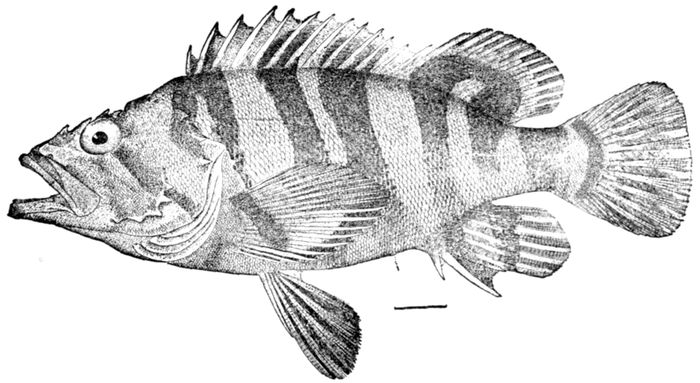
Fig. 369.—Sebastichthys serriceps Jordan & Gilbert. Monterey, Cal.
Of the Japanese species the commonest, Sebastodes inermis,
the Mebaru, much resembles Sebastodes flavidus. Sebastodes
fuscescens looks like Sebastodes melanops, as does also Sebastodes
taczanowskii. Sebastodes matsubaræ and S. flammeus and S.
iracundus, bright-red off-shore species, run close to Sebastodes
aleutianus. Sebastichthys pachycephalus suggests Sebastichthys
chrysomelas. Sebastodes steindachneri and S. itinus are brighter-colored
allies of Sebastodes ovalis and Sebastodes scythropus and
Sebastodes joyneri represent Sebastodes proriger. Sebastichthys
trivittatus, green, striped with bright golden, bears some resemblance
to Sebastichthys maliger. Sebastichthys elegans, Sebastichthys
oblongus, and Sebastichthys mitsukurii, dwarf species, profusely
spotted, have no analogues among the American forms.
Sebastodes glaucus of the Kurile Islands has 14 dorsal spines
432and is not closely related to any other. Fourteen dorsal
spines are occasionally present in Sebastichthys elegans. All
the other species show constantly 13.
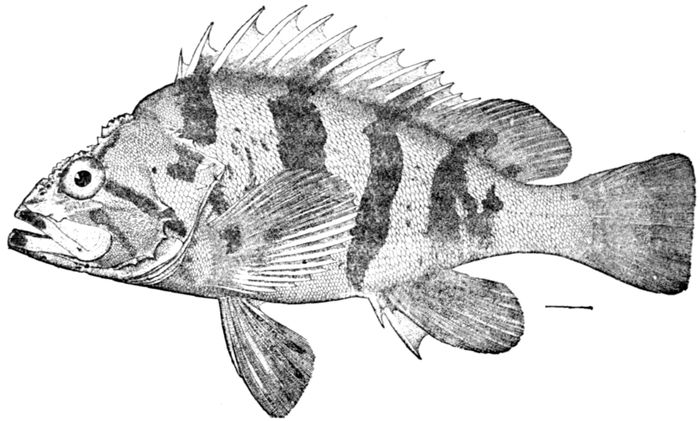
Fig. 370.—Banded Rockfish, Sebastichthys nigrocinctus (Ayres). Straits of Fuca.
The genus Sebastiscus has the general appearance of Sebastodes,
and like the latter possesses a large air-bladder. It however
agrees with Scorpæna in the possession of but 12 dorsal
spines and 24 vertebræ. The two known species are common
in Japan. Sebastiscus marmoratus, mottled brown, is everywhere
abundant along the coast, and the pretty Sebastiscus albofasciatus,
pink, violet, and golden, represents it in equal abundance in
deeper water.
The genus Sebastopsis differs from Sebastodes only in having
no teeth on the palatines. The species, all of small size and
red or varied coloration, are confined to the Pacific. Sebastopsis
xyris occurs in lower California and Sebastopsis guamensis
and S. scaber in Polynesia. Species of this genus are often
found dried in Chinese insect boxes.
Helicolenus differs from Sebastiscus only in the total absence
of air-bladder. The species are all bright crimson in color, very
handsome, and live in deep water. Helicolenus dactylopterus is
rather common in the Mediterranean, and is sometimes taken
in the Gulf Stream, and also in Japan, where two or three other
species occur.
433Neosebastes is much like Sebastodes, but the suborbital stay
bears strong spines and the dorsal is very high. Neosebastes
panda is found in Australia, and N. entaxis in Japan. Setarches is
distinguished by the cavernous bones of its head. Species are
found in both the Atlantic and Pacific in deep water. Several
other peculiar or transitional genera are found in different parts
of the Pacific.
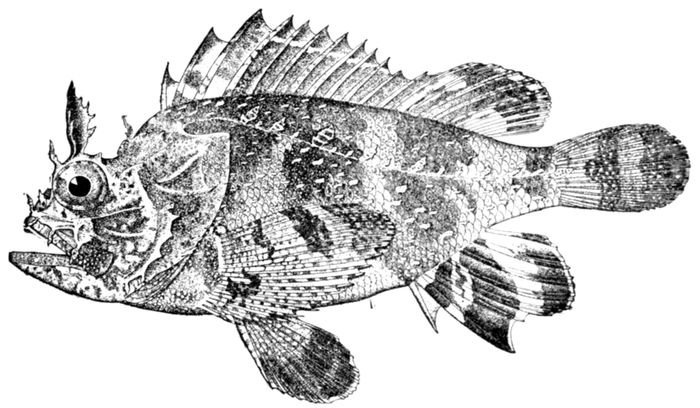
Fig. 371.—Florida Lion fish, Scorpæna grandicornis Cuv. & Val. Key West.
In Scorpæna the head is more uneven in outline than in
Sebastodes and Sebastichthys, skinny flaps are often present on
head and body, the air-bladder is wanting, there are 12 dorsal
spines and 24 vertebræ, and on each dorsal spine is a small
venom-secreting gland. The species are very numerous, highly
varied in color, and found in all warm seas, being known as scorpion-fishes
or Rascacios. Two species, Scorpæna scrofa and
Scorpæna porcus, are common in the Mediterranean, being regarded
as good food-fishes, though disliked by the fishermen.
Of the numerous West Indian species, Scorpæna plumieri,
Scorpæna grandicornis, and Scorpæna brasiliensis are best known.
Scorpæna guttata is common in southern California and is an
excellent food-fish. Scorpæna mystes is found on the west coast
of Mexico. Scorpæna onaria and S. izensis are found in Japan.
Fossil remains referred to Scorpæna are recorded from the Tertiary
rocks.
434In the islands of the Pacific are numerous dwarf species
less than three inches long, which have been set apart as a
separate genus, Sebastapistes. The longest known of these is
Sebastapistes strongensis, named from Strong Island, abundant
in crevices in the corals throughout Polynesia, and much disliked
by fishermen.

Fig. 372.—Sea-scorpion, Scorpæna mystes Jordan. Mazatlan.
The genus Scorpænopsis differs from Scorpæna in the absence
of palatine teeth. It is still more fantastic in form and color.
Scorpænopsis cirrhosa, Scorpænopsis fimbriata, and other species
are widely distributed through the East Indies and Polynesia.
The lion-fishes (Pterois) of the tropical Pacific are remarkable
for their long pectoral fins, elongate dorsal spines, and zebra-like
coloration. The numerous species are fantastic and handsomely
colored, but their poisoned, needle-like spines are dreaded
by fishermen. They lurk in crevices in the coral reefs, some
of them reaching a foot in length.
Inimicus japonicus, common in Japan, has a depressed and
monstrous head and a generally bizarre appearance. It is usually
black in color but is largely bright red when found among red
algæ. A related species, Inimicus aurantiacus, is blackish when
near shore, but lemon-yellow in deep water. (See frontispiece.)
A related species in the East Indies is Pelor filamentosum,
called Nohu or Gofu in Polynesia.
435
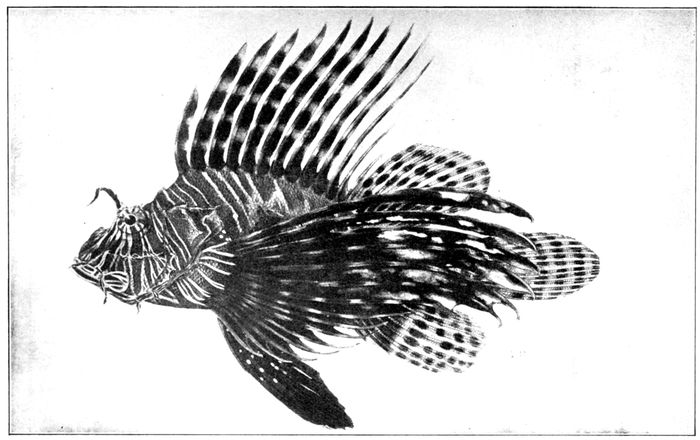
Fig. 373.—Lion-fish or Sausolele (the dorsal spines envenomed), Pterois volitans (Linnæus). Family Scorpænidæ. (From a specimen from Samoa.)
436Still more monstrous are the species of Synanceia, short,
thick-set, irregularly formed fishes, in which the poisoned spines
reach a high degree of venom. The flesh in all these species
is wholesome, and when the dorsal spines are cut off the fishes
sell readily in the markets. These fishes lie hidden in cavities
of the reefs, being scarcely distinguishable from the rock itself.
(See Fig. 168, Vol. I.)
The black Emmydrichthys vulcanus of Tahiti lies in crevices
of lava, and could scarcely be distinguished from an irregular
lump of lava-rock.
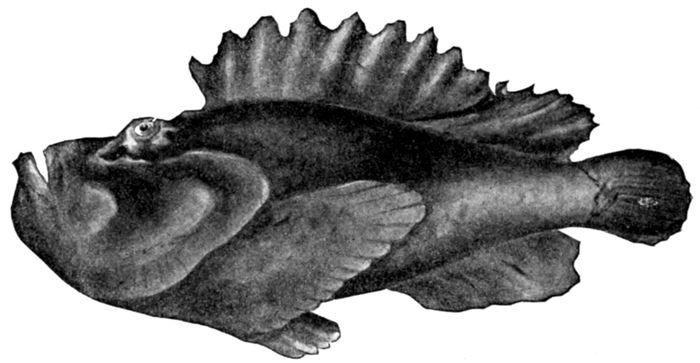
Fig. 374.—Black Nohu, or Poison-fish, Emmydrichthys vulcanus Jordan. A species with stinging spines, showing resemblance to lumps of lava among which it lives. Family Scorpænidæ. From Tahiti.
A related form, Erosa erosa, the daruma-okose of Japan, is
monstrous in form but often beautifully colored with crimson
and gray.
In Congiopus the very strong dorsal spines begin in the
head, and the mouth is very small. Dr. Gill makes this genus
the type of a distinct family, Congiopodidæ.
Besides these, very many genera and species of small poison-fishes,
called okose in Japan, abound in the sandy bays from
Tokio to Hindostan and the Red Sea. Some of these are handsomely
colored, others are fantastically formed. Paracentropogon
rubripinnis and Minous adamsi are the commonest species
in Japan. Trachicephalus uranoscopus abounds in the bays of
hina. Snyderina yamanokami occurs in Southern Japan.
437
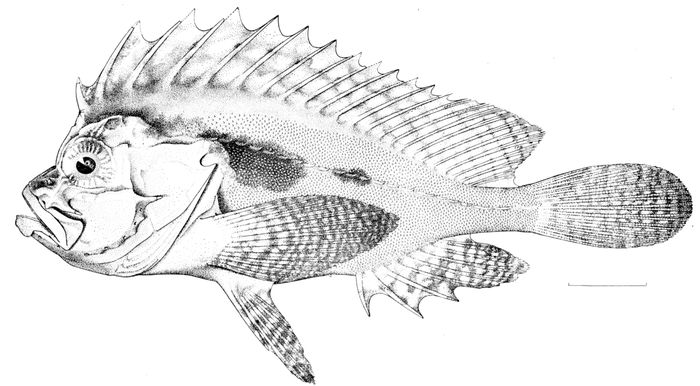
Fig. 375.—Snyderina yamanokami Jordan & Starks. Family Scorpænidæ. Satsuma, Japan.
438But few fossil Scorpænidæ are recorded. Scorpænopterus
siluridens, a mailed fish from the Vienna Miocene, with a warty
head, seems to belong to this group, and Ampheristus toliapicus,
with a broad, depressed head, is found in the London Eocene,
and various Miocene species have been referred to Scorpæna.
Sebastodes rosæ is based on a fragment, probably Pleistocene,
from Port Harford, California.
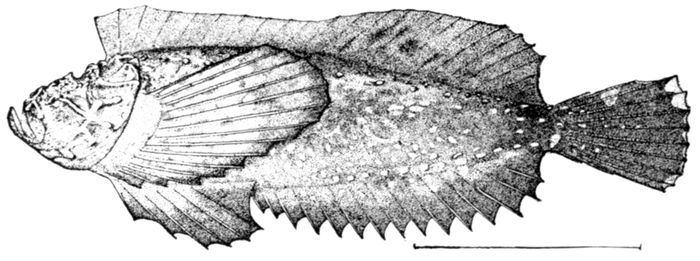
Fig. 376.—Trachicephalus uranoscopus. Family Scorpænidæ. From Swatow, China.
The small family of the Caracanthidæ consists of little fishes
of the coral reefs of the Pacific. These are compressed in form,
and the skin is rough with small prickles, the head being feebly
armed. The species are rare and little known, brown in color
with pale spots.

Fig. 377.—Skilfish, Anoplopoma fimbria (Pallas). California.
The Skilfishes: Anoplopomidæ.—The small family of skilfishes
or Anoplopomidæ consists of two species found on the
coast of California and northward. These resemble the Scorpænidæ,
having the usual form of nostrils, and the suborbital
stay well developed. The skull is, however, free from spines,
the scales are small and close-set, and the sleek, dark-colored
body has suggested resemblance to the mackerel or
hake. Anoplopoma fimbria, known as skilfish, beshow, or coalfish,
is rather common from Unalaska to Monterey, reaching
a length of two feet or more. In the north it becomes very
439fat and is much valued as food. About San Francisco it is
dry and tasteless.
The Greenlings: Hexagrammidæ.—The curious family of
greenlings, Hexagrammidæ, is confined to the two shores of the
North Pacific. The species vary much in form, but agree in
the unarmed cranium and in the presence of but a single nostril
on each side, the posterior opening being reduced to a minute
pore. The vertebræ are numerous, the scales small, and the
coloration often brilliant. The species are carnivorous and
usually valued as food. They live in the kelp and about rocks
in California and Japan and along the shores of Siberia and
Alaska. The atka-fish (Pleurogrammus monopterygius) is one
of the finest of food-fishes. This species reaches a length of
eighteen inches. It is yellow in color, banded with black, and
the flesh is white and tender, somewhat like that of the Lake
whitefish (Coregonus clupeiformis), and is especially fine when
salted. This fish is found about the Aleutian Islands, especially
the island of Atka, from which it takes its name. It is
commercially known as Atka mackerel.
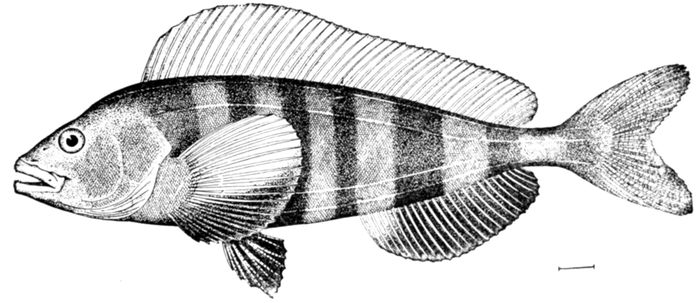
Fig. 378.—Atka-fish, Pleurogrammus monopterygius (Pallas). Atka Island.
In this genus there are numerous lateral lines, and the dorsal
fin is continuous. In Hexagrammos, the principal genus of the
family, the dorsal is divided into two fins, and there are about
five lateral lines on each side.
Hexagrammos decagrammus is common on the coast of California,
where it is known by the incorrect name of rock-trout.
It is a well-known food-fish, reaching a length of eighteen inches.
440The sexes are quite unlike in color, the males anteriorly with
blue spots, the females speckled with red or brown.
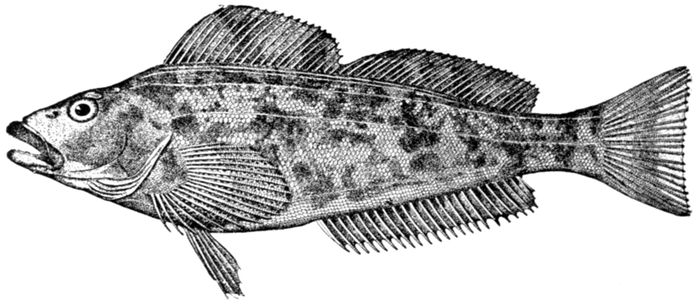
Fig. 379.—Greenling, Hexagrammos decagrammus (Pallas). Sitka.

Fig. 380.—Cultus Cod, Ophiodon elongatus (Girard). Sitka, Alaska.
Hexagrammos octogrammus, the common greenfish of Alaska,
and the greenling Hexagrammos stelleri, are also well-known
species. Close to the latter species is the Abura ainame, or
fat cod, Hexagrammos otakii, common throughout Japan. The
red rock-trout, Hexagrammos superciliosus, is beautifully variegated
with red, the color being extremely variable. Other
species are found in Japan and Kamchatka. Agrammus agrammus
of Japan differs in the possession of but one lateral line.
Ophiodon elongatus, the blue cod, cultus cod, or Buffalo cod of
California, is a large fish of moderate value as food, much resembling
a codfish, but with larger mouth and longer teeth. The
flesh and bones are deeply tinged with bluish green. Cultus
is the Chinook name for worthless. Zaniolepis latipinnis is
a singular-looking fish, very rough, dry, and bony, occasionally
taken on the California coast. Oxylebius pictus is a small, handsome,
and very active little fish, whitish with black bands, common
441among rocks and algæ on the California coast. It is,
however, rarely brought into the markets, as it shows great
skill in escaping the nets.
No fossil Hexagrammidæ are known.
The Flatheads or Kochi: Platycephalidæ.—The family of Platycephalidæ
consists of spindle-shaped fishes, with flattened,
rough heads and the body covered with small, rough scales.
About fifty species occur in the East Indian region, where the
larger ones are much valued as food. The most abundant
species and usually the largest in size is Platycephalus insidiator,
the kochi of the Japanese. The genus Insidiator contains smaller
species with larger scales. In all these the head is very much
depressed, a feature which separates them from all the Scorpænidæ.
Hoplichthys langsdorfi, the nezupo or rat-tail of Japan,
is the type of a separate family, Hoplichthyidæ, characterized by
a bony armature of rough plates. Bembras japonicas, another
little Japanese fish, with the ventrals advanced in position and
the skin with rough plates, is the type of the family of
Bembradidæ.
The Sculpins: Cottidæ.—The great family of Cottidæ or sculpins
is one especially characteristic of the northern seas, where
a great variety of species is found. These differ in general
from the Scorpænidæ, from which they are perhaps derived,
in the greater number of vertebræ and in the relative feebleness
or degeneration of the spinous dorsal, the ventrals, and
the scales. In all these regards great variation exists. In
the most primitive genus, Jordania, the body is well scaled,
the spinous dorsal well developed, and the ventral rays I, 5. In
Hemitripterus a large number of dorsal spines remains, but the
structure in other regards is highly modified. In the most
degraded types, Cottunculus, Psychrolutes, Gilbertidia, which
are also among the most specialized, there is little trace of
spinous dorsal, the scales are wholly lost, and the ventral fin
is incomplete. Most of the species of Cottidæ live on the bottom
in shallow seas. Some are found in deep water and a few
swarm in the rivers. All are arctic or subarctic, none being
found to the south of Italy, Virginia, California, and Japan.
None are valued as food, being coarse and tough. Scarcely
any are found fossil.
442Of the multitude of genera of Cottidæ we notice a few of
the most prominent. Jordania zonope, a pretty little fish of
Puget Sound, is the most primitive in its characters, being closely
allied to the Hexagrammidæ.

Fig. 381.—Jordania zonope Starks. Puget Sound.
Scorpænichthys marmoratus, the great sculpin, or cabezon, of
California reaches a length of 2½ feet. It has the ventral rays
I, 5, although almost in all the other sculpins the rays are
reduced to I, 3 or I, 4. The flesh has the livid blue color seen
in the cultus cod Ophiodon elongatus.
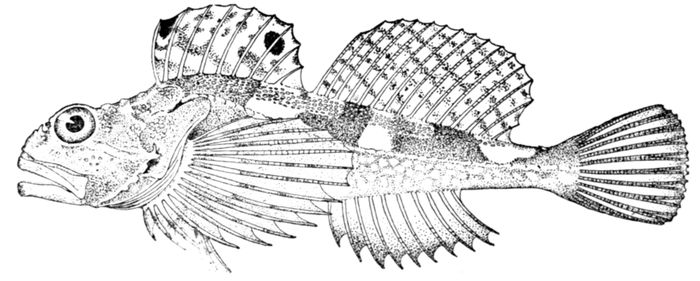
Fig. 382.—Astrolytes notospilotus (Girard). Puget Sound.
443
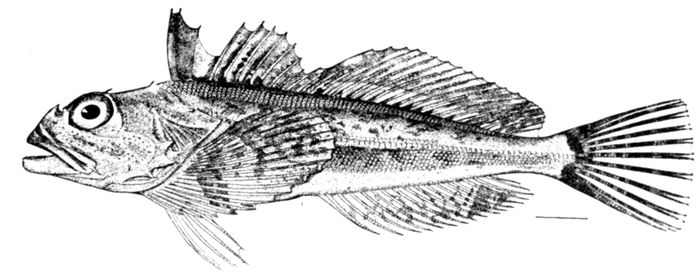
Fig. 383.—Irish Lord, Hemilepidotus jordani Bean. Unalaska.

Fig. 384.—Triglops pingeli Kröyer. Chebucto, Canada.
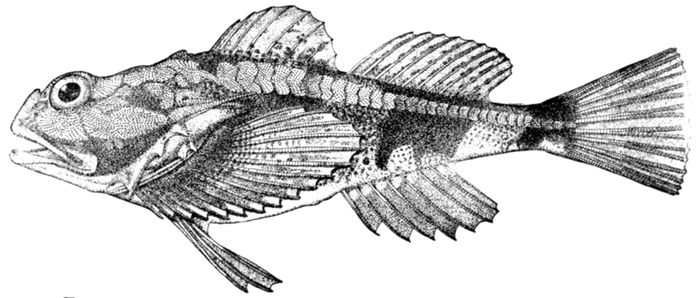
Fig. 335.—Buffalo Sculpin, Enophrys bison (Girard). Puget Sound.
To Icelinus, Artedius, Hemilepidotus, Astrolytes, and related
genera belong many species with the body partly scaled. These
are characteristic of the North Pacific, in which they drop to
a considerable depth. Icelus, Triglops, and Artediellus are
found also in the North Atlantic, the Arctic fauna of which is
derived almost entirely from Pacific sources. The genus Hemilepidotus
contains coarse species, with bands of scales. The
"Irish lord," Hemilepidotus jordani, a familiar and fantastic
inhabitant of Bering Sea, is much valued by the Aleuts as a
food-fish, although the flesh is rather tough and without much
flavor. Almost equally common in Bering Sea is the red sculpin,
Hemilepidotus hemilepidotus, and the still rougher Ceratocottus
diceraus. The stone-sculpin, or buffalo-sculpin, Enophrys
bison, with bony plates on the side and rough horns on the preopercle,
is found about Puget Sound and southward. In all
these large rough species from the North Pacific the preopercle
444is armed with long spines which are erected when the fish is
disturbed. This makes it almost impossible for any larger
fish to swallow them.
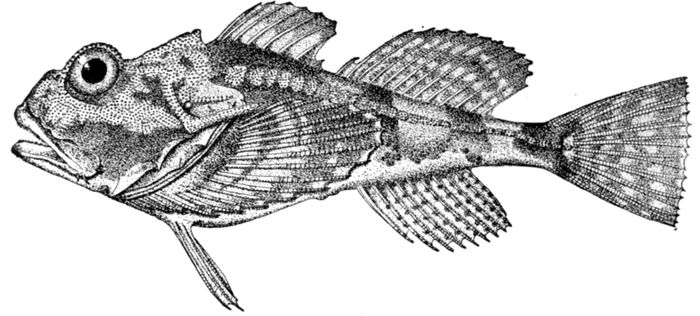
Fig. 386.—Ceratocottus diceraus (Cuv. & Val.). Tolstoi Bay, Alaska.

Fig. 387.—Elanura forficata Gilbert. Bering Sea.

Fig. 388.—Yellowstone Miller's Thumb, Cottus punctulatus (Gill). Yellowstone River.
The genera Cottus and Uranidea include the miller's thumbs,
also called in America, blob and muffle-jaws, of the Northern
rivers. These little fishes are found in Europe, Asia, and America
wherever trout are found. They lurk under weeds and stones,
moving with the greatest swiftness when disturbed. They are
found in every cold stream of the region north of Virginia, and
they vie with the sticklebacks in their destruction of the eggs
445and fry of salmon and trout. Cottus gobio is the commonest
species of Europe. Cottus ictalops is the most abundant of the
several species of the eastern United States, and Cottus asper in
streams of the Pacific Coast, though very many other species
exist in each of these regions. The genus Uranidea is found
in America. It is composed of smaller species with fewer
teeth and fin-rays, the ventrals I, 3. Uranidea gracilis is the
commonest of these, the miller's thumb of New England.
Rheopresbe fujiyamæ is a large river sculpin in Japan.

Fig. 389.—Miller's Thumb, Uranidea tenuis Evermann & Meek. Klamath Falls.
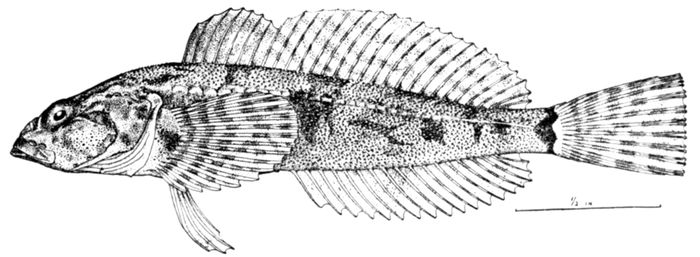
Fig. 390.—Cottus evermanni Gilbert. Lost River, Oregon.
Trachidermus ansatus is another river species, the "mountain-witch"
(yamanokami) of Japan, remarkable for a scarlet
brand on its cheek, conspicuous in life.
The chief genus of Atlantic sculpins is Myoxocephalus, containing
large marine species, in structure much like the species
of Cottus. Myoxocephalus bubalis is the European fatherlasher,
or proach; the European sculpin is Myoxocephalus scorpius.
The very similar daddy sculpin of New England is Myoxocephalus
grœnlandicus. This species swarms everywhere from Cape
Cod northward.
446
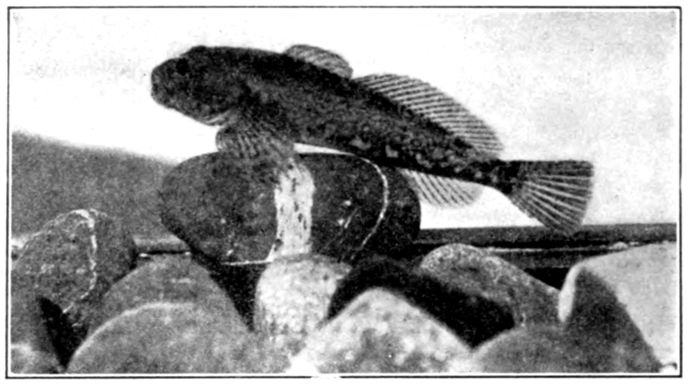
Fig. 391.—California Miller's Thumb, Cottus gulosus Girard. McCloud River, Cal. (Photograph by Cloudsley Rutter.)
According to Fabricius, Myoxocephalus grœnlandicus is
"abundant in all the bays and inlets of Greenland, but prefers a
stony coast clothed with seaweed. It approaches the shore in
spring and departs in winter. It is very voracious, preying on
everything that comes in its way and pursuing incessantly the
smaller fish, not sparing the young of its own species, and devouring
crustacea and worms. It is very active and bold, but does
not come to the surface unless it be led thither in pursuit of
other fish. It spawns in December and January and deposits
its red-colored roe on the seaweed. It is easily taken with a
bait, and constitutes the daily food of the Greenlanders, who
are very fond of it. They eat the roe raw."
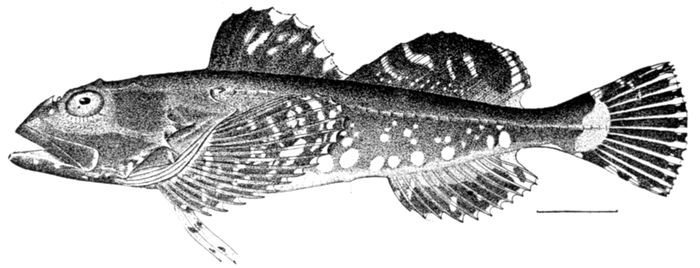
Fig. 392.—Pribilof Sculpin, Myoxocephalus niger (Bean). St. Paul Island, Bering Sea.
The little sculpin, or grubby, of the New England coast is
Myoxocephalus æneus, and the larger eighteen-spined sculpin is
Myoxocephalus octodecimspinosus. Still more numerous and
447varied are the sculpins of the North Pacific, Myoxocephalus
polyacanthocephalus being the best known and most widely
diffused. Oncocottus quadricornis is the long-horned sculpin of
the Arctic Europe, entering the lakes of Russia and British
America. Triglopsis thompsoni of the depths in our own Great
Lakes seems to be a dwarfed and degenerate descendant of
Oncocottus.
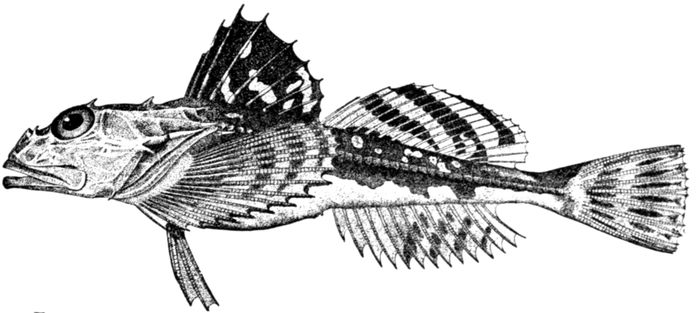
Fig. 393.—18-spined Sculpin, Myoxocephalus octodecimspinosus (Mitchill). Beasley Point, N. J.
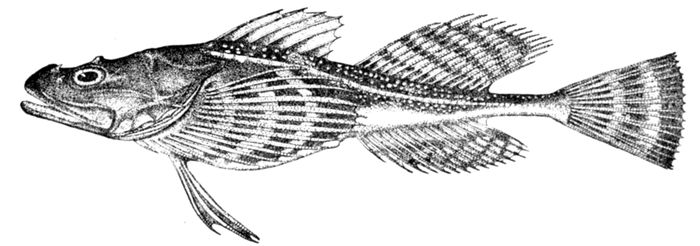
Fig. 394.—Oncocottus quadricornis (L.). St. Michael, Alaska.
The genus Zesticelus contains small soft-bodied sculpins from
the depths of the North Pacific. Zesticelus profundorum was
taken in 664 fathoms off Bogoslof Island and Zesticelus bathybius
off Japan. In this genus the body is very soft and the skeleton
feeble, the result of deep-sea life. Another deep-water genus less
degraded is Cottunculus, from which by gradual loss of fins the
still more degraded Psychrolutes (paradoxus) and Gilbertidia
(sigolutes) are perhaps descended. In sculpins of this type the
liparids, or sea-snails, may have had their origin. Among the
448remaining genera Gymnocanthus (tricuspis, etc.) has no vomerine
teeth. Leptocottus (armatus) and Clinocottus (analis) abound
on the coast of California, and Pseudoblennius (percoides) is
found everywhere along the shores of Japan. Vellitor centropomus
of Japan is remarkable among sculpins for its compressed
body and long snout. Dialarchus snyderi of the California rock-pools
is perhaps the smallest species of sculpin, Blepsias (cirrhosus),
Nautichthys (oculofasciatus), and Hemitripterus (americanus),
the sea-raven, among the most fantastic. In the last-named
genus the spinous dorsal is many-rayed, as in Scorpænidæ,
a fact which has led to its separation by Dr. Gill as a distinct
family. But the dorsal spines are equally numerous in
Jordania, which stands at the opposite extreme of the cottoid
series.
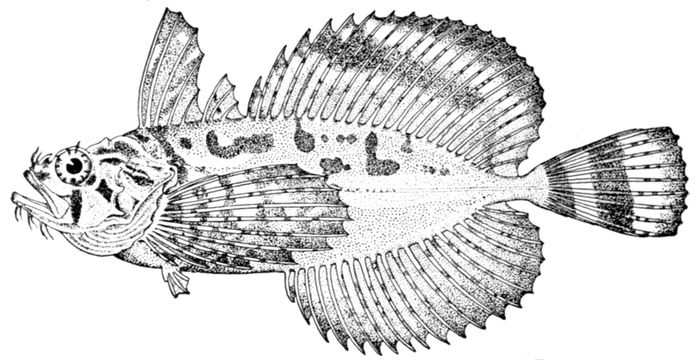
Fig. 395.—Blepsias cirrhosus Pallas. Straits of Fuca.
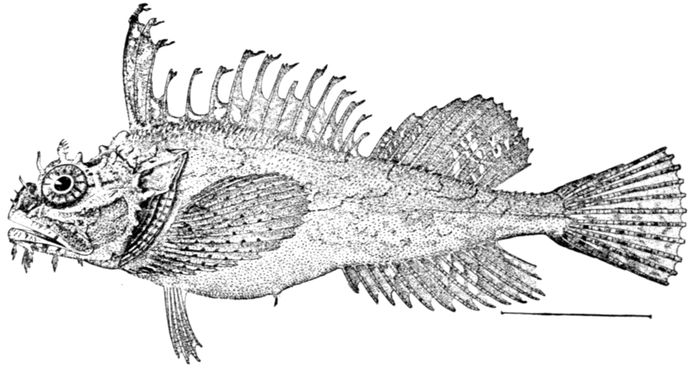
Fig. 396.—Sea raven, Hemitripterus americanus (Gmelin). Halifax, Nova Scotia.
449

Fig. 397.—Oligocottus maculosus Girard. Sitka.
In Ascelichthys (rhodorus), a pretty sculpin of the rock-pools
of the Oregon region, the ventral fins are wholly lost. Ereunias
grallator, a deep-water sculpin from Japan, without ventrals and
with free rays below its pectorals, should perhaps represent a
distinct family, Ereuniidæ.
The degeneration of the spinous dorsal in Psychrolutes and Gilbertidia
of the North Pacific has been already noticed. These
genera seem to lead directly from Cottunculus to Liparis.
Fossil Cottidæ are few. Eocottus veronensis, from the Eocene
of Monte Bolca, is completely scaled, with the ventral rays I, 5.
It is apparently related to Jordania, but is still more primitive.
Lepidocottus (aries and numerous other species, mostly from the
Miocene) is covered with scales, but apparently has less than
five soft rays in the ventrals. Remains of Oncocottus, Icelus,
and Cottus are found in Arctic Pleistocene rocks. The family
as a whole is evidently of recent date.
The Rhamphocottidæ consist of a single little sculpin with a
large bony and singularly formed head, found on the Pacific
Coast from Sitka to Monterey. The species is called Rhamphocottus
richardsoni.
The Sea-poachers: Agonidæ.—The sea-poachers or alligator-fishes,
Agonidæ, are sculpins inclosed in a coat of mail made by
a series of overlying plates, much like those of the sea-horses or
the catfishes of the family Loricariidæ. So far as structure
goes, these singular fishes are essentially like the Cottidæ, but
with a different and more perfect armature. The many species
belong chiefly to the North Pacific, a few in the Atlantic and on
the coast of Patagonia. Some are found in considerable depth of
water. All are too small to have value as food and some have
most fantastic forms. Only a few of the most prominent need
be noticed. The largest and most peculiar species is Percis
japonicus of the Kurile Islands. Still more fantastic is the
Japanese Draciscus sachi with sail-like dorsal and anal. Agonus
cataphractus, the sea-poacher, is the only European species.
Podothecus acipenserinus, the alligator-fish, is the commonest
species of the North Pacific. Pallasina barbata is as slender as
a pipefish, with a short beard at the chin. Aspidophoroides
monopterygius of the Atlantic and other similar species of the
Pacific lack the spinous dorsal fin.
450
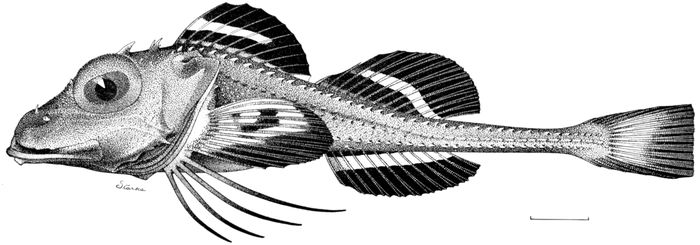
Fig. 398.—Ereunias grallator Jordan & Snyder. Misaki, Japan.
451

Fig. 399.—Sleek Sculpin, Psychrolutes paradoxus (Günther). Puget Sound.

Fig. 400.—Gilbertidia sigolutes (Jordan). Puget Sound.
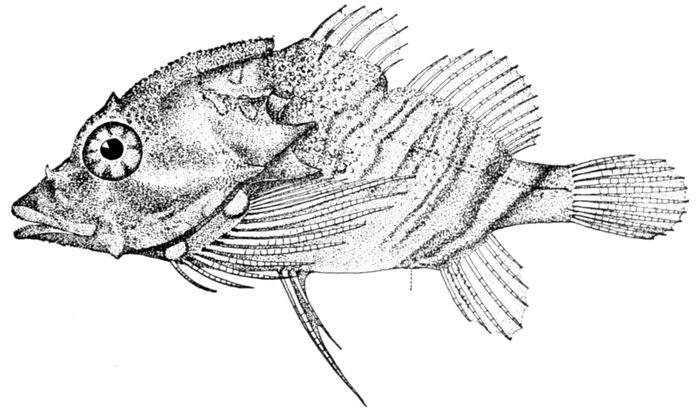
Fig. 401.—Richardson's Sculpin, Rhamphocottus richardsoni (Günther). Puget Sound.

Fig. 402.—Stelgis vulsus (Jordan & Gilbert). Point Reyes, Cal.
452
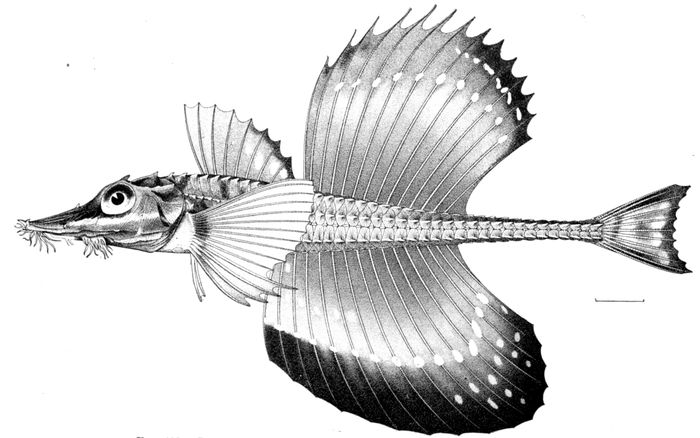
Fig. 403.—Draciscus sachi Jordan & Snyder. Family Agonidæ. Aomori, Japan.
453

Fig. 404.—Agonoid-fish, Pallasina barbata (Steindachner). Port Mulgrave, Alaska.

Fig. 405.—Aspidophoroides monopterygius (Bloch). Halifax.
No fossil Agonidæ are known.
The Lump-suckers: Cyclopteridæ.—The lump-suckers, Cyclopteridæ,
are structurally very similar to the Cottidæ, but of very
different habit, the body being clumsy and the movements
very slow. The ventral fins are united to form a sucking disk
by which these sluggish fishes hold fast to rocks. The skeleton
is feebly ossified, the spinous dorsal fin wholly or partly lost,
the skin smooth or covered with bony warts. The slender
suborbital stay indicates the relation of these fishes with the
Cottidæ. The species are chiefly Arctic, the common lumpfish
or "cock and hen paddle," Cyclopterus lumpus, abounding
on both shores of the North Atlantic. It reaches a length of
twenty inches, spawning in eel-grass where the male is left to
454watch the eggs. Cyclopterichthys ventricosus is a large species
with smooth skin from the North Pacific.
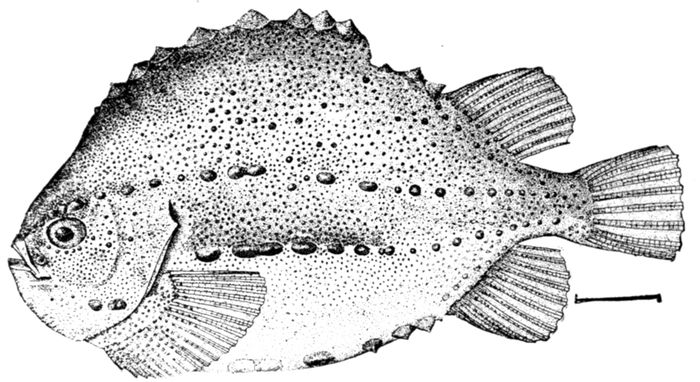
Fig. 406.—Lumpfish, Cyclopterus lumpus (Linnæus). Eastport, Me.
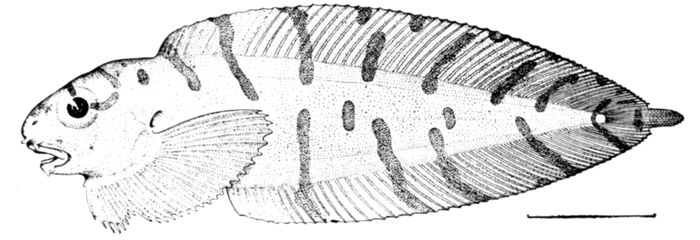
Fig. 407.—Liparid, Crystallias matsushimæ, (Jordan and Snyder). Family Liparididæ. Matsushima Bay, Japan.
The Sea-snails: Liparididæ.—The sea-snails, Liparididæ are
closely related to the lumpfishes, but the body is more elongate,
tadpole shaped, covered with very lax skin, like the "wrinkled
skin on scalded milk." In structure the liparids are still more
degenerate than the lumpfishes. Even the characteristic ventral
disk is lost in some species (Paraliparis; Amitra) and in
numerous others the tail is drawn out into a point (leptocercal),
a character almost always a result of degradation. The dorsal
spines are wanting or imbedded in the loose skin, and all trace
of spines on the head is lost, but the characteristic suborbital
stay is well developed. The numerous species are all small,
three to twelve inches in length. They live in Arctic waters,
455often descending to great depths, in which case the body is very
soft. One genus, Enantioliparis, is found in the Antarctic. In
the principal genus, Liparis, the ventral disk is well developed,
and the spinous dorsal obsolete. Liparis liparis is found on
both shores of the North Atlantic, and is subject to large variations
in color. Liparis agassizi is abundant in Japan and northward,
and Liparis pulchellus in California. In the most primitive
genus, Neoliparis, a notch in the fin indicates the separation
of the spinous dorsal. Neoliparis montagui is common in Europe,
replaced in New England by Neoliparis atlanticus. Careproctus,
with numerous elongate species, inhabits depths of the North
Pacific. In Paraliparis (or Hilgendorfia) ulochir, the ventral
disk is gone and the lowest stage of degradation of the
Loricate or Scorpæna-Cottus type of fishes is reached. No fossil
lump-suckers or liparids are recorded, although remains of
Cyclopterus lumpus are found in nodules of glacial clay in
Canada.

Fig. 408.—Snailfish, Neoliparis mucosus (Ayres). San Francisco.
The Baikal Cods: Comephoridæ.—The family of Comephoridæ
includes Comephorus baikalensis, a large fresh-water fish of
Lake Baikal in Siberia, having no near affinities with any other
existing fish, but now known to be a mail-cheek fish related to
the Cottidæ. The body is elongate, naked, with soft flesh and
feeble skeleton. The mouth is large, with small teeth, and
the skull has a cavernous structure. There are no ventral
fins. The spinous dorsal is short and low, the second dorsal
and anal many-rayed, and the pectoral fins are excessively long,
almost wing-like; the vertebræ number 8 + 35 = 43, and unlike
most fresh-water fishes, the species has no air-bladder. Little
is known of the habits of this singular fish. Another genus is
recently described under the name of Cottocomephorus.
456Suborder Craniomi: the Gurnards, Triglidæ.—A remarkable offshoot
from the Pareioplitæ is the suborder of gurnards, known
as Craniomi (κράνιον, skull; ὤμος, shoulder). In these fishes
the suborbital stay is highly developed, much as in the Agonidæ,
bony externally and covering the cheeks. The shoulder-girdle
is distorted, the post-temporal being solidly united to the cranium,
while the postero-temporal is crowded out of place by
the side of the proscapula. In other regards these fishes resemble
the other mail-cheek forms, their affinities being perhaps closest
with the Agonidæ or certain aberrant Cottidæ as Ereunias.
In the true gurnards or Triglidæ the head is rough and
bony, the body covered with rough scales and below the pectoral
fin are three free rays used as feelers by the fish as it creeps
along the bottom. These free rays are used in turning over
stones, exploring shells and otherwise searching for food. The
numerous species are found in the warm seas. In Europe,
the genus Trigla, without palatine teeth and with the lateral
line armed, is represented by numerous well-known species.
Trigla cuculus is a common form of the Mediterranean. Chelidonichthys,
similar to Trigla but larger and less fully armed, is
found in Asia as well as in Europe. Several species occur in the
Mediterranean. Chelidonichthys kumu is a common species in
Japan, a large fish with pectorals of a very brilliant variegated
blue, like the wings of certain butterflies.
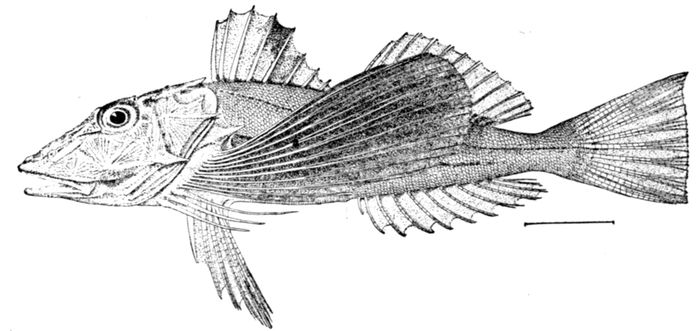
Fig. 409.—Sea-robin, Prionotus evolans (L.). Wood's Hole, Mass.
Lepidotrigla, with larger scales, has many species on the
coasts of Europe as well as in China and Japan. Lepidotrigla
457alata, a red fish with a peculiar bony, forked snout, is common
in Japan. The American species of gurnards, having teeth
on the palatine, belong to the genus Prionotus. Northward
these fishes, known as sea-robins, live along the shores in
shallow water. In the tropics they descend to deeper water,
assuming a red color. Prionotus carolinus is the commonest
species in New England. Prionotus strigatus, the striped sea-robin,
and Prionotus tribulus, the rough-headed sea-robin, are
common species along the Carolina coast. None have much
value as food, being dry and bony. Numerous fossil species
referred to Trigla are found in the Miocene. Podopteryx, from
the Italian Miocene, with small pectorals and very large ventrals,
perhaps belongs also to this family, but its real affinities
are unknown.
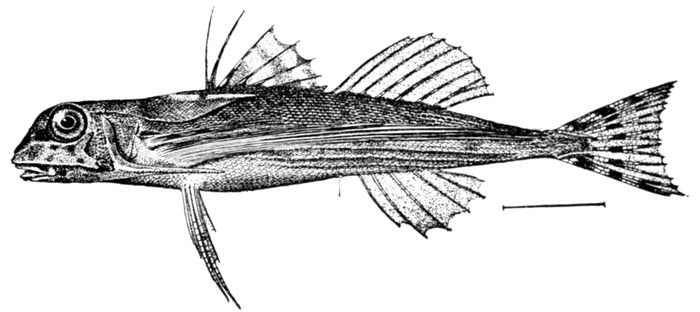
Fig. 410.—Flying Gurnard, Cephalacanthus volitans (L.). Virginia.
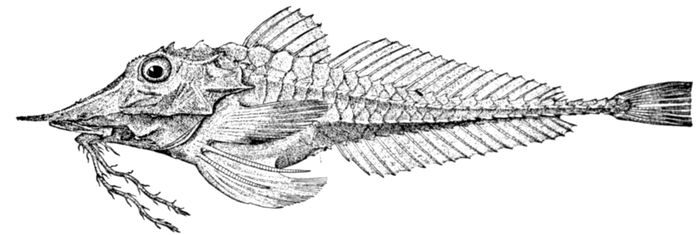
Fig. 411.—Peristedion miniatum Goode & Bean. Depths of the Gulf Stream.
The Peristediidæ.—The Peristediidæ are deep-water sea-robins,
much depressed, with flat heads, a bony coat of mail,
458and two free feelers on the pectoral fin instead of three. The
species of Peristedion are occasionally taken with the dredge.
Peristedion cataphractum is rather common in Europe. The
extinct Peristedion urcianense is described from the Pliocene
of Orciano, Tuscany.
The Flying Gurnards: Cephalacanthidæ.—The flying gurnards,
Cephalacanthidæ, differ in numerous respects and are
among the most fantastic inhabitants of the sea. The head
is short and bony, the body covered with firm scales, and the
very long, wing-like pectoral fin is divided into two parts,
the posterior and larger almost as long as the rest of the body.
This fin is beautifully colored with blue and brownish red. The
first spine of the dorsal fin is free from the others and more
or less prolonged. The few species of flying gurnard are much
alike, ranging widely in the tropical seas, and having a slight
power of flight. The flying robin, or batfish, called in Spanish
volador or murcielago, Cephalacanthus volitans, is common on
both coasts of the Atlantic, reaching a length of eighteen
inches. Cephalacanthus peterseni is found in Japan and Cephalacanthus
orientalis in the East Indies, Japan, and Hawaii. The
immature fishes have the pectoral fins much shorter than in
the adult, and differ in other regards. Cephalacanthus pliocenicus
occurs in the Lower Pliocene of Orciano, Tuscany.
Petalopteryx syriacus, an extinct flying gurnard found in
the Cretaceous of Mount Lebanon, is an ally of Cephalacanthus.
The body is covered with four-angled bony plates, and the
first (free) spine of the dorsal is enlarged.
459
CHAPTER XXVI
GOBIOIDEI, DISCOCEPHALI, AND TÆNIOSOMI
Suborder Gobioidei, the Gobies: Gobiidæ.—The great
family of Gobiidæ, having no near relations among
the spiny-rayed fishes, may be here treated as forming
a distinct suborder.
The chief characteristics of the family are the following:
The ventral fins are thoracic in position, each having one spine
and five soft rays, in some cases reduced to four, but never
wanting. The ventral fins are inserted very close together,
the inner rays the longest, and in most cases the two fins are
completely joined, forming a single roundish fin, which may be
used as a sucking-disk in clinging to rocks. The shoulder-girdle
is essentially perch-like in form, the cranium is usually depressed,
the bones being without serrature. There is no lateral line,
the gill-openings are restricted to the sides, and the spinous
dorsal is always small, of feeble spines, and is sometimes
altogether wanting. There is no bony stay to the preopercle.
The small pharyngeals are separate, and the vertebræ usually
in normal number, 10 + 14 = 24.
The species are excessively numerous in the tropics and
temperate zones, being found in lakes, brooks, swamps, and
bays, never far out in the sea, and usually in shallow water.
Many of them burrow in the mud between or below tide-marks.
Others live in swift waters like the darters, which they much
resemble. A few reach a length of a foot or two, but most
of the species rarely exceed three inches, and some of them
are mature at half an inch.
The largest species, Philypnus dormitor, the guavina de
rio, is found in the rivers of Mexico and the West Indies.
It reaches a length of nearly two feet and is valued as
food. Unlike most of the others, in this species there are
460teeth on the vomer. Other related forms of the subfamily
of Eleotrinæ, having the ventral fins separate, are Eleotris
pisonis, a common river-fish everywhere in tropical America;
Eleotris fusca, a river-fish abounding from Tahiti and Samoa
to Hindostan; Dormitator maculatus, the stout-bodied guavina-mapo
of the West Indian regions, with the form of a small
carp. Guavina guavina of Cuba is another species of this type,
and numerous other species having separate ventrals are found
in the East Indies, the West Indies, and in the islands of Polynesia.
Some species, as Valenciennesia strigata of the East
Indies and Vireosa hanæ of Japan, are very gracefully colored.
One genus, Eviota, is composed of numerous species, all minute,
less than an inch in length. These abound in the crevices in
coral-heads. Eviota epiphanes is found in Hawaii, the others
farther south. Hypseleotris guntheri, of the rivers and springs
of Polynesia, swims freely in the water, like a minnow, never
hugging the bottom as usual among gobies.
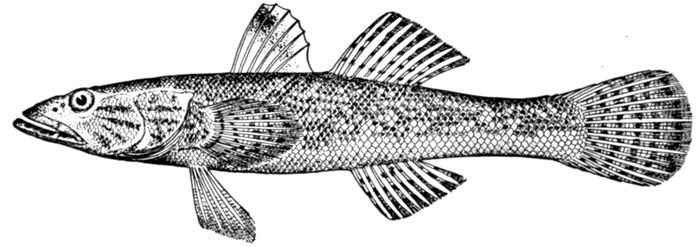
Fig. 412.—Guavina de Rio, Philypnus dormitor (Bloch & Schneider). Puerto Rico.
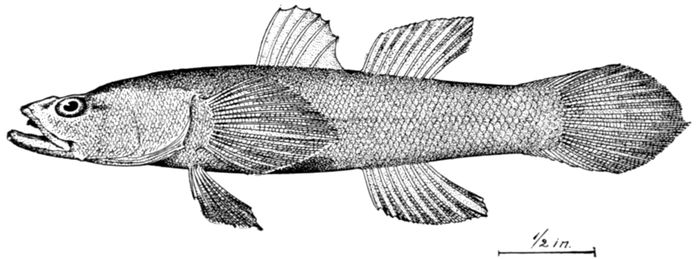
Fig. 413.—Dormeur, Eleotris pisonis Gmelin. Tortugas, Fla.
461

Fig. 414.—Guavina mapo, Dormitator maculatus (Schneider). Puerto Rico.

Fig. 415.—Vireosa hanæ Jordan & Snyder. Misaki, Japan.
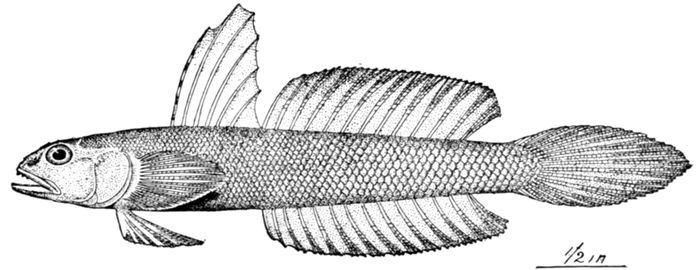
Fig. 416.—Esmeralda de Mar, Gobionellus oceanicus (Pallas). Puerto Rico.
Of the typical gobies having the ventrals united we can
mention but a few of the myriad forms, different species being
abundant alike in fresh and salt waters in all warm regions.
In Europe Gobius jozo, Gobius ophiocephalus, and many others
are common species. The typical genus Gobius is known by
its united ventrals, and by the presence of silken free rays on
the upper part of the pectoral fin. Mapo soporator swarms
about coral reefs in both Indies. Gobionellus oceanicus, the
462esmeralda or emerald-fish, is notable for its slender body
and the green spot over its tongue. Gobiosoma alepidotum
and other species are scaleless. Barbulifer ceuthœcus lives in
the cavities of sponges. Coryphopterus similis, a small goby,
swarms in almost every brook of Japan. The species of Pterogobius
are beautifully colored, banded with white or black, or
striped with red or blue. Pterogobius virgo and Pterogobius
daimio of Japan are the most attractive species. Species of
Cryptocentrus are also very prettily colored.
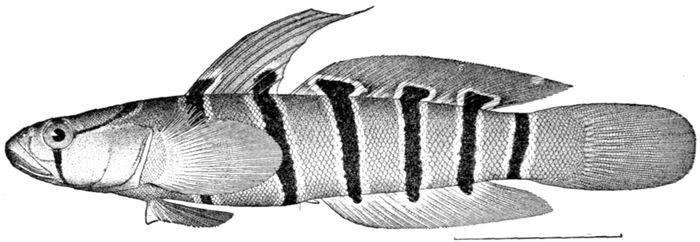
Fig. 417.—Pterogobius daimio Jordan & Snyder. Misaki, Japan.
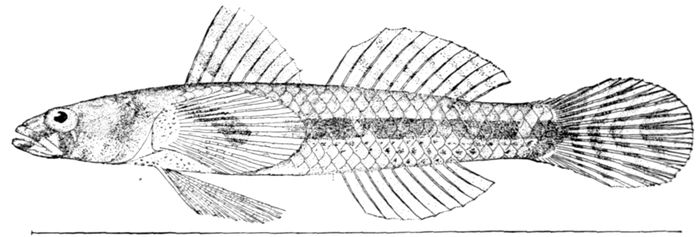
Fig. 418.—Darter Goby, Aboma etheostoma Jordan. Mazatlan, Mex.
Of the species burrowing in mud the most interesting is
the long-jawed goby, Gillichthys mirabilis. In this species
the upper jaw is greatly prolonged, longer than the head, as in
Opisthognathus and Neoclinus. In the "American Naturalist"
for August, 1877, Mr. W. N. Lockington says of the long-jawed
goby:
"I call it the long-jawed goby, as its chief peculiarity consists
in its tremendous length of jaw. A garpike has a long jaw,
and so has an alligator, and it is not unlikely that the title will
call up in the minds of some who read this the idea of a terrible
463mouth, armed with a bristling row of teeth. This would be
a great mistake, for our little fish has no teeth worth bragging
about, and does not open his mouth any wider than a well-behaved
fish should do. The great difference between his
long jaws and those of a garpike is that the latter's project
forward, while those of our goby are prolonged backward
immensely.
"The long-jawed goby was discovered by Dr. J. G. Cooper
in the Bay of San Diego, among seaweed growing on small
stones at the wharf, and in such position that it must have
been out of the water from three to six hours daily, though
kept moist by the seaweed.

Fig. 419.—Long-jawed Goby. Gillichthys mirabilis Cooper. Santa Barbara.
"On a recent occasion a single Gillichthys, much larger than
any of the original types, was presented by a gentleman who
said that the fish, which was new to him, was abundant upon
his ranch in Richardson's Bay, in the northern part of the
Bay of San Francisco; that the Chinamen dug them up and
ate them, and that he had had about eleven specimens cooked,
and found them good, tasting, he thought, something like eels.
The twelfth specimen he had preserved in alcohol, in the interest
of natural science. This gentleman had the opportunity of
observing something of the mode of life of these fishes, and
informed us that their holes, excavated in the muddy banks of
tidal creeks, increase in size as they go downward, so that the
lower portion is below the water-level, or at least sufficiently low
to be kept wet by the percolation from the surrounding mud.
"When the various specimens now acquired were placed side
by side, the difference in the relative length of their jaws was
very conspicuous, for while in the smallest it was about one-fifth
of the total length, in the largest it exceeded one-third.
"As the fish had now been found in two places in the bay,
464I thought I would try to find it also, and to this end sallied
out one morning, armed with a spade, and commenced prospecting
in a marsh at Berkeley, not far from the State University.
For a long time I was unsuccessful, as I did not know by
what outward signs their habitations could be distinguished,
and the extent of mud-bank left bare by the retreating tide
was, as compared with my powers of delving, practically limitless.
"At last, toward evening, while digging in the bend of a
small creek, in a stratum of soft, bluish mud, and at a depth of
about a foot below a small puddle, I found five small fishes,
which at first I believed to belong to an undescribed species,
so little did they resemble the typical G. mirabilis, but which
proved, upon a closer examination, to be the young of that
species. There was the depressed, broad head, the funnel-shaped
ventral 'disk' formed by the union of the two ventral
fins, and the compressed tail of the long-jawed goby, but where
were the long jaws? The jaws were, of course, in their usual
place, but their prolongations had only just begun to grow along
the sides of the head, and were not noticeable unless looked for.
A comparison of the various specimens proved conclusively
that the strange-looking appendage is developed during the
growth of the fish, as will be seen by the following measurements
of four individuals:
"In the smallest specimen the maxillary expansion extends
beyond the orbit for a distance about equal to that which intervenes
between the anterior margin of the orbit and the tip of
the snout; in No. 2 it reaches to the posterior margin of the
preoperculum; in No. 3 it ends level with the gill-opening;
while in the largest individual it passes the origin of the pectoral
and ventral fins.
"What can be the use of this long fold of skin and cartilage,
which is not attached to the head except where it joins the
mouth, and which, from its gradual development and ultimate
large dimensions, must certainly serve some useful purpose?
"Do not understand that I mean that every part of a creature
is of use to it in its present mode of life, for, as all naturalists
know, there are in structural anatomy, just as in social
life, cases of survival; remains of organs which were at some
465former time more developed, parallel in their nature to such
survivals in costume as the two buttons on the back of a man's
coat, once useful for the attachment of a sword-belt. But in
this fish we have no case of survival, but one of unusual development;
the family (Gobiidæ) to which it belongs presents no
similar case, although its members have somewhat similar
habits, and the conviction grows upon us, as we consider the
subject, that the long jaws serve some useful purpose in the
economy of the creature. In view of the half-terrestrial life
led by this fish, I am inclined to suspect that the expansion of
the upper jaw may serve for the retention of a small quantity of
water, which, slowly trickling downward into the mouth and gills,
keeps the latter moist when, from an unusually low tide or a
dry season, the waters of its native creek fail, perhaps for several
hours, to reach the holes in which the fishes dwell. It may be
objected to this view that, were such an appendage necessary or
even useful, other species of Gobiidæ, whose habits are similar,
would show traces of a similar adaptation. This, however, by
no means follows. Nature has many ways of working out the
same end; and it must be remembered that every real species,
when thoroughly known, differs somewhat in habits from its
congeners, or at least from its family friends. To take an
illustration from the mammalia. The chimpanzee and the
spider-monkey are both quadrumanous and both arboreal, yet
the end which is attained in the former by its more perfect
hands is reached in the latter by its prehensile tail.
"Why may not the extremely long channel formed by the
jaw of this rather abnormal member of the goby family be
another mode of provision for the requirements of respiration?"
Of the Asiatic genera, Periophthalmus and Boleophthalmus
are especially notable. In these mud-skippers the eyes are
raised on a short stalk, the fins are strong, and the animal has
the power of skipping along over the wet sands and mud, even
skimming with great speed over the surface of the water. It
chases its insect prey among rocks, leaves, and weeds, and out
of the water is as agile as a lizard. Several species of these
mud-skippers are known on the coasts of Asia and Polynesia,
Periophthalmus barbarus and Boleophthalmus chinensis being
the best known. Awaous crassilabris is the common oopu, or
466river goby, of the Hawaiian streams, and Lentipes stimpsoni is
the mountain oopu, capable of clinging to the rocks in the
rush of torrents. Paragobiodon echinocephalus is a short thick-set
goby with very large head, found in crevices of coral reefs
of Polynesia.

Fig. 420.—Pond-skipper, Boleophthalmus chinensis (Osbeck). Bay of Tokyo, Japan. (Eye-stalks sunken in preservation.)
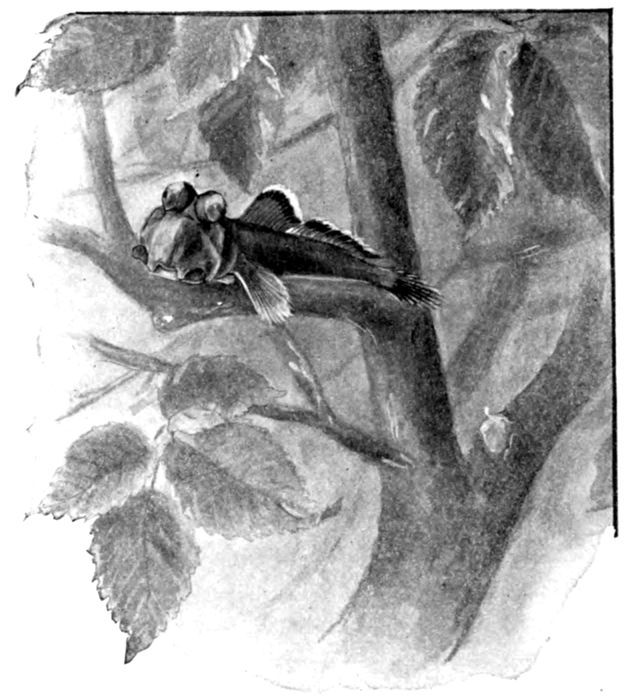
Fig. 421.—Mud-skippy, Periophthalmus oarbarus (L.). Mouth of Vaisigono River, Apia, Samoa.
In numerous interesting species the first dorsal fin is wanting
or much reduced. The crystal goby, Crystallogobius nilssoni,
of Europe is one of this type, with the body translucent. Equally
467translucent is the little Japanese shiro-uwo, or whitefish, Leucopsarion
petersi. Mistichthys luzonius of the Philippine Islands,
another diaphanous goby, is said to be the smallest of all vertebrates,
being mature at half an inch in length. This minute
fish is so very abundant as to become an important article of
food in Luzon. The rank of "smallest-known vertebrate" has
been claimed in turn for the lancelet (Asymmetron lucayanum),
the top minnow, Heterandria formosa, and the dwarf sunfish
(Elassoma zonatum). Mistichthys luzonius is smaller than any
of these, but the diminutive gobies, called Eviota, found in
interstices of coral rocks are equally small, and there are several
brilliant but minute forms in the reefs of Samoa. The snake-like
Eutæniichthys gilli of Japanese rivers is scarcely larger, though
over an inch long. Typhlogobius californiensis, "the blindfish
of Point Loma," is a small goby, colorless and blind, found
clinging in dark crevices of rock about Point Loma and Dead
Man's Island in southern California.

Fig. 422.—Eutæniichthys gillii Jordan & Snyder. Tokyo, Japan.
Its eyes are represented by mere rudiments, their loss being
evidently associated with the peculiar habit of the species,
which clings to the under side of stones in relative darkness,
though in very shallow water. The flesh is also colorless, the
animal appearing pink in life.
In the Japanese species Luciogobus guttatus, common under
stones and along the coast, the spinous dorsal, weak in numerous
other species, finally vanishes altogether. Other gobies
are band-shaped or eel-shaped, the dorsal spines being continuous
with the soft rays. Among these are the barreto of Cuba,
Gobioides broussoneti, and in Japan Tænioides lacepedei and
Trypauchen wakæ, the latter species remarkable for its strong
canines. Fossil gobies are practically unknown. A few fragments,
otoliths, and partial skeletons in southern Europe have
been referred to Gobius, but no other genus is represented.
468The family of Oxudercidæ contains one species, Oxuderces
dentatus, a small goby-like fish from China. It is an elongate
fish, without ventral fins, and with very short dorsal and anal.
Suborder Discocephali, the Shark-suckers: Echeneididæ.—Next
to the gobies, for want of a better place, we may mention the
singular group of Discocephali (δίσκος, disk; κεφαλή, head).
In this group the first dorsal fin is transformed into a peculiar
laminated sucking-disk, which covers the whole top of the head
and the nape. In other respects the structure does not diverge
very widely from the percoid type, there being a remarkable resemblance
in external characters to the Scombroid genus Rachycentron.
But the skeleton shows no special affinity to Rachycentron
or to any perciform fish. The basis of the cranium is
simple, and in the depression of the head with associated modifications
the Discocephali approach the gobies and blennies
rather than the mackerel-like forms.

Fig. 423.—Sucking-fish, or Pegador, Leptecheneis naucrates (Linnæus). Virginia.
The Discocephali comprise the single family of shark-suckers
or remoras, the Echeneididæ. All the species of this group
are pelagic fishes, widely diffused in the warm seas. All cling
by their cephalic disks to sharks, barracudas, and other free-swimming
fishes, and are carried about the seas by these. They
do not harm the shark except by slightly impeding its movement.
They are carnivorous fishes, feeding on sardines, young
herring, and the like. When a shark, taken on the hook, is
drawn out of the water the sucking-fish leaves it instantly,
and is capable of much speed in swimming on its own account.
These fishes are all dusky in color, the belly as dark as the back,
so as to form little contrast to the color of the shark.
The commonest species, Leptecheneis naucrates, called pegapega
or pegador in Cuba, reaches a length of about two feet
and is almost cosmopolitan in its range, being found exclusively
on the larger sharks, notably on Carcharias lamia. It has
46920 to 22 plates in its disk, and the sides are marked by a dusky
lateral band.
Almost equally widely distributed is the smaller remora,
or shark-sucker (Echeneis remora), with a stouter body and
about 18 plates in the cephalic disk. This species is found
in Europe, on the coast of New York, in the West Indies,
in California, and in Japan, but is nowhere abundant. Another
widely distributed species is Remorina albescens with 13 plates
in its disk. Remoropsis brachyptera, with 15 plates and a long
soft dorsal, is also occasionally taken. Rhombochirus osteochir
is a rare species of the Atlantic with 18 plates, having the pectoral
rays all enlarged and stiff. The louse-fish (Phtheirichthys
lineatus) is a small and slender remora having but 10 plates
in its disk. It is found attached, not to sharks, but to barracudas
and spearfishes.

Fig. 424.—Rhombochirus osteochir (Cuv. & Val.). Wood's Hole, Mass.
A fossil remora is described from the Oligocene shales in
Glarus, Switzerland, under the name of Opisthomyzon glaronensis.
It is characterized by the small disk posteriorly inserted.
Its vertebræ are 10 + 13 = 24 only. Dr. Storms gives the following
account of this species:
"A careful comparison of the proportion of all the parts
of the skeleton of the fossil Echeneis with those of the living
forms, such as Echeneis naucrates or Echeneis remora, shows
that the fossil differs nearly equally from both, and that it was
a more normally shaped fish than either of these forms. The
head was narrower and less flattened, the preoperculum wider,
but its two jaws had nearly the same length. The ribs, as
also the neural and hæmal spines, were longer, the tail more
forked, and the soft dorsal fin much longer. In fact it was
a more compressed type, probably a far better swimmer than
470its living congeners, as might be expected if the smallness of
the adhesive disk is taken into account."
Concerning the relations of the Discocephali Dr. Gill has
the following pertinent remarks:
"The family of Scomberoides was constituted by Cuvier for
certain forms of known organization, among which were fishes
evidently related to Caranx, but which had free dorsal spines.
Dr. Günther conceived the idea of disintegrating this family
because, inter alias, the typical Scomberoides (family Scombridæ)
have more than 24 vertebræ and others (family Carangidæ)
had just 24. The assumption of Cuvier as to the relationship of
Elacate (Rachycentron) was repeated, but inasmuch as it had 'more
than 24 vertebræ' (it had 25 = 12 + 13) it was severed from
the free-spined Carangidæ and associated with the Scombridæ.
Elacate has an elongated body, flattened head, and a longitudinal
lateral band; therefore Echeneis was considered to be
next allied to Elacate and to belong to the same family. The
very numerous differences in structure between the two were
entirely ignored, and the reference of the Echeneis to the Scombridæ
is simply due to assumption piled on assumption. The
collocation need not, therefore, longer detain us. The possession
by Echeneis of the anterior oval cephalic disk in place of a
spinous dorsal fin would alone necessitate the isolation of the
genus as a peculiar family. But that difference is associated
with almost innumerable other peculiarities of the skeleton
and other parts, and in a logical system it must be removed
far from the Scombridæ, and probably be endowed with subordinal
distinction. In all essential respects it departs greatly
from the type of structure manifested in the Scombridæ and
rather approximates—but very distantly—the Gobioidea and
Blennioidea. In those types we have in some a tendency to
flattening of the head, of anterior development of the dorsal
fin, a simple basis cranii, etc. Nevertheless there is no close
affinity, nor even tendency to the extreme modification of the
spinous dorsal exhibited by Echeneis. In view of all these facts
Echeneis, with its subdivisions, may be regarded as constituting
not only a family but a suborder.... Who can consistently
object to the proposition to segregate the Echeneididæ as a suborder
of teleocephalous fishes? Not those who consider that
471the development of three or four inarticulate rays (or even less)
in the front of the dorsal fin is sufficient to ordinarily differentiate
a given form from another with only one or two such. Certainly
the difference between the constituents of a disk and
any rays or spines is much greater than the mere development
or atrophy of articulations. Not those who consider that the
manner of depression of spines, whether directly over the following,
or to the right or left alternately, are of cardinal importance;
for such differences, again, are manifestly of less morphological
significance than the factors of a suctorial disk. Nevertheless
there are doubtless many who will passively resist the proposition
because of a conservative spirit, and who will vaguely
refer to the development of the disk as being a 'teleological modification,'
and as if it were not an actual fact and a development
correlated with radical modifications of all parts of the
skeleton at least. But whatever may be the closest relations
of Echeneis, or the systematic value of its peculiarities, it is
certain that it is not allied to Elacate any more than to hosts
of scombroid, percoid, and kindred fishes, and that it differs in
toto from it notwithstanding the claims that have been made
otherwise. It is true that there is a striking resemblance, especially
between the young—almost as great, for example, as
that between the placental mouse and the marsupial Antechinomys—but
the likeness is entirely superficial, and the scientific
ichthyologist should be no more misled than would be the scientific
therologist by the likeness of the marsupial and placental
mammals."
Suborder Tæniosomi, the Ribbon-fishes.—The suborder Tæniosomi
(ταινία, ribbon; σῶμα, body), or ribbon-fishes, is made
up of strange inhabitants of the open seas, perhaps aberrant
derivatives of the mackerel stock. The body is greatly elongate,
much compressed, extremely fragile, covered with shining
silvery skin. The ribbon-fishes live in the open sea, probably
at no very great depth, but are almost never taken by collectors
except when thrown on shore in storms or when attacked
by other fishes and dragged above or below their depth. When
found they are usually reported as sea-serpents, and although
perfectly harmless, they are usually at once destroyed by their
ignorant captors. The whole body is exceedingly fragile;
472the bones are porous, thin, and light, containing scarcely any
calcareous matter. In the Tæniosomi the ventral fins are
thoracic, formed of one or a few soft rays. More remarkable
is the character of the caudal fin, which is always distorted
and usually not in line with the rest of the body. The teeth
are small. The general structure is not very different from
that of the cutlass-fishes, Trichiuridæ, and other degraded offshoots
from the scombroid group. The species are few and,
from the nature of things, very imperfectly known. Scarcely
any specimens are perfectly preserved. When dried the body
almost disappears, both flesh and bones being composed chiefly
of water.
The Oarfishes: Regalecidæ.—The Regalecidæ, or oarfishes,
have the caudal fin obsolete and the ventrals reduced to long
filaments, thickened at the tip. The species reach a length
of twenty or thirty feet, and from their great size, slender forms,
and sinuous motion have been almost everywhere regarded
as sea-serpents. The very long anterior spines of the dorsal
fin are tipped with red, and the fish is often and not untruthfully
described as a sea-serpent "having a horse's head with
a flaming red mane."
The great oarfish, Regalecus glesne (see Fig. 237, Vol. I) was
long known to the common people of Norway as king of the
herrings, it being thought that to harm it would be to drive
the herring to some other coast. The name "king of the
herrings" went into science as Regalecus, from rex, king, and
halec, herring. The Japanese fancy, which runs in a different
line, calls the creature "Dugunonuatatori," which means the
"cock of the palace under the sea."
The Atlantic oarfish is named Regalecus glesne, from the
Norwegian farm of Glesnæs, where the first recorded specimen,
described by Ascanius, was taken 130 years ago. Since then
the species has been many times found on the shores of Great
Britain and Norway, and once at Bermuda.
In this species the body is half-transparent, almost jelly-like,
light blue in color, with some darker cross-stripes, and the
head has a long jaw and a high forehead, suggesting the head
of a horse. The dorsal fin begins on the head, and the first
473few spines are very long, each having a red tuft on the end.
When the animal is alive these spines stand up like a red
mane.
The creature is harmless, weak in muscle as well as feeble
in mind. It lives in the deep seas, all over the world. After
great storms it sometimes comes ashore. Perhaps this is
because for some reason it has risen above its depth and so
lost control of itself. When a deep-water fish rises to the surface
the change of pressure greatly affects it. Reduction of pressure
bursts its blood-vessels, its swim-bladder swells, if it has one,
and turns its stomach inside out. If a deep-water fish gets
above its depth it is lost, just as surely as a surface fish is when
it gets sunk to the depth of half a mile.
Sometimes, again, these deep-sea fishes rush to the shore
to escape from parasites, crustaceans that torture their soft
flesh, or sharks that would tear it.
Numerous specimens have been found in the Pacific, and
to these several names have been given, but the species are
not at all clearly made out. The oldest name is that of Regalecus
russelli, for the naturalist Patrick Russell, who took a specimen
at Vizagapatam in 1788. I have seen two large examples of
Regalecus in the museum at Tokio, and several young ones
have recently been stranded on the Island of Santa Catalina
in southern California. A specimen twenty-two feet long lately
came ashore at Newport in Orange County, California. The
story of its capture is thus told by Mr. Horatio J. Forgy, of
Santa Ana, California:
"On the 22d of February, 1901, a Mexican Indian reported
at Newport Beach that about one mile up the coast he had
landed a sea-serpent, and as proof showed four tentacles and
a strip of flesh about six feet long. A crowd went up to see
it, and they said it was about twenty feet long and like a fish
in some respects and like a snake in others. Mr. Remsberg
and I, on the following day, went up to see it, and in a short
time we gathered a crowd and with the assistance of Mr. Peabody
prepared the fish and took the picture you have received.
"It measured twenty-one feet and some inches in length,
and weighed about 500 or 600 pounds.
"The Indian, when he reported his discovery, said it was
474alive and in the shallow water, and that he had landed it himself.
"This I very much doubt, but when it was first landed it
was in a fine state of preservation and could have easily been
shipped to you, but he had cut it to such an extent that shipment
or preservation seemed out of the question when we first
saw it.
"At the time it came ashore an unusual number of peculiar
fishes and sharks were found. Among others, I found a small
oarfish about three feet long in a bad state of preservation in
a piece of kelp. One side of it was nearly torn off and the
other side was decayed."
Mr. C. F. Holder gives this account of the capture of oarfishes
in southern California:
"From a zoological point of view the island of Santa Catalina,
which lies eighteen miles off the coast of Los Angeles
County, southern California, is very interesting, many rare
animals being found there. Every winter the dwellers of
the island find numbers of argonaut-shells, and several living
specimens have been secured, one for a time living in the aquarium
which is maintained here for the benefit of students and
the entertainment of visitors. A number of rare and interesting
fishes wander inshore from time to time. Several years
ago I found various Scopeloid fishes, which up to that time
had been considered rare, and during the past few years I have
seen one oarfish (Regalecus russelli) alive, while another was
brought to me dead. From reports I judge that a number of
these very rare fishes have been observed here. The first was
of small size, not over two feet in length, and was discovered
swimming in shallow water along the beach of Avalon Bay.
I had an opportunity to observe the radiant creature before
it died. Its 'topknot'—it can be compared to nothing else—was
a vivid red or scarlet mass of seeming plumes—the dorsal
fins, which merged into a long dorsal fin, extending to the tail.
The color of the body was a brilliant silver sheen splashed with
equally vivid black zebra-like stripes, which gave the fish a
most striking appearance.
"The fish was a fragile and delicate creature, a very ghost
of a fish, which swam along where the water gently lapped
the sands with an undulatory motion, looking like one of its
475names—the ribbon-fish. The fortunate finder of this specimen
could not be persuaded to give it up or sell it, and it was its
fate to be pasted upon a piece of board, dried in the sun as a
'curio,' where, as if in retaliation at the desecration of so rare
a specimen, it soon disappeared.
"This apparently was the first oarfish ever seen in the United
States, so at least Dr. G. Brown Goode wrote me at the time
that it had not been reported. In 1899 another oarfish was
brought to me, evidently having been washed in after a storm
and found within a few yards of the former at Avalon. The
discoverer of this specimen also refused to allow it to be properly
preserved, or to donate or sell it to any one who would have
sent it to some museum, but, believing it valuable as a 'curio,'
also impaled it, the delicate creature evaporating under the
strong heat of the semitropic sun.
"This, as stated, was the second fish discovered, and during
the past winter (1900) a fine large specimen came in at Newport
Beach, being reported by H. J. Forgy, of Santa Ana. The
newspapers announced that a Mexican had found a young sea-serpent
at Newport, and investigation showed that, as in hundreds
of similar instances, the man had found a valuable prize
without being aware of it. According to the account, the
discoverer first saw the fish alive in the surf and hauled it
ashore. Being ignorant of its value, he cut it up, bringing in
a part of the scarlet fins and a slice of the flesh. This he showed
to some men, and led the way to where lay the mutilated remains
of one of the finest oar-or ribbon-fishes ever seen. The specimen
was twenty-one feet in length, and its weight estimated
at five hundred pounds. The finder had so mutilated it that
the fish was ruined for almost any purpose. If he had packed
it in salt, the specimen would have returned him the equivalent
of several months' labor. Apparently the man had cut it up
in wanton amusement.
"This recalls a similar incident. I was on one occasion
excavating at San Clemente Island, and had remarked that
it was a singular fact that all the fine stone ollas were broken.
'Nothing strange about that,' said a half-breed, one of the
party. 'I used to herd sheep here, and we smashed mortars
and ollas to pass away time.'"
476
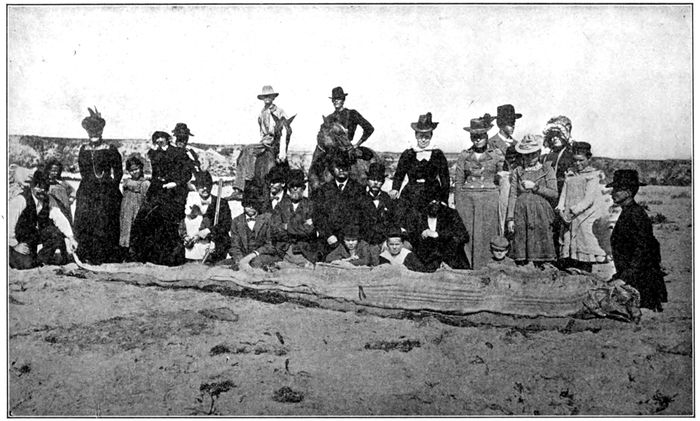
Fig. 425.—Oarfish, Regalecus russelli, on the beach at Newport, Orange Co., Cal. (Photograph by C. P. Remsberg.)
477The Dealfishes: Trachypteridæ.—The family of Trachypteridæ
comprises the dealfishes, creatures of fantastic form and silvery
coloration, smaller than the oarfishes and more common, but of
similar habit.
Just as in Norway the fantastic oarfish was believed to be
the king of the herrings and cherished as such, so among the
Indians of Puget Sound another freak fish is held sacred as the
king of the salmon. The people about Cape Flattery believe
that if one does any harm to this fish the salmon will at once
leave the shores. This fable led the naturalists who first discovered
this fish to give it its name of Trachypterus rex-salmonorum.
In Europe a similar species (Trachypterus atlanticus) has
long been known by the name of dealfish, or vogmar, neither
of these names having any evident propriety.
The dealfish is one of the most singular of all the strange
creatures of the sea. It reaches a length of three or four feet.
Its body is thin as a knife and would be transparent were it
not covered over with a shining white pigment which gives to
the animal the luster of burnished silver. On this white surface
is a large black blotch or two, but no other colors. The head
is something like that of the oarfish, to which animal the dealfish
bears a close relationship. Both have small teeth and
neither could bite if it would, and neither wants to, for they
are creatures of the most inoffensive sort. On the head of the
dealfish, where the oarfish has its mane, is a long, streamer-like
fin. At the end of the tail, instead of the ordinary caudal fin,
is a long, slim fin which projects directly upwards at right
angles to the direction of the back-bone. No other fish shows
this strange peculiarity.
The dealfish swims in the open sea close to the surface of
the water. It does not often come near shore, but it is occasionally
blown on the beach by storms. Trachypterus rex-salmonorum
has been recorded two or three times from Puget
Sound and twice from California. The finest specimen known,
the one from which our figure is taken, was secured off the Farallones
in 1895 by a fisherman named W. C. Knox, and by him
sent to Stanford University. The specimen is perfect in all its
parts, a condition rare with these fragile creatures, and its
picture gives a good idea of the mysterious king of the salmon.
478
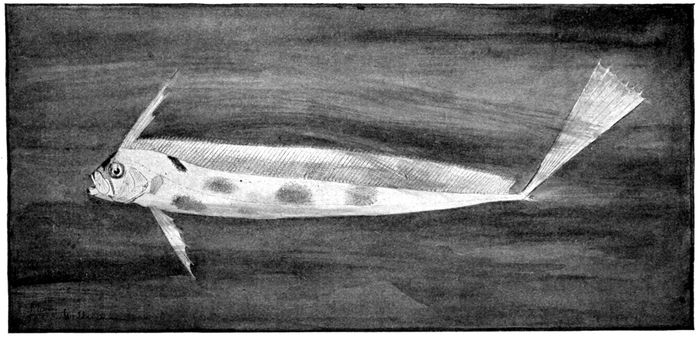
Fig. 426.—Dealfish, or King of the Salmon, Trachypterus rex-salmonorum Jordan & Gilbert. Family Trachypteridæ. (From a specimen taken off the Farallones.)
479Four of these fishes have been obtained on the coast of Japan,
and have been described and figured by the present writer in
the annals of the Imperial University of Tokyo. These are
different from the California species and are named Trachypterus
ishikawæ, but they show the same bright silver color and the same
streamers on the head and tail. Probably they, too, in Japan
are kings of something or other, or perhaps silver swans from
the submarine palace, for along such lines the Japanese fancy
is more likely to run.
The young of the dealfish has the caudal symmetrical, and
the dorsal spines and ventral rays produced in very long
streamers.
According to Goode and Bean, the dealfishes are "true deep-sea
fishes, which live at very great depths, and are only found
when floating dead on the surface or washed ashore by the
waves. Almost nothing is known of their habits except through
Nilsson's observations in the far north. This naturalist, as well
as Olafson, appears to have had the opportunity of observing
them in life. They say that they approach the shore at flood-tide
on sandy, shelving bottoms, and are often left by the
retreating waves. Nilsson's opinion is that its habits resemble
those of the flatfishes, and that they move with one side turned
obliquely upward, the other toward the ground; and he says
that they have been seen on the bottom in two or three fathoms
of water, where the fishermen hook them up with the implements
employed to raise dead seals, and that they are slow
swimmers. This is not necessarily the case, however, for the
removal of pressure and the rough treatment by which they
were probably washed ashore would be demoralizing, to say the
least. Trichiurus, a fish similar in form, is a very strong, swift
swimmer, and so is Regalecus. Whether or not the habits of
Trachypterus arcticus, on which these observations were made,
are a safe guide in regard to the other forms is a matter of
some doubt, but it is certain that they live far from the surface,
except near the Arctic Circle, and that they only come ashore
accidentally. They have never been taken by the deep-sea
dredge or trawl-net, and indeed perfect specimens are very
rare, the bodies being very soft and brittle, the bones and fin-rays
exceedingly fragile. A considerable number of species have
480been described, but in most instances each was based on one
or two specimens. It is probable that future studies may be
as fruitful as that of Emery, who, by means of a series of twenty-three
specimens, succeeded in uniting at least three of the
Mediterranean species which for half a century or more had
been regarded as distinct. The common species of the eastern
Atlantic, Trachypterus atlanticus, is not rare, one or more specimens,
according to Günther, being secured along the coast of
northern Europe after almost every severe gale. We desire to
quote the recommendation of Dr. Günther, and to strongly
urge upon any one who may be so fortunate as to secure one
of these fishes that no attempt should be made to keep it entire,
but that it should be cut into short lengths and preserved in
the strongest spirits, each piece wrapped separately in muslin."
The family of Stylephoridæ is known from a single specimen
of the species, Stylephorus chordatus, taken off Cuba in 1790.
In this form the tail ends in a long, whip-like appendage, twice
as long as the head.
No fossil dealfishes or oarfishes are known.
481
CHAPTER XXVII
SUBORDER HETEROSOMATA
The Flatfishes.—Perhaps the most remarkable offshoot
from the order of spiny-rayed fishes is the great group
of flounders and soles, called by Bonaparte Heterosomata
(ἔτερός, differing; σῶμα, body). The essential character of this
group is found in the twisting of the anterior part of the cranium,
an arrangement which brings both eyes on the same side
of the head. This is accompanied by a great compression of the
body, as a result of which the flounders swim horizontally or
lie flat on the sand. On the side which is uppermost both eyes
are placed, this side being colored, brown or gray or mottled.
The lower side is usually plain white. In certain genera the right
side is uppermost, in others the left. In a very few, confined
to the coast of California, the eyes are on the right or left side
indifferently.
The process of the twisting of the head has been already
described (see p. 174, Vol. I). The very young have the body
translucent and symmetrical, standing upright in the water.
Soon the tendency to rest on the bottom sets in, the body
leans to left or right, and the lower eye gradually traverses the
front of the head to the other side. This movement is best
seen in the species of Platophrys, in which the final arrangement
of the eyes is a highly specialized one.
In some or all of the soles it is perhaps true that the eye
turns over and pierces the cranium instead of passing across
it. This opinion needs verification, and the process should be
studied in detail in as many species as possible. The present
writer has seen it in species of Platophrys only, the same genus
in which it was carefully studied by Dr. Carlo F. Emery of
Bologna. In the halibut, and in the more primitive flounders
482generally, the process takes place at an earlier stage than in
Platophrys.
Optic Nerves of Flounders.—In the Bulletin of the Museum of
Comparative Zoology (Vol. XL, No. 5) Professor George H.
Parker discusses the relations of the optic nerves in the group
of flounders or flatfishes.
In the bony fishes the optic nerves pass to the optic lobes
of the brain, the one passing to the lobes of the opposite side
simply lying over the other, without intermingling of fibers,
such as takes place in the higher vertebrates and in the more
primitive fishes.
According to Parker's observations, in ordinary bony fishes
the right nerve may be indifferently above or below the other.
In 1000 specimens of ten common species, 486 have the left
nerve uppermost and 514 the right nerve. In most individual
species the numbers are practically equal. Thus, in the haddock,
48 have the left nerve uppermost and 52 the right nerve.
In the unsymmetrical teleosts or flounders, and soles, this
condition no longer obtains. In those species of flounder with
the eyes on the right side 236 individuals, representing sixteen
species, had the left nerve uppermost in all cases.
Of flounders with the eyes on the left side, 131 individuals,
representing nine species, all have the right nerve uppermost.

Fig. 427.—Young Flounder, just hatched, with symmetrical eyes. (After S. R. Williams.)
There are a few species of flounders in which reversed
examples are so common that the species may be described
as having the eyes on the right
or left side indifferently. In all
these species, however, whether
dextral or sinistral, the relation
of the nerves conforms to the
type and is not influenced by
the individual deviation. Thus the starry flounder (Platichthys)
belongs to the dextral group. In 50 normal specimens,
the eyes on the right have the left nerve dorsal, while the
left nerve is also uppermost in 50 reversed examples with eyes
on the left. In 15 examples of the California bastard halibut
(Paralichthys californicus), normally sinistral, the right eye is
always uppermost. It is uppermost in 11 reversed examples.
Among the soles this uniformity or monomorphism no
483longer obtains. In 49 individuals of four species of dextral
soles, the left nerve is uppermost in 24, the right nerve in 25.
Among sinistral soles, or tongue-fishes, in 18 individuals of two
species, the left nerve is uppermost in 13, the right nerve in 5.
Professor Parker concludes from this evidence that soles
are not degenerate flounders, but rather descended from primitive
flounders which still retain the dimorphic condition as
to the position of the optic nerves, a condition prevalent in
all bony fishes except the flounders.
The lack of symmetry among the flounders lies, therefore,
deeper than the matter of the migration of the eye. The asymmetry
of the mouth is an independent trait, but, like the migration
of the eye, is an adaptation to swimming on the side. Each
of the various traits of asymmetry may appear independently of
the others.
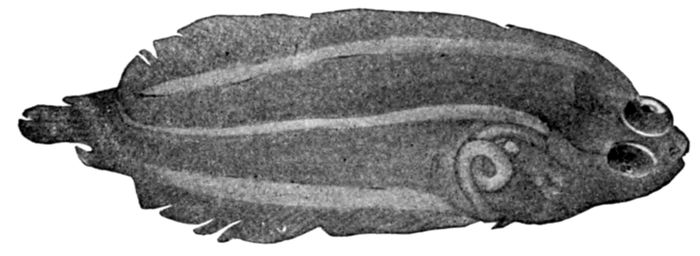
Fig. 428.—Larval Flounder, Pseudopleuronectes americanus. (After S. R. Williams.)
The development of the monomorphic arrangement in
flounders Professor Parker thinks can be accounted for by the
principle of natural selection. In a side-swimming fish the
fixity of this trait has a mechanical advantage. The unmetamorphosed
young of the flounder are not strictly symmetrical,
for they possess the monomorphic position of the optic nerve.
The reversed examples of various species of flounders (these,
by the way, chiefly confined to the California fauna) afford
"striking examples of discontinuous variation."
A very curious feature among the flounders is the possession
in nine of the California-Alaskan species of an accessory half-lateral
line. This is found in two different groups, while near
relatives in other waters lack the character. One species in
Japan has this trait, which is not found in any Atlantic species,
484or in any other flounders outside the fauna of northern California,
Oregon, and Alaska.
Ancestry of Flounders.—The ancestry of the flounders is
wholly uncertain. Because, like the codfishes, the flounders
lack all fin-spines, they have been placed by some authors after
the Anacanthini, or codfishes, and a common descent has been
assumed. Some writers declare that the flounder is only a
codfish with distorted cranium.
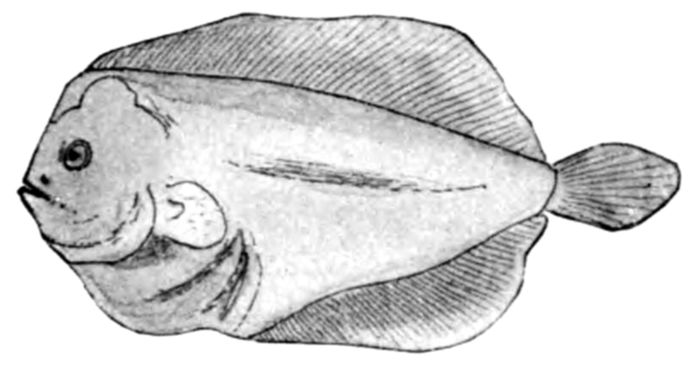
Figs. 429 and 430.—Larval stages of Platophrys podas, a flounder of the Mediterranean, showing the migration of the eye. (After Emery.)
A little study of the osteology of the flounder shows that
this supposition is without foundation. The flounders have
thoracic ventrals, not jugular as in the cod. The tail is homocercal,
ending in a large hypural plate, never isocercal, except
in degraded soles, in which it is rather leptocercal. The shoulder-girdle,
with its perforate hypercoracoid, has the normal perch-like
form. The ventral fins have about six rays, as in the perch,
although the first ray is never spinous. Pseudobranchiæ are
developed, these structures being obsolete in the codfishes. The
gills and pharyngeals are essentially as in the perch.
It is fairly certain that the Heterosomata have diverged from
the early spiny-rayed forms, Zeoidei, Berycoidei, or Scombroidei
485of the Jurassic or Cretaceous, and that their origin is prior to
the development of the great perch stock.
If one were to guess at the nearest relationships of the group,
it would be to regard them as allies of the deep-bodied mackerel-like
forms, as the Stromateidæ, or perhaps with extinct Berycoid
forms, as Platycormus, having the ventral fins wider than in the
mackerel. Still more plausible is the recent suggestion of Dr.
Boulenger that the extinct genus Amphistium resembles the primitive
flounder. But there is little direct proof of such relation,
and the resemblance of larval flounders to the ribbon-fishes may
have equal significance. But the ribbon-fishes themselves may
be degenerate Scombroids. In any case both ribbon-fishes and
flounders find their nearest living relatives among the Berycoidei
or Zeoidei, and have no affinity whatever with the
isocercal codfish or with other members of the group called
Anacanthini.
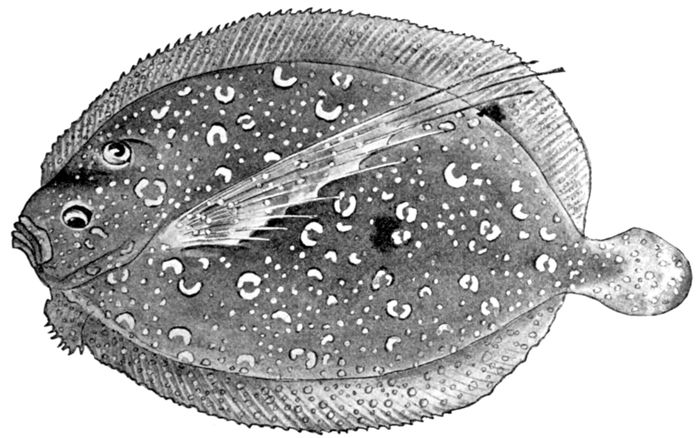
Fig. 431.—Platophrys lunatus (Linnæus), the Peacock Flounder. Family Pleuronectidæ. Cuba. (From nature by Mrs. H. C. Nash.)
The Heterosomata are found in all seas, always close to the
bottom and swimming with a swift, undulatory motion. They
are usually placed in a single family, but the degraded types
known as soles may be regarded as forming a second family.
The Flounders: Pleuronectidæ.—In the flounders, or Pleuronectidæ,
the membrane-bones of the head are distinct, the eyes large
and well separated, the mouth not greatly contracted, and the jaws
486always provided with teeth. Among the 500 species of flounders
is found the greatest variation in size, ranging in weight from
an ounce to 500 pounds. The species found in arctic regions
are most degenerate and these have the largest number of vertebræ
and of fin-rays. The halibut has 50 vertebræ (16 + 34),
the craig-flounder 58, while in Etropus and other tropical forms
the number is but 34 (10 + 24). The common flounders of
intermediate geographical range (Paralichthys dentatus, etc.) show
intermediate numbers as 40 (10 + 30). The apparent significance
of this peculiar series of fact is given on page 212, Vol. I.
It is, perhaps, related to the greater pressure of natural selection
in the tropics, showing itself in the better differentiation of the
bones and consequently smaller number of the vertebræ.
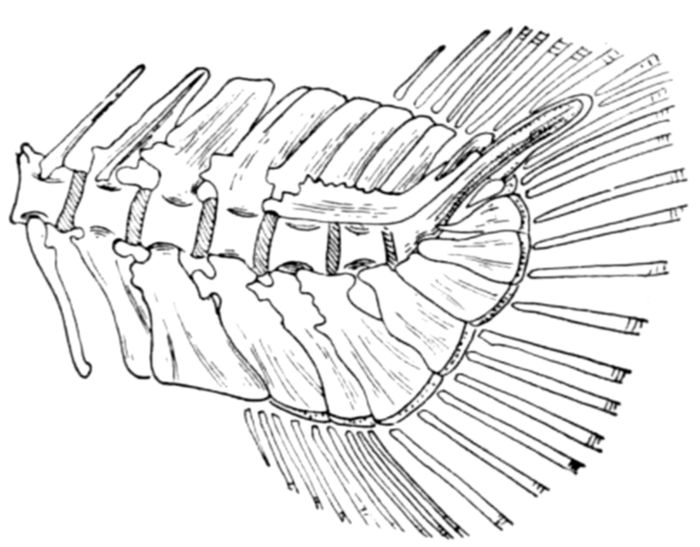
Fig. 432.—Heterocercal tail of young Trout, Salmo fario Linnæus. (After Parker & Haswell.)
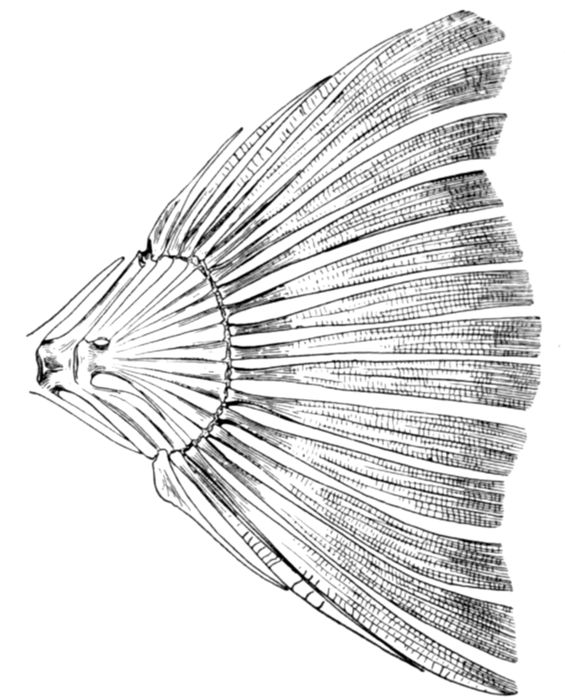
Fig. 433.—Homocercal tail of a Flounder, Paralichthys californicus.]
Fossil flounders are very few and give no clue as to the origin
of the group. In the Eocene and Miocene are remains which
have been referred to Bothus (Rhombus). Bothus minimus is
the oldest species known, described by Agassiz from the Eocene
of Monte Bolca. In the Miocene are numerous other species of
Bothus, as also tubercles referable to Scophthalmus.
On the testimony of fossils alone the genus Bothus, or one
487of its allies, would be the most primitive of the group. If it be
so, the simpler structure of the halibut and its relatives is due
to degeneration, which is probable, although their structure has
the suggestion of primitive simplicity, especially in the greater
approach to symmetry in the head and the symmetry in the
insertion of the ventral fins.
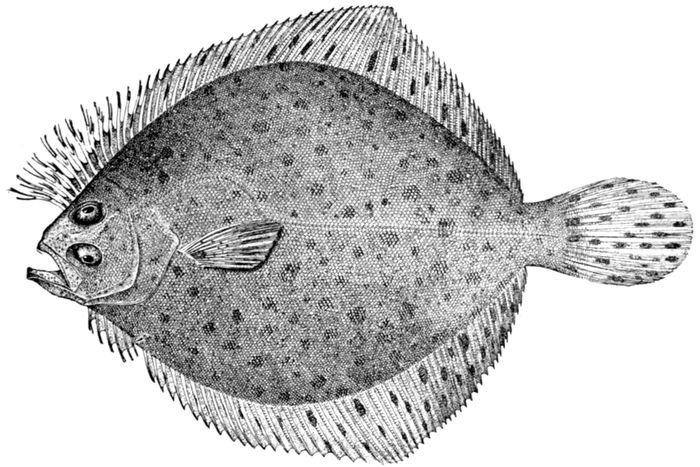
Fig. 434.—Window-pane, Lophopsetta maculata. Virginia.
Soles have been found in the later Tertiary rocks. Solea
kirchbergiana of the Miocene is not very different from species
now extant in southern Europe. No remains referable to
allies of the halibut or plaice are found in Tertiary rocks, and
these relatively simple types must be regarded as of recent origin.
The Turbot Tribe: Bothinæ.—The turbot tribe have the mouth
large, the eyes and color on the left side, and the ventral
fins unlike, that of the left side being extended along the ridge
of the abdomen. The species are found in the warm seas only.
They are deeper in body than the halibut and plaice, and some
of them are the smallest of all flounders. It is probable that
these approach most nearly of existing flounders to the original
ancestors of the group.
Perhaps the most primitive genus is Bothus, species of
which genus are found in Italian Miocene. The European
488brill, Bothus rhombus, is a common fish of southern Europe,
deep-bodied and covered with smooth scales.
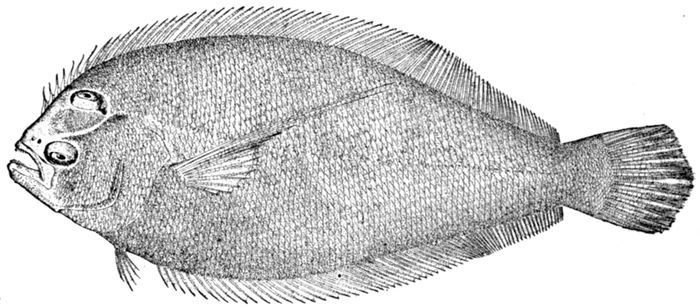
Fig. 435.—Wide-eyed Flounder, Syacium papillosum Linnæus. Pensacola, Fla.
Very similar but much smaller in size is the half translucent
speckled flounder of our Atlantic coast (Lophopsetta maculata),
popularly known as window-pane. This species is too
small to have much value as food. Another species, similar
to the brill in technical characters but very different in appearance,
is the turbot, Scophthalmus maximus, of Europe. This
large flounder has a very broad body, scaleless but covered
with warty tubercles. It reaches a weight of seventy pounds and
has a high value as a food-fish. There is but one species of turbot
and it is found in Europe only, on sandy bottoms from
Norway to Italy. In a turbot of twenty-three pounds weight
Buckland found a roe of five pounds nine ounces, with 14,311,260
eggs. The young retains its symmetrical condition for a relatively
long period. No true turbot is found in America and none in
the Pacific. Other European flounders allied to the turbot and
brill are Zeugopterus punctatus; the European whiff, Lepidorhombus
whiff-jagonis; the topknot, Phrynorhombus regius; the
lantern-flounder, Arnoglossus laterna, and the tongue-fish, Eucitharus
linguatula, the last two of small size and feeble flesh.
In the wide-eyed or peacock flounders, Platophrys podas in
Europe, Platophrys lunatus, etc., in America, Platophrys mancus
in Polynesia, the eyes in the old males are very far apart,
and the changes due to age and sex are greater than in any
other genera. The species of this group are highly variegated
and lie on the sand in the tropical seas. Numerous small
489species allied to these abound in the West Indies, known in a
general way as whiffs. The most widely distributed of these
are Citharichthys spilopterus of the West Indies, Citharichthys
gilberti and Azevia panamensis of Panama, Orthopsetta sordida
of California, and especially the common small-mouthed Etropus
crossotus found throughout tropical America. Numerous other
genera and species of the turbot tribe are found on the coasts
of tropical Asia and Africa, most of them of small size and weak
structure.
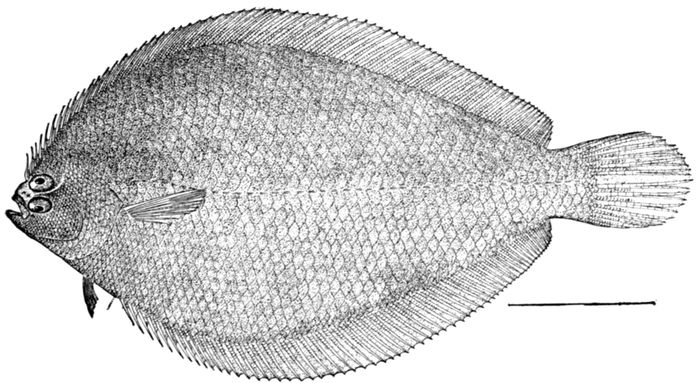
Fig. 436.—Etropus crossotus Jordan & Gilbert. Cedar Keys, Fla.
Samaris cristatus of Asia is the type of another tribe of
flounders and the peculiar hook-jawed Oncopterus darwini of
Patagonia represents still another tribe.
The Halibut Tribe: Hippoglossinæ.—In the great halibut tribe
the mouth is large and the ventral fins symmetrical. The
arctic and subarctic species have the eyes and color on the
right. Those of the warmer regions (bastard halibut) have the
eyes and color on the left. These grow progressively smaller
in size to the southward, the mouth being smaller and more
feebly armed in southern species.
The largest of the family, and the one commercially of far
greatest importance, is the halibut (Hippoglossus hippoglossus).
This species is found on both shores of both oceans, north of
about the latitude of Paris, Boston, Cape Mendocino, and Matsushima
Bay in Japan. Its preference is for off-shore banks
490of no great depth, and in very many localities it exists in great
abundance, reaching a length of 6 to 8 feet and a weight of 600
pounds. It sometimes ranges well out to sea and enters deeper
waters than the cod. The flesh is firm, white, and of good
quality, although none of the flatfishes have much flavor, the
muscles being mostly destitute of oil. Small halibut, called
"chicken halibut," are highly esteemed.
Dr. Goode states that the "history of the halibut fishery has
been a peculiar one. At the beginning of the present century
these fishes were exceedingly abundant on George's Banks; since
1850 they have partially disappeared from this region, and the
fishermen have since been following them to other banks, and
since 1874 out into deeper and deeper water, and the fisheries
are now carried on almost exclusively in the gullies between
the off-shore banks and on the outer edges of the banks, in
water 100 to 350 fathoms in depth.
"The halibut with its large mouth is naturally a voracious
fish, and probably would disdain few objects in the way of fresh
meat it would come across. It is said, however, to feed more
especially upon crabs and mollusks in addition to fish. These
fish 'they waylay lying upon the bottom, invisible by reason
of their flat bodies, colored to correspond to the general color
of the sand or mud upon which they rest. When in pursuit of
their prey they are active and often come quite to the surface,
especially when in summer they follow the capelin to the shoal
water near the land. They feed upon skates, cod, haddock,
menhaden, mackerel, herring, lobsters, flounders, sculpins,
grenadiers, turbot, Norway haddock, bank-clams, and anything
else that is eatable and can be found in the same waters.' Frequently
halibut may be seen chasing flatfish over the bottom of
the water. About Cape Sable their favorite food seems to be
haddock and cusk. A very singular mode of attacking a cod
has been recorded by Captain Collins, an experienced fisherman
and good observer. They often kill their prey by blows of the
tail, a fact which is quite novel and interesting. He has described
an instance which occurred on a voyage home from Sable Island
in 1877: 'The man at the wheel sang out that he saw a halibut
flapping its tail about a quarter of a mile off our starboard
quarter. I looked through the spy-glass and his statement was
491soon verified by the second appearance of the tail. We hove
out a dory, and two men went with her, taking with them a
pair of gaff-hooks. They soon returned, bringing not only the
halibut, which was a fine one of about seventy pounds weight,
but a small codfish which it had been trying to kill by striking
it with its tail. The codfish was quite exhausted by the repeated
blows and did not attempt to escape after its enemy had been captured.
The halibut was so completely engaged in the pursuit
of the codfish that it paid no attention to the dory and was
easily captured.'
"The females become heavy with roe near the middle of the
year, and about July and August are ready to spawn, although
'some fishermen say that they spawn at Christmas' or 'in the
month of January, when they are on the shoals.' The roe of
a large halibut which weighed 356 pounds weighed 44 pounds,
and indeed the 'ovaries of a large fish are too heavy to be lifted
by a man without considerable exertion, being often 2 feet or
more in length.' A portion of the roe 'representing a fair
average of the eggs, was weighed and found to contain 2185
eggs,' and the entire number would be 2,182,773."
Closely allied to the halibut are numerous smaller forms
with more elongate body. The Greenland halibut, Reinhardtius
hippoglossoides, and the closely related species in Japan,
Reinhardtius matsuuræ, differ from the halibut most obviously
in the straight lateral line. The arrow-toothed halibut,
Atheresthes stomias, lives in deeper waters in the North Pacific.
Its flesh is soft, the mouth very large, armed with arrow-shaped
teeth. The head in this species is less distorted than in any
of the others, the upper eye being on the edge of the disk in
front of the dorsal fin. For this reason it has been supposed
to be the most primitive of the living species, but these traits
are doubtless elusive and a result of degeneration.
Eopsetta jordani is a smaller halibut-like fish, common on
the coast of California, an excellent food-fish, with firm white
flesh, sold in San Francisco restaurants under the very erroneous
name of "English sole." Large numbers are dried by the
Chinese for export to China. A similar species, Hippoglossoides
platessoides, known as the "sand-dab," is common on both
shores of the North Atlantic, and several related species are
492found in the North Pacific. Verasper variegatus of Japan is
notable for its bright coloration, the lower side being largely
orange-red.
In the bastard halibuts, Paralichthys, the eyes and color
are on the left side. These much resemble the true halibut,
but are smaller and inferior as food, besides differing in details
of structure. The Monterey halibut (Paralichthys californicus)
is the largest of these, reaching a weight of sixty pounds. This
species and one other from California (Xystreurys liolepis),
normally left-sided, differ from all the other flounders in having
the eyes almost as often on the right side as on the left side,
as usual or normal in their type. The summer flounder (Paralichthys
dentatus) replaces the Monterey halibut on the Atlantic
Coast, where it is a common food-fish. Farther south it gives
way to the Southern flounder (Paralichthys lethostigma) and
the Gulf flounder, Paralichthys albigutta. In Japan Paralichthys
olivaceus is equally common, and in western Mexico
Paralichthys sinaloæ. The four-spotted flounder of New England,
Paralichthys oblongus, belongs to this group. Similar
species constituting the genus Pseudorhombus abound in India
and Japan.
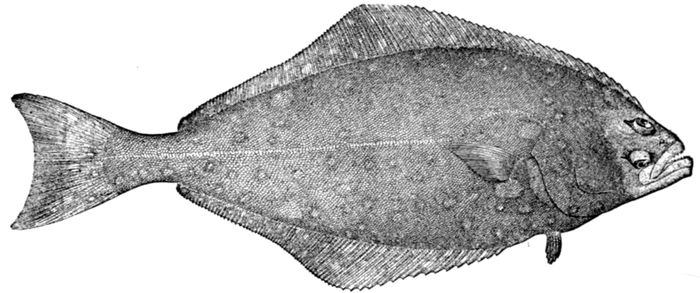
Fig. 437.—Halibut, Hippoglossus hippoglossus Linnæus. Marmot I., Alaska.
The Plaice Tribe: Pleuronectinæ.—The plaice tribe pass gradually
into the halibut tribe, from which they differ in the
small mouth, in which the blunt teeth are mostly on the blind
side. The eyes are on the right side, the vertebræ are numerous,
and the species live only in the cold seas, none being found in
the tropics. In most of the Pacific species the lateral line
493has an accessory branch along the dorsal fin. The genus
Pleuronichthys, or frog-flounders, has the teeth in bands. Pleuronichthys
cornutus is common in Japan and three species,
Pleuronichthys cœnosus being the most abundant, are found
on the coast of California. Closely related to these is the
diamond-flounder, Hypsopsetta guttulata of California. Parophrys
vetulus is a small flounder of California, so abundant
as to have considerable economic value. Lepidopsetta bilineata,
larger and rougher, is almost equally common. It is similar
to the mud-dab (Limanda limanda) of northern Europe and
the rusty-dab (Limanda ferruginea) of New England.
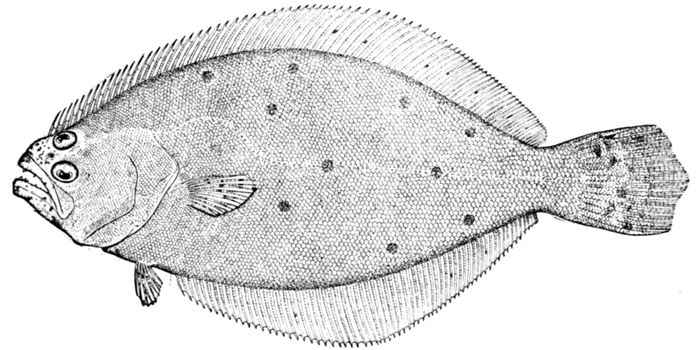
Fig. 438.—Wide mouthed Flounder, Paralichthys dentatus (L.). St. George I., Md.
The plaice, Pleuronectes platessa, is the best known of the
European species of this type, being common in most parts
of Europe and valued as food. Closely related to the plaice
is a second species of southern Europe also of small size, Flesus
flesus, to which the name flounder is in England especially
applied. The common winter flounder of New England,
Pseudopleuronectes americanus, is also very much like the plaice,
but with more uniform scales. It is an important food-fish,
the most abundant of the family about Cape Cod. The eel-back
flounder, Liopsetta putnami, also of New England, is
frequently seen in the markets. The males of this species
have scattered rough scales, while the females are smooth.
The great starry flounder of Alaska, Platichthys stellatus, is the
largest of the small-mouthed flounders and in its region the most
494abundant. On the Pacific coast from Monterey to Alaska and
across to northern Japan it constitutes half the catch of
flounders. The body is covered with rough scattered scales,
the fins are barred with black. It reaches a weight of twenty
pounds. Living in shallow waters, it ascends all the larger
rivers.
An allied species in Japan is Kareius bicoloratus, with scattered
scales. Clidoderma asperrimum, also of northern Japan,
has the body covered with series of warts.

Fig. 439.—Eel-back Flounder, Liopsetta putnami (Gill). Salem, Mass.
In deeper water are found the elongate forms known as
smear-dab and flukes. The smear-dab of Europe (Microstomus
kitt) is rather common in deep water. Its skin is very
slimy, but the flesh is excellent. The same is true of the
slippery sole, Microstomus pacificus, of California and Alaska,
and of other species found in Japan. Glyptocephalus cynoglossus,
the craig-fluke, or pole-flounder, of the North Atlantic,
is taken in great numbers in rather deep water on both coasts.
Its flesh is much like that of the sole. A similar species
(Glyptocephalus zachirus) with a very long pectoral on the
right scale is found in California, and Microstomus kitaharæ in
Japan.
495The Soles: Soleidæ.—The soles (Soleidæ) are degraded flounders,
the typical forms bearing a close relation to the plaice tribe,
from which they may be derived. There are three very different
groups or tribes of soles, and some writers have thought
that these are independently derived from different groups of
flounders. This fact has been urged as an argument against
the recognition of the Soleidæ as a family separate from the
flounders. If clearly proved, the soles should either be joined
with the flounders in one family or else they should be divided
into two or three, according to their supposed origin.
The soles as a whole differ from the flounders in having the
bones of the head obscurely outlined, their edges covered by
scales. The gill-openings are much reduced, the eyes small
and close together, the ventral fins often much reduced, and
sometimes the pectoral or caudal also. The mouth is very
small, much twisted, and with few teeth.
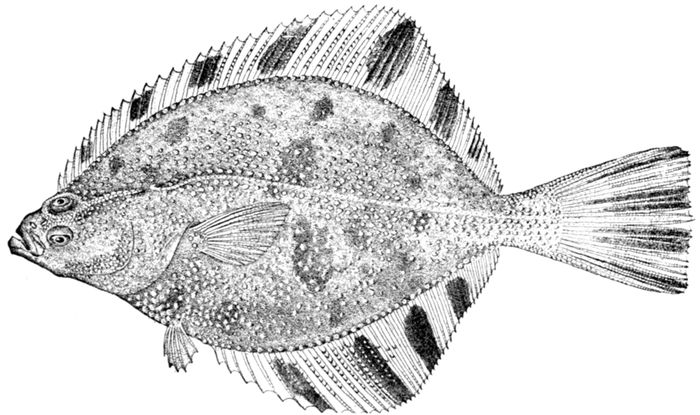
Fig. 440.—Starry Flounder, Platichthys stellatus (Pallas). Alaska.
The species of sole, about 150 in number, abound on sandy
bottoms in the warm seas along the continents, very few being
found about the Oceanic Islands. The three subfamilies, or
tribes, may be designated as broad soles, true soles, and tongue-fishes.
The Broad Soles: Achirinæ.—The American soles (Achirinæ),
or broad soles, resemble the smaller members of the turbot tribe
496of flounders, having the ventral fin of the eyed side extended
along the ridge of the abdomen. The eyes and color are, however,
on the right side. The eyes are separated by a narrow
interorbital ridge. In most of these forms the body is broad
and covered with rough scales. The species are mostly less
than six inches long, and nearly all are confined to the warmer
parts of America, many of them ascending the rivers. A very
few (Aseraggodes, Pardachirus) are found in Japan and China.
Some are scaleless and some have but a single small gill-opening
on the blind side. The principal genus is Achirus. Achirus
fasciatus, the common American sole, or hog-choker, is abundant
from Boston to Galveston. Achirus lineatus and other
species are found in the West Indies and on the west coast of
Mexico. Almost all the species of Achirus are banded with
black and the pectorals are very small or wanting altogether.
All these species are practically useless as food from their very
small size.
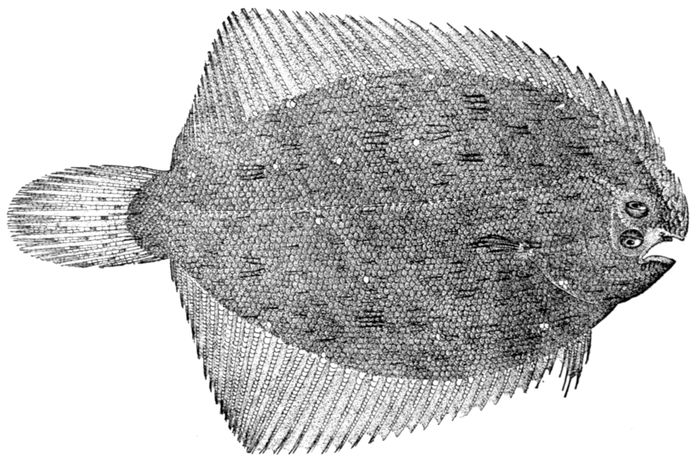
Fig. 441.—Hog-choker Sole, Achirus lineatus (L.). Potomac River.
The European Soles (Soleinæ).—The European soles are more
elongate in form, with the ventral fins narrow and not extended
along the ridge of the abdomen. The eyes are on the right side
with no bony ridge between them. No species of this type is
497certainly known from American waters, although numerous in
Europe and Asia. The species have much in common with
the plaice tribe of flounders and may be derived from the same
stock. One species, as above noted, is found in the Miocene.
The common sole of Europe, Solea solea, is one of the best
of food-fishes, reaching a length, according to Dr. Gill, of twenty-six
inches and a weight of nine pounds. As usually seen in
the markets it rarely exceeds a pound. It is found from Norway
to Italy, and when properly cooked is very tender and
delicate, superior to any of the flounders. According to Dr.
Francis Day, it appears to prefer sandy or gravelly shores,
but is rather uncertain in its migrations, for, although mostly
appearing at certain spots almost at a given time, and usually
decreasing in numbers by degrees, in other seasons they disappear
at once, as suddenly as they arrive. Along the British
seacoast they retire to the deep as frosts set in, revisiting the
shallows about May if the weather is warm, their migrations
being influenced by temperature. The food of the sole is to a
considerable extent molluscous, but it is also said to eat the
eggs and fry of other fishes and sea-urchins.
The spawning season is late in the year and during the
spring months. The ova are in moderate number; a sole of
one pound weight has, according to Buckland, about 134,000
eggs. The newly hatched, according to Dr. Day, do not appear
to be commonly found so far out at sea as some other species.
They enter into shallow water at the edge of the tide and are
very numerous in favorable localities.
As is well known, the sole is one of the most esteemed
of European fishes. In the words of Dr. Day, "the flesh of this
fish is white, firm, and of excellent flavor, those from the deepest
waters being generally preferred. Those on the west coast
and to the south are larger, as a rule, than those towards the
north of the British islands. In addition to its use as food,
it is available for another purpose. The skin is used for fining
coffee, being a good substitute for isinglass, and also as a
material for artificial baits.
"The markets are generally supplied by the trawl. The
principal English trawling-ground lies from Dover to Devonshire.
They may be taken by spillers, but are not commonly captured
498with hooks; it is suggested that one reason may be that spillers
are mostly used by day, whereas the sole is a night feeder.
They are sometimes angled for with the hook, baited with
crabs, worms, or mollusks; the most favorable time for fishing
is at night, after a blow, when the water is thick, while a land
breeze answers better than a sea breeze."
Several smaller species of sole are found in Europe. In
Japan Zebrias zebra, black-banded, and Usinosita japonica,
known as Usinóshita, or cow's tongue, are common. Farther
south are numerous species of Synaptura and other genera peculiar
to the Indian and Australian regions.
The Tongue-fishes: Cynoglossinæ.—The tongue-fishes are soles
having the eyes on the left side not separated by a bony ridge,
the two being very small and apparently in the same socket.
The body is lanceolate, covered usually with rough scales,
and as often with two or three lateral lines as with one. The
species are mostly Asiatic. Cynoglossus robustus and other species
are found in Japan, and in India are many others belonging
to Cynoglossus and related genera. The larger species are
valued as food. The single European species Symphurus nigrescens,
common in the Mediterranean, is too small to have any
value. Symphurus plagiusa, the tongue-fish of our coast, is
common on our sandy shores from Cape Hatteras southward.
Symphurus plagusia, scarcely different, replaces it in the West
Indies. Symphurus atricandus is found in San Diego Bay, and
numerous other species of no economic importance find their
place farther south.
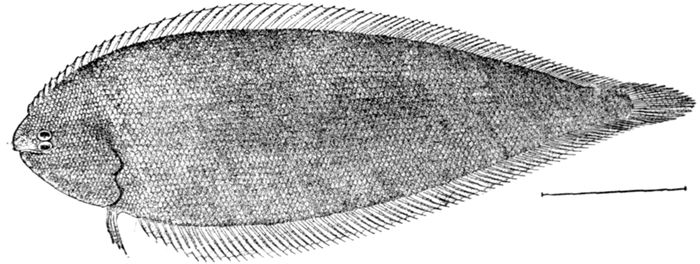
Fig. 442.—Symphurus plagiusa (L.). Beaufort, N. C.
499
CHAPTER XXVIII
SUBORDER JUGULARES
The Jugular-fishes.—In all the families of spiny-rayed
fishes, as ranged in order in the present work, from
the Berycidæ to the Soleidæ, the ventrals are
thoracic in position, the pelvis, if present, being joined to the
shoulder-girdle behind the symphysis of the clavicles so that
the ventral fin falls below or behind the pectoral fin. To this
arrangement the families of Bembradidæ and Pinguipedidæ offer
perhaps the only exceptions.
In all the families which precede the Berycidæ in the linear
series adopted in this work, the ventral fins when present are
abdominal, the pelvis lying behind the clavicles and free from
them as in the sharks, the reptiles, and all higher vertebrates.
In all the families remaining for discussion, the ventrals
are brought still farther forward to a point distinctly before
the pectorals. This position is called jugular (Lat. jugulum,
throat).
The fishes with jugular ventrals we here divide into six
groups, orders, and suborders: Jugulares, Haplodoci, Xenopterygii,
Anacanthini, Opisthomi, and Pediculati. The last two groups, and
perhaps the Anacanthini also, may well be considered as distinct
orders, being more aberrant than the others.
For the most primitive and at the same time most obscurely
defined of these groups we may retain the term applied by
Linnæus to all of them, the name Jugulares. This group includes
those jugular-fishes in which the position of the gills, the
structure of the skull, and the form of the tail are essentially
as in ordinary fishes. It is an extremely diversified and perhaps
unnatural group, some of its members resembling Opisthognathidæ
and Malacanthidæ, others suggesting the mailed-cheek
500fishes, and still others more degenerate. The fishes having
the fins thus placed were long ago set apart by Linnæus,
under the name of "Jugulares," Callionymus being the genus
first placed by him in this group. Besides their anterior insertion,
the ventrals in the Jugulares are more or less reduced in
size, the rays being usually but not always less than I, 5 in
number and more often reduced to one or two, or even wholly
lost.
In general, the jugular fishes are degenerate as compared
with the perch-like forms, but in certain regards they are often
highly specialized. The groups showing this character are
probably related one to another, but in some cases this fact is
not clearly shown. In most of the jugular-fishes the shoulder-girdle
shows some change or distortion. The usual foramen
in the hypercoracoid is often wanting or relegated to the interspace
between the coracoids, and the arrangement of the
actinosts often deviates from that seen in the perciform fishes.
The Weevers: Trachinidæ.—Of the various families the
group of weevers, Trachinidæ, most approaches the type of
ordinary fishes. In the words of Dr. Gill, these fishes are
known by "an elongated body attenuated backward from
the head, compressed, oblong head, with the snout very short,
a deeply cleft, oblique mouth, and a long spine projecting
backward from each operculum and strengthened by extension
on the surface of the operculum, as a keel. The dorsal
fins are distinct, the first composed of strong, pungent spines
radiating from a short base and about six or seven in number.
The second dorsal and anal are very long. The pectorals
have the lower rays unbranched, and the ventrals are in
advance of the pectorals, and have each a spine and five rays.
The species of this family are mostly found along the European
and western African coast; but singularly enough a species
closely related to the Old World form is found on the coast of
Chile. None have been obtained from the intermediate regions
or from the American coast. Two species are found in England,
and are known under the name of the greater weever (Trachinus
draco), about twelve inches long, and the lesser weever
(Trachinus vipera), about six inches long. They are perhaps
the most dreaded of the smaller English fishes. The formidable
501opercular spines are weapons of defense, and when seized
by the fisherman the fish is apt to throw its head in the direction
of the hand and lance a spine into it. The pungent dorsal
spines are also defensive. Although without a poison gland,
such as some fishes distantly related have at the base of the
spines, they cause very severe wounds, and death may occur
from tetanus. They are therefore divested of both opercular
and dorsal spines before being exposed for sale. The various
popular names which the weevers enjoy, in addition to their
general designation, mostly refer to the armature of the spines,
or are the result of the armature; such are adder-fish, stingfish,
and sting-bull."
No species of Trachinidæ is known from North America or
from Asia. In these fishes, as Dr. Boulenger has lately shown,
the hypercoracoid is without foramen, the usual perforation
lying between this bone and the hypercoracoid. A similar condition
exists in the Anacanthini, or codfishes, but it seems to
have been developed independently in the two groups. In the
relatives of the Trachinidæ the position of this foramen changes
gradually, moving by degrees from its usual place to the lower
margin of the hypercoracoid. Species referred to Trachinus are
recorded from the Miocene as well as Trachinus.
The extinct group of Callipterygidæ found in the Eocene of
Monte Bolca seems allied to the Trachinidæ. It has the dorsal
fin continuous, the spines small, the soft rays high; the scales
are very small or wanting. Callipteryx speciosus and C. recticandus
are the known species.
The Nototheniidæ.—In the family of Nototheniidæ the foramen
is also wanting or confluent with the suture between the
coracoids. To this family belong many species of the Antarctic
region. These are elongate fishes with ctenoid scales and a
general resemblance to small Hexagrammidæ. In most of the
genera there is more than one lateral line. These species are
the antipodes of the Cottidæ and Hexagrammidæ; although lacking
the bony stay of the latter, they show several analogical
resemblances and have very similar habits.
The Harpagiferidæ, naked, with the opercle armed with spines,
and resemble sculpins even more closely than do the Nototheniidæ.
Harpagifer is found in Antarctic seas, and the three species of
502Draconetta in the deeper waters of the North Atlantic and Pacific.
These little fishes resemble Callionymus, but the opercle, instead
of the preopercle, bears spines. The Bovichthyidæ of New
Zealand are also sculpin-like and perhaps belong to the same
family. Dr. Boulenger places all these Antarctic forms with the
foramen outside the hypercoracoid in one family, Nototheniidæ.
Several deep-sea fishes of this type have been lately described
by Dr. Louis Dollo and others from the Patagonian region.
One of these forms, Macrias amissus, lately named by Gill and
Townsend, is five feet long, perhaps the largest deep-sea fish
known. The family of Percophidæ, from Chile, is also closely
allied to these forms, the single species differing in slight respects
of osteology.
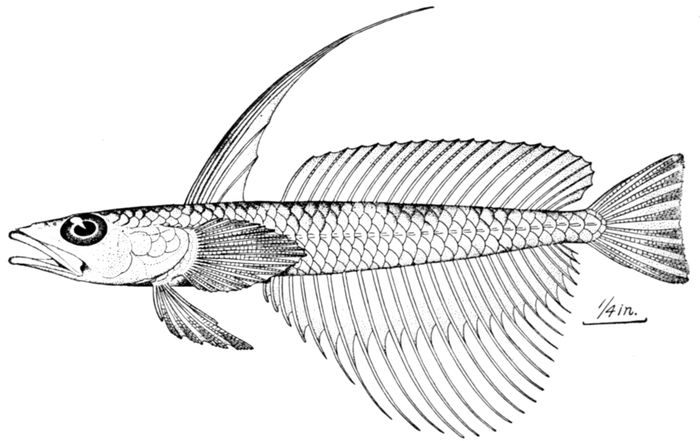
Fig. 443.—Pteropsaron evolans Jordan & Snyder. Sagami Bay, Japan.
Closely related to the family of Nototheniidæ and perhaps
scarcely distinct from it is the small family of Pteropsaridæ,
which differs in having but one lateral line and the foramen
just above the lower edge of the hypercoracoid. The numerous
species inhabit the middle Pacific, and are prettily colored
fishes, looking like gobies. Pteropsaron is a Japanese genus,
with high dorsal and anal fins; Parapercis is more widely diffused.
Osurus schauinslandi is one of the neatest of the small fishes of
Hawaii. Several species of Parapercis and Neopercis occur in
503Japan and numerous others in the waters of Polynesia. Pseudeleginus
majori of the Italian Miocene must belong near Parapercis.
The Bathymasteridæ, or ronquils, are perhaps allied to the
Nototheniidæ; they resemble the Opisthognathidæ, but the jaws
are shorter and they have a large number of vertebræ as befits
their northern distribution. Ronquilus jordani is found in Puget
Sound and Bathymaster signatus in Alaska. The ventral rays
are I, 5, and the many-rayed dorsal has a few slender spines in
front.

Fig. 444.—Bathymaster signatus Cope. Shumagin Is., Alaska.
The Leptoscopidæ.—The Leptoscopidæ of New Zealand resemble
the weevers and star-gazers, but the head is unarmed,
covered by thin skin.
The Star-gazers: Uranoscopidæ.—The Uranoscopidæ, or star-gazers,
have the head cuboid, mostly bony above, the mouth
almost vertical, the lips usually fringed, and the eyes on the
flat upper surface of the head. The spinous dorsal is short and
may be wanting. The hypercoracoid has a foramen, and the
body is naked or covered with small scales. The appearance is
eccentric, like that of some of the Scorpænidæ, but the anatomy
differs in several ways from that of the mailed-cheek fishes.
The species inhabit warm seas, and the larger ones are food-fishes
of some importance. One species, Uranoscopus scaber,
abounds in the Mediterranean. Uranoscopus japonicus and
other species are found in Japan. Astroscopus y-græcum is the
commonest species on our Atlantic coast. The bare spaces on
the top of the head in this species yield vigorous electric
shocks. Another American species is Astroscopus guttatus. In
Japan and the East Indies the forms are more numerous and
varied. Ichthyscopus lebeck, with a single dorsal, is a fantastic
504inhabitant of the seas of Japan, and Anema monopterygium in
New Zealand.
Uranoscopus peruzzii, an extinct star-gazer, has been described
from the Pliocene of Tuscany.

Fig. 445.—A Star-gazer Ariscopus iburius Jordan & Snyder. Iburi, Japan.
The Dragonets: Callionymidæ.—Remotely allied to the Uranoscopidæ
is the interesting family of dragonets, or Callionymidæ.
These are small scaleless fishes with flat heads, the preopercle
armed with a strong spine, the body bearing a general resemblance
to the smaller and smoother Cottidæ. The gill-openings
are very small, the ventral fins wide apart. The colors are
highly variegated, the fins are high, often filamentous, and the
sexes differ much in coloration and in the development of the
fins. The species are especially numerous on the shores of
Japan, where Callionymus valenciennesi, Callionymus beniteguri,
and Calliurichthys japonicus are food-fishes of some slight importance.
Others are found in the East Indies, and several large
and handsome forms are taken in the Mediterranean. Callionymus
draco, the dragonet, or "sculpin," reaches the coast of England.
In America but three species have been taken. These
are dredged in deep water in the East Indies. In other parts
of the world these fantastic little creatures are shore-fishes,
creeping about in the shallow bays. Species of Synchiropus,
colored like the coral sands, abound in the Polynesian coral
reefs.
A fossil species of Callionymus (C. macrocephalus) are found
in the Miocene of Croatia.
The family of Rhyacichthyidæ is a small group of Asiatic
fishes allied to the Callionymidæ, but less elongate and differing
in minor details. They are found not in the sea, but in mountain
streams. Rhyacichthys (formerly called by the preoccupied
name Platyptera) is the principal genus.
505

Fig. 446.—Star-gazer, Astroscopus guttatus Abbott. (From life by Dr. R. W. Shufeldt.)
506The Trichonontidæ, with wide gill-openings and cycloid scales,
are also related to the Callionymidæ. The species are few, small,
and confined to the Indian and Australian seas. Another small
family closely related to this is the group of Hemerocœtidæ of
the same region.
The Dactyloscopidæ.—In this and the preceding families of
jugular fishes the ventral rays remain I, 5, as in the typical
thoracic forms. In most of the families yet to be described
the number is I, 3, a character which separates the little fishes of
the family of Dactyloscopidæ from the Uranoscopidæ and Leptoscopidæ.
Dactyloscopus tridigitatus is a small fish of the coral
sands of Cuba. The other species of this family are found
mostly in the West Indies and on the west coast of Mexico.
Several genera, Myxodagnus, Gillellus, Dactylagnus, etc., are
recognized. In the structure of the shoulder-girdle these
species diverge from the star-gazers, approaching the blennies,
and their position is intermediate between Trachinidæ and
Blenniidæ.
507
CHAPTER XXIX
THE BLENNIES: BLENNIIDÆ
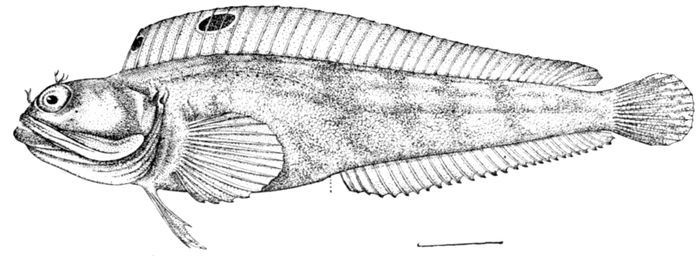
Fig. 447.—Sarcastic Blenny, Neoclinus satiricus Girard. Monterey.
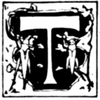
The great family of blennies, Blenniidæ, contains a vast
number of species with elongate body, numerous dorsal
spines, without suborbital stay or sucking-disk,
and the ventrals jugular, where present, and of one spine and
less than five soft rays. Most of them are of small size, living
about rocks on the sea-shores of all regions. In general they
are active fishes, of handsome but dark coloration, and in the
different parts of the group is found great variety of structure.
The tropical forms differ from those of arctic regions in the
much shorter bodies and fewer vertebræ. These forms are most
like ordinary fishes in appearance and structure and are doubtless
the most primitive. Of the five hundred known species of
blennies, we can note only a few of the most prominent. To
Clinus and related genera belong many species of the warm
seas, scaly and ovoviviparous, at least for the most part. The
largest of these is the great kelpfish of the coast of California,
Heterostichus rostratus, a food-fish of importance, reaching the
length of two feet. Others of this type scarcely exceed two
inches. Neoclinus satiricus, also of California, is remarkable
508for the great length of the upper jaw, which is formed as in
Opisthognathus. Its membranes are brightly colored, being
edged with bright yellow. Gibbonsia elegans is the pretty
"señorita" of the coralline-lined rock-pools of California. Lepisoma
nuchipinne, with a fringe of filaments at the nape, is very
abundant in rock-pools of the West Indies. The species of
Auchenopterus abound in the rock-pools of tropical America.
These are very small neatly colored fishes with but one soft ray
in the long dorsal fin. Species of Tripterygion, Myxodes, Cristiceps,
and other genera abound in the South Pacific.
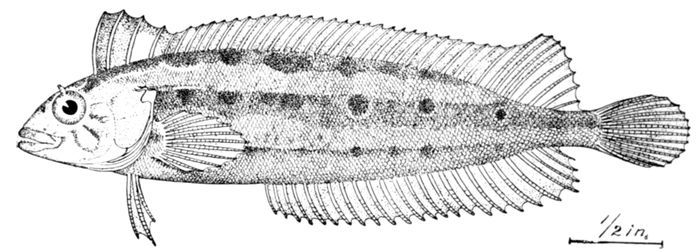
Fig. 448.—Kelp Blenny, Gibbonsia evides Jordan & Gilbert. San Diego.

Fig. 449.—Blennius cristatus L. Florida.
In Blennius and its relatives the body is scaleless and the
slender teeth are arranged like the teeth of a comb. In most
species long, fang-like posterior canines are developed in the
jaws. Blennius is represented in Europe by many species, Blennius
galerita, ocellaris, and basiliscus being among the most common.
Certain species inhabit Italian lakes, having assumed a
fresh-water habit. The numerous American species mostly
509belong to other related genera, Chasmodes bosquianus being
most common. Blennius yatabei abounds in Japan. In Petroscirtes
and its allies the gill-openings are much restricted. The
species are mainly Asiatic and Polynesian and are very prettily
colored. Petroscirtes elegans and P. trossulus adorn the Japanese
rock-pools and others, often deep blue in color, abound in the
coral reefs of Polynesia.
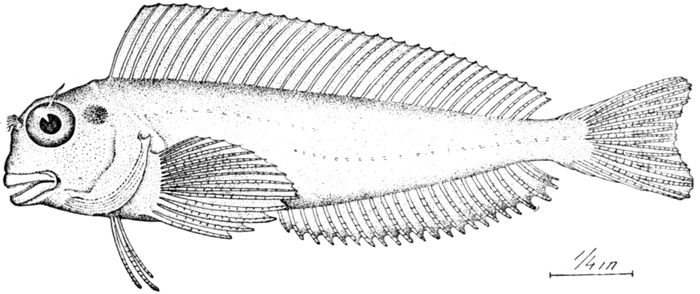
Fig. 450.—Rock-skipper, Alticus atlanticus. San Cristobal, Lower Cal.
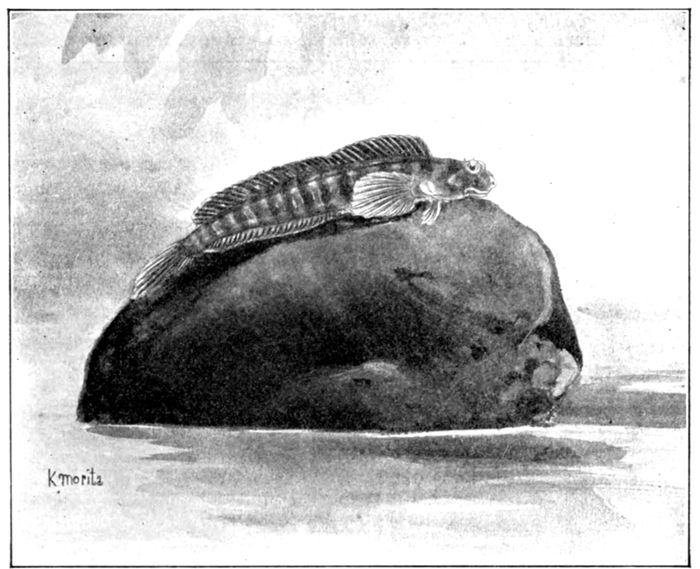
Fig. 451.—Lizard-skipper, Alticus saliens (Forster). A blenny which lies out of water on lava rocks, leaping from one to another with great agility. From nature; specimen from Point Distress, Tutuila Island, Samoa. (About one-half size.)
510
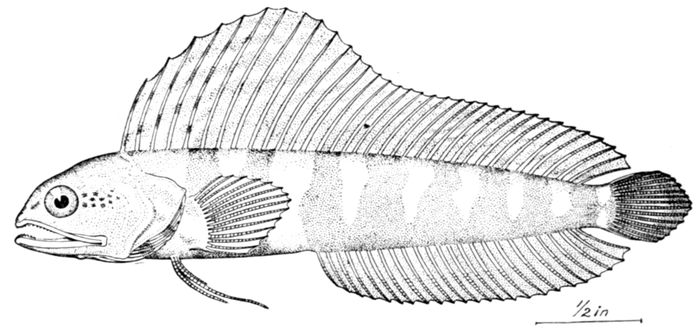
Fig. 452.—Emblemaria atlantica Jordan. Pensacola, Fla.
The rock-skippers (Salarias, Alticus, etc.) are herbivorous,
with serrated teeth set loosely in the jaws. These live
in the rock-pools of the tropics and leap from rock to rock when
disturbed with the agility of lizards. They are dusky or gray
in color with handsome markings. One of them, Erpichthys or
Alticus saliens in Samoa, lives about lava rocks between tide-marks,
and at low tide remains on the rocks, over which it runs
with the greatest ease and with much speed, its movements
being precisely like those of Periophthalmus. As in the species
of the latter genus, otherwise wholly different, this Alticus
has short ventral fins padded with muscle.

Fig. 453.—Scartichthys enosimæ Jordan & Snyder, a fish of the rock-pools of the sacred island of Enoshima, Japan. Family Blenniidæ.
Erpichthys atlanticus is found in abundance on both coasts
of tropical America. Many species abound in Polynesia and
in both Indies. Salarias enosimæ lives in the clefts of lava
511rocks on the shores of Japan. Ophioblennius (webbi) is remarkable
for its strong teeth, Emblemaria (nivipes, Atlantica) for its
very high dorsal. Many other genera allied to Blennius, Clinus,
and Salarias abound in the warm seas.

Fig. 454.—Zacalles bryope Jordan & Snyder. Misaki, Japan.

Fig. 455.—Bryostemma tarsodes Jordan & Snyder. Unalaska.

Fig. 456.—Exerpes asper Jenkins & Evermann. Guaymas, Mexico. Family Blenniidæ.
The Northern Blennies: Xiphidiinæ, Stichæiniæ, etc.—The blennies
of the north temperate and arctic zones have the dorsal
fin more elongate, the dorsal fin usually but not always composed
entirely of spines. The scales are small and the ventral
fins generally reduced in size. These are divided by Dr. Gill
into several distinct families, but the groups recognized by him
are subject to intergradations.
512

Fig. 457.—Gunnel, Pholis gunnellus (L.). Gloucester, Mass.
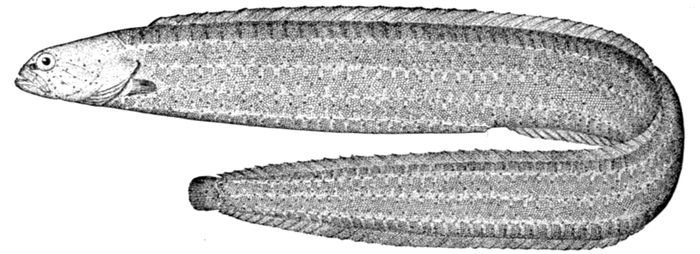
Fig. 458.—Xiphistes chirus Jordan & Gilbert. Amchitka I., Alaska.
Chirolophis (ascanii) of north Europe is remarkable for the
tufted filaments on the head. These are still more developed in
Bryostemma of the North Pacific, Bryostemma polyactocephalum
and several other species being common from Puget Sound
to Japan. Apodichthys (flavidus) of California is remarkable
for a large quill-shaped anal spine and for the great variation
in color, the hue being yellow, grass-green, or crimson, according
to the color of the algæ about it. There is no evidence, however,
that the individual fish can change its color, and these color
forms seem to be distinct races within the species. Xererpes
fucorum of California lies quiescent in the seaweed (Fucus) after
the tide recedes, its form, color, and substance seeming to correspond
exactly with those of the stems of algæ. Pholis gunnellus
is the common gunnel (gunwale), or butter-fish, of both shores
of the North Atlantic, with numerous allies in the North Pacific.
Of these, Enedrias nebulosus, the ginpo, or silver-tail, is especially
common in Japan. Xiphidion and Xiphistes of the California
coast, and Dictyosoma of Japan, among others, are remarkable
for the great number of lateral lines, these extending crosswise
as well as lengthwise. Cebedichthys violaceus, a large blenny of
California, has the posterior half of the dorsal made of soft rays.
Opisthocentrus of Siberia and north Japan has the dorsal spines
513flexible, only the posterior ones being short and stiff. The
snake-blennies (Lumpenus), numerous in the far North, are
extremely slender, with well-developed pectorals and ventrals.
Lumpenus lampetræformis is found on both shores of the Atlantic.
In Stichæus a lateral line is present. There is none in Lumpenus,
and in Ernogrammus and Ozorthe there are three. All
these are elongate fishes, of some value as food and especially
characteristic of the Northern seas. Fossil blennies are almost
unknown. Pterygocephalus paradoxus of the Eocene resembles
the living Cristiceps, a genus which differs from Clinus in having
the first few dorsal spines detached, inserted on the head. The
first spine alone in Pterygocephalus is detached and is very
strong. A species called Clinus gracilis is described from the
Miocene near Vienna, Blennius fossilis from the Miocene of Croatia,
and an uncertain Oncolepis isseli from Monte Bolca. The
family is certainly one of the most recent in geologic times.
The family of Blenniidæ, as here recognized, includes a very
great variety of forms and should perhaps be subdivided into
several families, as Dr. Gill has suggested. At present there
is, however, no satisfactory basis of division known.

Fig. 459.—Ozorthe dictyogramma (Hertzenstein), a Japanese blenny from Hakodate: showing increased number of lateral lines, a trait characteristic of many fishes of the north Pacific.

Fig. 460.—Stichæus punctatus Fabricius. St. Michael, Alaska.
The Quillfishes: Ptilichthyidæ.—The Ptilichthyidæ, or quillfishes,
are small and slender blennies of the North Pacific, with
514very numerous fin-rays. Ptilichthys goodei has 90 dorsal spines
and 145 soft rays. Another group of very slender naked blennies
is the small family of Xiphasiidæ from the South Pacific.
The jaws have excessively long canines; there are no ventral
fins. The dorsal fin is very high and the caudal ends in a long
thread.

Fig. 461.—Bryostemma otohime Jordan & Snyder. Hakodate, Japan. Family Blenniidæ.

Fig. 462.—Quillfish, Ptilichthys goodei Bean. Unalaska.
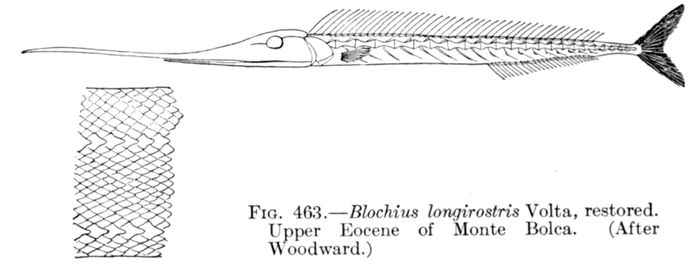
Fig. 463.—Blochius longirostris Volta, restored. Upper Eocene of Monte Bolca. (After Woodward.)
The Blochiidæ.—Of doubtful relationship is the extinct
family of Blochiidæ. In this group the body is elongate,
covered with keeled plates imbricated like shingles. The
dorsal is composed of many slender spines, and the vertebræ
much elongate. In Blochius longirostris (Monte Bolca Eocene)
has very long jaws, lined with small teeth. Zittel regards the
family as allied to the Belonorhynchidæ, but the prolongation
of the jaws may be a character of analogy merely. Woodward
places it next to the Blenniidæ, supposing it to have small and
jugular ventral fins. But as the presence of ventral fins is
uncertain, the position of the family cannot be ascertained
and it may really belong in the neighborhood of Ammodytes.
The dorsal rays are figured by Woodward as simple.
515
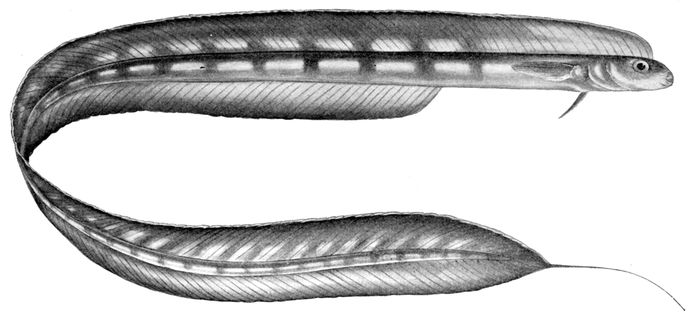
Fig. 464.—Xiphasia setifera Swainson. India. (After Day.)
516The Patæcidæ etc.—The Patæcidæ are blenny-like fishes of
Australia, having the form of Congriopus, the spinous dorsal being
very high and inserted before the eyes, forming a crest. Patæcus
fronto is not rare in South Australia. The Gnathanacanthidæ
is another small group of peculiar blennies from the Pacific.
The Acanthoclinidæ are small blennies of New Zealand with
numerous spines in the anal fin. Acanthoclinus littoreus is the
only known species.
The Gadopsidæ, etc.—The family of Gadopsidæ of the rivers
of New Zealand and southern Australia consists of a single
species, Gadopsis marmoratus, resembling the scaly blennies
called Clinus, but with long ventrals of a single ray, and three
spines in the anal fin besides other peculiarities. The species
is locally very common and with various other fishes in regions
where true trout are unknown, it is called "trout."
The Cerdalidæ are small band-shaped blennies of the Pacific
coast of Panama. The slender dorsal spines pass gradually
into soft rays. Three species are known.
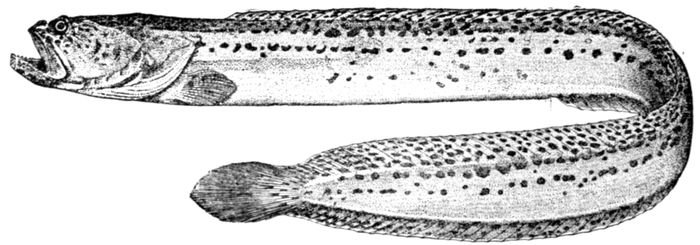
Fig. 465.—Wrymouth, Cryptacanthodes maculatus. New York.
The wrymouths, or Cryptacanthodidæ, are large blennies
of the northern seas, with the mouth almost vertical and the
517head cuboid. The wrymouth or ghostfish, Cryptacanthodes
maculatus, is frequently taken from Long Island northward.
It is usually dusky in color, but sometimes pure white. Other
genera are found in the north Pacific.
The Wolf-fishes: Anarhichadidæ.—The wolf-fishes (Anarhichadidæ)
are large blennies of the northern seas, remarkable for
their strong teeth. Those in front are conical canines. Those
behind are coarse molars. The dorsal is high, of flexible spines.
The species are large, powerful, voracious fishes, known as
wolf-fishes. Anarhichas lupus is the common wolf-fish of the
north Atlantic, reaching a length of four to six feet, the body
marked by dark cross-bands. Other similar species are found
both in the north Pacific and north Atlantic. Anarhichas
lepturus, plain brown in color, is common about the Aleutian
Islands.

Fig. 466.—Wolf-fish, Anarhichas lupus (L.). Georges Bank.
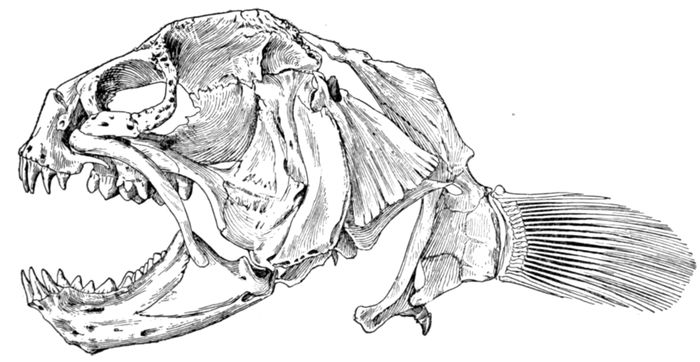
Fig. 467.—Skull of Anarrhichthys ocellatus Ayres.
518In the wolf-eel (Anarrhichthys ocellatus) of the coast of California,
the head is formed as in Anarhichas but the body is
band-shaped, being drawn out into a very long and tapering
tail. This species, which is often supposed to be a "sea-serpent,"
sometimes reaches a length of eight feet. It is used for food.
It feeds on sea-urchins and sand-dollars (Echinarachinius)
which it readily crushes with its tremendous teeth.
The skull of a fossil genus, Laparus (alticeps), with a resemblance
to Anarhichas, is recorded from the Eocene of England.
The Eel-pouts: Zoarcidæ.—The remaining blenny-like forms
lack fin spines, agreeing in this respect with the codfishes and
their allies. In all of the latter, however, the hypercoracoid
is imperforate, the pseudobranchiæ are obsolete, and the tail
isocercal. The forms allied to Zoarces and Ophidion, and which
we may regard as degraded blennies, have homocercal (rarely
leptocercal) tails, generally but not always well-developed pseudobranchiæ
and the usual foramen in the hypercoracoid.

Fig. 463.—Eel-pout, Zoarces anguillaris Peck. Eastport, Me.
The Zoarcidæ, or eel-pouts, have the body elongate, naked,
or covered with small scales, the dorsal and anal of many soft
rays and the gill-openings confined to the side. Most of the
species live in rather deep water in the Arctic and Antarctic
regions. Zoarces viviparus, the "mother of eels," is a common
fish of the coasts of northern Europe. In the genus Zoarces,
the last rays of the dorsal are short and stiff, like spines. The
species are viviparous; the young being eel-like in form, the
name "mother of eels" has naturally arisen in popular language.
The American eel-pout, sometimes called mutton-fish, Zoarces
anguillaris, is rather common north of Cape Cod, and a similar
species, Zoarces elongatus, is found in northern Japan.
Lycodopsis pacifica, without spines in the dorsal, replaces
Zoarces in California. The species of Lycodes, without spines
519in the dorsal, and with teeth on the vomer and palatines, are
very abundant in the northern seas, extending into deep waters
farther south. Lycodes reticulatus is the most abundant of
these fishes, which are valued chiefly by the Esquimaux and
other Arctic races of people. Numerous related genera are
recorded from deep-sea explorations, and several others occur
about Tierra del Fuego. Gymnelis, small, naked species brightly
colored, is represented by Gymnelis viridis in the Arctic and
by Gymnelis pictus about Cape Horn.

Fig. 469.—Eel-pout, Lycodes reticulatus Reinhardt. Banquereau.
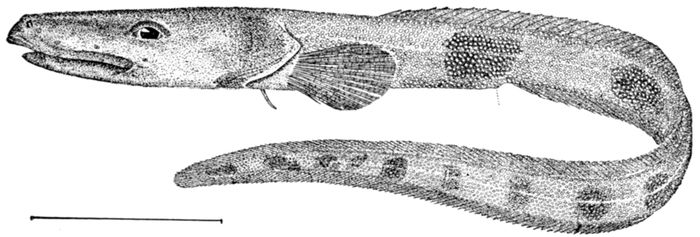
Fig. 470.—Lycenchelys verrilli (Goode & Bean). Chebucto, Nova Scotia.

Fig. 471.—Scytalina cerdale Jordan & Gilbert. Straits of Fuca.
The family of Scytalinidæ contains a single species, Scytalina
cerdale, a small snake-shaped fish which lives in wet gravel
between tide-marks, on Waada Island near Cape Flattery in
Washington, not having yet been found elsewhere. It dives
among the wet stones with great celerity, and can only be taken
by active digging.
To the family of Congrogadidæ belong several species of
520eel-shaped blennies with soft rays only, found on the coasts of Asia.
Another small family, Derepodichthyidæ, is represented by one
species, a scaleless little fish from the shores of British Columbia.
The Xenocephalidæ consist of a single peculiar species, Xenocephalus
armatus, from the island of New Ireland. The head
is very large, helmeted with bony plates and armed with spines.
The body is short and slender, the ventrals with five rays, the
dorsal and anal short.
The Cusk-eels: Ophidiidæ.—The more important family of
Ophidiidæ, or cusk-eels, is characterized by the extremely anterior
position of the ventral fins, which are inserted at the throat,
each one appearing as a long forked barbel. The tail is leptocercal,
attenuate, the dorsal and anal confluent around it. Ophidion
barbatum and Rissola rochei are common in southern
Europe. Rissola marginata is the commonest species on our
Atlantic coast, and Chilara taylori in California. Other species
are found farther south, and still others in deep water. Genypterus
contains numerous species of the south Pacific, some
of which reach the length of five feet, forming a commercial
substitute for cod. Genypterus capensis is the klipvisch of the
Cape of Good Hope, and Genypterus australis the "Cloudy Bay
cod" or "rock ling" of New England. Another large species,
Genypterus maculatus, occurs in Chile. A few fragments doubtfully
referred to Ophidion and Fierasfer occur in the Eocene and
later rocks. The Lycodapodidæ contain a few small, scaleless
fishes (Lycodapus) dredged in the north Pacific.

Fig. 472.—Cusk-eel, Rissola marginata (De Kay). Virginia.

Fig. 473.—Lycodapus dermatinus Gilbert. Lower California.
521Sand-lances: Ammodytidæ.—Near the Ophidiidæ are placed
the small family of sand-lances (Ammodytidæ). This family comprises
small, slender, silvery fishes, of both Arctic and tropical
seas, living along shore and having the habit of burying themselves
in the sand under the surf in shallow water. The jaws
are toothless, the body scarcely scaly and crossed by many cross-folds
of skin, the many-rayed dorsal fin is without spines, and
the ventral fins when present are jugular. The species of the
family are very much alike. From their great abundance they
have sometimes much value as food, more perhaps as bait, still
more as food for salmon and other fishes, from which they
escape by plunging into the sand. Sometimes a falling tide
leaves a sandy beach fairly covered with living "lants" looking
like a moving foam of silver. Ammodytes tobianus is the sand-lance
or lant of northern Europe. Ammodytes americanus,
scarcely distinguishable, replaces it in America; and Ammodytes
personatus in California, Alaska, and Japan. This is a most
excellent pan fish, and the Japanese, who regard little things,
value it highly.

Fig. 474.—Sand-lance, Ammodytes americanus De Kay. Nantucket.

Fig. 475.—Embolichthys mitsukurii (Jordan & Evermann). Formosa.
In the genus Hyperoplus there is a large tooth on the
vomer. In the tropical genera there is a much smaller number of
vertebræ and the body is covered with ordinary scales instead
of delicate, oblique cross-folds of skin. These tropical species
must probably be detached from the Ammodytidæ to form a
distinct family, Bleekeriidæ. Bleekeria kallolepis is found in
India, Bleekeria gilli is from an unknown locality, and the
most primitive species of sand-lance, Embolichthys mitsukurii,
522occurs in Formosa. In this species, alone of the sand-lances,
the ventral fins are retained. These are jugular in position,
as in the Zoarcidæ, and the rays are I, 3. The discovery of
this species makes it necessary to separate the Ammodytidæ
and Bleekeriidæ widely from the Percesoces, and especially from
the extinct families of Crossognathidæ and Cobitopsidæ with which
its structure in other regards has led Woodward, Boulenger, and
the present writer to associate it.
Although an alleged sand-lance, Rhynchias septipinnis, with
ventral fins abdominal, was described a century ago by Pallas,
no one has since seen it, and it may not exist, or, if it exists, it
may belong among the Percesoces. The relation of Ammodytes
to Embolichthys is too close to doubt their close relationship.
According to Dr. Gill the Ammodytidæ belong near the Hemerocœtidæ.
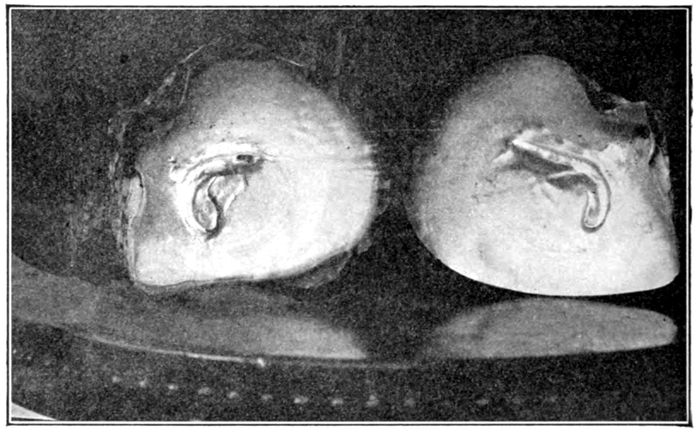
Fig. 476.—Pearlfish, Fierasfer dubius Putnam, embedded in a layer of mother-of-pearl. La Paz, Lower California. (Photograph by Capt. M. Castro.)
The Pearlfishes: Fierasferidæ.—In the little group of pearlfishes,
called Fierasferidæ or Carapidæ, the body is eel-shaped
with a rather large head, and the vent is at the throat. Numerous
species of Fierasfer (Carapus) are found in the warm seas.
These little fishes enter the cavities of sea-cucumbers (Holothurians)
and other animals which offer shelter, being frequently
taken from the pearl-oyster. In the Museum of Comparative
523Zoology, according to Professor Putnam, is "one valve of a
pearl-oyster in which a specimen of Fierasfer dubius is beautifully
inclosed in a pearly covering deposited on it by the
oyster." A photograph of a similar specimen is given above.
The species found in Holothurians are transparent in texture,
with a bright pearly luster. Species living among lava rocks,
as Jordanicus umbratilis of the south seas, are mottled black.
Since this was written a specimen of this black species has been
obtained from a Holothurian in Hilo, Hawaii, by Mr. H. W.
Henshaw.
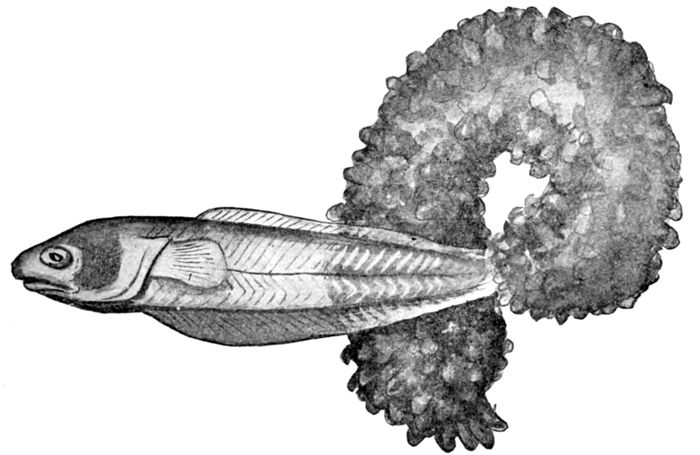
Fig. 477.—Pearlfish, Fierasfer acus (Linnæus), issuing from a Holothurian. Coast of Italy. (After Emery.)
The Brotulidæ.—The Brotulidæ constitute a large family of
fishes, resembling codfishes, but differing in the character of
the hypercoracoid, as well as in the form of the tail. The
resemblance between the two groups is largely superficial. We
may look upon the Brotulidæ as degraded blennies, but the
Gadidæ have an earlier and different origin which has not yet
been clearly made out. Most of the Brotulidæ live in deep
water and are without common name or economic relations.
Two species have been landlocked in cave streams in Cuba,
where they have, like other cavefishes, lost their sight, a phenomenon
which richly deserves careful study, and which has been
recently investigated by Dr. C. H. Eigenmann. These blind
524Brotulids, called Pez Ciego in Cuba, are found in different caves
in the county of San Antonio, where they reach a length of
about five inches. As in other blindfishes, the body is translucent
and colorless. These species are known as Lucifuga subterranea
and Stygicola dentata. They are descended from allies
of the genera called Brotula and Dinematichthys. Brotula barbata
is a cusk-like fish, occasionally found in the markets of
Havana. Similar species, Brotula multibarbata and Sirembo
inermis, are common in Japan, and Brosmophycis marginatus,
beautifully red in color, is occasionally seen on the coast of
California. Many other genera and species abound in the
depths of the sea and in crevices of coral reefs, showing much
variety in form and structure.

Fig. 478.—Brotula barbata Schneider. Cuba.
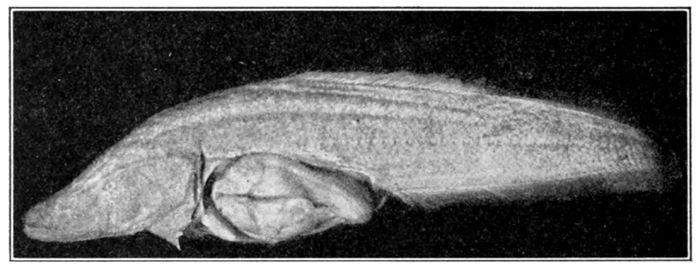
Fig. 479.—Blind Brotula. Lucifuga subterranea (Poey), showing viviparous habit. Joignan Cave, Pinar del Rio, Cuba. (Photograph by Dr. Eigenmann.)
The Bregmacerotidæ are small fishes, closely related to the
Brotulids, having the hypercoracoid perforate, but with several
minor peculiarities, the first ray of the dorsal being free
and much elongate. They live near the surface in the open
sea. Bregmaceros macclellandi is widely diffused in the Pacific.
525Ateleopodidæ.—The small family of Ateleopodidæ includes long-bodied,
deep-water fishes of the Pacific, resembling Macrourus,
but with smooth scales. The group has the coracoids as in
Brotulidæ, and the actinosts are united in an undivided plate.
Ateleopus japonicus is the species taken in Japan.
Suborder Haplodoci.—We may here place the peculiar family
of Batrachoididæ, or toadfishes. It constitutes the suborder
of Haplodoci (ἁπλόος, simple; δόκος, shaft) from the simple
form of the post-temporal. This order is characterized
by the undivided post-temporal bone and by the reduction
of the gill-arches to three. A second bone behind the post-temporal
connects the shoulder-girdle above to the vertebral
column. The coracoid bones are more or less elongate, suggesting
the arm seen in pediculate fishes.
The single family has the general form of the Cottidæ, the
body robust, with large head, large mouth, strong teeth, and
short spinous dorsal fin. The shoulder-girdle and its structures
differ little from the blennioid type. There are no pseudobranchiæ
and the tail is homocercal. The species are relatively
few, chiefly confined to the warm seas and mostly American,
none being found in Europe or Asia. Some of them ascend
rivers, and all are carnivorous and voracious. None are valued
as food, being coarse-grained in flesh. The group is probably
nearest allied to the Trachinidæ or Uranoscopidæ.
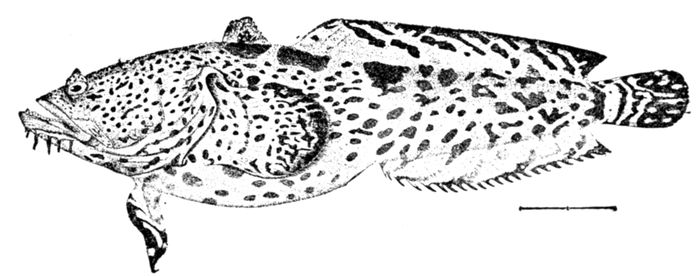
Fig. 480.—Leopard Toadfish, Opsanus pardus (Goode & Bean). Pensacola.
Opsanus tau, the common toadfish, or oyster-fish, of our
Atlantic coast, is very common in rocky places, the young
clinging to stones by a sucking-disk on the belly, a structure
526which is early lost. It reaches a length of about fifteen inches.
Opsanus pardus, the leopard toadfish, or sapo, of the Gulf coast,
lives in deeper water and is prettily marked with dark-brown
spots on a light yellowish ground.
In Opsanus the body is naked and there is a large foramen,
or mucous pore, in the axil of the pectoral. In the Marcgravia
cryptocentra, a large Brazilian toadfish, this foramen is absent.
In Batrachoides, a South American genus, the body is covered
with cycloid scales. Batrachoides surinamensis is a common
species of the West Indies. Batrachoides pacifici occurs at
Panama. The genus Porichthys is remarkable for the development
of series of mucous pores and luminous spots in several
different lateral lines which cover the body. These luminous
spots are quite unlike those found in the lantern-fishes
(Myctophidæ) and other Iniomi. Their structure has been
worked out in detail by Dr. Charles Wilson Greene, a summary
of whose conclusions are given on page 191, Vol. I.
The common midshipman, or singing fish, of the coast of
California is Porichthys notatus. This species, named midshipman
from its rows of shining spots like brass buttons, is
found among rocks and kelp and makes a peculiar quivering
or humming noise with its large air-bladder.
Porichthys porosissimus, the bagre sapo, is common on
all coasts of the Gulf of Mexico and the Caribbean Sea. Porichthys
margaritatus is found about Panama and Porichthys
porosus in Chile.

Fig. 481.—Singing Fish or Bagre Sapo, Porichthys porosissimus (Cuv. & Val.). Galveston.
The species of Thalassophryne and Thalassothia, the poison
toadfishes, are found along the coasts of South America, where
they sometimes ascend the rivers. In these species there is
527an elaborate series of venom glands connected with the hollow
spines of the opercle and the dorsal spines. Dr. Günther gives
the following account of this structure as shown in Thalassophryne
reticulata, a species from Panama:
"In this species I first observed and closely examined the
poison organ with which the fishes of this genus are provided.
Its structure is as follows: (1) The opercular part: The operculum
is very narrow, vertically styliform and very mobile; it is
armed behind with a spine, eight lines long in a specimen of 10½
inches, and of the same form as the venom fang of a snake; it
is, however, somewhat less curved, being only slightly bent
upward. It has a longish slit at the outer side of its extremity
which leads into a canal perfectly closed and running along
the whole length of its interior; a bristle introduced into the
canal reappears through another opening at the base of the
spine, entering into a sac situated on the opercle and along the
basal half of the spine; the sac is of an oblong-ovate shape and
about double the size of an oat grain. Though the specimen
had been preserved in spirits for about nine months it still contained
a whitish substance of the consistency of thick cream,
which on the slightest pressure freely flowed from the opening
in the extremity of the spine. On the other hand, the sac could
be easily filled with air or fluid from the foramen of the spine.
No gland could be discovered in the immediate neighborhood
of the sac; but on a more careful inspection I found a minute
tube floating free in the sac, whilst on the left-hand side there
is only a small opening instead of the tube. The attempts to
introduce a bristle into this opening for any distance failed,
as it appears to lead into the interior of the basal portion of the
operculum, to which the sac firmly adheres at this spot. (2) The
dorsal part is composed of the two dorsal spines, each of which
is ten lines long. The whole arrangement is the same as in
the opercular spines; their slit is at the front side of the point;
each has a separate sac, which occupies the front of the basal
portion; the contents were the same as in the opercular sacs,
but in somewhat greater quantity. A strong branch of the
lateral line ascends to the immediate neighborhood of their base.
Thus we have four poison spines, each with a sac at its base; the
walls of the sacs are thin, composed of a fibrous membrane,
528the interior of which is coated over with mucus. There are
no secretory glands embedded between these membranes, and
these sacs are probably merely the reservoirs in which the fluid
secreted accumulates. The absence of a secretory organ in
the immediate neighborhood of the reservoirs (an organ the
size of which would be in accordance with the quantity of fluid
secreted), the diversity of the osseous spines which have been
modified into poison organs, and the actual communication
indicated by the foramen in the sac lead me to the opinion
that the organ of secretion is either that system of muciferous
channels which is found in nearly the whole class of fishes, and
the secretion of which has poisonous qualities in a few of them,
or at least an independent portion of it. This description was
made from the first example; through the kindness of Captain
Dow I received two other specimens, and in the hope of proving
the connection of the poison bags with the lateral-line system,
I asked Dr. Pettigrew, of the Royal College of Surgeons, a
gentleman whose great skill has enriched that collection with
a series of the most admirable anatomical preparations, to lend
me his assistance in injecting the canals. The injection of the
bags through the opening of the spine was easily accomplished;
but we failed to drive the fluid beyond the bag or to fill with
it any other part of the system of muciferous channels. This,
however, does not disprove the connection of the poison bags
with that system, inasmuch as it became apparent that if there
be minute openings they are so contracted by the action of the
spirit in which the specimens were preserved as to be impassable
to the fluid of injection. A great part of the lateral-line
system consists of open canals; however, on some parts of the
body, these canals are entirely covered by the skin; thus, for
instance, the open lateral line ceases apparently in the suprascapular
region, being continued in the parietal region. We
could not discover any trace of an opening by which the open
canal leads to below the skin; yet we could distinctly trace the
existence of the continuation of the canal by a depressed line,
so that it is quite evident that such openings do exist, although
they may be passable only in fresh specimens. Thus likewise
the existence of openings in the bags, as I believed to have found
in the first specimen dissected, may be proved by examination
529of fresh examples. The sacs are without an external muscular
layer and situated immediately below the loose thick skin
which envelops their spines to their extremity. The injection
of the poison into a living animal, therefore, can only be effected
by the pressure to which the sac is subjected the moment the
spine enters another body. Nobody will suppose that a complicated
apparatus like the one described can be intended for
conveying an innocuous substance, and therefore I have not
hesitated to designate it as poisonous; and, Captain Dow
informs me in a letter lately received, 'the natives of Panama
seemed quite familiar with the existence of the spines and of
the emission from them of a poison which, when introduced
into a wound, caused fever, an effect somewhat similar to that
produced by the sting of a scorpion; but in no case was a wound
caused by one of them known to result seriously. The slightest
pressure of the finger at the base of the spine caused the poison
to jet a foot or more from the opening of the spine.' The greatest
importance must be attached to this fact, inasmuch as it
assists us in our inquiries into the nature of the functions of
the muciferous system, the idea of its being a secretory organ
having lately been superseded by the notion that it serves
merely as a stratum for the distribution of peripheric nerves.
Also the objection that the sting-rays and many Siluroid fishes
are not poisonous because they have no poison organ cannot
be maintained, although the organs conveying their poison
are neither so well adapted for this purpose nor in such a perfect
connection with the secretory mucous system as in Thalassophryne.
The poison organ serves merely as a weapon of defense.
All the Batrachoids with obtuse teeth on the palate and in the
lower jaw feed on Mollusca and Crustaceans."
No fossil Batrachoididæ are known.
Suborder Xenopterygii.—The clingfishes, forming the suborder
Xenopterygii (ξενός, strange; πτερύξ, fin), are, perhaps,
allied to the toadfishes. The ventral fins are jugular, the rays
I, 4 or I, 5, and between them is developed an elaborate sucking-disk,
not derived from modified fins, but from folds of the
skin and underlying muscles.
The structure of this disk in Gobiesox sanguineus is thus
described by Dr. Günther:
530"The whole disk is exceedingly large, subcircular, longer
than broad, its length being (often) one-third of the whole
length of the fish. The central portion is formed merely by
skin, which is separated from the pelvic or pubic bones by
several layers of muscles. The peripheric portion is divided
into an anterior and posterior part by a deep notch behind the
ventrals. The anterior peripheric portion is formed by the
ventral rays, the membrane between them and a broad fringe
which extends anteriorly from one ventral to the other. This
fringe is a fold of the skin, containing on one side the rudimentary
ventral spine, but no cartilage. The posterior peripheric
portion is suspended on each side on the coracoid, the upper
bone of which is exceedingly broad, becoming a free, movable
plate behind the pectoral. The lower bone of the coracoid is
of a triangular form, and supports a very broad fold of the skin,
extending from one side to the other, and containing a cartilage
which runs through the whole of that fold. Fine processes
of the cartilage are continued into the soft striated margin,
in which the disk terminates posteriorly. The face of the disk
is coated with a thick epidermis, like the sole of the foot in
higher animals. The epidermis is divided into many polygonal
plates. There are no such plates between the roots of the
ventral fins."

Fig. 482.—Aspasma ciconiæ Jordan & Snyder. Wakanoura, Japan.
The body is formed much as in the toadfishes. The skin
is naked and there is no spinous dorsal fin. The skeleton shows
several peculiarities; there is no suborbital ring, the palatine
arcade is reduced, as are the gill-arches, the opercle is reduced
to a spine-like projection, and the vertebræ are numerous. The
species are found in tide-pools in the warm seas, where they
cling tightly to the rocks with their large ventral disks.
531Several species of Lepadogaster and Mirbelia are found in
the Mediterranean. Lepadogaster gouani is the best-known
European species. Aspasma ciconiæ and minima occur about
the rocks in the bays of Japan.

Fig. 483.—Clingfish, Caularchus mæandricus (Girard). Monterey, Cal.
Most of the West Indian species belong to Gobiesox, with
entire teeth, and to Arbaciosa, with serrated teeth. Some of these
species are deep crimson in color, but most of them are dull
olive. Gobiesox virgatulus is common on the Gulf Coast. Caularchus
mæandricus, a very large species, reaching a length of
six inches, abounds along the coast of California. Other genera
are found at the Cape of Good Hope, especially about New
Zealand. Chorisochismus dentex, from the Cape of Good Hope,
reaches the length of a foot.
532
CHAPTER XXX
OPISTHOMI AND ANACANTHINI
Order Opisthomi.—The order Opisthomi (ὄπισθη, behind;
ὤμος, shoulder) is characterized by the general traits
of the blennies and other elongate, spiny-rayed
fishes, but the shoulder-girdle, as in the Apodes and the
Heteromi, is inserted on the vertebral column well behind the
skull.
The single family, Mastacembelidæ, is composed of eel-shaped
fishes with a large mouth and projecting lower jaw, inhabiting
the waters of India, Africa, and the East Indies. They are
small in size and of no economic importance. The dorsal is
long, with free spines in front and there are no ventral fins.
Were these fins developed, they should in theory be jugular in
position. There is no air-duct in Mastacembelus and it seems
to be a true spiny-rayed fish, having no special relation to
either Notacanthus or to the eels. Except for the separation
of the shoulder-girdle from the skull, there seems to be no
reason for separating them far from the Blennioid forms, and
the resemblance to Notacanthus seems wholly fallacious.

Fig. 484.—Mastacembelus ellipsifer Boulenger. Congo River. (After Boulenger.)
Mastacembelus armatus is a common species of India and
China. In Rhynchobdella the nasal appendage or proboscis, conspicuous
in Mastacembelus, is still more developed. Rhynchobdella
aculeata is common in India.
Order Anacanthini.—We may separate from the other
jugular fishes the great group of codfishes and their allies,
533retaining the name Anacanthini (ἄνακανθος, without spine)
suggested by Johannes Müller. In this group the hypercoracoid
is without foramen, the fenestra lying between this
bone and the hypocoracoid below it. The tail is isocercal, the
vertebræ in a right line and progressively smaller backward,
sometimes degenerate or whip-like (leptocercal) at tip. Other
characters are shown in the structure of the skull. There are
no spines in any of the fins; the ventrals are jugular, the scales
generally small, and the coloration dull or brownish. The
numerous species live chiefly in the northern seas, some of
them descending to great depths. The resemblance of these
fishes to some of the Blennioid group is very strongly marked, but
these likenesses seem analogical only and not indicative of true
affinity. The codfishes probably represent an early offshoot from
the ancestors of the spiny-rayed fishes, and their line of evolution
is unknown, possibly from Ganoid types. Among recent fishes
there is nothing structurally nearer than the Nototheniidæ and
Brotulidæ, but the line of descent must branch off much farther
back than either of these. For the present, therefore, we may regard
the codfishes and their allies (Anacanthini) as a distinct order.
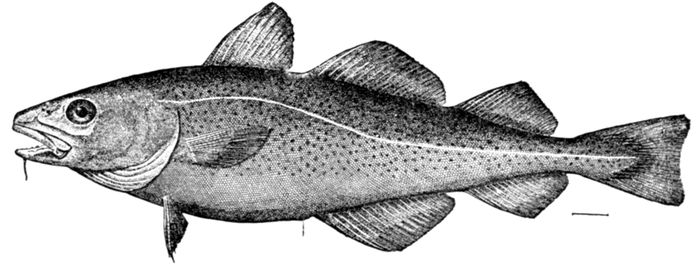
Fig. 485.—Codfish, Gadus callarias L. Eastport, Me.
The Codfishes: Gadidæ.—The chief family is that of the Gadidæ,
or codfishes. These are characterized by a general resemblance
to the common codfish, Gadus callarias. This is one of the best
known of fishes, found everywhere on the shores of the North
Atlantic, and the subject of economic fisheries of the greatest
importance. Its flesh is white, flaky, rather tasteless, but takes
salt readily, and is peculiarly well adapted for drying. The
average size of the codfish is about ten pounds, but Captain
534Nathaniel Atwood of Provincetown records one with the weight
of 160 pounds.
According to Dr. Goode:
"In the western Atlantic the species occurs in the winter in
considerable abundance as far south as the mouth of the Chesapeake
Bay, latitude 37°, and stragglers have been observed
about Ocracoke Inlet. The southern limits of the species may
be safely considered to be Cape Hatteras, in latitude 35° 10´.
Along the coast of New England, the Middle States, and British
North America, and upon all the off-shore banks of this region,
cod are found usually in great abundance, during part of the
year at least. They have been observed also in the Gulf of
Bothnia, latitude 70° to 75°, and in the southeastern part of
Baffin's Land to the northward of Cumberland Sound, and it
is more than probable that they occur in the waters of the Arctic
Sea to the north of the American continent, or away around
to Bering Strait."
Dr. Gill says:
"The ocean banks of moderate depths are the favorite
resorts of the cod, but it is by no means confined to those
localities. The fish, indeed, occasionally enters into fresh,
or at least brackish, water. According to Canadian authorities,
it is found 'well up the estuary of the St. Lawrence, though
how far up is not definitely stated, probably not beyond the
limits of brackish water.' Even as far south as the Delaware
River it has been known to enter the streams. Dr. C. C. Abbott
records that in January, 1876, 'a healthy, strong, active codfish,
weighing nearly four pounds, was taken in a draw-net
in the Delaware River near Trenton, New Jersey; the stomach
of the fish showed that it had been in river-water several days.
Many of them had been taken about Philadelphia between
1856 and 1869.'
"The cod ranks among the most voracious of ordinary
fishes, and almost everything that is eatable, and some that
is not, may find its way into its capacious maw. Years ago,
before naturalists had the facilities that the dredge now affords,
cods' stomachs were the favorite resort for rare shells, and some
species had never been obtained otherwise than through such
a medium, while many filled the cabinet that would not otherwise
535have been represented. In the words of Mr. Goode, 'codfish
swallow bivalve fish of the largest size, like the great sea-clams,
which are a favorite article of food on certain portions
of the coast'; further, 'these shells are nested, the smaller
inside of the larger, sometimes six or seven in a set, having
been packed together in this compact manner in the stomachs
of the codfish after the soft parts have been digested out. Some
of them had shreds of the muscles remaining in them and
were quite fresh, having evidently been but recently ejected
by the fish.' Even banks of dead shells have been found in
various regions, which are supposed to be the remains of mollusks
taken by the cod. Shell-fishes, however, form probably
but the smaller portion of its diet, and fishes of its own class
contribute materially to its food,—such as the herring family,
the capelin, etc.
"The codfish in its mode of reproduction exhibits some
interesting peculiarities. It does not come on the coast to
spawn, as was once supposed, but its eggs are deposited in mid-sea
and float to the surface, although it does really, in many
cases, approach the land to do so. Prof. C. O. Sars, who has
discovered its peculiarities, 'found cod at a distance of twenty
to thirty Norwegian miles from the shore and at a depth of
from one hundred to one hundred and fifty fathoms.' The
eggs thus confided to the mercy of the waves are very numerous;
as many as 9,100,000 have been calculated in a seventy-five-pound
fish. 'When the eggs are first seen in the fish they are
so small as to be hardly distinguishable; but they continue
to increase in size until maturity, and after impregnation have
a diameter depending upon the size of the parent, varying
from one-nineteenth to one-seventeenth of an inch. A five-
to eight-pound fish has eggs of the smaller size, while a twenty-five-pound
one has them between an eighteenth and a seventeenth.'
There are about 190,000 eggs of the smaller size to
a pound avoirdupois. They are matured and ejected from September
to November."
Unlike most fishes, the cod spawns in cooling water, a trait
also found in the salmon family.
The liver of the cod yields an easily digested oil of great
value in the medical treatment of diseases causing emaciation.
536The Alaska cod, Gadus macrocephalus, is equally abundant
with the Atlantic species, from which it differs very slightly,
the air-bladder or sounds being smaller, according to the fishermen,
and the head being somewhat larger. This species is found
from Cape Flattery to Hakodate in Japan, and is very abundant
about the Aleutian Islands and especially in the Okhotsk Sea.
With equal markets it would be as important commercially
as the Atlantic cod. In the codfish (Gadus) and related genera
there are three dorsal and two anal fins. In the codfish the
lateral line is pale and the lower jaw shorter than the upper.
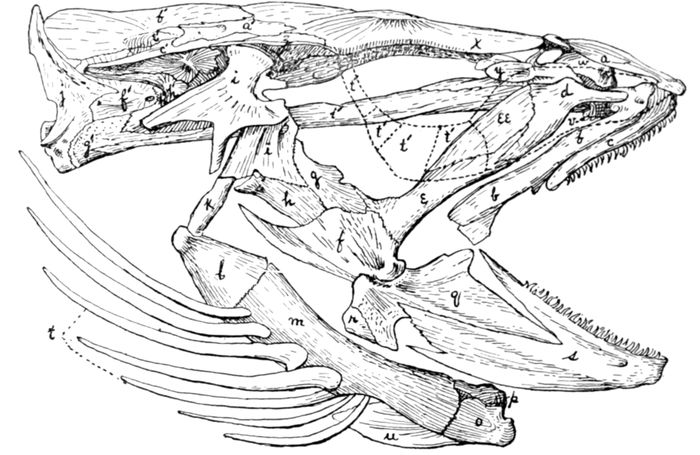
Fig. 486.—Skull of Haddock, Melanogrammus æglifinus.
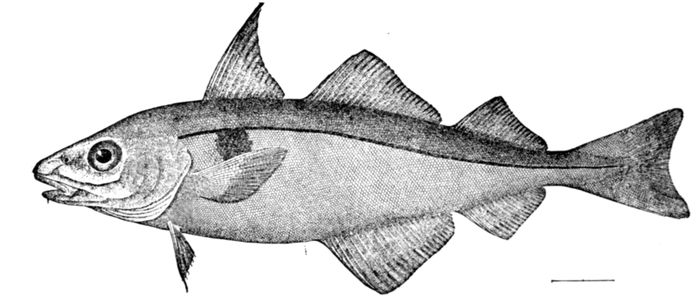
Fig. 487.—Haddock, Melanogrammus æglifinus (L.). Eastport, Me.
537The haddock (Melanogrammus æglifinus) closely resembles
the cod and is of similar quality as food. It is known at sight
by the black lateral line. It is found on both shores of the
Atlantic and when smoked is the "finnan haddie" of commerce.
The pollack, coalfish, or green cod (Pollachius carbonarius)
is also common on both shores of the north Atlantic. It is darker
than the cod and more lustrous, and the lower jaw is longer,
with a smaller barbel at tip. It is especially excellent when
fresh.

Fig. 488.—Pollock, Theragra chalcogramma (Pallas). Shumagin I., Alaska.
The whiting (Merlangus merlangus) is a pollack-like fish common
on the British coasts, but not reaching the American shores.
It is found in large schools in sandy bays. The Alaska pollack
(Theragra chalcogramma) is a large fish with projecting lower jaw,
widely diffused in the north Pacific and useful as a food-fish to
the Aleutian peoples. It furnishes a large part of the food of
the fur-seal (Callorhinus alascanus and C. ursinus) during its
migrations. The fur-seal rarely catches the true codfish, which
swims near the bottom. The wall-eyed pollack (Theragra
fucensis) is found about Puget Sound. Smaller codfishes of
this type are the wachna cod (Eleginus navaga) of Siberia and
the Arctic codling (Boreogadus saida), both common about Kamchatka,
the latter crossing to Greenland.
Several dwarf codfishes having, like the true cod, three dorsal
fins and a barbel at the chin are also recorded. Among
these are the tomcod, or frostfish, of the Atlantic (Microgadus
tomcod), the California tomcod (Microgadus proximus), and
Micromesistius poutassou of the Mediterranean. These little
cods are valued as pan fishes, but the flesh is soft and without
much flavor.
538
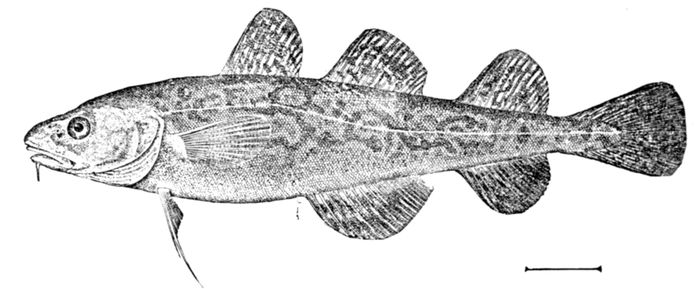
Fig. 489.—Tomcod, Microgadus tomcod (Walbaum). Wood's Hole, Mass.
Other cod-like fishes have but two dorsals and one anal fin.
Many of these occur in deep water. Among those living near
shore, and therefore having economic value, we may mention a
few of the more prominent. The codlings (Urophycis) are represented
by numerous species on both shores of the Atlantic.
Urophycis blennoides is common in the Mediterranean. Urophycis
regius, on our South Atlantic coast, is said to exhibit
electric powers in life, a statement that needs verification.
In the Gulf of Mexico Urophycis floridanus is common. Farther
north are the more important species Urophycis tenuis,
called the white hake, and Urophycis chuss, the squirrel-hake.
The ling (Molva molva) is found in deep water about the North
Sea.
A related genus, Lota, the burbot, called also ling and, in
America, the lawyer, is found in fresh waters. This genus contains
the only fresh-water members of the group of Anacanthini.
The European burbot, Lota lota, is common in the streams
and lakes of northern Europe and Siberia. It is a bottom fish,
coarse in flesh and rather tasteless, eaten sometimes when boiled
and soaked in vinegar or made into salad. It is dark olive in
color, thickly marbled with blackish.
The American burbot, or lawyer (Lota maculosa), is very
much like the European species. It is found from New England
throughout the Great Lakes to the Yukon. It reaches a
length of usually two or three feet and is little valued as food
in the United States, but rises much in esteem farther north.
The liver and roe are said to be delicious. In Siberia its skin
539is used instead of glass for windows. In Alaska, according to
Dr. Dall, it reaches a length of six feet and a weight of sixty
pounds.

Fig. 490.—Burbot, Lota maculosa (Le Sueur). New York.

Fig. 491.—Four-bearded Rockling, Enchelyopus cimbrius (Linnæus). Nahant, Mass.
The rocklings (Gaidropsarus and Enchelyopus) have the
first dorsal composed of a band of fringes preceded by a single
ray. The species are small and slender, abounding chiefly in the
Mediterranean and the North Atlantic. The young have been
called "mackerel-midges." Our commonest species is Enchelyopus
cimbrius, found also in Great Britain.
The cusk, or torsk, Brosme brosme, has a single dorsal fin
only. It is a large fish found on both shores of the North Atlantic,
but rather rare on our coasts.
Fossil codfishes are not numerous. Fragments thought to
belong to this family are found in English Eocene rocks.
Nemopteryx troscheli, from the Oligocene of Glarus, has three
dorsal fins and a lunate caudal fin. Other forms have been
referred with more or less doubt to Gadus, Brosmius, Strinsia,
and Melanogrammus.
Gill separates the "three-forked hake" (Raniceps trifurcus)
of northern Europe as a distinct family, Ranicipitidæ. In
this species the head is very large, broad and depressed, differing
in this regard from the codlings and hakes, which have also
540two dorsal fins. The deep-water genus, Bathyonus, is also
regarded as a distinct family, Bathyonidæ.
The Hakes: Merluciidæ.—Better defined than these families
is the family of hakes, Merluciidæ. These pike-like codfishes
have the skull peculiarly formed, the frontal bones being paired,
excavated above, with diverging crests continuous forward
from the forked occipital crest. The species are large fishes,
very voracious, without barbels, with the skeleton papery and
the flesh generally soft. The various species are all very much
alike, large, ill-favored fishes with strong teeth and a ragged
appearance, the flesh of fair quality. Merluccius merluccius,
the hake or stock-fish, is common in Europe; Merluccius bilinearis,
the silver hake, is common in New England, Merluccius productus
in California, and Merluccius gayi in Chile.

Fig. 492.—California Hake, Merluccius productus (Ayres). Seattle.

Fig. 493.—Coryphænoides carapinus (Goode & Bean), showing leptoceral tail. Gulf Stream.
The Grenadiers: Macrouridæ.—The large family of grenadiers,
or rat-tails, Macrouridæ, is confined entirely to the oceanic
depths, especially of the north Atlantic and Pacific. The head is
formed much as in the codfishes, with usually a barbel at the chin.
There are two dorsals, the second like the anal being low, but
the leptocercal tail is very long and tapering, ending in a filament
541without caudal fin. The scales are usually rough and
spinous. The species are usually large in size, and dull gray or
black in color.
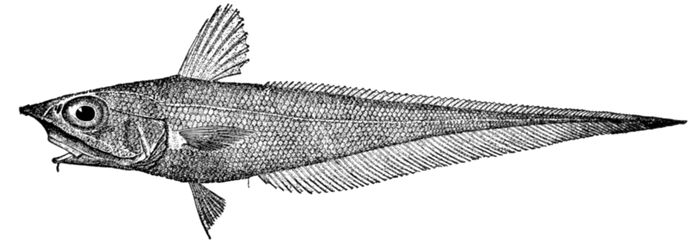
Fig. 494.—Grenadier, Cœlorhynchus carminatus Goode & Bean. Martha's Vineyard.
The best-known genus is Macrourus. Macrourus berglax
is found on both shores of the north Atlantic. Macrourus
bairdi is abundant in off-shore dredgings from Cape Cod to Cuba.
Macrourus cinereus, the pop-eye grenadier, outnumbers all other
fishes in the depths of Bering Sea. Cœlorhynchus japonicus is
often taken by fishermen in Japan. Coryphænoides rupestris
is common in the north Atlantic. Bogoslovius clarki and
Albatrossia pectoralis were dredged by the Albatross about the
volcanic island of Bogoslof. Trachyrhynchus trachyrhynchus
is characteristic of the Mediterranean. Nematonurus goodei is
common in the Gulf Stream, and Dolloa longifilis is found off
Japan. Other prominent genera are Bathygadus, Gadomus, Regania,
and Steindachnerella.

Fig. 495.—Steindachnerella argentea (Goode & Bean). Gulf Stream.
The Murænolepidæ are deep-sea fishes, with minute eel-like
scales, and no caudal fin. The ventrals are five-rayed and there
are 10 pterygials.
542
CHAPTER XXXI
ORDER PEDICULATI: THE ANGLERS
The Angler-fishes.—The few remaining fishes possess also
jugular ventral fins, but in other regards they show so
many peculiarities of structure that we may well consider
them as forming a distinct order, Pediculati (pedicula,
a foot-stalk), although the relation of these forms to the
Batrachoididæ seems a very close one.
The most salient character of the group is the reduction and
backward insertion of the gill-opening, which is behind the
pectoral fins, not in front of them as in all other fishes. The
hypocoracoid and hypercoracoid are much elongate and greatly
changed in form, so that the pectoral fin is borne on the end of a
sort of arm. The large ventrals are similarly more or less exserted.
The spinous dorsal is much reduced, the first spine
being modified to form a so-called fishing-rod, projecting over
the mouth with a fleshy pad, lure, or bait at its tip. The form
of the body varies much in the different families. The scales
are lost or changed to prickles and the whole aspect is very
singular, and in many cases distinctly frog-like. The species are
mostly tropical, some living in tide-pools and about coral reefs,
some on sandy shores, others in the oceanic abysses.
The nearest allies of the Pediculates among normal fishes
are probably the Batrachoididæ. One species of Lophiidæ is
recorded among the fossils, Lophius brachysomus, from the
Eocene of Monte Bolca. No fossil Antennariidæ are known.
Fossil teeth from the Cretaceous of Patagonia are doubtfully
named "Lophius patagonicus."
The Fishing-frogs: Lophiidæ.—In the most generalized family,
that of the fishing-frogs (Lophiidæ), the body is very much
depressed, the head the largest part of it. The mouth is excessively
wide, with strong jaw-muscles, and strong sharp teeth.
543The skin is smooth, with dermal flaps about the head. Over the
mouth, like a fishing-rod, hangs the first dorsal spine with a lure
at the tip. The fishes lie flat on the bottom with sluggish movements
except for the convulsive snap of the jaws. It has been
denied that the bait serves to attract small fishes to their destruction,
but the current belief that it does so is certainly plausible.
As to this Dr. Gill observes:
"The name 'angler' is derived from the supposition that by
means of the foremost dorsal spine, which bears leaf-like tags,
or appendages, at the end, it angles for fishes itself, lying upon
the ground with its head somewhat upraised. According to
Mr. S. Kent, however, this is at most only partly the case: 'That
the fish deliberately uses this structure as a fisherman does his
rod and line for the alluring and capture of other fish is a matter
of tradition handed down to us from the time of Pliny and
Aristotle, and which scarcely any authority since their time
has ventured to gainsay. Nevertheless, like many of the delightful
natural-history romances bequeathed to us by the
ancient philosophers, this one of the angler-fish will have to be
relegated to the limbo of disproved fiction. The plain and
certain ground of facts, all the same, has frequently more startling
revelations in store for us than the most fervid imaginations
of philosophers, and that this assertion holds good in the
case now under consideration must undoubtedly be admitted.
It is here proposed to show, in fact, that the angler is one of the
most interesting examples upon which Nature has exercised her
handicraft, in the direction of concealing the identity of her
protégé, such ingenuity being sometimes utilized with the object
of protecting the organism from the attacks of other animals, or,
as illustrated in the present instance, for the purpose of enabling
it by stealth to obtain prey which it lacks the agility to
hunt down after the manner of ordinary carnivorous fishes.
To recognize the several details here described, it will not suffice
to refer to examples simply, and usually most atrociously
stuffed, nor even to those preserved in spirit, in which all the
life colors are more or less completely obliterated and the various
membranous appendages shrunk up and distorted. In
place of this, a healthy, living example fresh from the sea, or,
better still, acclimatized in the tanks of an aquarium, must be
544attentively examined, and whereupon it will be found that
this singular fish, throughout the whole extent of its superficies,
may be appropriately designated a living sham."
It was, in the first place, observed by Mr. Kent "that
the fish while quietly reclining upon the bottom of its tank
presented a most astonishing resemblance to a piece of inert rock,
the rugose prominences in the neighborhood of the head lending
additional strength to this likeness. This resemblance being
recognized, it was next found, on a little closer inspection, that
the fish constituted, in connection with its color, ornamentations,
and manifold organs and appendages, the most perfect facsimile
of a submerged rock, with that natural clothing of sedentary
animal and vegetable growths common to boulders lying beneath
the water in what is known as the laminarian zone. In this
manner the numerous simple or lobulated membranous structures
dependent from the lower jaw and developed as a fringe
along the lateral line of the body imitate with great fidelity the
little flat calcareous sponges (Grantia), small compound ascidians,
and other low organized zoophytic growths that hang
in profusion from favorably situated submarine stones. That
famous structure known as the angler's 'rod and bait' finds its
precise counterpart in the early growing phase of certain sea-plants,
such as the oarweed (Laminaria), while the more posterior
dorsal fin-rays, having short lateral branchlets, counterfeit
in a like manner the plant-like hydroid zoophytes known
as Sertulariæ. One of the most extraordinary mimetic adaptations
was, however, found in connection with the eyes, structures
which, however perfectly the surrounding details may be
concealed, serve, as a rule, to betray the animal's presence to a
close observer. In the case of the angler, the eyes during life
are raised on conical elevations the sides of which are separated
by darker longitudinal stripes into symmetrical regions, the
structure, as a whole, with its truncated summit upon which
the pupil opens, reproducing with the most wonderful minuteness
the multivalve shell of a rook barnacle (Balanus). To
complete the simile the entire exposed surface of the body of
the fish is mapped out by darker punctated lines into irregular
polygonal areas, whose pattern is at once recognized by the
student of marine zoology as corresponding with that of the
545flat, cushion-like expansions of the compound tunicate Botryllus
violaceus. Thus disguised at every point, the angler has
merely to lie prone, as is its wont, among the stones and débris at
the bottom of the sea and to wait for the advent of its unsuspecting
prey, which, approaching to browse from what it takes
to be a flat rock—differing in no respect from that off which it
obtained the last appetizing morsel of weed or worm—finds itself
suddenly engulfed beyond recall within the merciless jaws of
this marine impostor."
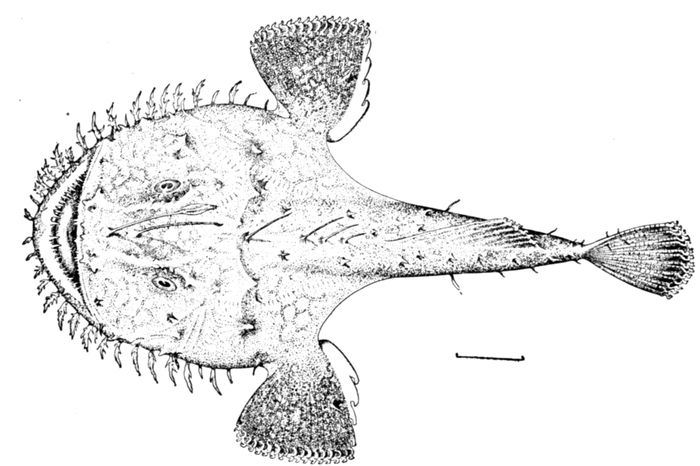
Fig. 496.—Anko or Fishing-frog, Lophius litulon (Jordan). Matsushima Bay, Japan.
The great fishing-frog of the North Atlantic, Lophius piscatorius,
is also known as angler, monkfish, goosefish, allmouth,
wide-gape, kettleman, and bellows-fish. It is common in shallow
water both in America and Europe, ranging southward to
Cape Hatteras and to the Mediterranean. It reaches a length
of three feet or more. A fisherman told Mr. Goode that "he
once saw a struggle in the water, and found that a goosefish had
swallowed the head and neck of a large loon, which had pulled
it to the surface and was trying to escape. There is authentic
record of seven wild ducks having been taken from the stomach
of one of them. Slyly approaching from below, they seize
birds as they float upon the surface."
546"The angler, or goosefish, spawns in summer along the eastern
Atlantic coast, and the result of its labor is quite remarkable.
'The eggs are very numerous, inclosed in a ribbon-shaped gelatinous
mass, about a foot in width and thirty or forty feet long,
which floats near the surface. One of these ribbons will weigh
perhaps forty pounds, and is usually partially folded together and
visible a foot or eighteen inches from the top of the water, its
color being brownish purple. The number of eggs in one of
these has been estimated to be from forty to fifty thousand.'
The growth of the young after exclusion from the egg is rather
rapid, and Professor Goode saw 'young fish two or three inches
long' while others were yet spawning, and these young fish
were presumably the fry of those that had spawned the same
year, only somewhat earlier. In a few days after hatching
they present a striking appearance on account of the enormous
development of the pectoral and ventral fins."
Aristotle gives, according to Professor Horace A. Hoffman,
this account of the angler: "'Inasmuch as the flat, front part
is not fleshy, nature has compensated for this by adding to the
rear and the tail as much fleshy substance as has been subtracted
from the front.' The βάτραχος is called the angler.
He fishes with the hair-like filaments hung before his eyes.
On the end of each filament is a little knob, just as if it had
been placed there for a bait. He makes a disturbance in sandy
or muddy places, hides himself and raises these filaments. When
the little fish strikes at them he leads them down with the
filaments until he brings them to his mouth. The βάτραχος is
one of the σελάχη. All the σελάχη are viviparous or ovoviviparous
except the βάτραχος. The other flat σελάχη have
their gills uncovered and underneath them, but the βάτραχος
has its gills on the side and covered with skinny opercula, not
with horny opercula like the fish which are not σελαχώδη.
Some fishes have the gall-bladder upon the liver, others have
it upon the intestine, more or less remote from the liver and
attached to it by a duct. Such are βάτραχος, ἔλλοψ, συνάγρίς,
σμύραινα, and ξιφίας. The βάτραχος is the only one of
the σελάχη which is oviparous. This is on account of the
nature of its body, for it has a head many times as large as the
rest of its body, and spiny and very rough. For this same
547reason it does not afterwards admit its young into itself. The
size and roughness of the head prevent them both from coming
out (i.e., being born alive) and from going in (being taken into
the mouth of the parent). The βάτραχος is the most prolific
of the σελάχη, but it is scarce because the eggs are easily
destroyed, for it lays them in a bunch near the shore."
The genus Lophius of northern range has a vertebral column
of about thirty vertebræ. Lophius litulon occurs in Japan.
In the North Pacific is found Lophiomus, similar in appearance
but smaller in size, ranging southward to the equator, a
southern fish having but eighteen vertebræ. Lophiomus setigerus
is the common anko of Japan, and other species are recorded
from Hawaii, and the Galapagos.
The Sea-devils: Ceratiidæ.—The sea-devils, or Ceratiidæ, are
degenerate anglers of various forms, found in the depths of the
arctic seas. The body is compressed, the mouth vertical; the
substance is very soft, and the color uniform black. Dr. Günther
thus speaks of them:
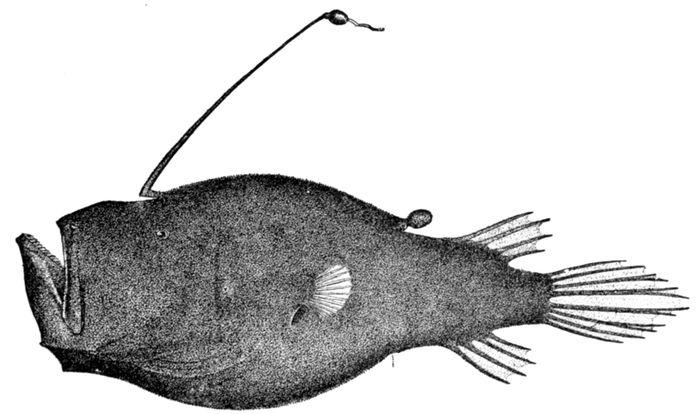
Fig. 497.—Cryptopsaras couesi Gill. Gulf Stream.
548

Fig. 498.—Deep-sea Angler, Ceratias holbolli Kröyer. Greenland.
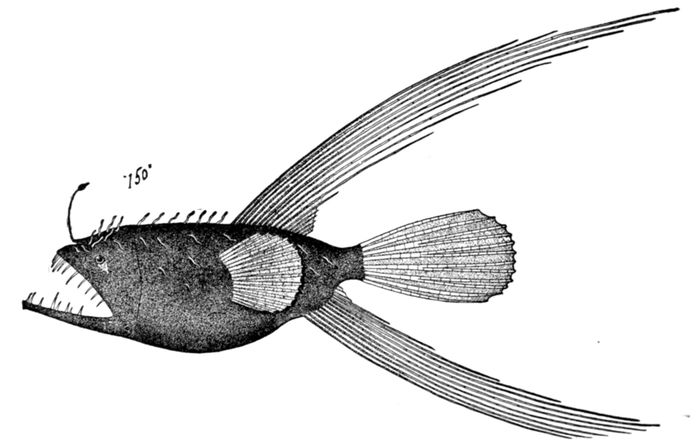
Fig. 499.—Caulophryne jordani Goode & Bean. Gulf Stream. Family Ceratiidæ.
"The bathybial sea-devils are degraded forms of Lophius;
they descend to the greatest depths of the ocean. Their bones
are of an extremely light and thin texture, and frequently other
parts of their organization, their integuments, muscles, and
intestines are equally loose in texture when the specimens are
brought to the surface. In their habits they probably do not
differ in any degree from their surface representative, Lophius.
The number of the dorsal spines is always reduced, and at the
end of the series of these species only one spine remains, with a
simple, very small lamella at the extremity (Melanocetus johnsonii,
Melanocetus murrayi). In other forms sometimes a
second cephalic spine, sometimes a spine on the back of the
trunk, is preserved. The first cephalic spine always retains
the original function of a lure for other marine creatures, but
to render it more effective a special luminous organ is sometimes
549developed in connection with the filaments with which its extremity
is provided (Ceratias bispinosus, Oneirodes eschrichtii).
So far as known at present these complicated tentacles attain
to the highest degree of development in Himantolophus and
Ægæonichthys. In other species very peculiar dermal appendages
are developed, either accompanying the spine on the back
or replacing it. They may be paired or form a group of three,
are pear-shaped, covered with common skin, and perforated at
the top, a delicate tentacle sometimes issuing from the foramen."
Of the fifteen or twenty species of Ceratiidæ described, none
are common and all are rare catches of the deep-sea dredge.
Caulophryne jordani is remarkable for its large fins and the
luminous filaments, Linophryne lucifer for its large head, and
Corynolophus reinhardti (Fig. 143, Vol. I) for its luminous fishing-bulb.
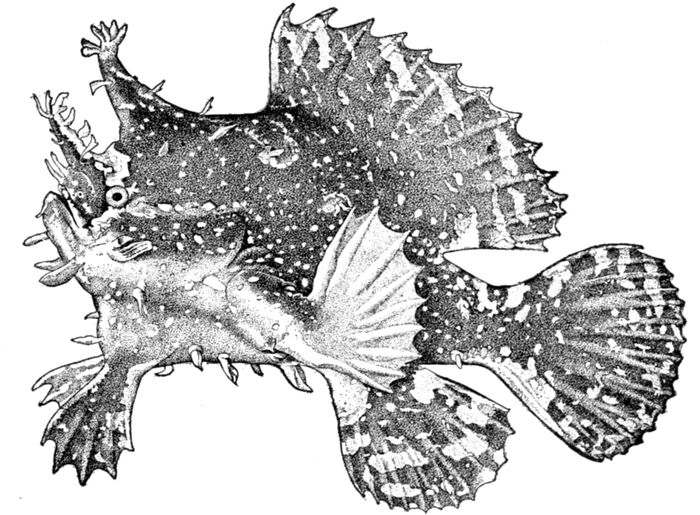
Fig. 500.—Sargassum-fish, Pterophryne tumida (Osbeck). Florida. Family Antennariidæ.
The Frogfishes: Antennariidæ.—The frogfishes, Antennariidæ,
belong to the tropical seas and rarely descend far below the surface.
Most of them abound about sand-banks or coral reefs,
especially along the shores of the East and West Indies, where
they creep along the rocks like toads. Some are pelagic, drifting
550about in floating masses of seaweed. All are fantastic in form
and color, usually closely imitating the objects about them.
The body is compressed, the mouth nearly vertical, and the skin
either prickly or provided with fleshy slips.
The species of Pterophryne live in the open sea, drifting with
the currents in masses of sargassum. Two species, Pterophryne
tumida and Pterophryne gibba, are found in the West Indies and
Gulf Stream. Two others very similar, Pterophryne histrio and
Pterophryne ranina, live in the East Indies and drift in the Kuro
Shiwo of Japan. All these are light olive-brown with fantastic
black markings.
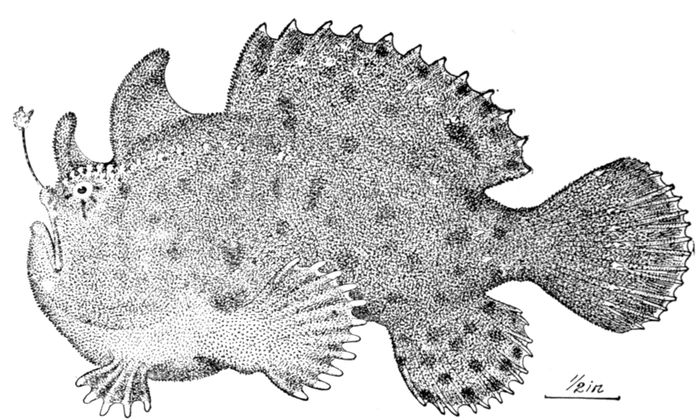
Fig. 501.—Fishing-frog, Antennarius nox Jordan. Wakanoura, Japan.
The genus Antennarius contains species of the shoals and
reefs, with markings which correspond to the colors of the rocks.
These fishes are firm in texture with a velvety skin, and the prevailing
color is brown and red. There are many species wherever
reefs are found. Antennarius ocellatus, the pescador, is
the commonest West Indian species. Antennarius multiocellatus,
with many ocellated spots, is the Martin Pescador of Cuba,
also common.
On the Pacific coast of Mexico the commonest species is
Antennarius strigatus. In Japan, Antennarius tridens abounds
everywhere on the muddy bottoms of the bays. Antennarius
551nox is a jet-black species of the Japanese reefs, and Antennarius
sanguifluus is spotted with blood-red in imitation of coralline
patches. Many other species abound in the East Indies and in
Polynesia. The genus Chaunax is represented by several deep-water
species of the West Indies, Japan, etc.
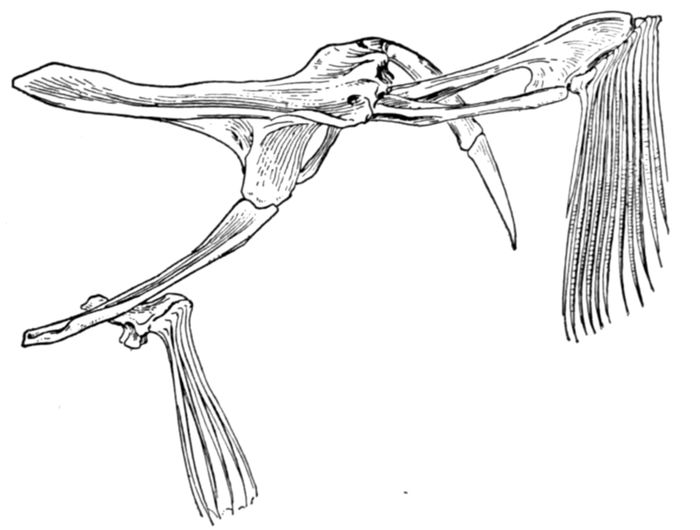
Fig. 502.—Shoulder-girdle of a Batfish, Ogcocephalus radiatus (Mitchill).
The Gigactinidæ of the deep seas differ from the Ogcocephalidæ,
according to Boulenger, in the absence of ventrals.

Fig. 503.—Frogfish, Antennarus scaber (Cuvier). Puerto Rico.
The Batfishes: Ogcocephalidæ.—The batfishes, Ogcocephalidæ,
are anglers with the body depressed and covered with hard
bony warts. The mouth is small and the bony bases of the
552pectoral and ventral fins are longer than in any other of the
anglers. The species live in the warm seas, some in very shallow
water, others descending to great depths, the deep-sea forms
being small and more or less degenerate. These walk along like
toads on the sea-bottoms; the ventrals, being jugular, act as fore
legs and the pectorals extend behind them as hind legs.

Fig. 504.—Ogcocephalus vespertilio (L.). Florida.
The common sea-bat, or diablo, of the West Indies, Ogcocephalus
vespertilio, is dusky in color with the belly coppery red.
It reaches the length of a foot. The angling spine is very short,
hidden under the long stiff process of the snout. Farther north
occurs the short-nosed batfish, Ogcocephalus radiatus, very similar,
but with the nostril process, or snout, blunt and short. Zalieutes
elater, with a large black eye-like spot on each side of the
back, is found on the west coast of Mexico. In deeper water
are species of Halieutichthys in the West Indies and of Halieutæa
in Japan. Dibranchus atlanticus has the gills reduced to two
pairs. Malthopsis consists of small species, with the rostrum
prominent, like a bishop's miter. Two species are found in the
Pacific, Malthopsis mitrata in Hawaii and Malthopsis tiarella in
Japan.
And with these dainty freaks of the sea, the results of centuries
on centuries of specialization, degeneration, and adaptation,
we close the long roll-call of the fishes, living and dead.
553And in their long genealogy is enfolded the genealogy of men
and beasts and birds and reptiles and of all other back-boned
animals of whom the fish-like forms are at once the ancestors,
the cousins, and the younger brothers. When the fishes of the
Devonian age came out upon the land, the potentiality of the
higher methods of life first became manifest. With the new
conditions, more varied and more exacting, higher and more
varied specialization was demanded, and, in response to these
new conditions, from a fish-like stock have arisen all the birds
and beasts and men that have dwelt upon the earth.
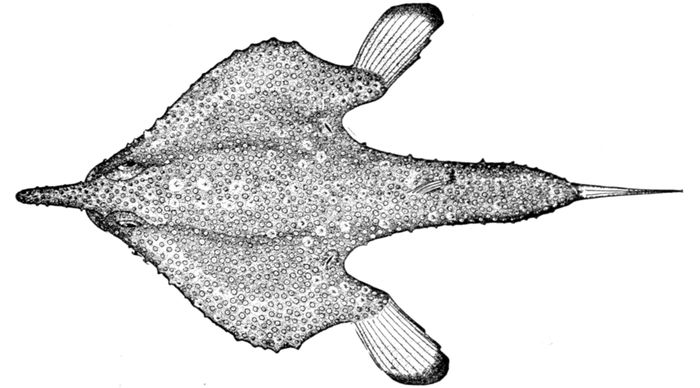
Fig. 505.—Batfish, Ogcocephalus vespertilio (L.). Florida.

Fig. 506.—Batfish, Ogcocephalus vespertilio (Linnæus). Carolina Coast.
555
INDEX
- aal-mutter, ii, 144
- Abbott, i, 415, 419, 422; ii, 307, 534
- abdominal fishes, ii, 39
- Abdominales, i, 393; ii, 38, 39
- Abeona, ii, 375
- Abramis, ii, 167
- Aboma,
- abundance of food-fish, i, 329
- abura-ainame, ii, 440
- abura-bodzu, ii, 323
- aburazame, i, 524
- Acantharchus, ii, 297
- Acanthistius, ii, 323
- Acanthobatis, i, 553
- Acanthocephala, i, 344, 351
- Acanthocepola, ii, 363
- Acanthoclinidæ, ii, 516
- Acanthoclinus, ii, 516
- Acanthocybium, ii, 266
- Acanthodei, i, 65, 437, 447, 513, 519, 545, 561
- Dean on, i, 517
- families of, i, 516
- order of, i, 514
- Woodward on, i, 514
- Acanthoëssidæ, i, 515, 516
- Acanthoëssus, i, 446, 510-513
- figure of, i, 515
- scales of, figured, i, 521
- Acantholabrus, ii, 387
- Acanthonemus, ii, 286
- Acanthopteri, ii, 157
- Acanthopterygian, ii, 39, 293
- Acanthopterygii, i, 391; ii, 189, 208-214
- Acanthostracion, i, 377
- Acanthuridæ, i, 206; ii, 405, 407, 410, 411
- Acanthurus, i, 268, 271; ii, 407, 409
- Acanus, ii, 330
- Acara, ii, 381
- Acentronura, ii, 236
- Acerina, ii, 241, 309
- Acentrophorus, ii, 23
- Achirinæ, ii, 495
- Achirus,
- Acipenser, i, 291, 332, 391, 452; ii, 18, 19, 20, 22
- figure of, ii, 19, 20
- larva of, figured, i, 141
- Acipenseridæ, i, 290; ii, 18
- Acipenseroidei, i, 382
- Acraniata, i, 484
- Acrocheilus, ii, 169
- Acrogaster, ii, 252
- Acrognathus, ii, 34
- Acropoma, ii, 317
- Acropomidæ, ii, 317
- Acrotidæ, ii, 285
- Acrotus, ii, 285
- Actinistia, i, 602
- Actinopteri, i, 451, 507, 599, 610; ii, 1, 2, 4, 5, 208
- Actinopterygii, i, 462; ii, 1
- Actinosts, ii, 1, 33
- actinotrichia, i, 80
- Adaptation of fishes, i, 177-225
- adaptive radiation,
- adder-fish, ii, 501
- Adelfisch, ii, 65
- Adelochorda, i, 461
- Adinia, ii, 199
- adipose fin, i, 25
- Ægæonichthys, ii, 549
- Æoliscus,
- Ærolepis, ii, 14
- Æthalion, ii, 41
- Ætheospondyli, ii, 24, 29
- Æthoprora,
- Aëtobatis, i, 557
- African catfish,
- figure of, i, 457; ii, 185
- Agassiz, A., i, 405
- Agassiz, L., i, 419, 428, 614; ii, 1, 39, 183, 486
- on dispersion, i, 284
- on Embiotocidæ, ii, 378, 379
- on embryology of garpike, ii, 31
- on fish fauna of N. E., i, 302
- on fossil fishes, i, 404
- on ganoids, ii, 9
- on high and low forms, i, 381
- on Lepidosteus, ii, 5
- on Onchus, i, 530
- portrait of, i, 399
- pupils of, i, 405
- questions raised by, i, 284
- sketch of, i, 404
- Age of fishes, i, 144-146
- agency of ocean currents, i, 243
- Agnatha, i, 508
- Agonidæ, i, 208; ii, 3, 185, 452, 453, 456
- Agonoid fish,
- figure of, i, 221; ii, 453
- Agonostomus, ii, 107, 222
- Agonus, i, 219; ii, 453
- Agrammus, ii, 440
- Ahl, i, 394
- aholehole, ii, 304
- air-bladder, i, 11
- air-duct, i, 12
- Aristotle on, 95
- Borelli on, i, 95
- of Carp, i, 93; ii, 159, 160
- in Cœlacanthus, i, 604
- defined, i, 92, 93
- De Fosse on, i, 97
- Delaroche on, i, 95
- figure of, i, 93, 604
- function of, i, 94
- in ganoids, i, 101
- gases in, i, 94
- in Labyrinthici, i, 91
- an organ of hearing, ii, 159
- origin of, i, 98
- position of, i, 35
- Sörensen on, i, 97
- Tower on, i, 95
- use of, i, 12
- wanting in sharks, i, 506
- Weber on, i, 96
- 556akadai, ii, 344
- Alaska blackfish, i, 51, 147, 290
- figure of, i, 149; ii, 206
- Alaska cod, ii, 536
- Alaska grayling,
- figure of, i, 328; ii, 120
- Alaskan rivers,
- Albacore, i, 210; ii, 136
- figure of, ii, 263
- Goode on, ii, 263
- long fin, ii, 263
- Albatross, the i, 263, 408; ii, 60, 130, 138
- Albatrossia, ii, 541
- Albula, i, 142, 205; ii, 29, 46, 148
- figure of, i, 147; ii, 44
- Albulidæ, ii, 41, 44
- Alburnus, ii, 167
- Alcock, i, 244, 408; ii, 290
- Aldrich,
- Aldrovandi, i, 388
- Aldrovandia,
- Alectis, i, 202; ii, 276
- aleihi, ii, 253
- Alepisauridæ, i, 134
- Alepocephalidæ, ii, 60
- Alepocephalus,
- alewife, ii, 49
- alfonsinos, ii, 251
- alimentary canal, i, 31
- alkaloid poisons, i, 182, 184, 185; ii, 411, 412
- allantiasis, i, 183
- alligator-fish, ii, 449, 453
- alligator-gar,
- allmouth, ii, 545
- Alopiidæ,
- Alosa, i, 204, 291; ii, 50
- Alticus,
- figure of, i, 230; ii, 509
- Alutera, i, 206; ii, 414, 415
- amadai, ii, 363
- Amanses, ii, 415
- Amaræcium, i, 477
- Ambassis, ii, 317
- Ambassidæ, ii, 317
- amber-fish, ii, 272
- figure of, i, 458; ii, 273
- amber-jack, ii, 274
- Amblodon, i, 302
- Ambloplites,
- figure of, ii, 299
- skull of, figured, ii, 296
- Amblyopsidæ, 290; ii, 204
- Amblyopsis, i, 220, 314
- figure of, i, 221, 222; ii, 203
- Amblypterus, ii, 14
- Amblystoma, i, 78
- Ameiurus, i, 283, 293, 310, 356; ii, 35, 183, 185, 186, 299
- figure of, i, 344, 358; ii, 180, 181
- parasites of, i, 344
- American charr, ii, 110
- American fishes,
- Amia, i, 33, 101, 102, 204, 291, 344, 391, 612, 623; ii, 8, 9, 11, 31, 33, 36, 41, 160
- figure of, ii, 33, 35
- lower jaw of, ii, 33
- shoulder-girdle in, i, 86
- tail of, i, 82
- Amiatus, i, 394
- Amiidæ, i, 290; ii, 4, 34, 35, 36
- Amioidei,
- Amiopsis, ii, 36
- Amitra, ii, 454
- Ammocœtes, i, 142
- Ammocrypta, ii, 306
- figure of, i, 158; ii, 313
- Ammodytes, ii, 224, 391, 514, 522
- Ammodytidæ, ii, 215, 520, 521
- Amphacanthi,
- Ampheristus, ii, 436
- Amphibia, i, 393, 600, 606
- Amphibians, ii, 9
- Amphicœlian, i, 49
- Amphiodon, i, 394
- Amphioxides, i, 483
- Amphioxus, i, 482, 495
- Amphiplaga, ii, 243
- Amphipnoidæ, 11, 141
- Amphipnous, ii, 141
- Amphiprion, ii, 384
- Amphisile, ii, 235
- Amphisticus, ii, 375
- Amphistiidæ,
- Amphistium, ii, 485
- Amyzon, ii, 175
- Anabantidæ, ii, 215, 370
- Anabas, i, 91, 103, 163
- Anableps, i, 117, 391; ii, 131
- eye of, ii, 194
- figure of, i, 117
- Marsh on, ii, 194
- Nelson on, ii, 196
- Anacanthini, i, 405; ii, 484, 485, 499, 501, 532, 533, 538
- anadromous fishes, i, 291
- anadromous salmon, ii, 68
- anal fin, i, 10
- in Embiotocidæ, i, 125
- as intromittent organ, i, 124
- in Pœciliidæ, i, 125
- in sword-tail minnow, i, 124
- analogy and homology, i, 368, 369
- Anampses, ii, 390
- Anarhichadidæ, ii, 517
- Anarhichas, i, 208, 391; ii, 518
- figure of, ii, 517
- food of, ii, 518
- Anarchias, ii, 153
- Anarrhichthys, i, 208, 364; ii, 518
- Anarthri, i, 509
- Anarthrodira, i, 584, 585, 590
- Anaspida, i, 573, 622
- anatomy of tunicates,
- Anchovia, i, 199, 205
- anchovy,
- anchovy, silvery,
- ancient outlet of Lake Bonneville,
- Ancylostylos, ii, 45
- Andaman Islands,
- Andrews, i, 428
- Anema, ii, 504
- angel-fishes, i, 547, 549
- angler-fishes, i, 189, 206; ii, 542-553
- carpels of, i, 51
- figure of, i, 52
- Gill on, ii, 543
- habits of, ii, 543-545
- Kent on, ii, 543
- anglers,
- angling, i, 336
- 557Anguilla, i, 127, 162, 211; ii, 143
- Anguillidæ, i, 290; ii, 148
- angular, i, 606
- Anisotremus, i, 271; ii, 341
- Anomalopidæ,
- anko,
- Anomalops, ii, 317
- Anoplogaster, ii, 252
- Anoplopoma,
- Anoplopomidæ,
- Anoplus, i, 260; ii, 333
- Antechinomys, ii, 471
- Antennariidæ, i, 52; ii, 542, 549, 553
- Aristotle on, ii, 546
- deep-sea, ii, 548
- Goode on, ii, 545
- habits of, ii, 544-546
- Hoffmann on, ii, 546
- spawning of, ii, 546
- Antennarius, i, 197, 206
- Anthias, ii, 328
- Antiarcha, i, 573, 581, 590, 622
- Antigonia, i, 262
- Anyperodon, ii, 328
- ao, ii, 274
- Apeltes,
- Aphanopus, i, 210
- Aphareus,
- Aphredoderidæ, i, 290; ii, 243, 294
- Aphredoderus, ii, 204, 252, 291, 294, 296
- Apia,
- coral reef of, figured, i, 234
- Apichthys, ii, 278
- Aplidiopsis,
- Aploactis, i, 202
- Aplodactylidæ, ii, 363
- Aplodactylus, ii, 364
- Aplodinotus, i, 291, 302; ii, 354, 357
- Apocopodon, i, 558
- Apodes, i, 393, 611; ii, 40, 139-158, 532
- Apodichthys, i, 227; ii, 512
- Apogon,
- figure of, i, 455; ii, 316, 319
- Apogonidæ,
- Apomotis, i, 26, 310; ii, 301
- figure of, i, 27; ii, 350
- Apostasis, ii, 406
- Apostolides, i, 412
- Appendicularia, i, 466
- Appendiculariidæ, i, 474
- Aprion, i, 325; ii, 338
- Apsilus, ii, 338
- aquatic worms, ii, 143
- Aracana, ii, 417
- Arapaima, ii, 11, 56
- Arbaciosa,
- Archæomænidæ, ii, 29
- Archæus, ii, 278
- Archencheli,
- archers, ii, 400
- archicercal tail, i, 81, 83
- archipterygium, i, 59-61, 68, 69, 73, 446, 459, 511, 512, 522, 598, 600, 601
- Boulenger on, i, 79
- Gegenbaur on, i, 60
- Günther on, i, 60
- archnoid membrane, i, 109
- Archoplites, i, 179, 240; ii, 297
- Archosargus, i, 324; ii, 346
- figure of, i, 31; ii, 347
- Archoteuthis, ii, 410
- Arctic codling, ii, 537
- Arctic species,
- in lakes, i, 316
- Loven on, i, 317
- Malmgren on, i, 317
- Smith on, i, 317
- Arctoscopus, ii, 364
- Argentina, i, 391
- Argentinidæ, ii, 122, 124
- Argidæ, ii, 185
- Argyropelecus,
- figure of, i, 190; ii, 137
- Argyrosomus, i, 315; ii, 62, 65, 67
- Ariscopus, i, 257
- Aristotle, ii, 146
- on fishes of Greece, i, 387
- on noises of fish, i, 95
- Arius, ii, 178, 186
- arm of frog, i, 601
- ama-ama, ii, 221
- armado, i, 169
- arnillo, ii, 338
- Arnoglossus, ii, 488
- arrow-toothed halibut, ii, 491
- Artedi, i, 374, 390
- Artediellus, ii, 442
- Artedius, ii, 442
- Arthrodira, i, 573, 584, 585, 590, 612
- Dean on, i, 581
- Jækel on, i, 591
- Arthrodires, i, 204, 241, 436, 437, 603, 622; ii, 3
- classification of, i, 584
- figure of, i, 445, 584
- occurrence of, i, 583
- relationships of, i, 588
- Arthropteridæ, i, 553
- Arthropterus, i, 553
- Arthrognathi, i, 581, 584, 585, 589, 590
- Arthrothoraci, i, 584, 586, 587
- articular, i, 606
- artificial impregnation,
- Ascanius, i, 396; ii, 472
- Ascelichthys, ii, 449
- Ascidia,
- Ascidiacea, i, 474
- ascidians, i, 460, 467
- Kingsley on, i, 474
- Ritter on, i, 474
- Ascidiiæ, i, 474, 475
- Ascidina,
- Aseraggodes, ii, 496
- Ashmead,
- on leprosy transmission, i, 186
- Asineopidæ, ii, 243, 296, 317
- Asineops, ii, 243, 317
- Asmuss, i, 427
- Aspasma, ii, 531
- Aspidocephali, i, 568, 575
- Aspidoganoidei, i, 568
- Aspidophoroides,
- Aspidorhini, i, 568
- Aspidorhynchidæ, ii, 24, 29
- Aspidorhynchus, ii, 29
- Aspius, ii, 175
- Aspredo, ii, 184
- Aspro, ii, 307, 310
- aspron, ii, 309
- Asterolepidæ, i, 576, 623
- Asterolepis, i, 577, 591
- 558Asterospondyli, i, 447, 510, 513, 532
- asterospondylous, i, 49
- Asterosteidæ, i, 584, 585
- Asterosteus, i, 585
- Asterropteryx, i, 263
- Astrodermiidæ, i, 551
- Astrodermus, i, 551
- Astrolabe, the, i, 408
- Astrolytes,
- Astronesthidæ, ii, 128
- Astrape, i, 554
- Astroscopus, ii, 503
- Gilbert on, i, 187
- electric organs of, i, 187
- Asymmetron, i, 483; ii, 467
- Ateleaspis, i, 574
- Atheresthes, i, 205; ii, 491
- Atherina, i, 393; ii, 216
- Atherinidæ, i, 290; ii, 215
- Atherinops, ii, 218
- Atherinopsis,
- Atherinosoma, ii, 218
- Athlennes, ii, 211
- Atka fish,
- figure of, i, 328; ii, 439
- Atka mackerel, ii, 439
- Atlantic creek, i, 308, 309
- Atlantic oarfish, ii, 472
- Atlantic salmon, ii, 89
- attenuate, i, 19
- Atthey, i, 426
- Auchenopterus, ii, 508
- atule, ii, 275
- auditory ossicles, ii, 160
- Aulichthys, ii, 233
- Aulolepis, ii, 48
- Aulopidæ, ii, 130, 132
- Aulopus, i, 259; ii, 190
- Aulorhamphus, ii, 406
- Aulorhynchidæ,
- Aulorhynchus, ii, 233
- Aulostomidæ,
- Aulostomus, ii, 233
- Australia, ii, 363
- Australian flying-fish,
- Australian lung-fish, i, 100
- autochthonous, i, 245
- autostylic skull, i, 561; ii, 8
- Auxis, ii, 262
- awa, ii, 45, 221
- awaawa, ii, 43
- awaous, i, 254; ii, 465
- aweoweo, ii, 333
- Axinurus, ii, 409
- axonasts, i, 604, 605; ii, 17
- Ayres, i, 419, 428
- ayu, i, 256; ii, 115, 117, 118
- figure of, i, 321; ii, 116
- fishing for figured, i, 333, 335
- Azevia, i, 271; ii, 489
- d'Azyr, i, 390
- Azygostei, i, 581
- azygous, i, 88
- Baer, i, 428
- Bagarius, ii, 186
- bagonado, ii, 344
- bagre, ii, 182
- bagre de Rio, ii, 182
- Bagrus, ii, 183
- Baikal cods, ii, 455
- Baird, i, 419; ii, 142
- on bluefish, ii, 279-282
- on eel migrations, ii, 142
- portrait of, i, 407
- Bairdiella, ii, 355
- Bakker, i, 428
- Balanoglossidæ, i, 465
- Balanglossus, i, 461
- Balanus, ii, 544
- balaos, ii, 212
- Balfour, i, 428, 511, 513; ii, 8
- finfold theory, i, 69, 514
- lateral-fold theory, i, 71-73
- on paired fins, ii, 8
- on sharks, i, 511
- Balfour and Parker,
- Balistapus, i, 181; ii, 413
- Balistes, i, 206, 391, 611; ii, 22
- figure of, i, 184; ii, 412
- Balistidæ, ii, 413, 418
- Ballou,
- banded rockfish,
- banded sunfish,
- bandfishes, ii, 363
- bandfishes,
- Banks, i, 395
- barbels, i, 115; ii, 170
- barber-fish, ii, 328
- barbero, ii, 408
- barbudos, ii, 256
- Barbulifer, ii, 462
- Barbus, ii, 170, 175
- Barkas, i, 426
- Barneville, i, 412
- Barracuda, ii, 34, 39, 215, 266, 317, 469
- Barracuda,
- family of, ii, 222
- figure of, ii, 223
- Barramunda, i, 116, 614, 615
- barreto, ii, 467
- barriers,
- Alleghanies, i, 311
- artificial dams, i, 300
- Cape of Good Hope, i, 268
- checks to movement, i, 240
- crossing by fishes, i, 302
- to dispersion, i, 297
- Isthmus of Panama, i, 269
- local, i, 298
- mountain chains, i, 310
- Rocky Mountains, i, 305
- the Sierras, i, 310
- silt-bearing streams, i, 301
- species absent from, i, 239
- temperature, i, 298
- waterfalls, i, 300
- watersheds, i, 205
- basal bone,
- of dorsal fin, i, 49
- figure of, i, 49, 56
- of pectoral fin, i, 59
- baseosts, ii, 17
- basilar, i, 88
- Basilevsky, i, 411
- basking shark, i, 539
- figure of, i, 540
- largest of fishes, i, 539
- bass, i, 4, 21, 47, 290, 323, 440; ii, 316-350
- black, i, 303, 304
- white, i, 321
- yellow, i, 321
- bassalian fishes, i, 245, 246; ii, 128
- Bassani, i, 427
- Bassozetus,
- bastard halibut, ii, 489
- Bateson, i, 463
- batfish, ii, 402, 458
- figure of, ii, 553
- shoulder-girdle of, i, 88; ii, 551
- Bathyclupeidæ, ii, 290
- Bathygadus, ii, 541
- Bathylagus, ii, 127
- Bathymaster, ii, 502
- Bathymasteridæ, ii, 502
- Bathyonidæ, ii, 540
- Bathyonus, ii, 540
- Bathypteroidæ, ii, 130
- Bathypterois, ii, 131
- Batoidei, i, 519
- Batrachians, i, 85, 87, 88
- Batrachoides, i, 394; ii, 526
- 559Batrachoides,
- shoulder-girdle of, i, 59
- Batrachoididæ, i, 182, 192; ii, 525, 529, 542
- Batrachoids, ii, 529
- Batrictius, i, 394
- Bdellostoma, i, 490
- Beagle, the, i, 408
- Bean, i, 408, 419
- Beardslee, ii, 101
- Beardslee trout, ii, 101
- Belemnobatis, i, 551
- Bellotti, i, 412
- bellows fish, ii, 545
- Belon,
- on fishes of Mediterranean, i, 388
- Belone, ii, 210, 211
- Belonidæ,
- Belonorhynchidæ, ii, 514
- Belonorhynchus, ii, 17
- Belostomus, ii, 29
- Bembradidæ, ii, 441, 499
- Bembras, ii, 441
- Benecke,
- on spawning of eels, ii, 146
- Beneden, i, 427
- benimasu, ii, 72
- Bennett, i, 408, 416
- Bentenia, ii, 286
- Benthosauridæ, ii, 130
- Benthosaurus, ii, 131
- Berg, i, 415
- Berndt,
- opah taken by, ii, 244
- photograph by, i, 323
- Berycidæ, i, 206; ii, 294, 499
- Berycoidei, ii, 40, 245, 290, 484, 485
- Berycoid fishes, ii, 250
- figure of, i, 439; ii, 253
- Starks on, ii, 250
- Berycoids, ii, 247
- Berycopsis, ii, 285
- Beryx, i, 259, 263, 438; ii, 249, 289
- beshow, ii, 438
- Betta, i, 163; ii, 370
- biajaiba, ii, 336
- Bianconi, i, 412
- Bibron, i, 412
- big-eye, ii, 333
- big-eyed scad, ii, 275
- Birkenia, i, 580
- Birkeniidæ, i, 579
- bishop-fish, i, 361
- bishop-fish,
- Björnson,
- on fishing villages of Norway, i, 329
- black angel, ii, 405
- black angel-fish,
- black bass, i, 209; ii, 168, 301, 328
- Hallock on, ii, 302
- Henshall on, ii, 302
- large-mouthed, ii, 304
- small-mouthed, ii, 303
- black bream, ii, 206
- Black Current of Japan, sharks in, i, 536
- black escolar, 338
- black-fin snapper, ii, 336
- blackfish, ii, 387
- black grouper, ii, 323, 325
- black-horse, ii, 173
- Blackiston's line,
- relation to fishes, i, 257
- black-jack, ii, 276
- black nohu,
- figure of, i, 180; ii, 436
- stinging spines of, i, 180
- black-nosed dace,
- figure of, i, 342; ii, 164
- parasites on, i, 342
- black rockfish, ii, 429
- black ruff, ii, 284
- black sea-bass, ii, 329
- black-sided darter,
- blacksmith, ii, 381
- black-spotted sailor's choice, ii, 341
- black-spotted trout, ii, 95
- black swallower,
- figure of, i, 29; ii, 360
- black tai, ii, 344
- black will, ii, 328
- black wrasse, ii, 387
- Blainville, i, 400
- Blake, i, 60, 408
- Blanchard, i, 412
- blanquillos, ii, 361, 362
- blastoderm, i, 135
- blastomeres, i, 135
- blastopore, i, 138
- blastula, i, 131, 132
- bleak, ii, 163, 167
- Bleeker, i, 376, 412, 414
- Bleekeria, ii, 521
- Bleekeriidæ, ii, 522
- Blenniidæ, i, 208, 276, 290; ii, 506-531
- Blennioidea, ii, 470
- Blennius, i, 208, 391; ii, 511, 513
- Blennius,
- blenny, i, 209, 230, 290, 429; ii, 507-531
- figure of, ii, 509, 511
- Japanese, i, 9; ii, 513
- kelp, ii, 507
- northern, ii, 511
- sarcastic, ii, 507
- snake, ii, 512
- Blepsias,
- blind Brotula,
- blind catfish, ii, 181
- blind cavefish,
- figure of, i, 116; ii, 202
- blindfish, i, 290; ii, 202, 524
- descent of, ii, 202
- Eigenmann on, i, 117; ii, 202
- habits of, ii, 202
- theories regarding origin, ii, 202
- blindfish of Mammoth Cave, ii, 202, 203
- Eigenmann on, i, 221, 222
- figure of, i, 221
- blind goby, ii, 467
- blob, ii, 444
- Bloch, i, 389, 397
- Blochiidæ, ii, 514
- Blochius,
- Blossom, the, i, 408
- blue-back, ii, 71, 73-76
- blue-back salmon, ii, 68, 69
- blue-breasted darter, i, 231; ii, 314
- blue cod, ii, 440
- bluefin, ii, 66
- bluefin cisco,
- bluefish, ii, 278, 354
- Baird on, i, 279-282
- destructiveness of, ii, 281
- figure of, i, 324; ii, 279
- food of, ii, 280
- bluegill,
- blue-green sunfish, i, 26
- figure of, i, 27; ii, 350
- blue parrot-fish, ii, 396
- figure of, ii, 394
- figure of jaws, ii, 393
- blue sharks, i, 534, 542
- blue smelt,
- blue-spotted guativere, ii, 324
- blue surf-fish, ii, 375
- blue tang, ii, 408
- 560Blyth, i, 396
- boarfishes, ii, 135, 398
- bobo,
- boccaccio, ii, 429
- Bocage, i, 414
- Bocourt, i, 412
- Bodianus, i, 207, 271; ii, 388
- boga, ii, 347, 348
- Bogoslovius, ii, 541
- Bohr, i, 97
- Boleophthalmus, ii, 465
- figure of, i, 118; ii, 466
- Boleosoma, i, 302; ii, 313
- Bollman, i, 420
- Boltenia, i, 475
- Bombay-duck, ii, 131
- bonaci-arará, ii, 325
- bonaci-cardenal, ii, 325
- Bonaparte, i, 412
- bones of the fish,
- actinosts, i, 42
- alisphenoid, i, 38, 39, 40, 53
- anal fin, i, 48
- angular, i, 42, 43, 54
- articular, i, 42, 43, 54
- basibranchial, i, 46
- basihyal, i, 42, 45
- basioccipital, i, 36, 38, 39, 40, 53
- basisphenoid, i, 36, 38, 39, 53
- branchiostegals, i, 42, 45
- carpals, i, 51
- caudal fin, i, 48
- caudal vertebræ, i, 48
- ceratobranchial, i, 46
- ceratohyal, i, 42, 45
- clavicle, i, 42, 50, 52
- coracoid, i, 50, 51
- dentary, i, 42, 43, 54
- dorsal fin, i, 48
- epihyal, i, 42, 45
- epibranchial, i, 46
- epioccipital, i, 36
- epiotic, i, 36, 37, 38, 39, 40, 53
- epipleurals, i, 48
- ethmoid, i, 36, 37, 53
- exoccipital, i, 36, 37, 38, 39, 40, 53
- frontal, i, 36, 37, 38, 53
- glossihyal, i, 42
- hæmal spine, i, 48
- hæmaphysis, i, 48
- hyoid arch, i, 42
- hyomandibular, i, 42, 44, 54
- hypercoracoid, i, 42, 52
- hypobranchial, i, 46
- hypocoracoid, i, 42, 43, 52
- hypural, i, 48, 49
- infraclavicle, i, 51
- interclavicle, i, 51
- interhæmals, i, 49
- interhyal, i, 42, 45
- interneural, i, 48
- interopercle, i, 42, 45, 54
- interspinals, i, 49
- isthmus, i, 45
- maxillary, i, 41, 42
- mesopterygoid, i, 41, 42
- metapterygoid, i, 41, 42, 54
- nasal, i, 42, 53
- neural spine, i, 48
- neuropophysis, i, 48
- opercle, i, 42, 54
- opisthotic, i, 36, 37, 38, 39, 40
- palatine, i, 41, 42, 54
- parapophysis, i, 48
- parietal, i, 36, 37, 39, 40, 53
- parsasphenoid, i, 36, 38, 53
- pectoral fin, i, 42
- pelvic girdle, i, 42
- pharyngeals, i, 46, 47
- figure of, i, 47
- lower, i, 46
- suspensory, i, 46
- upper, i, 46
- postclavicle, i, 42, 51
- postero-temporal, i, 50
- post-temporal, i, 42, 52
- prefrontal, i, 36, 37, 38, 53
- premaxillary, i, 42
- preopercle, i, 42, 54
- preorbital, i, 41, 42
- prootic, i, 36, 38, 53
- proscapula, i, 50
- pterotic, i, 36, 37, 38, 39, 40, 53
- pterygials, i, 51
- pterygoid, i, 41, 42, 54
- quadrate, i, 42, 43, 54
- ribs, i, 48
- scapula, i, 50
- shoulder-girdle, i, 42, 50, 51, 52
- sphenotic, i, 36, 37, 38, 53
- subopercle, i, 42, 54
- suborbital, i, 42
- supraclavicle, i, 42, 50
- supraoccipital, i, 36, 37, 38, 53
- suprascapula, i, 50
- supratemporal, i, 42, 50
- symplectic, i, 42, 54
- urohyal, i, 42, 54
- ventral fin, i, 42
- vomer, i, 36, 37, 38, 53
- zygapophysis, i, 48
- bonito, ii, 264
- bonnaterre, i, 397
- bony fish, i, 204, 454, 506; ii, 37
- classification of, ii, 38
- development of, i, 135
- figure of, ii, 438
- specialized, figured, i, 456
- bony scales, i, 21
- Boops, i, 260, 267; ii, 348, 350
- Borassus, ii, 367
- Borelli, i, 390
- Boreogadus, ii, 537
- botolism, i, 183
- Bothinæ, ii, 487
- Bothriocephalus, i, 345
- Bothriolepis, i, 577
- Bothus, ii, 486
- Botryllidæ, i, 476
- Botryllus, i, 476; ii, 545
- figure of, i, 477, 478, 479
- bottle-nosed chimæra,
- Bougainville, i, 395
- Boulenger, i, 360, 364, 370, 414, 428, 513, 600, 601, 606, 608, 609; ii, 41, 48, 128, 129, 136, 138, 158, 190, 485, 502, 522, 551
- on Archipterygium, i, 79
- on Galaxias, ii, 205
- catalogue of fishes, i, 402
- on opahs, ii, 243
- portrait of, i, 403
- on vertebræ, i, 213
- on zooid fishes, ii, 245
- Bovichthyidæ, ii, 502
- bowfin, i, 290, 440; ii, 33, 34
- figure of, ii, 35
- tail of, figured, i, 82
- Bowring,
- on noises by fishes, i, 168
- Brachydirus, i, 590
- Brachyistius, ii, 375
- Brachymystax, ii, 62, 67
- brain,
- of chimæra, i, 410, 411
- figures of, i, 110, 111
- Günther on, i, 109
- in hagfish, i, 112
- of lamprey, i, 112
- of perch, i, 111
- of pike, i, 109
- of primitive fishes, i, 112
- reflex action of, i, 153
- of shark, i, 110, 111
- Brama, ii, 135, 286
- 561Bramidæ, ii, 291
- branch herring, ii, 49
- branchial bones, i, 46
- Branchiostegi, i, 391
- Branchiostoma, i, 34, 35, 120, 383, 483
- eggs of, i, 131
- figure of, i, 484
- Branchiostomidæ, i, 484
- Brandt, i, 412
- Branner, i, 415
- Brayton, i, 420
- bream, ii, 163, 167
- Bregmaceros, ii, 524
- Bregmacerotidæ, ii, 524
- Brevoort, i, 416
- Brevoortia, ii, 51
- figure of, i, 340; ii, 51
- brit, ii, 216, 217
- broad-shad, ii, 347
- broad-soles, ii, 495
- Brongniart, i, 427, 428
- brook lamprey,
- figure of, i, 120, 505
- larva of, figured, i, 492
- mouth of, figured, i, 492
- Brooks,
- on Appendicularia, i, 480
- brook trout, ii, 99, 107, 108, 110, 113, 115
- Brosme, ii, 539
- Brosmius, ii, 539
- Brosmophycis, ii, 524
- Brotula,
- figure of, ii, 524
- blind, figured, ii, 524
- Brotulidæ, i, 314; ii, 523, 533
- Brotulids, ii, 39, 524
- Broussonet, i, 396
- Brown, i, 426
- Browne, i, 389
- brown tang,
- figure of, i, 181; ii, 408
- Brünnich, i, 394
- Bryactinus, i, 565
- Brycon,
- Bryostemma,
- Bryttosus, i, 256; ii, 297, 320
- buccal cirri, i, 595
- Buchanan,
- on hunting of Chaca, i, 170
- Buckland, i, 423
- on soles, ii, 497
- on turbot roe, ii, 488
- Bucklandium, ii, 186
- budai, ii, 390
- buffalo-cod, ii, 440
- Buffalo Creek, i, 309
- buffalo-fish, ii, 160, 172
- figure of, ii, 173
- shoulder-girdle of, i, 51
- buffalo sculpin,
- bulbus arteriosus, ii, 10, 11
- bullhead, i, 356
- bullhead shark,
- bumpers, ii, 276
- Bunocephalidæ, ii, 184
- burbot, i, 209; ii, 538
- Bürger, i, 414
- butter-fish, ii, 283, 284, 324, 512
- butterfly fish, i, 440; ii, 381
- figure of, i, 143; ii, 402
- butterfly ray, i, 556
- butterfly sculpin,
- caballerote, ii, 335
- cabezon, ii, 442
- cabra mora,
- cabrilla, ii, 324, 328, 329
- cachucho,
- Cælorhynchus,
- Cæsio, ii, 342
- cagon de le alto, ii, 337
- cají, ii, 336
- Calamoichthys, i, 76, 89, 608
- Calamostoma, ii, 236
- Calamus, i, 49, 238; ii, 344
- calico-bass, ii, 297
- calico-salmon, ii, 72
- California lancelet,
- California miller's thumb,
- California hake,
- California pampano, ii, 283
- California sucker,
- Callbreath,
- on running of salmon, ii, 86
- Callechelys, ii, 150
- Callichthyidæ, ii, 185
- Callichthys, i, 290
- calling the fishes, i, 167, 168
- in Indian temples, i, 167
- in basins of Tuileries, i, 167
- Callionymidæ, ii, 506
- Callionymus, i, 246, 257, 259, 263, 393, 500, 504
- Callipterygidæ, ii, 501
- Callipteryx, ii, 501
- Calliurus, i, 302
- Callorhynchus, i, 565, 566
- Callorhinus, ii, 537
- Calotomus, ii, 390, 391
- Camper, i, 389
- Campostoma, ii, 164
- figure of, i, 33; ii, 167
- Campyloprion, i, 529
- candil, ii, 255
- candle-fish, ii, 124
- Canestrini, i, 412
- Canobius, ii, 14
- Canthidermis, ii, 413
- Canthigaster, i, 206
- Cantor, i, 416
- Cape of Good Hope,
- capelin,
- capello, i, 414
- capitaine,
- Capros, ii, 135, 398, 400
- Caracanthidæ, ii, 438
- Carangidæ, i, 144, 149, 210; ii, 15, 278, 470
- Carangopsis, ii, 278
- Carangus, i, 169, 324; ii, 275, 276, 285
- Carapidæ, ii, 522
- Caraproctus, ii, 455
- Carapus, ii, 520, 522
- Carassius, ii, 171
- Caranx, ii, 245, 275, 470, 542
- Carboniferous,
- fishes, i, 437
- sharks, i, 224
- Carcharias, i, 447, 534, 543; ii, 468
- Carchariidæ, i, 532, 534, 540, 542, 543
- carcharioid sharks, i, 540
- Carcharodon, i, 538
- Carcharopsis, i, 522
- cardenal, ii, 316
- cardiform teeth, i, 29
- cardinal fishes, the, ii, 316
- figure of, i, 455; ii, 316, 319
- cardinal vein, i, 108
- Carencheli, ii, 140, 153, 155
- caribe,
- carnivorous fishes, i, 29
- carp, i, 21, 53, 93, 290; ii, 162, 164
- air-bladder of, figured, ii, 160
- 562native of China, ii, 170
- domestication of, ii, 170
- Carpiodes, i, 302
- carp-sucker,
- carrying eggs in mouth, i, 170-173
- casabe, ii, 276
- Cassiquiare,
- Branner on, i, 307
- crossing by fishes, i, 307
- Castelnau, i, 415
- Castour, i, 396
- Castro,
- catadromous fishes, i, 162, 291; ii, 143
- Catalina flying-fish,
- catalineta, ii, 341
- Catalogue,
- catalufa de lo alto,
- catalufa, ii, 288, 333
- Catesby, i, 389
- catfish, i, 4, 20, 53, 119, 122,128, 169, 290, 440; ii, 159, 160, 177-187
- African, ii, 185
- channel, ii, 179
- clavicle in, i, 87
- Cope on, i, 180
- descent from, ii, 186
- destroyed by lampreys, i, 357
- electric, ii, 183
- electric, figured, i, 186
- fossil, ii, 186
- of India, ii, 184
- Japanese, ii, 183
- Old World, ii, 182
- poison glands of, i, 180
- poison spine of, i, 179
- shoulder-girdle in, i, 86
- spines of, i, 179
- transfer to Sacramento, i, 310
- Catopteridæ, ii, 16
- Catopterus, ii, 16
- Catostomidæ, i, 46, 290; ii, 172, 175
- family of, ii, 171
- figure of, i, 315
- Catostomus, i, 198, 283, 302, 304, 316, 346; ii, 56
- figure of, i, 348; ii, 171
- pharyngeal teeth of, ii, 175
- cat shark, i, 533
- Catulus, i, 533
- caudal fin, i, 10
- caudal lancet, ii, 409
- Caularchus,
- Caulolatilus, ii, 362
- Caulolepis, ii, 252, 253
- Caulophryne,
- causes of dispersion, i, 318
- cavalla, ii, 266, 272-292
- cavefish, ii, 201, 523, 524
- Eigenmann on, ii, 524
- figure of, i, 117
- Cebedichthys, ii, 512
- Centaurus,
- centers of distribution, i, 244
- Centrarchidæ, i, 209, 232, 290; ii, 304, 320, 327, 380
- Centrarchus, i, 302; ii, 297
- Centriscidæ, ii, 227, 235
- Centriscus, i, 393; ii, 235
- Centrogenys, ii, 320
- Centrolepis, ii, 14
- Centrolophiidæ, ii, 283
- Centrolophius, i, 260; ii, 286
- Centrophoroides, i, 546
- Centrophorus, i, 546
- Centropomidæ, ii, 319
- Centropomus, i, 271, 273; ii, 309
- figure of, i, 324; ii, 319
- Centropristes, i, 136; ii, 328, 329
- Centroscymnus, i, 546
- Centrolabrus, ii, 387
- Cephalacanthidæ, i, 208
- Cephalacanthus, ii, 458
- Cephalaspidæ, i, 576, 623
- Cephalaspis, i, 444, 569, 571
- figure of, i, 576, 577, 579
- Cephalopholis, ii, 324, 325
- Cephaloscyllium, i, 197
- Cepola, i, 260, 264, 393; ii, 363
- Cepolidæ, the, ii, 363
- Ceratacanthus, ii, 414
- Ceratias,
- Ceratiidæ, i, 276
- Ceratobatis, i, 560
- Ceratocottus, ii, 443
- Ceratodontidæ, i, 600, 612
- Ceratodus, i, 77, 85, 613-616
- Ceratoscopelus,
- Ceratiidæ, ii, 547-549
- Cerdale, i, 271
- Cerdalidæ, ii, 516
- cestodes, i, 344
- Cestraciont shark, i, 526, 527, 530
- Eastman on, i, 529
- teeth, figured, i, 527
- Cestraciontes, i, 438, 519, 566
- Eastman on, i, 529
- families of, i, 528
- suborder of, i, 526
- teeth of figured, i, 527, 529
- Cetomimidæ, ii, 132
- Cetomimus,
- Cetorhinus,
- Cetorhinidæ,
- Cette, i, 396
- Chaca, i, 170
- Chacidæ, ii, 184
- Chænobryttus, i, 302; ii, 300
- Chætobranchus, ii, 381
- Chætodipterus,
- Chætodon, i, 235, 242, 267, 391; ii, 400, 403, 405, 406
- figure of, i, 143; ii, 402
- Chætodontidæ, i, 206; ii, 245, 291, 381, 398, 402, 404, 405
- Chætodonts, ii, 247
- Chalacodus, i, 566
- Challenger, the, ii, 60, 130
- Champsodon, ii, 361
- Champsodontidæ, ii, 361
- Chanos, i, 205; ii, 221
- Chanidæ,
- Channa,
- channel bass, ii, 355
- channel catfish,
- channel-cats, the, ii, 179, 182
- Channomuræna, ii, 153
- Chanoides, ii, 44
- Chapala Lake,
- Characidæ, ii, 161, 162
- Characin, i, 290
- Characinidæ, i, 205, 290; ii, 381
- Characins, ii, 61, 160-162, 186
- Characodon, ii, 201
- 563characters,
- of Elasmobranchs, i, 507
- of species, i, 292
- Charitosomus, ii, 56
- charr, ii, 67, 99, 107, 114, 122
- Charlevoix, ii, 64
- Chasmistes, i, 304, 316; ii, 172
- Chasmodes, ii, 509
- Chauliodontidæ, ii, 129
- Chauliodus,
- Chaunax, ii, 551
- Cheilio, ii, 390
- Cheilinus, ii, 390
- Cheilodipteridæ,
- Cheilodipterus, ii, 278
- Cheiracanthus, i, 517
- Cheirodopsis, ii, 15
- Cheirodus, ii, 14
- Cheirolepis, ii, 14
- Chelidonichthys, i, 260; ii, 456
- Chelmo, ii, 404
- Chelonichthyidæ, i, 586
- Chelonopsis, ii, 425
- Chonerhinus, ii, 419
- cherna, ii, 324
- chevron, ii, 89
- chiasma, ii, 4
- Chiasmodon, ii, 136
- figure of, i, 29; ii, 360
- Chiasmodontidæ, ii, 215, 360
- Chilobranchidæ, ii, 141
- Chilomycterus,
- Chiloscyllium, i, 56, 533
- Chimæra, i, 23, 35, 85, 204, 393, 435, 437, 448, 507, 509, 512-514, 545, 561-567, 595, 610
- of California, i, 564
- Dean on, i, 563
- figure of, i, 449, 564, 565
- Parker on, i, 563
- Chimæridæ,
- Chimæroids, i, 224, 583
- Chimæropsis, i, 566
- China fish,
- Chinese whitebait, ii, 127, 128
- chinook, ii, 69
- chirivita, ii, 405
- Chirocentridæ, ii, 46
- Chirocentrus, ii, 46, 48
- Chirolophis, ii, 512
- Chiropterygium, i, 600, 605
- Chirostoma,
- figure of, i, 329; ii, 217
- Chirothricidæ, ii, 133
- Chirothrix,
- chisel-mouth, ii, 169
- Chlamydoselachidæ,
- Chlamydoselachus, i, 361, 447, 448, 509, 521, 536
- Chlarias, i, 98, 290; ii, 186, 187
- figure of, i, 457; ii, 185
- Chlariidæ, ii, 184, 185
- Chlevastes, ii, 150
- Chloropthalmus, i, 260; ii, 130
- Chloroscombrus, ii, 276
- chochouwo, ii, 403
- chogset, ii, 387
- Chologaster, i, 203, 204, 223
- Eigenmann on, ii, 203
- figure of, i, 116; ii, 201
- Garman on, ii, 202
- Hoppin on, ii, 203
- Chondrenchelys, i, 521
- Chondropterygians, i, 508
- Chondropterygii, i, 391
- Chondrostei, i, 623, 624; ii, 2, 5, 13
- Chondrosteidæ, ii, 17, 18
- Chondrosteus, i, 622
- Chonerhinidæ, ii, 419
- Chopa, ii, 344, 350
- Chordata, i, 460
- Chordate animals, i, 460
- lowest forms figured, i, 465
- Chordates, i, 508, 584, 597; ii, 1
- Chorisochismus, ii, 531
- Chriodorus, ii, 212
- Chromides,
- Chromis, i, 166; ii, 381
- Chrondrosteus,
- Chrosomus, i, 304; ii, 164, 167
- chub, ii, 118, 147, 163
- figure of, ii, 169
- of Great Basin, ii, 169
- of Pacific, ii, 169
- chub of Great Basin,
- chub-mackerel, i, 94
- chub-sucker, i, 292
- figure of, i, 315; ii, 172
- chum, ii, 72
- cichla, ii, 380
- Cichlasoma, ii, 381
- cichlid, i, 290
- Cichlidæ, i, 209, 290; ii, 380, 381
- organs of smell in, i, 115
- cigar-fish, ii, 274
- ciguatera, i, 182-185; ii, 335, 411, 413
- Cimolichthys, ii, 133
- Ciona, i, 481
- Cirrhilabrus, ii, 390
- Cirrhitidæ, the, ii, 363, 426
- Cirrhitus, i, 271
- Cirrostomi, i, 482, 595
- cisco, ii, 65
- Citharichthys, i, 274; ii, 489
- Citharinus, ii, 162
- Citula, i, 202; ii, 276
- Cladistia, i, 602
- Cladodontidæ, i, 520, 522
- Cladodus, i, 65, 80, 437
- pectoral fin of, i, 521
- shoulder-girdle in, i, 521
- teeth of, figured, i, 522
- Cladoselache, i, 64, 66, 79, 80, 437, 446, 448, 510, 571, 573, 623
- Dean on, i, 518
- figure of, i, 65, 514, 515
- primitive character of, i, 514
- teeth of, figured, i, 515
- ventral view of, i, 515
- Cladoselachidæ, i, 514
- clam-cracker, i, 556
- Clark,
- Clarke, i, 416
- claspers, i, 124, 125
- classification,
- Coues on, i, 370
- of Elasmobranchs, i, 509, 510
- of fishes, i, 367-386
- of instincts, i, 154
- morphological, i, 371
- natural, i, 370
- terms used in, i, 462
- Clastes,
- Clavellinidæ, i, 475
- clavicle,
- figure of, i, 87
- of sea catfish, i, 87
- Claypole, i, 426
- cleavages, i, 135
- Clepticus, ii, 388
- Clidoderma, ii, 494
- Climatius, i, 446
- climbing-fish, ii, 367
- 564climbing-perch,
- clingfish, ii, 529
- figure of, i, 198; ii, 531
- Günther on, ii, 529, 530
- sucking-disk in, i, 198
- Clinocottus, ii, 448
- Clinton, ii, 64
- Clinus, i, 208; ii, 507, 511, 513, 516
- Cloquet, i, 397
- Cloudy Bay cod, ii, 520
- Clupanodon, ii, 53
- Clupea, i, 204, 329, 391
- figure of, i, 331, ii, 49
- Clupeidæ, i, 204, 290; ii, 49, 52, 53
- clupeiform, ii, 11
- clupeoid, ii, 10
- Clupeidea, the, ii, 41
- coalfish, i, 209; ii; 438, 537
- Coal measures,
- fishes of, i, 223
- teeth found in, i, 65
- Costa, i, 412
- coast lines,
- effect on distribution, i, 248
- cobbler-fish, ii, 276
- cobia, ii, 282
- Cobitidæ, ii, 175, 185
- Cobitis, i, 391; ii, 176
- Cobitopsidæ,
- Cobitopsis,
- Coccoderma, i, 605
- Coccosteans, i, 581
- Coccosteidæ, i, 622, 623, 584, 586
- Coccosteus, i, 583, 584, 587, 590, 593, 596, 623
- cochino, ii, 413
- Cochliodontidæ, i, 530
- Cochliodus,
- lower jaw figured, i, 531
- cock-and-hen paddle, ii, 453
- cock-of-palace-under-sea, ii, 472
- cockeye pilot,
- Coccolepis, ii, 14
- cod, ii, 51
- codfish, i, 122, 128, 290; ii, 481, 501, 532, 533
- figure of, i, 331; ii, 535
- Gill on, ii, 534
- Goode on, ii, 534
- pectoral fin of, i, 66
- reproduction of, ii, 535
- Sars on, ii, 535
- codling, ii, 538
- Cœlacanthidæ, i, 605
- Cœlacanthus,
- Cœlolepia, i, 573
- Cœlodus, ii, 22
- Cœlolepidæ, i, 573
- coho, ii, 72
- collection of fishes, i, 429-434
- by explosives, i, 430
- by poison, i, 430
- tackle for, i, 430
- Collett, i, 408, 427
- Collie, i, 564
- Collins,
- on catastrophe to tilefishes, ii, 362
- on halibut, ii, 490
- Cololabis, ii, 212
- Colocephali, ii, 140-142, 153
- Colomesus, ii, 421
- Colorado trout,
- colors of fishes, i, 226-236
- of coral-fishes, i, 235
- fading of, in spirits, i, 235
- intensity of, i, 232
- nuptial, i, 230
- protective, i, 226-229
- sexual, i, 230
- variation of, i, 235
- Columbia,
- Comephoridæ, the, ii, 455
- Comephorus, ii, 524
- Commerson, i, 395
- commissure, i, 112
- common eel,
- common skate,
- common sucker,
- common sunfish,
- figure of, i, 7, 13; ii, 301
- conceptions of genus, i, 375
- Conchopona, i, 613
- conclusions,
- of Cope on dispersion, i, 286
- of Evermann, i, 274
- of Hill, 277-279
- as to Isthmus of Suez, i, 269
- of Jenkins, i, 274
- conger eels, ii, 149, 151
- Congiopodidæ, ii, 436
- Congiopus, ii, 436
- Congo River,
- Congriopus, ii, 514
- Congrogadidæ, ii, 519
- Connoly,
- on calling fishes, i, 168
- Conocara, ii, 60
- Conodontes, i, 487
- Conorhynchus, i, 128
- constantino, ii, 320
- Cooper, i, 419
- on long-jawed goby, ii, 463
- Cope, i, 84, 311, 419, 428, 512, 602; ii, 1, 4, 13, 24, 35, 56, 159
- on classification, i, 406
- conclusions of, 286
- on dispersion, i, 286, 287
- on eels, ii, 139
- on fossil forms, ii, 32
- on isocercal tail, i, 84
- on ostracophores, ii, 569
- portrait of, i, 407
- sketch of, i, 406
- Copeland, i, 420
- Copelandellus, ii, 315
- Coquille, i, 408
- coracoid, i, 88, 90
- coraco-scapular, i, 87
- coral reefs,
- at Apia, figured, i, 234
- fishes of, i, 235, 297
- fish life in, i, 215
- Corax,
- teeth of, figured, i, 543
- Coregoni, ii, 67
- Coregonus, i, 291, 305, 316, 322, 391; ii, 62, 65, 439
- figure of, i, 321; ii, 63
- Coreoperca, ii, 320
- Coris, ii, 390
- cormorant-fishing, ii, 116-119
- illustrations of, i, 333, 335
- cornet-fishes, ii, 390
- Cornide, i, 396
- coronado, ii, 274
- corpus vestiforme, i, 112
- corsair, ii, 430
- Corvula, ii, 355
- Corynolophus, i, 189; ii, 549
- figure of, i, 188
- luminous bulb in, i, 188
- Coryphæna, i, 210, 391
- Coryphænidæ,
- Coryphænoides,
- figure of, i, 83; ii, 541
- leptocercal, tail of, i, 83
- Coryphopterus, ii, 462
- Corythroichthys, ii, 236
- Costa, i, 412
- 565Cottidæ, i, 208, 290; ii, 363, 442, 449, 453, 455, 501, 504, 525
- family of, i, 441
- fossil forms, i, 449
- Cottocomephorus, ii, 525
- Cottogaster, i, 300
- Cottunculus, i, 219; ii, 441, 447, 449
- Cottus, i, 169, 219, 312, 391; ii, 443, 445, 449
- Couch, i, 410
- on fighting-fish, i, 165
- on skippers, ii, 21
- Coues,
- on classification, i, 368
- on meaning of species, i, 379
- on synonymy, i, 374
- cowfish,
- figure of, i, 373; ii, 416
- skeleton of figured, i, 215; ii, 418
- cow's tongue, ii, 497
- crab-eater, ii, 282
- Cragin, i, 171
- craig-fluke, ii, 494
- Cramer, i, 408, 420, 422
- cramp-fishes, i, 554
- cranial nerves,
- Craniomi,
- Craniotes, i, 588
- cranium,
- bones of, i, 36-39
- inferior view, i, 38
- lateral view, i, 36
- posterior view, i, 40
- of Roccus, figured, i, 36-39
- of Sebastolobus, i, 53
- superior view, i, 37
- crappie, ii, 168, 297
- figure of, ii, 297
- photograph of, ii, 298
- Cratinus, i, 271
- cravo, ii, 244
- crawl-a-bottom, ii, 312
- crayfish, ii, 147
- creek fish,
- figure of, i, 315; ii, 172
- Crenilabrus, i, 207, 260, 267; ii, 387
- creole-fish, ii, 328, 329
- Crescent lake trout, ii, 101
- Cricodus, i, 603
- Cristiceps, i, 208; ii, 508, 513
- Cristivomer, i, 291; ii, 62, 115
- croaker, ii, 353, 355
- Cromeriidæ, ii, 56
- cross-bow shooter, ii, 413
- Crossognathidæ, ii, 215, 521
- Crossopholis, ii, 21
- Crossopterygians, i, 78, 79, 89, 91, 204, 436, 457, 511-515, 591, 602, 623, 624; ii, 38
- figure of, i, 451
- fins of, i, 601
- Crossopterygii, i, 382, 462, 599, 600, 601, 608
- crustacean parasites, i, 340
- Cryptacanthididæ, ii, 516
- Cryptacanthodes,
- Cryptocentrus, i, 264; ii, 462
- Cryptopsaras,
- Cryptotomus,
- crystal darter,
- crystal goby, ii, 466
- Crystallias,
- figure of, i, 218; ii, 454
- Crystallogobius, ii, 466
- Ctenochætus, ii, 409
- Ctenodentex, ii, 340
- Ctenodipterini,
- Ctenodontidæ, i, 613
- Ctenodus, i, 613
- ctenoid scales, i, 20, 21; ii, 39
- Ctenoidei, ii, 39, 209
- Ctenolabrus, ii, 387
- Ctenolates, ii, 320
- Ctenoptychius, i, 555
- Ctenothrissa,
- Ctenothrissidæ,
- cuatro ojos, ii, 194
- Cuban fishes, i, 314
- cubero, ii, 335
- cuboid, i, 19
- cub-shark,
- cuckold, ii, 417
- figure of, i, 373; ii, 416
- cucugo, ii, 413
- cultus cod, ii, 442
- Cunias, i, 541
- cunner, ii, 387
- Cunningham,
- on eye of flounder, i, 176
- Curimatus, ii, 162
- cusk-eel, i, 187, 314; ii, 539
- cutlass-fishes, i, 149, 210; ii, 267
- figure of, ii, 268
- species of, ii, 472
- cutthroat trout, ii, 95-97, 102, 104, 106
- Cuvier, i, 103, 105, 400, 404, 428; ii, 39, 307
- Günther on, i, 400
- Lyman on, i, 401
- portrait of, i, 399
- Cycleptus, ii, 173
- Cycliæ, i, 204, 437, 462, 592, 593
- Cyclobatis, i, 557
- Cycloganoidei, ii, 34
- cycloid scales, i, 20, 22; ii, 39
- Cycloidei, ii, 39
- Cyclopterichthys, ii, 454
- Cyclopteridæ, i, 198, 208
- Cyclopterus, i, 391; ii, 453, 455
- figure of, i, 220; ii, 454
- Cyclospondyli, i, 510, 543
- cyclospondylous, i, 49
- cyclospondylous sharks, i, 549
- Cyclostomata, i, 593
- Cyclostomes, i, 113, 443, 486-505, 570, 596, 592, 617
- Cyclostomi, i, 462, 584
- Cyclothone, ii, 129
- Cyclurus, ii, 36
- Cymatogaster, ii, 376
- figure of, i, 125; ii, 372
- Cymolutes, ii, 390
- Cymothoa, i, 340
- Cynoglossinæ, ii, 497
- Cynoglossus, ii, 497
- Cynoscion, i, 94, 324; ii, 107
- Cynthia,
- Cynthiidæ, i, 475
- Cyprinidæ, i, 33, 46, 205, 230, 251, 285, 287, 290, 406; ii, 65, 161, 162, 164-171
- fossil forms, ii, 174
- species of, ii, 165
- Cyprinodon, ii, 198, 201
- Cyprinodontes, ii, 194
- Cyprinodontidæ, i, 290
- Cyprinus, i, 391; ii, 170, 174
- Cypselurus, ii, 213
- Cyrthaspis, i, 575
- Cyttoides, ii, 249
- Cyttus, ii, 249
- 566dabonawa, i, 430
- dace, i, 251; ii, 118, 162, 166, 168
- Dactylagnus, ii, 506
- Dactyloscopidæ, ii, 506
- Dactyloscopus, ii, 506
- daddy sculpin, ii, 445
- Dalatias, i, 546
- Dalatiidæ, i, 548
- Daldorf,
- on capture of Anabas, i, 163
- on climbing-fish, ii, 367
- Dale, ii, 539
- Dallia, i, 51
- figure of, i, 149; ii, 206
- Dalliidæ, i, 290; ii, 206
- Damalichthys,
- damsel-fish, ii, 381
- Dapediidæ, ii, 25
- Dapedium,
- Dapedoglossus, ii, 56
- darters, i, 209, 231, 300, 304; ii, 166, 306, 310-315
- darter goby,
- Darwin, i, 408
- on noises of catfish, i, 168
- daruma-okose, ii, 436
- Dasyatidæ,
- Dasyatis,
- Dasyscopelus, ii, 133
- Davis, H. S., ii, 81, 84
- on chinook salmon, ii, 85
- Davis, J. W., i, 426
- Dawson, i, 427, 594
- Day, i, 416; ii, 90, 92, 95
- on calling fishes, i, 168
- on electric eel, i, 170
- on grayling, ii, 121
- on Labyrinthici, ii, 365
- on sole, ii, 496, 497
- day chub,
- head of, figured, ii, 167
- dealfish, ii, 477, 480
- Dean, i, 512, 591, 594, 595
- on Acanthodei, i, 517, 518
- on Arthrodira, i, 518, 588
- on Chimæras, i, 563
- on fin migration, i, 75
- on fossil forms, i, 422
- on lateral line, i, 23
- on lung-fish, i, 618
- on Ostracophores, i, 571
- portrait of, i, 417
- on sharks, i, 511, 531
- on Teleosts, i, 135
- Deania, i, 546
- deathfish, i, 183
- Death Valley fish,
- Decapterus, ii, 274
- decurrent flounder,
- deep-sea angler,
- deep-sea Chimæra,
- deep-sea fishes, i, 246, 247, 408; ii, 129
- degenerate fishes, i, 210, 211, 216, 218
- degeneration,
- of eye, i, 220
- in fishes, i, 54
- in lamprey, i, 217
- of structure, i, 216
- in tunicates, i, 480
- Delaroche, i, 95
- Dekay, i, 418
- Delfin,
- Deltistes, ii, 172
- Deltodus, i, 531
- Dendrodus, i, 603
- dentary, i, 606
- Dentex, i, 94; ii, 338, 340
- Dercetes, ii, 136
- Dercetidæ, ii, 136, 137, 158
- Derepodichthyidæ, ii, 520
- Derichthyidæ, ii, 155
- Derichthys, ii, 153
- Dermopteri, i, 486
- Desmarest, i, 396
- development, i, 217
- of bony fishes, i, 135
- Dean on, i, 135
- embryonic, i, 133
- of flounders, i, 144
- heredity in, i, 134
- of horsehead-fish, i, 148
- of paired fins, i, 66
- devil ray,
- De Vis, i, 416
- Devonian,
- fishes, i, 436
- lamprey, i, 563
- sharks from, i, 65
- Diabasis, i, 375
- diablo, ii, 552
- Dialarchus, ii, 448
- Dialommus, i, 117
- diamond,
- fishes, ii, 398
- flounder, ii, 493
- snapper, ii, 337
- Diaphus, ii, 133
- Dibothrium, 345
- Dibranchus, i, 207; ii, 552
- Dicentrodus, i, 522
- Dicentrarchus, i, 324; ii, 321, 330
- dichotomous rays, i, 596
- Dicranodus, i, 521
- Dictyorhabdidæ, i, 565
- Dictyorhabdus, i, 435, 565, 578
- Dictyopyge, ii, 16
- Dictyopygidæ, ii, 14
- Dictyosoma, 512
- Didemnidæ, i, 477
- Didymaspis, i, 576
- Didymodus, i, 521, 525
- Dinematichthys, ii, 524
- Dinichthyidæ, i, 587
- Dinichthys, i, 587, 589
- figure of, i, 445, 584
- jaws of figured, i, 583
- Diodon, i, 273, 393, 394
- figure of, i, 17; ii, 422
- Diodontidæ,
- diœcious fishes, i, 124
- diphycercal tail, i, 49, 81, 83, 84, 507, 513, 516, 598
- Boulenger on, i, 84
- Dollo on, i, 84
- Diplacanthidæ, i, 517, 518
- Diplacanthus,
- Diplectrum, ii, 329
- Diplesion,
- figure of, i, 247; ii, 312
- Diplodus, ii, 347
- Diplognathus, i, 584, 589
- Diplomystes, ii, 178
- Diplomystidæ, ii, 178
- Diplomystus,
- figure of, i, 205, 453; ii, 52
- Diploneumoni, i, 612, 619
- Diploprion, ii, 327
- Diplopterus, i, 82, 604
- Diplospondyli, i, 509, 523
- Diplurus, i, 605
- Dipneusti, i, 405, 462, 582, 599, 601, 605, 607, 622, 624; ii, 4
- relationship of, i, 609, 610
- subclass of, i, 609-622
- Dipnoans, i, 436, 512, 572, 582, 583; ii, 3, 8
- air-bladder in, i, 101
- classification of, i, 612
- ear sac in, i, 120
- figure of, i, 449
- pectoral fin in, i, 60
- shoulder-girdle in, i, 86, 88
- 567Dipnoi, i, 77, 85, 89, 382
- Diptera, ii, 306
- Dipteridæ, i, 612
- Dipterus, i, 612
- Discobatis, i, 553
- Discocephali, ii, 459-480
- Gill on, ii, 470
- suborder of, ii, 468
- diseases of fishes, i, 340-358
- contagious, i, 340
- parasitic, i, 342
- remedies for, i, 342
- Dismal Swamp fish,
- figure of, i, 116; ii, 201
- dispersion of fishes,
- Agassiz on, i, 284
- barriers to, i, 297, 310, 311
- causes of, i, 318
- Cope on, i, 286
- by floods, i, 301
- of fresh-water fishes, 282-296
- of river fishes, 297-319
- dissection of the fish, i, 26-33
- Distomidæ, i, 477
- distribution of fishes,
- affected by coast line, i, 247, 261
- agency of currents in, i, 242
- centers of, i, 243
- determined by temperature, i, 241
- of fresh-water forms, i, 249
- general laws of, i, 238
- of marine forms, i, 245
- Panama, barrier to, i, 266
- of shore fishes, i, 263-265
- Suez, barrier to, i, 266
- zones of, i, 249, 251, 252
- Ditrema, ii, 375
- Dittodus, i, 521, 525
- doctor-fish, ii, 408
- Döderlein, i, 411, 416
- dogfishes, i, 519
- dogoro, ii, 381
- dog salmon, ii, 71-73, 80, 81
- dog snapper, ii, 336
- Dolichoglossus, i, 463
- Doliolum, i, 479
- dollar-fish, ii, 283
- Dollo, i, 415, 427, 600, 601; ii, 502
- portrait of, i, 413
- on tail forms, i, 84
- Dolloa, ii, 541
- Dolly Varden trout, i, 305; ii, 112, 113
- figure of, i, 327; ii, 114
- dolphins, i, 210; ii, 286, 362
- Doncella,
- figure of, i, 297; ii, 180, 396
- Donovan, i, 410
- dorados, ii, 286
- Doras, ii, 183
- Doratonotus, ii, 388
- Dormeur,
- Dormitator,
- dorsal fin, i, 10, 603
- Dorosoma, i, 32, 300
- Dorosomatidæ, ii, 53
- Dorosomidæ, i, 290
- Doryichthys, ii, 236
- Dorypteridæ, ii, 14-16
- Dorypterus, ii, 15, 16
- Draciscus,
- Draconetta, ii, 506
- Draconettidæ, ii, 506
- dragonets, i, 246; ii, 504
- drawing net at Milo,
- Drepane, ii, 401
- Drepanaspidæ, i, 574
- Drepanaspis, i, 570
- Drepanidæ, ii, 401
- Drepaniodus, i, 488
- drum, i, 290
- duck-billed eels, ii, 150, 151
- Ductor, ii, 278
- ducts, i, 28
- ductus cholidechus, i, 32
- Dufosse,
- Dugès, i, 90, 420
- Dugunonutatatori, ii, 472
- Duméril, i, 398, 401
- duodenum, i, 32
- Dussumieriidæ, ii, 52
- Dussumieria, ii, 52
- Duverncy, i, 390
- Duymæria, i, 260; ii, 390
- dwarf,
- herring, ii, 54
- perch, ii, 306
- salmon, ii, 117
- sunfish, ii, 467
- Dybowsky, i, 411
- Dynatobatis, i, 553
- Dysommidæ, ii, 150
- Dytiscus, ii, 144
- eagle ray,
- early writers on fishes, i, 272, 422, 423
- earliest sharks, i, 436, 443
- ear of fish, i, 119-121
- ear sac, i, 119, 120
- ear stones, i, 119
- earthquakes,
- fatal to fishes, i, 356; ii, 137
- Eastman, i, 427, 428
- on Cestraciont shark, i, 529
- on Clastes, ii, 32
- on Neoceratodus, i, 619
- portrait of, i, 425
- on teeth of Edestus, i, 530
- Ebisu, the god of fishes, ii, 344
- Ebisus, ii, 323
- Echeneididæ, ii, 468, 470
- Echeneis, i, 391; ii, 468, 470, 471
- Echidna, i, 211; ii, 152, 153
- Echidnocephalus, ii, 138
- Echinorhinidæ,
- Echinorhinus, i, 547
- Echiodon, i, 84
- economic fishes, i, 333
- ectoblast, i, 152
- ectocoracoid, i, 87
- ectoderm, i, 139
- ectopterygoid, i, 606
- Edaphodon, i, 565
- Edestus,
- teeth of, figured, i, 529
- eel-back flounder,
- eel-fairs, ii, 142
- eel-like fishes, ii, 137-158
- eel-mother, ii, 144
- eel-pouts,
- eels, i, 21, 210, 217, 268, 290; ii, 40, 44, 147, 153, 157
- Cope on, ii, 139
- Günther on, ii, 141
- larva of, figured, ii, 148
- migration of, ii, 142
- reproduction of, ii, 143
- species of, ii, 148
- shoulder-girdle in, ii, 142
- Woodward on, ii, 140
- effects on distribution,
- of shore line, i, 262
- of temperature, i, 149
- Egerton, i, 423
- Egertonia, ii, 396
- eggs of fish,
- artificial impregnation of, i, 150
- of bottle-nosed chimæra, i, 127
- care of, i, 128
- carrying of, i, 128, 171
- of Embiotocidæ, i, 127
- embryo of, i, 128
- 568fertilization of, i, 125
- figures of, i, 127
- germ disk in, i, 135
- hatching of, i, 125
- of herring, i, 125
- month incubation of, i, 170, 171
- transportation of, i, 171
- Eichwald, i, 411, 427
- Eigenmann, i, 415, 420; ii, 147, 148, 376
- on blind fishes, i, 117, 221, 222; ii, 202, 523
- on Nematognathi, ii, 178
- photograph by, i, 222
- portrait of, i, 417
- Eigenmannia, ii, 187
- eighteen-spined sculpin,
- Ekström, i, 410
- Elacate, ii, 282, 470, 471
- Elagatis, ii, 274
- Elanura,
- Elasmobranchiates, i, 384
- Elasmobranchii, i, 462, 507, 584; ii, 7
- Elasmobranchs, i, 92, 102, 204, 506-522, 571, 583, 588, 589
- characters of, i, 506-508
- classification of, i, 507-510
- ear sac in, i, 120
- geological distribution of, i, 459
- notochord in, i, 57
- subclass of, i, 507
- Elassoma, i, 290; ii, 296, 307, 467
- Elassomidæ, i, 290; ii, 296
- elastic spring, i, 96
- Elater, i, 582
- electric catfish,
- electric cells, i, 553
- electric eel, i, 186; ii, 140
- electric organs, i, 25, 186, 187
- electrophores, ii, 187, 188
- Electrophoridæ, ii, 187
- Electrophorus, i, 170, 186
- Eleotrids, ii, 460
- Eleotris, i, 254
- Elera, i, 414
- Eleginus, ii, 537
- elephant sharks, i, 540
- Elliott,
- Elonichthys, ii, 14
- Elopidæ, i, 43; ii, 35, 41-44
- Elopopsis, ii, 43
- Elops, i, 205, 393; ii, 43, 221
- figure of, i, 454; ii, 42
- Embiotoca, i, 404
- Embiotocidæ, i, 207, 290; ii, 373
- Agassiz on, i, 377-379
- anal fin in, i, 125
- viviparity of, i, 376, 377
- Emblemaria,
- embryo, i, 136, 138, 139
- embryology and growth, i, 131-151
- Embolichthys, ii, 522
- emerald-fish, ii, 462
- Emery, i, 412; ii, 480, 481
- Emmelichthys, i, 262; ii, 346, 347
- Emmydrichthys,
- figure of, i, 180; ii, 436
- Empetrichthys,
- Empo, ii, 137
- Enantioliparis, ii, 455
- Enchelurus, ii, 138
- Enchelycephali, ii, 140, 141, 147, 152
- Enchelynassa, ii, 153
- Enchelyopus,
- Enchodontidæ, ii, 136, 137
- Enchodus, ii, 136
- Endoskeleton, i, 439
- Enedrias, ii, 512
- Engraulididæ, ii, 54
- Engraulis, i, 205; ii, 54
- Enneacanthus, ii, 301
- Enophrys,
- Enoplosidæ, ii, 317
- Enoplosus, i, 268; ii, 317
- Enteropneusta, i, 457, 461, 462
- classification of, i, 464
- entoderm, i, 138
- Entosphenus, i, 490
- entozoa, i, 348
- Eocottus, ii, 449
- Eomyrus, ii, 150
- Eopsetta, i, 205; 491
- Eothynnus, ii, 266
- Epelasmia, ii, 397, 398
- Eperlanus, ii, 123
- Ephippidæ, ii, 400
- Ephippus, i, 268; ii, 400
- epiblast, ii, 5
- Epigonichthys, i, 483
- Epigonus, ii, 317
- Epinephelus, i, 19; ii, 323, 330
- figure of, i, 20; ii, 324-326, 328
- Epiphysis, i, 112
- Eptatretidæ, i, 489
- Eptatretus, i, 490
- equatorial fishes,
- specialization of, i, 248
- equatorial zone, i, 251
- Eques, ii, 357
- Equula, ii, 287
- Erebus, i, 408
- Ereunias,
- Ereuniidæ, ii, 449
- Ericymba,
- Erimyzon, i, 292; ii, 175
- figure of, i, 315; ii, 172
- Eriptychius, i, 435, 603, 578
- Erisichthe, ii, 34
- Erismatopteridæ, ii, 242, 296
- Erismatopterus, ii, 243
- Ernogrammus, ii, 513
- Erosa, ii, 436
- Erpetichthys, i, 204
- Erpetoichthys, i, 450
- Erpichthys, i, 608; ii, 510
- Erythrichthys, ii, 347
- Erythrinidæ, ii, 162
- Erythrinus, ii, 160
- escolars, ii, 267, 317
- Esmarck, i, 410
- Esmeralda, ii, 462
- esmeralda de mar,
- Esocidæ, i, 290; ii, 190, 192
- Esox, i, 109, 253, 315, 327, 391; ii, 190, 194
- figure of, i, 328; ii, 192
- Etelis, i, 262; ii, 338
- Etheostoma, i, 129, 283; ii, 310, 315
- figure of, i, 231; ii, 314
- Etheostominæ, i, 230, 232; ii, 166, 306, 307, 310
- ethmoid, ii, 142
- Etmopterus,
- etrumei-iwashi, ii, 52
- Etrumeus, ii, 52
- Eucalia, ii, 232
- Eucitharus,
- Eucinostomus, ii, 347
- Eugnathidæ, ii, 26
- 569eulachon, i, 321; ii, 19, 125, 126
- figure of, i, 320; ii, 124
- Euleptorhamphus, ii, 212
- Eumicrotremus, ii, 135
- Euphaneropidæ, i, 576
- Euphrosen, i, 396
- Eupomotis, i, 283
- figure of, i, 7, 13; ii, 301
- European chub,
- pharyngeals of, i, 48
- teeth of, figured, ii, 164
- European lancelet,
- European sculpin,
- European soles, ii, 496
- Eurylepis, ii, 14
- Eurynotus,
- Eurypharyngidæ, ii, 156
- Eurypharynx, ii, 156
- Eurypholis,
- Euselachii, i, 532
- Eusthenopteron, i, 603
- Eutæniichthys,
- Euthynotus, ii, 34
- Evenchelys, ii, 153
- Eventognathi, i, 405; ii, 160, 162
- everglade minnow,
- everglade pigmy perch,
- Evermann, ii, 69, 100, 103, 354
- on Panama fishes, i, 274
- portrait of, i, 421
- on Two Ocean Pass, i, 307-310
- Evermannellidæ, ii, 135
- Evermannella, ii, 136
- Eviota, ii, 460, 467
- evolution of fishes, i, 223-225, 435-459
- Exerpes,
- figure of, i, 276; ii, 511
- Exocœtidæ, ii, 210, 211, 214
- Exocœtoididæ, ii, 134
- Exocœtoides, ii, 133
- Exocœtus, i, 391; ii, 213
- Exoglossum,
- head of, figured, ii, 167
- Exonautes, ii, 213
- exoskeleton, i, 20
- Exostoma, ii, 184
- extension of Indian fauna, i, 267
- exterior of fish, i, 16-25
- external gills,
- figure of, i, 78, 602
- Kerr on, i, 76
- Mauer on, i, 77
- Orr on, i, 77
- Rusconi on, i, 77
- extinction of species, i, 240
- Eyclesheimer, i, 428
- Eydoux, i, 408
- eye of fish, i, 119
- eye of flounder,
- in larval stage, i, 174
- migration of, i, 173-176
- Williams on, i, 174-178
- eye-of-the-sea, ii, 361
- Faber, i, 396
- Fabricius, i, 394
- Facciola, i, 412
- factors of extinction, i, 442
- fading of pigment in spirits, i, 235
- fair maid, ii, 344
- fallfish, i, 311; ii, 167
- fall-salmon, ii, 80
- family,
- fan-tailed darter, ii, 315
- Farquhar,
- fat cod, ii, 440
- fat head, ii, 388
- fatherlasher, ii, 445
- faunal areas,
- minor, i, 248
- of Japanese fishes, i, 257
- faunal resemblances, i, 259, 260
- faunal differences, i, 260, 261
- favorable waters have most species, i, 301
- fear in fishes, i, 163
- Felichthys,
- fiatola, ii, 283
- Fierasfer, i, 84; ii, 520
- figure of, i, 159; ii, 522, 523
- Fierasferidæ, ii, 158, 522
- fighting-fish, ii, 370
- filefish, ii, 413-415
- filiform, i, 19
- Filippi, i, 412
- finfold, i, 63, 64
- Balfour's theory of, i, 69
- fin migration,
- Dean on, i, 75
- of Heterodontus, i, 75
- finnan haddie, ii, 537
- fins of fishes,
- described, i, 9, 10, 20, 24, 25
- migration of, i, 75
- morphology of, i, 62-90
- origin of, i, 62
- fin-spines, i, 528, 529; ii, 39
- of Hybodus, i, 528, 529
- of Onchus, figured, i, 509
- Fischer,
- on fishes of Panama, i, 275
- Fish Commission,
- fisheries,
- economic, i, 337
- salmon, i, 81, 87
- fishes,
- in action, i, 11
- adaptation to environment, i, 156
- affection of, i, 167
- affected by temperature, i, 149
- age of, i, 144, 146
- air-bladder of, i, 12, 92, 93
- alimentary canal in, i, 31
- anadromous, i, 156, 160, 291
- anger of, i, 165
- in aquaria, i, 150, 165
- blood of, i, 11
- body form of, i, 16
- bones of, i, 10
- bony, i, 454, 506
- brain of, i, 12, 14, 109, 112
- breathing of, i, 5, 91, 103
- of British Museum, i, 402
- burrowing of, ii, 463, 465
- care of eggs by, i, 128
- catadromous, i, 162, 291
- catalogues of, i, 402
- channel, i, 291
- circulatory organs of, i, 26
- classification of, i, 367-386
- of Coal Measures, i, 223
- collecting of, i, 429
- color and coloration of, i, 6, 129, 226-236
- conditions of life of, i, 215
- of coral reefs, i, 235
- currents affecting, i, 243, 244
- deep sea, i, 408
- definition of, i, 3
- degeneration in, i, 54, 216, 218-220; ii, 547
- digestion and digestive organs of, i, 11, 26
- diœcious, i, 124
- dispersion of, i, 318
- diseases of, i, 340-358
- dissection of, i, 26, 27
- distortion in, i, 129
- 570distribution of, i, 237-255, 435
- domestication of, i, 149, 151
- ear of, i, 8, 119-121
- earliest forms of, i, 443
- eggs of, i, 125-135
- electric organs of, i, 25; ii, 187
- embryology of, i, 131-151
- evolution in, i, 223, 435-459
- exterior of, i, 16-25
- extinct, i, 224
- eye of, i, 6, 119
- eye-stalks of, ii, 466
- face of, i, 5
- fins of, i, 9, 10, 24
- flight of, i, 167
- flow of blood in, i, 107
- as food for man, i, 320-339
- food of, i, 11, 29
- form of, i, 4
- fossil, i, 422-428
- fresh-water, i, 250
- gall-bladder in, i, 26
- generalized forms of, i, 224
- gills of, i, 92
- growth of, i, 30, 144
- habits of, i, 152
- hearing of, i, 8, 119
- heart of, i, 11, 28, 106
- herbivorous, i, 30, 155; ii, 364
- hermaphrodite, i, 124
- homologies of bones in, i, 34
- hybridism in, i, 144
- instincts of, i, 154
- intestines of, i, 33
- intromittent organ in, i, 124
- with jugular fins, i, 456
- kidneys of, i, 11, 28
- killed by earthquakes, i, 356
- Labyrinthine, ii, 365
- larval forms, i, 142, 620, 621
- lateral line of, i, 9
- life cycle of, i, 3-5, 152
- lowland, i, 291
- luminous organs of, i, 188-190
- lungs of, i, 98
- measurements of, i, 19
- migration of, i, 160
- monstrosities among, i, 151
- mortality among, i, 357
- mountain, i, 291
- mouth of, i, 29
- muscles of, i, 25
- mythology of, i, 359
- naturalization of, i, 150
- nerves of, i, 12, 14, 109, 113; ii, 368
- nests and nest-building of, i, 15, 167, 128; ii, 184, 229-231
- noises of, i, 121, 168
- nostril of, i, 6
- nuptial colors in, i, 155, 156
- nutrition organs of, i, 29
- organs of,
- locomotion, i, 24
- phosphorescence, i, 194
- reproduction, i, 28, 124-130
- sense, i, 115-123
- sight, i, 6, 116
- smell, i, 115
- taste, i, 121
- touch, i, 122
- ovaries, i, 26
- oviparous, i, 125
- ovoviviparous, i, 125
- pain, sense of, in, i, 123
- parasites of, i, 340-344
- parasitic, i, 198
- pectoral limb of, i, 50
- pelagic, i, 156
- pineal eye in, i, 111
- poisonous, i, 180-185, 236; ii, 177, 411, 413, 421, 433,436, 526
- postembryonic development, i, 132
- posterior limbs of, i, 53
- preservation of, i, 431
- problem of highest, i, 383
- protection of young by, i, 128
- pugnacity of, i, 162
- recognition marks in, i, 7, 232, 236
- records of, i, 433
- scales of, i, 20
- sensitiveness to change, i, 150
- sexual modifications in, i, 129
- shoulder-girdle of, i, 50, 52
- skeleton of, i, 10, 214, 215
- specialization in, i, 219, 220, 224, 249; ii, 438
- spinal cord of, i, 112
- spineless, i, 25
- spiral valve in, i, 32
- tail of, i, 49
- teeth of, i, 5, 29
- tenacity of life in, i, 146, 147
- timidity of, i, 166
- tongue of, i, 6, 31
- upland, i, 291
- variety in tropics, i, 333
- viscera of, i, 26
- viviparous, i, 125; ii, 376
- voices of, i, 121
- where found, i, 158, 159
- zeoid, ii, 245
- fishes as food, i, 320-339
- fishes of Panama,
- Evermann on, i, 274
- Fischer on, i, 275
- Günther on, i, 272, 273
- Hill on, i, 277
- Upham on, i, 276
- Wright on, i, 275
- fish faunas,
- genera in, i, 262, 263
- Indian, i, 267
- of Japan, i, 255, 256, 259
- of Mediterranean, i, 259
- of Panama, i, 267
- separated by barriers, i, 255-281
- fish fighting, i, 162
- fish god of Japan,
- fish guano, i, 538
- Fish-Hawk, the, i, 408; ii, 147
- fishing,
- apparatus for, i, 335
- for ayu, i, 333
- for tai, figured, i, 338
- with cormorants, i, 333, 335
- methods of, i, 334
- fishing-frog, i, 202; ii, 542
- capture of prey by, i, 169
- figure of, i, 18; ii, 545, 550
- fish-like vertebrates, i, 34
- fish of Paradise, ii, 369
- Fistularia, i, 85, 393; ii, 233, 390
- shoulder-girdle of, ii, 227
- Fistulariidæ, ii, 227
- Flammeo, ii, 254
- flashers, ii, 331
- flatfish family, i, 177; ii, 48
- flatheads, ii, 441
- Flesus, ii, 493
- Fleurieu's whirlpool, ii, 242
- flier, ii, 297
- flight of fishes, i, 157
- Floeberg, ii, 110
- Florida jewfish,
- Florida lion-fish,
- flounder, i, 117, 178, 203, 440; ii, 483-485, 488, 493, 494
- development of, i, 144
- diamond, ii, 493
- eel-back, ii, 493
- 571eyes of, i, 118, 174-178
- frog, ii, 493
- lantern, ii, 488
- larval form, i, 176; ii, 483, 484
- migration of eye, figured, ii, 484
- newly hatched, figured, i, 177
- osteology of, ii, 484
- peacock, ii, 488
- pole, ii, 494
- shoulder-girdle of, i, 58; ii, 2
- starry, ii, 493
- tail of, figured, ii, 486
- vertebræ in, i, 205
- wide-eyed, ii, 488
- wide-eyed, figured, i, 175
- young, figured, i, 175; ii, 482
- flower of the surf,
- flow of blood in fish, i, 107
- flukes, ii, 494
- flying-fish, ii, 211-214
- figure of, i, 157, 341, 440
- parasites of, i, 342
- flyfish, ii, 429
- flying gurnard, ii, 456, 458
- flying robin, ii, 458
- Fodiator,
- food-fishes,
- abundance of, i, 329
- relative rank of, i, 320
- food of lampreys, i, 491
- foolfishes, i, 206; ii, 413
- Foot-notes to Evolution,
- foramen, i, 92
- forelle, i, 327
- Forcipiger, ii, 404
- Forgy,
- Forbes, i, 419
- on fish epidemics, i, 340
- formalin,
- Forskål, i, 394
- Forster, i, 395
- fossil capelin, ii, 126, 127
- fossil darters, ii, 315
- fossil fishes, i, 205; ii, 48, 52, 53, 56, 174
- Agassiz on, i, 422, 423
- Dean on, i, 422
- earliest forms, i, 568
- figure of, i, 436, 454; ii, 47, 59
- first period of, i, 423
- from Green River, ii, 59
- morphological work on, i, 427
- second period, i, 424
- study of, i, 424
- third period, i, 427
- fossil gobies, ii, 467
- fossil herring,
- figure of, i, 453; ii, 52
- fossil trout, ii, 62, 118
- four-eyed fish,
- four-spined stickleback,
- Fowler, i, 422
- fox shark, i, 536
- Frère Jacques, ii, 255
- fresh-water eels, ii, 149
- fresh-water fishes, i, 209; ii, 157, 160, 161
- dispersion of, i, 282-296
- distribution of, i, 249
- Günther on, i, 249
- of Japan, i, 256
- of North America, i, 290
- fresh-water minnows, i, 33
- fresh-water perch,
- Friar Odoric,
- on fear in fishes, i, 166
- Fries, i, 410
- frilled shark, i, 361, 516
- Fritsch, i, 427, 428, 512
- frog,
- frogfish, i, 197; ii, 549
- frog flounder, ii, 493
- frostfish, ii, 537
- Fucus, ii, 512
- Fullarton, i, 177
- function of lateral line, i, 23
- Fundulus, ii, 194, 199
- fur seal,
- Gadidæ, i, 290; ii, 522, 533
- Gadopsidæ, ii, 516
- Gadus, i, 209, 391
- figure of, i, 331; ii, 533
- Gazza, ii, 287
- gaff-topsail cat,
- Gaidropsarus, i, 209; ii, 539
- Gaimard, i, 406
- galafata, ii, 413
- Galaxias, i, 223, 252, 253, 254
- Galaxiidæ,
- Galei, i, 532
- Galeidæ, i, 540
- Galeichthys, i, 128, 242, 271, 273; ii, 178
- Galeocerdo, i, 541, 542
- Galeoid sharks, i, 519
- Galeorhinidæ, i, 532, 540
- Galeorhinus, i, 454
- Galeus,
- gall-bladder, i, 26
- galliwasp, ii, 130
- galo, ii, 394
- Gambusia, i, 64, 66, 67; ii, 199
- Ganocephala, i, 85, 86
- Ganoidei, i, 444, 599, 616; ii, 2, 3, 13
- Ganoids, i, 22, 38, 88, 91, 139, 157, 159, 186, 204, 384, 569, 622; ii, 1-36
- Agassiz on, ii, 9
- air-bladder in, i, 109
- classification of, ii, 13
- Gill on, ii, 9
- as a group, ii, 4, 9
- ganoid fish, i, 582
- Garden, i, 390
- Garibaldi,
- figure of, i, 227; ii, 382
- garfish, ii, 147, 210, 211
- shoulder-girdle in, i, 59
- Garman, i, 405, 408, 420; ii, 183
- on blind fish, ii, 202
- on frilled shark, i, 525
- on Sunapee trout, ii, 109
- garpike, i, 290; ii, 30-32
- figure of, ii, 27
- fossil, ii, 32
- tail of, i, 82
- vertebræ of, i, 48
- garrupa, ii, 323
- gaspergou, ii, 354
- Gasteronemus, ii, 288
- Gasterosteidæ, i, 128, 290
- Gasterosteus, i, 161, 172, 391; ii, 229, 231, 236
- Lord on, ii, 230
- figure of, ii, 232
- Gastrostomus,
- gastrula, i, 131, 132
- Gaudry,
- on leptocercal tail, i, 84
- Gay, i, 415
- Gegenbaur, i, 428, 511, 512, 591, 594, 601
- on archipterygium, i, 60
- 572on morphology, i, 68
- on pectoral fin, i, 67
- theory of, i, 73
- Gempylidæ,
- Gempylus, ii, 267
- general laws,
- of development, i, 133
- of distribution, i, 239
- generalization and specialization, i, 380
- genital organs, i, 124
- genus, i, 375
- Genyonemus, ii, 356
- Genypterus, ii, 520
- geographical distribution, i, 237-259
- of sharks, charted, i, 459
- geological evidence of submergence, i, 268
- Geophagus, ii, 381
- Geotria, i, 491
- Gephyrura, ii, 201
- Gephyroberyx, ii, 252
- gephyrocercal tail, i, 84, 604
- German carp, ii, 175
- germ-cells, i, 124
- Germo, 210; ii, 262, 266
- Gerres, i, 271, 273
- Gerridæ, i, 206; ii, 372
- Gervais, i, 408
- ghost-fishes, ii, 150, 516
- giant bass, ii, 324
- Gibbes, i, 426
- Gibbons, i, 419
- Gibbonsia,
- gibbus, ii, 45
- Gigactinidæ, ii, 551
- Giglioli, i, 412
- Gila, i, 304; ii, 169
- Gilbert, i, 408, 415, 420; ii, 239
- on Astroscopus, i, 187
- on coracoid plate, ii, 206
- on flight of fishes, i, 157
- on island forms, i, 240
- on larval forms, i, 142
- portrait of, i, 421
- Gilbertidia, ii, 441, 447, 449
- Gill, i, 408, 419, 448, 528, 591, 594, 600; ii, 24, 34, 40, 52, 317, 365, 366, 502, 511
- on anglers, ii, 543
- on Discocephali, ii, 470, 471
- on eels, ii, 143, 156
- on high and low forms, i, 383
- on work of Lacépède, i, 398
- on New Zealand fauna, i, 252
- on paired limbs, i, 85
- portrait of, i, 407
- on Selachii, i, 509
- on shoulder-girdle, i, 86-89
- sketch of, i, 405
- on soles, ii, 496
- on swallowers, ii, 360, 361
- on tilefish, ii, 361, 362
- gill,
- arches, i, 45, 91, 508
- basket, figured, i, 92, 485
- covers, i, 44
- filaments, i, 107
- offices of, i, 11
- openings, i, 91
- rakers, i, 31, 46
- septum, i, 73
- slits, i, 508
- Gillellus, ii, 506
- Gillichthys, ii, 462
- Gillicus, ii, 48
- Ginglymodi, ii, 24, 30
- Ginglymostoma, i, 533
- Ginglymostomidæ, i, 533
- Girard, i, 405, 419; ii, 378, 379
- girdle in Dipnoans, i, 86
- Girella, ii, 348
- gisu, ii, 46
- gizzard-shad, i, 290; ii, 51, 53
- glacial epoch,
- effect on dispersion, i, 316
- Glaucosoma, ii, 323, 340
- Glandiceps, i, 465
- Glanencheli, ii, 187
- glassy darter, ii, 313
- glenoid, i, 90
- Glesnæs oarfish, ii, 472
- globefishes, i, 197, 440, 455; ii, 419
- figure of, i, 244; ii, 422
- Globulodus, ii, 15
- Glossobalanus,
- figure of, i, 464
- larva of, figured, i, 463
- glut-herring, ii, 50
- Glyphisodon, i, 267
- Glyptocephalus, i, 206; ii, 494
- Glyptolepis, i, 603
- Glyptopomus, i, 604
- Gmelin, i, 395, 397
- Gnathanacanthidæ, ii, 514
- Gnathodentex, ii, 341
- Gnathonemus,
- Gnathostomata, i, 78
- Gnathostomes, i, 35, 572, 573
- Gnathostomi, i, 508, 570
- Gnathypops,
- goatfish, i, 198; ii, 351, 379
- gobies, i, 428; ii, 459
- Gobiesox, ii, 529, 530, 531
- Gobiidæ, i, 22, 206, 290; ii, 306
- Gobius, i, 208, 273, 391; ii, 461, 467
- Gobio, ii, 167, 175
- Gobioides, ii, 467
- Gobioidea, ii, 470
- Gobioidei, 11, 459-480
- Gobiomorus,
- Gobionellus, i, 208
- Gobiosoma, i, 313; ii, 462
- goblin sharks,
- goby, i, 290; ii, 462, 466
- gofu, ii, 434
- goggler, ii, 275
- golden,
- shiner, ii, 167
- goldsinny, ii, 387
- surmullet,
- figure of, i, 322; ii, 352
- trout, ii, 99
- goldfish, ii, 170, 171
- Gomphosus, ii, 390
- Goniistius, ii, 363
- Goniognathus, ii, 287
- Gonioplectrus, ii, 323
- Gonorhynchidæ, ii, 54-56
- Gonorhynchus, ii, 56
- Gonostoma, ii, 129
- Gonostomidæ, ii, 129
- Gonzalez, i, 414
- Goodea, ii, 199, 201
- figure of, i, 126; ii, 200
- with young, figured, i, 126
- Goodsira, i, 476
- goody, ii, 356
- goosefish, ii, 545
- Gorbuscha, ii, 73
- Goode, i, 408, 419; ii, 307, 308
- on albacore, ii, 267
- on American fisheries, i, 335
- 573on codfish, ii, 534
- estimate of herring product, i, 330
- on fishing-frog, ii, 545
- on habits of mullets, ii, 219, 220
- on mackerel, ii, 260, 264, 265
- on menhaden, ii, 51
- portrait of, i, 407
- on swordfish, ii, 270
- Gordiichthys, i, 211; ii, 153
- Gordius, ii, 143, 144
- Gosfordia, i, 613
- Gosse, i, 415
- Gouan, i, 397
- gatasami, ii, 361
- Gottsche, i, 428
- goujon, ii, 182
- gourami, ii, 369
- gouramy,
- Grammicolepidæ,
- Grammicolepis, ii, 249
- Grammistes, ii, 330
- grande écaille,
- Granodus, i, 565
- Grantea, ii, 544
- Graphiurus, i, 605
- Grassi, i, 428
- grass rockfish, ii, 429
- Gray, i, 416
- grayling, i, 150, 305; ii, 120-138
- gray snapper, ii, 335
- Great Basin,
- chub of, i, 287
- dispersion of fishes in, i, 316
- fishes of, i, 302
- great blue cat, ii, 180
- great oarfish, ii, 472
- Greeley, i, 422
- Green,
- on Sacramento perch, i, 179
- green-backed trout, ii, 104
- green cod, ii, 537
- Greene,
- on Porichthys, i, 190-197; ii, 526
- greenfish, ii, 348
- Greenland char, ii, 109
- Greenland halibut, ii, 491
- Greenland shark, i, 547
- greenling, ii, 439
- green mackerel,
- Green River shales, i, 205; ii, 52, 57-59
- green rockfish, ii, 429
- green-sided darter,
- figure of, i, 247; ii, 312
- green wrasse, ii, 387
- Gregarinidia, i, 242
- grenadier, i, 84; ii, 540
- grilse, ii, 91
- grindle, ii, 35
- griset,
- Gronias, ii, 181
- Gronovius, i, 390
- groupers, ii, 323
- grubby, ii, 446
- grunt, i, 239
- grunters, ii, 340
- gruntfishes, i, 121
- Grystes, i, 302
- Guacamaia, ii, 394
- guahu, ii, 266
- guasa, ii, 323
- guavina de rio, ii, 459
- Guaymas,
- gudgeon, i, 122; ii, 167
- Guichenot, i, 412, 415
- guipo, ii, 512
- guitar-fishes, i, 550
- gular plate, i, 43; ii, 33
- Güldenstadt, i, 395
- Gulf Stream, i, 239
- gulper-eel, ii, 156
- gulpers, ii, 155
- gunnel,
- Gunner, i, 396; ii, 245
- Günther, i, 88, 255, 259, 404; ii, 3, 95, 135, 161, 183, 229, 371
- on archipterygium, i, 60
- on Barramunda, i, 615
- catalogue of, i, 402
- on work of Cuvier, i, 400
- on deep-sea fishes, ii, 136
- on dispersion, i, 289
- on eels, ii, 141
- on electrophores, ii, 188
- estimate of eggs by, i, 128
- on fishes of Panama, i, 272, 273
- on Lepidosteus, ii, 5
- on month gestation, i, 173
- on pain in fishes, i, 123
- on poison glands, i, 180; ii, 527-529
- portrait of, i, 403
- on respiration, i, 91
- on salmon, ii, 92
- on sea-devils, ii, 547
- on trout, ii, 94
- on variation in vertebræ, i, 210
- on zones of distribution, i, 249, 251
- gunwale, ii, 512
- Gurley,
- on parasitic diseases, i, 342
- gurnard, i, 122, 198, 208, 209; ii, 456
- gurry shark, i, 547
- Gymnarchidæ, ii, 188
- Gymnarchus, ii, 188
- Gymnelis, i, 209; ii, 519
- Gymnocanthus, ii, 448
- Gymnocephalus, ii, 241, 310
- Gymnodontes, ii, 398, 411, 418, 422
- Gymnosarda, ii, 262
- Gymnothorax, i, 211, 274; ii, 152
- figure of, i, 458; ii, 154, 155
- Gymnonoti, ii, 159-161, 188
- Gymnotidæ, ii, 187
- Gymnotus, i, 391
- Gyrinidæ, ii, 222
- Gyrodus,
- Gyrolepis, ii, 14
- Gyrosteus, ii, 18
- Gyroptychius, i, 82
- habits of fishes, i, 152
- haddock, ii, 537
- figure of, ii, 536
- skull of, figured, ii, 536
- Hadrodus, ii, 22
- Hadropterus, i, 300
- haë, ii, 117, 118
- Hæckel, i, 411, 511
- hæmal arch, ii, 6
- Hæmapophyres, i, 48
- Hæmulidæ, i, 206; ii, 340, 342, 359
- Hæmulon, i, 121, 238, 271, 274, 375
- hagfishes, i, 28, 488
- Delfin on feeding of, i, 489
- egg of, figured, i, 127
- figure of, i, 199, 489
- and lampreys, i, 189
- 574hair-worm, ii, 144
- hake, ii, 136, 539, 540
- isocercal tail of, i, 83
- shoulder-girdle of, i, 60
- hakone dace, i, 257
- Haldeman, i, 419
- Halec, ii, 33, 136
- Halecomorphi, ii, 13, 23, 24, 29, 35
- half-beak,
- half-moon fish, ii, 350
- halibut, 128; ii, 149, 489, 491
- figure of, i, 332; ii, 492
- fishery, ii, 490
- Halichœres, i, 207, 257, 297; ii, 180, 388-390
- figure of i, 297; ii, 396
- Halientichthys, ii, 552
- Hallock,
- on black bass, ii, 302
- on Esox, ii, 192
- Halosauridæ, ii, 158
- Halosaurus, ii, 138
- Hamilton, i, 416
- hammerhead shark, i, 543
- Hancock, i, 415
- handsaw-fish, ii, 135
- Hansen,
- on Chinook salmon, ii, 85
- Haplistia, i, 602
- Haplochiton, ii, 128
- Haplochitonidæ, ii, 129, 204
- Haplodoci, ii, 499
- Haplomi, i, 405; ii, 34, 40, 41, 129, 188-207, 224, 250
- mesocoracoid arch in, ii, 189
- ventral fin, i, 67
- Haplopagrus, i, 271
- hard-tails, ii, 169
- Hardwicke,
- on affection in fishes, i, 167
- harelip-sucker, ii, 174
- Harengula ii, 51
- Harpagiferidæ, ii, 501
- Harpodon, ii, 131
- Harrimania,
- Harrimaniidæ,
- family of, i, 465
- low organization of, i, 465
- Harriottia, i, 199, 566
- harvest-fish, ii, 283
- figure of, i, 18; ii, 284
- Hasse, i, 428, 543
- on Elasmobranchs, i, 509
- on ossicles, i, 96
- on sharks, i, 509, 530, 561
- Hasselquist, i, 389
- Hatta, i, 418
- Hauy, i, 397
- Hawaii,
- Hay, i, 419, 427, 581; ii, 4 34, 36
- on fossil eels, ii, 22
- on Pycnodonti, ii, 22
- on varieties of sharks, i, 528, 529
- hazé, ii, 118
- headfishes, i, 19, 84, 206
- figure of, ii, 424
- larva of, figured, i, 143
- headlight-fish,
- figure of, i, 188; ii, 132
- Heart Lake tapeworm, i, 348
- heart of the fish, i, 106
- Hector, i, 416
- Helicolemus, i, 259; ii, 429, 432
- Helicoprion,
- teeth of, figured, i, 530
- Heller, i, 422
- Helodus, i, 531
- Helostoma, ii, 370
- Helostomidæ, ii, 370
- Hemerocœtidæ, ii, 506
- Hemianthias, ii, 330
- Hemibranchii, ii, 40, 157, 209, 227-240
- Hemichordata, i, 461
- Hemicyclaspis, i, 576
- Hemiexocœtus, ii, 213
- Hemigymnus, ii, 390
- Hemilepidotus, ii, 442
- Hemipteronotus, ii, 390
- Hemiramphus, ii, 214, 268
- Hemiscylliidæ, i, 533
- Hemitripterus, i, 595; ii, 441
- figure of, i, 220; ii, 448
- Heniochus, ii, 404
- Henle, i, 405
- Henshall,
- Henshaw, ii, 523
- hepatic sinus, i, 108
- Heptadiodon, ii, 423
- Heptanema, i, 605
- Heptatrema, i, 490
- Heptranchias, i, 447, 509, 536
- pectoral fin in, figured, i, 57
- skull of, i, 56
- teeth of, figured, i, 524
- Herald, i, 408
- Herbert,
- on lake trout-fishing, ii, 115
- herbivorous fishes, i, 30; ii, 364
- Herdmania, i, 474
- hermaphrodite fish, i, 124
- Heros, i, 314; ii, 381
- Herpetichthys, i, 608
- herring, i, 21, 204, 290, 429, 440; ii, 33, 38, 43, 46, 49, 52, 73, 123, 159
- figure of, i, 331; ii, 48
- Goode on, i, 330
- product of, i, 330
- Hertwig, i, 112
- Herzenstein, i, 411
- Heterandria, i, 314; ii, 194, 201, 467
- Heterobranchus, ii, 186
- heterocercal tail, i, 49, 507, 513, 516, 602
- of Acipenser, figured, i, 80
- of Amia, figured, i, 82
- of garpike, figured, i, 82
- of Lepisosteus, figured, i, 82
- of Salmo, i, 83
- of sturgeon, figured, i, 80
- of young trout, i, 83
- Heterocongridæ, ii, 150
- Heterodontus, i, 128, 447, 536
- eggs of, figured, i, 128, 527
- figure of, i, 75, 526
- lower jaw, figured, i, 526
- pectoral fin of, figured, i, 57
- Heterodontidæ, i, 65, 127, 447, 511, 523, 529, 530, 545
- Heterognathi, ii, 161, 162
- Heteromi, i, 405, 611; ii, 12 138, 532
- Heteropleuron, i, 483
- Heterostichus, ii, 507
- Heterosomata, ii, 247, 481-498
- Heterosteus, i, 586
- Heterostraci, i, 568, 571, 622; ii, 13
- Heterotis, ii, 56
- Hexagrammidæ, ii, 442, 501
- family of, ii, 439
- organs of smell in, i, 115
- Hexagrammos, i, 257; ii, 107, 439
- Hexanchidæ, i, 509, 528
- Hexanchus, i, 447, 524
- hickory shad,
- 575high and low forms,
- Agassiz on, i, 380, 381
- Gill on, i, 383
- Traquair on, i, 381, 382
- Hilgendorf, i, 411, 416
- Hilgendorfia, ii, 455
- Hill, i, 415
- conclusions of, i, 277, 279
- Himantolophus, ii, 549
- hinalea, i, 158
- hingio, ii, 128
- Hiodon, i, 291, 394; ii, 45, 46
- Hiodontidæ, i, 290; ii, 45
- Hippocampus, i, 19; ii, 236
- figure of, i, 17, 250; ii, 238
- Hippoglossinæ, ii, 489
- Hippoglossoides, i, 205; ii, 491
- Hippoglossus, i, 205, 329; ii, 489
- figure of, i, 332; ii, 492
- hirondelle, i, 408; ii, 60
- His, i, 428
- Histiopteridæ, ii, 398
- Histiopterus, i, 260; ii, 333
- Histiothrissa, ii, 52
- history of ichthyology, i, 387-428
- Hoffman, i, 412; ii, 546
- hog-choker,
- hogfish, ii, 388
- Holacanthus, ii, 403
- figure of, ii, 404, 405
- skeleton of, figured, i, 214
- Holbrook, i, 419
- Holcolepis,
- figure of, i, 454; ii, 43
- Holconoti, ii, 365, 379, 380
- Holconotus, i, 404; ii, 375
- Holden, ii, 291
- Holder, ii, 409, 474
- Holostei, i, 624; ii, 24
- Holotrachys, ii, 256
- Hollard, i, 412
- Hollardia, ii, 412
- Holocentridæ,
- Holocentrus, i, 267; ii, 253, 255
- Holocephali, i, 448, 508, 519, 520, 561-567
- Holopterus, ii, 41
- Holoptychiidæ, i, 602, 603, 624
- Holoptychius,
- basal fin of, figured, i, 603
- dorsal fin of, figured, i, 49
- figure of, i, 451
- Holostomi, ii, 140, 141
- Holothurian, ii, 522
- Fierasfer issuing from, i, 159
- Holurus, ii, 14
- Homalopteridæ, ii, 176
- Hombron, i, 408
- Home, i, 396
- Homistius, i, 586
- homocercal tail, i, 49, 81-83, 602
- figure of, i, 84
- of flounder, i, 84
- homologies,
- of bones, i, 34, 35
- of pectoral limb, i, 85
- Homonotus, ii, 253
- homoplasy, i, 296
- Homosoma, ii, 283
- Hooker,
- on fishes prey of birds, i, 166
- Hoplias, ii, 162
- Hoplichthyidæ, ii, 441
- Hoplichthys, ii, 441
- Hoplopagrus, i, 271
- Hoplopteryx,
- figure of, i, 438; ii, 253
- Hoplostethus, i, 260, 263; ii, 252
- Hoppin,
- Hornbaum-Hornschuch, ii, 144
- horn-dace, i, 122, 283; ii, 167
- figure of, i, 285; ii, 168
- horned pout, ii, 35, 180
- horned trunkfish, i, 374
- figure of, i, 373, 376; ii, 416
- hornfish, ii, 412
- hornless trunkfish, i, 378; ii, 418
- face view of, i, 379
- figure of, i, 378; ii, 416
- horse-eye-jack, ii, 276
- horsehead-fish, ii, 276
- horse-mackerel, ii, 135
- horseshoe-crab,
- Houttuyn, i, 394, 416
- how fish cross watersheds, i, 306
- how fishes breathe, i, 91
- how to secure fish, i, 429
- Hoy, i, 419; ii, 64
- huchen, ii, 106
- Hucho, i, 253; ii, 62, 106
- Humboldt, i, 410
- on gas in swim-bladder, i, 95
- humpback salmon, ii, 68, 72, 80
- humpback sucker, ii, 174
- humpback whitefish, ii, 65
- Hutton, i, 416
- Huxley, i, 424, 428, 593, 601; ii, 3
- on herring product, i, 330
- on Lepidostei, ii, 23
- Hybocladodus, i, 522
- Hybodus, i, 528, 529
- eggs of, figured, i, 527
- fin-spine of, figured, i, 528, 529
- Hybopsis, ii, 167
- hybridism, i, 144; ii, 94
- Hydrocyon, ii, 162
- Hydrolagus, i, 564
- Hyodon, i, 302
- Hyoganoidea, ii, 24
- Hyoganoids, ii, 11
- hyomandibular, i, 508, 521, 606
- hyostylic skull, i, 508, 561; ii, 7
- Hypamia, ii, 36
- hypercoracoid, i, 89; ii, 1, 12
- Hyperoartia, i, 488, 490, 593
- Hyperoplus, ii, 521
- Hyperotreta, i, 488, 593
- Hyperprosopon, ii, 375
- hypocoracoid, i, 89; ii, 12
- Hypocritichthys,
- figure of, i, 309; ii, 375
- Hypohomus, ii, 312
- Hypophthalmidæ, ii, 185
- Hypoplectrus, i, 235, 271; ii, 237
- Hyporhamphus, ii, 212
- Hypostomides, ii, 227-240
- Hypotrema, i, 549
- hypural, ii, 142
- Hypseleotris, ii, 460
- Hypsoblennius, i, 242
- Hypsopsetta, ii, 493
- Hypsurus, ii, 375
- Hypsycormus, ii, 34
- Hypsypops,
- figure of, i, 227; ii, 382
- Hyrtl, i, 428
- Hysterocarpus, i, 304; ii, 374
- Icarus, ii, 43
- icefish, i, 146; ii, 123, 127
- figure of, i, 149; ii, 128
- 576Icelinus, ii, 442
- Icelus, ii, 442, 449
- Icosteidæ, ii, 285
- Icosteus, ii, 285
- Ictalurus, i, 291, 292; ii, 179-181
- ichthyized fishes, i, 210
- Ichthyocephali, ii, 140, 141
- Ichthyodectes, ii, 48
- Ichthyodectidæ, ii, 48
- Ichthyodorolites, i, 516, 529, 566
- ichthyologists,
- portraits of, i, 399, 403, 407, 409, 413, 417, 421, 425, 513, 516, 525, 545, 561, 599, 601
- ichthyology,
- Aristotle on, i, 387
- history of, i, 387-428
- Ichthyotomi, i, 437, 446
- order of, i, 519
- Parker & Haswell on, i, 520
- Ichthyomyzon, i, 491
- Ichthyopsida, i, 601
- Ichthyosism, i, 183
- Ichthysauroides, i, 586
- Icthyscopus, ii, 503
- Ictiobus, i, 291; ii, 172
- figure of, ii, 173
- shoulder-girdle of, i, 51; ii, 160
- id, ii, 168
- Idiacanthidæ, ii, 138
- Idus, ii, 168
- igami, ii, 390
- Ilarches, ii, 400
- Ilarchidæ, ii, 291, 400, 401
- Ilarchus, ii, 398
- Ilisha, i, 271; ii, 52
- Ilyophidæ, ii, 150
- imaginary garpike, i, 364
- incisor teeth, figured, i, 31
- inconnu,
- Indian fauna, i, 267
- Indian fish, ii, 405
- Indian sawfish,
- Indian parrot-fish,
- figure of pharyngeals, ii, 393
- Indigo damsel-fish
- infraclavicles, ii, 13
- infundibulum, ii, 6
- Iniistius, ii, 389, 390
- Inimicus, i, 236; ii, 434
- figure of, frontispiece, II. Vol.
- Iniomi, i, 405; ii, 38, 40, 41, 138, 189, 190, 204, 526
- iniomous fishes,
- instincts in fishes,
- basis of, i, 154
- classification of, i, 154
- of courtship, i, 155
- heredity in, i, 154
- of migration, i, 156
- variability of, i, 155, 156
- Whitman on, i, 156
- intensity of coloration, i, 232
- interclavicle,
- interhæmals, i, 49; ii, 348
- interneurals, i, 49; ii, 15
- intestine of fish, i, 33
- intromittent organ, i, 124
- Investigator, the, i, 408; ii, 60
- Ioa, ii, 313
- Ionoscopus, ii, 36
- Ipnopidæ, ii, 131
- Ipnops,
- figure of, i, 181; ii, 131
- Irish lord, ii, 442
- Irish Pampano,
- isabelita,
- Isaciella, i, 270
- isaki, ii, 342
- Ischnacanthidæ, i, 517
- Ischnacanthus, i, 517
- Ischyodus, i, 565
- ishigakidai, ii, 360
- Ishikawa, i, 416
- ishinagi, ii, 323
- Iso,
- isocercal tail, i, 49, 83, 602
- Cope on, i, 84
- figure of, i, 83
- Isopholidæ, ii, 26
- Isopholis, ii, 26
- Isospondyli, i, 204, 406; ii, 26, 28, 29, 33, 34, 36, 37-60, 128, 129, 138, 139, 142, 148, 159, 160, 188-190, 209, 250
- Isotœnia, i, 565
- isthmus, i, 45
- isthmus barriers, i, 255-281
- Isthmus of Panama,
- as barrier, i, 269
- fish fauna of, i, 266, 271
- species of shores, i, 269
- Isthmus of Suez, i, 255, 258
- as barrier, i, 266
- submergence of, i, 267
- Istiæus,
- Istiophoridæ, ii, 268
- Istiophorus, ii, 269
- Istlarius, ii, 182
- Isuropsis,
- Isurus, i, 537, 538
- Italian parrot-fish, i, 48
- ito,
- itoryori, ii, 340
- iwana, ii, 114
- jack mariddle, ii, 43
- Jackson,
- Jacobi,
- artificial impregnation by, i, 150
- Jacoby,
- on origin of eels, ii, 144, 145
- Jacquinot, i, 408
- Jadgeska hatchery, ii, 86
- Jækel, i, 427, 428, 591
- jallao, ii, 341
- Janassa,
- Japan,
- Black Current of, i, 255, 256, 258
- fishes of, i, 256
- fresh-water fauna of, i, 256
- Japan and Mediterranean
- Japanese blenny,
- Japanese catfish, ii, 183
- Japanese dace, ii, 170
- Japanese filefish,
- Japanese samlet,
- Japanese sea-horse,
- jaqueta, ii, 383
- jara-bakka, i, 171
- jawfish,
- jaws, i, 201
- of Amia, i, 43
- bones of, i, 41, 43
- figured, i, 30, 43, 583; ii, 39
- of parrot-fish, i, 30; ii, 391, 393
- of shark, i, 35
- Jenkins, i, 420; ii, 52
- on fishes of Panama, i, 274
- 577Jenkinsia, ii, 52
- Jenyns, i, 408
- Jerdon, i, 416
- Jerusalem haddock, ii, 244
- Jeude, i, 414
- jewfishes, ii, 321, 323
- jiguagua, ii, 276
- jocu, ii, 336
- John,
- on climbing-fish, ii, 367
- John dories, ii, 245, 247
- Johnny darter, ii, 313
- John Paw,
- Johnson, i, 410
- on interbreeding of trout, ii, 94
- Johnston, i, 428
- jolt-head porgy,
- Jordan, i, 348, 408; ii, 522
- on parent stream theory, ii, 81
- portrait of, i, 421
- on return of salmon to spawning grounds, ii, 83
- Jordanella, i, 314; ii, 198
- Jordania, ii, 441, 449
- Jordanicus, ii, 522
- jorobado, ii, 276
- joturo, ii, 26
- Joturus,
- Jugulares, i, 393
- suborder of, i, 499-506; ii, 39, 499, 534
- Julis, i, 158, 235; ii, 389, 390
- jurel, ii, 276
- kæpra, i, 171
- kajika, ii, 118
- kaku, ii, 221
- Kalm, i, 390
- Kamchatka lamprey,
- Kamloops trout, ii, 101
- Kansas River,
- blue-green sunfish from, i, 26
- Kareius, ii, 494
- Karpinsky, i, 529
- Kaup, i, 411
- kawamasu, ii, 95
- kawamuki, ii, 415
- Kellogg's Zoology, i, 26
- Kelly
- kelpfish, ii, 389, 390, 507
- kelts, ii, 91
- Kent,
- Kerr, i, 619
- on Balfour's theory, i, 72
- on fin migration, i, 74
- on Gegenbaur theory, i, 73
- on external gill, i, 76, 78
- on Lepidosiren, i, 61, 620
- on morphology, i, 68
- Kessler, i, 411
- Kessleria, i, 252, 452; ii, 18, 20
- keta, ii, 73
- Kettleman, ii, 545
- kihi kihi, ii, 406
- killer, i, 361
- killifish, i, 290, 304; ii, 194, 198
- king crab,
- king darter,
- kingfish, ii, 266, 356
- king of salmon, ii, 425
- king of herrings, ii, 425, 472
- king of mackerels,
- king salmon, ii, 68, 69
- anadromous instinct of, i, 160
- grilse, figured, ii, 70, 72
- Kingsley,
- on ascidians, i, 474
- on degeneration, i, 460
- on sense organs, i, 175
- on tunicates, i, 466-468
- Kirsch, i, 422
- Kirtland, i, 418; ii, 35
- Kirtlandia,
- Kishinouye, i, 418
- kisugo, ii, 358
- Kittlitz, i, 410
- Klein, i, 390
- Klunzinger, i, 411
- Kner, i, 410, 411, 427
- Kneriidæ,
- knightfish, ii, 257
- Knox, ii, 477
- kobini-iwashi, ii, 52
- kochi, ii, 441
- Koenen, i, 427
- Koken, i, 427
- kokopu, ii, 204
- kokos, ii, 71
- Kolliker, i, 428
- Konwick, i, 427
- konoshiro, ii, 53
- Kölreuter, i, 396
- Kowala, ii, 51
- Kowalevskia, i, 474
- Kowalevsky, i, 428
- Krascheninnikov, i, 395; ii, 68
- Krefft, i, 614
- Kröyer, i, 410
- Kuhlia, ii, 304
- Kuhliidæ, ii, 297, 354
- kumu, i, 322; ii, 352
- Kundscha, ii, 114
- Kuppfer's vesicle, i, 138
- kurodai, ii, 343
- kuromutsu,
- Kuro Shiwo, i, 242, 251, 258
- fishes in, i, 239
- goblin shark of, i, 534
- Kurtidæ, ii, 287
- Kurtus, ii, 288
- Kyphosidæ, ii, 349, 364, 398
- Kyphosus, ii, 350
- Labidesthes, i, 313; ii, 218
- Labrodon, ii, 385
- Labrax, ii, 330
- Labridæ, i, 207; ii, 372, 385, 390, 396
- Labrus, i, 207, 260, 267, 391; ii, 385, 387
- labyrinthine fishes, ii, 365, 370
- Labyrinthinci, i, 149; ii, 365, 379
- Day on, ii, 365
- Gill on, ii, 365
- Labyrinthodontidæ, i, 86
- lac de marbre, ii, 109
- Lacépède, i, 376, 389
- Lachnolæmus, ii, 388
- Lactariidæ, ii, 356
- Lactarius, ii, 358
- Lactophrys, ii, 417
- figure of, i, 214, 373, 377, 378; ii, 416, 417
- skeleton of, figured, ii, 418
- ladyfish, i, 117, 198; ii, 388
- figure of, i, 147; ii, 44
- transformations in, i, 147
- La Favorite, the, i, 408
- Lafayette, ii, 356
- Lagocephalus,
- Lagodon, ii, 344
- Lake Bonneville,
- ancient outlet of, i, 303
- lake herring, ii, 65-67
- lake lamprey,
- head of, figured, i, 111
- mouth figured, i, 492
- 578Lake Nicaragua,
- Lake Patzcuaro,
- viviparous fishes from, i, 126
- Lake Pontchartrain,
- lake trout, ii, 66, 115
- lake whiting, ii, 65
- Lamdodus, i, 522
- Laminaria, ii, 544
- Lamnidæ, i, 532, 537, 538, 542
- Lamna, i, 534, 538
- teeth of, figured, i, 537
- figure of, 447
- lamnoid sharks, i, 519, 533
- distinguished, i, 534
- families of, i, 534
- Lampetra, i, 491
- lamprey, i, 28, 35, 56, 111, 204, 249, 290, 490, 506
- ascending brook figured, i, 496
- brain of, i, 112
- catfishes destroyed by, i, 358
- extinct forms, i, 487
- fate of, i, 504
- food of, i, 491
- gill-basket of, figured, i, 92, 485
- Kamchatka, i, 495
- method of attack, i, 493
- migration of, i, 494
- orders of, i, 488
- parasites of, i, 354
- Reighard on, i, 491
- spawning of, i, 498, 500
- structure of, i, 486
- Surface on, i, 491
- Lamprididæ, ii, 16
- Lampris, i, 210, 322; ii, 228, 245, 288
- figure of, i, 323
- shoulder-girdle, figured, ii, 243
- Lanarkia, i, 570, 622
- lancelet, i, 28, 31, 121, 204, 482-485, 506; ii, 467
- characteristics of, i, 482
- figure of, i, 484
- habits of, i, 483
- vertebral column of, i, 55
- lancet-fish, ii, 408
- lancet of surgeon-fish, i, 181
- lane-snapper,
- Lankester, i, 61, 87, 426, 571, 593
- lantern-fishes, ii, 41, 61, 128, 129, 525
- lantern-flounder, ii, 488
- laolach, i, 620
- Laparus, ii, 518
- large-mouthed black bass,
- Larimus, ii, 355
- Larvacea, i, 470, 473
- larval development of fishes, i, 139-141, 143-147, 174-176
- Dean on, i, 139
- in common eel, i, 141
- Gilbert on, i, 142
- figures showing, i, 140-142
- in brook lamprey, i, 140
- in sturgeon, i, 141
- larval flounder,
- larval forms,
- of Chætodon, i, 144
- figures of, i, 140-142
- of flounder, figured, i, 147, 175, 176
- of ladyfish, i, 147
- of Lepidosiren, i, 620, 621
- of Mola, i, 143, 145
- of sailfish, i, 140
- of swordfish, i, 139
- Lasianius,
- Lateolabrax, i, 324; ii, 320
- lateral fold, i, 64
- Balfour on, i, 71-73
- Kerr on, i, 72
- Mollier on, i, 71
- lateral line, i, 9, 22, 23
- a mucous channel, i, 22
- Dean on, i, 23
- function of, i, 23
- relation to touch, i, 122
- in singing-fish, figured, i, 23
- Lates, ii, 320, 330
- Latham, i, 396
- Latilidæ, the, ii, 361, 363
- Latilus, ii, 362
- Latrididæ, ii, 363, 364, 426
- Latris, ii, 363
- lavaret, ii, 65
- lawyer, ii, 335, 538
- Lay, i, 409
- Leach, i, 396
- leather-carp, i, 151
- leather-jackets, ii, 272, 413
- Lebias, ii, 198, 201
- lectocephalous condition,
- Leidy, i, 426
- Leiognathidæ, ii, 287, 348
- Leiognathus, ii, 287
- Leiostomus, ii, 356
- Leiuranus, ii, 150
- length of intestine, i, 33
- Lentipes, ii, 466
- leopard toadfish,
- Lepadogaster, i, 263; ii, 531
- Lepechin, i, 396
- Lepidaplois, ii, 390
- Lepidocottus, ii, 426, 449
- Lepidopidæ,
- Lepidopsetta, ii, 493
- Lepidopus, i, 210; ii, 267
- Lepidorhombus, i, 206; ii, 488
- Lepidosiren, i, 60, 73, 85, 89, 100, 149, 450, 619, 621, 622
- adult male, figured, i, 620
- larval forms, figured, i, 620
- at 3 days, i, 620
- at 30 days, i, 621
- at 40 days, i, 621
- at three months, i, 621
- pectoral fin in, i, 60
- Lepidosirenidæ, i, 88, 612, 619
- Lepidostei, ii, 13, 26
- Huxley on, ii, 23
- Zittel on, ii, 23, 24
- Lepidosteids, ii, 32
- Lepidosteoidei, i, 382
- Lepidotidæ, ii, 24
- Lepidotes, ii, 24
- Lepidotrigla, i, 259; ii, 456
- Lepisoma, i, 208; ii, 508
- Lepisosteidæ, i, 290; ii, 11, 29, 30
- Lepisosteus, i, 32, 66, 85, 101, 102, 291, 314, 357, 604, 623; ii, 5, 6, 23, 29, 30, 32
- Agassiz on, ii, 5
- Balfour and Parker on, ii, 5
- Eastman on, ii, 32
- figure of, i, 452; ii, 31
- Günther on, ii, 5, 7
- Müller on, ii, 517
- tail of, figured, i, 82
- Lepomis, i, 302; ii, 301
- Leptecheneis,
- figure of, i, 197; ii, 468
- leptocardial tail, i, 81, 83
- Leptocardians, i, 383
- Leptocardii, i, 55, 482-485
- Leptocephalidæ, ii, 149
- Leptocephalus, i, 211; ii, 148, 149
- 579leptocercal tail, i, 50, 81, 83, 507, 602
- Agassiz on, i, 81
- figure of, i, 82
- Gaudry on, i, 84
- Leptocottus, ii, 448
- Leptolepidæ, ii, 36, 41
- Leptolepis, ii, 42
- Leptomylus, i, 565
- Leptops, ii, 182
- Leptoscopidæ, the, ii, 503, 506
- Leptosmus, ii, 53
- Leptotrachelus, ii, 136
- Lepturus, i, 391
- lesser-weaver, i, 169
- Lesson, i, 408
- Le Sueur, i, 418
- Lethrinus, i, 268; ii, 347
- Leuciscus, i, 254, 256, 346; ii, 168, 169
- figure of, i, 287; ii, 169
- pharyngeals of, i, 47
- teeth of, figured, ii, 163, 175
- Leuckart, i, 609
- Leucopsarion, ii, 467
- Lias, ii, 14
- Libys, i, 605
- Ligul, a, i, 348
- Lilljeborg, i, 410
- Limanda, ii, 493
- little roncador, ii, 356
- Limulus, i, 569
- Lindström, i, 427
- ling, ii, 538
- Linnæus, i, 375, 390; ii, 410, 424, 499
- followers of, i, 394
- Systema Naturæ of, i, 392
- Linophryne, ii, 549
- Linton,
- on parasitic diseases, i, 343-348
- Liodesmidæ, ii, 34
- Liodesmus, ii, 34
- lion-fish, ii, 434
- Liopsetta, ii, 493
- liparid, ii, 447, 454
- Liparididæ,
- Liparididæ, i, 189, 208, 218; ii, 313
- Liparis, i, 202, 217, 219, 375, 380; ii, 449, 455
- Lipogenyidæ, ii, 158
- Lipogenys, ii, 158
- Lister, i, 373, 375, 376
- lithographic shales, ii, 42
- Litholepis, i, 364
- littoral fishes,
- Liuranus,
- Liza, ii, 221
- lizard-fishes, ii, 61
- lizard-skipper,
- figure of, i, 230; ii, 509
- loach, i, 290; ii, 185
- Lobotes,
- Lobotidæ,
- local barriers, i, 298
- Lockington, i, 419
- on long-jawed goby, ii, 462-465
- log-perch,
- Lohest, i, 427
- lok-sild, ii, 67
- longe, ii, 114
- long-eared sunfish, i, 3-15
- figure of, i, 2, 3; ii, 300
- long-jawed goby, ii, 462, 463
- Cooper on, ii, 463
- figure of, ii, 463
- Lockington on, ii, 462
- long-horned sculpin, ii, 447
- long-jaw, ii, 66
- long-necked eels, ii, 153
- lophobranchii, ii, 9, 209, 227-240
- lophobranchs, i, 92
- Lophogobius, i, 208
- Lophiidæ, i, 206; ii, 542
- Lophiomus, i, 207, 271; ii, 547
- Lophius, i, 169, 202, 206, 391; ii, 542, 545, 547, 548
- figure of, i, 18; ii, 545
- lophocercal tail, i, 81, 83
- Lopholatilus, i, 94, 357; ii, 361
- Lophopsetta, ii, 488
- Lophotes, i, 260, 263; ii, 291
- Lophotidæ, ii, 292
- Loricaria, i, 393
- Loricariidæ, ii, 185, 186, 449
- Loricati, ii, 426, 455
- loro, ii, 394, 396
- Lota, i, 109, 209, 316; ii, 538
- Lotella, i, 259
- louse-fish, ii, 469
- louvar,
- Loven,
- on Arctic species, i, 317
- Lowe, i, 410
- Lowell,
- lower jaw,
- figure of, i, 526
- of Cochliodus figured, i, 531
- of Neoceratodus figured, i, 616
- of Polypterus figured, i, 606
- lower pharyngeals,
- Lower Silurian,
- lowland fishes,
- Luciæ, i, 477
- Lucifuga, i, 314; ii, 524
- figure of, i, 222; ii, 524
- Lucigobius, ii, 467
- Luciocephalidæ, ii, 370
- Luciocephalus, ii, 370
- Lucioperca, ii, 315
- Lucas,
- luminous organs, i, 187
- von Lendenfeld on, i, 189
- of Porichthys, figured, i, 191
- Lumpenus, i, 209; ii, 513
- lumpfish, i, 208; ii, 135, 453, 454
- figure of, i, 220; ii, 454
- lump-sucker, ii, 453, 455
- lung-fish, i, 100, 458, 609-622
- lungs of the fish,
- origin of, i, 98, 99
- Morris on, i, 98
- lurking-fishes,
- Lutianidæ, ii, 323, 335
- family of, i, 333; ii, 340
- Lutianus, i, 324; ii, 330, 333, 335, 336
- Lütken, i, 410; ii, 33, 133
- on Selene, i, 144
- on flying-fish, ii, 214
- Luvaridæ, ii, 291
- Luvarus, ii, 291
- Lycenchelys,
- Lycodapodidæ, ii, 520
- Lycodes, ii, 518
- Lycodapus,
- Lycodopsis, ii, 518
- Lycodes, i, 209
- Lycoptera, ii, 41
- 580Lyman,
- on the museum at Paris, i, 401
- Lyomeri,
- Lyopomi, ii, 138, 158, 189
- Lyopsetta, i, 205
- Lyrifera, i, 462, 508
- Lysopteri, i, 623; ii, 13
- maaji, ii, 274
- maccaroni piatti, i, 351
- Macleay, i, 416, 428
- Macdonald, i, 419
- Macdonaldia, ii, 157
- Mackenzie salmon, ii, 67
- mackerel, i, 19, 117, 156, 210; ii, 258, 259
- figure of, i, 332; ii, 260
- fishery, ii, 260, 261
- Goode on, ii, 260
- mackerel-midges, ii, 539
- mackerel-scads, ii, 274
- mackerel-shark, i, 533
- Mackinaw trout, ii, 114
- Macrias, ii, 502
- Macrodon, ii, 354
- Macropetalichthyidæ,
- Macropetalichthys, i, 583, 585, 589, 590
- Macropharyngodon, ii, 390
- Macrophthalmia, i, 491
- Macropistius, ii, 26
- Macropodus, ii, 369, 370
- Macropoma, i, 605
- Macrorhamphosidæ, ii, 227, 234, 235
- Macrorhamphosus, i, 259
- Macrosemiidæ, ii, 26, 28
- Macrosemius, ii, 26
- Macrouridæ, i, 84; ii, 541
- vertebræ in, 209; ii, 540
- mademoiselle,
- mad tom, ii, 182
- figure of, i, 179; ii, 182
- Mænidæ,
- magifi, ii, 288
- mahogany snapper, ii, 337
- maigre, ii, 355
- mail-cheek fishes, ii, 426
- makrede, i, 171
- makua, ii, 425
- Malacanthidæ, ii, 361, 499
- Malacanthus, ii, 361
- Malacopterygii, i, 391; ii, 208
- Malacopterygium, ii, 39
- Malacorhinus, i, 553
- Malacosteidæ, ii, 128, 134
- Malapterurus, ii, 183
- malau, ii, 253
- Mallotus,
- Malm, i, 410
- malma, i, 326
- Malmgren, i, 410
- on Arctic species, i, 317
- Malpighi, i, 390
- Malthe, i, 206
- Malthopsis, ii, 552
- mandible,
- suspensorium of, i, 43, 120
- mandibular rami, i, 589
- man-eating shark, i, 538
- Maner,
- mangrove snapper, ii, 335
- man-of-war fish, ii, 285
- Manta, i, 448, 560
- map of continents, i, 270
- Mapo, ii, 461
- Marcgraf, i, 389
- Marcgravia, ii, 526
- Marcusen, i, 428
- marine blenny, i, 118
- marine fishes,
- checked by barriers, i, 241
- distribution of, i, 246
- Mariposa, ii, 244, 403
- Marquette, ii, 64
- Marsh,
- on eye of Anableps, ii, 195
- Marsiobranch, i, 592, 593
- Marsipobranchi, i, 486
- Martin pescador, ii, 550
- Mason, ii, 73
- Mastacembelidæ, ii, 532
- Mastacembelus, ii, 157
- Masticura, i, 555
- masu, ii, 68, 73
- matajuelo, ii, 252, 253
- matajuelo blanco, ii, 361
- matao, ii, 249
- matodai, ii, 333
- matsubara, i, 418
- Matthew, i, 427
- Mauer,
- Maurolicidæ,
- Maurolicus, ii, 134
- maxillary,
- figure of, i, 55
- of Sebastolobus, i, 55
- mayfish,
- McClelland, i, 416
- McCoy, i, 82, 410, 581
- McGregor, i, 422
- McKay, i, 420
- McMurrich, i, 428
- meaji, ii, 275
- meaning of species, i, 293
- measurements of the fish, i, 19
- mebaru, ii, 429, 431
- Meckel's cartilage, i, 44, 57, 507, 596, 606
- Meda, ii, 169
- Meddagh,
- Medialuna, ii, 350
- medregal, ii, 274
- Meek,
- Megalaspis, ii, 274
- Megalichthyidæ, i, 602, 603
- Megalichthys,
- Megalops, ii, 43
- Megalurus,
- Megaperca, ii, 322
- Megaprotodon, ii, 404
- mejenidai, ii, 348
- Melamphaës, ii, 252
- Melaniris, ii, 218
- Melanocetus, ii, 548
- Melanogrammus, i, 209; ii, 539
- figure of, ii, 536
- skull of, figured, ii, 536
- Melanotænia, ii, 218
- Melanotæniidæ, ii, 218
- Melichthys, ii, 413
- Melletes,
- membrane bone of face, i, 44
- Mene,
- menhaden,
- figure of, i, 340; ii, 51
- Menidia, ii, 218
- Menidæ,
- Menomonee whitefish, ii, 63
- Menopneumona, i, 612
- Menticirrhus,
- mergate fish, ii, 341
- Merlangus, i, 209; ii, 537
- Merluccius, i, 209; ii, 136
- figure of, ii, 540
- isocercal tail of, i, 83
- shoulder-girdle of, i, 60
- Merluciidæ, ii, 540
- mermaid, i, 359
- merou, ii, 323, 324
- Merriam,
- 581Mesencephalon,
- mesentary, i, 32
- Mesichthys, ii, 190
- mesocoracoid, i, 89; ii, 12
- mesoderm, i, 138
- Mesodon, ii, 22
- Mesogonistius, ii, 301
- Mesolepis, ii, 15
- mesopterygium, i, 58, 511, 512, 523; ii, 12
- Mesopus, ii, 124
- Mesozoic fishes, i, 437
- metameral characters, i, 23
- metapterygium, i, 58, 511, 512, 523; ii, 12
- metencephalon, figured, i, 109
- Michigan grayling,
- Microbranchium, i, 577
- Microcanthus, ii, 404
- Microdesmus, i, 271
- Microdon, i, 204
- Microgadus, ii, 537
- Microlepidotus, i, 271
- Microperca, ii, 307, 315
- Micropogon, i, 271; ii, 356
- Micropterus, i, 291, 302; ii, 297, 302, 304
- figure of, i, 325; ii, 303, 305
- Microspathodon, i, 271; ii, 384, 385
- Microstoma, ii, 127
- Microstomidæ, ii, 127
- Microstomus, ii, 494
- midshipman, i, 121, 189; ii, 526
- luminous organs of, i, 191
- migratory fishes, i, 160
- milkfish,
- milktschitsch, ii, 73
- Miller, i, 426
- miller's thumb, ii, 444
- California, ii, 446
- figure of, ii, 445
- Yellowstone, ii, 444
- Milner, i, 419
- minnow, i, 33, 124, 304; ii, 118, 161, 163, 193, 196-199
- treatment of eggs by, i, 129
- Minous, ii, 436
- Mioplosus, ii, 315
- Mirbelia, ii, 531
- mirror carp, i, 151; ii, 17
- Misaki,
- Misgurnus, i, 98; ii, 176
- Mississippi Valley,
- blind fishes of, i, 117, 220
- stone-roller of, i, 33
- Missouri sucker, ii, 173
- Mistichthys, ii, 467
- Mitchill, i, 376, 418
- on climbing-fish, ii, 367, 368
- on Spanish mackerel, ii, 264
- Mitchillina, ii, 60
- Mitsukurina, i, 199, 536, 566
- Mitsukurinidæ, i, 534
- Mitsukuri, i, 418
- on phosphorescent shark, i, 189
- portrait of, i, 417
- Mivart,
- monana, ii, 353
- Mobula, i, 448
- Mobulidæ, i, 559
- mojarra, ii, 348
- mojarra cardenal, ii, 254
- mojarra de las piedras, ii, 405
- mojarra de ley, ii, 348
- mojarra verde, ii, 381
- Mola, i, 19, 84, 142, 206, 272; ii, 424, 425
- figure of, ii, 424
- larva of, figured, i, 143
- Molgula, i, 474
- Molgulidæ, i, 474
- Molidæ, ii, 424
- Molina, i, 396
- Mollier,
- Mollienesia, ii, 199
- Mollusca, ii, 529
- Molva, i, 209; ii, 538
- Monacanthidæ, i, 242
- Monacanthus, i, 181, 206; ii, 414
- du Monceau, i, 396
- Mondini, ii, 144
- mongrel whitefish, ii, 67
- monkfish, i, 359; ii, 545
- brain of, figured, i, 547
- pectoral fin, figured, i, 56
- Monocentridæ, ii, 250
- family of, ii, 257
- Houttuyn, discoverer of, ii, 257
- Monocentrus, i, 260
- Monoceros, i, 268; ii, 409
- Monodactylus, ii, 398
- Monolene, i, 206
- Monopteridæ, ii, 141
- Monopterus, ii, 141
- Monorhinus, i, 593
- Monotaxis, ii, 344
- Monro, i, 390
- monstre marin, i, 360, 361
- monstrosities among fishes, i, 150
- monstrous goldfish,
- Montagu, i, 396
- month incubation, i, 170, 171, 172
- Moorish idols, ii, 406
- Moodeliar,
- on climbing-fish, ii, 367, 368
- mooneye, i, 290; ii, 45
- moonfishes, i, 144; ii, 243, 244, 276, 401
- morays, ii, 152, 153
- figure of, i, 458; ii, 155
- Mordacia, i, 491
- Mordaciidæ, i, 491
- Moreau, i, 95, 412
- Morgan, i, 428
- Moringua, ii, 153, 189
- Moringuidæ, ii, 188, 189
- Mormyrus, i, 393
- Morone, ii, 321
- morphology, i, 511
- Morris,
- on lungs of fishes, i, 98-106
- mortality of filefish, i, 357
- Moseley,
- Moser,
- on catching salmon, ii, 85
- moss-bunker, ii, 51
- motor nerves, i, 153
- mountain chains,
- mountain-oopu, ii, 466
- mountain-witch, ii, 445
- Mount Whitney,
- Moxostoma, ii, 174
- mu, ii, 344
- mucous channels, i, 22, 23
- mud-bass, ii, 297
- mud-dab, ii, 493
- mud-minnows, i, 290; ii, 35, 193, 194
- 582mud-minnows,
- figure of, ii, 193
- tenacity of life in, i, 147
- mud-skippers, ii, 465
- muffle jaws, ii, 444
- Mugil, i, 32, 157, 343, 391; ii, 144, 219
- figure of, i, 330; ii, 221
- Mugilidæ, i, 206; ii, 219
- muki-muki, i, 183; ii, 420
- Müller, i, 384, 396, 405, 415, 428, 609, 613; ii, 3, 24, 39, 40, 144, 533
- on elastic spring, i, 96
- on ganoids, ii, 9
- on gas in swim-bladder, i, 96
- on Lepidosteus, ii, 5
- portrait of, i, 399
- Mullerian duct, i, 28
- mullets, i, 117, 268, 328; ii, 39, 144, 215, 219, 221
- Mullidæ, i, 206; ii, 257, 351-379
- Mullus, i, 261, 393; ii, 256
- figure of, i, 322; ii, 352
- Munster, i, 423
- munu, i, 322; ii, 352
- Muræna, i, 211, 391; ii, 152
- Murænesocidæ, ii, 150
- Murænesox, i, 211; ii, 150
- Murænidæ, i, 211; ii, 152, 155
- Murænolepidæ, ii, 541
- Murchison, i, 423
- murcielago, ii, 458
- muroaji, ii, 274
- muscles of the fish, i, 25
- muskallonge,
- Musquaw whitefish, ii, 65
- Mustelus, i, 71, 541
- mutsu, ii, 317
- mutton-fish, i, 324; ii, 518
- mutton-snapper, ii, 335
- Mycteroperca, 271; ii, 325, 327
- Myctophidæ, i, 189, 204; ii, 132-134, 526
- Myctophum, i, 195; ii, 133, 134
- Myliobatis, i, 557, 558
- Mylognathus, i, 565
- Mylostoma, i, 583, 584, 587, 589, 590
- Mylostomidæ, i, 587
- myotomes, i, 71
- Myoxocephalus, ii, 445
- figure of, i, 219; ii, 446, 447
- Myriacanthidæ, i, 566
- Myriacanthus, i, 566; ii, 255
- Myrichthys,
- Myridæ, ii, 148, 150
- Myriolepis, ii, 14
- Myripristis, i, 162, 268, 271; ii, 254-256
- Myrocongridæ, ii, 153
- Myrophis, i, 313
- Myrus, i, 259, 263; ii, 150
- Mysis, i, 317
- Mysore,
- mythology of fishes, i, 359-366
- Myxine, i, 198, 490, 593
- Myxinidæ, i, 489
- Myxobolus, i, 343
- Myxocyprinus, ii, 173
- Myxodagnus, ii, 506
- Myxodes, ii, 508
- Myxosporidia, i, 342, 344
- Myzontes, i, 486
- Nagg's head-fish, i, 375, 376
- Naisia, ii, 32
- namazu, ii, 188
- names of bones, i, 39
- names of fishes, i, 372
- nami-ho-hana, ii, 218
- Nandidæ, ii, 358
- Nannocharax, ii, 162
- Nansenia, ii, 127
- Narcine,
- Narcobatidæ,
- Narcobatis, i, 553
- Nardo, i, 412
- Nassau,
- natural selection,
- effect of, i, 318
- in fishes, i, 218
- process of, i, 297
- species changed by, i, 240
- Naucrates, ii, 272, 278
- Nantichthys, ii, 448
- Nebris, ii, 355
- Necturus, i, 157, 600
- needle-bearing filefish,
- needle-fishes, i, 128
- negro-chub, ii, 167
- negro-fish, ii, 324
- Nelson, i, 419
- Nemachilus, ii, 176
- Nematognathi, i, 405; ii, 9, 40, 161, 177, 178
- Nematistiidæ, ii, 278
- Nematocentrus, ii, 218
- Nematodes, i, 344
- Nematonurus, ii, 541
- Nemichthyidæ, ii, 151
- Nemichthys, i, 211; ii, 151
- figure of, i, 17, 365; ii, 152
- jaws figured, i, 156
- Nemipterus, ii, 340
- Nemopteryx, ii, 539
- Neoceratodus, i, 79, 80, 100, 116, 204, 450, 613
- eggs of, i, 618
- figure of, i, 614
- lower jaw of, figured, i, 616
- shoulder-girdle in, i, 68, 609
- skull of, i, 67
- Neochanna, i, 252; ii, 206
- Neoclinus, ii, 462
- Neoditrema, ii, 375
- Neoliparis, ii, 455
- Neopercis, ii, 502
- Neosebastes, ii, 433
- nerka, ii, 73
- nerve cells and fibres, i, 152
- nerves of fishes, i, 113, 114
- nervous system, i, 109-114
- nest-building, ii, 229
- nest of fish, i, 14, 172
- Nettastoma, i, 211, 259; ii, 151
- Nettastomidæ, ii, 148, 151
- neurentric canal, i, 138
- Newberry, i, 426, 428, 584, 589
- New England,
- Newton, i, 426
- New Zealand,
- nezupo, ii, 441
- nictitating membrane, i, 540
- nijinge-rijinge, i, 171, 172
- Nieuhof, i, 396
- Nilsson, i, 410
- Niphon, ii, 320
- nohu, ii, 434
- noises of fishes, i, 168, 169
- Nomeidæ, ii, 283
- nomenclature, i, 173
- beginning of, i, 374
- trinomial, i, 378
- of trunkfishes, i, 373
- Nordmann, i, 410
- northern blennies, ii, 511
- 583northern zone, i, 250
- Norway haddock, ii, 428
- Notacanthidæ, ii, 157
- Notacanthus, ii, 157, 532
- Notæus, ii, 36
- Notagogus, ii, 26
- Notelops, ii, 44
- Notidiani, i, 447, 513, 519, 526
- Notidanoid shark, i, 438
- Notidanus, i, 523, 524
- notochord, i, 55, 56, 509
- in Chimæras, i, 59
- in Elasmobranchs, i, 57
- Notogeneus, i, 456
- Notopteridæ, ii, 48, 49
- Notopterus, ii, 49
- Nototheniidæ, ii, 501, 502, 533
- Notropis, i, 129, 283, 304, 307, 311, 313; ii, 164
- figure of, i, 343, 457; ii, 165, 167
- Noturus, i, 180; ii, 177, 182
- Novaculichthys, ii, 390
- Novara, i, 410
- Nozawa, i, 418
- numbers of genera, i, 262
- numbfish,
- number of vertebræ, i, 202-204
- nuptial colors, i, 155, 156
- nuptial tubercles, i, 33
- Nyström, i, 416
- oarfish, i, 361; ii, 472
- figure of, i, 362; ii, 476
- Forgy on, ii, 473
- Glesnæs, ii, 472
- Holder on, ii, 474
- Oatka Creek, i, 282
- Oblata, i, 260; ii, 348
- ocean currents,
- Ocyurus,
- Odacidæ, ii, 388
- Odax, ii, 390
- Odontaspididæ, i, 533
- Odontaspis, i, 534
- Odontoscion, ii, 355
- Odontostomus, ii, 136
- Odontotodontidæ, i, 576
- Odontotodus,
- Ogcocephalidæ, ii, 551
- Ogcocephalus,
- figure of, ii, 551-553
- shoulder-girdle in, i, 88
- Ogilby, i, 408, 416
- oil shark, i, 524
- Oikopleura, i, 474
- ojanco, ii, 337
- okose, i, 236, 429; ii, 436
- oldwench, ii, 413
- oldwife, ii, 413
- Old World catfish, ii, 182
- olfactory lobe,
- Oligocottus, ii, 447, 449
- Oligopleuridæ, ii, 36, 41
- Oligopleurus, ii, 36
- Oligoplites, ii, 272
- Oligorus, ii, 320
- ombre chevalier, ii, 108, 109
- Omosoma, ii, 284
- Omosudis, ii, 136
- Onchus,
- Agassiz on, i, 530
- fin-spine of, i, 509
- Oncobatis, i, 553
- Oncottus, i, 317; ii, 447, 449
- Oncolepis, ii, 513
- Oncopterus, ii, 489
- Oncorhynchus, i, 146, 160, 301, 329, 332; ii, 68, 70, 89, 94
- ontogeny, i, 511
- ontology, i, 63
- oopu, ii, 465
- Onychodontidæ, i, 602, 604
- Onychodus, i, 604
- opahs, i, 210; ii, 243
- taken by Berndt, ii, 244
- Farquhar on, ii, 244
- figure of, i, 323
- opercle, i, 7, 45
- opercula,
- used in climbing, ii, 367
- operculum, ii, 7
- Ophicephalidæ, ii, 370
- Ophidiidæ, ii, 520
- Ophidion, i, 391, 612
- Ophichthyidæ, i, 211; ii, 150
- Ophichthus,
- Ophiocephalidæ, i, 103, 104; ii, 215
- Ophiocephalus, i, 149
- Ophiodon, ii, 442, 518, 520
- Ophioblennius, ii, 510
- Ophiopsis, ii, 26
- Ophocephalus,
- Opistharthri, i, 509
- Opisthocentrus, ii, 512
- Opisthocœlian, i, 49; ii, 29
- Opisthocœlous, ii, 6
- Opisthognathidæ, ii, 330, 359, 499, 502
- Opisthognathus, ii, 462, 508
- Opisthomi, i, 611; ii, 499, 532-542
- Opisthomyzon, ii, 469
- Opisthonema, ii, 51, 53
- opisthure, i, 84
- Oplegnathus, i, 260
- Opsanus, ii, 525
- Opsariichthys, ii, 165
- optic nerves,
- orbitophenoid, ii, 40
- orca, i, 361, 536
- order,
- organs of the fish,
- electric, i, 25
- of hearing, i, 119-121
- nutritive, i, 29
- Orectolobus, i, 533
- Orestias, ii, 200
- Oregon lamprey,
- Oregon sucker,
- teeth of, figured, ii, 175
- Ordovician deposits,
- origin,
- of air-bladder, i, 98
- of fins, i, 62, 64, 67
- of lungs, i, 98
- origin of lancelets,
- Orodontidæ, i, 65, 66, 447, 528
- Orr,
- Ortmann, i, 238, 256, 270
- map of continents, i, 270
- Orthacanthus, i, 521
- Orthodon, ii, 165
- Orthopristis, ii, 342
- Orthopsetta, i, 206; ii, 489
- Orthostœchus, i, 271
- Osbeck, i, 389
- Osbeckia, ii, 414
- Osborn,
- on extinction of species, i, 239, 442
- on law of radiation, i, 296
- Osmeroides, ii, 44, 134
- 584Osmerus, i, 391; ii, 123, 127
- Osphromenidæ, ii, 368, 370
- Osphromenus, ii, 368
- ossicles,
- Ostariophysi, i, 120; ii, 38, 40, 140, 209
- Osteoglossidæ, ii, 56, 60, 160
- Osteoglossum, ii, 11, 41, 42, 56, 57
- Osteolepis, i, 602-604
- Osteostraci, i, 568, 571, 573, 590
- Ostichthys,
- Ostraciidæ, i, 568
- Ostracion, i, 206, 373, 391; ii, 416-418
- figure of, i, 16, 376; ii, 416
- Ostracodermi, i, 568; ii, 398, 411, 415
- Ostracophores, i, 240, 242, 246, 444, 488, 568, 581, 582, 590, 603; ii, 3
- figure of, i, 444
- nature of, i, 569
- order of, i, 573
- Ostracophori, i, 462
- Osurus, ii, 502
- Otaki, i, 418, 422
- Otodus, i, 538
- otoliths, i, 119-121; 354
- Otsego bass, ii, 64
- Ouananiche, ii, 92, 93
- Overland Monthly,
- oviducts, ii, 6
- oviparous fishes, i, 125
- ovoviviparous fishes, i, 125, 550
- Owen, i, 88, 90, 424, 428
- Owsjannikow, i, 428
- Owston,
- Oxuderces, ii, 468
- Oxudercidæ, ii, 468
- Oxygnathus, ii, 14
- Oxylabracidæ, ii, 320, 327
- Oxylabrax, ii, 320, 355
- Oxylebius, ii, 440
- Oxyjulis, ii, 388
- Oxymonacanthus, ii, 415
- Oxynotidæ, i, 546
- Oxynotus, i, 546
- Oxystomus, i, 259
- oyster-fish, ii, 525
- Ozorthe, ii, 513
- Pachycormidæ, ii, 34
- Pachycormus, ii, 34
- Pachylebias, ii, 201
- Pachyrhizodontidæ, ii, 44
- Pachyrhizodus, ii, 44
- Pacific Creek, i, 308, 309
- paddle-fish, i, 199, 253, 290; ii, 20
- Pagellus, i, 260, 267; ii, 344, 346
- Pagrus, i, 94, 259, 263, 324; ii, 343, 344, 346
- paired fins,
- in Acanthodei, i, 515
- Balfour on, ii, 8
- migration of, i, 75
- origin of, i, 64
- Ryder on, i, 66
- paired limbs,
- Dean on, i, 81
- Mivart on, i, 70
- relation of, i, 69
- Thacker on, i, 70
- Gill on, i, 85
- palæichthyologists, i, 424, 426, 427
- palæichthyology, i, 426
- Palæichthys, ii, 3
- Palæobalistum, ii, 22
- Palæoniscidæ, i, 452, 580; ii, 4, 14, 15, 23
- Palæoniscum, i, 437, 622
- Blainville on, ii, 14
- figure of, i, 453; ii, 14
- palæontology, evidence of, i, 64
- Palæorhynchidæ,
- Palæorhynchus, ii, 268
- Palæospinax, i, 528
- Palæospondylidæ, i, 593
- Palæospondylus, i, 204, 437, 444, 593, 595, 596
- figure of, i, 591
- relationships of, i, 593
- palatines, i, 6
- palatopterygoid arch, ii, 152, 155
- palato-quadrate apparatus, i, 508, 509, 523
- Palinurichthys, ii, 284
- Pallas, ii, 67, 135, 428, 522
- Pallasina, ii, 453
- figure of, i, 221; ii, 453
- Palœaspis, i, 575
- palometa, i, 324; ii, 283
- pampano, i, 210, 324; ii, 272-292
- gaff-topsail, ii, 277
- great, ii, 277
- round, ii, 277
- true, ii, 277
- panai feri, ii, 367
- Panama,
- as barrier, i, 270
- final hypothesis as to, i, 279
- pancreas, i, 32
- Pander, i, 427
- pan fish, ii, 355
- Panicum, ii, 369
- Pantodon, ii, 60
- Pantodontidæ, ii, 57
- Pantosteus, i, 304, 316; ii, 172
- papagallo, ii, 278
- papilla, i, 115
- Pappichthys, ii, 36
- Parabatrachus, i, 604
- Paracentropogon, ii, 436
- Paracentropristis, ii, 328
- Paracirrhites, ii, 363
- paraglenal, i, 90; ii, 12
- Paragobiodon, ii, 466
- Paralabrax, ii, 328
- Paralepidæ, ii, 136
- Paralichthys, i, 206; ii, 482, 486, 492
- figure of, ii, 493
- shoulder-girdle of, i, 58; ii, 2
- tail of, figured, i, 83; ii, 486
- Paraliparis, i, 202, 219; ii, 454, 455
- Paramia, ii, 317
- Paranguilla, ii, 150
- Paranthias, ii, 328
- Paraphyllodus, ii, 396
- Parapristipoma, ii, 342
- Parapegasus, ii, 240
- Parapercis, ii, 502
- Parasilurus, ii, 183
- parasites of fishes,
- crustaceans, i, 340
- figures illustrating, i, 341-344
- fungi, i, 353
- Heart Lake tapeworm, i, 348
- hosts of, i, 343
- internal, i, 342
- protozoans, i, 342
- parasitic diseases,
- Gurley on, i, 342
- Linton on, i, 343
- Megnin on, i, 343
- Railliet on, i, 343
- Stiles on, i, 343
- Ward on, i, 343
- 585parasitic fungi, i, 353
- parasitic worms,
- acanthocephala, i, 344
- cestodes, i, 344
- an article of food, i, 351
- nematodes, i, 344
- trematodes, i, 344
- Paratrachichthys, i, 439; ii, 295
- Paraxus, i, 517
- Pareioplitæ, ii, 426-458
- parental affection in fishes, i, 166, 167
- Parexocœtus, ii, 214
- parent-stream theory, ii, 81
- Parequula, ii, 287
- pargo criollo, i, 324; ii, 335
- pargo de lo alto, ii, 336
- pargo guachinango, ii, 335
- pargos, ii, 333
- Park, i, 393
- Parker, i, 90, 428, 594; ii, 160, 482
- on Chimæras, i, 563
- on hearing of fishes, i, 121, 122
- optic nerve of flounder, ii, 482, 483
- on soles, ii, 483
- Parnell, i, 410
- Parophrys, ii, 493
- Parr, ii, 91
- Parra, i, 396
- parrot-fish, i, 21; ii, 56, 360, 385, 390, 393
- figure of, i, 330; ii, 392, 394, 395
- jaws of, figured, i, 30; ii, 391
- pharyngeals of, i, 47, 48; ii, 393
- parts of skeleton, i, 35
- paru, ii, 405
- Patæcidæ, ii, 516
- Patæcus, ii, 514
- patao, ii, 348
- Patten, i, 428
- pesce re, ii, 218
- peacock flounders, ii, 488
- pearlfish, i, 84, 159; ii, 522
- pêche prêtre, ii, 429
- Peck, i, 419
- pecten, ii, 6
- pectoral fin, i, 10, 521
- of Chiloscyllium, i, 66
- of codfish, i, 66
- figure of, i, 57, 66
- Gegenbaur on, i, 66, 67
- of Heptranchias, i, 57
- origin of, i, 67
- pectoral limb, i, 50
- of Dipnoan, i, 60
- figure of, i, 85
- Kerr on, i, 61
- in shark, i, 60
- peculiar,
- jaws and teeth, i, 201
- larval forms, i, 142
- pediculates, i, 51, 206, 207, 405; ii, 40, 499
- Pegador,
- figure of, i, 197; ii, 468
- pegapega, ii, 468
- Pegasidæ, ii, 240
- Pegasus, i, 393; ii, 240
- peixe rey, ii, 216
- pelagic fishes, i, 245
- Pelamis, i, 364
- Pelargorhynchus, ii, 136
- Pelates, ii, 342
- Pelecanus, i, 345
- Pelecopterus, ii, 34
- pelican,
- fish parasites in, i, 345
- pelican-eel, ii, 156
- Pellegrin, i, 412
- on poisonous fishes, i, 182-184
- Pelor, i, 180; ii, 434
- Peltacephalata, i, 568
- pelvic girdle, i, 42
- Pempheridæ, ii, 288
- Pempheris, ii, 289
- penfishes, ii, 344
- Penella, i, 242
- Pennant, i, 396
- on parental affection in fishes, i, 166
- Pentacerotidæ,[14] ii, 333
- pentadactyle limb, i, 79
- Pentapus, ii, 341
- Peprilus, ii, 285
- figure of, i, 18; ii, 284
- Perca, 391; ii, 307, 315, 367
- brain of, i, 111
- figure of, ii, 308
- Percalates, ii, 320
- Percarina, ii, 310
- Percesoces, ii, 157, 208, 228, 290, 360, 370, 521, 522
- perches, i, 21, 209, 290, 304; ii, 168, 258, 304, 307, 310
- brain of, figured, i, 111
- European, ii, 307
- everglade pigmy, figured, ii, 295
- white, ii, 304
- yellow, ii, 307, 308
- Percichthys, ii, 320
- Percidæ, i, 209, 248, 290, 406; ii, 171, 258, 294, 304, 309, 320
- Percilia, ii, 320
- Percina, ii, 306, 310
- Percis, ii, 453
- Percoidea, ii, 293-315
- Percoidei, ii, 398
- percoid fishes, ii, 293-315
- Percomorphi, ii, 258-271, 365, 397, 398, 426
- Percophidæ, ii, 502
- Percopsidæ, i, 290; ii, 241
- Percopsis, i, 316; ii, 296
- periblast, i, 136
- Periophthalmus, i, 117; ii, 465, 510
- figure of, i, 118; ii, 466
- Peristediidæ, i, 208; ii, 457
- Peristedion, i, 219
- figure of, i, 299; ii, 457
- peritoneum, i, 32
- Permian, ii, 14, 23
- Perugia, i, 412
- pescado azul, ii, 382
- pescadillo del red, ii, 354
- pescado blanco, i, 328; ii, 216
- pescado del rey, ii, 216
- pesce rey, ii, 216
- Petalodontidæ, i, 531
- family of, i, 554
- teeth of, figured, i, 555
- Petalodus, i, 554
- Petalopteryx, ii, 26, 458
- Peters, i, 411
- peto, ii, 266
- Petromyzon, i, 132, 142, 357, 372, 391, 490, 618
- figure of, i, 491
- mouth figured, i, 492
- head of, figured, i, 111
- Petromyzonidæ, i, 290, 373, 490
- Petroscirtes, ii, 509
- pez ciego, ii, 524
- 586pez del rey,
- pez de pluma, ii, 344
- pez puerco, ii, 413
- Phæbodus, i, 522
- Phanerodon, ii, 375
- Phaneropleuron, i, 612
- Phanerosteon, i, 580
- Phareodus, ii, 56, 57
- figures of, ii, 57-59
- fossils of, ii, 58, 59
- pharyngeals, i, 5, 48
- figure of, i, 47
- of Italian parrot-fish, ii, 391
- of parrot-fish, figured, ii, 391
- use in voice, i, 121
- pharyngeal teeth,
- Pharyngognathi, i, 405; ii, 259, 380, 396
- Philippi, i, 415
- Philypnus, ii, 459
- Pholidophoridæ, ii, 26, 29, 36, 41
- Pholidophorus, ii, 28
- Pholidurus, ii, 22
- Pholis, i, 209; ii, 512
- phosphorescent groups, i, 187
- phosphorescent organs,
- artificial stimulation of, i, 191
- chemical action in, i, 196
- cross-section of, i, 193
- Greene on, i, 194, 196, 197
- Lendenfeld on, i, 194, 195
- of Porichthys, i, 194
- photophores, i, 187, 189
- Phoxinus, ii, 167
- Phractolamidæ, ii, 48
- Phrynorhombus, ii, 488
- Phtheirichthys, ii, 469
- Phthinobranchii, i, 227-240
- Phyllodus, ii, 396
- Phyllolepidæ, i, 584
- phylogeny, i, 63, 79
- Phylopteryx, ii, 238
- Phylyctænaspis, i, 586
- Physoclysti, i, 405; ii, 39, 209
- physostome, ii, 10
- Physostomi, i, 405; ii, 39, 40
- picarel, ii, 347
- pickerel, i, 4; ii, 147
- pigfish, ii, 342
- pigmentation, i, 226
- effect of spirits on, i, 235
- pigmy sunfishes, ii, 296
- pike, i, 209, 239, 250, 290, 304, 328, 440; ii, 190
- figure of, i, 203, 328; ii, 191
- skeleton of, i, 203
- pike-perch, ii, 309
- pilchard, ii, 50
- pilot-fish, i, 63; ii, 272
- Pimelodus, ii, 183, 186
- Pimelometopon, ii, 388, 389
- pineal organ, i, 111
- Dean on, i, 112
- figure of, i, 111
- pine-cone-fish,
- figure of, i, 16; ii, 257
- pinfish, ii, 344
- ping, ii, 91
- Pinguipedidæ, ii, 363, 499
- pink, ii, 72
- pintado, ii, 266
- pipefish, i, 64, 128, 440
- pirate-perch, i, 290; ii, 294
- Pisces, i, 393, 588
- characteristics of, i, 506
- Piso, i, 389
- placoderm, i, 462, 584, 590, 591, 593
- Placodermi, i, 568, 622, 623
- placoid scales, i, 21
- Placopharynx, ii, 174
- lower pharyngeal figured, ii, 171
- Plagioscion, ii, 354
- Plagiostomi, i, 507
- Plagiuri, i, 392
- Plagyodontidæ, ii, 134, 136
- Plagyodus, ii, 136
- plaice, ii, 487, 493
- plaice tribe, ii, 492
- pla-kat, ii, 370
- Platacidæ, ii, 398, 400, 401
- Platax, i, 240, 268; ii, 243, 245, 398, 401
- Platophrys,
- figure of, i, 174, 175
- larval form, i, 174
- Platichthys, ii, 482, 493
- Platophrys, ii, 481, 482, 488
- larval stages of, figured, ii, 484
- Platycephalidæ, i, 267
- Platycephalus, ii, 441
- Platycormus, ii, 283, 284, 485
- Platyglossus, ii, 390
- Platyptera, ii, 506
- Platysomidæ, ii, 4, 14, 15
- Platysomus, ii, 15
- Platystacus, i, 128; ii, 184
- Platyurus, i, 364
- Playfair, i, 416
- Plecoglossus, i, 260; ii, 62, 115, 117
- figure of, i, 321; ii, 116
- plectognath fishes, i, 206
- Plectognathi, ii, 9, 40
- Plectognaths, ii, 291, 411
- Plectorhynchus, ii, 341
- Plectospondyli, ii, 40, 161, 162
- plectospondylous, i, 48
- Plectromus, ii, 253
- Plectropoma, ii, 323
- Plesiops, ii, 330, 359
- Plethodus, ii, 44
- Pleuracanthus, i, 65, 66, 204, 437, 510, 511, 513
- diphycercal tail of, i, 80
- figures of, i, 74, 519, 520
- headbones and teeth of, figured, i, 520
- Pleurocanthidæ, i, 519, 520, 522, 566
- Pleurogrammus, i, 209
- figure of, i, 328; ii, 439
- Pleuronectidæ, i, 290
- Pleuronectinæ, ii, 492
- Pleuronectes, i, 391; ii, 493
- Pleuronichthys, i, 206, 257; ii, 493
- Pleuropholis, ii, 29
- Pleuropterygii, i, 513, 514, 518
- Plioplarchus, ii, 304
- Plotosidæ, ii, 184
- Plotosus, ii, 184
- Plumier, i, 389
- Pneumatosteus, ii, 32
- Podopteryx, ii, 457
- Podothecus, ii, 453
- pond-skipper,
- figure of, i, 118; ii, 466
- Pœcilia, ii, 199
- Pœciliidæ, 22, 125; ii, 194, 198, 199, 201, 213
- Pœcilodus, i, 531
- Poey, i, 376, 415
- Pogonias, i, 595; ii, 354, 357
- Pogonichthys, ii, 169
- poison fishes, i, 180-185, 236
- figure of, i, 229; ii, 436
- poison glands, ii, 177, 527
- poisonous fishes, ii, 325, 335
- diseases arising from, i, 183
- varieties of, i, 180, 182, 183
- Polistotrema,
- Pollachius, i, 209; ii, 537
- pollack,
- Pollard, i, 595, 600
- Polycentridæ, ii, 358
- Polyclinidæ, i, 477
- Polydactylus,
- figure of, ii, 225
- shoulder-girdle of, i, 89; ii, 225
- Polygnathus,
- Polymixia, i, 122; ii, 257
- Polymixiidæ,
- Polynemidæ, i, 122; 11, 215, 224
- Polynemus, i, 393
- Polyodon, i, 199, 253, 302, 452, 534, 566, 622, 623; ii, 22
- Polyodontidæ, i, 290; ii, 20, 21, 22
- Polyospondyli, i, 509, 530, 561
- Polypteridæ, i, 602, 605
- Polypterus, i, 76, 79, 88, 89, 204, 450, 600, 601, 603, 606, 616; ii, 2
- figure of, i, 79, 602, 607
- shoulder-girdle of, figured, i, 600
- Polyrhizodus, i, 555
- Polystylidæ, i, 476
- Pomacanthus, ii, 403, 405
- Pomacentridæ, i, 206, 209; ii, 380, 381, 382
- organs of smell in, i, 115
- Pomacentrus, i, 235; ii, 383
- figure of, ii, 382
- species of, ii, 383
- Pomadasis, ii, 341, 342
- Pomatomidæ, ii, 278
- Pomatomus, ii, 278
- pomfret, ii, 286
- Pomolobus, i, 300; ii, 49, 53
- figure of, i, 455; ii, 50
- Pomotis, i, 302; ii, 379
- Pomoxis, i, 302; ii, 297
- pompon, ii, 341
- pond-skipper,
- pond-smelt, ii, 124
- poolfishes, i, 159
- pope, ii, 309
- poppy-fish, ii, 283
- Popular Science Monthly,
- porbeagle, i, 537
- porc des rivières, ii, 369
- porcupine-fish, i, 19, 197; ii, 422, 423
- figure of, i, 17; ii, 422
- porgy, i, 239; ii, 342
- Porichthys, i, 121, 190, 191, 192; ii, 526
- figure of, i, 23; ii, 526
- Greene on, i, 190; ii, 526
- luminous organs of, i, 172
- phosphorescent organs of, i, 191
- porkfish, ii, 341
- portal vein, i, 108
- Portheus, ii, 48
- Port Jackson shark,
- eggs of, figured, i, 128, 527
- portugais, ii, 405
- Portuguese man-of-war,
- Porcus, ii, 183
- postembryonic development of fishes, i, 132
- posterior limbs, i, 53
- postero-temporal, i, 90
- post-temporal, i, 88, 90
- Potamorrhaphis, ii, 211
- Powrie, i, 424
- predatory fishes, i, 116; ii, 164
- premaxillary,
- preopercle, i, 45
- preservation of fishes,
- Günther on, i, 431
- methods of, i, 431, 432
- Priacanthidæ, ii, 333
- Priacanthus, ii, 333
- Pribilof sculpin,
- Priem, i, 427
- priestfish,
- Prime,
- on crab-eater as game fish, ii, 282
- primitive fishes,
- brain of, i, 112
- skeleton of, i, 54
- primitive herring-like fishes, i, 454
- primitive sharks, i, 511
- Prionace, i, 542
- Prionodus, i, 488
- Prionodes, ii, 329
- Prionotus, i, 246; ii, 283
- Prionurus, ii, 409
- Priscacara, ii, 381
- Pristipoma, i, 375
- Pristididæ, i, 549
- Pristodontidæ, i, 555
- Pristiophoridæ,
- Pristiophorus, i, 199
- Pristis, i, 199, 548
- Pristiurus, i, 70
- proach, ii, 445
- Proantigonia, ii, 400
- Proballostomus, ii, 201
- problem of highest fishes,
- problem of Oatka Creek, i, 282
- process of natural selection, i, 297, 302
- Prochanos, ii, 45
- Prognathodes, ii, 404
- Progymnodon, ii, 423
- Prolebias, ii, 201
- Promethichthys, ii, 267
- Promicrops, ii, 323
- pronephros, i, 619; ii, 5, 8
- Pronotocanthus, ii, 157
- Propristis, i, 550
- propterygium, i, 58, 511, 512, 523
- Prosarthri, i, 509, 526
- proscapula, i, 89
- prosencephalon, i, 109
- Protamia, ii, 36
- Protaulopsis, ii, 233
- protection,
- through poisonous flesh, i, 182
- of young, i, 128
- protective,
- coloration, i, 226
- markings, i, 228
- Proteus, i, 600
- Protocatostomus, ii, 56
- protocercal tail, i, 81, 598
- Protochordata, i, 460-466
- Protonotacanthidæ, ii, 157
- Protopterus, i, 82, 85, 100, 204, 450, 613, 616, 617
- 588Protoselachii, i, 523
- Protosphyræna, ii, 34
- Protosphyrænidæ, ii, 34
- Prostospondyli, ii, 23, 34
- Protosyngnathus, ii, 233
- Prototroctes, i, 252; ii, 128
- protozoan parasites, i, 342
- Provençal i, 95
- Psammobatis, i, 553
- Psammodus, i, 558, 559
- Psammosteidæ, i, 574
- Psenes, ii, 285
- Psenopsis, ii, 284
- Psephodus, i, 531
- Psephurus, i, 199, 253, 452, 622, 623
- Psettidæ, ii, 291
- Psettus, ii, 398, 400
- Pseudecheneis, ii, 184
- Pseudeleginus, ii, 502
- Pseudobagrus, ii, 183
- Pseudoberyx, ii, 52
- Pseudoblennius, i, 260; ii, 448
- pseudobranch, ii, 7
- pseudobranchiæ, i, 92
- Pseudocheilinus, ii, 390
- Pseudochromipidæ, ii, 359
- Pseudogaleus, i, 533
- Pseudojulis, ii, 389
- Pseudolabrus, ii, 390
- Pseudomonacanthus, ii, 415
- Pseudopleuronectes, i, 174; ii, 493
- larval figures of, i, 176; ii, 483
- Pseudopriacanthus, ii, 332, 333
- Pseudorhombus, ii, 492
- Pseudoscaphirhynchus, ii, 18, 20
- Pseudoscarus, i, 329; ii, 394, 396
- Pseudosciæna, i, 169; ii, 355, 356
- Pseudotriakidæ,
- Pseudotriakis, i, 536
- Pseudovomer, ii, 278, 286
- Pseudogobio, i, 416
- Pseudupeneus, ii, 352
- figure of, i, 122, 329; ii, 351
- Psychrolutes, i, 219; ii, 441, 447, 449
- figure of, i, 221; ii, 451
- Psychromaster, ii, 315
- Pteraclidæ, ii, 286, 291
- Pteraclis, ii, 286
- Pteraspidæ, i, 570
- Pteraspis, i, 569, 571, 591, 622
- Pterichthyodes, i, 444, 622
- Pterichthys, i, 581
- Pterogobius,
- Pterois, i, 180, 202; ii, 434
- Pterophryne, ii, 550
- figure of, ii, 549
- species of, ii, 550
- Pteroplatea, i, 556
- Pteropsaridæ, ii, 502
- Pteropsaron,
- Pterothrissidæ, ii, 46
- Pterothrissus, ii, 46
- Pterophryne,
- pterygials, ii, 1
- Pterygocephalus, ii, 513
- pterygoid, i, 606
- Ptilichthyidæ, ii, 513
- Ptilichthys,
- Ptychochelius, i, 164, 304; ii, 169
- Ptychoderidæ, i, 465
- Ptychodus, i, 557
- Ptycholepis, ii, 26
- ptychopterygium, i, 510, 512
- Ptychodus, i, 566
- pudding-wife, ii, 388
- pudiano, ii, 388
- puffer, inflated,
- puffers, i, 206, 236;
- pugnacity of fishes, i, 162
- pug-nosed eel, ii, 148
- Putnam, i, 405; ii, 522
- Pycnodonti, ii, 13
- Pycnodontidæ, ii, 22
- Pycnodus, ii, 22
- Pygæidæ, ii, 405
- Pygæus, ii, 405, 410
- Pygidiidæ, ii, 185, 186
- Pygopterus, ii, 14
- Pygosteus, ii, 231
- pyloric cæca, i, 26, 32
- Pyrosoma, i, 477
- Pyrosomidæ, i, 477
- quadrate, i, 606
- Quassilabia, ii, 174
- Quensel, i, 396
- Querimana, ii, 222
- questions,
- by Agassiz, i, 284
- by Cope, i, 288
- quiescent fishes, i, 158
- quillfish,
- the, ii, 513
- figure of, ii, 514
- quinnat salmon, i, 150, 301; ii, 68, 73-76
- figure of, i, 354; ii, 69, 79
- young male figured, i, 355
- rabbit-fishes,
- Rabirubia, ii, 337
- Rachycentridæ,
- Rachycentron, ii, 470, 468
- Rafinesque, i, 395; ii, 315
- on imaginary garpike, i, 364, 366
- ragfishes, the, ii, 285
- rainbow darter, ii, 315
- rainbow trout, ii, 96-98, 100
- figure of, i, 326; ii, 98, 99
- Raja, i, 72, 129, 391, 549
- Rajidæ, i, 551, 553
- Ranicipitidæ, ii, 539
- Rangeley trout, ii, 109
- Raniceps, ii, 539
- Ranzania, i, 84, 412
- Rapp, i, 411
- Rascasio, ii, 433
- ratfish, i, 564
- Rathke, i, 428; ii, 144
- rat-tail, i, 209; ii, 441, 540
- Ray, i, 390
- ray, i, 9, 24, 35, 117, 508, 509, 549
- electric organs of, i, 186
- razor-back sucker, ii, 174
- razor-fish,
- recognition marks, i, 7, 231, 232
- records of fishes, i, 433
- red charr, ii, 108
- red drum,
- redeye, ii, 168
- Redfield, i, 423
- redfin, ii, 166
- Redfieldius, ii, 16
- redfish, ii, 68, 324, 355, 388
- 589red goatfish, ii, 35
- red grouper, ii, 324
- red hind, ii, 324
- red-mouth grunt, ii, 340
- red mullet, ii, 352
- red mumea, ii, 335
- red parrot-fish,
- red porgy, ii, 343
- red rockfish, ii, 429
- red rock-trout, ii, 440
- skeleton of, figured, i, 214
- red salmon, ii, 69, 71, 82
- red snapper, ii, 330, 335
- red tai, ii, 349
- red-throated trout, ii, 102
- red voraz, ii, 338
- red wrasse, ii, 387
- Reed, ii, 112, 113
- on trout-fishing, ii, 112
- Regalecidæ,
- Regalecus, i, 361; ii, 425, 472, 473, 479
- Regan, ii, 291
- on Teleostomi, i, 622, 623
- Règnè Animal, i, 400
- Reighard, i, 428
- Reinhardt, i, 410; ii, 127
- Reinhardtius, ii, 491
- Reis, i, 427, 428, 571
- relations of fish faunas,
- Japan and Mediterranean, i, 270
- relationships,
- of Chimæras, i, 563
- of Palæspondylus, i, 593, 595
- relation of vertebræ to temperature, i, 202
- Remora, i, 197; ii, 468, 469
- Remorina, ii, 469
- Remoropsis, ii, 469
- Remsberg,
- Renard, i, 396
- reproduction of lost parts, i, 150
- Requins, i, 540
- resemblances of fish faunas, i, 259, 260
- respiration, i, 91-108
- Retropinna, i, 252; ii, 123
- Retzius, i, 428
- Rhabdofario, ii, 62, 118
- Rhacochilus, ii, 375
- Rhacolepis, ii, 44
- Rhadinichthys, ii, 14
- Rhamphognathus, ii, 218
- Rhamphocottidæ, ii, 449
- Rhamphocottus, ii, 449
- Rhamphosidæ, ii, 234
- Rhamphosus, ii, 234
- Rhegnopteri,
- Rheopresbe, i, 256; ii, 445
- Rhina, i, 551
- Rhinæ,
- Rhineastes, ii, 186
- Rhinellidæ, ii, 134
- Rhinellus, ii, 134
- Rhineodon, i, 540
- Rhineodontidæ, i, 540
- Rhinesomus, i, 377
- Rhinichthys, i, 283, 307
- figure of, i, 342; ii, 164
- Rhinidæ, i, 551
- Rhinobatidæ, i, 551
- Rhinobatis, i, 553
- Rhinochimæra, i, 199, 566
- Rhinochimæridæ, i, 565
- Rhinoptera, i, 557
- Rhinotriacis, i, 541
- Rhipidistia, i, 602
- Rhizodontidæ, i, 603
- Rhizodopsis, i, 603
- Rhodeus, i, 129; ii, 164
- Rhombochirus,
- Rhomboganoidea, ii, 24
- Rhomboplites, ii, 337
- Rhombus, ii, 486
- Rhyacichthyidæ, ii, 504
- Rhyacichthys, ii, 504
- Rhynchias, ii, 522
- Rhynchobdella, ii, 532
- Rhynchodus, i, 566
- Rhynchorhinus, ii, 150
- ribbon-fish, ii, 471, 475, 485
- rice-field eels, ii, 141
- Richardson, i, 408, 418; ii, 64
- Richardson's sculpin,
- Rio Grande trout,
- Risso, i, 395
- Rissola,
- Ritter,
- on ascidians, i, 474
- on Enteropneusta, i, 464
- river-bullhead,
- river-drum, ii, 354, 355
- river-fishes,
- dispersion of, i, 297-319
- river-ruff, ii, 309
- river-sculpin, ii, 445
- river-sheepshead, ii, 354
- river-trout, ii, 94
- river-wolf, ii, 190
- Rivulus, i, 314
- roach, ii, 163, 168
- robalito, ii, 320
- robalo, the, i, 320, 355
- Roccus, i, 291, 324; ii, 321, 330
- bones of, i, 35
- cranium of, i, 36-39
- figures of, i, 35-39, 46, 48
- Roche, i, 396
- rock-bass, i, 4; ii, 297
- figure of, ii, 299
- skull of, figured, ii, 296
- rock-beauty, ii, 404
- rock-cod, i, 203; ii, 429
- rock-cook, ii, 387
- rockfish, i, 94, 125, 159; ii, 321, 429, 431
- rock-hind, i, 19; ii, 324
- rocklings, i, 209; ii, 520, 539
- rock-pilots, the, ii, 381
- rock-pool fishes,
- rock-skipper, ii, 510
- Rocky Mountains,
- barriers to dispersion, i, 305
- Rohon, i, 427, 428
- romero, ii, 272
- roncador, ii, 353, 355, 356
- ronco amarilla, ii, 340
- ronco arará, ii, 340
- Rondelet, i, 361, 388
- Rondeletiidæ, ii, 132
- Ronquilus, ii, 502
- ronquils, ii, 502
- rosefishes, i, 125; ii, 428
- Rosenthal, i, 428
- rothfisch, ii, 106
- rough-headed sea-robin, ii, 457
- roundfish, ii, 63
- round-herring, ii, 52
- 590round-minnow,
- round-robin, ii, 274
- rousettes, i, 533
- Rudarius,
- rudder-fish, ii, 273, 285, 349, 350
- runners, ii, 272
- Rüppell, i, 411
- Rusconi,
- Russell, i, 396; ii, 473
- rusty-dab, ii, 493
- Rutilus, ii, 164, 168
- Rutter, i, 422; ii, 69, 84
- Ruvettus, ii, 267
- Ryder, i, 408, 428
- on embryos, i, 64
- on nest-building, ii, 229
- on paired limbs, i, 66
- on tail forms, i, 81, 84
- Rypticus,
- saboti, ii, 304
- Saccopharynx, ii, 136, 157
- Sacramento perch, i, 179
- Sagenodus, i, 613
- sailfish, ii, 268
- sailor-fish, i, 199
- St. Ambrose, ii, 120
- St. Hilaire, i, 396, 428
- St. John, i, 426
- Salangidæ, ii, 127
- Salanx, i, 146; ii, 123, 127, 128
- figure of, i, 147; ii, 128
- sälbling, ii, 108
- Salar, ii, 90, 93
- Salarias, i, 208, 271; ii, 510, 511
- salema, ii, 346
- Salmo, i, 291, 304, 305, 316-318, 332, 345, 346, 378, 391; ii, 62, 68, 89, 94-96, 98
- figure of, i, 326; ii, 98, 99, 101, 104-106
- general description, ii, 89
- tail of, figured, ii, 486
- salmon, i, 21, 25, 28, 39, 53, 146, 204, 209, 249, 256, 290, 440; ii, 67-69, 94, 107, 128, 159
- artificial propagation of, ii, 88
- ascent of cascades, ii, 76
- Callbreath on, ii, 89
- colors of, ii, 78
- family of, i, 61-119
- habits in ocean, ii, 73
- method of descent of stream, ii, 78
- mutilation of, ii, 75, 76
- nest of, ii, 78
- packing of, ii, 87
- scales of, i, 21
- sexual distortion in, i, 129
- spawning changes in, ii, 89
- spawning of, ii, 78-80
- spring running, ii, 73
- white-meated, ii, 78
- of Yukon, i, 73
- salmonete, i, 329
- salmon fishery,
- of Japan, ii, 81
- output of, ii, 87
- salmon fry,
- liberation of, ii, 84
- marking of, ii, 84
- Salmonidæ, i, 204, 290; ii, 61-119, 127, 130, 161, 190
- Salmonoidea, ii, 41, 61
- salmonoids, ii, 94, 107
- salmon pack,
- salmon roe, ii, 76
- salmon shark, i, 447, 537
- salmon trout, ii, 94, 105, 114
- Salmopercæ, ii, 241-249
- Salpa, i, 477; ii, 348
- Salpidæ, i, 477
- Salvelini, ii, 95, 106
- Salvelinus, i, 282, 306, 307, 311; ii, 62, 95, 99, 107, 108-110, 112-114
- description of, ii, 107
- figure of, i, 326; ii, 110, 111
- samarang, i, 408
- Samaris, ii, 489
- samlet,
- Sancassini, ii, 144
- Sandalodus, i, 531
- sand-dab, ii, 491
- sand-darter, ii, 313
- figure of, i, 158; ii, 313
- sandfishes, ii, 364
- sand-lance,
- sand-pike, ii, 308
- sand-roller,
- Sandroserrus, ii, 309
- Sandrus, ii, 309
- sandstone,
- sand-sucker, ii, 357
- sand-whiting, ii, 357
- San Pedro fish, ii, 244
- São Paulo, ii, 162
- Saprolegnia, i, 353; ii, 76
- sarcastic blenny,
- Sarda, i, 210; ii, 264
- Sardinella, i, 204, 327, 332; ii, 50
- sardines, i, 199, 268; ii, 50
- Sardinia, i, 204
- Sardiniodes, ii, 134
- Sardinius, ii, 44
- Sargassum fish,
- figure of, i, 52; ii, 549
- sargo, ii, 345
- Sars, ii, 535
- saucer-eye porgy,
- sauger,
- Sauripterus, i, 603
- Saurocephalus, ii, 48
- Saurodon, ii, 48
- Saurodontidæ, ii, 48
- Sauropsida, i, 601
- Sauropsis, ii, 34
- Saurorhynchidæ, ii, 17
- Saurorhynchus, ii, 17
- saury,
- sausolele,
- Sauvage, i, 412, 427
- savalo, ii, 43
- sawfish, i, 199, 548
- saw-shark, i, 549
- scabbard-fishes, ii, 267
- Scænidæ, i, 206
- scales of fish,
- classification of, i, 20
- figure of, i, 21, 22
- scamp, ii, 327
- Scapanorhinus,
- Scaphirhynchus, i, 253, 452; ii, 18, 20
- Scardinius, ii, 168
- Scaridæ, ii, 390, 393, 396
- Scaridea, ii, 391
- Scartichthys,
- figure of, i, 294; ii, 510
- Scarus, ii, 352, 391, 393, 396
- figure of, ii, 394
- jaws of, figured, ii, 393
- 591pharyngeals of, i, 47, 48; ii, 393
- Scatophagus, ii, 400
- Scaumenacia, i, 612
- Schedophilus, ii, 285
- Schilbiosus,
- Schilbeodes, i, 180, 202; ii, 177, 182
- figure of, ii, 182
- structure of, ii, 177
- Schizocardium, i, 465
- Schlegel, i, 414
- Schmidt, i, 411
- Schnäbel, ii, 63
- Schnapper, ii, 343
- Schneider, i, 398
- schoolmaster, ii, 336
- schoolmaster-snapper,
- Schomburgk, i, 415
- Schöpf, i, 395
- Sciæna, i, 391; ii, 356-358
- Sciænidæ, i, 290; ii, 225, 353-355, 358
- Sciænops, ii, 355
- Sclerodermi, ii, 398, 411, 412
- scleroderms, ii, 412, 415
- Scoliodon, i, 542
- Scolopsis, ii, 342
- Scomber, i, 94, 210, 391; ii, 260, 262, 266
- figure of, i, 332; ii, 260
- Scomberoides, ii, 272, 470
- Scomberomorus, i, 210, 322; ii, 264, 266
- Scomberosomus,
- Scomberidea, ii, 258, 271
- Scombramphodon, ii, 266
- Scombresox, ii, 211, 214
- Scombridæ, i, 210; ii, 258, 272, 470
- scombriform fishes, i, 209
- Scombrinus, ii, 266
- Scombroclupea, ii, 52
- Scombroidea,
- Scombroidei, ii, 291, 484, 485
- scombroids, ii, 485
- Scombropidæ, ii, 317
- Scombrops, ii, 317
- scopeloid, ii, 474
- Scopelus, ii, 133
- Scophthalmus, ii, 486, 488
- Scopoli, i, 396
- Scorpæna, i, 180, 211, 391; ii, 429, 432, 433, 438
- Scorpænichthys, ii, 442
- skull of, figured, i, 427
- Scorpænidæ, i, 94, 207, 211; ii, 363, 426, 435, 441, 503
- Scorpænopsis, ii, 434
- Scorpænopterus, ii, 436
- Scorpididæ, ii, 397, 398, 400
- Scorpis, ii, 398, 400
- scorpion-fishes, i, 207, 429; ii, 426, 433
- Scudder, i, 405
- sculpin, i, 21, 219, 257, 290, 429, 440; ii, 363, 441, 445, 447-449
- buffalo, ii, 443
- daddy, ii, 445
- eighteen-spined, ii, 446
- great, ii, 442
- little, ii, 446
- long-horned, ii, 447
- Pribilof, ii, 446
- red, ii, 443
- Richardson's, ii, 451
- river, ii, 445
- sleek, ii, 451
- stone, ii, 443
- scup, ii, 344
- scutes, i, 570
- Scuticaria, ii, 153
- Scymnorhinus, i, 546
- Scyliorhinidæ, i, 127, 532, 533
- Scyliorhinoid shark,
- Scyliorhinus, i, 447, 533
- Scyphophori, ii, 188, 207
- Scytalina,
- Scytalinidæ, ii, 519
- sea-bass, i, 135; ii, 320, 323
- sea-bat, ii, 552
- sea-catfish, ii, 178
- eggs of, hatched in mouth, ii, 179
- figure of, ii, 179
- sea-devil, i, 559; ii, 547
- sea-drum, ii, 357
- sea-horse, i, 19, 64, 128; ii, 449
- family of, i, 236
- figure of, i, 17
- Seale, i, 422
- sea-mink, ii, 356
- sea-moth, ii, 239
- sea-poacher, i, 208; ii, 449, 453
- sea-raven,
- figure of, i, 220; ii, 448
- sea-robin, i, 246; ii, 457
- figure of, ii, 456
- rough-headed, ii, 457
- striped, ii, 457
- sea-scorpion, ii, 363
- sea-serpent, i, 361; ii, 471, 473
- sea-snail, i, 217; ii, 39, 454
- sea-trout, ii, 94
- sea-waifs, ii, 133
- sea weed, ii, 512
- sebago, ii, 92
- Sebastapistes, ii, 434
- Sebastes, i, 125, 211; ii, 428
- figure of, i, 218; ii, 427
- Sebastichthys, ii, 428, 429, 433
- Sebastiscus, ii, 432
- Sebastodes, i, 125, 211, 219, 375; ii, 428, 429, 431-433, 438
- figure of, ii, 429
- skeleton of, figured, i, 214
- Sebastolobus, i, 52-55, 211
- cranium of, i, 53
- figure of, ii, 428
- lower jaw of, i, 54
- maxillary of, i, 55
- shoulder-girdle of, i, 52
- Sebastopsis, i, 271; ii, 432
- Sectator, i, 271; ii, 350
- Seeley, i, 410
- Segemehl, i, 97
- segments of Dibothrium figured, ii, 103
- selachians, i, 572, 592
- Selachii, i, 382, 507-509; ii, 9
- Selachostomi, i, 623; ii, 13
- Selenaspis,
- clavicle of, i, 87
- shoulder-girdle of, i, 86
- Selene, ii, 276
- development of, figured, i, 148
- Lütken on, i, 144
- skeleton of, figured, i, 55
- Selenichthyes, ii, 241-249
- Selenosteus, i, 588
- Selenosteidæ, i, 587
- Semicossyphus, ii, 390
- Semionotidæ, ii, 23, 24, 26
- Semionotus,
- 592Semiophoridæ, ii, 245
- Semiophorus, ii, 245
- Semon, i, 428
- Semotilus, i, 282; ii, 167
- figure of, i, 285; ii, 268
- señorita, ii, 388
- sense organs, i, 115-123
- sense of pain, i, 123
- sense of taste, i, 121
- sense of touch, i, 121
- sensorium, i, 153
- sensory nerves, i, 153
- Sergeant Baker, ii, 130
- sergeant-fish,
- Seriola, ii, 272, 278
- figure of, i, 459; ii, 273
- Seriphus, ii, 354
- serran, ii, 329
- Serrana, ii, 357
- Serranellus, ii, 329
- Serranidæ, i, 206, 209, 259, 290; ii, 258, 293, 319, 320, 324, 327, 328, 330, 331, 333, 359, 363
- serrano, ii, 327, 328
- Serranus, ii, 328, 363
- Serrasalmo, ii, 161, 162
- Sertulariæ, ii, 544
- sese de lo alto, ii, 336
- sesele, ii, 304
- Setarches, ii, 433
- setiform, i, 30
- sexual coloration, i, 230
- sexual modification,
- in colors, i, 129
- in structure, i, 129
- shad, ii, 50, 53, 147
- shad waiter, ii, 63
- shagreen grains, i, 570
- sharks, i, 21, 23, 24, 28, 53, 75, 445, 446, 519, 523, 542, 543, 545, 546
- air-bladder wanting in, i, 506
- distribution of, i, 459
- eggs of, i, 127, 433
- fossil teeth of, i, 546
- jaws of, i, 35
- pectoral limbs of, i, 60, 66
- phosphorescent, i, 189
- primitive, i, 510, 511
- shoulder-girdle in, i, 507
- skull of, i, 56, 57
- shark-sucker, i, 197; ii, 468, 469
- sharp-nosed flying-fish,
- Shasta, ii, 97
- Shaw, i, 398
- sheatfish, ii, 182, 183
- sheepshead, i, 30, 324; ii, 345, 346
- figure of, i, 31; ii, 346
- shibi, ii, 263
- shiner, i, 283; ii, 163, 168
- shiro-uwo, ii, 127, 467
- Shooter,
- head-fish taken by, ii, 424
- shore-fishes, i, 245
- distribution of, i, 263-265
- short-nosed garpike,
- shoulder girdle, i, 42, 50
- of batfish, ii, 551
- of buffalo-fish, ii, 160
- figure of, i, 51, 52, 58, 59, 60, 69, 70, 86, 88, 89, 600; ii, 225, 227
- figure of fossil, i, 521
- of flounder figured, i, 58; ii, 2
- of Ictiobus ii, 160
- inner view of, ii, 160
- of Neoceratodus, i, 609
- of Opah figured, ii, 243
- of Polypterus, i, 70
- of Sebastolobus figured, i, 52
- in sharks, i, 507
- in true eel, ii, 141
- shovel-nosed sturgeon i, 253
- shrimp, ii, 147
- shrimpfishes, ii, 234
- Shufeldt,
- photographs by, i, 7, 13, 137; ii, 181, 305, 333
- Siebold, i, 411, 414
- sierra, ii, 266
- Siganidæ, ii, 409, 410
- Siganus, ii, 410
- sight organs, i, 116-118
- significance,
- of resemblance, i, 259
- of rare forms, i, 262
- Sillaginidæ, ii, 358
- sillago, ii, 358
- silk-snapper, ii, 336
- Siluridæ, i, 149, 205, 280, 290, 293; ii, 60, 178, 182, 186
- siluroid, i, 290; ii, 529
- Silurus, i, 391; ii, 182
- silverfin,
- figure of, i, 457; ii, 166
- silver-jaw minnow, ii, 165
- silver-jenny, ii, 348
- silver-king, ii, 43
- silver-perch, ii, 342
- silver-salmon, ii, 68, 71, 73, 87
- silversides, i, 290; ii, 215
- silver surf-fish,
- figure of, i, 309; ii, 375
- silver-tail, ii, 512
- silvery anchovy,
- silvery puffer,
- Simenchelyidæ, ii, 148
- Simenchelys, ii, 148
- Sindo, i, 418, 422
- singing-fish, i, 121
- figure of, i, 23; ii, 526
- species of, ii, 526
- Siniperca, ii, 320
- sinus impar, i, 120
- sinus venosus, i, 108
- Siphonognathidæ, ii, 390
- Siphonognathus, ii, 390
- Siphonostoma, ii, 236
- Sirembo, ii, 524
- Sirenoidei, i, 612
- sisco, ii, 66, 67
- siscowet, ii, 66, 115
- Sisoridæ, ii, 184
- skates, i, 28, 551, 552
- skeleton of cowfish,
- skeleton of fish, i, 10, 34-61
- of cowfish, i, 215
- of Chimæra, i, 564
- parts of, i, 35, 36
- primitive, i, 54
- of pike figured, i, 203
- of red rockfish, i, 214
- of Selene figured, i, 55
- of shark, i, 57
- of spiny-rayed fish, i, 214
- skilfishes, ii, 438
- skin-peeler, ii, 415
- skipjack, ii, 50
- skippers,
- skipping-goby, i, 117
- skittle-dogs, i, 545
- skull,
- of Anarrhichthys, ii, 517
- autostylic, i, 57
- figure of, ii, 296
- of haddock, ii, 536
- hyostylic, i, 56, 508
- of rock-bass, ii, 296
- of Scorpænichthys figured, ii, 427
- of shark figured, i, 56
- sleek-sculpin,
- figure of, i, 221; ii, 451
- 593sleeper-shark, i, 547
- sleepy Argentine, ii, 134
- slippery Dick, ii, 388
- figure of, i, 297; ii, 180, 396
- Sloane, i, 389
- small-mouthed bass,
- figure of, i, 325; ii, 303
- smear-dab, ii, 494
- smelt, ii, 66, 91, 120-138
- Smerdis, ii, 310, 330
- Smith, i, 416, 419, 608
- on Arctic species, i, 317
- Smitt, i, 410
- snailfish, ii, 455
- snake-blennies, ii, 512
- snake-eels, ii, 150
- snake-headed China-fish, ii, 371
- figure of, i, 150; ii, 371
- snake-headed mullets, ii, 370
- snapper, ii, 333, 335, 338
- diamond, ii, 337
- gray, ii, 334, 335
- lane, ii, 336
- mahogany, ii, 337
- mangrove, ii, 335
- mutton, ii, 335
- red, ii, 335
- silk, ii, 336
- true, ii, 337
- yellow-tail, ii, 337
- snipe-eels, ii, 151
- snipefishes, ii, 234
- Snodgrass, i, 422; ii, 423
- snooks, ii, 282, 320
- snowy grouper,
- Snyder, i, 418, 420
- Snyderina,
- soapfishes, ii, 330
- sobaco, ii, 413
- sockeye, ii, 69
- soft-rayed fishes, i, 204; ii, 39
- soi, ii, 429
- soldados, ii, 253
- Solander, i, 395
- soldier-fish, ii, 315
- family of, ii, 253
- figure of, ii, 254
- Solea, i, 327; ii, 487, 496
- Soleidæ, i, 290; ii, 495, 499
- Soleinæ, ii, 496
- Solenostomidæ,
- Solenostomus, i, 128; ii, 236
- soles, ii, 495
- broad, ii, 495
- Day on, ii, 496, 497
- European, ii, 496
- Gill on, ii, 496
- habits of, ii, 496
- hog-choker, ii, 498
- Parker on, ii, 483
- Sonnerat, i, 395
- Sörensen,
- sounds of fishes, i, 168-170
- soup-fin sharks,
- southern zone, i, 253
- spadefish, ii, 400
- figure of, i, 325; ii, 401
- Spaniodon, ii, 43
- Spaniodontidæ, ii, 47
- Spanish-flag, ii, 323, 429
- Spanish-mackerel, i, 64, 210, 322
- figure of, i, 322; ii, 264
- Goode on, ii, 264, 265
- Mitchill on, ii, 264
- Sparidæ, i, 206; ii, 342, 344, 346, 372
- Sparisoma, i, 268; ii, 352, 391, 392, 396
- figure of, ii, 392
- jaws figured, i, 30
- Sparnodus, ii, 347
- Sparus, i, 259, 263, 391; ii, 346
- Spathiurus, ii, 36
- Spaulding, ii, 84
- marking of fry by, ii, 84
- spawning-grounds,
- spawning of salmon, i, 160
- special creation impossible, i, 295
- spearfish, i, 199; ii, 469
- specialized fishes, i, 249
- species, i, 371
- absent through barriers, i, 238
- changed through natural
- selection, ii, 239
- characters of, i, 292
- conditions favorable to, i, 301
- extinction of, i, 239
- meaning of, i, 293, 379
- special creation, i, 295
- transfer of, i, 312
- speckled flounder, ii, 488
- speckled hind, ii, 324
- speckled trout,
- figure of, i, 326; ii, 110
- Spengel,
- Spengelia, i, 465
- Spengeliidæ, i, 465
- sperling, ii, 123
- Sphærodon, i, 268
- Sphagebranchus, ii, 151
- Sphagepæa, i, 565
- sphenial, i, 606
- Sphenocephalus, ii, 252
- Spheroides, i, 206; ii, 419-421
- Sphyrænidæ, i, 206
- Sphyræna, ii, 221
- Sphyrænodus, ii, 266
- Sphyrna, i, 543
- Sphyrnidæ, i, 543
- Spicara, i, 260; ii, 347
- Spinacanthidæ, ii, 415
- Spinacanthus, ii, 415
- Spinachia, ii, 232
- spinal cord, i, 112
- spineless trunkfish,
- figure of, i, 378; ii, 417
- spines of catfish, i, 179
- spiny eels, ii, 157
- spiny-rayed fishes, i, 21, 206-208; ii, 39, 208, 307
- skeleton of, figured, i, 214
- spiracle, i, 92
- Spiraculis, i, 393
- spiral valve, i, 32
- splenial, i, 43
- split-tail, ii, 169
- Spondyliosoma, i, 260, 267; ii, 348, 350
- spookfishes, i, 564
- spot, ii, 356
- spotted trout, ii, 105
- spotted trunkfish, ii, 416
- figure of, i, 377; ii, 417
- spotted weakfish,
- sprat, i, 204; ii, 50, 123
- spring salmon, ii, 80
- Squalidæ, i, 531, 543, 545, 546, 566
- Squaloraja, i, 566
- Squalorajidæ, i, 566
- Squalus, i, 391
- Squamipinnes, ii, 209, 411
- Squamipinus, ii, 397-410
- square-tails, ii, 291
- Squatina, i, 548
- brain of, figured, i, 547
- pectoral fin figured, i, 56
- Squatinidæ, i, 549, 554
- 594squawfish,
- figure of, i, 162; ii, 169
- spawning journey of, i, 164
- squeteague, ii, 353
- squirrel-fish, ii, 253, 329
- Stannius, i, 428
- star-gazer, ii, 364, 503
- Starks, C. L.
- drawings of fishes i, 36-39
- Starks, E. C., i, 420
- on berycoid skull, ii, 250
- on fish skeleton, i, 39
- starry-flounder, ii, 493
- star-spined ray,
- Stearns, i, 419
- steelhead, ii, 94, 96, 99, 100
- steelhead-trout,
- Steenstrup, i, 410
- Stegocephali, i, 606
- Stegostoma, i, 533
- Stegothalami, i, 584
- Steindachnerella, ii, 541
- Steindachner, i, 411, 414, 427
- Steindachneria,
- Steinegeria, ii, 286
- Steinegeriidæ, ii, 286
- Stelgis,
- Steller, i, 395; ii, 135
- on quinnat salmon, ii, 68
- Stellifer, i, 271; ii, 355
- Stenodus, ii, 62, 68
- Stenotomus, ii, 344
- Stephanoberycidæ,
- Stephanoberyx, ii, 223
- Stephanolepis, ii, 414, 415
- Stereobalanus, i, 465
- Stereolepis, ii, 321
- Sternoptychidæ, ii, 137
- Sternoptyx, i, 357; ii, 137
- Stethojulis, ii, 390
- Stichæiniæ, ii, 511
- Stichæus, ii, 513
- stickleback, i, 51, 128, 250, 290; ii, 157, 215, 228, 229, 232
- fighting of, i, 165
- figure of, ii, 232
- shoulder-girdle of, ii, 227
- spines of, i, 179
- Stieda, i, 428
- Stiles,
- on parasitic diseases, i, 343, 344
- stingaree, i, 556
- sting-bull, ii, 501
- stingfish, ii, 501
- sting-rays, i, 84, 267, 549
- figure of, i, 246, 555
- spines of, i, 182
- Stizostedion, ii, 308
- Stolephorus, ii, 52
- Stomias,
- Stomiatidæ, i, 189, 204; ii, 128
- Stone, ii, 80
- on rate of travel of salmon, ii, 80
- stone-bass, ii, 323
- stone-cats, ii, 182
- stone-roller, i, 157; ii, 166
- figure of, i, 33; ii, 167
- stone-sculpin, ii, 443
- stonewall perch, ii, 359, 360
- stony-flounder, ii, 482
- Storer, i, 418
- Storms, i, 427
- on fossil remora, ii, 469
- Stratodontidæ, ii, 137
- Stratodus, ii, 137
- Strinsia, ii, 539
- striped-bass, i, 48, 53; ii, 37, 321
- bones of, i, 39, 45
- figure of, i, 35
- tail of, i, 49
- vertebral column of, i, 48
- striped-mullet,
- striped sea-robin, ii, 457
- Ström, i, 396
- Stromateidæ, i, 160; ii, 215, 259, 284, 291, 398, 485
- Stromateus, i, 391; ii, 283, 291
- sturgeon, i, 128, 204, 250, 257, 290; ii, 18-21, 159, 160, 182, 186
- child swallowed by, ii, 182
- of Danube, ii, 182
- figure of, ii, 19, 20
- larva of, figured, i, 141
- Styela,
- Stygicola, i, 314; ii, 524
- Stylephoridæ, ii, 480
- Stylephorus, ii, 480
- subgenus, i, 373
- suborbital stay, i, 44
- subspecies, i, 294
- sucker, i, 156, 198, 290, 304; ii, 56, 171, 172, 174
- California, ii, 174
- carp, ii, 173
- common, ii, 174
- figure showing parasites, i, 348
- Oregon, ii, 175
- razor-backed, figured, ii, 175
- sucking-disks,
- sucking-fish,
- figure of, i, 197; ii, 468
- Suckley, i, 419
- Sudis, ii, 9, 136
- Suez Canal, i, 268
- sukkegh, ii, 69
- Suletind watershed, i, 307
- Sulphur, the, i, 408
- summer herring,
- Sunapee trout,
- sunfish, i, 3-15, 28, 209, 290; ii, 37, 297, 424
- banded, ii, 299
- blue-green, i, 26
- common figured, i, 7; ii, 301
- description of, i, 4
- dwarf, ii, 467
- figure of, i, 2, 4, 27
- food of, i, 11
- long-eared, i, 3; ii, 300
- nine-spined, ii, 301
- photograph of, i, 13
- pigmy, ii, 297
- supraclavicle, i, 89
- Surface,
- on destruction of fish, i, 357
- on lampreys, i, 491-505
- on Saprolegnia, i, 354-356
- surf-fish, i, 125, 207, 290; ii, 372, 373
- blue, ii, 375
- silver, ii, 375
- thick-lipped, ii, 374
- wall-eye, ii, 375
- white, ii, 374
- surf-shiner, ii, 376
- surf-smelt, ii, 123, 124, 127
- surf-whiting, ii, 357
- surgeon-fish, ii, 407
- surmullets, i, 122, 198, 322; ii, 351-379
- suspensorium of mandible, i, 43
- susuki, i, 324; ii, 320
- 595Swain, i, 422
- Swainson, i, 410
- swallowers, ii, 360
- Swammerdam, i, 390
- swampy watersheds, i, 314
- Swan, ii, 123
- sweetfish, ii, 115
- sweet-perch, ii, 363
- swell-sharks, i, 197, 533
- swell-toad, ii, 420, 423
- swim-bladder, ii, 95
- swordfish, i, 169, 199, 210; ii, 269
- adult, figured, ii, 270
- Goode on, ii, 270
- Owen on, ii, 270, 271
- vessels struck by, ii, 270
- young, figured, ii, 269
- swordtail-minnow,
- figure of, i, 124; ii, 199
- Syacium,
- Syllæmus, ii, 224
- Symbranchia, ii, 140
- Symbranchidæ, ii, 141
- Symbranchus, ii, 141
- Symphodus, i, 268; ii, 387
- Symphurus,
- symplectic bone, ii, 156
- Synagrops, ii, 317
- Synanceia, i, 180; ii, 434
- Synaphobranchidæ, ii, 149
- Synaphobranchus, ii, 149
- Synaptura, ii, 497
- Synchiropus, ii, 506
- Synechodus,
- Synentognathi, ii, 190, 208-214
- Syngnathidæ,
- Syngnathus, i, 170, 391; ii, 236
- Synodontidæ, ii, 130, 133
- Synodontis, ii, 182
- Synodus, ii, 190
- synonymy and priority,
- Syntegmodus, ii, 44
- Syrski, ii, 144, 145
- Systema Naturæ, i, 373
- Tachysurus, ii, 178, 179, 86
- Tænioides, ii, 467
- Tæniosomi, ii, 292, 459-480
- Tæniotoca, ii, 375
- Tæniura, i, 557
- tahanohadai, ii, 363
- Tahoe trout,
- figure of, i, 327; ii, 104
- tai-fishing,
- tail forms, i, 49, 50, 80-85
- taiva, ii, 342
- Talisman, i, 408; ii, 60
- Talismania, ii, 60
- Tamiobatidæ, i, 532
- Tamiobatis, i, 551
- tangs, ii, 407
- Tantogolabrus, ii, 387
- Tarpon, i, 157, 205; ii, 35, 51
- Tarrassiidæ, i, 602
- Tarrassius, i, 602
- tarwhine, ii, 344
- tautog, ii, 387
- Tautoga, i, 207; ii, 385
- taxonomy, i, 367, 368
- Tectospondyli, i, 448, 510, 513, 519, 545, 549
- order of, i, 543
- Woodward on, i, 543
- tectospondylous, i, 49
- teeth, i, 29, 30, 201
- of Ceratodus figured, i, 614
- of Chimæra, i, 562
- of Corax, i, 543
- figured, i, 522, 524
- of Janassa, i, 554
- of sharks, i, 515, 527, 529, 537
- Teleocephali, i, 405; ii, 39, 40, 209
- Teleosteans, i, 384
- Teleostei, i, 66, 204, 622, 624; ii, 2, 5, 37
- sympathetic system of, i, 114
- Teleostomes, i, 599
- Teleostomi, i, 462, 572, 583, 598, 599, 603
- teleosts, i, 35, 135, 139, 141, 204, 569; ii, 1, 3, 4, 159
- Telepholis, ii, 133
- Telescopias, ii, 317
- teleotemporal, i, 90
- Temnothoraci, i, 584, 586
- temperature,
- affecting distribution, i, 242
- tenacity of life in fishes, i, 146, 147, 149
- tench, ii, 168
- tengudai, ii, 333
- tengusame, i, 534
- ten-pounder, ii, 35, 43
- figure of, i, 454; ii, 42
- Terapon, ii, 342
- Teraponidæ, ii, 342
- Tertiary fishes, i, 440
- Tertiary ganoids, ii, 140
- tessellated darter,
- tessellated teeth, i, 30, 549
- Tetragonolepis, i, 24
- Tetragonopterus, i, 314; ii, 161, 162, 381
- Tetragonuridæ, ii, 215
- Tetragonurus, ii, 291
- Tetraodon, i, 169, 197, 206, 236, 393, 611; ii, 420
- figure of, i, 183, 244; ii, 421, 422
- Tetraodontidæ, i, 182; ii, 421
- Tetrapturus, i, 257; ii, 269
- Tetrarhynchus, ii, 134
- Tetronarce, i, 554
- Teuthidæ, ii, 291
- Teuthididæ, ii, 407, 409
- Teuthis, i, 268, 271, 293; ii, 407
- figure of, i, 181; ii, 407, 408
- Thacher,
- thalamencephalon, ii, 6, 8
- Thalassoma, i, 207, 267, 271; ii, 389
- Thalassophryne, i, 180; ii, 526, 527
- Thalassothia, ii, 526
- Thaleichthys, ii, 124
- figure of, i, 320; ii, 19, 124
- sketch of, ii, 125
- Thaliacea, i, 477
- Thaumaturus, ii, 119
- Thelodontidæ, i, 574, 579
- Thelodus, i, 570, 573
- Theragra, i, 209
- Therobromus, ii, 127
- Thetis, the, i, 410
- thick-lipped surf-fish,
- Tholichthys, i, 144; ii, 402
- Thollière, i, 427
- Thompson, i, 410, 418
- Thoracici, i, 393; ii, 39
- Thoracies, ii, 209
- Thoreau, ii, 190, 308
- 596thread-eel, ii, 151, 152
- figure of, i, 17, 365; ii, 152
- threadfins, i, 122; ii, 215, 224
- figure of, ii, 225
- shoulder-girdle of, i, 89; ii, 225
- threadfish, ii, 276
- threadhead worms, i, 351
- thread-herring, ii, 51, 53
- three-forked hake, ii, 539
- three-spined stickleback,
- thresher-shark, i, 536
- Thrissopater, ii, 43
- Thrissops, ii, 41
- Thryptodontidæ, ii, 44
- Thryptodus, ii, 44
- Thunberg, i, 416
- thunder-pumper, ii, 354, 355
- Thunnus, i, 210, 272; ii, 262
- Thursius, i, 604
- Thwaite shad, ii, 50
- Thyestes, i, 576
- Thymallidæ, ii, 120
- Thymallus, i, 305; ii, 120, 121, 122
- figure of, i, 328; ii, 120, 122
- Thyrsites, ii, 267
- Thyrsitocephalus, ii, 267
- tide pools of Misaki,
- tiger-puffer, ii, 423
- tiger-sharks, i, 533
- Tilapia, ii, 380
- tilefish, ii, 361
- catastrophe to, ii, 362
- Collins on, ii, 362
- Gill on, ii, 361, 362
- Tilesius, i, 396, 416
- Tinca, i, 345; ii, 168, 175
- tiñosa, ii, 276
- Tiphle, ii, 236
- Titanichthyidæ, i, 587
- Titanichthys, i, 583, 587, 589
- Titicaca Lake,
- peculiar fish from, ii, 201
- toadfish, ii, 525, 526
- Brazilian, ii, 526
- poison, ii, 526
- poison-organs of, i, 180
- shoulder-girdle of, i, 59
- tomcod, ii, 537
- tomtates, ii, 341
- tongue-fish, ii, 488, 497
- tooth,
- of Hybodus, figured, i, 528
- of Lamnidæ, i, 538
- topknot, ii, 488
- top-minnow, i, 118; ii, 198, 199, 467
- toque, ii, 114
- torabuku, ii, 423
- tori, ii, 6
- Tornaria,
- torpedo, i, 268; ii, 183, 188
- figure of, i, 186; ii, 183
- fin rudiments in, i, 71
- torsk, ii, 539
- toto, ii, 398
- totuava, ii, 354
- Townsend, ii, 502
- Tower,
- on gas in swim-bladder, i, 95, 96
- on weakfish, i, 94
- Toxotes, i, 240, 268; ii, 400
- Toxotidæ, ii, 400
- Trachicephalus,
- figure of, i, 456; ii, 438
- Trachichthyidæ, ii, 253
- Trachichthys, i, 263; ii, 252
- Trachidermus, ii, 445
- Trachinidæ, ii, 500, 501, 506, 525
- Trachinotus, i, 322; ii, 276
- Trachinus, i, 169, 180, 391; ii, 500, 501
- Trachosteus, i, 583, 588, 589, 590
- Trachurops, ii, 275
- Trachurus, i, 210, 274
- Trachypteridæ,
- family of, ii, 477
- Goode and Bean on, ii, 479
- Trachypterus, i, 144; ii, 425, 477
- figure of, ii, 478
- Günther on, ii, 480
- Trachyrhynchus, ii, 541
- trahira, ii, 162
- transportation of fishes, i, 150
- Trautschold, i, 427
- Traquair, i, 426, 428
- on Gnasthome, i, 573
- on high and low forms, i, 381, 382
- on Ostracophores, i, 569-571
- on Palæospondylus, i, 591
- portrait of, i, 425
- on sharks, i, 512
- Traquairia, i, 517
- Travailleur, the, i, 408; ii, 60
- tree-climber of India,
- treefish, ii, 431
- Tremataspidæ, i, 576
- trematodes, i, 344
- Triakis, i, 541
- Triacanthidæ, ii, 412
- Triacanthodes, ii, 412
- Triacanthus, ii, 412
- Trichina, i, 352
- Trichiurichthys, ii, 268
- Trichiuridæ, i, 210; ii, 472
- Trichiurides, ii, 32
- Trichiurus, ii, 268, 479
- Trichodon,
- Trichodontidæ, ii, 364, 506
- trinomial nomenclature, i, 378
- trigger-fishes, i, 440; ii, 412, 413
- Trigla, i, 169, 391; ii, 456, 457
- Triglidæ, i, 122, 208; ii, 455
- Triglops, ii, 442
- Triglopsis, i, 317; ii, 447
- Trigonodon, ii, 347
- Triodon, ii, 419
- Triodontidæ, ii, 418
- Tripterygian, ii, 508
- Tristichopterus, i, 603
- Trochocopus, ii, 388
- Troglichthys, i, 220, 222; ii, 202, 203
- tropical fishes,
- species of, i, 271
- variety among, i, 333
- Tropidichthyidæ, ii, 421
- Tropidichthys, i, 115; ii, 422
- Troschel, i, 415
- trout, i, 156, 250, 290, 304, 326, 327; ii, 38, 41, 61, 89, 90, 107, 121, 128, 147, 168
- tail figure of, ii, 486
- of Utah basin, ii, 104
- of Yellowstone, i, 345
- trout-perch, i, 241, 290; ii, 61
- trout-spotted darter, ii, 314
- trout-worm, ii, 103
- figure of head, ii, 103
- segments of, figured, ii, 103
- trucha, ii, 320
- true eels, ii, 141
- shoulder-girdle in, ii, 141
- true perches, ii, 304
- true sharks, i, 523-560
- true snapper, ii, 337
- trumpeter, ii, 363
- trumpet-fish, i, 51, 440
- family of, i, 233
- figure of, i, 234
- truncate, i, 19
- 597truncus arteriosus, ii, 6
- trunkfishes, i, 16, 19, 206, 373, 375, 378, 429; ii, 415-417
- figure of, i, 373, 376, 377
- horned, ii, 416
- hornless, ii, 419
- spineless, ii, 417
- spotted, ii, 416
- Trypauchen, ii, 467
- tschawytscha, ii, 73
- Tschudi, i, 415
- tsuzume, ii, 402
- tullibee, ii, 67
- tunicates, i, 460, 462, 467-481
- adult, figured, i, 480
- anatomy, figured, i, 472
- Kingsley on, i, 467, 468, 469
- larva, figured, i, 471
- Ritter on, i, 474
- tunny, i, 19, 210
- turbots, i, 206, 328; ii, 488, 489
- Turner,
- Turton, i, 410
- Tutuila Island,
- lizard skipper from, i, 230
- Twin Lakes,
- Two-Ocean Pass, i, 307, 308, 309, 310
- tyee, ii, 69
- Tylosurus, i, 128
- figure of, ii, 210
- shoulder-girdle of, i, 59
- Typhlichthys, i, 220, 314; ii, 201, 202
- figure of, i, 116; ii, 202
- Typhlogobius, i, 198; ii, 467
- Typodus, ii, 222
- uku, i, 325; ii, 338
- Ulæma, i, 271
- ulchen, ii, 124
- figure of, i, 320; ii, 124
- Umbra, i, 253; ii, 35
- Umbridæ, i, 290; ii, 193, 194
- Umbrina, ii, 356, 357
- umiuma, i, 429
- uncertain conclusions, i, 79
- Undina, i, 204, 605
- unicorn-fish, ii, 409, 415
- U. S. Fish Commission, ii, 69
- Upeneus, ii, 353
- Upham,
- on glacial effects, i, 275
- upland fishes, i, 311
- Uranidea, ii, 443, 445
- Uranoplosus, ii, 22
- Uranoscopus, i, 259, 260, 393; ii, 361, 364, 503, 504
- Uranoscopidæ, ii, 503, 504, 506, 525
- Urenchelyidæ, ii, 142
- Urenchelys, ii, 142
- ureters, ii, 6
- Urochordata, i, 460
- Urodela, i, 76
- Urolophus, i, 555-557
- Uronemidæ, i, 612
- Uronemus, i, 612
- Urophycis, i, 187; ii, 538
- Uropterygius, ii, 153
- urosome, i, 84, 85
- Urosphen, ii, 234
- Urosphenidæ, ii, 234
- urostyle, i, 84
- Usinosita, ii, 498
- uu, i, 162
- vaca, i, 235; ii, 327
- Vahl, i, 396
- Vaillant, i, 412
- Valenciennellus, ii, 134
- Valenciennes, i, 401, 404
- Valenciennesia, ii, 460
- Valentyn, i, 396
- Valisneri, ii, 144
- Valisneria, ii, 144
- Van Dyke, ii, 93
- vaqueta de dos colores, ii, 404
- variability of instinct,
- variation in colors, i, 235
- variation in fin-rays, i, 211
- Variola, ii, 327
- vasa efferentia, ii, 6
- vas deferens, i, 28
- Velifer, ii, 286
- Vellitor, i, 260; ii, 448
- vendace, ii, 67
- venomous spines,
- of catfish, i, 179
- of scorpion-fish, i, 180
- ventral fins, i, 10
- Venustodus, i, 531
- Verasper, ii, 492
- ver blanc, i, 351
- Verilus, ii, 338
- vertebræ, i, 203, 205
- vertebræ in fishes, i, 212
- Boulenger on, i, 213
- figure of, i, 510
- vertebral column, i, 46-48
- vertebral column,
- of lancelet, i, 55
- of Roccus, i, 48
- verrugato, ii, 356
- vessels engaged in fish-collecting, i, 408, 410
- villiform teeth, i, 29
- Vinciguerra, ii, 408
- Vinciguerria, ii, 134
- Vinson,
- Violante, the, i, 408; ii, 60
- viper-fish, ii, 129
- Vireosa, ii, 460
- viscera of fish, i, 26, 28
- viviparous fishes,
- figure of, i, 125, 126, 222; ii, 200
- viviparous perch,
- voices of fishes, i, 121
- Vogmar, ii, 477
- Vogt, i, 428
- Volador, ii, 458
- Vomer, ii, 276
- vomer, i, 6
- Vomeropsis, ii, 278
- wachna cod, ii, 537
- Wagner, i, 427
- Waha Lake, ii, 104
- Waite, i, 408, 416
- Walbaum, i, 397; ii, 68
- Walcott, i, 428, 603
- on fossil chimæroids, i, 565
- on oldest forms, i, 435
- walking-fish, i, 167
- wall-eye, ii, 307
- wall-eyed surf-fish, ii, 375
- Walton, i, 336, 337
- Ward,
- on parasitic diseases, i, 343, 344
- Wardichthys, ii, 15
- water-beetle, ii, 144
- water-pig, ii, 369
- watersheds, i, 305
- the Cassiquiare, i, 307
- how fishes cross, i, 306
- the Suletind, i, 306
- swampy, i, 314
- Two-Ocean Pass, i, 307
- weakfish, ii, 353
- Weber, i, 428
- Weberian apparatus, i, 93, 96, 97; ii, 160
- figure of, i, 93; ii, 160
- weevers, ii, 500
- 598weissfelchen, ii, 65
- weissfisch, ii, 65
- wels, ii, 182
- welshmen, ii, 253
- West Indian fish, i, 235
- whale-shark, i, 540
- whiff, ii, 488, 489
- whips, i, 206
- whiptail rays, i, 549
- Whiteaves, i, 427
- whitebait, ii, 123, 127, 216
- white bass, ii, 321
- white bullhead, ii, 180
- white catfish,
- white channel-cat, ii, 180
- white chub,
- whitefish, i, 62-64, 305, 322; ii, 115, 362, 467
- white-mouthed drummers, ii, 356
- white perch, ii, 321
- white sea-bass, ii, 354
- white sharks, i, 534
- white shiner,
- figure showing parasites, i, 343
- white surf-fish,
- figure of, ii, 374
- with young figured, i, 125; ii, 372
- whiting, ii, 537
- Whitman, i, 428
- Whitmee,
- on aquarium fishes, i, 165
- Whitney, ii, 116
- wide-eyed flounder,
- wide-gape, ii, 545
- wide-mouthed flounder,
- Wiedersheim, i, 513
- Williams,
- on eye of flounder, i, 174-178
- Williamson, i, 423
- Williston, i, 427
- willow-cat, ii, 180
- Willughby, i, 390
- Winckler, i, 427
- window-pane fish, ii, 488
- wine-colored eel, ii, 153
- wolf-eel, ii, 517
- wolf-fish, ii, 517
- Wolffian duct, i, 28
- Woodward, i, 426, 428, 519, 543, 554, 582, 584, 591, 594, 602; ii, 4, 13, 24, 26, 34, 36, 43, 48, 140, 425, 514, 522
- on Acanthodei, i, 514, 516
- on Chondrostei, ii, 17
- on Dorypterus, ii, 16
- on eels, ii, 140
- on fossil fishes, i, 439
- on fossil garpike, ii, 32
- on Isospondyli, ii, 38
- portrait of, i, 425
- on Pycnodonti, ii, 23
- Woolman, i, 422
- worm-like eels, ii, 150
- worm of the Yellowstone, i, 345
- Worthen, i, 426
- wrasse, i, 203; ii, 385, 387
- wreckfish, ii, 323
- Wright, i, 427, 428
- on fishes of Panama, i, 275
- wrymouths,
- Wyman,
- on month gestation, i, 170
- on protocercal tail, i, 81
- Xanthichthys, ii, 413
- Xererpes, ii, 512
- Xenichthys, i, 271; ii, 338
- Xenistius, i, 271; ii, 338
- Xenocephalidæ, ii, 520
- Xenocephalus, ii, 520
- Xenocys, i, 271; ii, 338
- Xenomi, i, 405; ii, 157
- Xenopterygii, ii, 499
- Xesurus, ii, 409
- Xiphasia,
- Xiphasiidæ, ii, 513
- Xiphias, i, 210, 329, 391; ii, 269
- Xiphidiinæ, ii, 511
- Xiphidion, ii, 512
- Xiphiidæ,
- Xiphiorhynchus, ii, 269
- Xiphorphorus,
- figure of, i, 124; ii, 199
- Xiphistes,
- Xyrauchen, ii, 172, 174
- Xyrias,
- Xyrichthys, i, 207; ii, 388-390
- Xystæma, ii, 348
- Xystreurys, ii, 492
- Xystrodus, i, 531
- yamabe, i, 327; ii, 95
- yamanokami, ii, 445
- Yarrell, i, 410
- on fishing-frog, i, 169
- on sounds, i, 168
- yellowback rockfish,
- yellow bass, ii, 321
- yellow catfish, ii, 182
- yellow-fin grouper, ii, 325
- yellow-fin trout, ii, 105
- yellow-fish, ii, 324
- yellow goatfish, ii, 352
- yellow grunt, ii, 340
- yellow mackerel, ii, 276
- yellow perch, ii, 307
- Yellowstone Lake,
- trout of, i, 310, 345-347
- Yellowstone Miller's Thumb,
- yellow-tail, ii, 273
- yellow-tail roncador, ii, 356
- yellow-tail snapper,
- yezomasu, ii, 71, 72
- Young, i, 426
- Zacalles,
- Zacco, ii, 164
- zakko, ii, 117, 120
- Zalarges, ii, 134
- Zalembrius, ii, 374, 376
- Zalieutes, ii, 552
- Zalises,
- Zanclidæ, ii, 406
- Zanclus, i, 240, 268; ii, 406
- Zaniolepis, ii, 440
- Zander, ii, 309
- Zaprora, ii, 286
- Zaproridæ, ii, 286
- Zebrasoma, ii, 408, 409
- Zebrias, ii, 497
- Zeidæ, ii, 398
- Zenarchopterus, ii, 212
- Zenion, ii, 249
- Zenopsis, ii, 249
- Zeoidea, i, 241-249
- Zeoidei, ii, 484
- 599zeoid fishes, ii, 245
- Zeorhombi, ii, 245
- Zesticelus, ii, 447
- Zeugopterus, ii, 488
- Zeus, i, 259, 263, 267, 391; ii, 243, 249, 398
- Zigno, i, 427
- Zingel, ii, 307
- Zittel, i, 427; ii, 13, 514
- on Lepidostei, ii, 23
- on Ostracophores, i, 569
- portrait of, i, 425
- Zoarces, ii, 144, 518
- Zoarcidæ, ii, 518, 522
- zoogeography, i, 237
- zooids, i, 479
- zootomists, i, 90
- Zostera, i, 476
- Zuieuw, i, 396
- Zygonectes, ii, 199
601FERNS
A MANUAL FOR THE NORTHEASTERN STATES
WITH ANALYTICAL KEYS BASED ON THE
STALKS AND ON THE FRUCTIFICATION
With over two hundred illustrations from original drawings and photographs
By CAMPBELL E. WATERS
302 pages, square 8vo. Boxed, $3.00 net; by mail, $3.34
This book is thoroughly authoritative, and is written in popular style.
It covers all the ferns in the region embraced either in Britton's or in Gray's
Manuals.
"This book is likely to prove the leading popular work on ferns. No
finer examples of fern photography have ever been produced. Dr.
Waters brings to his work fifteen years of experience in field and herbarium
study, and the book may be expected to prove of permanent scientific value,
as well as to satisfy a want which existing treatises have but imperfectly
filled."—Plant World.
"For all who study or wish to study our native ferns Dr. Waters has
prepared a book which is sure to prove both helpful and inspiring.
Especially charming and significant are the views showing typical habits
and habitats."—The American Naturalist.
"There could hardly be a better book for those interested in the
subject."—Boston Literary World.
OUR NATIVE FERNS
AND THEIR ALLIES
WITH SYNOPTICAL DESCRIPTION OF THE AMERICAN PTERIDOPHYTA
NORTH OF MEXICO
By LUCIEN M. UNDERWOOD
Professor in Columbia University
| Revised. xii + 156 pages, 12mo |
$1.00 |
"The elementary part is clear and well calculated to introduce beginners
to the study of the plants treated of. The excellent key makes the
analysis of ferns comparatively easy. The writer cordially commends the
book. It should be in the hands of all who are especially interested in the
vascular cryptogams of the United States."—Bulletin of the Torrey Botanical
Club, N. Y.
| 29 West 23d Street, |
New York |
602GEOLOGY
Vol I. "Geologic Processes and Their Results"
By Prof. THOMAS C. CHAMBERLIN
AND
Prof. ROLLIN D. SALISBURY
Heads of the Departments of Geology and Geography, University of Chicago; Members of the United
States Geological Survey; Editors of the Journal of Geology
With numerous illustrations, including 24 colored maps and
3 tables. 654 pages, 8vo, $4.00 net
Vol. II. "Earth History." In preparation
Chas. D. Walcott, Director of U. S. Geological Survey: "I am impressed with the
admirable plan of the work and with the thorough manner in which geological principles
and processes and their results have been presented. The text is written in an entertaining
style and is supplemented by admirable illustrations, so that the student cannot fail to obtain
a clear idea of nature and the work of geological agencies, of the present status of the
science, and of the spirit which actuates the working geologist."
T. A. Jaggar, Jr., Harvard University: "An excellent statement of modern American
geology, with abundant new illustrative material based upon the most recent work of
government and other surveys."
Henry S. Williams, Yale University: "It is the best treatise on this part of the
subject which we have seen in America."
R. S. Woodward, Columbia University: "It is admirable for its science, admirable
for its literary perfection, and admirable for its unequalled illustrations."
Israel C. Russell, University of Michigan. "I deem it an epoch-making book and
one that will vastly extend the study of geology."
BUTTERFLIES
By S. H. SCUDDER
THEIR STRUCTURE, CHANGES, AND LIFE-HISTORIES
With Special Reference to American Forms. Being an Application of the "Doctrine of
Descent" to the Study of Butterflies. With an Appendix of Practical Instruction
Brief Guide to the Commoner Butterflies of the Northern
United States and Canada
Being an Introduction to the Knowledge of their Life-Histories
New edition. With 21 plates, containing in all 97 illustrations
THE LIFE OF A BUTTERFLY
A CHAPTER IN NATURAL HISTORY FOR THE GENERAL READER
| 29 West 23d Street, |
New York |
603The Natural History of Plants
THEIR FORMS, GROWTH, REPRODUCTION
AND DISTRIBUTION
FROM THE GERMAN OF
ANTON KERNER VON MARILAUN
Professor of Botany in the University of Vienna
By F. W. OLIVER
Quain Professor of Botany in University College, London
WITH THE ASSISTANCE OF
MARIAN BUSH AND MARY E. EWART
| 4to. New edition. 2 vols. The set |
$11.00 |
A work for reference or continuous reading, at once popular and, in the modern sense,
thoroughly scientific. The new edition is practically identical with the former four-volume
edition except that the colored plates in the latter have been omitted. The wood-engravings,
over two thousand in number, have been retained.
Prof. John M. Coulter, in The Dial: "Prof. Kerner has brought the most recent researches
within reach of the intelligent reader, and in a style so charming that even the
professional teacher may learn a lesson in the art of presentation.... It is such books as
this that will bring botany fairly before the public as a subject of absorbing interest;
that will illuminate the botanical lecture-room."
Prof. Chas. R. Barnes, in The Botanical Gazette: "This lucidity, and the excellent
illustrations, not only will introduce the non-botanical reader to the science of
botany, but should serve as a lesson to the professional botanist in the art of presentation."
The Nation: "He has succeeded in constructing a popular work on the phenomena of
vegetation which is practically without any rival."
GUIDE TO THE STUDY OF INSECTS
AND A TREATISE ON THOSE
INJURIOUS AND BENEFICIAL TO CROPS
FOR THE USE OF
COLLEGES, FARM-SCHOOLS AND AGRICULTURISTS
By ALPHEUS S. PACKARD, M.D.
With 685 illustrations. Ninth edition. xii + 715 pp., 8vo, $5.00 net
PLANT PHYSIOLOGY
By GEORGE J. PEIRCE
Professor in Leland Stanford University
| vi + 291 pages, 8vo |
$2.00 |
A modern and thoroughly scientific discussion of the general principles of plant physiology,
intended for the student or general reader acquainted with the elements of botany.
Science: "The volume is full of original suggestions and differs quite markedly from the
old-time works devoted to plant physiology."
William F. Ganong, Professor in Smith College: "I am much pleased with the clearness,
proportion, and vigor with which it treats the subject. It seems to me an admirable
exposition of the principles of plant physiology as they are understood at
the present day, and it should have a wide use."
| 29 West 23d Street, |
New York |
604MUSHROOMS
By GEORGE FRANCIS ATKINSON
Professor of Botany in Cornell University, and Botanist of the Cornell University
Experiment Station
Recipes for Cooking Mushrooms. By Mrs. SARAH TYSON RORER
Chemistry and Toxicology of Mushrooms. By J. F. CLARK
With 230 illustrations from photographs, including 15 colored plates
320 pages, 8vo. $3.00 net; by mail, $3.23
Educational Review:—"It would be difficult to conceive of a more attractive
and useful book.... In addition to its general attractiveness and the
beauty of its illustrations, it is written in a style well calculated to win the
merest tyro."
Moulds, Mildews, and Mushrooms
By LUCIEN M. UNDERWOOD
Professor in Columbia University
| iv + 236 pages, 12mo |
$1.50 |
Bradley M. Davis, in the Botanical Gazette:—"Wonderfully free
from the dry diagnoses of most systematic descriptions, and everywhere
combined with interesting accounts of life-habits and activities.... A
marvel in its compactness, with a wonderfully uniform tone throughout,
condensed and yet very clear."
Flora of the Northern States and Canada
By PROFESSOR N. L. BRITTON
Director of the New York Botanical Garden
| x + 1080 pages, large 12mo |
$2.25 |
This manual is published in response to a demand for a handbook suitable
for ordinary school use, which shall meet modern requirements and
outline modern conceptions of the science. It is based on An Illustrated
Flora prepared by Professor Britton in co-operation with Judge Addison
Brown, in three volumes. The text has been revised and brought up to
date, and much of novelty has been added, but all illustrations are omitted.
Conway MacMillan, Professor in the University of Minnesota, in Science:—"There
is no work extant in the whole series of American botanical publications which
deals with descriptions of the flowering plants that can for a moment be compared with
it, either for a skillful and delightful presentation of the subject-matter or for modern,
scientific, and accurate mastery of the thousandfold mass of detail of which such a work
must consist."
V. M. Spalding, Professor in the University of Michigan:—"I regard the book as
one that we cannot do without and one that will henceforth take its place
as a necessary means of determination of the plant species within its range."
| 29 West 23d Street, |
New York |
TRANSCRIBER'S NOTES
- Corrected the ERRATA listed on p. xxiii with the exception of the table of changes
in generic names.
- Silently corrected simple spelling, grammar, and typographical errors.
- Retained anachronistic and non-standard spellings as printed.
End of the Project Gutenberg EBook of A Guide to the Study of Fishes, Volume
2 (of 2), by David Starr Jordan
*** END OF THIS PROJECT GUTENBERG EBOOK GUIDE TO STUDY OF FISHES, VOL 2 ***
***** This file should be named 51702-h.htm or 51702-h.zip *****
This and all associated files of various formats will be found in:
http://www.gutenberg.org/5/1/7/0/51702/
Produced by Richard Tonsing, Chris Curnow, Bryan Ness and
the Online Distributed Proofreading Team at
http://www.pgdp.net (This file was produced from images
generously made available by The Internet Archive)
Updated editions will replace the previous one--the old editions will
be renamed.
Creating the works from print editions not protected by U.S. copyright
law means that no one owns a United States copyright in these works,
so the Foundation (and you!) can copy and distribute it in the United
States without permission and without paying copyright
royalties. Special rules, set forth in the General Terms of Use part
of this license, apply to copying and distributing Project
Gutenberg-tm electronic works to protect the PROJECT GUTENBERG-tm
concept and trademark. Project Gutenberg is a registered trademark,
and may not be used if you charge for the eBooks, unless you receive
specific permission. If you do not charge anything for copies of this
eBook, complying with the rules is very easy. You may use this eBook
for nearly any purpose such as creation of derivative works, reports,
performances and research. They may be modified and printed and given
away--you may do practically ANYTHING in the United States with eBooks
not protected by U.S. copyright law. Redistribution is subject to the
trademark license, especially commercial redistribution.
START: FULL LICENSE
THE FULL PROJECT GUTENBERG LICENSE
PLEASE READ THIS BEFORE YOU DISTRIBUTE OR USE THIS WORK
To protect the Project Gutenberg-tm mission of promoting the free
distribution of electronic works, by using or distributing this work
(or any other work associated in any way with the phrase "Project
Gutenberg"), you agree to comply with all the terms of the Full
Project Gutenberg-tm License available with this file or online at
www.gutenberg.org/license.
Section 1. General Terms of Use and Redistributing Project
Gutenberg-tm electronic works
1.A. By reading or using any part of this Project Gutenberg-tm
electronic work, you indicate that you have read, understand, agree to
and accept all the terms of this license and intellectual property
(trademark/copyright) agreement. If you do not agree to abide by all
the terms of this agreement, you must cease using and return or
destroy all copies of Project Gutenberg-tm electronic works in your
possession. If you paid a fee for obtaining a copy of or access to a
Project Gutenberg-tm electronic work and you do not agree to be bound
by the terms of this agreement, you may obtain a refund from the
person or entity to whom you paid the fee as set forth in paragraph
1.E.8.
1.B. "Project Gutenberg" is a registered trademark. It may only be
used on or associated in any way with an electronic work by people who
agree to be bound by the terms of this agreement. There are a few
things that you can do with most Project Gutenberg-tm electronic works
even without complying with the full terms of this agreement. See
paragraph 1.C below. There are a lot of things you can do with Project
Gutenberg-tm electronic works if you follow the terms of this
agreement and help preserve free future access to Project Gutenberg-tm
electronic works. See paragraph 1.E below.
1.C. The Project Gutenberg Literary Archive Foundation ("the
Foundation" or PGLAF), owns a compilation copyright in the collection
of Project Gutenberg-tm electronic works. Nearly all the individual
works in the collection are in the public domain in the United
States. If an individual work is unprotected by copyright law in the
United States and you are located in the United States, we do not
claim a right to prevent you from copying, distributing, performing,
displaying or creating derivative works based on the work as long as
all references to Project Gutenberg are removed. Of course, we hope
that you will support the Project Gutenberg-tm mission of promoting
free access to electronic works by freely sharing Project Gutenberg-tm
works in compliance with the terms of this agreement for keeping the
Project Gutenberg-tm name associated with the work. You can easily
comply with the terms of this agreement by keeping this work in the
same format with its attached full Project Gutenberg-tm License when
you share it without charge with others.
1.D. The copyright laws of the place where you are located also govern
what you can do with this work. Copyright laws in most countries are
in a constant state of change. If you are outside the United States,
check the laws of your country in addition to the terms of this
agreement before downloading, copying, displaying, performing,
distributing or creating derivative works based on this work or any
other Project Gutenberg-tm work. The Foundation makes no
representations concerning the copyright status of any work in any
country outside the United States.
1.E. Unless you have removed all references to Project Gutenberg:
1.E.1. The following sentence, with active links to, or other
immediate access to, the full Project Gutenberg-tm License must appear
prominently whenever any copy of a Project Gutenberg-tm work (any work
on which the phrase "Project Gutenberg" appears, or with which the
phrase "Project Gutenberg" is associated) is accessed, displayed,
performed, viewed, copied or distributed:
This eBook is for the use of anyone anywhere in the United States and
most other parts of the world at no cost and with almost no
restrictions whatsoever. You may copy it, give it away or re-use it
under the terms of the Project Gutenberg License included with this
eBook or online at www.gutenberg.org. If you are not located in the
United States, you'll have to check the laws of the country where you
are located before using this ebook.
1.E.2. If an individual Project Gutenberg-tm electronic work is
derived from texts not protected by U.S. copyright law (does not
contain a notice indicating that it is posted with permission of the
copyright holder), the work can be copied and distributed to anyone in
the United States without paying any fees or charges. If you are
redistributing or providing access to a work with the phrase "Project
Gutenberg" associated with or appearing on the work, you must comply
either with the requirements of paragraphs 1.E.1 through 1.E.7 or
obtain permission for the use of the work and the Project Gutenberg-tm
trademark as set forth in paragraphs 1.E.8 or 1.E.9.
1.E.3. If an individual Project Gutenberg-tm electronic work is posted
with the permission of the copyright holder, your use and distribution
must comply with both paragraphs 1.E.1 through 1.E.7 and any
additional terms imposed by the copyright holder. Additional terms
will be linked to the Project Gutenberg-tm License for all works
posted with the permission of the copyright holder found at the
beginning of this work.
1.E.4. Do not unlink or detach or remove the full Project Gutenberg-tm
License terms from this work, or any files containing a part of this
work or any other work associated with Project Gutenberg-tm.
1.E.5. Do not copy, display, perform, distribute or redistribute this
electronic work, or any part of this electronic work, without
prominently displaying the sentence set forth in paragraph 1.E.1 with
active links or immediate access to the full terms of the Project
Gutenberg-tm License.
1.E.6. You may convert to and distribute this work in any binary,
compressed, marked up, nonproprietary or proprietary form, including
any word processing or hypertext form. However, if you provide access
to or distribute copies of a Project Gutenberg-tm work in a format
other than "Plain Vanilla ASCII" or other format used in the official
version posted on the official Project Gutenberg-tm web site
(www.gutenberg.org), you must, at no additional cost, fee or expense
to the user, provide a copy, a means of exporting a copy, or a means
of obtaining a copy upon request, of the work in its original "Plain
Vanilla ASCII" or other form. Any alternate format must include the
full Project Gutenberg-tm License as specified in paragraph 1.E.1.
1.E.7. Do not charge a fee for access to, viewing, displaying,
performing, copying or distributing any Project Gutenberg-tm works
unless you comply with paragraph 1.E.8 or 1.E.9.
1.E.8. You may charge a reasonable fee for copies of or providing
access to or distributing Project Gutenberg-tm electronic works
provided that
* You pay a royalty fee of 20% of the gross profits you derive from
the use of Project Gutenberg-tm works calculated using the method
you already use to calculate your applicable taxes. The fee is owed
to the owner of the Project Gutenberg-tm trademark, but he has
agreed to donate royalties under this paragraph to the Project
Gutenberg Literary Archive Foundation. Royalty payments must be paid
within 60 days following each date on which you prepare (or are
legally required to prepare) your periodic tax returns. Royalty
payments should be clearly marked as such and sent to the Project
Gutenberg Literary Archive Foundation at the address specified in
Section 4, "Information about donations to the Project Gutenberg
Literary Archive Foundation."
* You provide a full refund of any money paid by a user who notifies
you in writing (or by e-mail) within 30 days of receipt that s/he
does not agree to the terms of the full Project Gutenberg-tm
License. You must require such a user to return or destroy all
copies of the works possessed in a physical medium and discontinue
all use of and all access to other copies of Project Gutenberg-tm
works.
* You provide, in accordance with paragraph 1.F.3, a full refund of
any money paid for a work or a replacement copy, if a defect in the
electronic work is discovered and reported to you within 90 days of
receipt of the work.
* You comply with all other terms of this agreement for free
distribution of Project Gutenberg-tm works.
1.E.9. If you wish to charge a fee or distribute a Project
Gutenberg-tm electronic work or group of works on different terms than
are set forth in this agreement, you must obtain permission in writing
from both the Project Gutenberg Literary Archive Foundation and The
Project Gutenberg Trademark LLC, the owner of the Project Gutenberg-tm
trademark. Contact the Foundation as set forth in Section 3 below.
1.F.
1.F.1. Project Gutenberg volunteers and employees expend considerable
effort to identify, do copyright research on, transcribe and proofread
works not protected by U.S. copyright law in creating the Project
Gutenberg-tm collection. Despite these efforts, Project Gutenberg-tm
electronic works, and the medium on which they may be stored, may
contain "Defects," such as, but not limited to, incomplete, inaccurate
or corrupt data, transcription errors, a copyright or other
intellectual property infringement, a defective or damaged disk or
other medium, a computer virus, or computer codes that damage or
cannot be read by your equipment.
1.F.2. LIMITED WARRANTY, DISCLAIMER OF DAMAGES - Except for the "Right
of Replacement or Refund" described in paragraph 1.F.3, the Project
Gutenberg Literary Archive Foundation, the owner of the Project
Gutenberg-tm trademark, and any other party distributing a Project
Gutenberg-tm electronic work under this agreement, disclaim all
liability to you for damages, costs and expenses, including legal
fees. YOU AGREE THAT YOU HAVE NO REMEDIES FOR NEGLIGENCE, STRICT
LIABILITY, BREACH OF WARRANTY OR BREACH OF CONTRACT EXCEPT THOSE
PROVIDED IN PARAGRAPH 1.F.3. YOU AGREE THAT THE FOUNDATION, THE
TRADEMARK OWNER, AND ANY DISTRIBUTOR UNDER THIS AGREEMENT WILL NOT BE
LIABLE TO YOU FOR ACTUAL, DIRECT, INDIRECT, CONSEQUENTIAL, PUNITIVE OR
INCIDENTAL DAMAGES EVEN IF YOU GIVE NOTICE OF THE POSSIBILITY OF SUCH
DAMAGE.
1.F.3. LIMITED RIGHT OF REPLACEMENT OR REFUND - If you discover a
defect in this electronic work within 90 days of receiving it, you can
receive a refund of the money (if any) you paid for it by sending a
written explanation to the person you received the work from. If you
received the work on a physical medium, you must return the medium
with your written explanation. The person or entity that provided you
with the defective work may elect to provide a replacement copy in
lieu of a refund. If you received the work electronically, the person
or entity providing it to you may choose to give you a second
opportunity to receive the work electronically in lieu of a refund. If
the second copy is also defective, you may demand a refund in writing
without further opportunities to fix the problem.
1.F.4. Except for the limited right of replacement or refund set forth
in paragraph 1.F.3, this work is provided to you 'AS-IS', WITH NO
OTHER WARRANTIES OF ANY KIND, EXPRESS OR IMPLIED, INCLUDING BUT NOT
LIMITED TO WARRANTIES OF MERCHANTABILITY OR FITNESS FOR ANY PURPOSE.
1.F.5. Some states do not allow disclaimers of certain implied
warranties or the exclusion or limitation of certain types of
damages. If any disclaimer or limitation set forth in this agreement
violates the law of the state applicable to this agreement, the
agreement shall be interpreted to make the maximum disclaimer or
limitation permitted by the applicable state law. The invalidity or
unenforceability of any provision of this agreement shall not void the
remaining provisions.
1.F.6. INDEMNITY - You agree to indemnify and hold the Foundation, the
trademark owner, any agent or employee of the Foundation, anyone
providing copies of Project Gutenberg-tm electronic works in
accordance with this agreement, and any volunteers associated with the
production, promotion and distribution of Project Gutenberg-tm
electronic works, harmless from all liability, costs and expenses,
including legal fees, that arise directly or indirectly from any of
the following which you do or cause to occur: (a) distribution of this
or any Project Gutenberg-tm work, (b) alteration, modification, or
additions or deletions to any Project Gutenberg-tm work, and (c) any
Defect you cause.
Section 2. Information about the Mission of Project Gutenberg-tm
Project Gutenberg-tm is synonymous with the free distribution of
electronic works in formats readable by the widest variety of
computers including obsolete, old, middle-aged and new computers. It
exists because of the efforts of hundreds of volunteers and donations
from people in all walks of life.
Volunteers and financial support to provide volunteers with the
assistance they need are critical to reaching Project Gutenberg-tm's
goals and ensuring that the Project Gutenberg-tm collection will
remain freely available for generations to come. In 2001, the Project
Gutenberg Literary Archive Foundation was created to provide a secure
and permanent future for Project Gutenberg-tm and future
generations. To learn more about the Project Gutenberg Literary
Archive Foundation and how your efforts and donations can help, see
Sections 3 and 4 and the Foundation information page at
www.gutenberg.org
Section 3. Information about the Project Gutenberg Literary Archive Foundation
The Project Gutenberg Literary Archive Foundation is a non profit
501(c)(3) educational corporation organized under the laws of the
state of Mississippi and granted tax exempt status by the Internal
Revenue Service. The Foundation's EIN or federal tax identification
number is 64-6221541. Contributions to the Project Gutenberg Literary
Archive Foundation are tax deductible to the full extent permitted by
U.S. federal laws and your state's laws.
The Foundation's principal office is in Fairbanks, Alaska, with the
mailing address: PO Box 750175, Fairbanks, AK 99775, but its
volunteers and employees are scattered throughout numerous
locations. Its business office is located at 809 North 1500 West, Salt
Lake City, UT 84116, (801) 596-1887. Email contact links and up to
date contact information can be found at the Foundation's web site and
official page at www.gutenberg.org/contact
For additional contact information:
Dr. Gregory B. Newby
Chief Executive and Director
[email protected]
Section 4. Information about Donations to the Project Gutenberg
Literary Archive Foundation
Project Gutenberg-tm depends upon and cannot survive without wide
spread public support and donations to carry out its mission of
increasing the number of public domain and licensed works that can be
freely distributed in machine readable form accessible by the widest
array of equipment including outdated equipment. Many small donations
($1 to $5,000) are particularly important to maintaining tax exempt
status with the IRS.
The Foundation is committed to complying with the laws regulating
charities and charitable donations in all 50 states of the United
States. Compliance requirements are not uniform and it takes a
considerable effort, much paperwork and many fees to meet and keep up
with these requirements. We do not solicit donations in locations
where we have not received written confirmation of compliance. To SEND
DONATIONS or determine the status of compliance for any particular
state visit www.gutenberg.org/donate
While we cannot and do not solicit contributions from states where we
have not met the solicitation requirements, we know of no prohibition
against accepting unsolicited donations from donors in such states who
approach us with offers to donate.
International donations are gratefully accepted, but we cannot make
any statements concerning tax treatment of donations received from
outside the United States. U.S. laws alone swamp our small staff.
Please check the Project Gutenberg Web pages for current donation
methods and addresses. Donations are accepted in a number of other
ways including checks, online payments and credit card donations. To
donate, please visit: www.gutenberg.org/donate
Section 5. General Information About Project Gutenberg-tm electronic works.
Professor Michael S. Hart was the originator of the Project
Gutenberg-tm concept of a library of electronic works that could be
freely shared with anyone. For forty years, he produced and
distributed Project Gutenberg-tm eBooks with only a loose network of
volunteer support.
Project Gutenberg-tm eBooks are often created from several printed
editions, all of which are confirmed as not protected by copyright in
the U.S. unless a copyright notice is included. Thus, we do not
necessarily keep eBooks in compliance with any particular paper
edition.
Most people start at our Web site which has the main PG search
facility: www.gutenberg.org
This Web site includes information about Project Gutenberg-tm,
including how to make donations to the Project Gutenberg Literary
Archive Foundation, how to help produce our new eBooks, and how to
subscribe to our email newsletter to hear about new eBooks.

